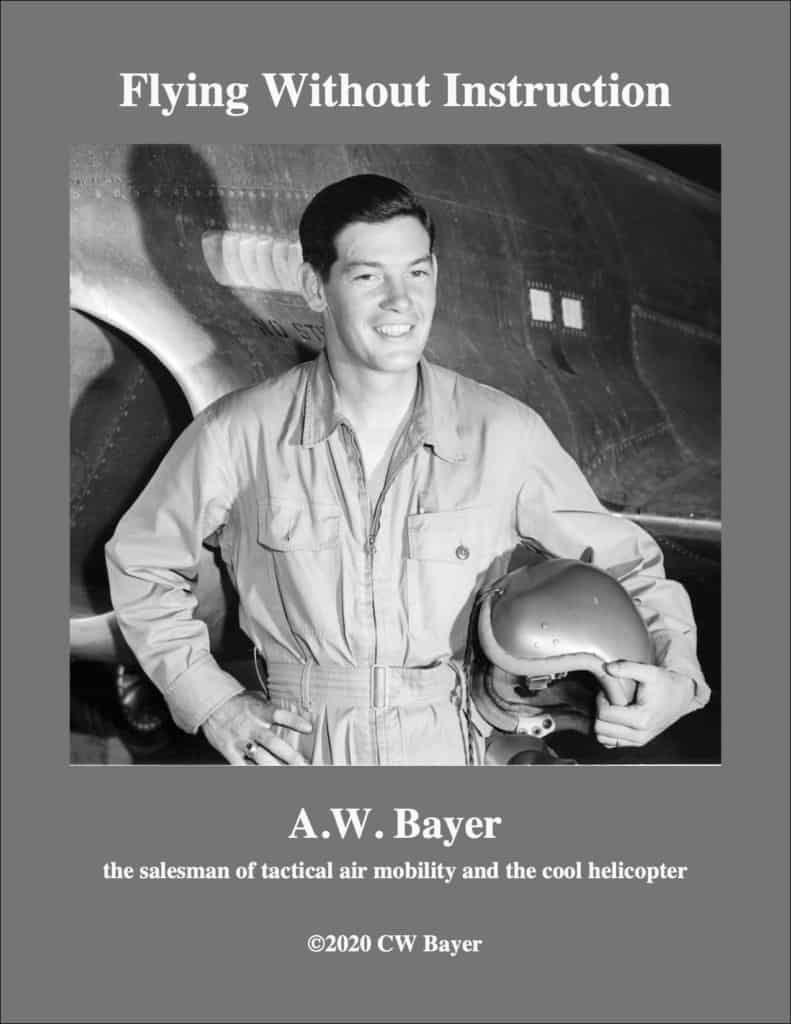
-See more books by CW Bayer at www.nevadamusic.com
When you first open this page, give it several minutes to load. Use a modern computer. Thank you for taking a look!
On the one hand, this is the history of my father’s career in helicopter development– an accounting and tribute to someone close to me. On the other hand, this is a fundamental story of helicopter development, the Southern California aerospace industry and the military-industrial sector of the 1950s and early 1960s. Prior to Al Bayer’s decision to personally demonstrate the Hughes 269A in April of 1959, the idea that a small and sprightly helicopter could be useful and practical was held mostly by eccentric inventors and test pilots. The owners of companies and much of the military saw such efforts as homespun, hobby-shop efforts in which they would only marginally invest. By the end of that year, Al Bayer had won the hearts and minds of some in army aviation, paving the way for a revolution in helicopters and military strategy. Here is his framed photo of himself flying the 269A at the onset of this conversion in April 1959.
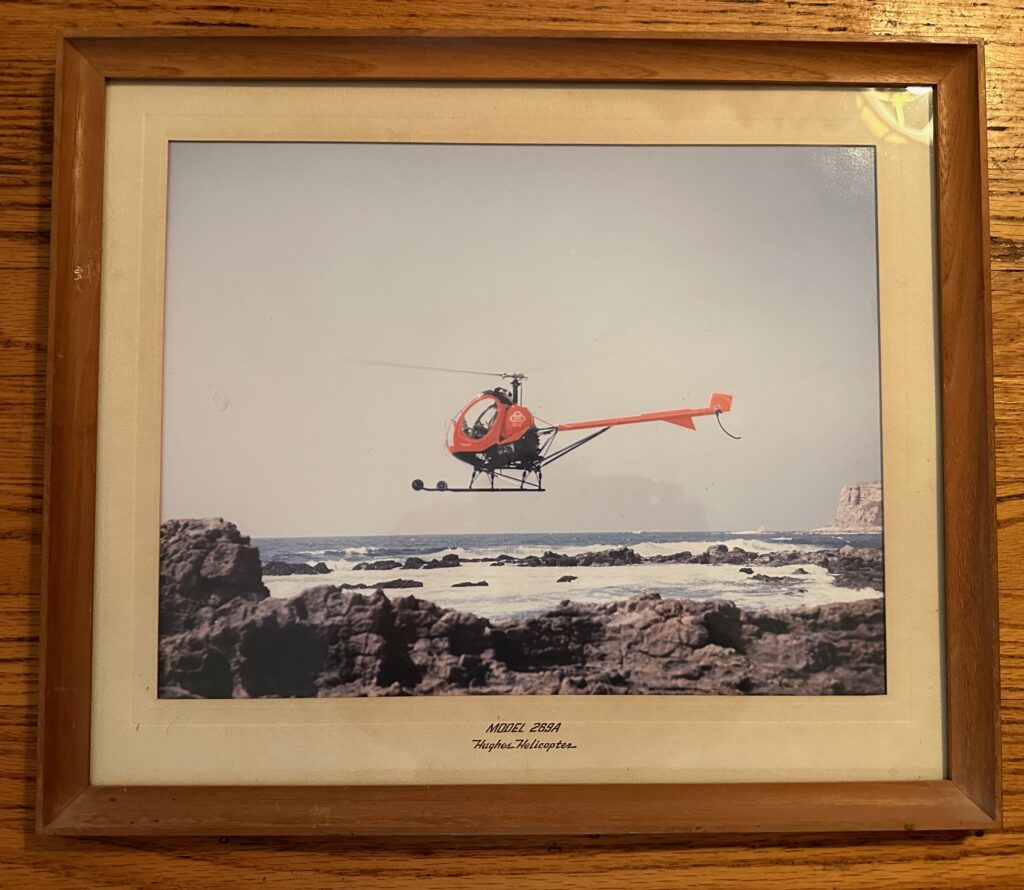
My father was one of the most innovative, creative and controversial aircraft salesmen of California’s aerospace industry during the 1960s. In this book you will find the account of his central role in transitioning the helicopter from cargo truck or troop carrier to dashing sports car and rotary fighter craft. Allied with engineers and Army progressives, he was the driving force that got the ball rolling in creation of what would ultimately be called the “attack helicopter.” He paid an emotional price for this, a price so steep that while he left me files with all the details, he never fully told the story. Prior to this account, perspective and appreciation of his role have been lacking.
I encourage you to push print and store a pdf copy of this story. It will not contain the videos and documents. But, at least the outlines of this history will survive. To this day, the role of the test pilots and salesmen is little told as the wonderful old planes and helicopters shine in museums. When people in the future look back at the helicopter in the Vietnam War, it may help to have an account tied to the struggles of flesh and blood people.
A lot of aviation history is written as dates assigned to aircraft models and horse power numbers. In contrast, the history below illuminates spersonal, social and political struggles parallel to a story of technology. It may remind us that progress comes at the hands of real, sometimes flawed individuals whose efforts may be little noticed during their lifetime, may be distorted by enemies or may even be dismissed. And, sometimes, in their lifetime, their personality is so powerful that it obscures what they accomplished–perhaps a tangible step forward.
As I looked at my father’s papers and at the books that have been written about these events and as I remembered him as a person that I knew well, I realized that the climax to my father’s years in helicopter development proved so painful for him that, even years later, he could never fully tell that story–only allude to it in dinner-table anecdotes. The forward drive of his efforts never allowed him to adequately go back and reflect–even as he carefully filed documents away for me to someday find. To say this differently, on the one hand this a story of deception, risk and deflection. On the other hand, it is a story of intense focus and innovation.
Here is the tale of a smart and sometimes reckless young test pilot who pushed his way to the top, who succeeded by ignoring or out-maneuvering everyone who stood in his way and who, at the moment of success, found himself sidelined from the work he loved due to the very qualities and efforts that had brought success. While several of his friends, top brass, in Army Aviation came to crave a nimble helicopter, there was only one man in the industry who had carefully and over time positioned himself and the craft so that this vision became a reality–my dad, A.W. Bayer. While there are many museum–and, too often, aircraft museums, that present the past as a collection of curios and artifacts not unlike a circus sideshow, this is a story in which the amazing artifacts play out the ambition and work of characters.
Bayer’s firing came at the hands of a company that, when he joined it in the mid-’50s– was widely regarded as inept by both the government and by the aerospace industry. After he left, in large part due to his push for the Hughes 269A and then the 369/LOH/500, Hughes Helicopter went on to mammoth success–converting Hughes into a major and respected aerospace firm. After his firing, he was targeted, blamed, victimized and pushed out of helicopter development. Still, to key men in Army Aviation during the 1960s, Bayer became an unsung hero. This assisted him in his career after he left helicopter development. And, yet, his personal loss was dramatic, coloring his life and my life for decades.
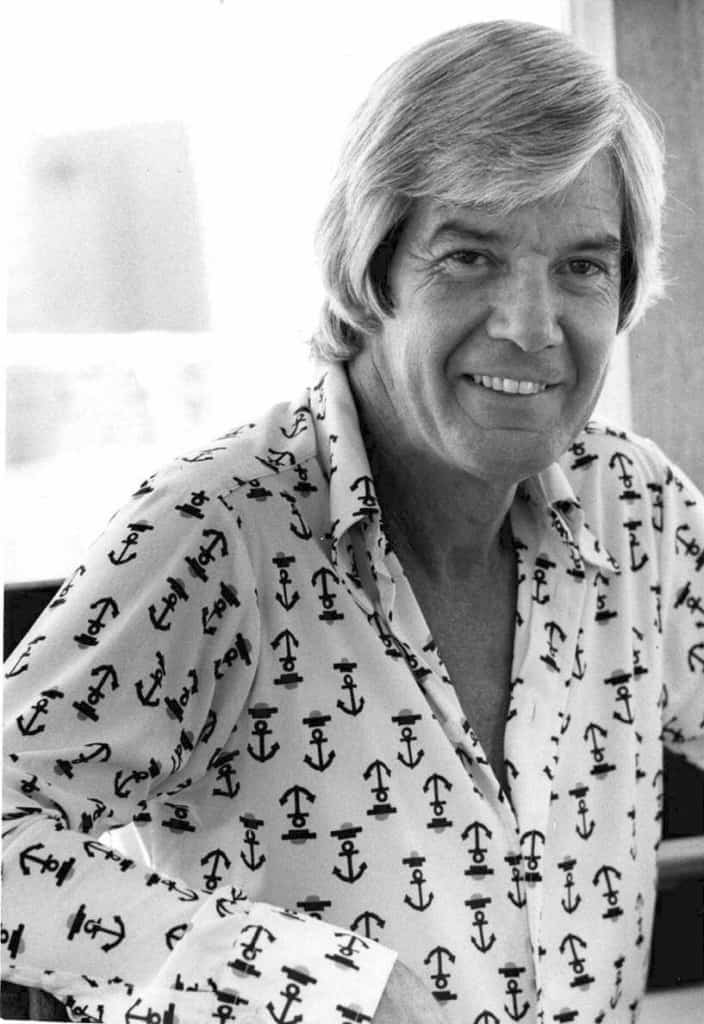
More concretely, this is a tale of how geeky bravado and a California aircraft building climate full of possibility helped move American technology from boyish, Popular Mechanics dreams born in the 1930s into a sophisticated, military/industrial empire that redefined warfare and global power. This transition reflects a faith in science and technology as a pathway to positivity and individuality that, in today’s America, seems to have faded. At the same time, this is a story about dreams and about “cool”–about the “Hollywood” science fiction thrills of a futuristic wonderland that propelled boys inside of men. And, at its core, this is a story of pants-in-the-seat test-pilot risk taking.
My father loved to tell stories–stories that entertained, stories that also deflected from the details of his past. He expressed wonder at where he had been and at what he had done. Yet, no one in the family knew exactly what he was referring to–what he had done. “Unbelievable”, he liked to say. He titled it “Unbelievable” yet only wrote a couple pages. In it, after he arrived at the critical events of 1963, he drifted off into name dropping, listing important people he had met–much as he frequently did during his later years.
I believe my father always knew that this history mattered and was remarkable. However, I know that he did not understand why it mattered or why it was remarkable–he was too close to it, too tied to the hopes and heartbreak. Looking at these events, I’ve come to better understand he triumph and failure that often reflected his personality and the compromises he made along the way. Though young, I was there. I grew up with the themes in this story. Part of my ability to write this history derives from my long-standing awareness of contradictions in my father’s personality–some of which I share–and a resulting awareness of his goals and their complex context.
This history is more than a list of airplanes and corporations. Though this history begins with half-baked machinery, it traces a shift during the 1950s as America became a military-industrial superpower consumed by fear of communism and yet ever more confident in its superior technology. My father worked at the heart of a shift from the mass production of WW2 to the refinement of sleek, deft and “cool” machinery and “systems”. Most stunningly, he and engineers who were his friends envisioned the small, deft attack helicopter decades before it was called an “attack helicopter.” Beyond these trends, this is a history of three people– Bayer, Jovanovich and Von Kann–plus one more: Weidinger. Each played a central role in a small but intense drama that created the defining weapon of the Vietnam War and changed the helicopter forever.
If my father would have trusted anyone to tell this story and document the things he might have said or could not say, it would have been me. However, he did not do that during his lifetime. He gave me hints. Mostly, he pushed the past aside and, until the end, kept pushing forward. At the end, what stood out was a willpower that outstripped his physical ability to survive. “It’s amazing that I survived,” he often said, toward the end of his life. Now I understand why he said that.
Having contacted museums and, too often, received no reply, at this writing I remain concerned that this story and the papers I have will remain lost to history. American aviation history tends to be dominated by a shallow obsession with bigness or with metal, model numbers and dates. Yet, behind the documents, this is first and foremost a history of ideas, concepts, branding and sales–my father’s aviation world, a world he imagined and acted upon.
I have scanned several collections of Memos and Correspondence from this story. These are of value both for the information they contain and for the information they do not contain–as contemporaneous files, a collection of everything Bayer had in hand. I’d like this story and all these documents–here and inserted in this story– to survive.
- GE Memos and Correspondence, 1945
- Kellett Memos and Correspondence, 1947-1948
- Kellett XR-10 Flight Test Reports, 1947-1948
- Kellett XR-8A Flight Operating Instructions.
- Design Aspects of the Kellett XR-8A Helicopter
Inevitably, as Al Bayer’s son, I am part of this story. At times, I step into the narrative with comment and personal information. Mostly, I refer to my father as “Bayer”, my mother as “Rita” and myself as “Christopher.” I hope that my father would be happy to finally have his story on record. I imagine arguing with him that some things need to be included even when they might appear unflattering.
Below, I’ve included more than you may wish to read–reading only the narrative might be a good idea for most people. I’ve included documents and links because portions of this story have been written wrongly so many times. And, they make for a more three dimensional story. This page can be a lot for your computer to handle. I think most computers can do it. Still, don’t rapid scroll. Let the page load for a few minutes. The chapters in the Contents box below can be jumped to by clicking on them. The endnotes can be accessed at the end of the story by clicking the + sign there.
If you have information that would improve this account, please email me with any documents or suggestions at nevadamusic.com@me.com
Feel free to donate with PayPal button below. It helps.
Thanks! CW
t
LETTERS, PHOTOS, DOCUMENTS – an introduction, how this got started
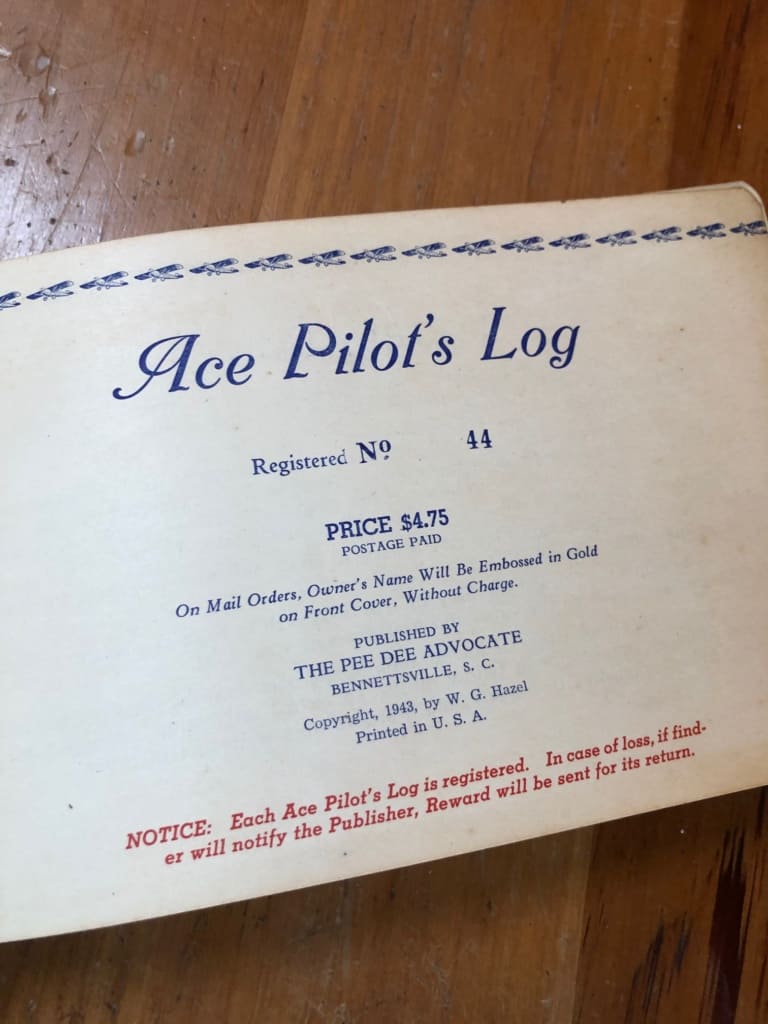
I finally opened the trunk of love letters and postcards. They lay in two batches–one from my father to my mother, the other from my mother to my father. The letters had not been read since 1947. They had long remained in their envelopes with three cent stamps bearing the likeness of Thomas Jefferson. Albert Bayer (1925-2002) wrote love letters to Rita Cusack (1924-2015) from September of 1946 into June of 1947, during their courtship as they planned their marriage and he worked in Pennsylvania while she remained in Schenectady, New York.
Reading those letters, I came upon my father’s personal account from the late 1940s of his work as “Engineering Test Pilot” on Kellett Aircraft’s XR-10, the world’s largest helicopter at the time. I began to see a bigger story, one that I had heard pieces of during my father’s lifetime. Old men would whisper sometimes. Brushing them aside, my father would laugh and say, “I am a character!” I had the letters. I had much more–photos and documents from his filing cabinet. I began to see the details I had missed while he was alive–the central role he had played during an important period in helicopter development. I saw that I had stacks of documents that may be singular copies from that era and that I could create a narrative that needed to be written. I saw the dramatic story that he would never fully tell. And I began to understand why he could not tell that story.
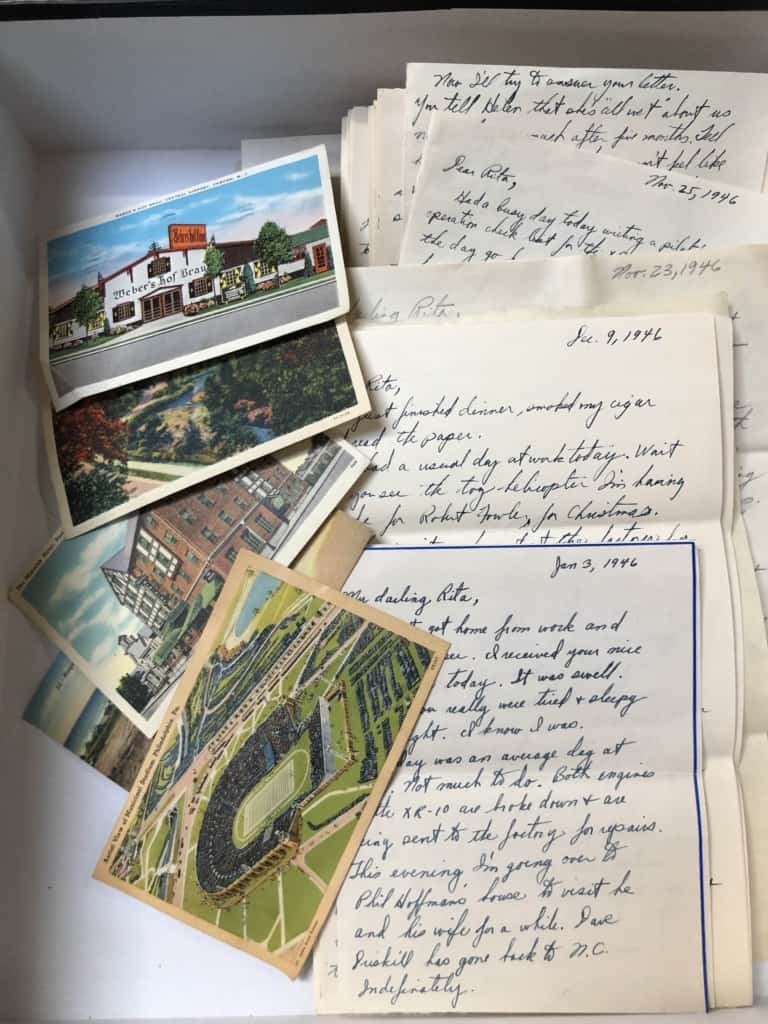
My grandmother, Emma, saved my parents’ 1940’s love letters. When she died, my mother, Rita, put the letters in a battered and dusty dresser drawer out in our garage. When my mother died, I put the letters in an old trunk that I stored in the back room. They long remained tempting artifacts. I was reluctant to pry into my parents’ courtship. Then, having retired, one day I wanted to use the old trunk for camping. I saw this as an excuse to pull out the folded writings and read some of the lines. Written during their courtship, many of my father’s letters expressed his love.
Sweetheart I love you, I love you, I love you, honest, with all my heart. Go to sleep now, sweet dreams. “I wish that I could hide inside this letter, etc.” I’m almost doing that. We’ll get there almost the same time. Darling I love you Honey, I love you. Don’t forget that big long kiss. (Can I help it if I love you so much? Huh? Can I?) All my love, Al. 1Letter Al to Rita, date missing from this letter.
And then I found what he wrote to my mother about being a test pilot.
A DEATH DIAGNOSIS – background to taking great risk
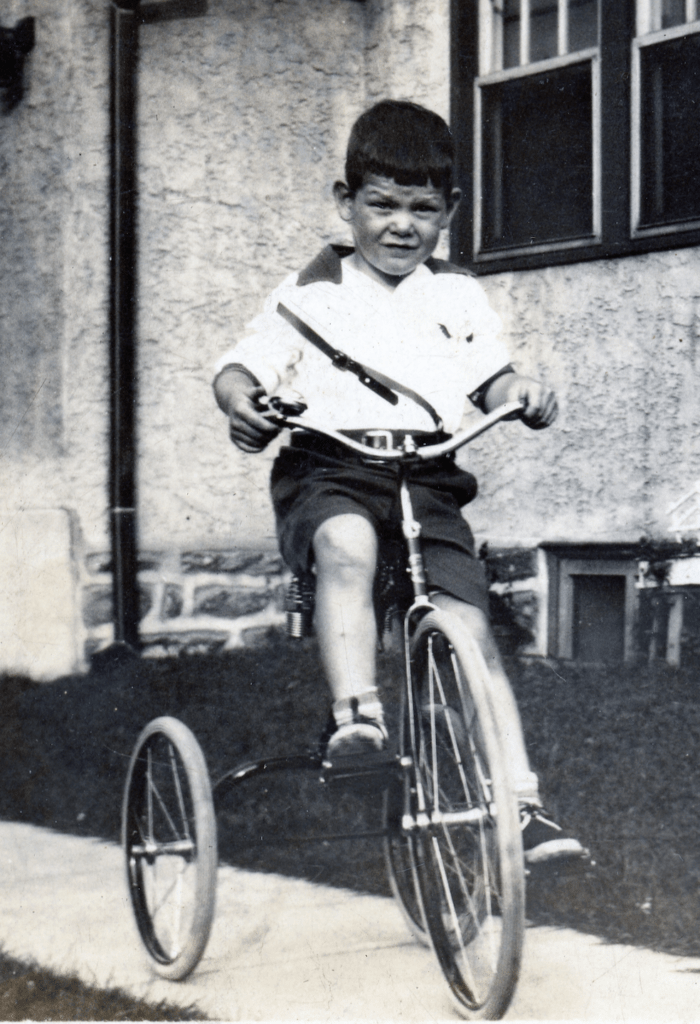
Born in 1925, with black hair and buckteeth, the youngest of four children, Al Bayer grew up in a working class German/Irish family in Schenectady, New York.
His grandfather, Henry Bayer, emigrated from Germany as a teenager. He and his relatives comprised part of a German band that enlisted en masse during May of 1861, becoming a Union regimental band for the 2nd New Jersey Infantry as the nation entered the Civil War. Henry went on to work for Edison and obtain several patents. Henry’s son, Harry Bayer, worked as a school janitor and loved to garden, fish and hunt. During the ’20s, Harry and Alice Bayer performed comedy songs in the local vaudeville-movie house. They entertained as the crew changed the silent-movie reels. Harry sported a glass eye, a tramp hat and an oversized cigar. AW Bayer grew up knowing all the old songs and how to charm an audience. During 1929, in Philadelphia, Bayer took his first airplane flight with his Aunt Anna at the controls. That year, he was more interested in his new tricycle.
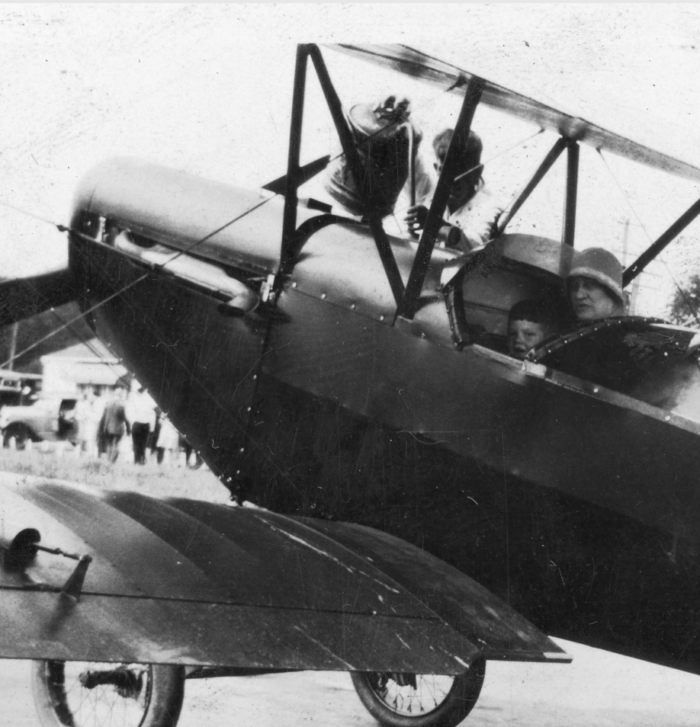
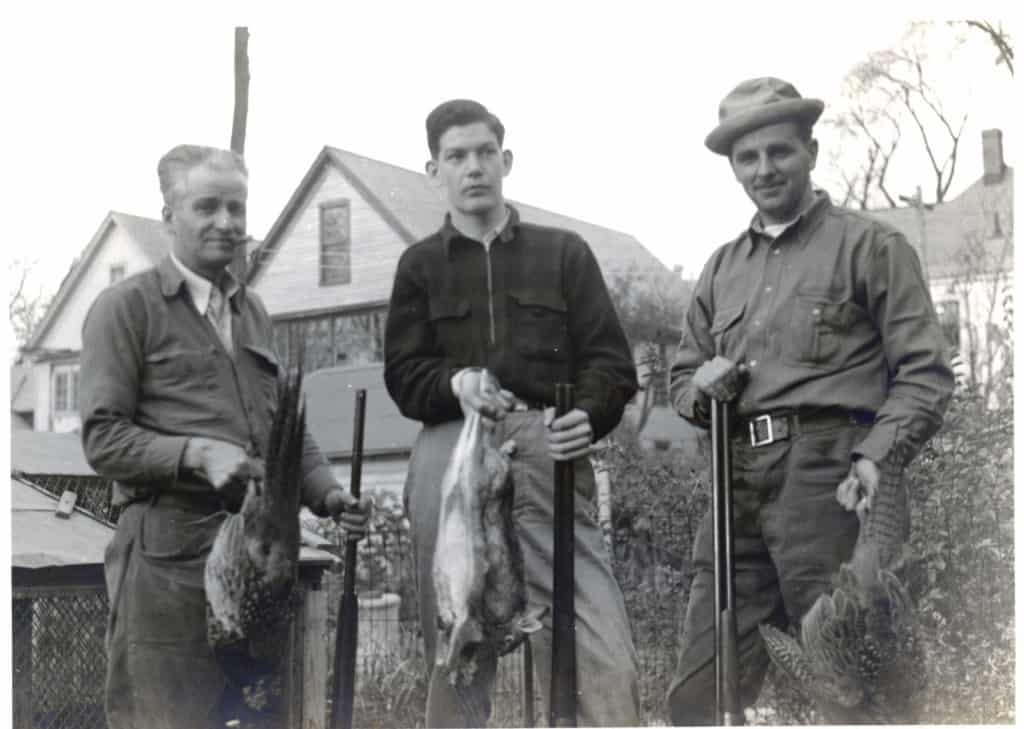
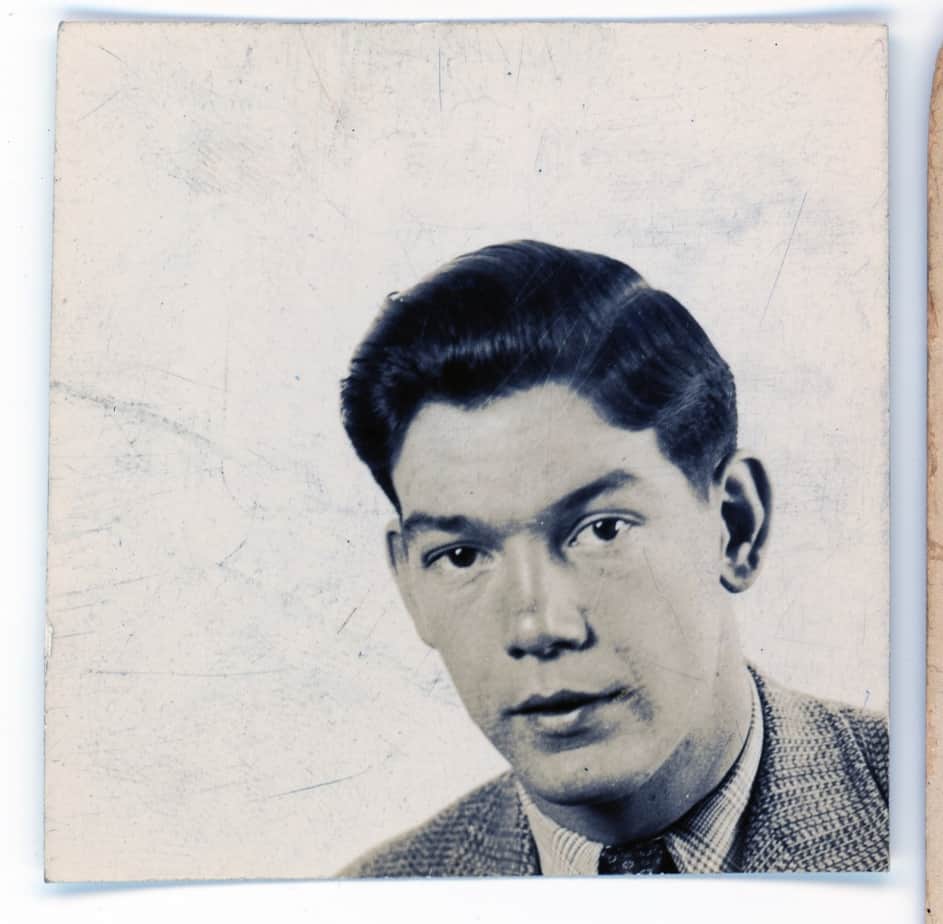
In January of 1943, Bayer graduated from Mont Pleasant High School in Schenectady, with honors in the college preparatory electronics course. He seems to have had a talent for mathematics. He began studying engineering at Union College. After a year, he left to attend the Air Force program at Catawba College for six months. In 1943, he joined the Army Air Corps. Bayer transferred thru a succession of training camps. In February 1944, Bayer began military flight lessons in the Stearman PT-17 and, in April graduated as an Air Cadet. He began studying to become a bomber instructor. However, he never completed that effort.
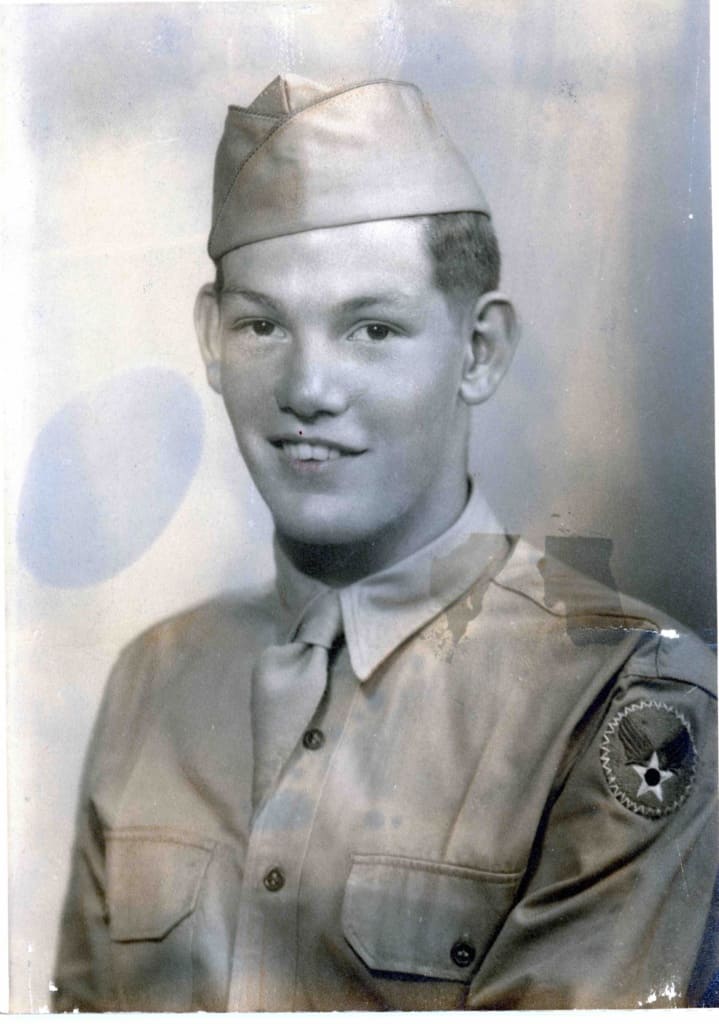
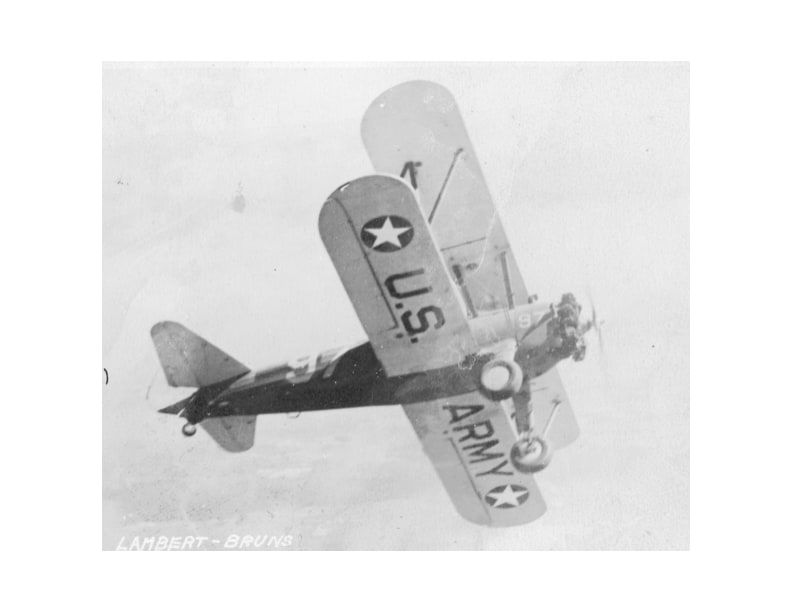
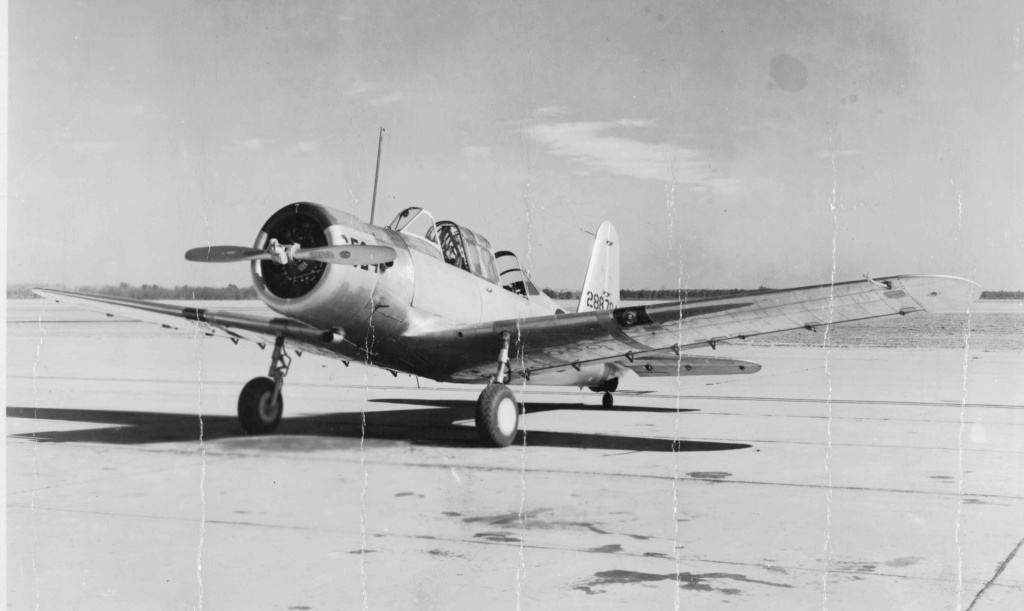
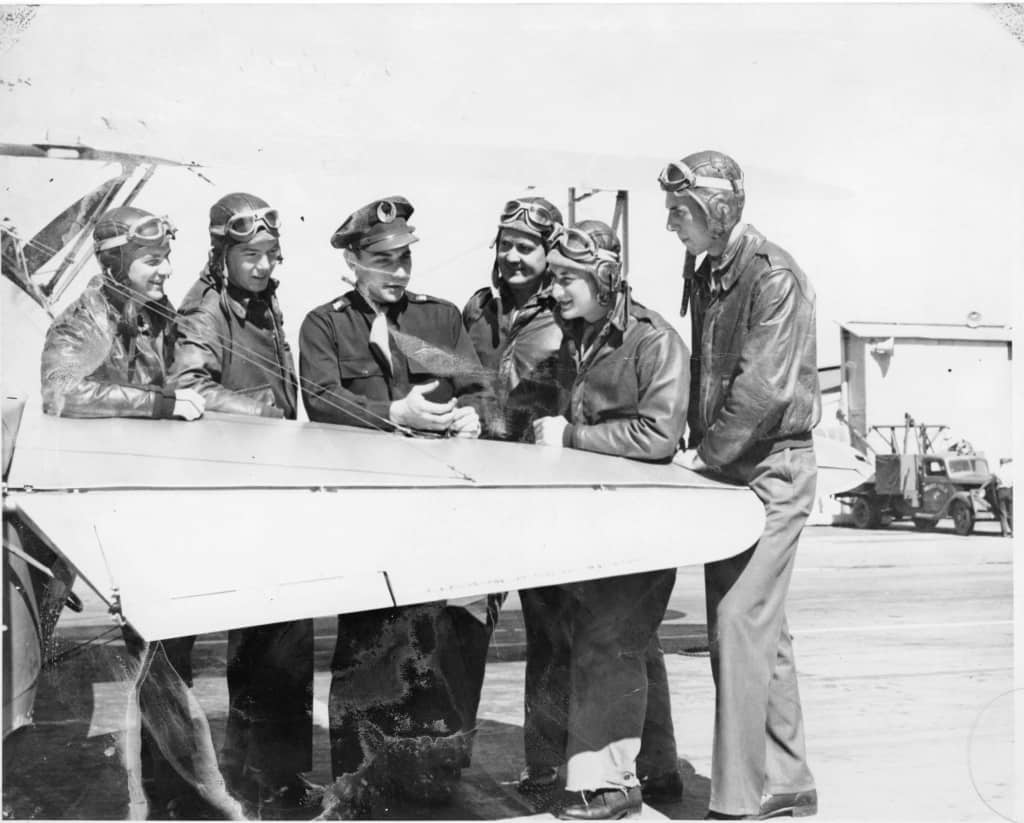
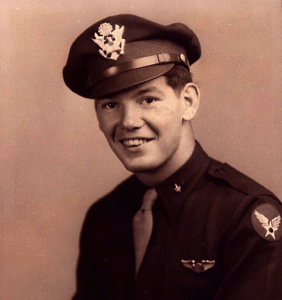
In September of 1944, military doctors diagnosed Bayer with a lymphosarcoma located in the cervical glands under his right ear. During November, he underwent surgery and radiation treatment. 2Diagnosis, Bayer papers. Not expecting that Bayer had long to live, the military ended his active flying during September of 1944. His medical discharge was completed in January of 1945. 3I have his army papers. Date is based on letter, Bayer to Tozer, March 18, 1952. He would remain devoted to Army Aviation into his 40s.
Bayer later told me that, at this point in his life, believing he had little time left to live, he set about to live life to the fullest–wild and free, taking whatever chances came along. He credited his success in life to the reckless daring in which he then engaged–becoming a test pilot–under the belief that he would soon die. Eventually, his decision to take risks would be somewhat tempered by hard events and the fact that he did not perish from the disease. By that time, he had learned some lessons about how to fly and yet continued to take risks. He later wrote:
I believe that fearlessness as a result of lymphosarcoma and test flying plus a large dose of good luck resulted in my becoming a successful V.P. of Hughes at age 35.
JAM HER INTO REVERSE – the General Electric convertiplane
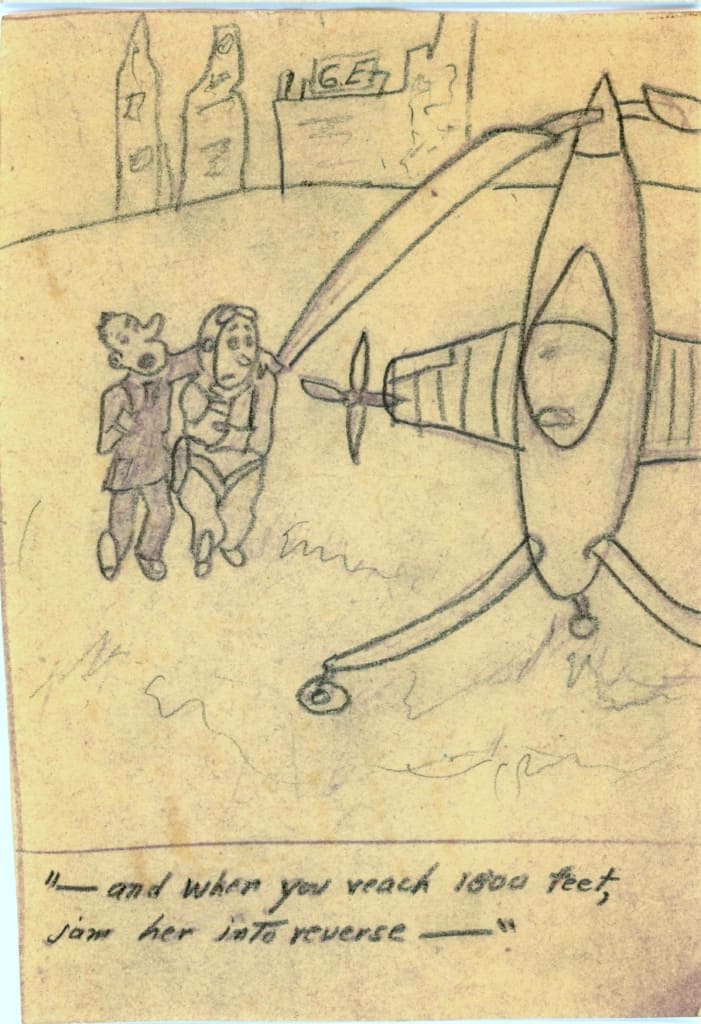
In February of 1945, Bayer applied for employment at General Electric in Schenectady, New York. The company had begun to build a hanger at the old Dutch hamlet site of Alplaus. World War II continued to rage. Both the military and industry were caught up in the development of new technology–a momentum that would continue after the war, inspired often by technology captured from the Germans. During the war, there was big money in developing weapons. After the war, many of those wartime industries sought to keep the funds coming in.
In the wake of the war, GE’s aviation projects focused mostly on radar and jet engines. Seemingly as a sideline, GE initially had some interest in rotary aviation as a vehicle that might be propelled by small jet engines. The company seems to have been pitched this idea by the Russian born Igor Bensen (1917 – 2000), a mechanical engineer. They hired him for two related projects–the XGEH-2 Heliplane Project and the Hermes Project. 5GE Memos and Correspondence, Bensen to Prince, 1945 These began in November of 1944 with a proposal by Bensen proposal for “data collection”, as if to merely lay the basis for something more substantial in the future. It was probably all that Bensen could get GE to fund. 6Report Bensen to Prince, Aug. 23 1945 GE Memos and Correspondence
By this time, Allied bombing had effectively ended German helicopter development and the Allies were beginning to capture German military helicopters. Young men fascinated during the 1930s by stories of rotary aircraft–particularly the popular lore of the autogyro–now saw military funding as a means to realize these dreams of the everyman, personal aircraft. Where the military only saw the helicopter as a cargo, troop carrier and rescue craft, the futuristic visions of these young men went well beyond that staid idea to dreams of dashing about the sky. The military tended to remain somewhat ambivalent about the helicopter as a whole. Some in the military believed that the military had not adequately embraced the potential of the helicopter during the war, particularly its use to rescue sailors.
The initial goal for Bensen lay in a small rotary aircraft with jet engines mounted on the tips of the rotor blades. Bensen’s memos at GE refer to “automatic gyro-rotor controls”, suggesting that one of his lay in a smoother transition of a gyroplane from vertical to horizontal flight–accomplished with sophisticated mechanical gearing. 7Report Bensen to Prince, Aug. 23 1945 GE Correspondence GE contracted with Kellett Aircraft in Pennsylvania to supply an old autogyro and parts for the project that would be assembled in Schenectady.
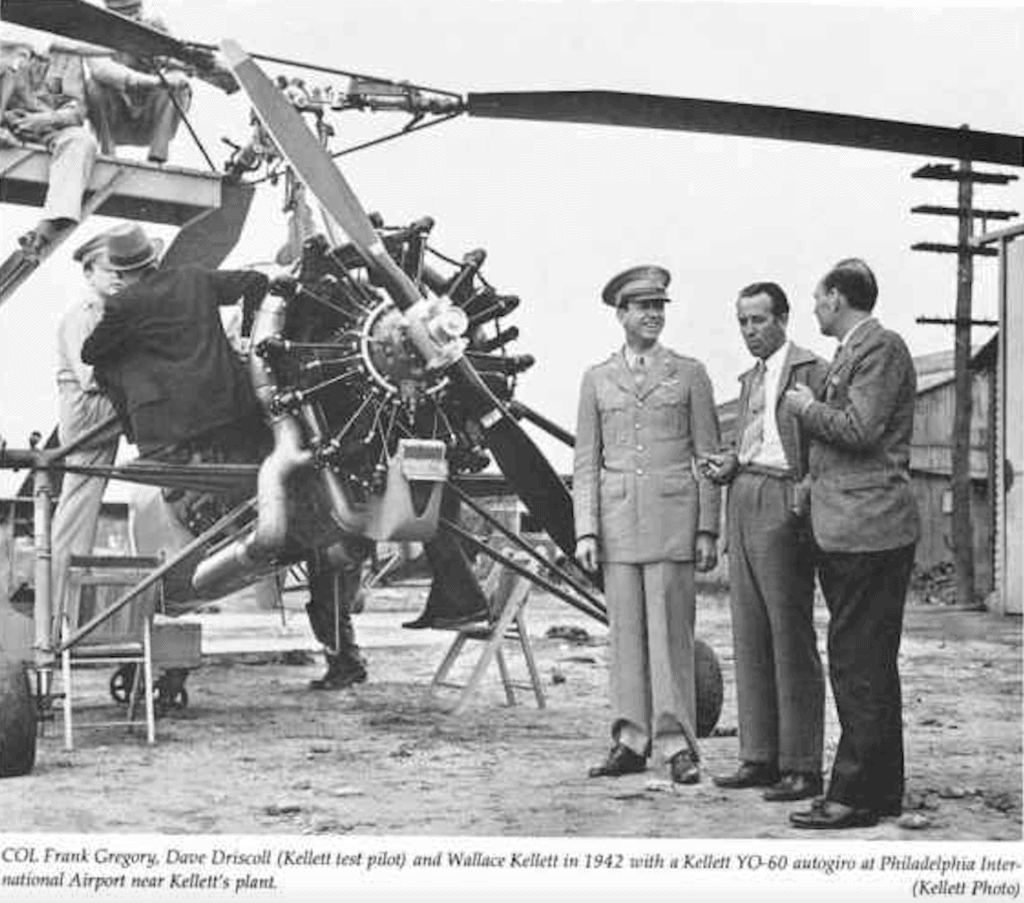
In 1929, the brothers W. Wallace Kellett and Rod Kellett formed the Kellett Autogiro Corporation and began manufacturing Autogiros, under license from Pitcairn-Cierva Autogiro Company in Upper Darby, Pennsylvania, and later near the Philadelphia Municipal Airport. 8https://vtol.org/who-we-are/our-history/philadelphia-region-history Wallace had flown a fighter plane for the French Air Force during WWI. During the 1930s, Kellett Aircraft was a primary builder of rotary aircraft–autogyros.
Though the company entered WWII with some financial problems, Wallace Kellett (December 20, 1891 – July 22, 1951) had funds from other sources and possessed a passion for rotary aviation. He had built some of the best autogyros of the 1930s. 9https://en.wikipedia.org/wiki/W._Wallace_Kellett By 1943, the Kellett brothers had seen Sikorsky obtain a helicopter contract with the military. Still, the military was expressing little confidence in the autogyro design. In rotary aircraft, it long tended to favor big and sturdy over small an maneuverable. The Kelletts shifted from autogyros to work on a helicopter–the XR-8A. The Kellett Autogiro Corporation changed its name in 1943 to Kellett Aircraft Corporation. 10Kellett’s Eggbeaters: The XR-8A and XR-10, Roger Douglas Connor, Curator, Vertical Flight Collection, Smithsonian Institution, National Air and Space Museum, Washington, D.C.
During WW2, German and Japanese military interest in rotary aircraft went in other directions. In 1939, after obtaining a Kellett KD-1A autogyro, designed in 1934, the Japanese built 240 of them for use during WW2. 11http://www.aviastar.org/helicopters_eng/kellett_kd-1.php The Germans were working on a small maneuverable helicopter. The Bensen/GE effort to mount jets on rotor tips probably stemmed from 1943 when the Allies saw that this had been done by the Germans as they captured a Doblhoff helicopter. In that craft, the conventional piston engine drove both a small propeller providing airflow across a rudder with an air compressor to provide air (subsequently mixed with fuel) through the rotor head and hollow rotor blades to combustion chambers at the rotor tips.
GE’s “Hermes project” planned: … testing of athodyd jet units by means of a whirling arm setup. 12Memo by D. Cochran, April 26, 1946. Job No. 310 GE Correspondence For the Hermes Project, Kellett Aircraft in Lansdale Pennsylvania would manufacture special rotor blades with internal fuel lines to feed the “Athodyd” ramjet at the blade tips. 13GE Memos and Correspondence, Bensen Letter to Everett Lee, April 11, 1945. Testing began March 5, 1945. 14Report by Everett Lee April 11, 1945 GE Correspondence Presumably, Kellett Aircraft’s work on the GE blades laid the basis for its work on the blades of the Flying Crane, a couple years later and can possibly be seen as leading to the “light rotors” of the Hughes designs after 1956.
A drawing of the XGEH-2 Heliplane shows how its fuselage faced vertically for takeoff and then hinged down into a typical airplane shape for forward flight. The aircraft would be lifted by a large rotor blade mounted at the front. Torque compensating propellors at the end of the wings would provide torsional stability during the vertical ascent. The fuselage would then fold forward and the craft would fly as a plane–pulled by the same large rotor blade, now acting as a propeller.
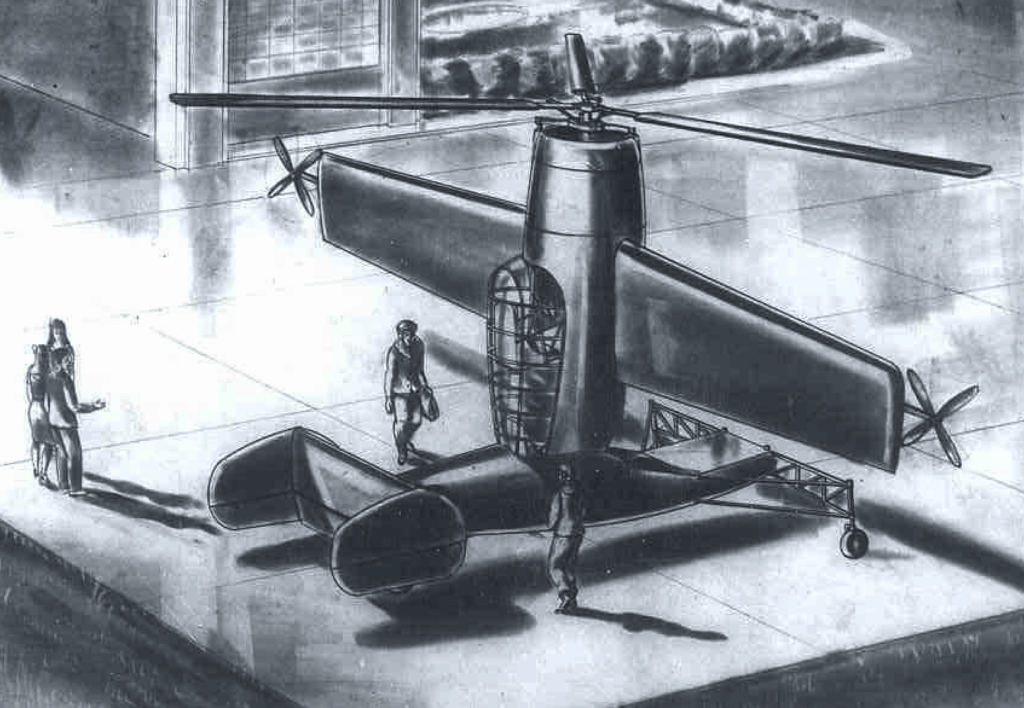
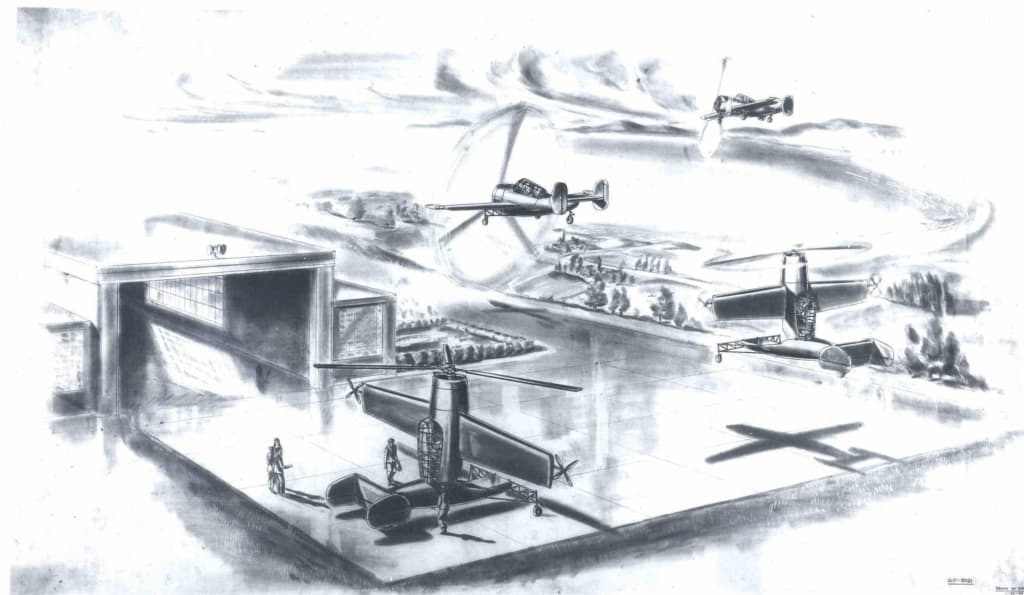
Bensen had some military help from Major Wilson at Wright Field in Ohio yet Wilson had no cash to provide for the projects.Through Major Wilson, in early 1945, for the Hermes Project, Bensen obtained two autogyros for no cost. With a rotor blade for lift and a propeller for forward motion, the autogyro had thrived in the 20s and 30s–at least as an experimental craft. By 1945, it was quickly become obsolete. Wilson arranged for two autogyros that had been manufactured by Kellett Aircraft in Pennsylvania–an YO-60-5 and an XR-3. Presumably, the goal was to mount ramjets on an autogyro.
GROUND RESONANCE – wrecking an autogyro
The Kellett YO-60 arrived at GE on February 22, 1945–as Bayer began work there. It was reported that others flew it 7 hours though it isn’t clear who would have done this. 16Report by Everett Lee April 11, 1945 GE Memos and Correspondence Initially, the other donated craft, the XR-3 autogyro, did not arrive. It still needed repair and remained at Kellett Aircraft in Lansdale through the summer to be recovered with fabric and for installation of new torsion rods. 17Bayer referred to the Kellett Aircraft location as “Lansdale”. Kellett often listed its location as North Wales in Philadelphia. The Kellett factory, leased from SKF Ball Bearing in May … Continue reading Bensen wrote that, upon arrival, the YO-60 looked air worthy. The last autogyro model produced by Kellett Aircraft, the YO-60 featured an engine that could briefly engage the rotor blades to allow a jump takeoff. A 1943 video of the craft:
As described online: The two-place YO-60 was designed by Richard O. Prewitt and could do jump take-offs. The rotor was spun up to about 280 rpm (rotations per minute) at a no-lift angle using the power of the radial engine. When ready for take-off, the pilot would release a clutch mechanism which changed the blade angle to 8 degrees. This caused the aircraft to ‘jump’ about 10 feet into the air. The engine and propeller then pulled the YO-60 into forward flight as the rotor angle was decreased to a normal flight pitch of 3 degrees. The engine was only used to spin the rotor up to flight speeds on the ground, while in flight the rotor was free spinning.18http://www.indianamilitary.org/FreemanAAF/Aircraft%20-%20American/XO-60/XO-60.htm
First flown in February of 1942, by 1943 the YO-60 and relate Kellett autogyros of the time were considered obsolete. They tended to be slow and inefficient. 19NASA/CR—2003–212799 An Overview of Autogyros and The aDonnell XV-1 Convertiplane Franklin D. Harris. Oct. 2003 Still, thanks to popular magazines and related newspaper articles, they had left a great impression on the imagination of boys. During the 1920s and ’30s, with its hybrid design–airplane and helicopter–and its appearance of speed plus maneuverability–the autogyro had captured the public imagination–epitomizing the futuristic dream of an aircraft for everyman. The passion felt by Bayer and many of his engineering friends had its roots in this literature of the 1930s-the futuristic aircraft that the common man might park in his driveway. Of all these dreamers, Bayer would be the one to ultimately realize the trip of tomorrow today.
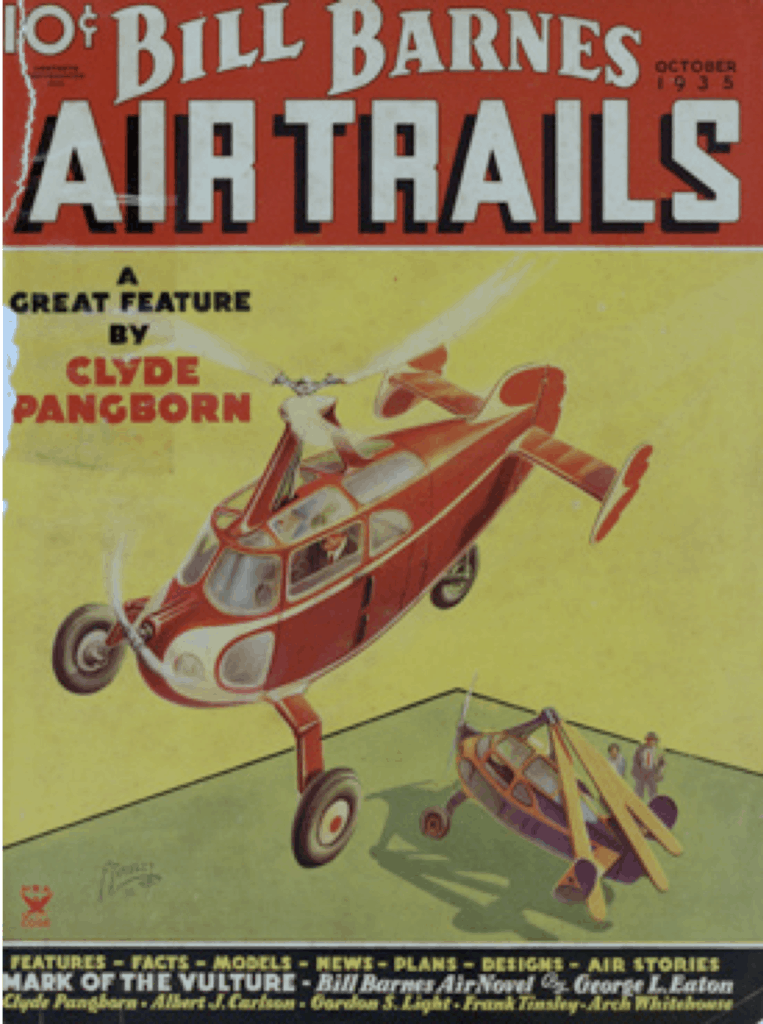
This romantic view was not always shared by critics. 20See discussion of this at https://vtol.org/files/dmfile/62-2006-125Charnov2.pdf in A Critical Re-Examination of the Franklin Institute Rotating Wing Aircraft Meeting of Octr 28 – 29, 1938: Facts … Continue reading Bayer was 9 years old in 1934 when Wallace Kellett, the maker of autogyros in America, talked about a “plane in my garage.” 21The Ottawa Journal
Ottawa, Ontario, Canada 29 Dec 1934, Sat • Page 19
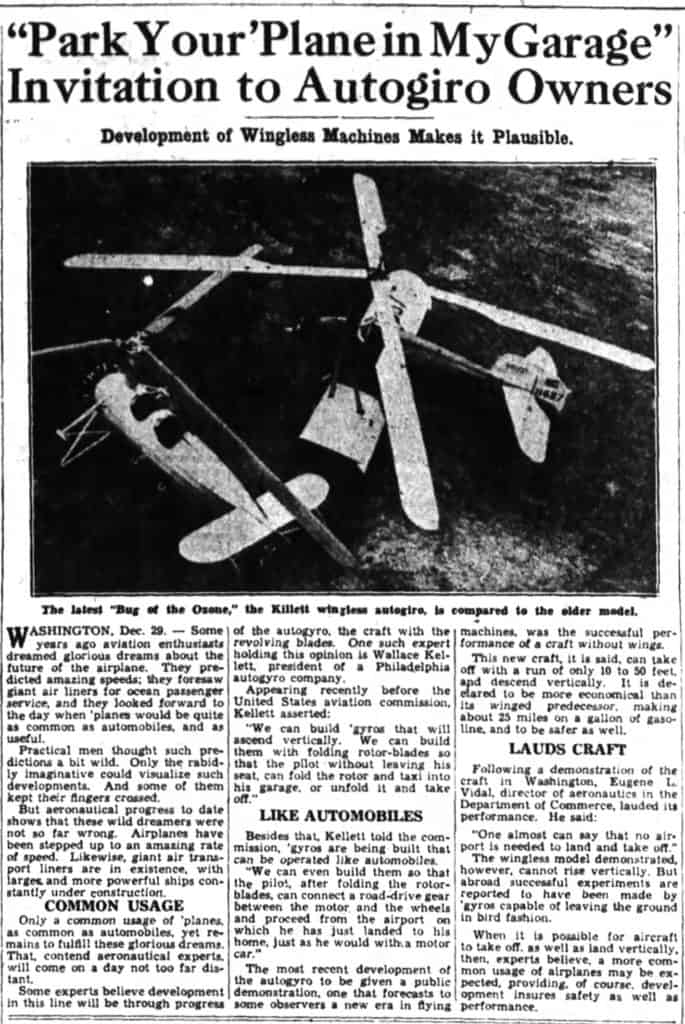
In 1945, in Seattle, Boeing was working on the “hoppi-copter”–an engine with rotor blades that one strapped to their back. 22The Morning Herald (Uniontown, Pennsylvania)25 Jun 1945, MonPage 6 Yet, by 1946, the press was lamenting the failure of technology to put a helicopter in every household. 23Pittsburgh Post-Gazette (Pittsburgh, Pennsylvania)09 Nov 1946, SatPage 48 The problem lay in one fact. Funding for aircraft innovation–similar to technological possibilities in many other areas–only came about when the craft met military needs. Weapons and national security became the method to realize any creative and innocent dreams of innovation.
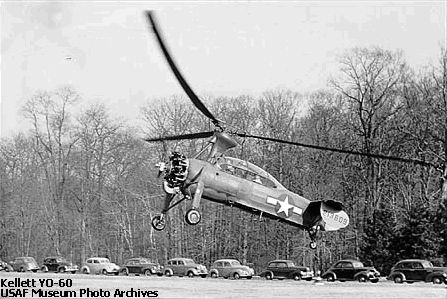
The YO-60 did not last long at GE. Reporting on progress with the GE convertiplane project in April of ’45, Bensen wrote that, during March, the YO-60 had been “upset by strong gusts after landing”. 24GE Memos and Correspondence, Letter Bensen to Everett Lee, April 11, 1945, p. 2 A couple histories state that Bensen flew the XR-3 in 1943 and then became an accomplished XR-3 pilot. I haven’t … Continue reading This is not exactly what happened. On March 8, on his first and only flight in that aircraft, Bayer severely damaged the Kellett YO-60 autogyro. In his logbook, he wrote that he had “ground looped” due to “ground resonance”.
Ground resonance is vibration set up when an helicopter or autogyro’s landing gear are loosely touching the ground. As the landing gear interact with the ground, vibration travels up through the landing gear and is then amplified by similar frequencies created by the engine and blades. The vibration takes hold of the entire aircraft. This can be exacerbated by the nature of the landing gear. In “ground resonance” the craft’s undercarriage would vibrate at a frequency aligned to the frequency of any unbalance in the blades, setting up a catastrophic vibration that could tear the craft apart in seconds.
The X0-60 was prone to ground resonance. The danger was already apparent to others. By March of 1945, the Army Air Force was in the process of deciding that the Y0-60 was too dangerous to fly any longer.
Kellett engineer Bob Wagner had studied ground resonance in the autogyro. If Bayer had sought training in piloting the autogyro, Kellett’s chief pilot, Dave Driskill, could have educated Bayer on ground resonance before he tried to fly it. He had certainly trained others in the craft. 25https://www.airspacemag.com/history-of-flight/above-amp-beyond-jump-ship-39751500/ Autogyro pilots were routinely trained to recognize the problems of ground resonance and to rapidly change the speed of the blades or lift off–removing contact with the ground and thus immediately halting the destructive vibration. 26https://rotorcraft.arc.nasa.gov/Publications/files/Harris_NASA-CR-2003-212799.pdf
However, Bayer took off in the XO-60 without having had any instruction in it. The wrecking of the XO-60 illustrates the strengths and weaknesses of Bayer’s entire career. This Bayer’s first flight since his final flight for the military in September of ’44. He seems to have been eager and reckless. Absent from Bayer’s logbook is any evidence that prior to flying and wrecking the X0-60 he had had any instruction in the autogyro–or in piloting any rotary aircraft. 27In his letter to Tozer, Bayer makes no mention of any training in the X0-60, but does for the XR-3. His logbooks echo this. Young and eager, Bayer possessed a copy of the craft’s “Flight Operating Instructions”. He seems to have thought reading the instruction manual would be adequate.
The crash damaged the craft’s rotors, propellor and elevators. 28Report by Everett Lee April 11, 1945 GE Correspondence During the following month, April, GE issued a memo stating “…efforts will be made to obtain autogyro ratings for any licensed pilots participating in this program.” 29Memo by C.W. LaPierre, April 27, 1945. Presumably, the memo was directed at Bayer–too late to save the X0-60 yet giving him clear guidance with respect to the XR-3 which had not yet been delivered.
Bayer never talked about this event. Years later, in a resume, Bayer would list himself as having flown 50 hours in the YO-60. His logbook shows just 1 hour–the hour in which he wrecked it. 30AL BAYER Background Resume for Society of Experimental Test Pilots For Upgrade to Fellow. This hour of flying (and wrecking) the YO-60 entitled Bayer to membership in the Twirly Birds. He joined this association for pioneer pilots in 1951. They required members to have flown a rotary aircraft in sustained flight prior to VJ Day, August 14, 1945 and they required a witness. Bayer told them Dave Driskill had see him make a qualifying flight…however no one seems to have witnessed his wrecking of the XO-60.311951 “Constitution of The Twirly Birds” Article III. See http://www.twirlybirds.org/purpose.htm
The culture of test pilots during this period would find Bayer’s precipitous flight of the X0-60 to be normal. While the engineers provided an aircraft whose engine ran, beyond a certain point, the test pilot ultimately had to trust himself. For Bayer, the literal and figurative lesson of the crash became, “don’t be tentative.” One must not hesitate when encountering ground resonance. It was and long-lasting and invaluable lesson. Though this was not his last experience with ground resonance destroying the craft in which he sat.
There was no punishment. And, Bayer learned to take bold, informed steps–never tentative again. And, always, better informed about the technology–moreso than about the expectations or wishes of his employers. Some people would see his approach as egoistical. The dramatic emergence of that trait in Bayer lay rooted in lessons built on personality and forged by experience. Other pilots died or were greatly injured while Bayer survived. In his final years, he often expressed wonder that he had survived.
Constructed from the remnant of the autogyro, the X0-60 test rig was placed in the Alplaus hanger–still under construction–and used to test the ramjets. By July, Bensen had fired up the ramjets. 32GE Memos and Correspondence, Bensen to Lee July 12, 1945 GE Correspondence Though, initially, he seems to have hoped to mount the ramjets on an autogyro, Bensen began to see the test rig as critical to the project. There was talk that the test rig itself would be used for a vertical take-off. 33GE Memos and Correspondence, Bensen describes the test rig as being constructed at Kellett Aug. 23, 1945 letter to Prince, presumably the blade portion. For the rig, Kellett Aircraft began building and balancing special blades–“hollow plastic blades” — installing into them fuel and electrical lines for the ramjets. 34Report Bensen to Prince, Aug. 23 1945 GE Correspondence Meanwhile, and even as the test pilot and engineers improvised, GE Vice President David Prince wrote an article stating, “the helicopter is the safest of all aircraft”. He compared it to the state of the motorcar 20 years earlier. Prince, Bayer and Bensen were photographed for an article.
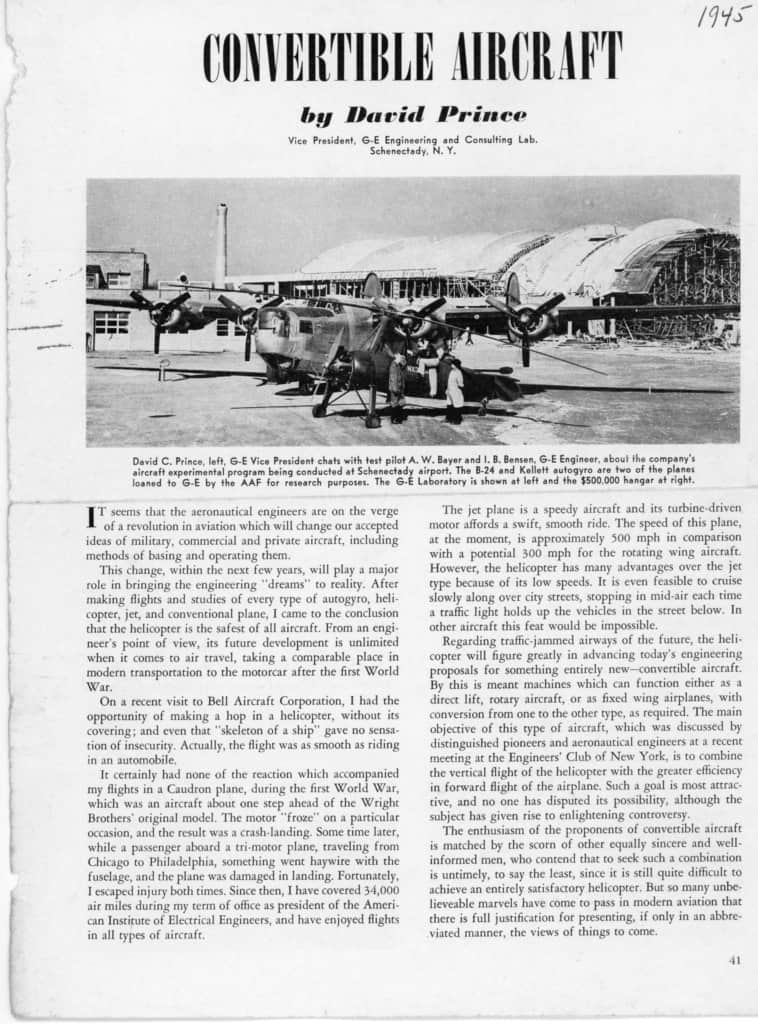
Through the 40s and 50s, Bayer was work for aircraft manufacturers for whom the rotary aircraft seemed more a hobby than a serious effort. This allowed innovation. And, indeed, the eager hobby shop culture of these young men was palpable. Bensen belonged to a Helicopter Club, formed in 1942. On June 10, Bayer helped pilot the club’s model helicopter–operated with a fish pole device–in a demonstration for Prince. 35Members of The Helicopter Club report June 10, 1945, GE Memos and Correspondence Prince left the meeting with Bensen still wanting to show him more. Bensen commented:
We can confess now that if Mr. Prince hadn’t left, we had full intentions of making a helicopter pilot of him too– in one easy lesson.
Though Prince had been the primary supporter of Bensen’s efforts at GE, one might read into this statement some frustration by Bensen at the distance between the geeks or club members with their passion for helicopters and the industry bosses. The latter did not share that passion or have any deep knowledge of rotary aircraft. The whole convertiplane project seems to have been a dream by a marginal coterie of engineers that Bensen seized and then shifted. Ultimately it was not something that GE embraced. For the next decade, military and corporate lack of commitment and funding for helicopters became an ongoing reality as Bayer and the engineers he befriended moved from company to company. For a long time, the military pushed their industry toward size–the large, the big, the cargo craft, the troop carrier, the fighter, the bomber–not toward maneuverability.
Thru the summer of ’45, the XR-3 autogyro remained in Pennsylvania. During that time, Bayer flew locally out of the Alplaus facility, mostly in a Howard DGA-18 and a Stinson Voyager 150. 36Bayer logbook If he was still on the payroll at GE, it isn’t clear that he had much work to do that summer. This, plus his belief that his life would be short, seems to have leant to Bayer’s decision to barnstorm–to fly stunts for local airshows, thrilling the public with daredevil maneuvers as had pilots for decades.
Bensen began to push GE to increase the status of his project. By August of ’45, at least as lauded by Bensen, the Heliplane and Hermes projects at GE included fifteen people with another twenty working at York and Kellett. Bensen wrote up a series of goals that now went beyond the original goal, “data collection”. That month Bensen proposed to his superiors at GE that they create the “Rotary Wing Section” of the GE Laboratory. He lamented the secondary or nominal commitment of the company to rotary wing development. He wrote up a formal rotary project at GE, There will be no need for ‘underground’ helicopter activities in our Company. We can organize and consolidate all timid efforts made by many individuals throughout the Company.
With the XR-3 still not arrived, Bensen wrote: Our Test Rig remains to be the most valuable tool in the search for the most successful airplane-helicopter combination. At the same time, Bensen’s program took into its possession a Kellett XR-8A helicopter into which intended to install a gas turbine engine. Presumably this was the second prototype. Presumably, this would be so that Kellett could manufacture blades with which Bensen could retrofit a XR-8A with jets on the rotor tip powered by the turbine engine with hot gases–a “cold cycle” approach as opposed to “hot cycle” or jets fired at the rotor tips. 37GE Memos and Correspondence, Bensen to Prince Aug. 23, 1945 p2 Bensen seems to have begun discarding the idea of using the XR-3 autogyro even before it had arrived. However, Bayer was expecting the XR-3 to arrive and continued to work towards its use.
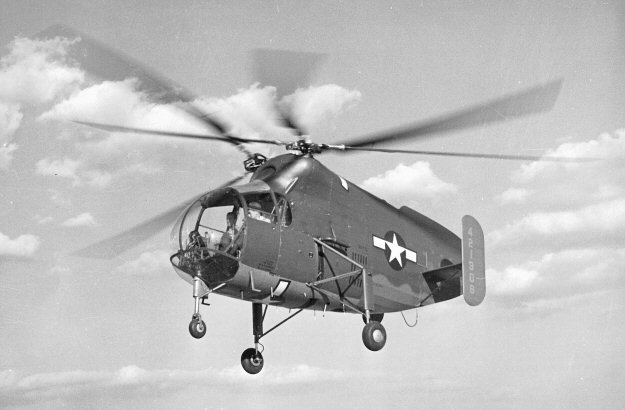
United States Air Force, Wright-Patterson Air Force Base. 38https://en.wikipedia.org/wiki/Kellett_XR-8 See the video of the restoration:
As described in the company’s publication, “Design Aspects of the Kellett XR-8 Helicopter”, the XR-8 syncropter first flew in August of 1944. The Army Air Force received a XR-8A in January 1946 and immediately cancelled its XR-8A program. This was probably the second prototype, 43-44714. 43-44714 remained flying at Kellett through 1947. Presumably, GE and Bensen hoped that some of the XR-8A’s problems could be addressed with ramjets–lightening the craft and reducing vibration. Jets at the tips of the blades could ultimately replace the need for heavy engines. It isn’t clear that this idea ever went beyond a notion.
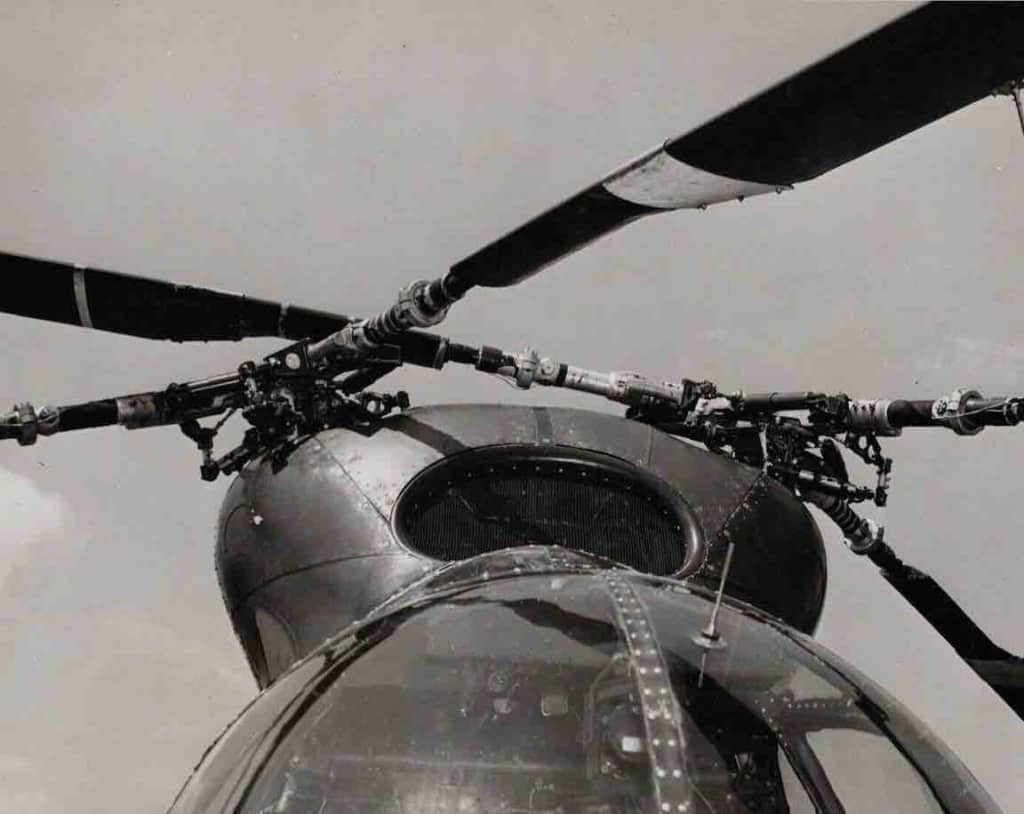
On August 7, 1944, XR-8 43-44714 took to the skies for the first time, becoming the first American synchropter to fly, with Kellett test pilot Dave Driskill at the controls. The flight revealed a lack of directional stability, leading to the addition of two tail fins. However, on September 7, a blade from each of the rotors collided while the aircraft was being flight tested and the issues on 43-44714 were being resolved. The second prototype, XR-8A 44-21908, began making its first test flights in March 1945. In addition to its two-bladed design, the XR-8A was further distinguished by its noticeable rounder tail fins as opposed to the squared examples on the first prototype. Unfortunately, the two-bladed rigid rotors caused severe vibration issues which proved extremely difficult to solve and led to the re-emphasis on continuing flight testing on 43-44714. –National Museum of The United States Air Force, page. 40https://www.nationalmuseum.af.mil/Home/About-Us/ Bayer flew 43-44714 many times between May of 1947 and September of 1947. In his logbook he designated it a model XR-8A–a designation apparently associated with the addition of fins on both XR-8A prototypes after September 1944.
In September of ’45, Bayer traveled to Philadelphia to take lessons in flying the XR-3 autogyro. On September 8th Kellett Aircraft’s chief pilot, Dave Driskill, checked him out in the now repaired XR-3 autogyro. Driskill “signed off” approval in Bayer’s logbook.–rating him to fly the autogyro on Sept. 21. This was Bayer’s first training in a rotary aircraft. 41Bayer Logbook. On September 26, Bayer flew the XR-3 back to Schenectady. 42Bayer Logbook. Account of hours–his document of March 1953, entering McCulloch. Bayer letter to Tozer March 31, 1952, p.1 Letter Bensen to Everett Lee, April 11, 1945, p. 2 GE Memos and … Continue reading
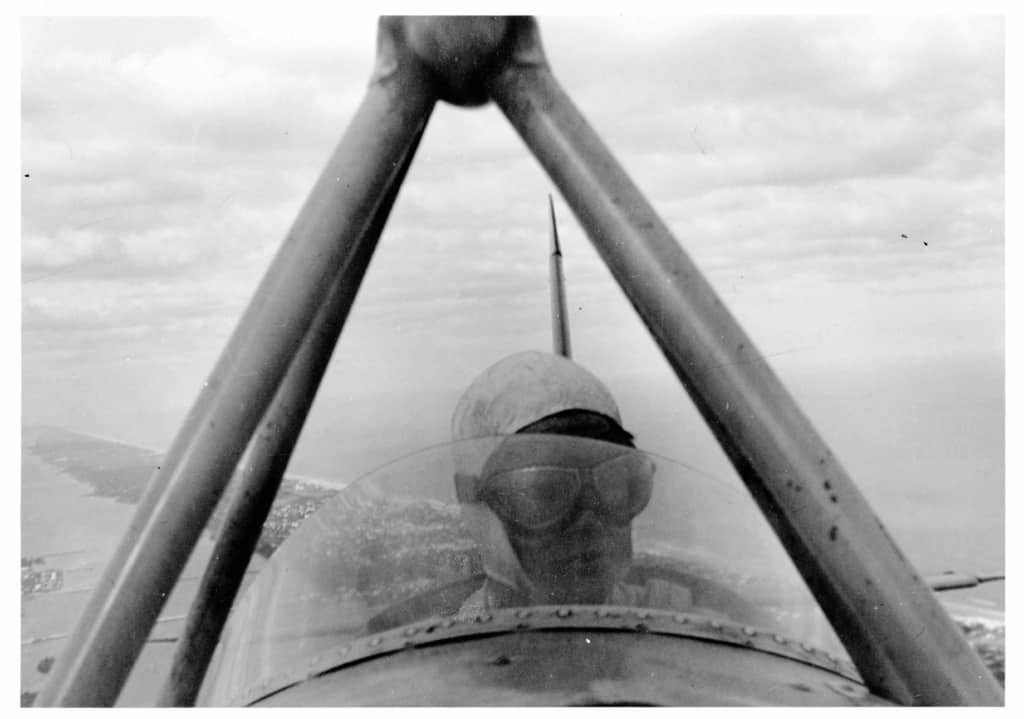
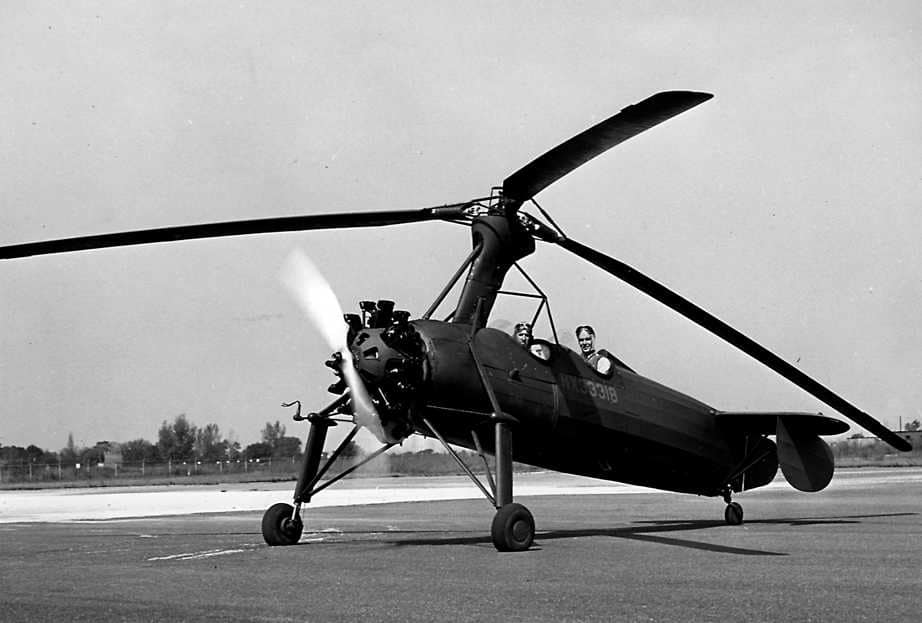
From September to mid-October, Bayer conducted a series of tests, flying the XR-3 from the Alplaus hanger. These included ground resonance tests. His reports described good progress. However, it remained a risky aircraft. Years later he wrote that, on one occasion he “unloaded” the rotor at 1500 ft. while doing a side-slip and recovered at 5 ft above the ground. 43Bayer letter to Tozer March 31, 1952, p.2 The tests resulted in repairs and, at least in the reports, a growing confidence in the craft. 44Reports OCt, 5, 11, 22, 1945 AW BAYER
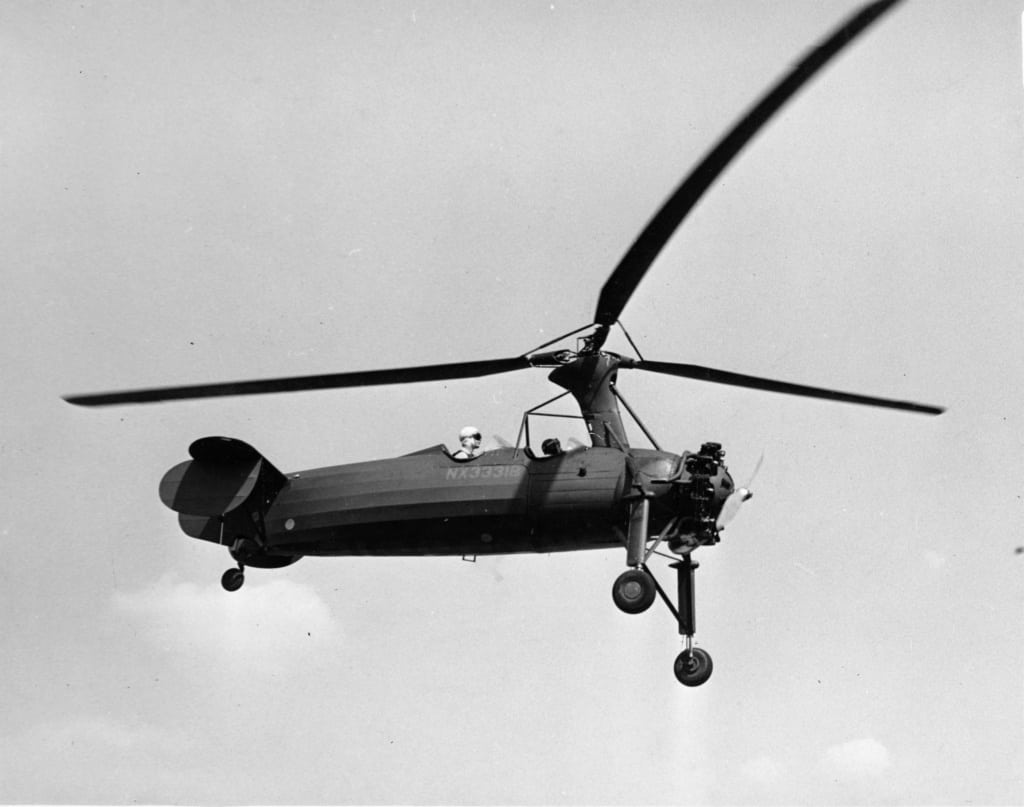
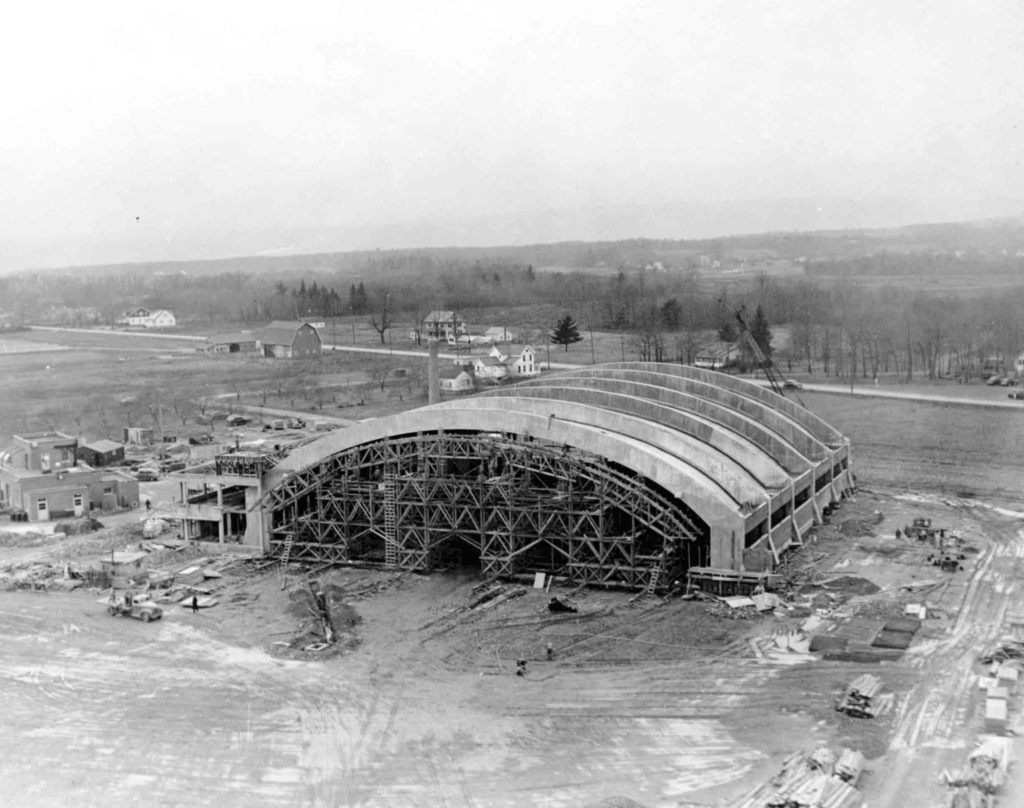
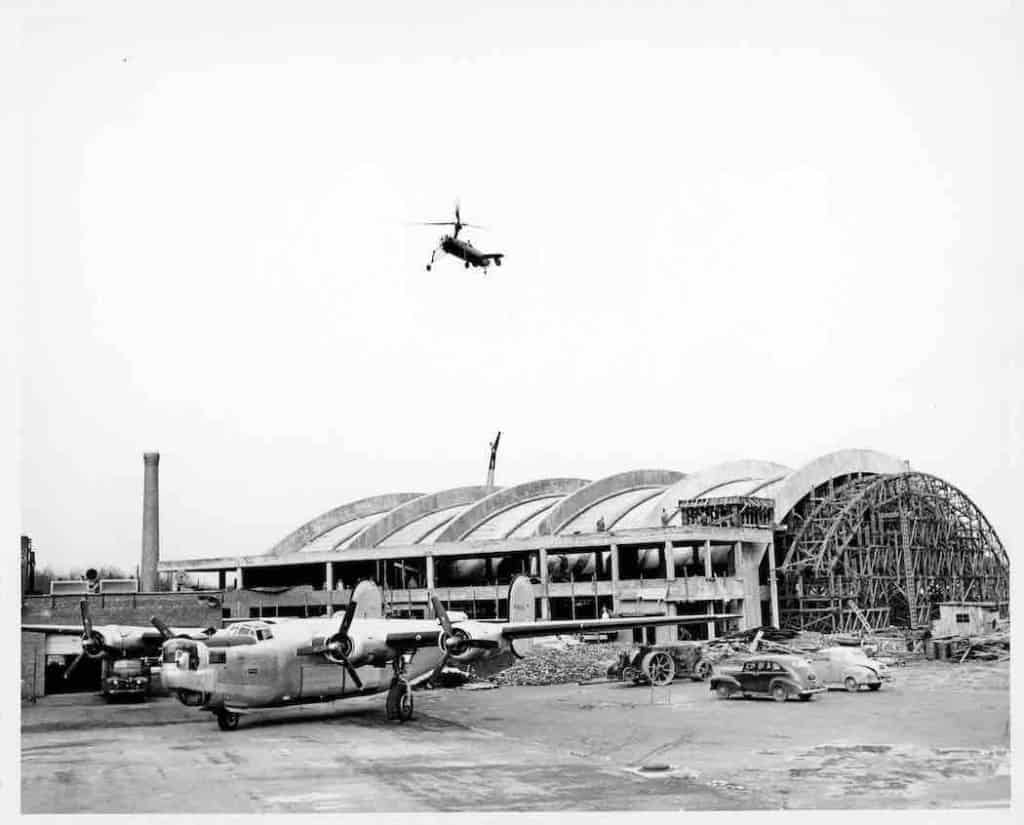
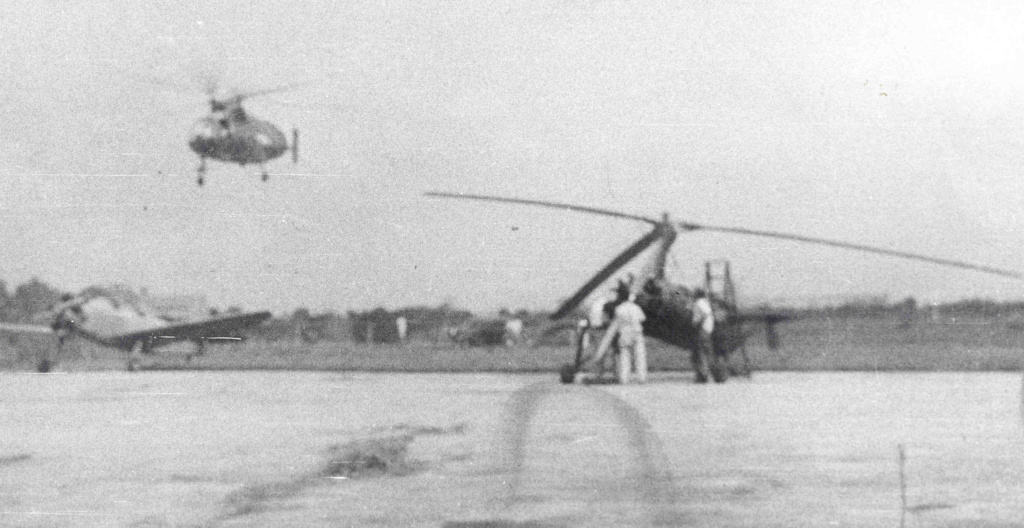
THE ROTOCHUTE – Igor gets a British idea
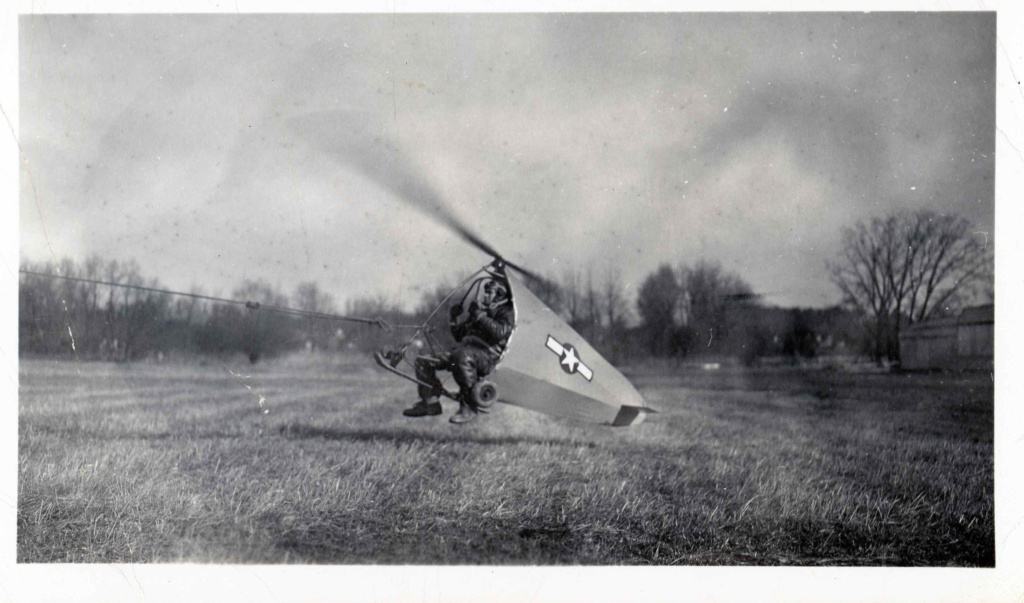
Notwithstanding the idea of adapting the worn out XR-3 and the bulky and dangerous XR-8, by late 1945, Bensen’s ambitions at GE began to scale down in size. His ideas for a Rotary Section seem to have found little support among management. The idea of using an XR-8 helicopter for ramjets seems to have fallen by the way and Kellett would instead soon deliver it to the military. Bensen wrote Major Wilson:
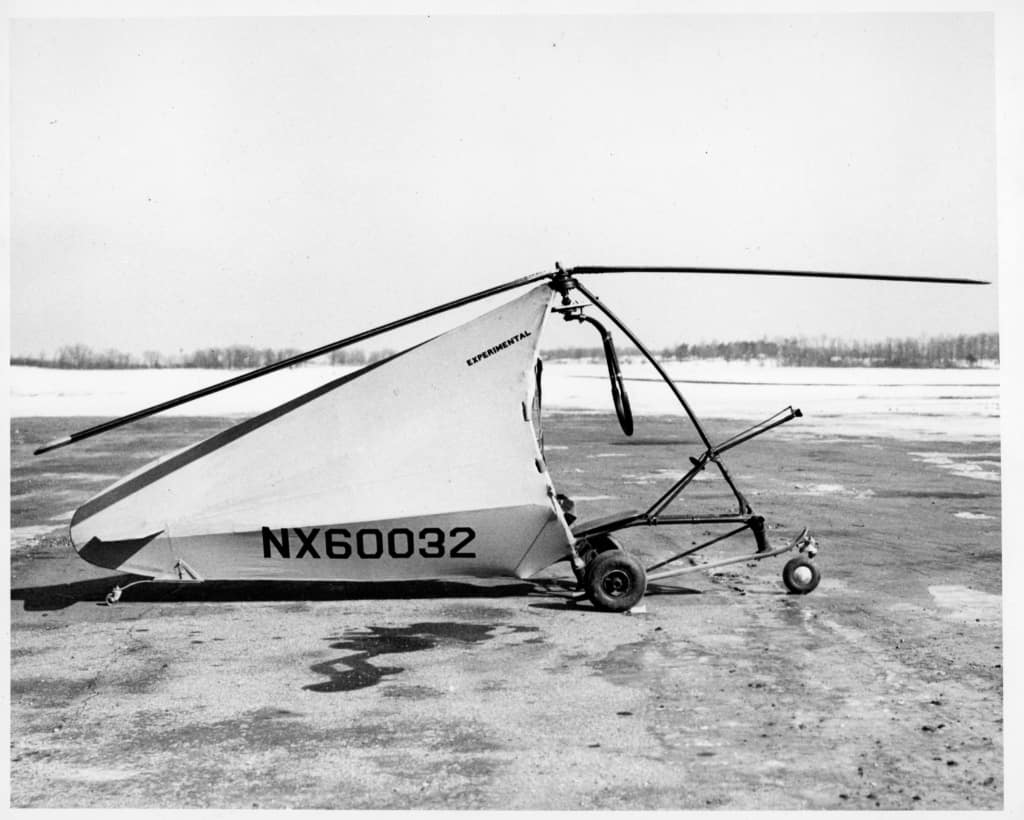
I would like to try out ramjet application on a small, light machine with almost no fuselage at all, which we could make fly with ramjets”. He wrote that Major Wilson suggested:
… the ‘rotochute’,–an obsolete piece of equipment, donated to AAF by British about two years ago, which was since put away ‘collecting dust’ in the hangars. Although, he felt, the machine cannot be used as is, it could be reworked for our purposes. 46Bensen, Memo. Oct. 22, 1945.

Wilson provided Bensen with the British, Hafner Rotochute–an unpowered rotary “parachute” that the British had ceased testing in 1943. Initial flight testing fell to Bayer. 47http://jcmservices.net/BensenHistory.PDF Bayer later wrote:
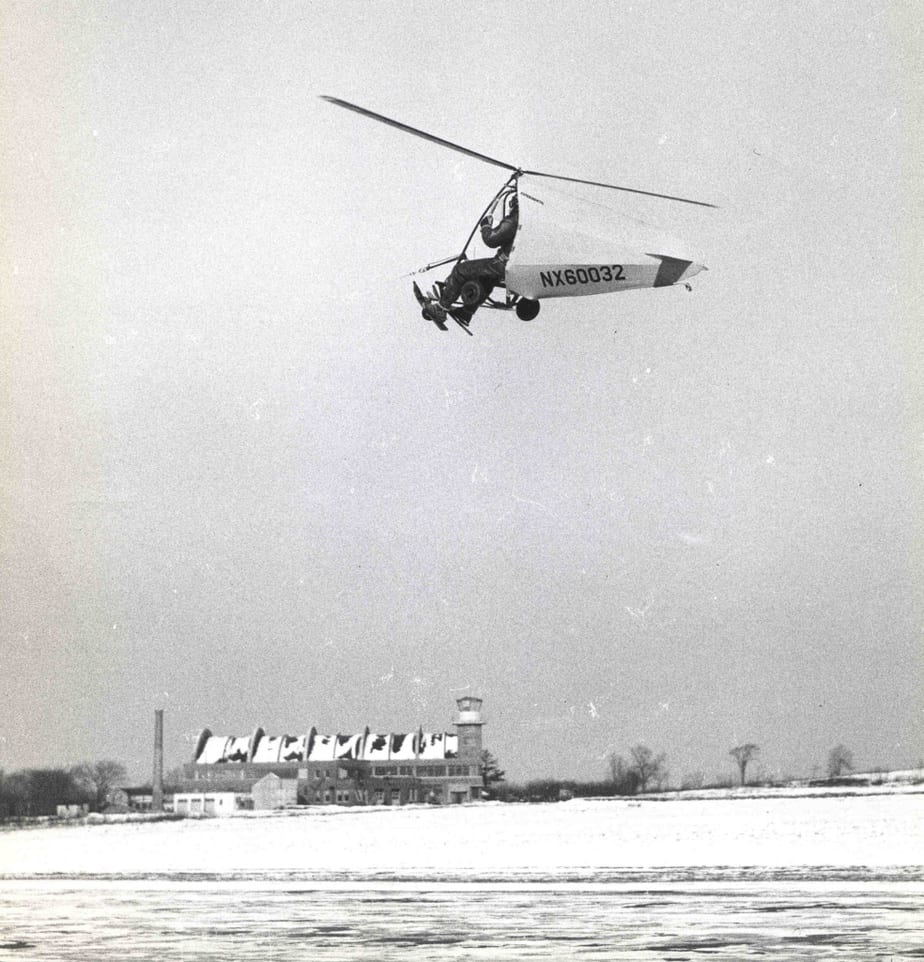
We also were given a British Rotochute (an autogiro glider which had an open seat, a rotor, a tail and a couple of skids. I taught myself to fly it by tying it behind an airplane slip stream, like a wind tunnel, and then flew it around the airport towed by a truck on the runway. Some years later while touring the British Army Aviation Museum at Middle Wallop, with the commanding general, I saw a rotochute hanging from the ceiling. The general told me that it flew only once and killed the pilot. I then told him about my experience with one and sent him a photograph which now hangs in the museum. 48Unbelievable.

Wilson worried that the XR-3 might fail and opined that the remnants of the YO-60 were worn out. In addition to the Rotochute, another opportunity for learning about the practical application of ramjets had appeared. Wilson asked Bensen if he could test one of the Army’s recently captured German Doblhoff helicopters. In that helicopter, compressed air from the engine and kerosene mixed with that air powered jets on the tips of the rotor blades. 49Porter p 34 Wilson provided encouragement to Bensen yet told Bensen that he couldn’t provide money. 50Memo, Oct. 22, 1945
Testing of the XR-3 continued into November using parts salvaged off of the wrecked X0-60. In December of ’45, Bayer received a letter from the Civil Aeronautics Administration advising him to read its Glider Airworthiness document prior to flying the Rotochute. By early 1946, Bensen seems to have fully shifted to modification of the Rotochute.
NEVER DID SEE IT – courting
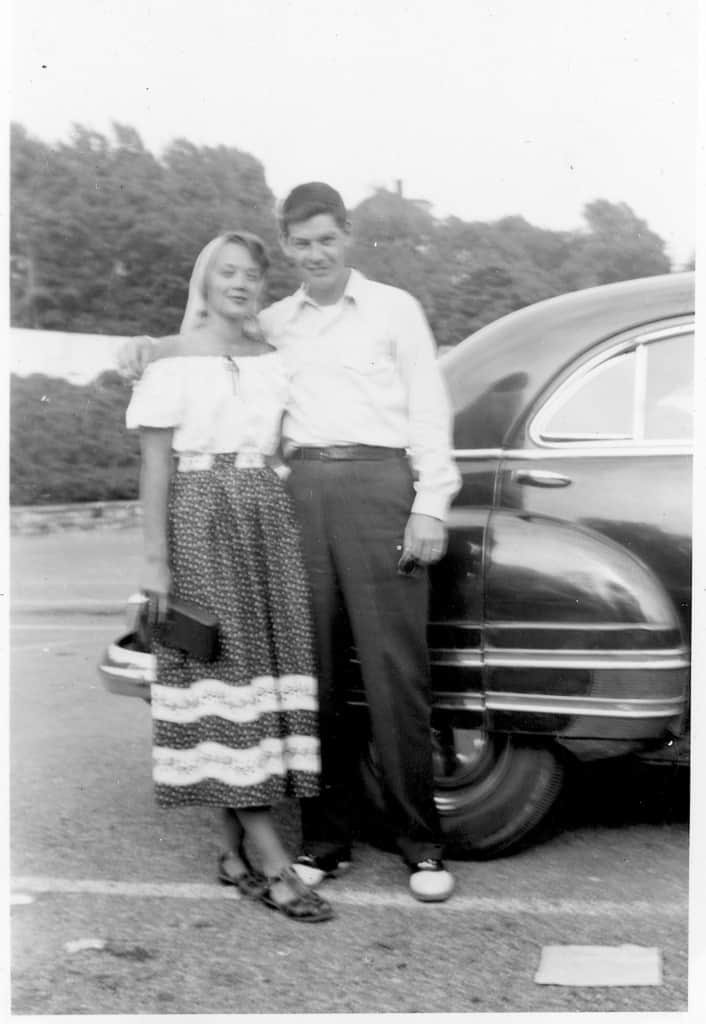
During early 1946, Emma Cusask and Alice Bayer met while twisting wires for the war effort at the main General Electric plant in Schenectady. During March, the mothers arranged for their children– Al and Rita–to meet. 51Letter AL TO RITA, Nov. 25, 1946
On their first date Bayer drove Rita to Newman’s Lake House in Glen Falls. Rita loved to swing dance. On the way, they stopped at the airport to see a P-47 Thunderbolt. Apparently, because they were necking, Bayer “never did see it.” 52LETTER AL TO RITA MARCH 15 1947 Rita was beautiful. Bayer’s letters suggest that he was completely smitten.
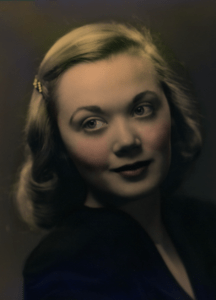
During May of 46, Bayer gave Rita his wings–they became engaged. 53LETTER BAYER TO RITA MAY 23 1947 They set their wedding date for July of 1947. A Catholic girl, Rita Cusack had graduated from The College of St. Rose in Schenectady during spring of 1946. She suffered a short bout of polio. In the fall of 1946, she entered nursing school.
Rita would never practice nursing. She would marry Bayer and become a housewife. Her father, Clarence, disliked this prospect. He wanted her to move up in a nursing career. Neither of her parents liked Bayer. With wishful thinking, Rita’s mother predicted the marriage would only last two months. 54LETTER BY Bayer Jan 14, 1947 Rita’s parents told her that Bayer seemed to be a lazy “braggard”. 55Letter by Bayer, Jan 19, 1947
Rita (my mother) told me that she married Bayer because he danced so well. Eventually, once married, she had a big house, nice things. As Bayer became busier and busier with work and, particularly after 1960, she volunteered in the local community. Rita continued to write to her parents about how well things were going with her life. My recollection of the extended family in upstate New York during the 1950s and 60s is that they always regarded the couple’s move to California as an aberration that could be corrected. They invited me to return and live in the East. They seemed to have no notion of how different life in California might be from life in upstate New York, and no appreciation of my father. He was the successful and somewhat strange relative. No one in her family had any idea what he actually did for a living.
THE HAMMERHEAD STALL – reasons not to barnstorm
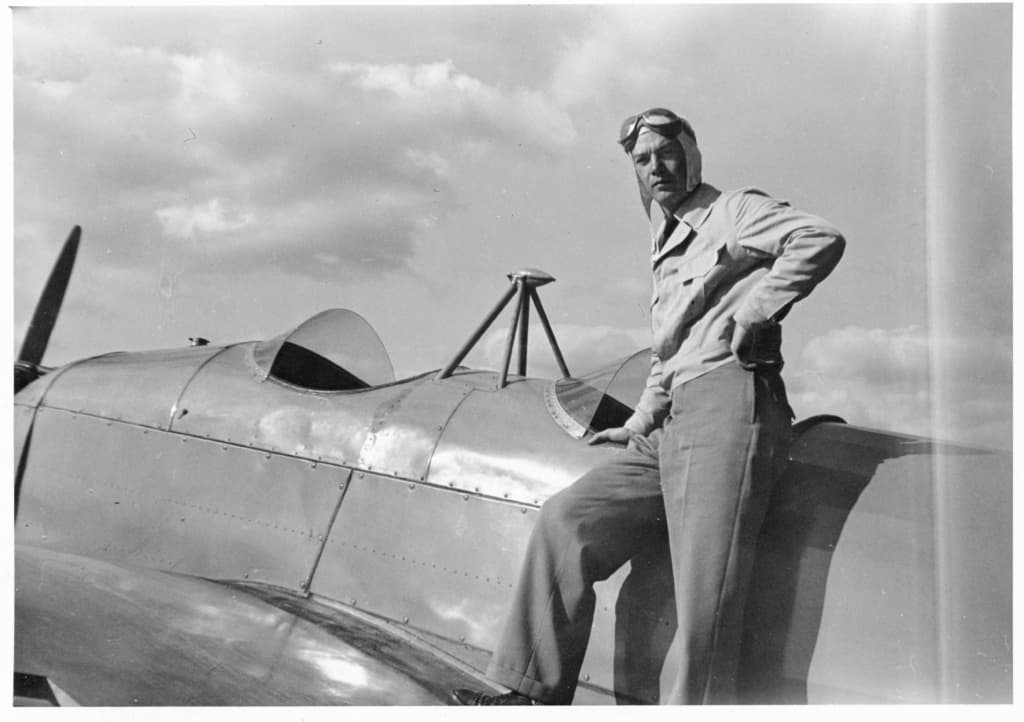
Today, in Schenectady, the old GE Alplaus hanger houses The Empire State Aerosciences Museum. When built it featured a heated concrete floor. During spring of 2001, as we drove away after a visit, my father, Al Bayer, told me why he decided to cease barnstorming.
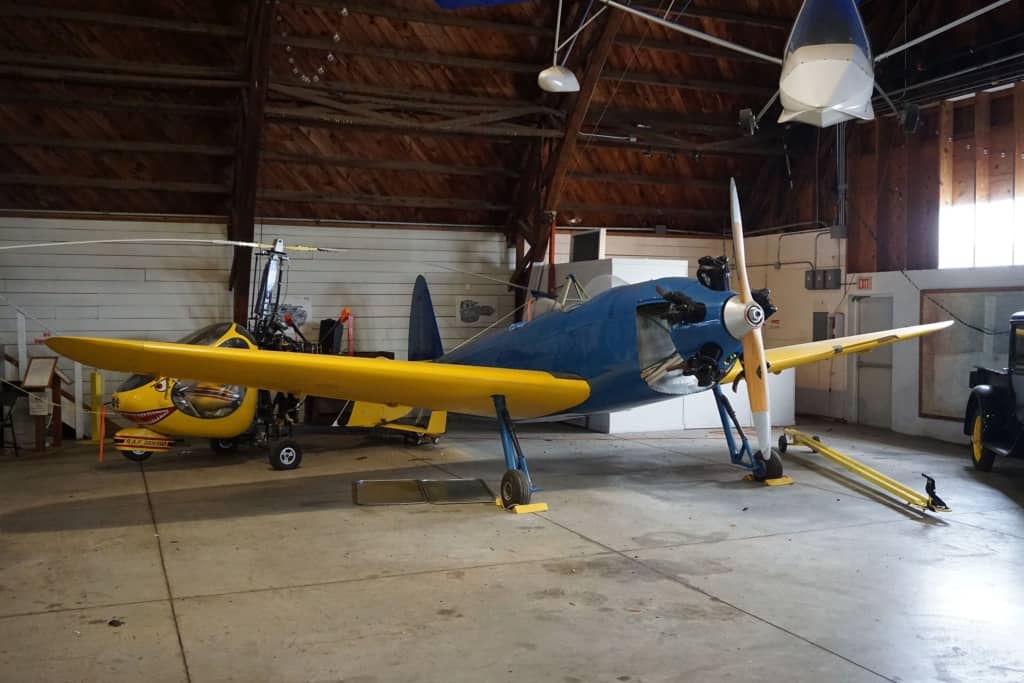
One day while barnstorming at an airshow, he told me, he had flipped his biplane upside down, five feet off the ground, flying along the runway as the audience gasped in wonder, his body hanging upside down from a harness in the cockpit, his head a few feet above the ground, thrilling the onlookers. It appears he shifted to a biplane for just one event, and it didn’t go well. This near mishap in a biplane seems to have occurred during April ’46. According to his logbook, Bayer only flew a biplane one time that year–a WACO UPF. 57Bayer logbook He barnstormed mostly in the low-wing Howard DGA-18
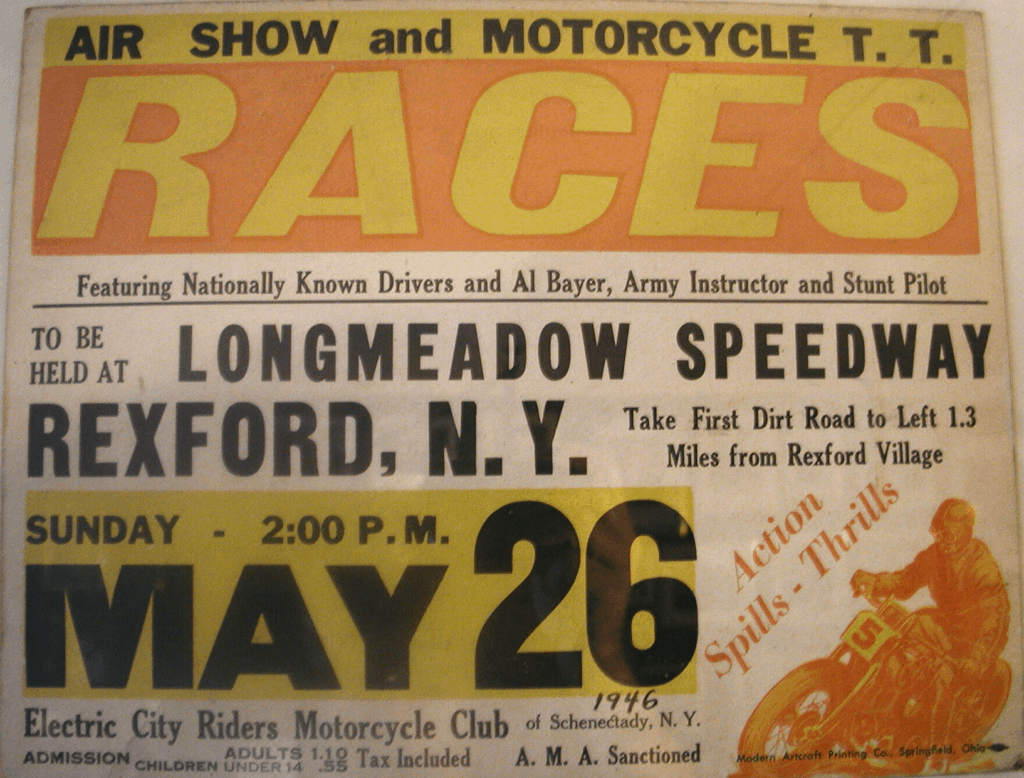
However, on the day he to the WACO barnstorming, he experienced a problem. The biplane’s gas tank resided in the upper wing, which, when the plane was upside down, became lower than the engine. In normal flight, gravity fed gas from the tank in the upper wing of the biplane down to the engine. With the plane inverted, the tank lay below the engine. The engine could run dry and stop. There were a few moments while the engine still pulled gas from the line. The trick, he told me, was to count and flip the plane right side up before the engine quit. I imagine he had learned this while flying the Stearman biplane in Army flight school. However, this time he counted too slowly and the engine stalled while he was just above the ground, upside down.
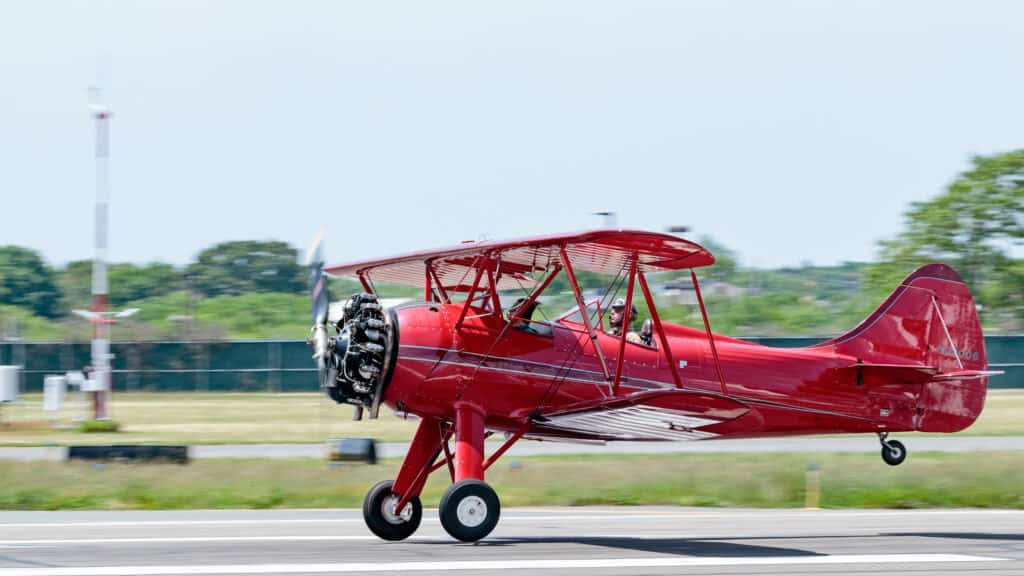
I pulled the plane straight up a couple hundred feet into a hammerhead stall, flipped it nose down and landed. The audience, of course, thought this was all part of the show and applauded. Next day, I went up to practice. I’d use flat, stratospheric clouds, pretending that they were the ground, and roll the plane over above them and then count. That next day, I rolled the plane over and accidentally dipped my head into the clouds. I decided not to barnstorm anymore and to be more careful. 59Story to me by Bayer, 2001. The hammerhead stall is a tricky maneuver yet quite impressive. 60http://www.britishaerobaticacademy.com/blog/stall-turn
He also flew a Fairchild PT-23. 61He seems to have mistakenly labeled it a Fairchild PT–13 in some of his lists. Though he saved a poster advertising “Al Bayer, stunt pilot” for a May 26 airshow at Longmeadow Speedway, Bayer’s logbook shows that he did not fly on that date. He appears to have quit barnstorming the week prior to the show, apparently after flying the WACO biplane.
For Bayer the danger of barnstorming was amplified by changes in his life. By spring of ’46, he was engaged to be married. Suddenly it seemed that he might not die of cancer. Though he still wasn’t sure of this. Having given up on barnstorming, reconsidering his mortality, thinking about a future, with Bensen’s GE projects reduced to the Gyro-glider, Bayer decided to look beyond GE in order to pursue a career in flying. He had now met Dave Driskill.
THE GIANT AIR PARADE -air research
By 1945, problems with the XR-8A design lead Kellett to supersede it with a newer design–the XR-10, designed through 1945 and under construction in 1946. 62For gas turbines in helicopters see https://www.danubewings.com/helicopter-turbine-engines/ It was this craft, the XR-10, that Driskill recruited Bayer to help test in spring of ’46–work to begin in January of ’47. Bayer left GE’s employ in May of 1946. He worked for Haven’s Flying School from June ’46 till October of ’46. 63Unsigned contract, June 1946, Haven Flight School at Schenectady County Airport. Personnel Security Questionairre for Hughes Aircraft, c.1949 During spring of ’46, his last act at GE lay in putting himself into their airshow.
On June 21 and 22, General Electric held the public grand opening of its new Alplaus hanger–the Air Research Center. Dozens of planes flew in from across the east coast. An employee of General Electric, Richard Lockett attended and took pictures of the event. (A book of his photos is available.) Visiting planes flew over Manhattan before arriving at the show in Schenectady. 64Ad for Air Parade: Daily New, New York, June 21, 1945 p535.
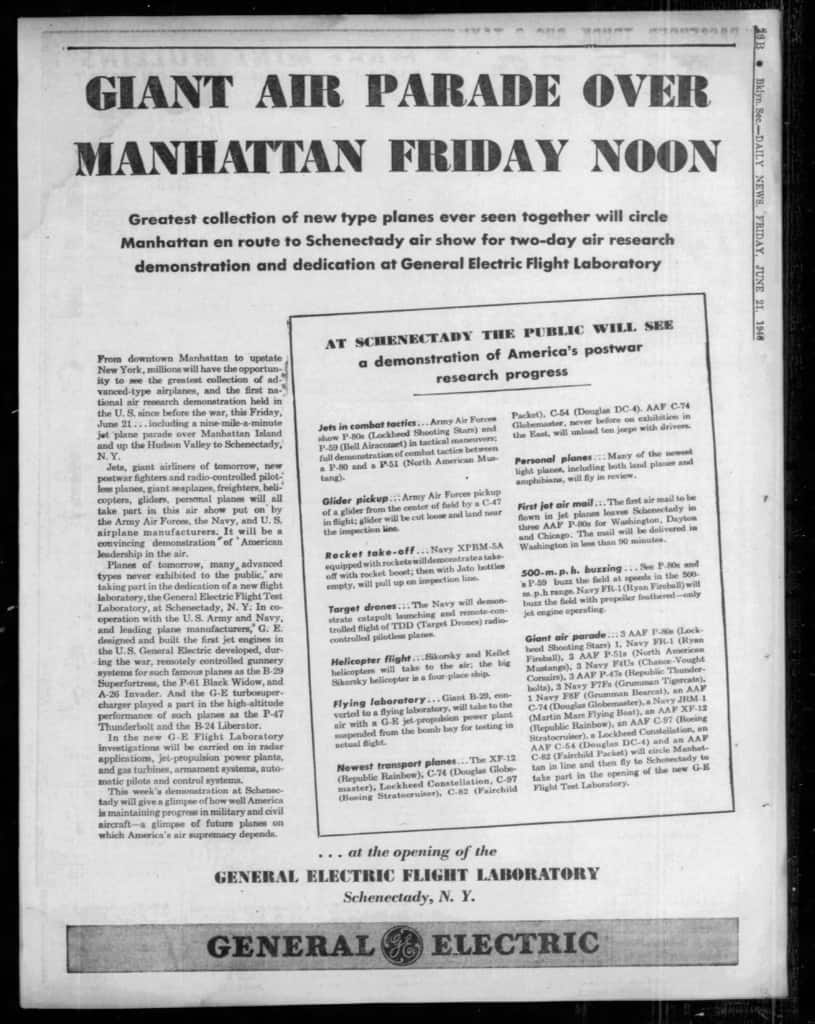
At the time, General Electric owned two B-24 bombers converted to laboratories for testing radar and gas turbine engines, a B-29 and the Kellett XR-3. 65The Troy Record, June 18, 1946. An airshow was held in Schenectady June 22, 1946. Dunkirk Evening Observer June 22, 1946 p. 1 Bayer saved a couple of photos from the Demonstration. His interest lay in helicopters. These show the Brantley B-1 helicopters, the Sikorsky R-6 and the Kellett XR-8A.
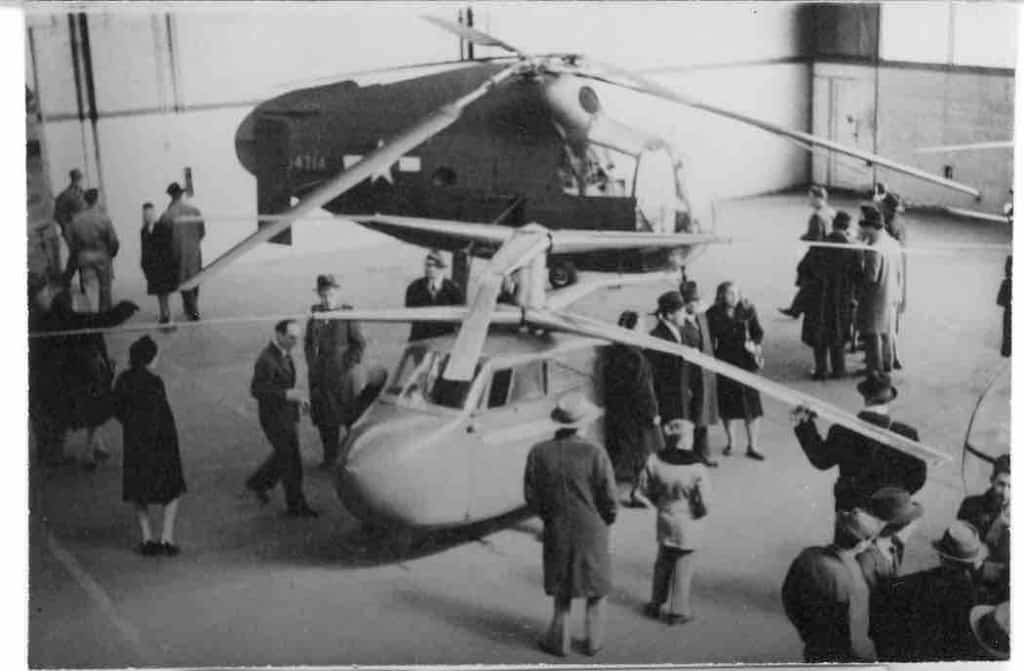
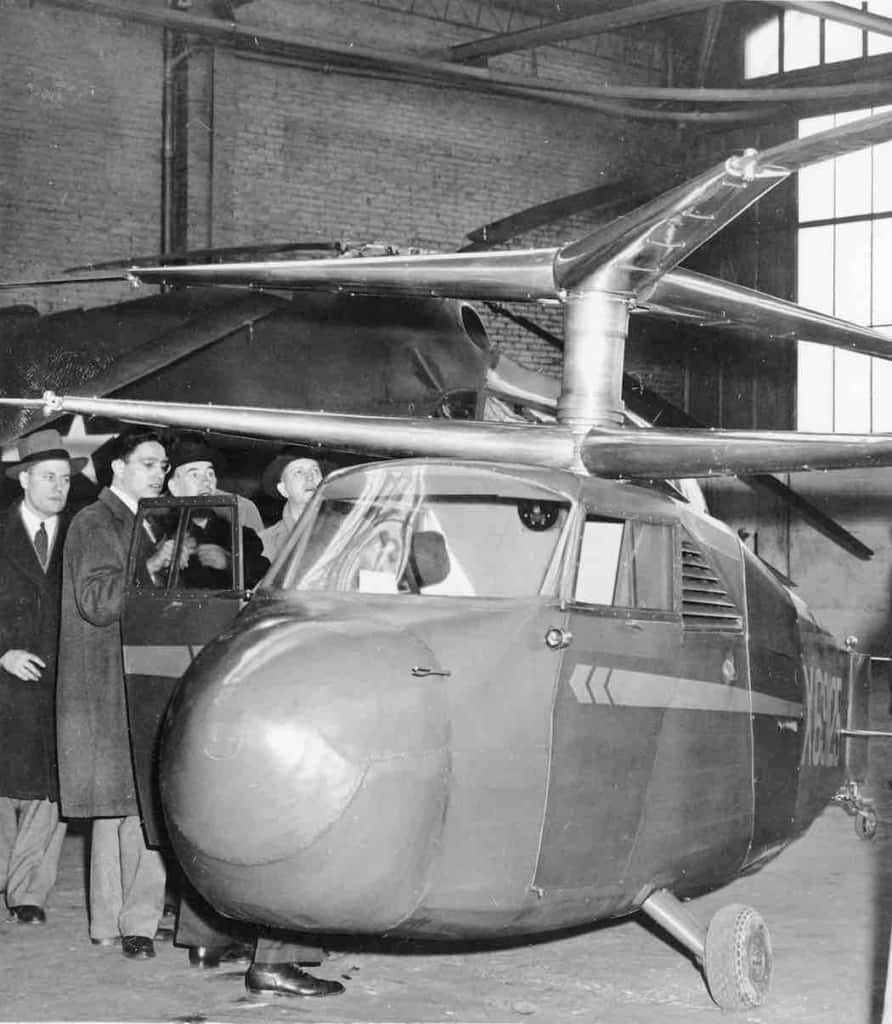
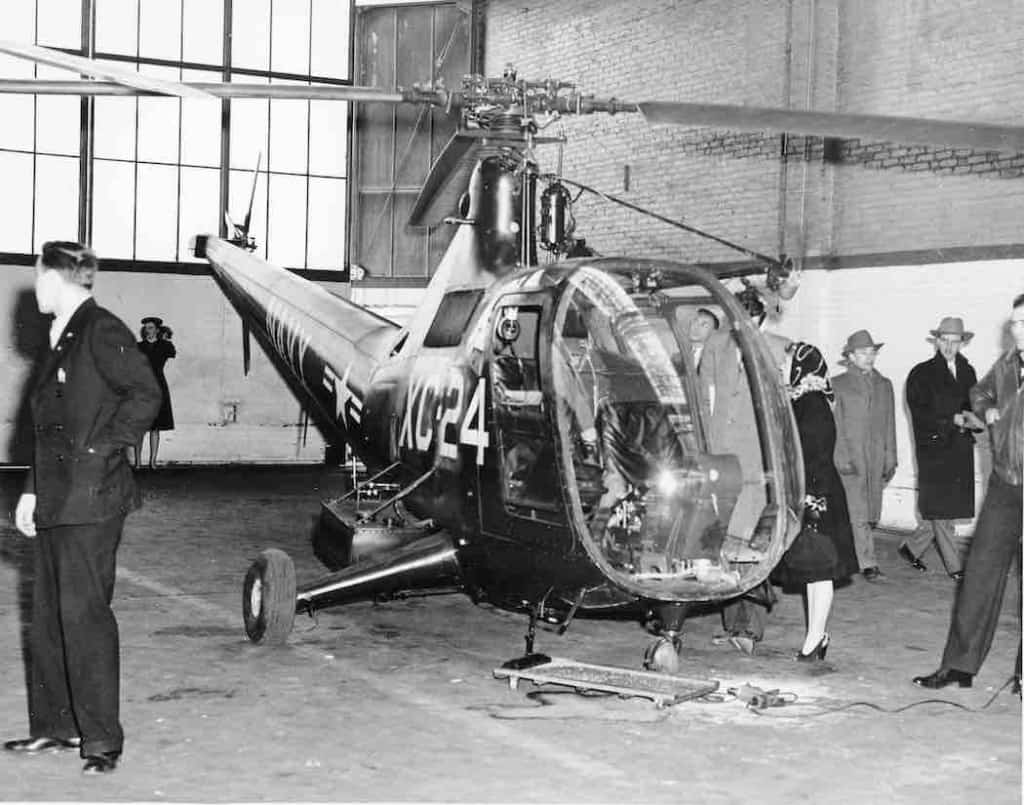
Bayer also took a photo of Bensen’s modified Rotochute–then called a Gyro-glider. The Gyro-glider was exhibited without the cowling so that visitors could see its workings.
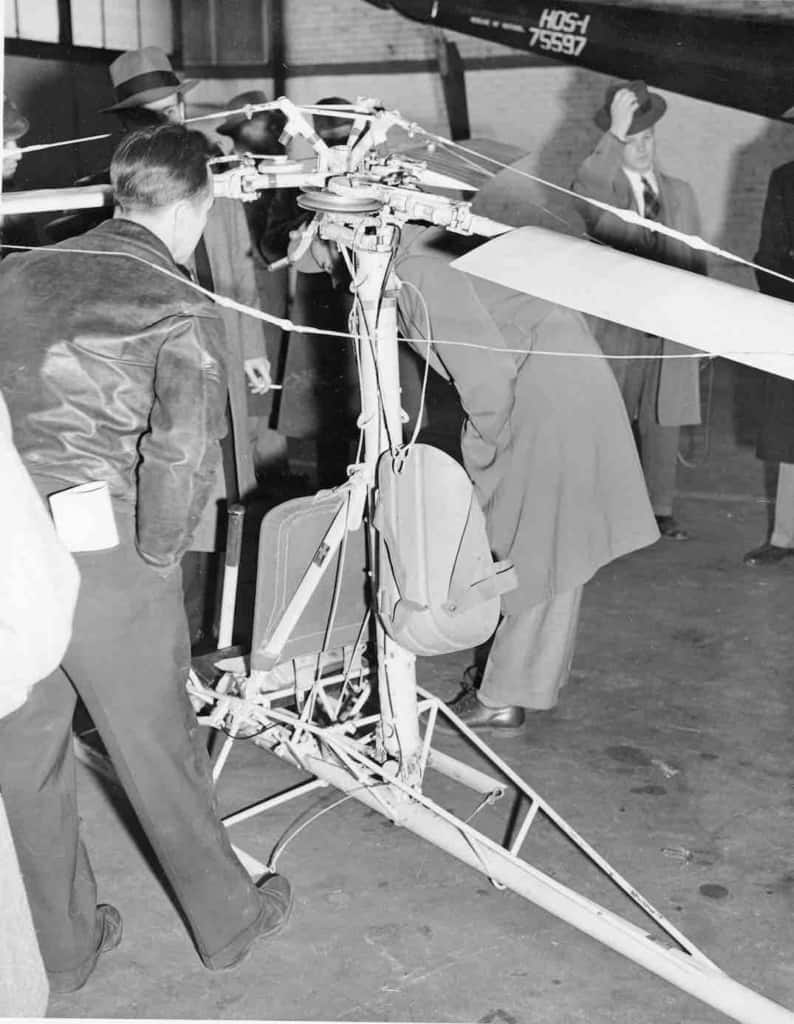
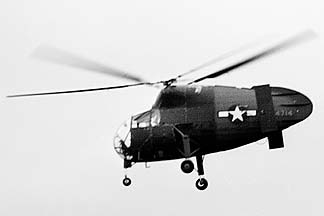
Neither the XR-3 nor the Gyro-glider were printed as appearing in the program for flights during the Air Research Demonstration”. Apparently noticing this, Bayer literally hand-wrote himself into the agenda and then flew the XR-3 during the presentation. 66Air Research Demonstration, Friday itinerary.
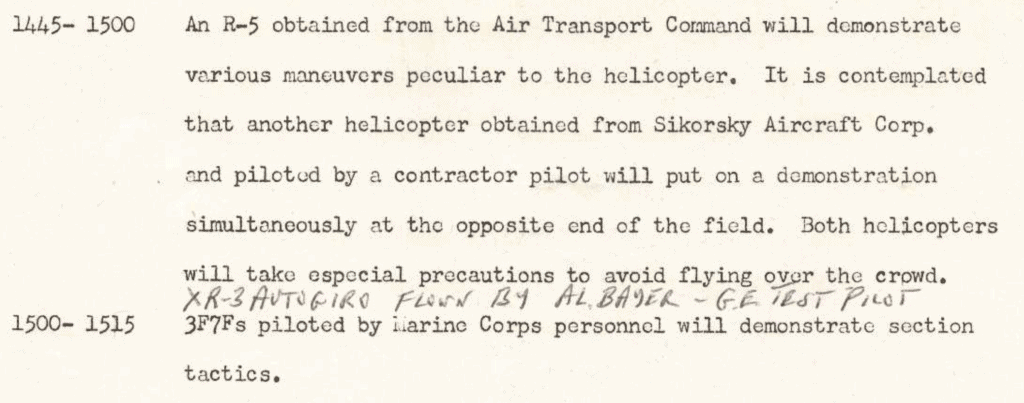
In a letter, Bayer proudly wrote Rita that he would fly for the event on both June 21 and 22. 67Letter Bayer To Rita June 21, 1946 Bayer sent Rita a letter by Lockheed P-80 “Shooting Star”– the nation’s first jet plan mail delivery flight–one of about 7500 specially printed envelopes for the event. Announced in 1945, the P-80 was, at that time, the world’s fastest plane.
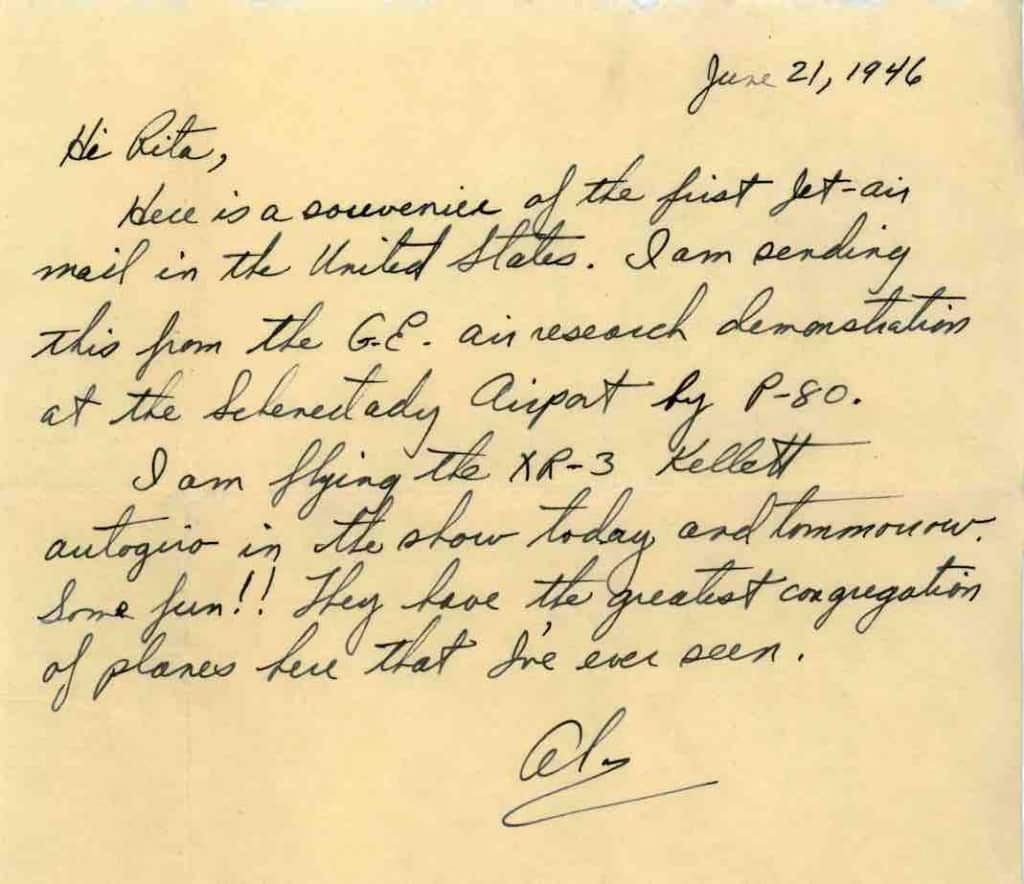
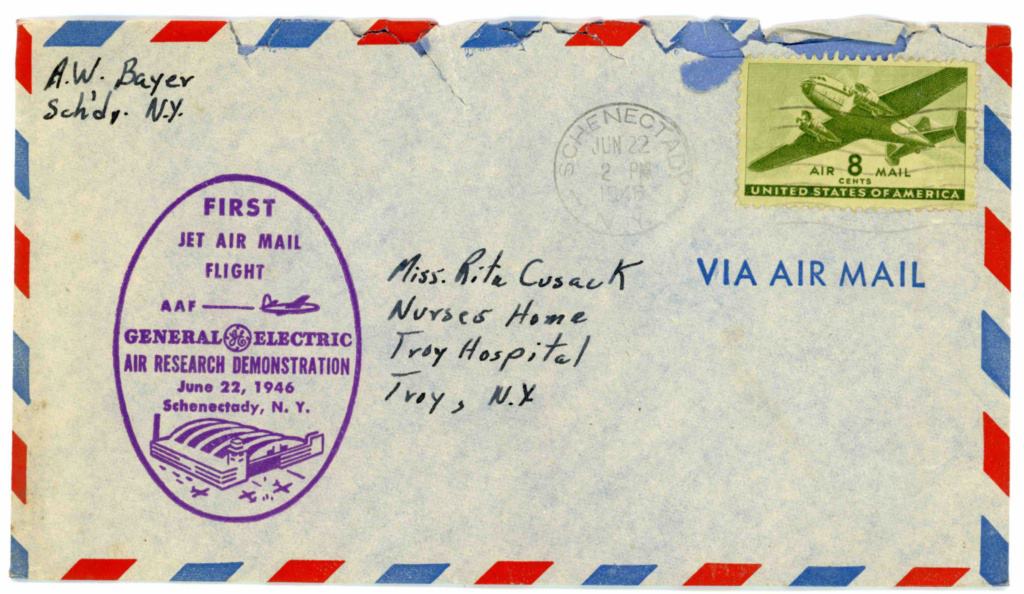
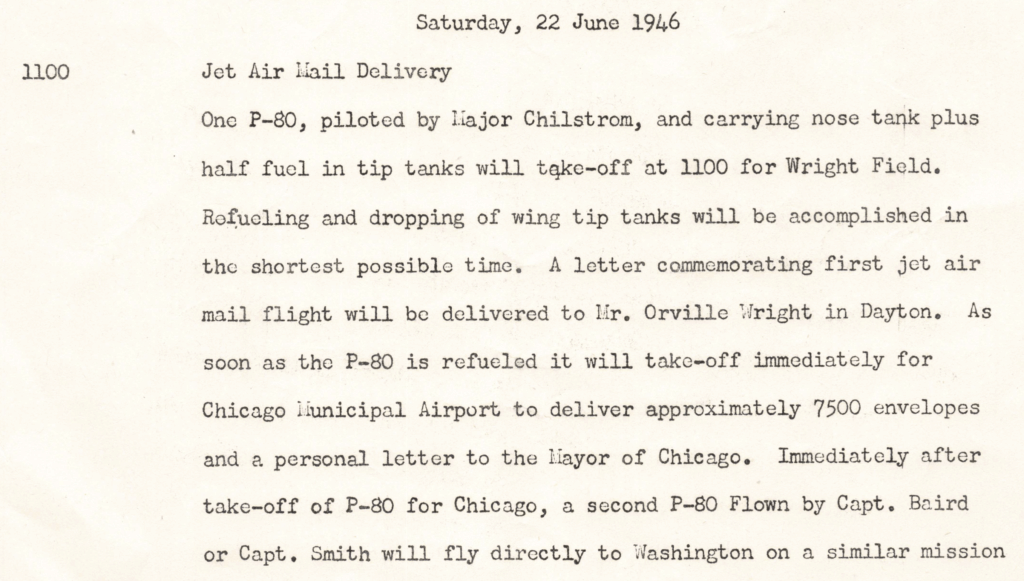
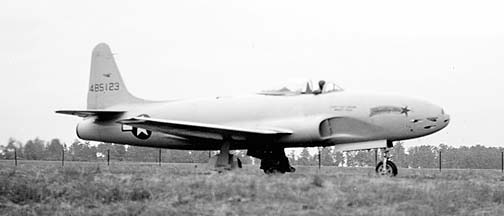
At the show, Bayer seems to have talked to Dave Driskill from Kellett Aircraft. Driskill had arrived with square finned, original XR-8A to fly it at the show. Driskill had instructed Bayer in flying the XR-3 the previous September and Bayer may have flown with him in the XR-8A at the Research Demonstration. 68Bayer Postcard June 29, 1946 describes flying in the XR-8. This may be a different air show. In a newsreel of the event, the P-80 was given special status because GE had developed its jet engine. In the video, Driskill can be seen flying the XR-8A at 9:52.
Below, a home movie shows the GE hanger, planes and surrounding countryside around summer of 1946. Separate from the big event in June, we see a bucolic location and daily workers.
Bayer probably talked to Driskill about working at Kellett Aircraft–where they were planning completion of the XR-10 for that fall. Driskill seems to have seen an opportunity to retire from Kellett, ultimately leaving Bayer in his place.
THEY WEREN’T GOING FOR IT
In October of ’46, Bensen announced to the press his “Gyro-glider”–a 120 lb. unpowered vehicle with a payload of 300 lbs. He launched the craft by towing it with a jeep. 69It has been claimed that the Gyro-glider was launched from the bomb rack of the XR-3 but I can find no evidence that this happened. http://www.gyroplanepassion.com/Igor_Bensen.html With removable blades, the gyro-glider was promoted as loadable in your station wagon–a realization of the dream that everyman could someday fly around the block. 70Middletown Times Herald MIDDLETOWN, NEW YORK, Nov. 1, 1946 p.9. Star Gazette Nov. 1, 1946 p. 1 The 120 lb B-1 simplified the articulated rotor of the Rotachute into a semi-rigid design and incorporated an overhead control stick reverser for better control of the rotor.
Though he remained involved with G.E. in assessing the German Dublhoff helicopter, Bensen was soon on his own in pursuing his rotary ideas. He learned to fly the XR-3 and the Dublhoff–eventually suffering severe injuries after the latter went into ground resonance and flew apart. The crash of the B-1 Gyro-glider led to development of the B-2 which featured all-metal construction. 71http://www.gyroplanepassion.com/Igor_Bensen.html
Bayer later wrote to Rita of GE’s lack of interest in Bensen’s ideas, “they weren’t going for (it)“. 72Letter Al To Rita, Jan. 19, 1947 This would not be the last time Bayer found the captains of industry distant from the dreams of men passionate about small rotary aircraft. The small helicopter, autogyro and convertiplane, long remained a sort of toy, a quirky technology to be talked about by young engineers but barely funded. For a long time, no one seemed to have any idea of what it might actually do or be used for–particularly as used by the military.
THEY MUST THINK THAT I’M CRAZY
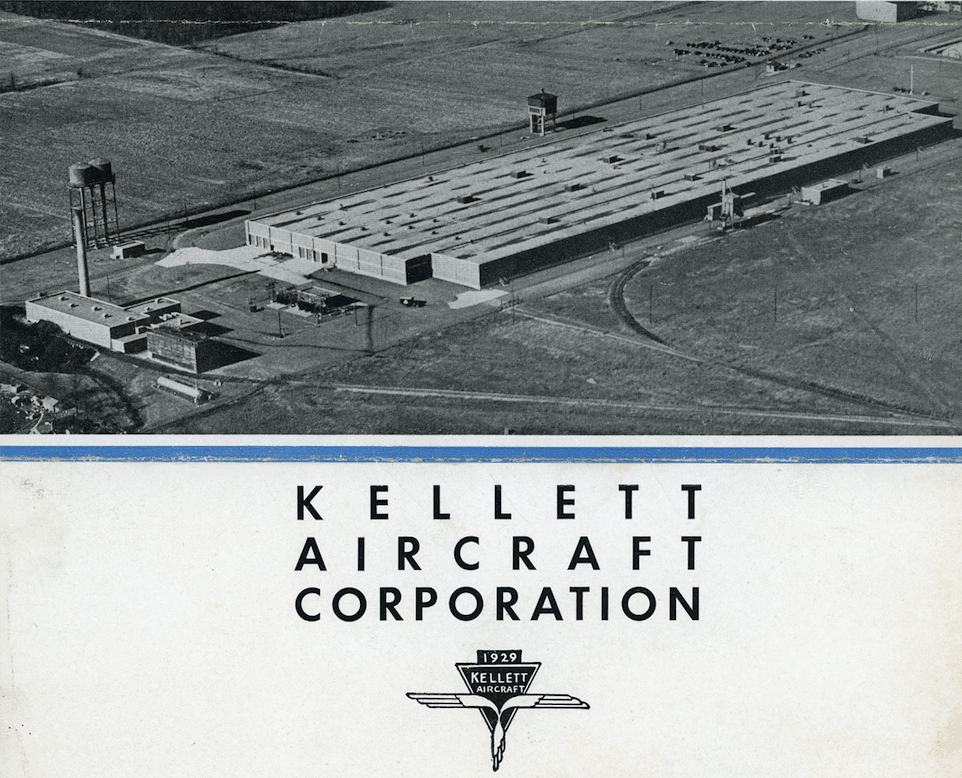
During September of ’46, Bayer drove from Schenectady to Lansdale Pennsylvania. There, more than anyone else in Bayer’s life, Dave Driskill provided the mentorship in rotary aviation that Bayer needed. 74Postcards from Al to Rita, Sept. 1946. Also letter, Bayer to Tozer, March 18, 1952

A pioneer aviator, the first licensed helicopter pilot in the nation, during 1919 Dave Driskill (1897-1949) had opened an auto repair shop before shifting his interest to airplanes. The question arises, why would Dave Driskill want to hire Bayer to help him test the XR-10. Surely, he knew that Bayer had wrecked the XO-60 after attempting to fly it with no actual instruction. Why then did Driskill want Bayer by his side? Probably because Dave Driskill wanted a risk taker. Many years prior, Driskill had taught himself to fly the airplane in the same way–with no instruction. As described by Casey Huegel in an article about Driskill’s work for the National Park Service:
One day at the field, while Crane was out of town, Driskill decided to see if he could fly the plane. Already he had mastered the art of starting the Jennie [Curtiss JN-4 trainer]. So that part of his adventure was easily accomplished.
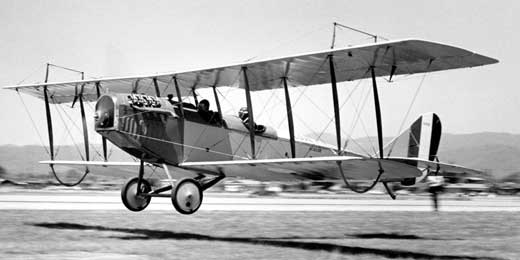
Then, as no one was present to tell him not to do it, Driskill taxied up and down the dirt runway several times. Then he did it. Manipulating the controls as he had seen Jimmy Crane do it, he was soon airborne and thus he became one of the few pilots living today who can claim the distinction of being a self-taught aviator . . . thus with no actual instruction, Driskill became a pilot. 75The North Carolina Historical Review, Dave Driskill, The National Park Services, and Aviation on the Outer Banks, 271, Vol. XCV, No 3 July 2018
The culture of the test pilot valued–required–taking risks. The era fostered a sort of insane bravado that propelled men forward and sometimes got them killed. During 1941, Driskill used an autogyro to survey Colonial National Historical Park. In 1942, he was hired by Kellett Aircraft. His experience with the X0-60 somewhat mirrored Bayer’s experience.
“In 1943, Driskill was injured testing an YO-60 autogiro after the machine oscillated so violently that the controls almost knocked him unconscious.” 76The North Carolina Historical Review, Dave Driskill, The National Park Services, and Aviation on the Outer Banks,271, Vol. XCV, No 3 July 2018
Prior to Bayer’s arrival, Driskill may have been the only one at Kellett to fly the XR-8A.
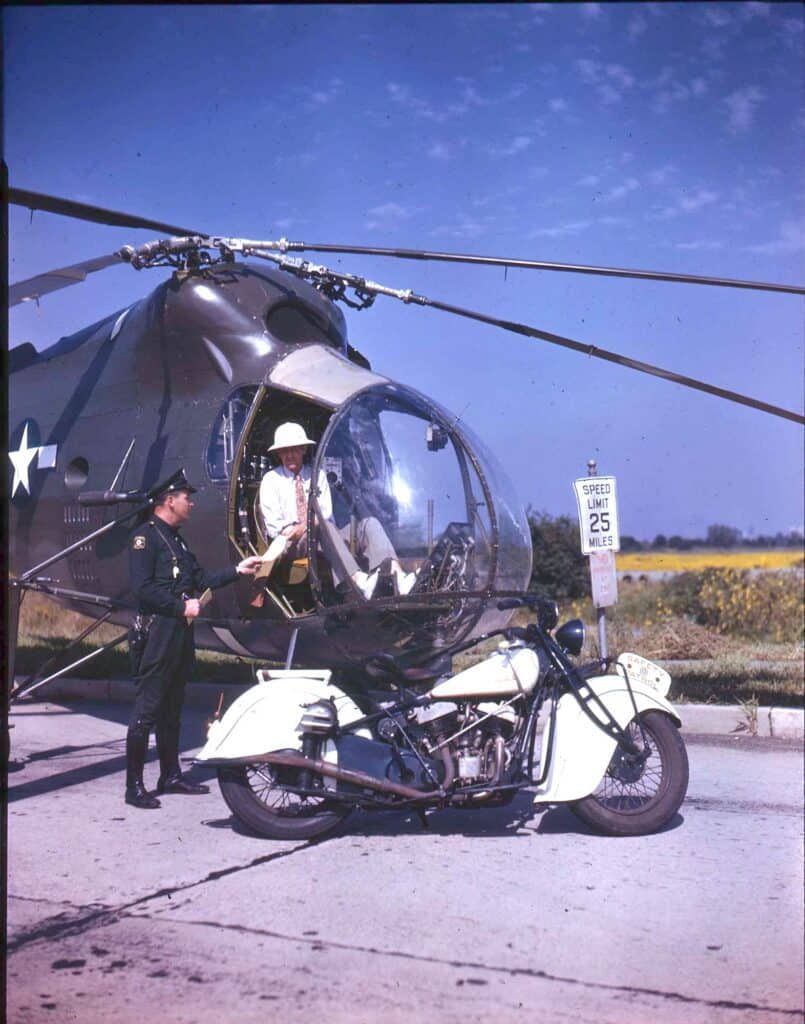
Attempting to fix problems with the XR-8A and be even bigger, the XR-10 was a monumental project for its time–perhaps too bold. The story of Bayer and Driskill at Kellett climaxed is disaster.
With Sikorsky’s successful flight of a helicopter in 1939, Wallace Kellett saw a need to turn from autogyros to helicopters. 77https://www.verticalmag.com/features/21585-stirring-up-innovation-html/ In January of 1943, Kellett was awarded a $1-million military contract to build two intermeshing rotary-wing helicopters that would be designated as the XR-8. Driskill first flew the XR-8 on Aug. 7, 1944. Almost immediately, the blades collided. Kellett modified the craft from a three blade to a two blade intermeshing system and added stabilizers–creating the XR-8A. Both the first prototype and the second were then designated XR-8A. Cost kept the company from a rigid rotor system and it stuck with a flexible rotor system 78Vertical Magazine. Stirring Up Innovation Posted on by Bob Petite https://www.verticalmag.com/features/21585-stirring-up-innovation-html/. This flexible rotor system reduced weight–a major issue–yet made blade collision an ongoing problem. In Oct. 1944, the company obtained a contract to build the larger successor craft–the XR-10. Below, the second XR-8A demonstrates mail delivery in Philadelphia, 1945. The pilot is probably Dave Driskill.
During September of ’46, as Bßayer arrived in Pennsylvania, Driskill said to him: “You couldn’t have come at a better time.” In ’46, the government turned over the Manteo, North Carolina, airstrip for civilian use. By April of ’46, Driskill was planning to run an air taxi service from Manteo and would soon plan to manage the strip. 80The air taxi plan appeared in numerous papers. Including: News and Record Greensboro, North Carolina, Tue, Apr 16, 1946 · Page 5
It appears that with the XR-8A project largely completed and Kellett moving on to the XR-10, Driskill intended to step back and, at some point, have Bayer take over the Kellett test piloting. That fall, he needed help from Bayer, flying with him to Manteo so that he could fly a plane back to the Kellett factory. With that plane he could commute to Manteo. Though he served as Kellett’s chief pilot, Driskill would now also be busy helping a banker, Robert Wahab, establish a commercial aviation network while taking over management of the Manteo airport in Dare County. 81Huegel article p 252. Today, the Dare County airport museum contains an exhibit about Driskill. A photo taken in North Carolina during their trip shows Bayer looking young and bit foppish next to the older pilot. 82The North Carolina Historical Review, Dave Driskill, The National Park Services, and Aviation on the Outer Banks,271, Vol. XCV, No 3 July 2018 Driskill was 48. Bayer was 22.
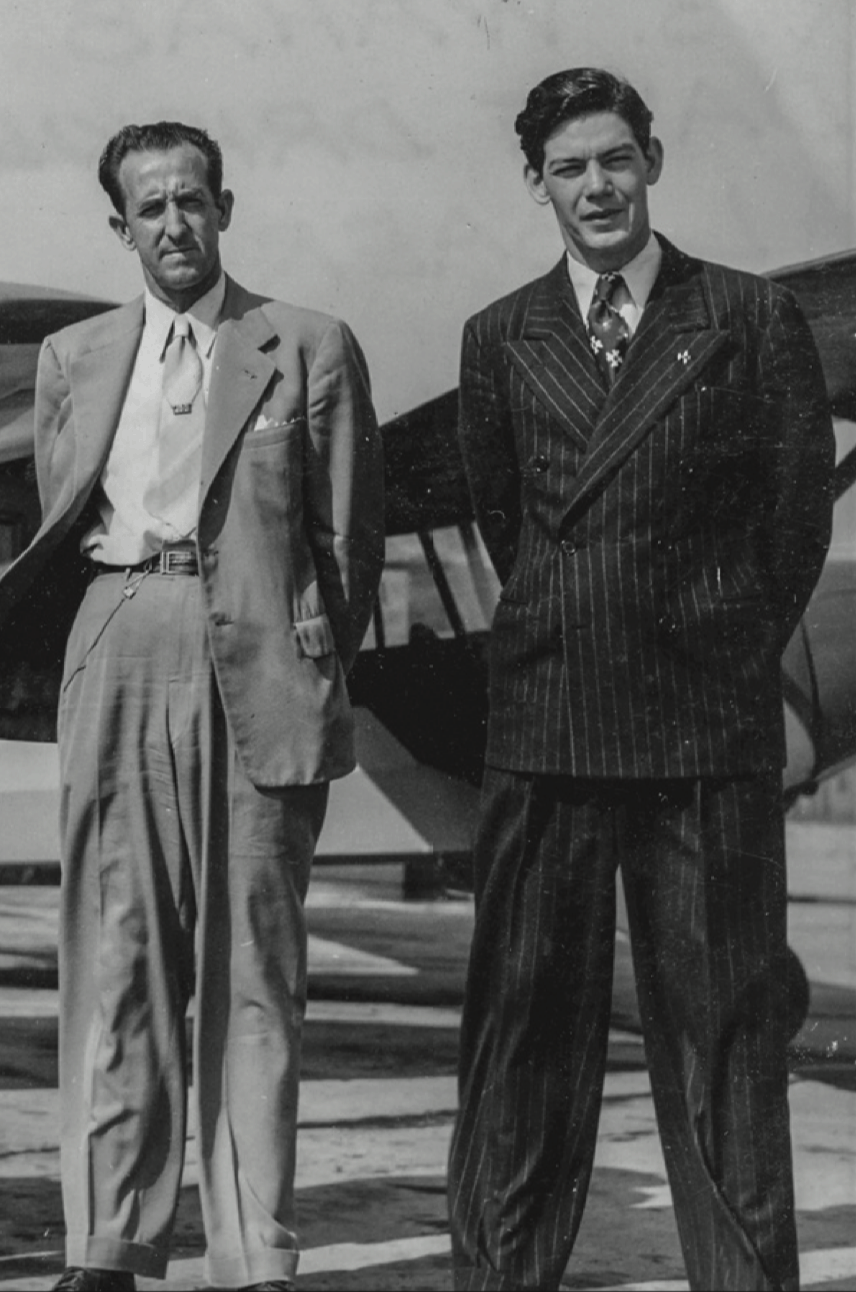
On September 15, the two men flew to Manteo and Bayer helped fly the other plane back to Pennsylvania. 83Sept 15 1946 LETTER by AL BAYER They checked local airports as part of Dave’s charter service and did some landings on a beach at Oracoke Island. 84LETTER by AL BAYER, SEPT 22 1946 During this trip, Al wrote his “first real letter” to his fiancé, Rita Cusack, back in Schenectady.
Video of Dave Driskill flying the XR-8A
Bayer returned to Schenectady and logged a final 3.5 hours in the XR-3 for GE. 85Bayer Logbook As documented in his logbook, at this point Bayer had flown 48.91 hours in an autogyro. According to his logbooks, Bayer had as yet flown no hours as pilot of a helicopter. However, in his summary of hours submitted October 15, 1946 to Kellett Aircraft he wrote that he had flown 200 hours in an autogyro and piloted a helicopter for 20 hours. 86Kellett Memos and Correspondence. Resubmitted with 30 hours additional helicopter time in 1947
THE LAST FLETTNER
Two German Flettner, Fl 282, helicopters were surrendered to American Forces in May 1945: Fl 282 V12 – FE-4614, Fl 282 V23 – FE-4613. Flettner 4613 seems to have initially been kept at Sugar-Bob Airport near Pittsburgh. 87LETTER, AL TO RITA, March 17, 1947 Presumably this was done to seclude the machines near repair facilities at Pittsburgh Army Air Base. 88https://en.wikipedia.org/wiki/Pittsburgh_IAP_Air_Reserve_Station Wilson’s observation about the Flettner design requires some observation on one of the ongoing and major mysteries in helicopter development history. 89FE-4613 Flettner Fi.282V-23 Kolibri‘C1+TW’ Luftwaffe. (Werk Nr. 280023)Geschwaderkennung CI+TW. Transportstaffel 40 (TS/40) – the Luftwaffe’s only operational helicopter squadron … Continue reading Only when the American military had a captured Flettner to test and ultimately fly did Americans– Bayer, Wilson and others–personally see its details. Still, Americans were aware of the Flettner syncropter in general as early as 1938 and this may well have, in general, influenced the Kellett design. Kellett’s efforts was almost certainly inspired by the German design as seen before the war. Per Steven Coates: One of Flettner’s aerodynamicists, Dr, Gerhard Sissingh wrote in 1981 that Richard Prewitt (then of Kellett) visited Flettner pre-war and saw a barely covered model of a Fl 265 which no doubt strongly influenced thinking.
About Nov. 12, Bayer arrived back in Lansdale 90POSTCARD NOV. 12 1946 and was formally hired by Kellett Aircraft. 91Postcards from Al to Rita, Sept. 1946. Also letter, Bayer to Tozer, March 18, 1952 Tests of the XR-10 seem to have been scheduled for January so he had some free time. 92LETTER by AL BAYER, DEC 9 1946 p.3 He went out to look at a captured German helicopter. Col. Wilson stated that, unlike the XR-8A, the Flettner did not suffer blade interference, the problem that plagued the Kellett designs. (Though this does not seem to have been true, given how one of the captured Flettners wrecked.) As evident in Bayer’s snapshot, the Flettner 282 that Bayer examined still retained German markings. 93Bensen Memo, Oct. 22, 1945 Apparently, they asked him to fly it and he refused. Bayer wrote to Rita that one of the Flettner’s had crashed, killing two pilots.
…we are going out to a field near here where there are two German Fletner Helicopters that are being assembled for the Army. We are supposed to inspect them. The army may want me to test them after they are ready to fly, some time after the first of the year. That will be a rough job. Two A.A.F. pilots got killed at Wright Field trying to fly one. (They must either think I’m crazy or that I’m good, but I’ll try it if they want me to. That is, before I get any dependants.) 94LETTER by AL BAYER, DEC 9 1946 p.3
This seems an exaggeration for her sake. Apparently, one Flettner had wrecked but the pilot was not seriously injured. Steven Coates wrote: Helicopters of the Third Reich -Luftwaffe Classic 10 Hardcover – April 17, 2003. It seems the Fl 282 V12 was flown somewhat unsuccessfully at Freeman Field by Capt. H Ray White. He recalled: “The helicopter had been uncrated. They needed someone to run it up. There was no one with any experience available, so I agreed. My only flight in the Fl 282 was over before I knew it! I’m still not sure what happened. I believe the blades made contact with one another, the helicopter toppled onto its side and was a virtual write off. My only injury was a scratched thumb!” It is strongly suspected that the rotor governor linkage was connected in the reverse direction causing its malfunction. Unfortunately, it hasn’t been possible to determine the exact date of this accident or indeed unearth any further detail.
The wrecking of one Flettner lead to Prewitt Aircraft Company of Wallingford receiving a contract by Air Materiel Command to evaluate the FL282 such that it cannibalized both Fl 282s to produce a composite machine for testing. Prewitt had of course previously worked for Kellett and indeed Kellett also expressed an interest in securing this contract. Dave Driskill undertook these flight tests, presumably under contract and of the helicopters he had flown, he considered it “the simplest and easiest to fly“. The completed report was released in September 1948.)) Bayer seems to have tagged along to fly the Flettner once.
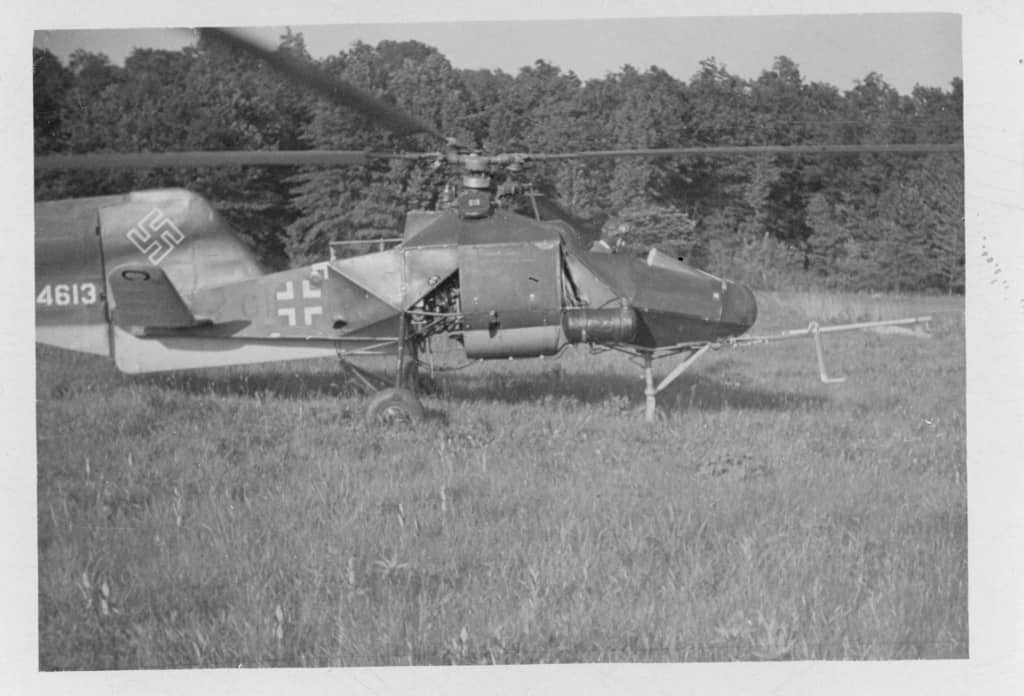
When, during WW2, with the XR-8A, Kellett built a syncropter, with two sets of intermeshing blades that mimicked the Flettner–and that ultimately suffered similar issues with colliding blades. It seems to have been designed to meet the military’s desire for a large cargo, troop and rescue craft. An inherent problem however, would be the weight and complexity of the transmission. The Germans used pulse jets on their rotor tips and this greatly lightened the design–hence American interest in pulse jets after the war. The Flettner was small and highly maneuverable, as evident in both Nazi and American videos of the craft. After WWII, as Bayer and others saw the Flettner’s small maneuverable design, it may well have influenced their vision of a small, maneuverable helicopter. However, the syncropter as viewed by Kellett and military during the immediately after the war–the XR-8A and XR-10– was massive and heavy.
Video of American military tests of the Flettner 282.
In June 1940, Kellett had begun work on a syncropter design. Kellett seems to have heard of Flettner’s 1938 syncropter, the FL-265. In November of 1941, Kellett submitted the idea of a syncropter to the military and in September 1943 signed a contract to build two XR-8A airframes. 96Kellett’s Eggbeaters: The XR-8 and XR-10 Roger Douglas Connor, Curator, Vertical Flight Collection Smithsonian Institution National Air and Space Museum Washington, D.C., Presented at the 64th … Continue reading The XR-8A ultimately suffered unfixable problems with stability and rotor-blade collision.
Constructed to meet an April 1944 Air Force request for proposals to build a “Utility Cargo Helicopter”, Kellett completed initial construction of the XR-10 in December of 1946. 97XH-10 Helicopter; Development of Kellett Model, C.W.Kuehne, USAF, Air Material Command. AF TECHNICAL REPORT # 6163, filed December 13, 1952, p iii The XR-10 helicopter featured two Continental engines mounted on side nacelles. 98After the war, Continental introduced its own R-975 version for aircraft, the R9-A. Though it was basically similar to other R-975 engines, and its compression ratio and supercharger gear ratio were … Continue reading Like the XR-8A, the XR-10’s engines powered two counter-rotating, intersecting rotor blades, each at an angle.
Bayer was hired to act as co-pilot beside Dave Driskill as the two men conducted ground and flight tests of the XR-10 beginning in December of that year. In 1947, Driskill and Bayer began testing the XR-10, tied to the ground with the engines gradually brought up to speed. Though they were born 26 years apart, day after day the two men sat side by side. Driskill seems to have given instruction to Bayer using a method common at the time–don’t say much, just watch and let your student sweat bullets. 99I had a flight instructor who flew during WW2. I am familiar with this method. From Driskill, Bayer learned intense attention and perseverance..There had been some discussion of a less flexible rotor design with the XR-8A was not adopted in the XR-10–creating a significant risk of rotor blade collision particularly when autorotating yet reducing the craft’s weight. 100THE XR-10 specs. R-10, H-10 1947 = USN. 10p R-8; two 425hp P&W R-985; rotor: 71’0″ length: 29’2″ v: 105/x/0 range: 350. Intermeshing rotors. POP: 2 as XR-10 [45-22793, … Continue reading
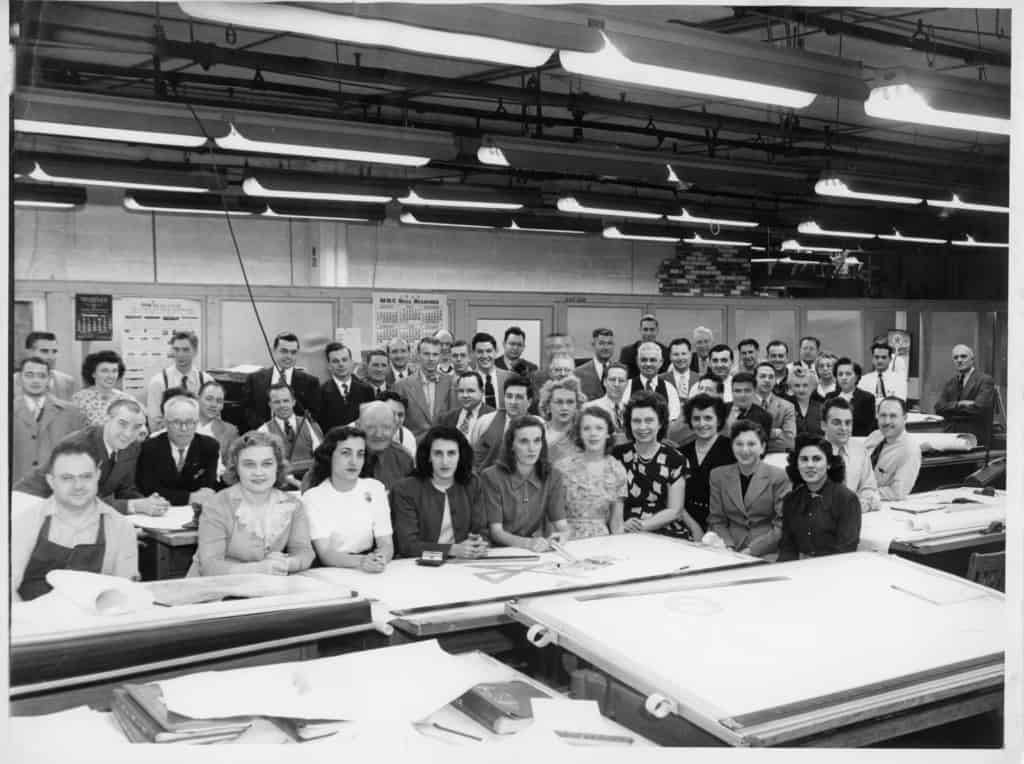
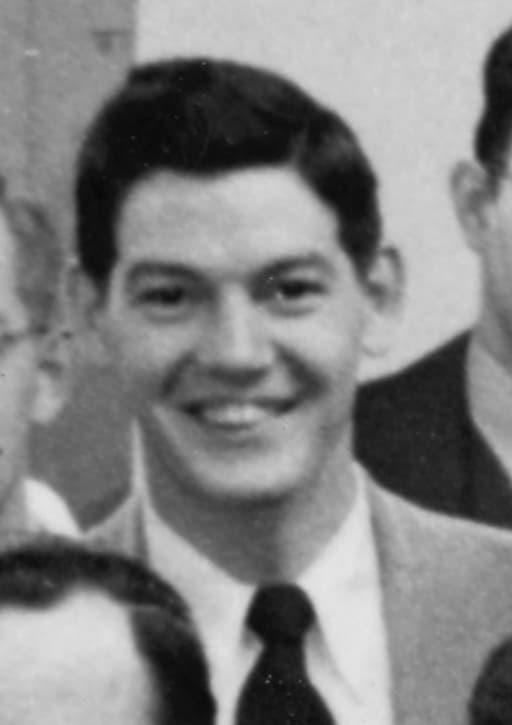
I SENT DAVE TO THE FARMHOUSE – the mentor and his protege.
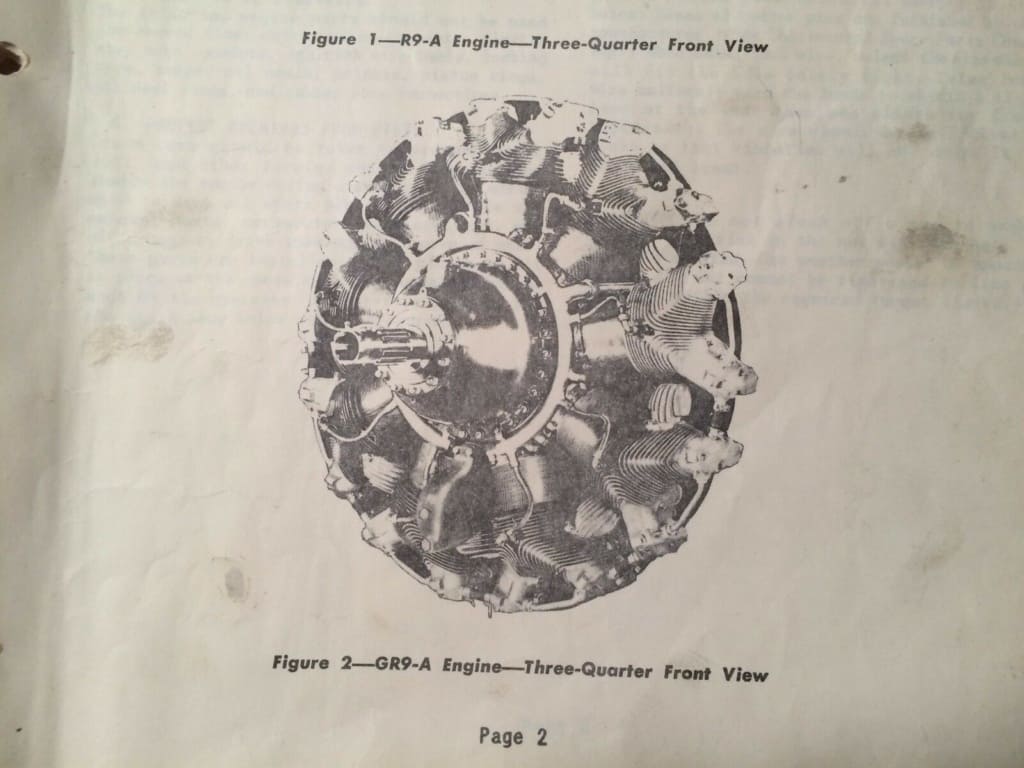
As Driskill and Bayer prepared for and then began ground tests of the XR-10, an event illustrates the dynamics of their relationship. In this, though 26 years younger, Bayer would assert control. When pressed, he would act quickly and, with those who trusted him, take charge. Bayer wrote an account of the event in a letter to Rita.
Driving back to the plant over a lonely road I noticed a car that had gone off the road, hit a tree and knocked it over, went through a big heavy fence and turned over. I said to Dave, “That wasn’t there when I passed here on my way to pick you up.” I stopped the car and ran over. I looked inside and there was an old man pinned in the wreckage (and I do mean wreckage.) It was really a mess. He was soaked with blood, all cut up and had the windshield in his face and the steering wheel in his chest. I sent dave to the farmhouse nearby to call an ambulance and the state police. I didn’t want to move the man because I thought he might have a broken back or something. He was pretty well pinned in anyway and was unconscious. I reached in through the broken windshield and felt his pulse. He was still alive. Then I started pulling glass out of his face so he wouldn’t rub it into his eyes. He regained consciousness and started trying to move. I told him to be still so he wouldn’t hurt himself any more. Then I asked him if he could move his feet and hands. He could so I figured his back wasn’t broken so I straightened him up a little and reached in and wiped the blood off his face as best I could. He was hard to get to. He was still stunned and pinned in so I talked to him and told him to keep still and we would have him out as soon as the ambulance came. Then Dave came back, and shortly after that the ambulance arrived. We then helped the doctor and nurses get him out of the car and on the stretcher into the ambulance. Then we drove to the plant and resumed our work. 102LETTER AL TO RITA, Dec. 15, 1946.
LACK OF FLYWHEEL EFFECT – test thrills
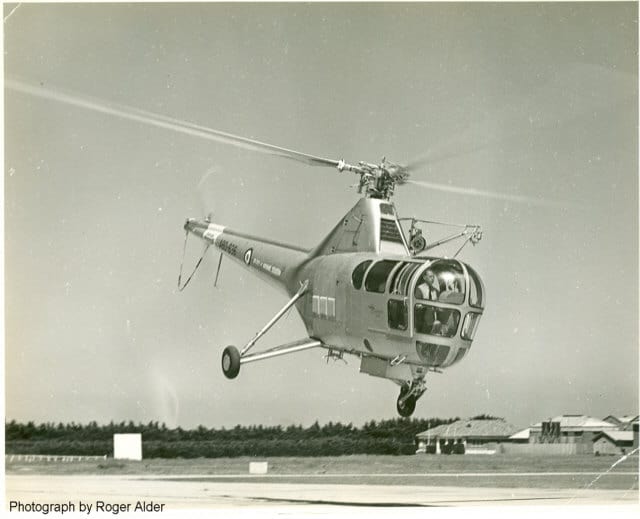
During January of ’47, while driving back to Lansdale from Christmas in Schenectady, Bayer stopped to pilot the Sikorsky S-51 and the Brantley–the helicopters that had attended the GE Air Research Demonstration the previous spring. 103Bayer Logbook Jan 1 and Jan 2, 1947 These would be his first flights in a helicopter. Nothing in his logbooks suggests he had as yet had any formal instruction in helicopters. It can be inferred that having been checked out in the autogyro he now considered himself qualified to fly a helicopter. However, Driskill would soon give him formal instruction in piloting the XR-8A and sign off on that instruction in Bayer’s logbook.
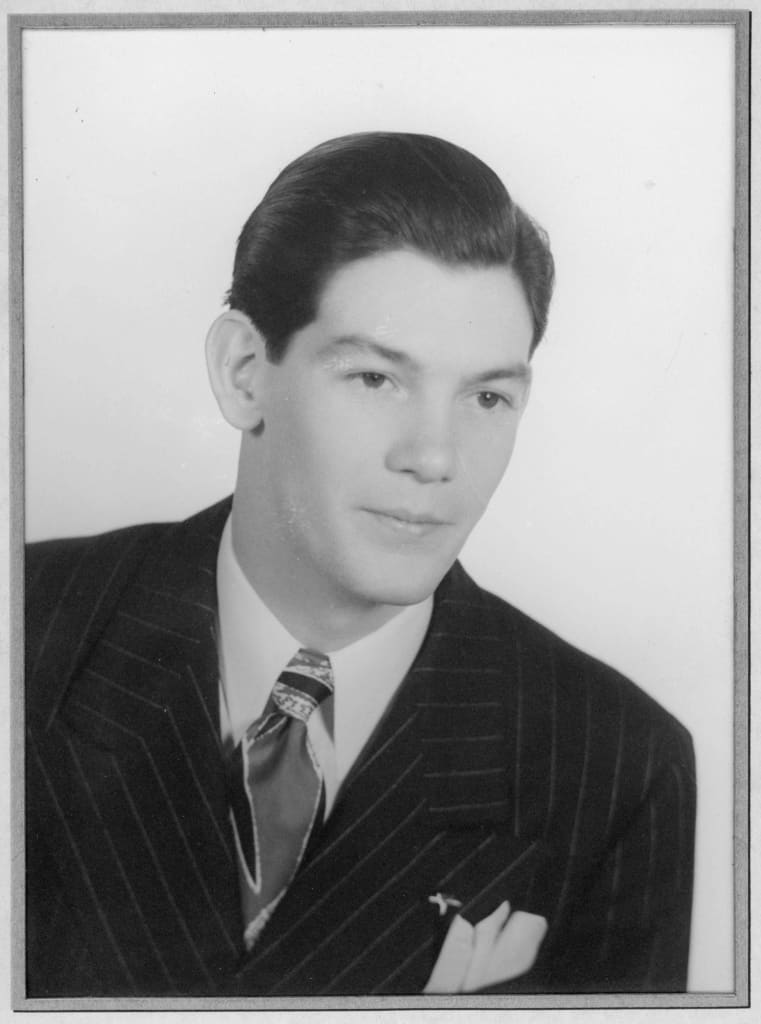
Back at Kellett, ground testing of the XR-10 began. The soon engines and transmission developed problems that would require weeks to repair. 104LETTER JAN 7 1946 Bayer began to write his fiancé, Rita, almost daily, professing his love and reporting on progress.
“You asked about the transmission on the XR-10 being fixed. Yes, it’s all fixed. I guess I didn’t tell you what happened to the engines, Probably because I didn’t want you to worry about something that isn’t worth worrying about. Just after I got back, we ran the engines on the XR-10 again. First we were running the left one. All of a sudden we heard a very shrill screeching in the engine and an awful clatter. Dave and I pushed every button we could think of to shut it off quick. Next, we ran the right one. It ran for a while and suddenly something similar happened. Upon inspection, we found that the main accessory section gear and all the gears in its gear train on both engines flew apart. This was caused by torsional vibration in the crankshaft of the engine due to a lack of flywheel effect, and a few other things you wouldn’t understand. (It’s nothing to worry about just so long as it didn’t happen in the air.) To remedy this situation it is necessary to add additional flywheel to the engine which calls for a re-design of the transmission house etc.etc.etc. (You wouldn’t understand the rest, I don’t think) Anyway, the engines are out of the ship and we have two new engines to put in after the engineers figure out how to put bigger flywheels , etc.etc. It will probably take 2-3 weeks before we run the new engines. Dave has gone back to North Carolina, until we call him.” 105LETTER BY AL, Jan. 7 1946 The problem is referred to in XH-10 Helicopter- Development of Kellett Model, C.W.Kuehne, USAF, Air Material Command. AF TECHNICAL REPORT # 6163, filed December 13, 1952, p 2 Al concluded this letter with a page of song-titles that described his love. The Army gave permission for modification of the control systems. 106LETTER BY AL, Jan. 8, 1947
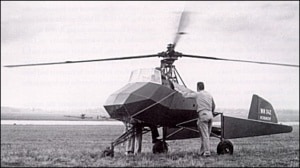
As described by Lambermont in 1958: The rotors were driven by two engines mounted on nacelles on either side of the fuselage so as to leave the cargo space unobstructed, and cooling was by the flow of air induced through the nacelles. Rotor head linkage allowed the blades to pivot in the horizontal and vertical planes. In the horizontal plane, blade movements were damped by vibration dampers; the position of the blades was a function of the centrifugal force and the loading conditions, but there were, of course, stops to limit these movements. The rotors were synchronized through a cross drive between the upper transmissions. 107P.Lambermont, “Helicopters and Autogyros of the World”, 1958. Quoted: https://sites.google.com/site/stingrayslistofrotorcraft/kellett-xr-10
As the military considered the weight savings possible if a traditional engine could be eliminated from a helicopter and looked at captured German helicopters with their ram jets mounted at the rotor tips. Such a craft might be very efficient and, without the weight of heavy engines, lift great weight. The military had another captured German helicopter with cold-cycle powered rotor blades to study–the Doblhoff helicopter/autogyro with a rear propeller plus jets mounted in the blades for a jump start. During October of ’45, Major Wilson had asked Bensen to look at a DoblhoffWnf 342 V4 . 108GE Memos and Correspondence, Bensen, Memo. Oct. 22, 1945 The AAF shipped one by a Fairchild C-82 to Schenectady, New York on December 6, 1946. While the XR-10 repairs proceeded, Bayer returned to Schenectady to write a report on the Doblhoff. 109LETTER JAN 6 1946
Wilson noticed the high struts used on a lumber truck and this became the source for a craft built on four long landing gear that would envelope a cargo container. 110Stefano remarks, cited Porter p34 The call for bids specified a combination tip propulsion system like that on the Doblhoff. 111Porter p35.
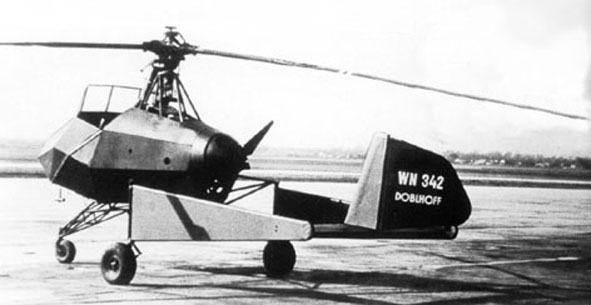
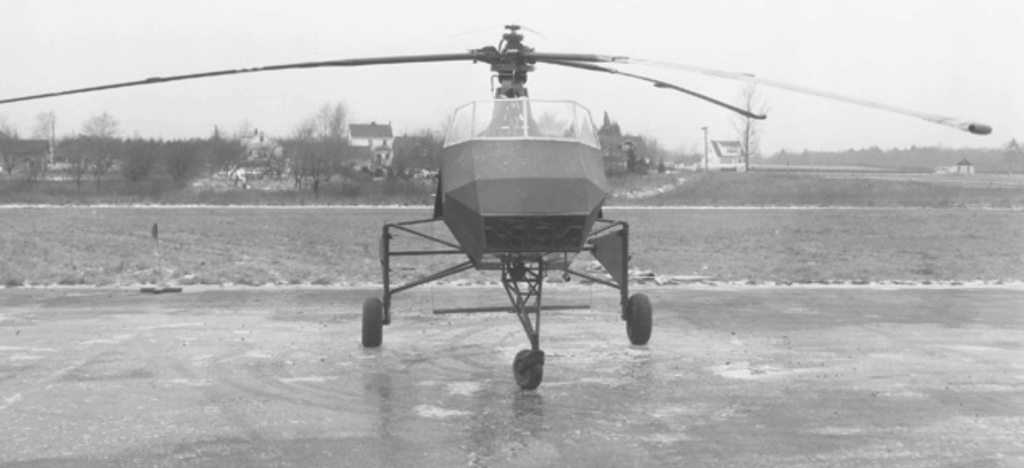
At GE, Bensen continued to study the Doblhoff. He severely injured his spine in a crash of the Doblhoff . Bensen wrote a fuller report on the German machine during May of 1947.
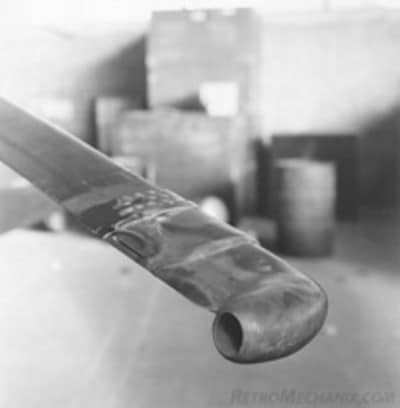
Copies of Bayer’s report on the German Doblhoff helicopter went to Kellett Aircraft. And he sent a copy to Rita. In the report, he commented that it seemed, built more as a test rig than a flying machine. In January, though Kellett was already committed to the XR-10, the military asked Kellett Aircraft to build a “Flying Crane” with ramjets. They had already made hollow blades for Bensen’ Heliplane project–the fuel piped through them to the tips.
Repairs on the XR-10 continued into February. Bayer spent this time doing differential and integral calculus, preliminary performance calculations for the XR-17, jet helicopter–the Kellett “Flying Crane”. 113LETTER, AL TO RITA, Feb. 5, 1947 The giant cargo helicopter would be powered by air bled off from the compressor section of modified engines and ducted through hollow rotors to jets at their tips. The design eliminated complex transmissions and reduced weight. Also, as there was no transmission based torque tending to turn the craft in the opposite direction from the blades, the design eliminated the need for a tail rotor.
That February, Bayer’s doctor told him what other doctors had already said –that he had never had lymphosarcoma, that there had been a misdiagnosis. 114LETTER, AL TO RITA, Feb. 5, 1947 Bayer was not wholly reassured, he continued to worry about the diagnosis in letters to Rita.
“HOLLYWOOD” – style, flair, glamour
Bayer held Howard Hughes as his hero and, over the years, he often wore a suit and tie or, at least, a dress shirt, while test piloting. This might strike some as affectation. However, it proved central to his vision of himself and of the helicopter–adding glamour, dashing and romance to the world of the helicopter. As described more below, Bayer separated his sense of himself from Howard Hughes during the early 50s, yet he never ceased to embrace glamor and style as an intrinsic to himself and his work.
In Bayer’s story and the story of the mobile tactical helicopter, “cool” means not simply a look. Cool implies an approach to life–a daredevil competence. Cool means a dashing look that mirrored a dashing function. Ultimately, in the world of helicopters, cool meant a craft flitting about the sky, flown by a pilot who had mastered the three dimensions. This was not the XR-10. The XR-10 was not cool. Nor was the Flying Crane. Still in 1947 and ’48, these were Bayer’s assignment. His experience in these ponderous crafts allowed him to partner with, talk to and understand engineers whose creativity would ultimately define the technical elements of cool in a helicopter. They shared a desire for a revolution in the flying machine. Throughout his life, with his dress and good looks, Bayer charmed some people. Others were repelled. During the late 1940s, Emma and Clarence, Rita’s parents, didn’t like Bayer. During mid January, Rita wrote Bayer and told him:
Tonight after supper my mother and I got into a long conversation about you, about me about us. It all started when I told her as long as she was going downtown tomorrow she could get the picture. She said that was just like you, always saying you were going to do something and not doing it. We went on from there. It seems my father was a little irritated the other night when you said you’d better go home because you had to get up early. He said your first thought was of you–not me. I knew that isn’t what you meant but he didn’t. Then my mother said something about you bragging, said you were probably doing it a lot down there. (She said its very noticeable when you’re dancing.) Then we got talking about after we get married. She said you were egotistical and that love won’t make you change. She told me about when she and my father were first married. This is something she has never said before and its the basis for all her remarks. My father was inclined that way she said and it was pretty tough. If it hadn’t been for me, she doesn’t think their marriage would have lasted. My father’s first thought was for himself. He used to give my mother $15 a week to run the house. She is afraid you are like that only more so. She asked me how much money you had saved. I told her and I’m afraid she was shocked. She figured up how much you must have made and said that if you are like that man–easy come easy go–you won’t change. She doesn’t think you’ll save enough money for us to get married and then she said maybe you will but after we’re married she bet me we would never own a house. She said you have big ideas, your smart, your even brilliant but lazy and you’ll turn out just like my cousin’s husband Bill. That is bad. You do things you like to do and that is all. Then she brought up how your mother had to work so you could go to college. She said if you had to stay or go to big, expensive hotels you shouldn’t have to tell people but just take it for granted that they knew you’d. But going to places like that isn’t how a man who intends to get married should spend his money. Oh, darling I don’t know maybe I shouldn’t be telling you all his. But I feel I should. A few more things were said too, but that covers things pretty thoroughly, I guess. I probably should have waited until you come home to tell you. Don’t know. Its gruesome–to have to tell you because I know what you’re really like but a lot of people go by the surface appearance. I love you, Al, very much and I want things to be right for you and for us. But I’m afraid they won’t be until meh mother and father changes their minds a little. Not that they’ll try to stop us or anything but it will makes thins so much better and I don’t like to see them so worried about our future. 115LETTER RITA TO AL, Jan 17 1947
Hurt by this, Bayer wrote Rita an unhappy, sarcastic, almost angry letter, complaining that her parents were turning her against him with their claims that he was a lazy “braggard”. This would not be the last time Bayer’s dress and brash self-assurance rubbed people the wrong way. And, it would not be the last time he wrote about pushing forward with positivity despite everything trying to hold him back.
You say you don’t like a show off and a braggard but I’m not too much yet. Instead of relaxing and drawing my pension and conceding to the fact that I was a poor, disabled veteran and drawing unemployment insurance too, I went with the G.E. and flew as a test pilot. Being lazy, I took this test pilot job because it was simple, didn’t require any ability or work or wear and tear on nerves. As some people wish to think, I just sat back and drew my pay, went up joy riding in a autogiro once in a while. No! It wasn’t work or dangerous or anything else, just plain being lazy. While I was with G.E. I saw that they weren’t going for (it) in that work so (being lazy as I am) I looked around and made a few connections and secured a good job at Kellett aircraft. And was saying; next week I’ll be 22. I have two years of college behind me, a commission in the army behind me, two years of test flying for G.E. behind me, a good up to date car, I’ve done a lot of traveling and seen a lot and never ran up against anything like this. It’s just a few people looking for the worst. 116LETTER, AL TO RITA, Jan 19, 1947
Friends took a kinder view. His co-workers at Kellett Aircraft kidded him about his sense of style and gave him a nickname, “Hollywood”, that would be prophetic. Bayer came from family culture grounded in a mixture of show-business and technical savvy. Both came to him effortlessly and, most of the time, he had fun with it. His preservation of pictures and photos owes much to his interest in the look of things–an interest that exceeded his interest in the technical.
Today, I spent the day calculating the basic performance of the XR-17 . (Jet helicopter–the Flying Crane.) I’m getting to be a regular swivel chair pilot now. I’d make a pretty good engineer, but my heart wouldn’t be in it. I’ve got a new name at the plant now. I don’t know why. They called me “Hollywood.” One of the army inspectors said it’s because I wear a different suit or combination every day and because I wear sport shirts buttoned at the top with no tie and argyle socks and plaid ties, sports coats, etc. I don’t get it, myself. Wait till they see that new sport coat when I get it. 117LETTER, AL TO RITA, Jan. 30, 1947
Those who focused on Bayer’s style alone–and there were many–could do so because they could not match his planning, persistence and intelligence.
DANGER & GETTING BURNED – speaking up and taking over
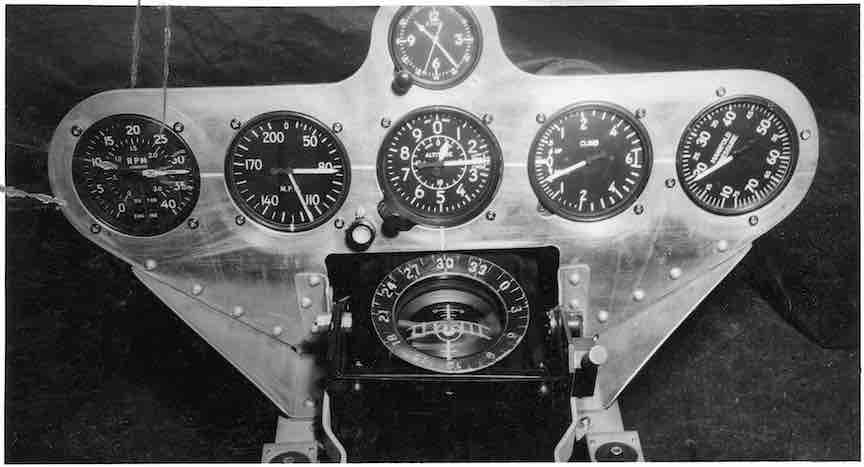
Driskill and Bayer buckled themselves down, side by side, inside the XR-10 where, well before its first flight, they knew that their lives depended on skill and teamwork.
Apparently to respond to Rita’s parents’ criticism, Bayer became bolder in describing to Rita his work and its risks. While he might at the beginning have exaggerated the risks, they became increasingly real. On the one hand, these accounts began as boastful and self-conscious–he obviously felt he needed to prove himself in the face of the criticism his fiancé was hearing from her parents. On the other hand, these descriptions soon revealed a dynamic that would define much his life—faced with danger and a dysfunctional company structure, he began to take charge. Sometimes, efforts to impress Rita almost seemed outweighed by a need to vent. Bayer helped rev up the new engines on February 15.
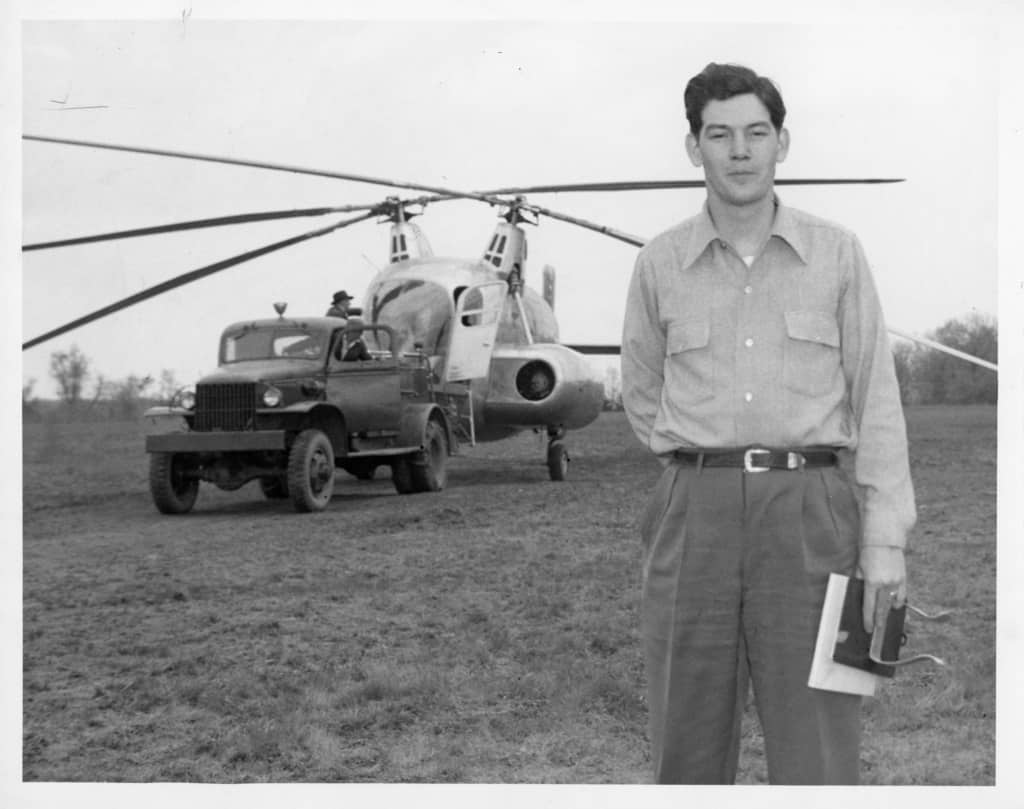
Bayer and the XR-10 at Kellett Aircraft. This shot shows him in more casual clothes, something that rarely happened in photos. He holds a clipboard that seems designed to clip to an armrest.
Had lunch at noon in the cafeteria with the continental engineers. This afternoon was a big event–I ran the left engine on the XR-10. From all appearances things are O.K. A few minor adjustments are needed but no major problems, yet. Will know for sure after the torsion meter pictures are developed. it was a very ticklish situation, running the engine without any load with such a sensitive throttle. One false twist of my wrist of 1/2 of an inch would have cost us five or ten thousand dollars. I was congratulated on doing a nice job of starting and turning that new experimental engine. I do and probably will receive lots of pats on the back and handshakes in connection with being a test pilot, but they don’t mean anything to me–for I know if anything happened to me while testing the ship, for a few days they’ll all say, “Isn’t that too bad, he was a good fellow–” etc, and then I’d be forgotten entirely. Oh, well, that’s the way it goes. 118LETTER, AL TO RITA, Feb. 25, 1947
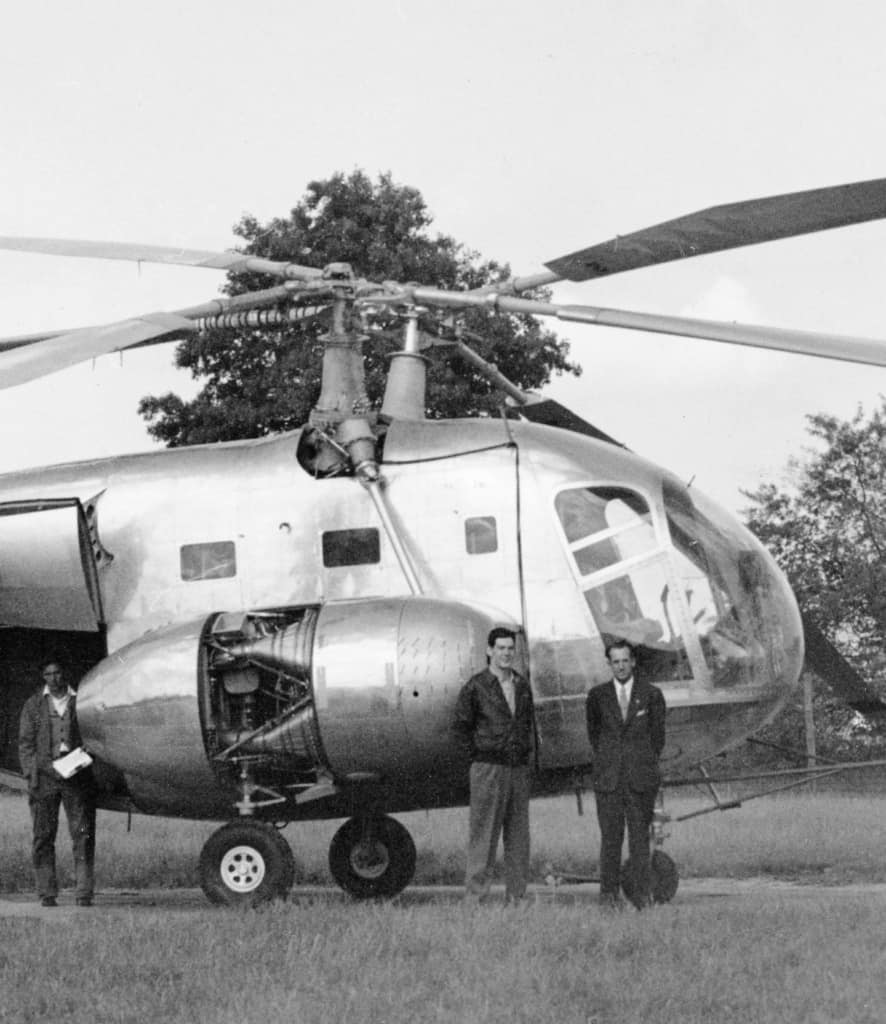
Two days later, Bayer’s name began to appear on the CC—carbon copy—list for Flight Test Reports. He was already receiving copies. Now, probably at his insistence, he was formally listed. In the wake of his frustration with the machinery one can imagine him saying, “I need to be on the list. I need to be sure that I get copies. I need to be named as getting copies.” He wanted copies because he intended to weigh in on mechanical issues. He felt he needed to be involved with and talk to engineering. This seems to have contrasted the older man, Dave Driskill. Driskill’s name never appeared on the CC list for Flight Test Reports. Driskill was taking a step back.
Rita’s father, Clarence, wanted to delay the marriage from June to September of ’47. Bayer remained committed to their initial timeline for the ceremony. In February, he wrote Rita that, before marriage, the first flight of the XR-10 had to be accomplished. His letter indicated that Driskill was planning retirement to Manteo and that he would become Kellett Aircraft’s Chief Pilot. 119He would later write that he flew 175 hours in the XR-10. Log March 1953, upon entering McCulloch. With his marriage coming in June, Bayer was anxious to get the XR-10 into the air.
There are a couple of reasons why the first “10” has to be flown! The first ship is the dangerous one—-the rest of the “10’s” won’t be bad if the first one is O.K. If anything should happen to me testing it I would prefer that you were still single and working and could just continue your life as though I never existed and be happy. I’m not being morbid, just practical. If the “10” flies well, we will get a contract for quite a few more, I’ll be Chief Test Pilot, I’ll stay with Kellet, we’ll be settled and will know where we’re going to be–Then I can be sure I’m offering you real security. Understand? Anyway–It looks as though the “10” will be ready to fly shortly. I’m supposed to run the other engine Friday. 120LETTER AL TO RITA FEB 16, 1947
Shake tests on the XR-10 went well, at least without blades.
Well, we ran the shake tests without blades today. We’re really getting somewhere now. They’re anxious to get it in the air, now. We had two Colonels and a major from Wright Field with us yesterday and today. Looks very much like we’ll be busy from now on until he XR-10 is tested. 121LETTER AL TO RITA MARCH 3, 1947
During March, as testing on the XR-10 became more intense, Bayer commented that everything in his life depended on getting the XR-10 into the air. He had progressed to revving up the Flettner. which seems to have been nearby at this date.
The wind was blowing pretty strong but we decided to “rev up”, anyway. We started the left engine, engaged the reduction clutch–a few things went wrong–we shut it off. We remedied the trouble and started again–something else wanting–we fixed that. We started the engine a third time, engaged the friction clutch, brought the rotors into synchronism with the engine, engaged the jog clutch, and reved the rotors at 1200 engine r.p.m.–How can I talk with your lips next to mine–cut it out!–Oh!-OK!–I’ll dance just this one-but only because it’s the Anniversary Song. –Now are you happy? Sit down while I finish telling you about today.–Hoomph!! have you gained some weight lately, honey? Now to go on–We reved up–a few minor things happened–you wouldn’t understand them–but in general things looked good. Tomorrow, I’ve got to be at Bob’s airport at sunrise for some more rev ups on the Flettner. I’ll get up early and get some breakfast at the diner. I’ve got to get a plane at the Lansdale airport and fly myself down there. We’re also going to “rev” the XR-10 up again tomorrow morning at 10 o’clock.–Quit looking at me like that–how do you expect me to concentrate on what I’m saying….Do you want to go to the movies tonight? Hmmmmm–on second thought, let’s not.-
You know, honey-it’s days like today that make me like my work. There’s something about sitting in that ship, running the engines, and turning the rotors over, knowing that every little turn of my wrist or movement of my hand means the difference between success and failure fo five years of work and 3 million dollars. It will be successful, honey, if I can help it. I’ve just got to keep control of that ship. It can be a servant if handled correctly or a murderous brute if it’s given it’s own way. Don’t worry, honey–Dave and I can handle it. 122LETTER, AL TO RITA, March 17, 1947
The XR-10 used complex, heavy transmissions that allowed it to fly even if one of the two Continental engines failed. This complexity plus the inherent qualities of the counter-rotating, intersecting rotor blades lent to vibration and a constant concern for lubrication. The aircraft’s vibration then increased when shake tests were done with the rotor blades attached. 123http://aviastar.org/helicopters_eng/kellett_xr-10.php
Today we put half of the blades on–ran into a little trouble with the blade dampers. Tomorrow the rest of the blades go on, the dampers go on and we will run both engines once more. 124Letter Al To Rita March 11 1947
The blades were all on, the dampers on and the engines ready to run on the XR-10. We ran the engines and then quit work for today. 125LETTER AL TO RITA, MARCH 12, 1947
Problems with vibration continued. Probably based on his experience with the XO-60 autogyro, Bayer was sensitive to ground resonance. When ground resonance occurred during tests of the XR-10, he lost his temper, upset at the engineers. He wrote to Rita that this was unlike him. He seems to have begun to realize that not only was he not going to die from cancer but he might yet die from being a test pilot. Remaining alive as a test pilot depended on making himself heard. The enthusiastic boy aviator became a demanding test his fingers in every piece of the pie–a pattern that would persist for many years, in many companies. He probably created the title that soon appeared on test reports– Engineering Test Pilot.
Bayer’s obsessive concern for the engineering and technical capabilities of the XR-10 dose not seem to have been mirrored by the interests of the Chief Pilot, Dave Driskill. Driskill was 26 years older, planning his retirement from test piloting and of an older generation–one in which the test pilot accepted the craft as presented by the engineers and then hung on for dear life as they measured test results. Bayer insisted on being part of the test results, on writing reports, on talking to the engineers. This difference between the two men explains what happened to Driskill, to Bayer and to the XR-10. Despite his efforts, Bayer was and looked very young. He soon had friends among some but not all of the engineers. Yet, management needed to get this craft to the military and to get paid. History would focus on Driskill, however from spring of 1947, it seems to be Bayer who consistently piloted the XR-10.
Yesterday we “reved” up the “10” again and got into a very serious and dangerous longitudinal oscillation, twice. I thought the blades would hit the ground and the ship would fly apart. One of the reasons I was so tired and grouchy last night (I’m sorry-I shouldn’t take it out on you-that’s the way it usually is-taking it out on the one ya love most) is that I knew what caused the ossilation condition and what the remedy was–but the chief engineer wouldn’t agree with me. I argued until I was blue in the face. I even stayed at the plant until 6 o’clock explain it to him. The nose wheel strut has too large an orifice in the cylinder–It allows the hydraulic fluid to pass through to easily therefore–not enough damping action to prevent longitudinal resonance. Finally the frequency expert joined in the discussion and agreed with me–so the chief engineer was finally convinced. We’re going to change the orifice in the strut as soon as we get an opportunity. I was really getting burned up (which is unusual for me) because I knew I was right and I’m the one who neck is in the ship. Dave knew I was right too and wanted the change made. 126LETTER, AL TO RITA, March 19, 1947
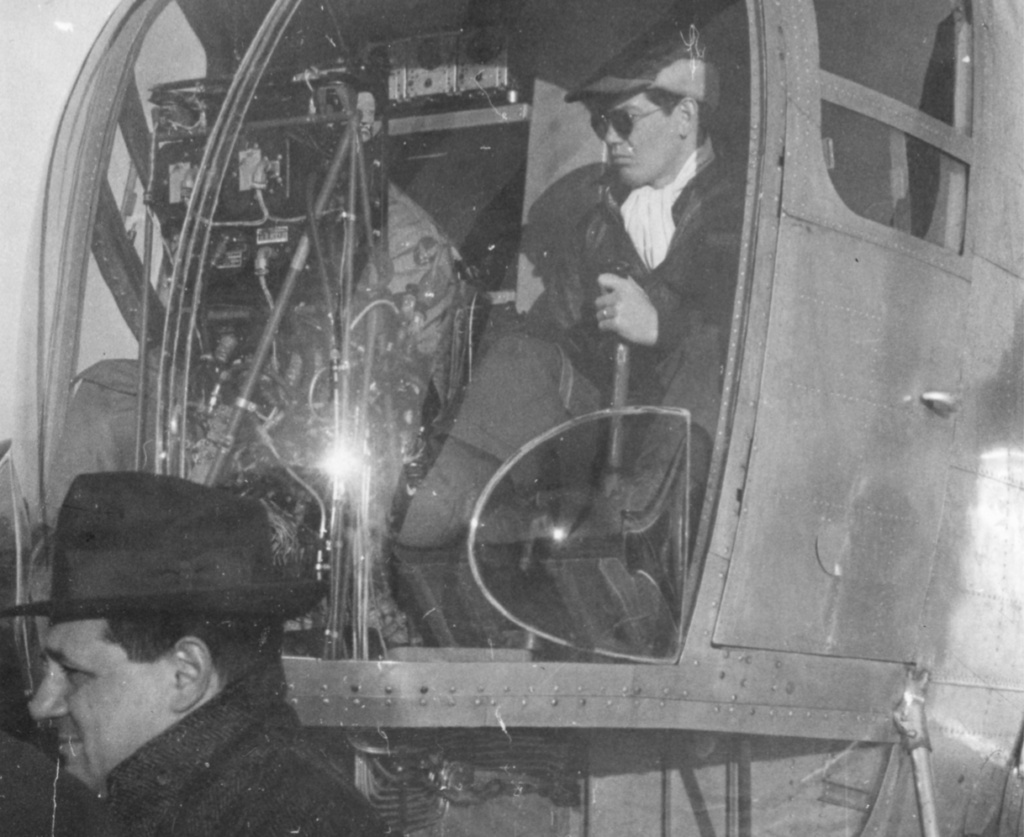
Bayer’s frustration with the enginneers and his need to be heard as a test pilot in 1947 reflected his personality and foreshadowed his entire career. Very quickly, after this, he forged a bond with the engineers–working with them. Though some would focus on his glamour and public relations zest, Bayer also worked internally at Kellett and, later, other companies to find and then bring out the vision, abilities and discoveries of the engineers. That being said, at Kellett he was quite young and, as the ultimate fate the XR-10 suggests, did not fully grasp the implications of the problems he saw and spoke up about.
On March 24, 1947, Bayer first piloted the XR-8A. 128Bayer Logbook He was formally “rated” in it on June 17–his first formal helicopter rating. Driskill wrote a letter stating the Bayer was qualified. At this point Bayer needs helicopter hours–with Driskill stepping back, it would soon be Bayer test flying the XR-10. The XR-8 provided that experience. Bayer seems to have begun regularly flying the XR-8A. He wrote no engineering or testing reports on it and it seems Kellett was no longer testing the craft–Bayer using it simply to accumulate hours. 129Bayer saved everything and in his papers there are no testing reports by him on the XR-8A.
Driskill and Bayer continued to rev up the XR-10 with the blades attached and to run into trouble. Bayer’s letters to Rita shifted from boasting to worry.
What a day today–running both engines–the carburetors are out of adjustment, too much backlash in the throttle linkage, not enough flywheel–and too damn many engineers with too damn many opinions on how to operate them. There’s enough to do in that XR-10 cockpit for five men with 4 hands each. Dave and I almost went crazy today–everything is off and everything is as touchy as an egg balanced on a knife edge. 130LETTER AL TO RITA March 14, 1947
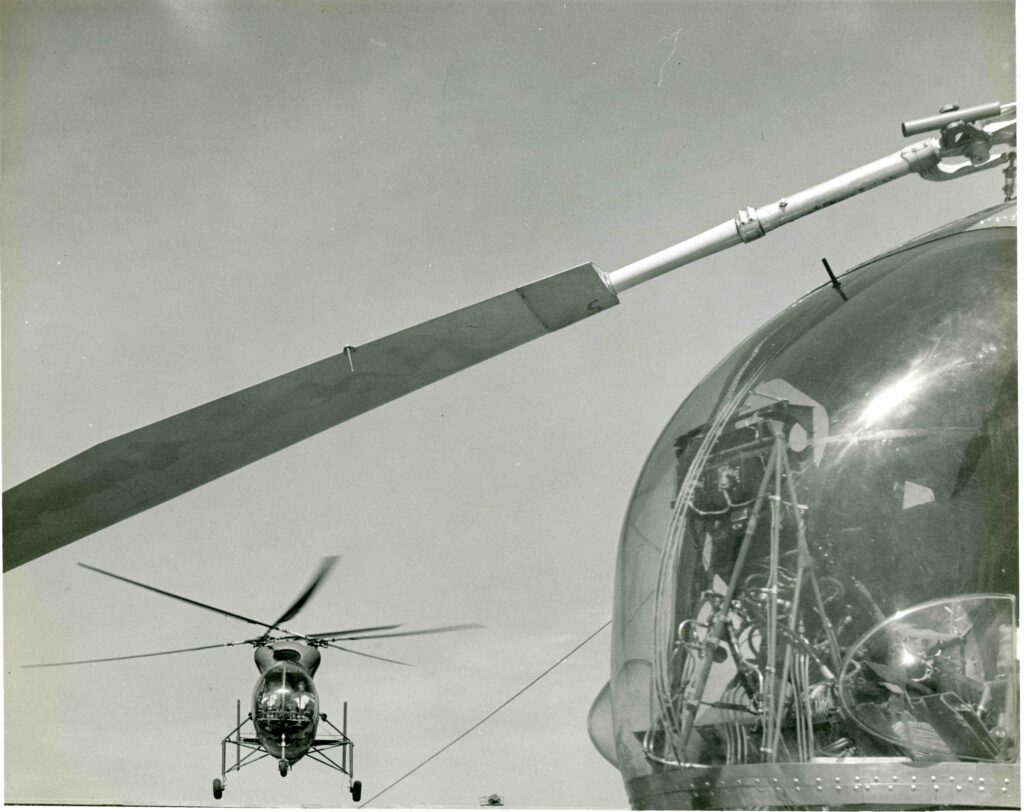
XR-8 in distance. Perhaps the XR-10 up close.
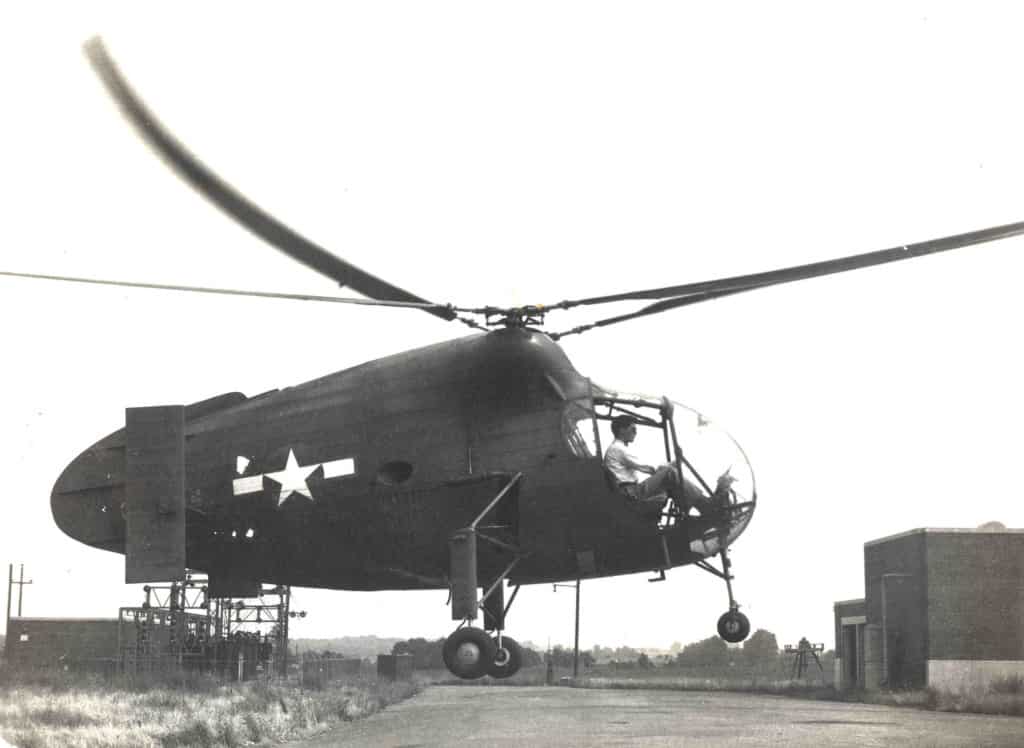
The XR-10 suffered problems with internal balance. At this point and, probably, throughout the machine’s life, this seems to have centered on flywheel weight added to stabilize the transmission. Within a few days, the mechanics were working on the transmission. Bayer believed that his future at Kellett would be more certain by May. 1. Kellett Aircraft was planning a future move, probably with expected expansion. 131LETTER AL TO RITA APRIL 9, 1947. Bayer began conversion to Catholicism. 132LETTER AL TO RITA, April 13, 1947. The nerve wracking tests continued. And the tenor of his letters to Rita grew even more anxious. April 15:
This is Al, completely beat down to a frazzle, Bayer. And I do mean beat. I have been riding that bucking, rolling, rocking, shaking, whining thing call the XR-10, from 8 this morning until 7:30 (dark) this evening. It is 9:00 now and I’m sitting on the edge of my bed in my pajamas robe and slippers, my eyes are burning, my head spinning and my ears still ringing from the engines. Phew, for a nice peaceful, common, sensible, job! It was a very hot, still, day today and we got a lot done. My face feels like it’s burnt to a crisp. We are almost ready to pull it off the ground–soon. See what you’re in for, my working; weekends, evenings, nights, early morning and any other time it’s necessary. Tommorow, I think we may get around to flying the XR-8 between rev-ups on the NR-10. It will be another hectic, rugged, day. Today was a long day in the “10”. Feet on the rudder pedals holding them over, steady. Left hand on the stick–it was shaking and vibrating all over the cockpit, Right hand on the throttles–trying to keep two very sensitive “blankety blank” engines running right and my third and fourth hand operating the mixture controls, carburetor heat, starter, primer, booster pump, ignition switch, coning latches, etc, etc. My eyes glued to the instrument panel and to all the buttons and gauges and also watching the ship shake–the rotor-path–the engines–for signals from outside the ship, the controls. My ears listening to the engines for synchronization and mixture and to the transmissions and rotor head for strange noises and to shouted instructions from all directions outside the ship.. Some fun!!! All day. It really is rough–but I love it and I don’t mind being dead tired after a day like today. 133LETTER, AL TO RITA, April 15, 1947. Coning latches may refer to the “droop stops” designed to prevent blade droop below 120rpm
April 16:
It’s now 11:30 and I’m in bed–after a rough day Baby. You got the opportunity to go find yourself a new man. We almost “had it” today. I’ll tell you about it in Chronological order. This morning I woke up, looked at , looked at my clock, it was 9:30–I forgot to pull the alarm button out last night. I got to work at 10, had breakfast, and talked all morning with the engineers about the tests to be run today. Then lunch. After lunch, we got the ship ready (XR-10), discussed some more and finally we were ready to continue with our Rev-up tests. After some preliminary running, we reved up to full engine power with 4 o of collective pitch (takeoff power and pitch with lead weights in the ship to hold it down). When we reached that position, the wheels were almost off the ground, all of a sudden the the ship started shaking and vibrating, the wheels bounced off the ground, the stick flew out of my hands and beat against my knees and the vibrations became more violent. I grabbed the stick with both hands and held it in neutral to keep the blades from colliding, Dave slammed the collective pitch lever down, we dropped onto the ground, I grabbed for the switches and cut them and Dave closed the throttles and mixture controls. Then I put the rotor brake on and stopped the rotors and it was all over and we were exhausted. You never saw anyone act so fast in your life. In 5 or 10 seconds the XR-10 would have been a mass of rubble and we would have been in the next lot on our backs. It was a very unexpected and a very unusual resonant condition. We don’t know the cause or the remedy, yet. Tomorrow, we will probably put it into that condition purposely to find out more about it. It won’t be so bad then, as we will know what is coming. I probably should’t be telling you all this, but I want you to know what you’ll have to live with and I’d like to get it off my chest anyway. It’s all in days work, honey. 134LETTER AL TO RITA, APRIL 16, 1947
As was now his habit, when faced with frustration and danger, Bayer dug in, heedless of convention. The next day he began to keep a Test Flight Log–aimed at the engineers as he engaged with them on every detail. On April 17 and 23, they started and revved the engines 6 more times. At some point during this period, Bayer obtained his helicopter license.
I received my helicopter license by flying the XR-8 to a nearby Navy base where the Civil Aeronautics inspector would;d only stand on the ground as I put it through its paces. He then asked an Air Force inspector, “is that what a helicopter is supposed to do?” 135Unbelievable.
THE FIRST FLIGHT OF THE XR-10 – the pilot sensed that he was in the air

The XR-10’s first flight came on April 24, 1947. The lift-off appears to have been unexpectd. It appears that Bayer was acting as pilot during a test when the aircraft lifted off, perhaps with some help from Bayer whose life was on a schedule. Bayer logged in his book as pilot of the XR-10 for the 15 minutes of its first flight.
Apparently, this first flight commenced simply as a test–with the craft assumed to be anchored and, for that test, Driskill had turned over the controls to Bayer. This was not unusual. All through this, Driskill appears to have been positioning Bayer to take over as Kellett’s test pilot. In fact, through the summer, while in public statements Kellett Aircraft listed Driskill as the Chief Pilot, Bayer logged many hours as the pilot. Despite his occasional misrepresentation of hours to employers, Bayer always seems to have logged his hours in his logbook accurately.
With the craft tied down, they added pitch to the blades, apparently to further their effort at controlling wobble in blade rotation. They weighted the nose wheel, apparently to prevent lift off. But, it didn’t work. The rear wheels lifted off. And, as he wrote in his letter the day before and again for this test, the craft was going into “resonant conditions”–a euphemism for ground effect that, as Bayer well knew, had the potential to destroy the helicopter and kill the crew. The remedy for ground resonance is to eliminate contact between the craft and the ground–to lift off.
The Flight Test Log states: The pilot immediately sensed that he was in the air…. Apparently, having experienced ground resonance before and now knowing the cure, Bayer pulled the XR-10 into the air and, later, told the crew, “I noticed we had lifted off.” No one was going to argue. Having lifted off once, they returned after lunch and, this time intentionally, hovered the helicopter for a few minutes. This was Bayer’s fourth day logged as pilot of a helicopter. The Daily Flight Test Report reads, in part:
Rev-up Nos. 1,2,3 and 4. Blades were tracked and pitch adjustments made during these rev-ups until it was thought that the rotors were tracked as closely as could be done at the present time. During the fourth rev-up pitch was introduced into the blades (4o) and the ship was shaken through the various speed ranges in increments….During rev-up No. 5 pitch was introduced into the blades and the main shock struts extended….Weight was applied to the bar attaching to the nose wheel, pulling the nose wheel down, and immediately the main gear lifted off approximately 4″. At this instant (11:48 AM) the XR-10 was airborne. The pilot immediately sensed that he was in the air and assumed control of the ships movements….After a flight of 1 1/2 minutes, the ship was landed. Rev-Up No. 6…. Second takeoff was made and the ship was hovered for approximately 4 minutes with the wheels approximately 2 to 3 feet off the ground….Rev-up No. 7….The duration of this flight was approximately 7 minutes. Landing was made when transmission temperatures came to the red line….
Apparently, for the afternoon efforts, photographers were invited to attend. In the resulting picture of the men standing before the XR-10 on the day of the first flight, Bayer stands as if alone, somewhat sheepish, exhausted, gazing tensely straight at the camera.
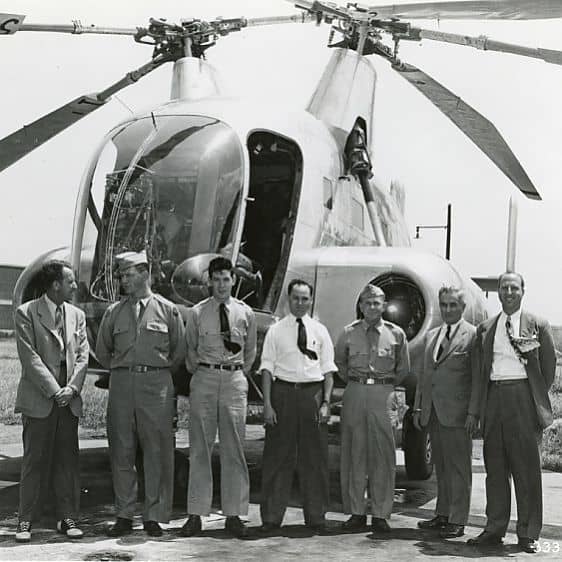
At the end of the day, Bayer wrote Rita:
I’m very tired physically, mentally and otherwise. Today was a long, hard day. It was a long, hard fight, but we finally won. Yes—we had the XR-10 up in the air, today, for the first time. A historic event—the biggest helicopter in the world-in the air. I got up at 5 A.M. this morning. Lance and I stopped at the diner in Lansdale for breakfast and then to work. We reved up and tracked blades all morning. We had coffee and donuts at 8:30. Before noon we tried to rev. up under the same conditions as we did the other day—we got into the same resonant condition and almost shook to pieces again. We shut it right down. We then changed the conditions and our approach to the problem. We then lifted it off the ground for a few seconds. We were cross wind, the controls were very rough and vibrated all over the cockpit. The ship was hard to handle under such difficult conditions and it was our first attempt at it. We set it down after a few seconds and rested. Then we decided to eat lunch as it was noon. Dave and I were sweating blood and we welcomed the idea. This afternoon we changed the position of the ship (into the wind) and made a small adjustment on the controls. We started the two engines, reved up, pulled in the collective pitch and came off the ground and hovered some more. It was still very rough on the controls and on our hands. We couldn’t stand it for long so we landed again. This hovering was done within a circle of concrete on the ground—to land on. We rested, let the transmissions cool off and then hovered some more. We were in the air for a total of about 15 minutes today and went about 4 or 5 feet off the ground. We have quite a few things to do yet and to solve before we can go much farther. We’re going to hover some more tomorrow—and try to “feel it out” some more to see how much control we have, etc. Just one, long, big day—today. 136LETTER AL TO RITA APRIL 24, 1947
Through summer and into 1948, Bayer logged many hours in the XR-10. Driskill may not have been flying it at all by time. One senses the pace, the pressure to produce for the military, overtaking all the men involved.
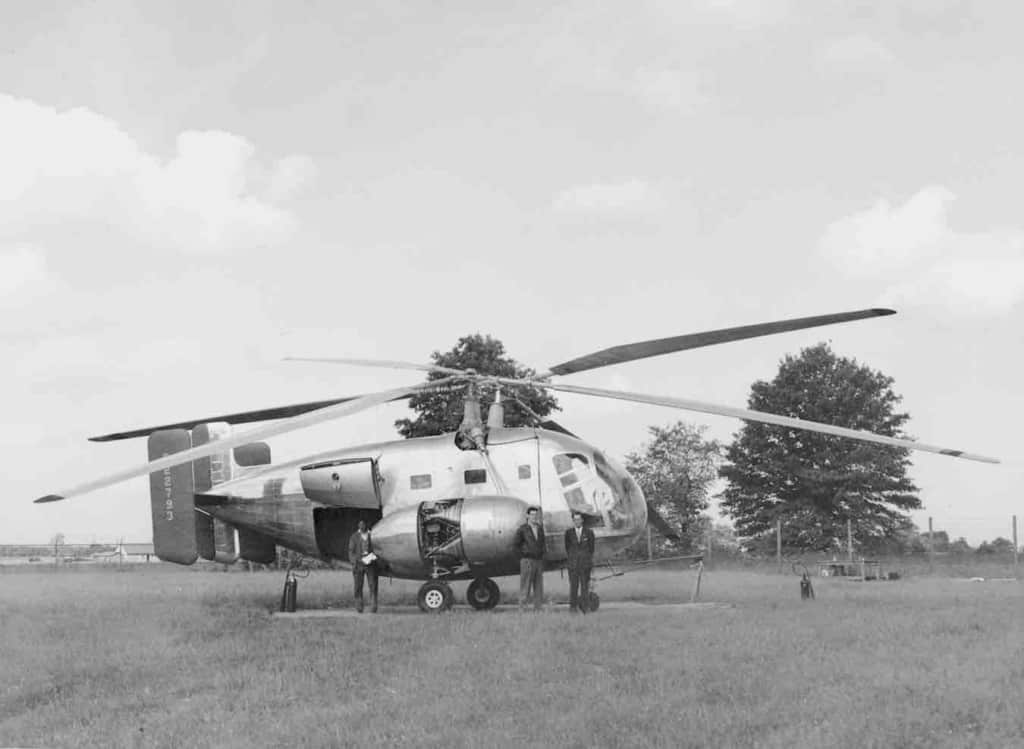
After more tests, on April 28th and 30th, the team removed the transmission from the XR-10 and repaired it. 137LETTER AL TO RITA. MAY, 14, 1947. Through May, the engineers chased down assorted engine, transmission and blade problems. The craft’s complex transmission suffered over-heating. On the XR-10, if one engine failed, the remaining engine drove its own transmission as well as the opposite one, via the cross-drive. 138http://aviastar.org/helicopters_eng/kellett_xr-10.php They conducted more tests on May 27 and a 12 minute flight on the 28th–apparently still tied down. That day, in flight, one engine failed and the craft fell a short distance to the ground. 139Daily Flight Test Report No 95 May 28, 1947 On June 2, the tie down cables were removed. 140Daily Flight Test Report No. 97m, June 2, 1947 On June 10, engineers noted that while the craft could stay aloft with one engine, when one failed, the surviving engine’s transmission temperature soon red-lined. 141Daily Flight Test Report No. 102 June 10, 1947
After transmission, blade damper and other problems during early June tests, around June 13 they overhauled the blade dampers, addressing problems with vibration and with the rotor blades colliding or nearly hitting the ground at low speeds. We think they are the culprit. 142LETTER, AL TO RITA June 12, 1947 On June 17, both transmissions were removed for repair. 143Daily Flight Report No. 106, June 17 1947 On June 25, the XR-10 made its first forward flight. Military men observed and one rode along. 144Daily Flight Test Report No. 109, June 15, 1947 Blade flutter occurred at 35ph and the blades were adjusted. With a series of small flights the team tested maneuverability. The blade dampers on the XR-10 were again replaced and flight resumed on July 1. During the hiatus., the designers drew up sketches of the Kellett XR-17 Flying Crane.
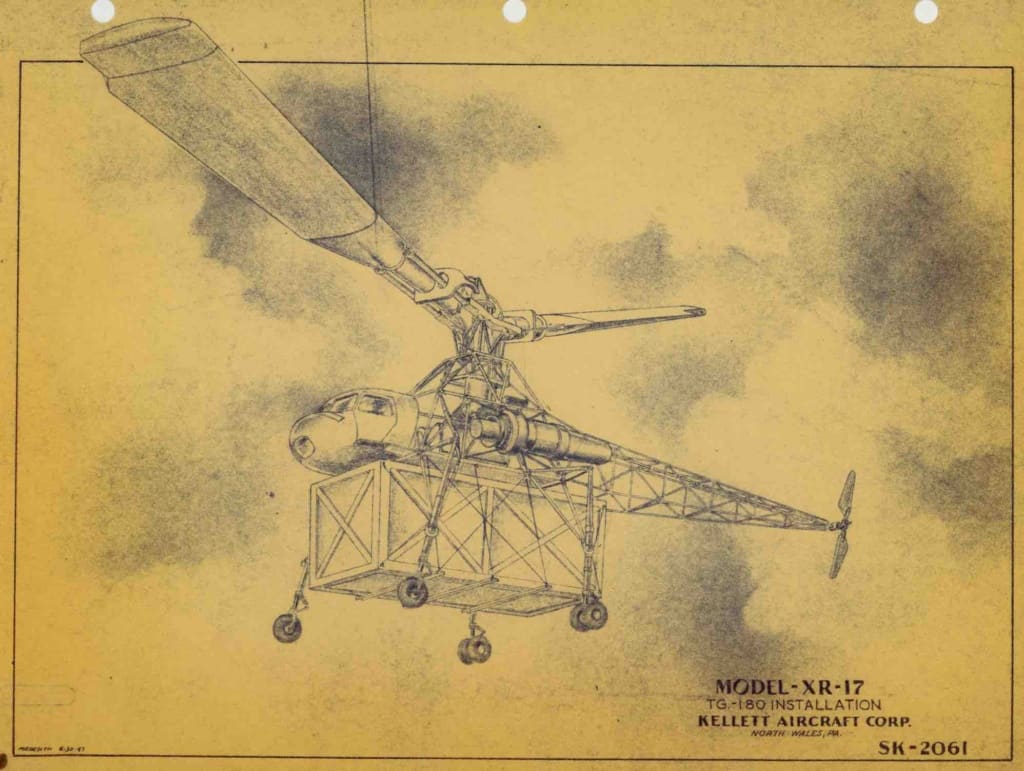
The press reported the first flight of the XR-10. The date went into the history books. Bayer could now get married feeling that his job was moving forward. The helicopter’s crew could feel that they were making progress. The Air Force could be told that Kellett Aircraft was making progress. And yet, the whole event seems to have taken place more from a will of its own than out of any planning or due to any real safety in the XR-10.
LOVE AND HAPPINESS – preparing to marry
Through June of ’47, Bayer thought more and more about his coming marriage. He worried about his lymphosarcoma diagnosis and about their plan to live in Philadelphia. He seems to have felt overwhelmed with all that he now would need to do as a married man. In a second to last courtship letter to Rita, before going to Schenectady and getting married, Al reflected on life and love.
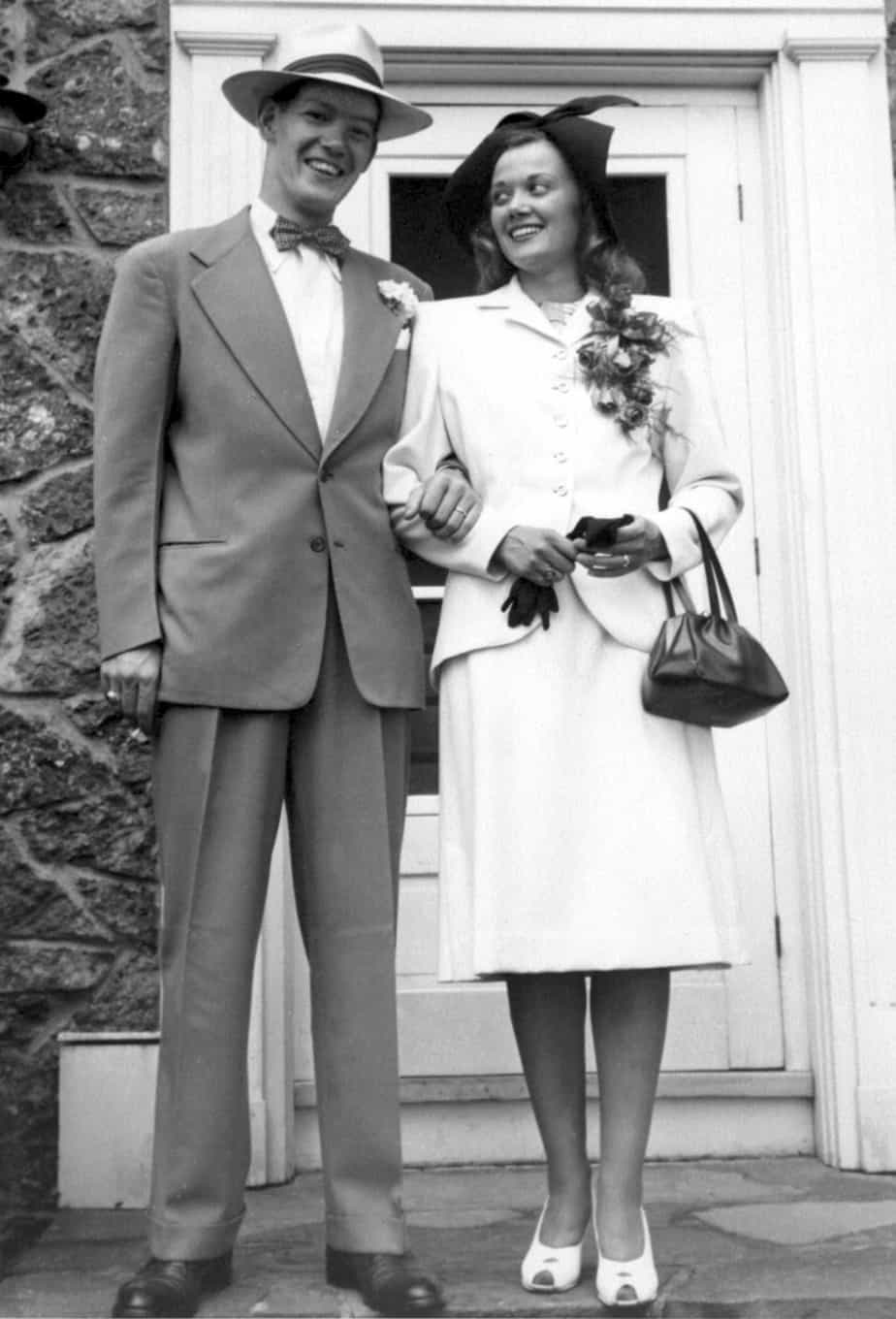
Rita–people are funny–a very complicated piece of machinery–and I’m one of them. This probably sounds like an awfully fun letter–it probably is–it’s hard to write what I think and want to say. In the process of living a life in a world of people and objects, an individual becomes so entangled and engrossed in the complications involving those things that he sometimes loses sight of the really important things. Certain difficulties and worries crop up and blur and discolor the real purpose and light of life. I sometimes catch myself trying to untangle and solve all these so called problems and getting so entangled that i find it hard to find my true sense of values. The other night, for example, when I wrote to you, I had a very trying day, I was up to my neck in trying to work out things like apts, car, etc.etc. After reading your letter, there was one more little thing to think about. It seemed then to be another great problems and was actually nothing, in fact none of them are great problems. I probably sounded like a selfish, un-understanding person, but being human I was thinking in terms of trivial, common things. Today, in my mail from home, I received the notice to report for the examination for my lymphosarcoma to, what appears to be, a specialist on the subject–in Albany. After reading it, it renewed another complication–like an axe hanging over my head. I thought and worried and thought, all through dinner and through the evening. I thought of the seriousness of it–of our wedding–of the complications it could cause. I tried to reason it out. Was I being fair to you? Should I undergo treatment and an operation? Should I allow our marriage to take place before I was sure? What of my career that I have worked and reamed and built, that means so much to me? Underoing such treatment would bring my lymphomas before the people that would have to put an end to my flying.
I thought of all that and all the rest of the things that are my present so called problems. In the midst of all the haze and blue, I suddenly stopped to realize what is really the important an absolutely necessary thing in my life–you. That is the only thing out of the whole complicated thing that i am sure of. What I am really trying to get at, with all this talk–I could say in a sentence; I love you Rita, and there is nothing on earth that can keep me from you. That’s the one thing I am certain of an the thing that is really the most important thing of all. That’s the reason I do think and worry, but without you nothing would be worth thinking about. We will have our love and happiness as long as we’re together and for that love and happiness will have to have our hardships and trouble, as long as we can keep our love–that is the true purpose and fruits of our lives. I hope you can understand all this that I am writing in my own way–With All my Love, Al
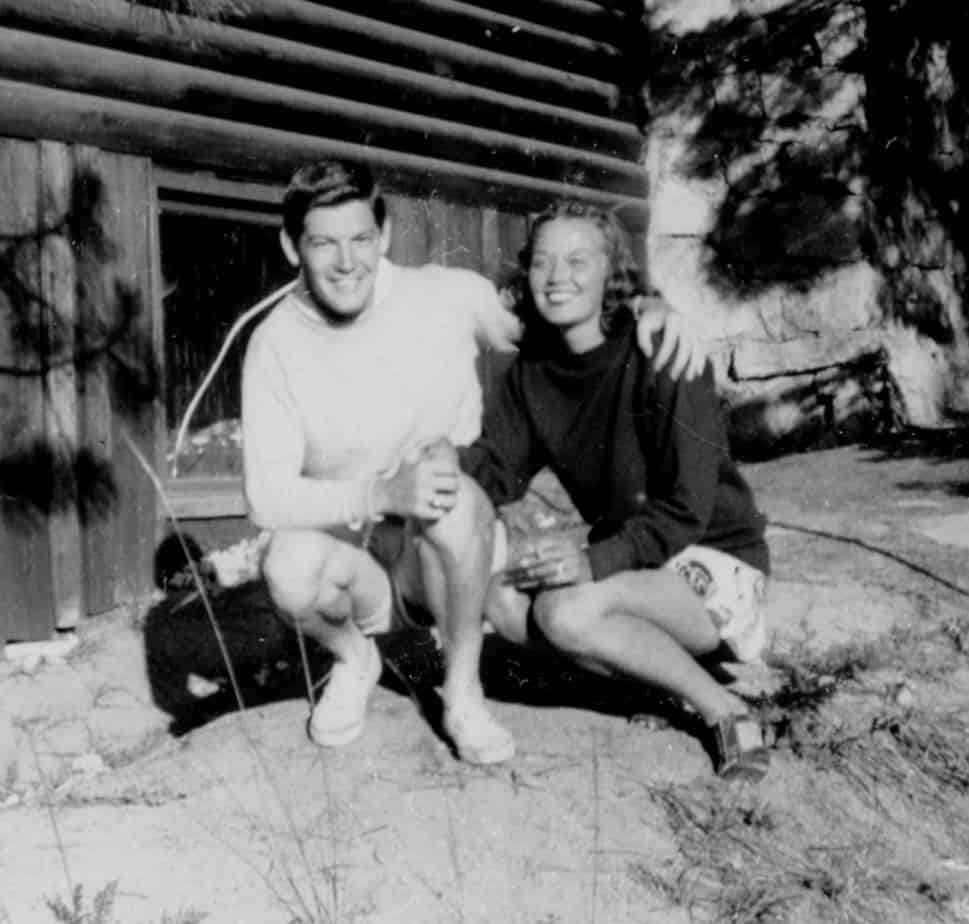
From about July 2 to July 21, much of the plant took a holiday so that Bayer could get married. 146Bayer mentions the plant holiday. Test Flight Log gap in flights. The remaining crew made some repairs, including tear-down of both transmissions for inspection. 147Flight Test Log, July 19, 1947 No. 115
THE SMOKESTACK – a close call
Reliable flight of the XR-10 had yet to be achieved. The remainder of the summer would be taken up trying to eliminate problems.
Upon Bayer’s return to Kellett after the honeymoon, a blade damper immediately fractured on the XR-10. 148XR-10 Flight Test Log The effort to control blade tracking through dampers continued through the July and August. They continued to wobble at low speed. At one point the blades made contact. 149Flight Test Report No 119, July 19 1947 The helicopter tended to bounce and shake when moving forward at 25 or 30 mph, resulting in one forced landing. The transmissions tended to overheat.
Nonetheless, during July, The New York Times ran an article on the craft, its first major publicity.
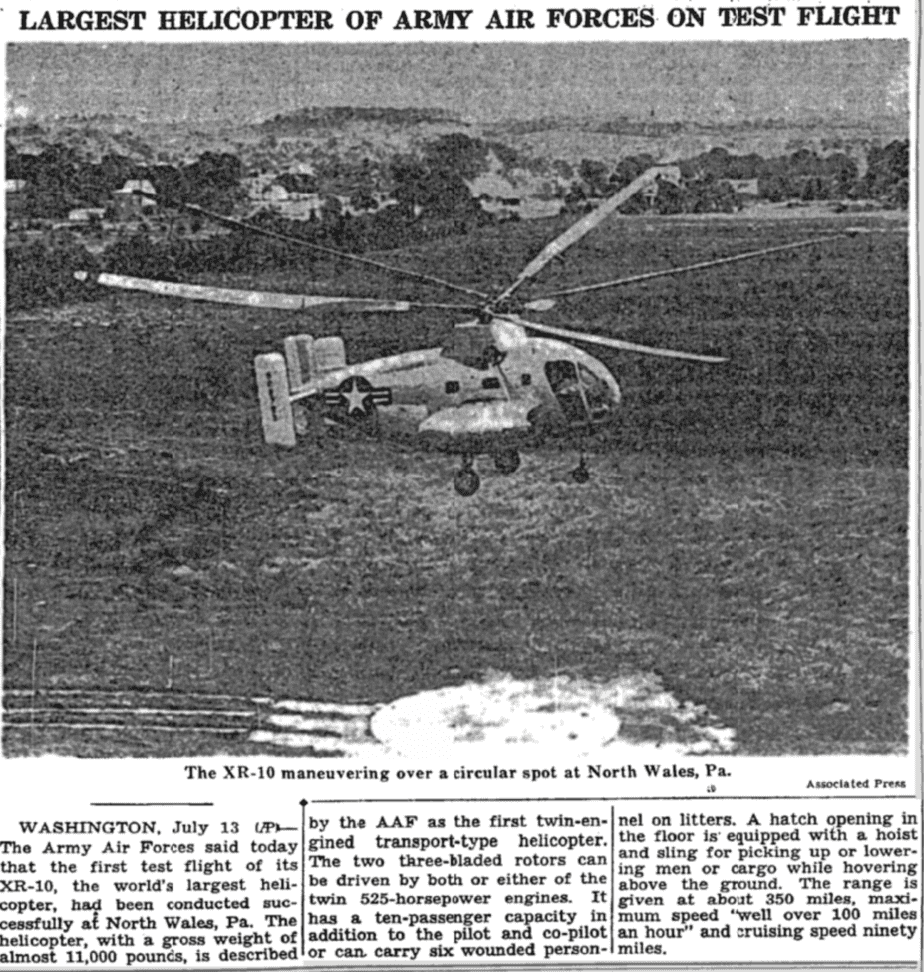
MONDAY, JULY 14, 1947, P. 35
Through August, forward flight remained impossible due to problems with the collective pitch lever. That month, Chief Engineer Nick Stefano rode along on several flights.
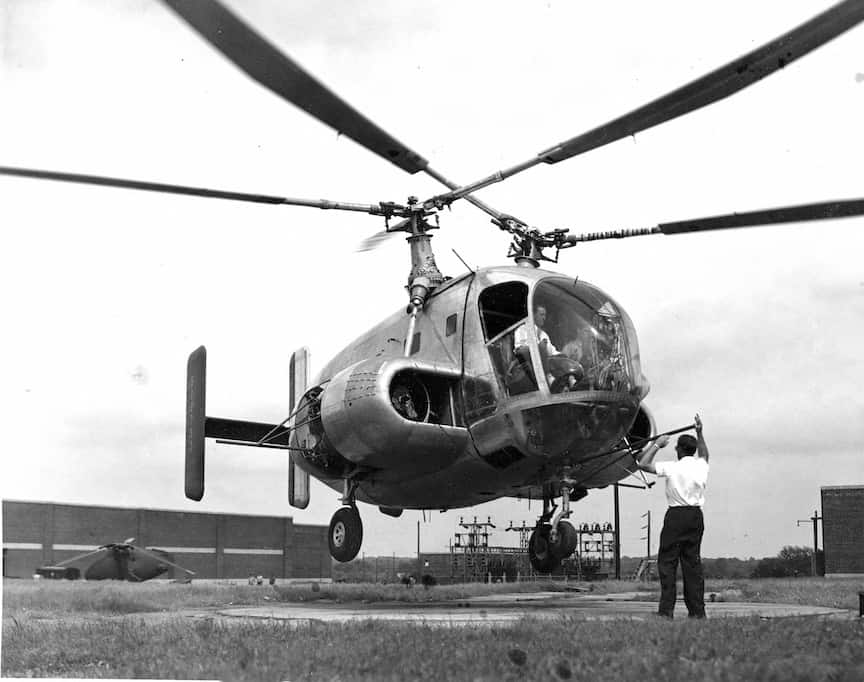
Time was running out. Kellett Aircraft needed to get the machine to the military and show its worth. For the September 11 flight, the military arrived and rode along. On September 25, 1947, Kellett held an open house to fly and show the XR-8 and the XR-10. Bayer logged piloting hours for both flights. A public address system made announcements and provided narration to some 75 attendees. Each attendee received an XR-10 promotional brochure. 150Memo Gasslein to employees, Kellett Correspondence Video of the event shows the XR-10 over a smokestack. By August the XR-10 appears to have had the military star and bars painted on the side. Video shows brief flights.
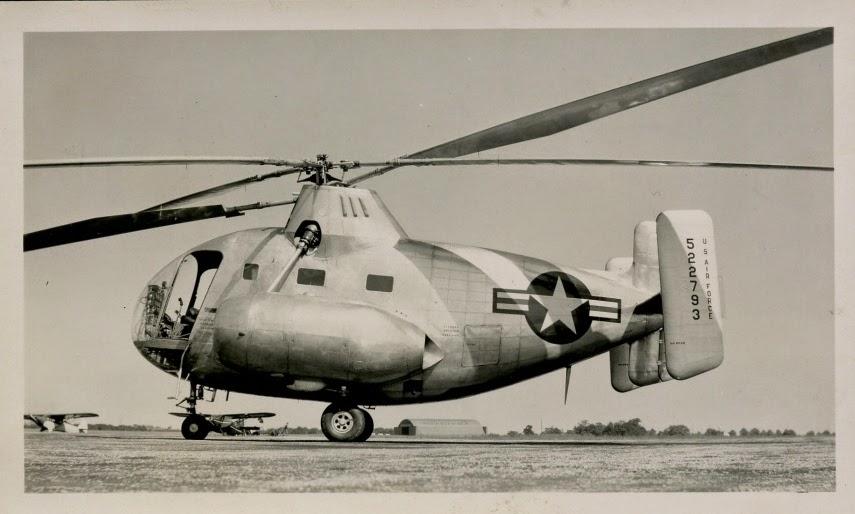
Notwithstanding the newsreel announcers excited praise, the demonstration was fraught with danger. Bayer later wrote of the flight above the smokestack: “A power plant inspection revealed that 6 of 7 pins retaining the main accessory drive gear of one of the engines had failed–close call.” 151Letter Bayer to Tozer. March 31, 1952. P 2 and 3
Time was running out. Kellett Aircraft desperately needed the army contract and the funds it would bring. William Wallace resigned from Kellett Aircraft in 1945, focusing on Kellett Corporation and the activities that then put the Aircraft company in trusteeship. 152Wallace’s obituary: Shamokin News-Dispatch. -Shamokin, Pennsylvania 23 Jul 1951, Mon • Page 11 Presumably, he had lost patience with trying to make money developing the XR-10 for the Air Force. The Wallace brothers’ financial woes began in 1946 when Wallace began refrigerator and sheet metal manufacture. 153Connor p15 Wallace Kellett failed to consider the shortage of copper coil as a result of the war effort. 154 Howard’s Whirlybirds, Don Porter, Fonthill Media, 1914 p 37 Stefano interview Oct. 19, ’83 As a result Kellett Aircraft went into bankruptcy and was, for a time, run by a trustee, thus making the Air Force quite concerned for their investment and for the quality of the aircraft. Rightly so.
In the wake of the perilous flight over the smokestack and with a fresh investment in having a future–getting married–Bayer began regularly speaking up about problems with the XR-10. From mid October to mid December, flights of the XR-10 ceased. A lose lock-nut was noticed on the drive shaft and it was decided that the entire ship should undergo a tear down to make major repairs. The report detailing this problem was signed “A.W. Bayer”. This would first time Bayer fully authored a Flight Test Report. 155Flight Test Report No. 153, Nov. 14, 1947 Under his signature he was described as the “Engineering Test Pilot”–not the “co-pilot.” He authored and signed the December 10 Flight Test Report, describing the craft as ready to resume engine rev-ups and flight testings. 156Flight Test Report. 1534, Dec. 10, 1947
Bayer’s name next appeared as author on a Flight Test Report in February, 1948. He wrote that, a “peculiar noise was heard in the left hand engine”, again resulting in a tear down. 157Flight Test Report 157, Feb. 20, 1948 As Bayer had described to Rita, he had been listening to the engines for months. Now, however, he was translating what he heard into pointed directions aimed at the engineers.
This is how I remember him. I remember flying with my father. In flight, he listened. When we landed, he would walk over to the mechanic and, without pulling punches, tell him explicitly what he had heard. He spoke with authority and he wanted it fixed. This habit helped keep him–and later his family–alive. From this time until his departure from Kellett Aircraft, Bayer co-authored all Flight Test Reports. These now contained extensive lists of problems. Every time an engine missed, it was written down.
The XR-10’s difficulties with auto-rotatation remained an issue. In all likelihood, when the power was cut for an autorotation–an unpowered landing–the momentum of the blades was insufficient to keep them tracking well and the decent of the craft induced wobble. In the XR-10, maintaining the speed of the craft headed downward during an auto-rotation was vital to maintaining the centrifugal force and speed of the blades thus preventing their wobble and collision. Engineers “redlined” the craft–prohibited it from auto-rotation–at speeds of less than 60 mph. This made for a sufficiently steep descent during auto-rotation and required an assertive pilot, fully trained to respond. 158XH-10 Helicopter; Development of Kellett Model, C.W.Kuehne, USAF, Air Material Command. AF TECHNICAL REPORT # 6163, filed December 13, 1952, p.2-3.
The more he pointed out problems the more time the helicopter spent in repair–leaving Bayer many days to travel, visiting other helicopters and even talking to the press. For six days in October, Bayer traveled to General Electric in Schenectady and to Bell Aircraft in Pennsylvania to look at and fly other helicopters, comparing them to the XR-10. 159Expense Account. Kellett Correspondence He noted that, at GE, Bensen’s rotary wing glider project had been shelved by GE, Kellett’s XR-17 blade burners were being tested and the Doblhoff ccontinued to be evaluated, soon to be flown with modifications. At Bell he spent some time flying their Model 47. 160Engineering Memo 9906 Oct. 30, 1947 In late November he visit Patuxent and the Navy’s Rotary Wing Design Branch. Reporting on this visit, he wrote, The Navy appears to be generally lagging behind the Army in the progress they have made in rotary wing flight test work. 161Engineering Memo 9916, Kellett Correspondence In December he visited Bendix to see a demonstration of the Model K and fly the Model J. 162Engineering Memo 9938, Kellett Correspondence. (Bensen would go on to market his version of a Rotochute, now calling it a Gyroplane, creating his own company in 1954 and adding an engine. 163See History of The Gyroplane, https://youtu.be/rGzM380ky4E?si=DM3YhO_zKAukVs_V That December of ’47, Kellett created a ten point Product Design booklet for the XR-10. This may be publicity they had intended for the September demonstration or, generally, related to their effort to publicize their craft.
1947-lr-XR-10-Product-Design-bookletThe engineers continued to work on bugs. 164XH-10 Helicopter- Development of Kellett Model, C.W.Kuehne, USAF, Air Material Command. AF TECHNICAL REPORT # 6163, filed December 13, 1952, p 2 In January of 1948, the right engine generator drive gear failed. 165Engineering Memo 9963
LANDING ON A DIME – publicity
While Bayer had become hands-on with every noise and rattle, attempting to make the craft more dependable, he also became concerned with creating publicity for the XR-10. A helicopter program without funding would come to an end and, at least publicly, the XR-10 needed to look good. The push for publicity had begun in September and was then evident in the December booklet. In January of 1948, Bayer’s hometown paper–the Schenectady Union Star–ran an article with a photo of Bayer and Driskill plus a picture of Bayer at the controls of the XR-8A. 166Jan 17, 1948, Schenectady Union Star The article spoke of landing the giant helicopter on a dime–an image probably created by Bayer whose dreams were more about maneuverability than about the beast that was the XR-10. This marked the beginning to Bayer’s efforts in sales. As would happen again, the article focused as much on Bayer as it did on the helicopter–creating a personal, human-interest element that Bayer would apply again in trying to sell other helicopters.
1948-Article-top-and-bottom-reducedFrom mid-December through mid January the XR-10 engines were repeatedly run. Only short lift offs took place until April when the craft was repeatedly flown for one hour flights. 167Flight Test Log After an engineering inspection, during February of ’48 the XR-10 was deemed ready to fly again. 168XH-10 Helicopter- Development of Kellett Model, C.W.Kuehne, USAF, Air Material Command. AF TECHNICAL REPORT # 6163, filed December 13, 1952, p 2 In mid February, perhaps based on the January newspaper article, Bayer was invited to write an article “on rotating wing aircraft.” 169Letter Cass S. Hough to A.W. Bayer Feb. 10, 1948 Kellett Correspondence. Bayer wrote a short essay on the XR-10 and, after getting approval from Wright Field, submitted it to Air Force Magazine. 170Letter Bayer to Hough Feb. 20 1948, Kellett Correspondence Just as he had become a voice in engineering, he had now become a voice in sales–the poles he would straddle through his helicopter career.
1947-lr-THE-KELLET-XR-10-AL-BAYER-essaySome at Kellett Aircraft welcomed this publicity on the XR-10–probably feeling that they produced a sellable product and wanted public notice to assist with sales and overall company confidence. One wrote the Air Force to that effect. 171Letter Gasslein to Commanding General, Wright Field Feb. 19, 1948 Others at Kellett remembered that the machine was being produced for the military and were concerned for revelation of classified information. 172Memo Peskin, Feb 20 1848, Kellett Correspondence. Internal memos regarding security were issued periodically to Kellett employees, along with memos reminding people not to be late for work.
This time, perhaps in the wake of the September press demonstration and Bayer’s articles, the concern for security was soon echoed by the military itself. In April, the Air Force weighed in. There have been several unauthorized releases of classified information during the past few months, and it appears that our present security controls must be tightened by way of remedial action…. 173Letter Wright Field to Skilling, April 1, 1948 They changed the XR-10’s classification to “restricted” and specifically prohibited visitors, publicity material etc..174Air Force Letter April 1, 1948, Memo Peskin April 5, 1948. Kellett Correspondence.
This series of photos probably dates from before this memo from the military–from February or March 1948. These appear to be publicity photos of the kind that Bayer would solicit–note the posed mechanic–rather than shots done for the exhibitions of the craft by the Air Force in May and June.
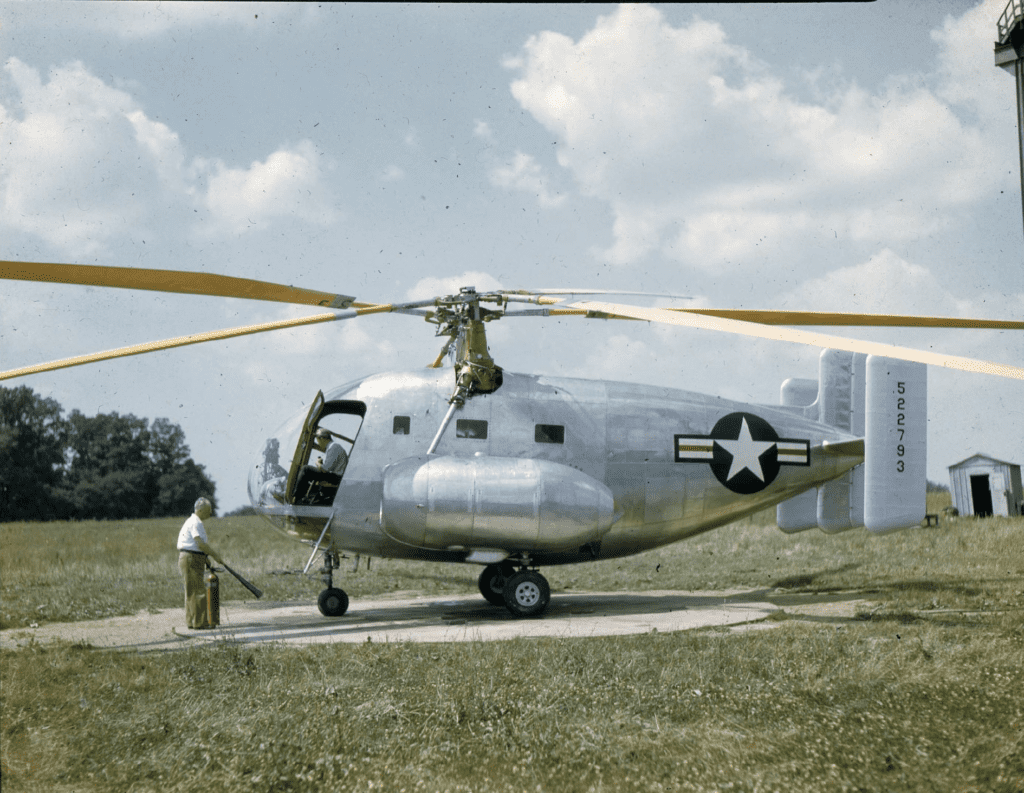
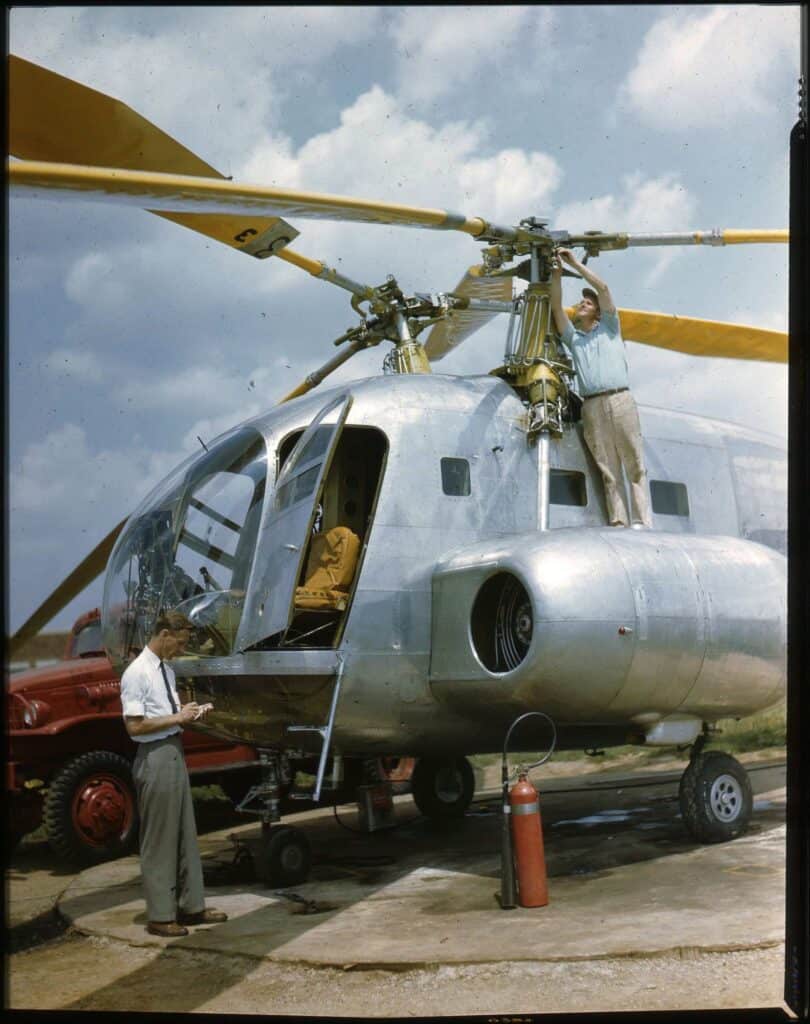
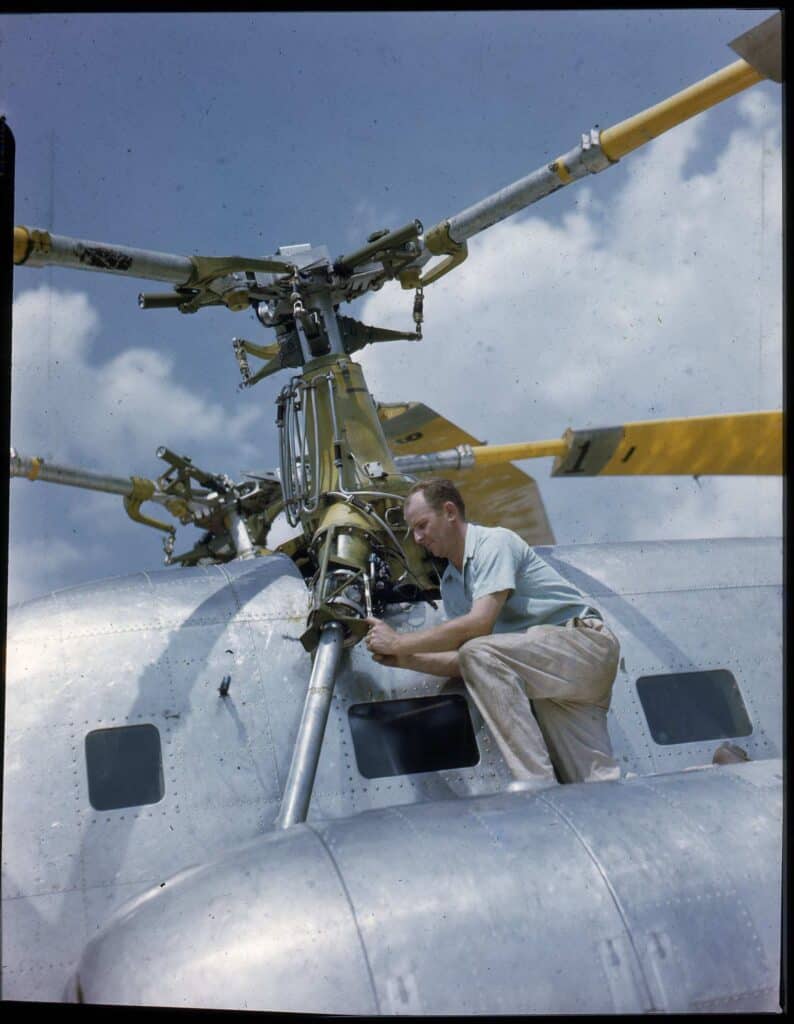
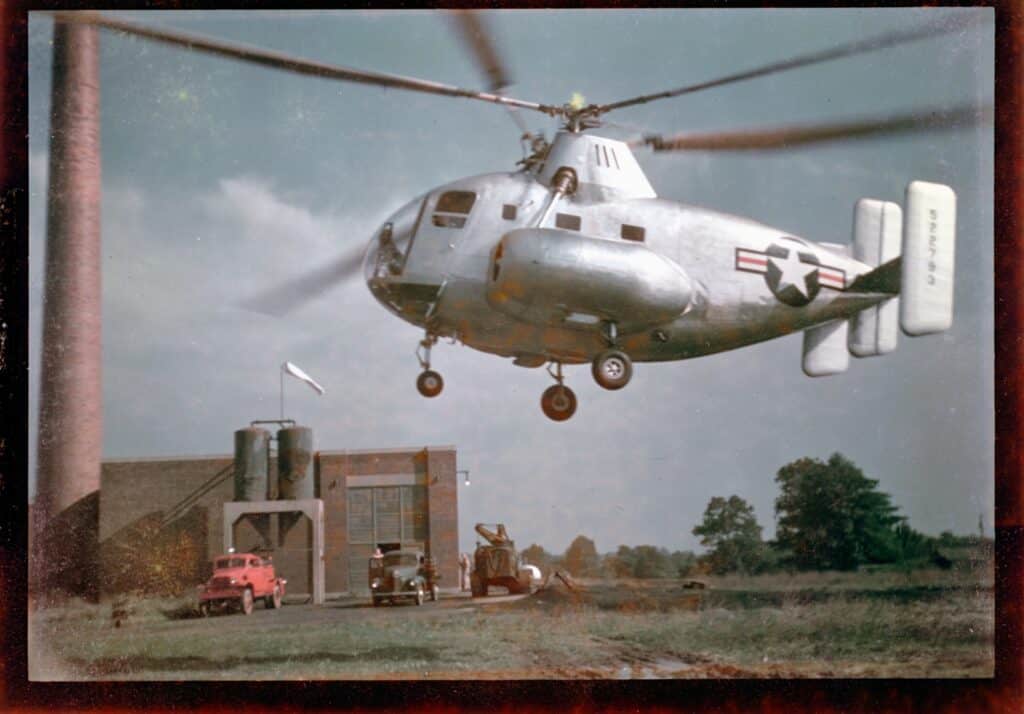
During March, Bayer traveled to Wright Field and flew the Flettner 282, no.4613, for three hours. It may have gone from dark paint with German markings to dark paint with American markings and finally, stripped of paint, to bare metal with American markings. Though, initially two were shipped from Europe to the U.S.. One was damaged–this perhaps being the wreck Bayer refers to above in his letter. It was used to keep the other flying. T2-6813 is the serial number of the Flettner with German markings and this carried over when, apparently, it was stripped of paint and given American markings. 178https://verticalmag.com/features/verticalrewindspoilsofwar/
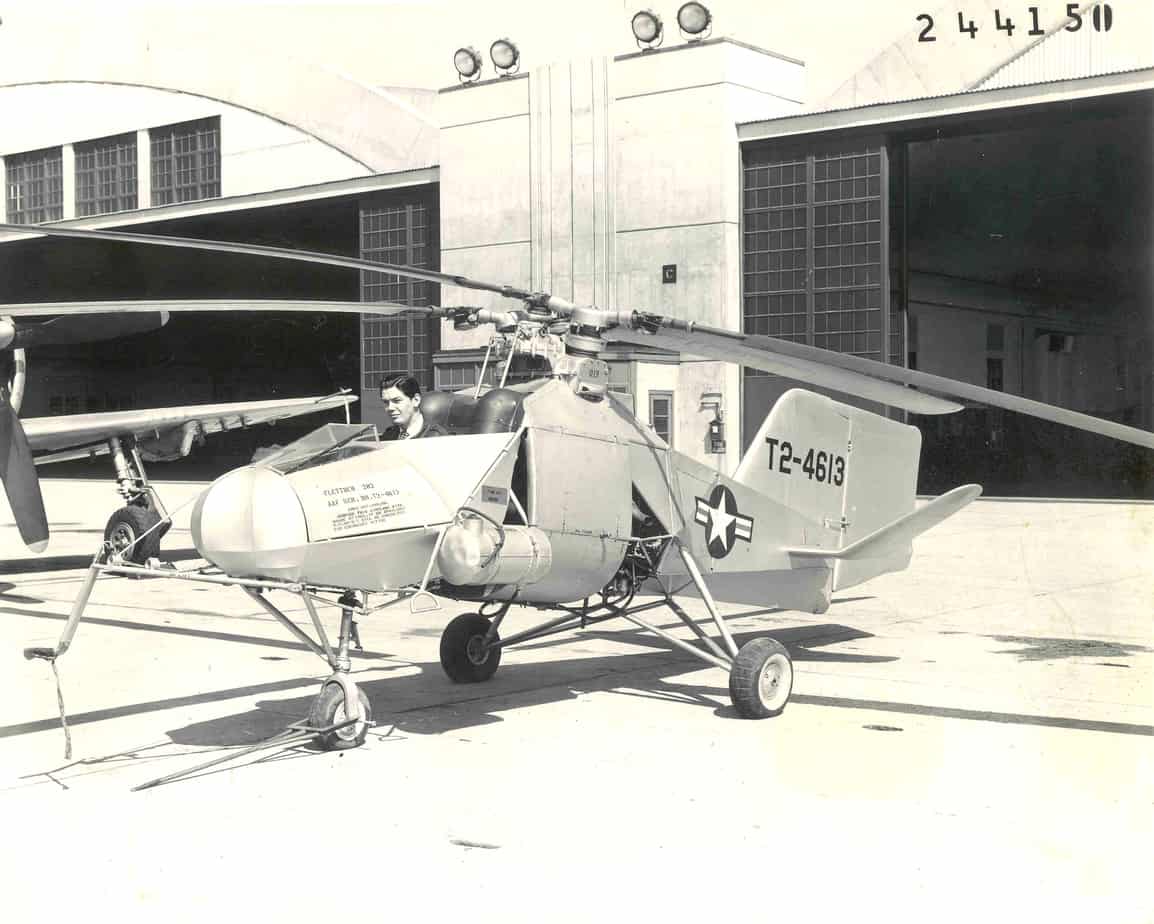
On April 23, while the XR-10 was being tested by the Air Force pilots, the rotor blades collided, cracking a couple of the blades. The Air Force pilot had let the airspeed fall to 55mph during an autorotation. 181Engineering Memo 10027 April 27 1948, Engineering Memo 10035 May 5, 1948. Kellett Correspondence. The blade collision remained a serious concern for the Air Force thru the end of the summer. Rotorblade collision had been an issue with the XR-8–the Air Force knew this so that a collision in the XR-10 was probably a major red flag. That April, Bayer wrote the Engineering Report on the event.
1948-lr-XR-10-Blade-Collision-ReportFlights continued at Kellett into June. While still at Kellett, Driskill did some test flights in the Flettner, perhaps that March when Bayer visited. Then, that summer, ready to retire to North Carolina, Dave Driskill recommended Bayer to take over as Chief Pilot. (Driskill letter and related rec commendations, Kellett Correspondence)) Kellett wrote up its Phase One engineering report. 182Date is based on letter, Bayer to Tozer, March 18, 1952 p1 Also see Connor Bayer later wrote: During the later part of the program Dave retired to an airport operation in Manteo, N.C. (he was 52 years old) and I became Chief Test Pilot and completed the XR-10 testing until it was taken to Wright Field. 183Letter Bayer to Tozer, Mar, 31, 1952, p 3 Autorotations remained an issue. 184XH-10 Helicopter- Development of Kellett Model, C.W.Kuehne, USAF, Air Material Command. AF TECHNICAL REPORT # 6163, filed December 13, 1952, p 2
DUMBO – the Air Force gets a lemon
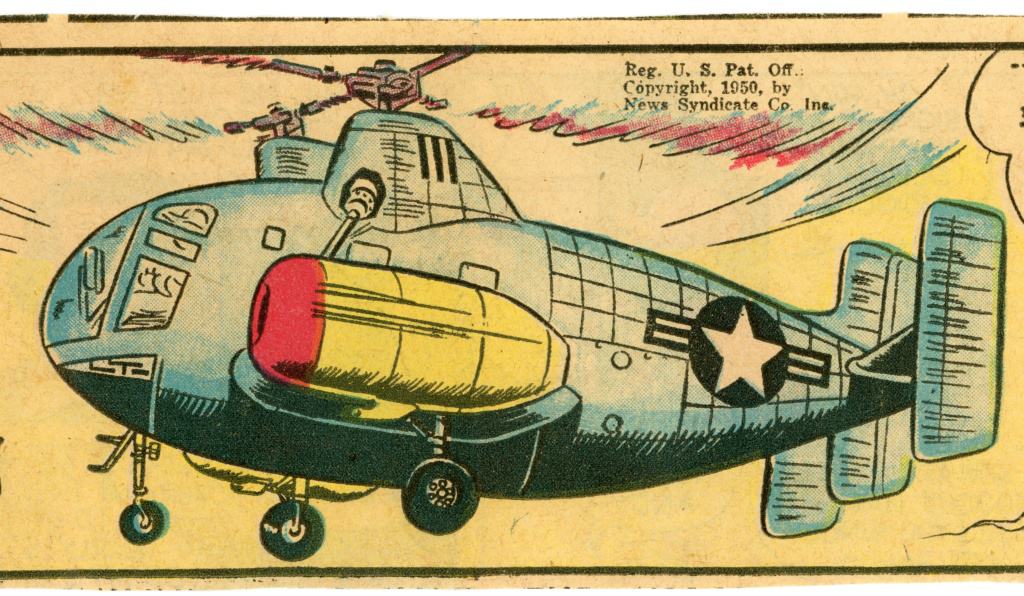
Bayer wrote to Rita, telling her of a plan to fly to Nashville for a May 10, 1948 demonstration of the helicopter. The XR-10 had now been nicknamed “Dumbo” with the Disney character painted on its side. Bayer’s letter to Rita described a marginal aircraft. His letter and logbook suggest that he flew with the Air Force pilot, Lt. Conn. Though he mentions Nashville, the flight seems to have actually been the Fort Campbell, Kentucky.
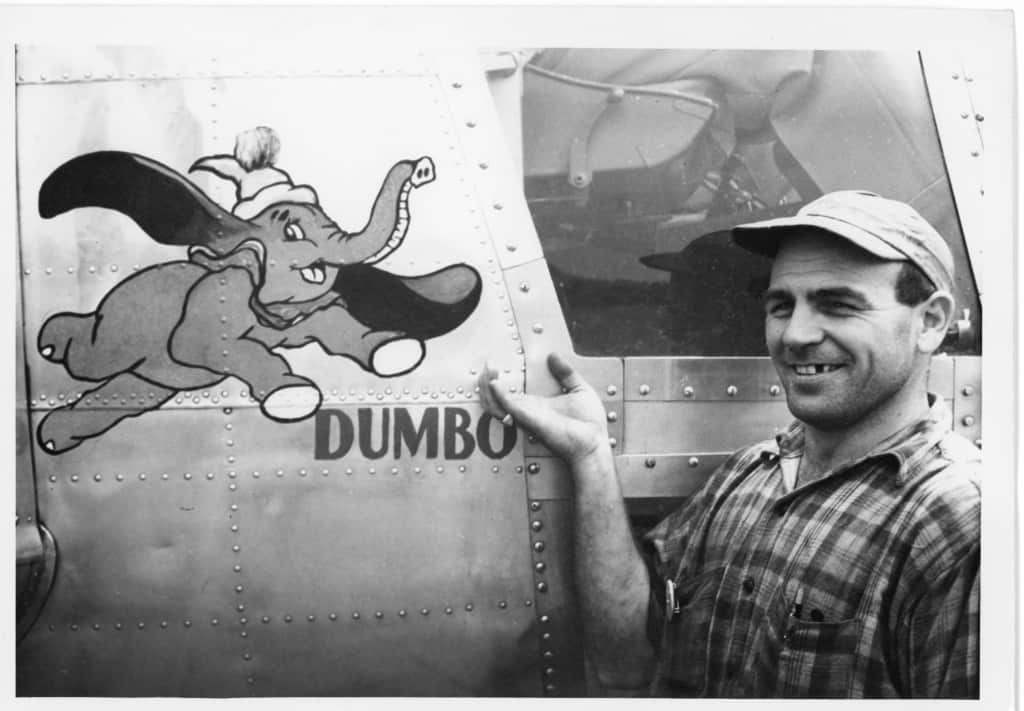
The XR-10 is supposed to be in Nashville, Tenn on May 10th. for a demonstration of all Air Force experimental aircraft before pre. Truman and all the brass hats. It looks as though Lt. Conn and I will have to fly it down there. That means the we’ll have to start from here about a week before May 10th because we’ll have to fly in short hops to make sure the ship is holding together O.K. We’ll have a ground crew and engines in automobiles at various intervals along the Route so that if anything happens we’ll have repairs, etc. It’s a 690 mile trip which is quite a trip for a ship that hasn’t flown for more than 1 hr at a time and its over the Blue Ridge Mountains that are between 4000 and 6000 ft. high. It should prove to be quite interesting to see how “Dumbo” pulls through. Then after we get there we’ll have to demonstrate it for how many days I don’t know yet and then fly it back here. I’ll know more about it when I see you this weekend.
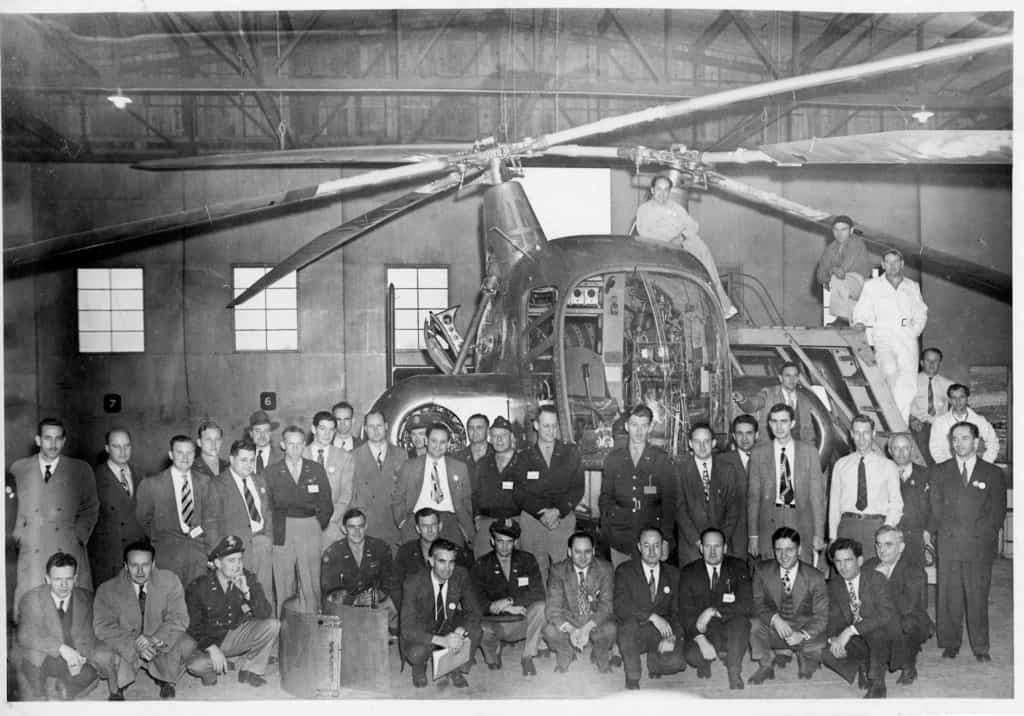
On April 21, Driskill gave Air Force pilots, Lt. John Conn and his copilot Captain Raymond Popson, an hour of training in the XR-10 and the crew began Phase 2 testing. 185Article naming the Air Force pilots. The Lexington Herald (Lexington, Kentucky) 10 May 1948, Mon Page 1
Bayer did not fly the machine back to Pennsylvania, though he seems to have rode along. 186The Flight Test Log described the trip as May 6 to May 19 187XH-10 Helicopter; Development of Kellett Model, C.W.Kuehne, USAF, Air Material Command. AF TECHNICAL REPORT # 6163, filed December 13, 1952, p.3. After a demonstration to the military at Camp Campbell, Bayer and the Air Force pilot flew to Wright Field in Ohio. 188Dumbo article. The Dayton Herald
Dayton, Ohio 18 May 1948, Tue • Page 12 As noted in the press, the helicopter made it when an accompanying plane did not. This made for an amusing and reassuring story. The article picked up on the “Dumbo” nickname. 189The Dayton Herald, Dayton, Ohio, 18 May 1948, Tue, Page 12 190XH-10 Helicopter- Development of Kellett Model, C.W.Kuehne, USAF, Air Material Command. AF TECHNICAL REPORT # 6163, filed December 13, 1952, p 3
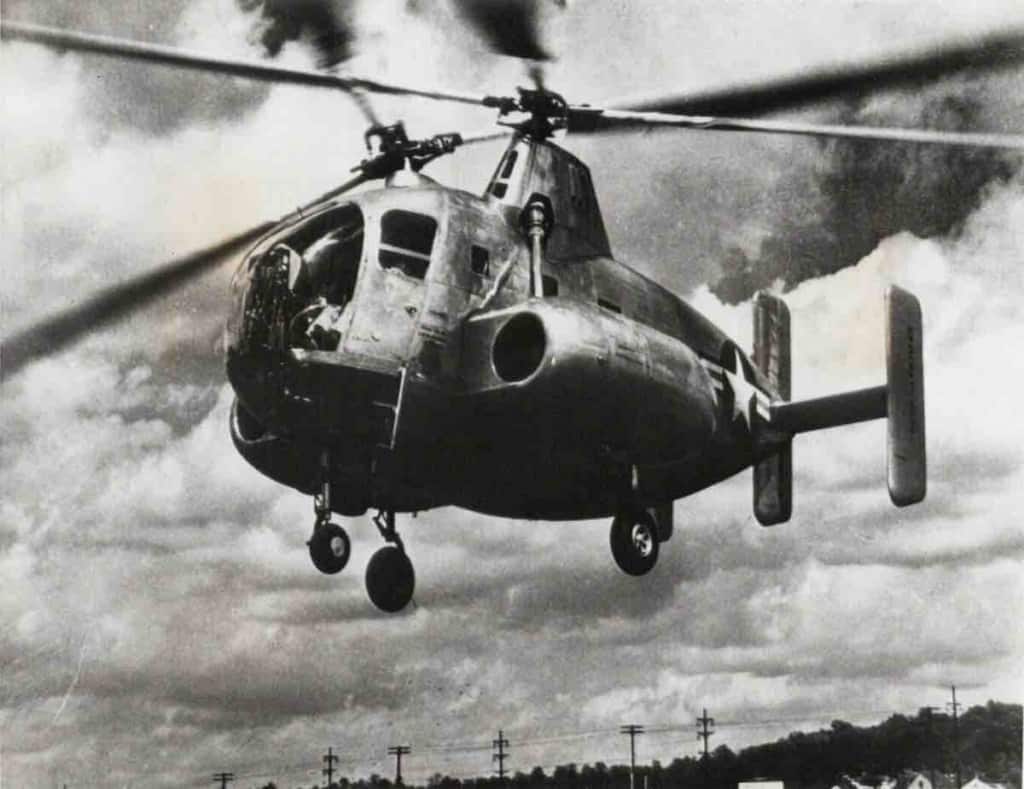
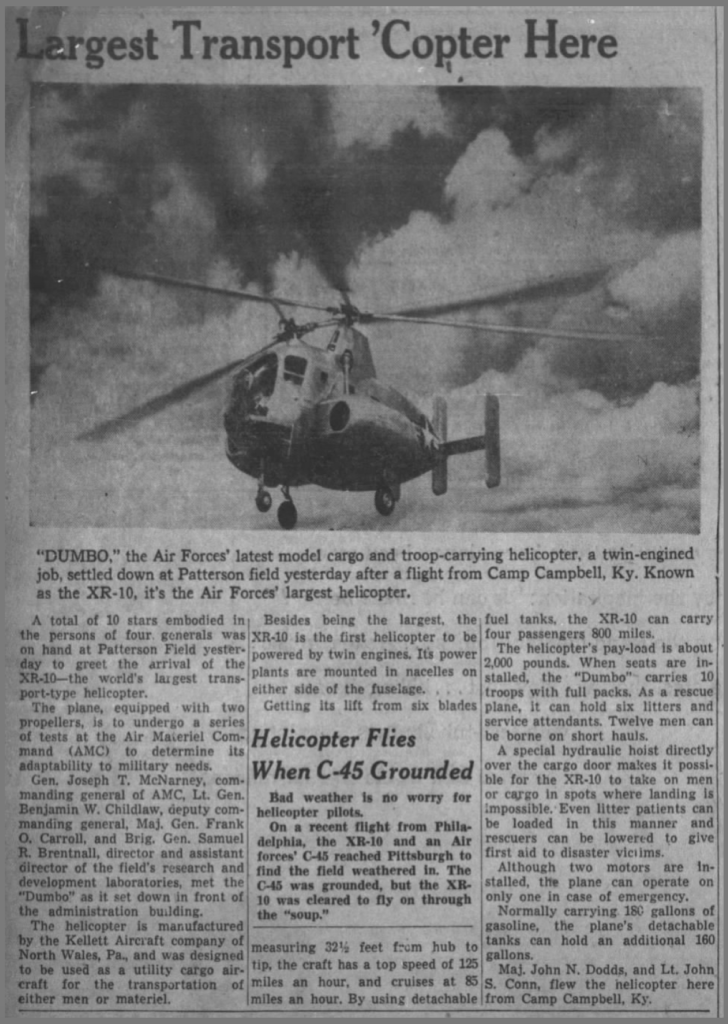
With Conn and Popson still flying, Bayer appears to accompanied them back to the Kellett factory. The photos below appear to show the Air Force pilot, John Conn, signing for the craft in 1948, either in May before this trip or in June, after this trip.
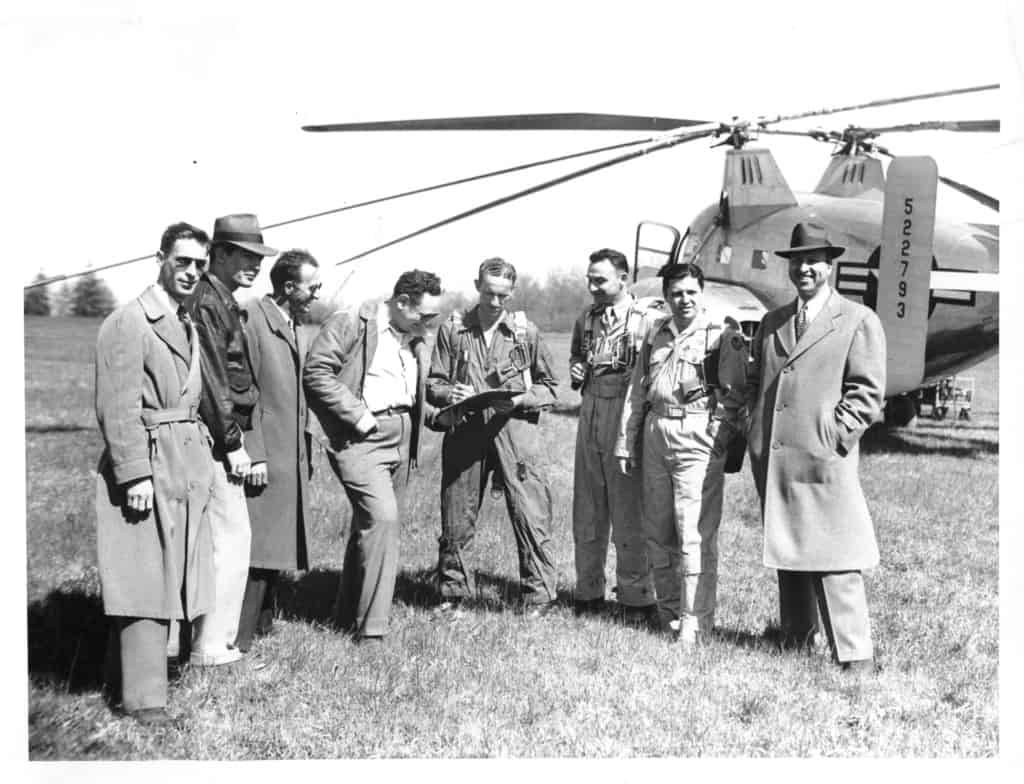
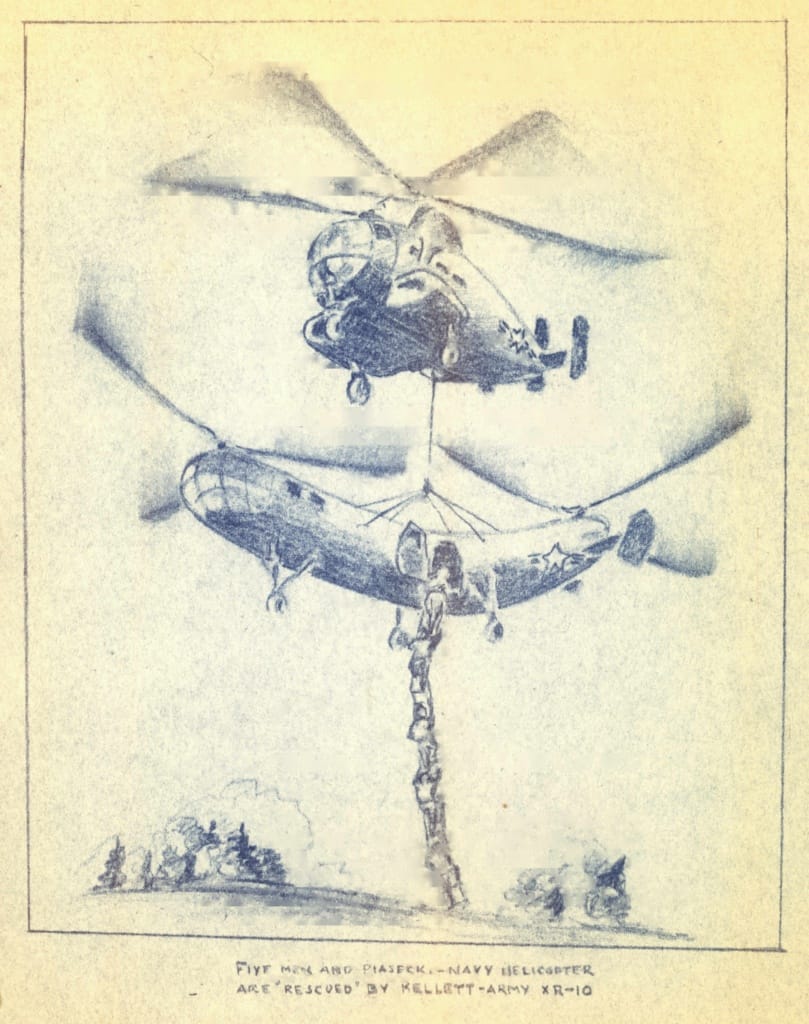
In June, though the Air Force had taken possession, with Driskill and Bayer flying, the XR-10 performed a press and military demonstration in Washington DC. This was Bayer’s last flight in the XR-10–the Air Force formally accepted Dumbo. 192Bayer Logbook, June 11. Probably based on Bayer’s writing, a June 1948 article in American Helicopter described the XR-10 as having, “proven its ability to do the job”. The piece stated that the helicopter had “demonstrated the ability to surpass its design requirements.” 193“XR-10 Flight Results, George Wales, American Helicopter, June 1948, p8 Echoing Bayer’s publicity, the May ’48 trip to Nashville was declared proof of “rigorous” testing. That being said, given the extensive problems through the previous year, one wonders how Kellett Aircraft imagined the Air Force would be duped into embracing the XR-10 once it started testing the craft on its own.
MARGINAL–the Air Force bails
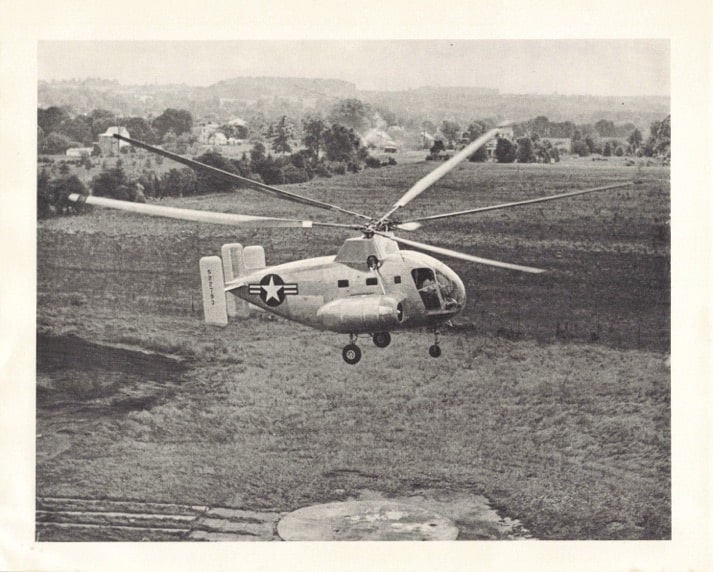
The Air Force had invested $4.5 Billion in development of the XR-10–now designated the XH-10. 194The Lexington Herald (Lexington, Kentucky)10 May 1948, MonPage 1 It took the Air Force only about a month to see serious problems with the craft. They cancelled plans for a second XR-10–their first step in what would become, within six months, a complete rejection of the project contract. The Air Force cited the “fetters” of the trusteeship–implying that it was now simply too hard to go through the bankruptcy court to get Kellett Aircraft to spend money to fix the craft’s problems. 195The Pittsburgh Press, Pittsburgh, Pennsylvania, 21 Jun 1948, Mon Page 28 Additionally, the Air Force noted that Kellett had underbid the contract–gotten it by bidding too low–and they cited increased costs–all as reason to cancel funding for a second XR-10. 196XH-10 Helicopter; Development of Kellett Model, C.W.Kuehne, USAF, Air Material Command. AF TECHNICAL REPORT # 6163, filed December 13, 1952, p.2 By July, Bayer was writing other companies looking for alternative employment as a pilot. 197Letter, Bayer to Frank Hallman, Stewart Sales Corporation. July 22,1948.
In August of 1948, Kellett conducted the first flight of its Flying Crane, now designated the XH-17, presumably with Bayer acting as chief pilot. The flight seems to have been tied to a plan to rescue Kellett’s finances by selling the project to Hughes Aircraft in Culver City California. In August, Hughes wrote the Kellett employees a letter explaining its offer to buy the XH-17 in detail.
By August, there had been no further blade collisions for the XR-10 however the Air Force remained concerned about the April blade collision. They continued to point out the dangers of autorotation when the blades would slow and hence wobble. Kellett Aircraft felt the need to respond. In part they wrote, somewhat defensively and somewhat vaguely, attributing the problem to a need for a stabilizer change.: The extent of Kellett flight testing did not include auto-rotational descents at all forward speeds and this condition was therefore not encountered. Nevertheless, it was known to Kellett and to the U.S. Air Forces that directional control in autorotation was marginal and that the stabilizer might require a change for auto rotational descent. It is possible that the combination led to circumstances which result in the blade contact. 198Engineering Memo No. 10084 L.L. Douglas, Kellet Corresspondance.
At the same time, Bayer wrote Movietone News telling them that Kellett Aircraft liked their movie of the XR-10 but could not afford to purchase it until “reorganization is completed.” 199Letter Bayer to Bossone, Aug 9, 1948 Kellett Correspondence. The “reorganization” to which he referred was the Aug. 9 offer by Hughes Aircraft to purchase the KR-17, Flying Crane. This sale was anticipated for August 27. The offer had to go through the bankruptcy court. Hughes anticipated doing initial work in Schenectady at GE with Kellett employees still involved and providing parts from Pennsylvania. Putting a happy face on the changes for Kellett employees, the letter stated, in part: as a result of accepting our offer, the Kellett Aircraft Corporation might be released from the trusteeship and that, thereafter, the Air Force might possibly give Kellett another contract pertaining to the XR-10. 200Letter Harold George to Kellett employees Aug. 20, 1948 This would not occur. Bayer and several of the engineers were talking to Hughes about joining Hughes to work on the XR-17.
Bayer needed to reconsider his future with Kellett. Though Hughes talked about hiring some of the Kellett people, Bayer made inquiries about other work. Some of his income had declined. In June of 1948, Bayer had received a doctor’s letter stating that he had been cured of his lymphosarcoma, based on laboratory testing. 201Letter The Pfeiffer Surgical Clinic, June 17, 1948 In August, the military shifted his classification from 100% disable to 0% disabled. 202Veterans Administration Letter, Aug.4, 1948 Until September, Rita received a monthly disability payment of $138 as his dependent. He tried to appeal the denial.
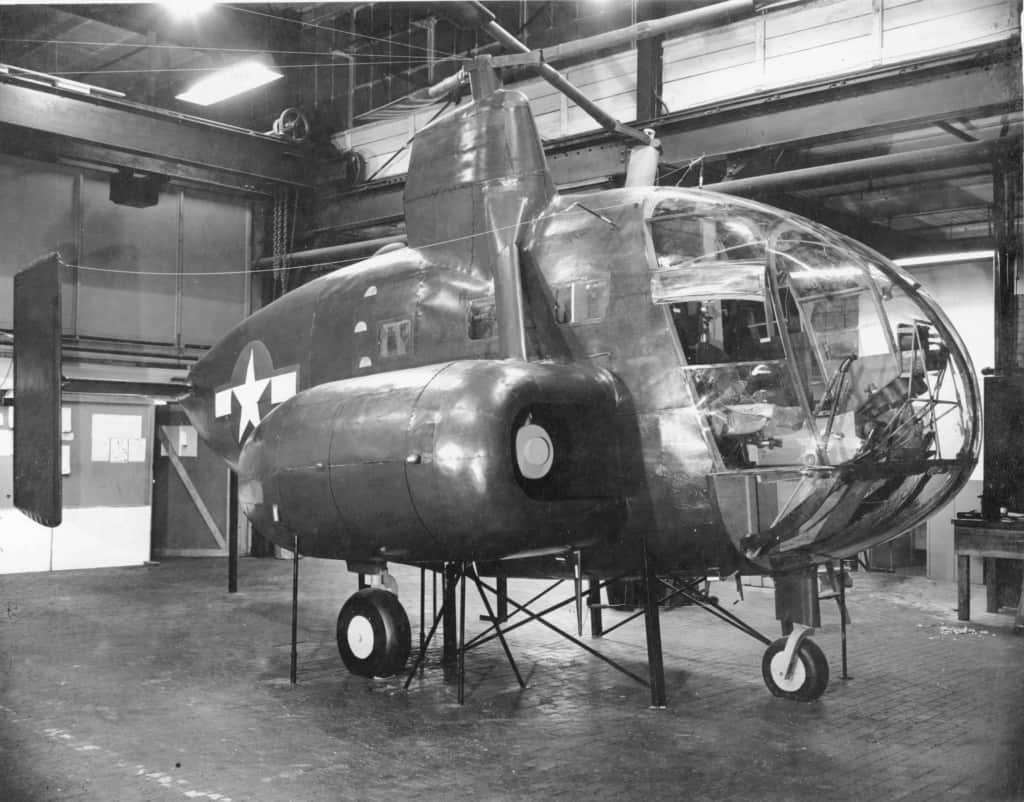
By August of 1948, the XR-10 had undergone an additional 52 hours of flight after the blade contact of the previous spring and had experienced no further blade contact problems. During November, Kellett and the Air Force entered into a long and detailed agreement for modifications to the XR-10. 203Engineering Memo 10159, Nov. 24, 1948 Kellett Correspondence Around January 1, 1949, however, the Air Force cancelled its contract for the Kellett XR-10. 204The Philadelphia Inquirer, Philadelphia, Pennsylvania, 22 Jun 1949, Wed, Page 6 When the Air Force cancelled its Kellett contract it cited “cost over-runs”–presumably meaning the impending large expense if it sought to fix a growing catalog of problems with the XR-10. This seems to address the expense to address that long list created in November as a result of the never ending problems that the XR-10 had endured. Kellett had sold the XR-17 and saved the company, however the Air Force seems to have had no illusions about the problems within the XR-10. Kellett Aircraft still held hope for a military contract and requested return of the helicopter for further testing, at no cost to the government.
In December of 1948, Bayer traveled to New York City for the American Hellicopter Society Meeting where, as he reported back to Kellett, Colonel Culbertson gave a:
“…speech mainly devoted to explaining the role of the helicopter in the Air Force procurement plans and the reasons why helicopter procurement, research and development funds are limited. In the present National Defense plans, fighters, bombers and guided missiles are getting the major portion of procurement funds. Helicopters, along with liaison aircraft, trainers, etc. are only auxiliary aircraft and, therefore, receive only a small portion of already limited appropriations. It was pointed out, however, that helicopters are getting not less than 10% of the Research Development funds at the present time. Another interesting point in Colonel Culvertson’s address was the possibility that in the future, small helicopter development would have to be financed, almost entirely, by private capital.” 205MEMO Bayer to Kelley Dec. 7, 1948.
In the immediate wake of the Air Force withdrawal, Bayer drafted a proposed contract for his continued employment with Kellett listing broad conditions under which he would agree to stay. It stated that the Phase Three test program would put him in charge not only of test piloting but also of the entire Air Force list of changes: He shall be responsible for the planning and scheduling of all instrumentation installations, maintenance and engineering changes on the aircraft. He shall be responsible for authorization of flights on the flight test aircraft. 206Engineering Memo 10182 Jan 4, 1949 In essence, as test pilot, he would be also be in charge of the craft’s reconstruction and he would not fly in it if he wasn’t happy with the product.
1948-lr-Kellett-XR-10-Phase-3-proposalThe draft contract with its organizational changes seems to have reflected the list of XR-10 modifications created by Kellett engineer with the Air Force in November. As such, it would have been supported by the engineers. The draft addressed in detail the organizational needs in the company that Bayer had seen as a test-pilot on the XR-10–the disconnect between policy and those whose lives rested on the safety of the helicopter. It reads like an ultimatum to Kellett. It seems to have been designed to ensure that Kellett, strapped for money, would not cut corners as it attempted to accomplish the Air Force’s long list, albeit without Air Force funding. Significantly, the proposal simplified the Kellett chain of command–implying that the problems at Kellett and with the XR-10 resulted, at least in part, from excessive organizational complexity. This would not be the last time Bayer would tell a company that its internal structure undermined its product and its sales goals.
Until, Hughes completed purchase of the Flying Crane, Kellett AirCraft did not have the money needed to accomplish the full list of needed fixes. The draft may never have been submitted by Bayer. It had no possibility of being adopted. Bayer made the decision to go with Hughes in Los Angeles. Hughes Aircraft had a horrible reputation. However, Bayer and his engineer friends seems to have lost all faith in Kellett. By February, Bayer had left Kellett’s employ. He appears to have signed a contract with Hughes on February 4th at $120.oo per week.
To save his company from collapse, Wallace Kellett sold the Flying Crane contract to Hughes Aircraft in Los Angeles. The other possible buyer was Fairchild and the Kellett engineers begged friends at Fairchild to save them from a sale to Howard Hughes. 207Porter p37 With the sale to Hughes came the military contract as well as Bayer, Stefano and 8 other Kellett engineers. 208For $150,000, Hughes Aircraft purchased from Kellett the military contract rights for its Flying Crane. Letter, Bayer to Tozer, March 18, 1952. Stefano states it was “$250,000. Porter p 37 Howard Hughes had built the world’s biggest plane. Now he wanted to build the world’s bigger helicopter. While Wallace Kellett had tried to fund this by building refrigerators, Hughes had a steady stream of Texas oil money.
In Los Angeles, with many Kellett parts, Hughes began to build its Flying Crane, the XH-17. 209The Times-Tribune, Scranton, Pennsylvania, 04 Jun 1949, Sat, Page 10. Long Beach Independent, Long Beach, California, 28 Mar 1950, Tue, Page 1 Nick Stefano became chief engineer on the project. 210Howard Hughes says “Go Large” AgainComplied by Jamie Dodson https://www.eaa190.com/uploads/3/9/0/6/3906574/propwash_2013-11_november1.pdf
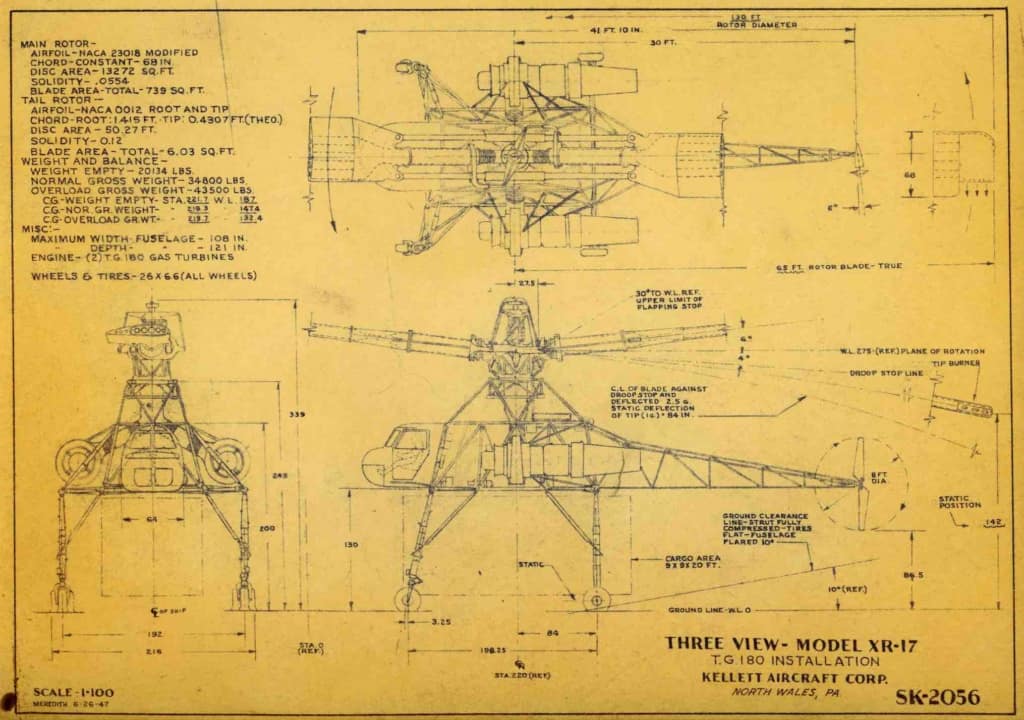
In September of 1949, in Los Angeles for Hughes employees, Hughes News announced Bayer’s test pilot role on the Flying Crane with a summary his flying history. Back east, the XR-10 was still flying and the publication included a short description that sounds like a sales pitch: …outstanding among present day helicopters in that it is the only one offering twin engine reliability.
1949-lr-Hughes-NewsTHE DEATH OF DAVE DRISKILL – tragedy
Meanwhile, by the end of January 1949, Kellett had moved its plant to Camden, New Jersey and the Air Force had returned the helicopter. 211Courier Post, Camden, New Jersey, 28 Jun 1949, Tue, Page 6 Probably that spring, returning to the position of Chief Pilot, Dave Driskill took over ongoing testing of the XR-10 with Charles Dougherty as co-pilot. 212Bayer left in February. Driskill and Dougherty flying. Courier-Post, Camden New Jersey, Aug. 19, 1949 p.7 The tail surfaces were modified and 60 autorotations performed, presumably to satisfy the Air Force that auto-rotations could now be conducted without blade collision. This appears to have been a small fraction of the changes the Air Force and the engineers had earlier discussed. The XR-10 seems to have attended the February 15, 1949 air show at Andrews Air Force Base in Washington. That May, the Philadelphia Inquirer published a long opinion article featuring the XR-8 and XR-10 and discussing, “The Vital Need For Helicopters.” 213The Philadelphia Inquirer. Philadelphia, Pennsylvania • Sun, May 22, 1949Page 166
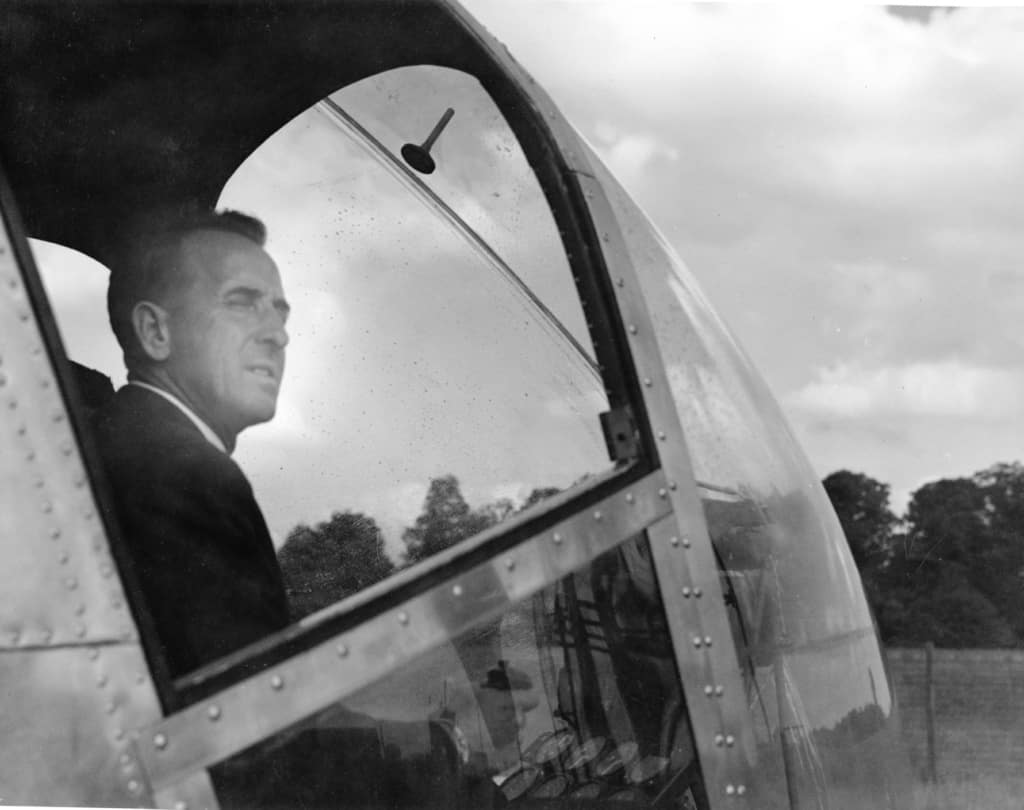
After modification to the tail surfaces, Kellett seems to have believed that the XR-10’s problems had been solved–at least if one focused only on the Air Force’s concern for auto-rotation and blade wobble.
In September of ’49, the craft was returned to the Air Force. That month, Air Force Test Division pilots flew the XR-10 to verify Kellett’s claims that things were in order. During a routine flight by the Air Force at Wright Field, the rotor blades again collided. 214XH-10 Helicopter- Development of Kellett Model, C.W.Kuehne, USAF, Air Material Command. AF TECHNICAL REPORT # 6163, filed December 13, 1952, p 3 They requested Kellett perform further flight tests. 215XH-10 Helicopter; Development of Kellett Model, C.W.Kuehne, USAF, Air Material Command. AF TECHNICAL REPORT # 6163, filed December 13, 1952, p 3 216 The Times-Tribune, Scranton, Pennsylvania,04 Jun 1949, Sat, Page 10 It seems likely that, once again, the Air Force pilots had not aggressively kept the nose down and the rotor spinning rapidly. The kind of aggressive flying that Driskill and Bayer had managed with the XR-10 was not common among helicopter pilots of that era.
Driskill had shown that he well knew how to accomplish successful autorotations in the XR-10. Yet, blade collision was not its most serious issue. Bayer and many engineers had been hired away by Hughes in Culver City, California. The further tests coupled probably with lack of maintenance and overall engineering rigor appear to have pushed the XR-10 to the point of catastrophic failure. As described by Casey Huegel in his article on Dave Driskill:
On October 3, 1949, Driskill and his thirty-year-old copilot, Charles Dougherty, took off from the Central Airport in Camden, New Jersey, in a Kellett XR-10, an all-metal, twin-engine experimental transport helicopter built under contract with the U.S. Air Force….
Shortly after 4:00 P.M., the XR-10 suffered a serious control malfunction while flying about one thousand feet above a peach orchard near Moorestown, New Jersey. In one final act of bravery, Driskill ordered his copilot to jump first, and Dougherty parachuted safely into a tree, suffering only a few minor scrapes. After further wrestling the controls and sinking quickly, Driskill leapt for his own life. Reportedly, just as he evacuated the aircraft, the shrouds of the pilot’s parachute caught in the aircraft’s rotors as it tilted during its fall. Entwined in the blades, Driskill plummeted to the earth with the aircraft. He died instantly. Kellett investigated the accident and suspected that the likely cause of the crash was a failure in the collective pitch system in the synchropter’s right rotor. Frequent rotary blade interference had plagued the XR-10 and its predecessor, the XR-8, which led the military to abandon its testing program for the XR-10 in the months before Driskill’s death. However, since the aircraft was so thoroughly consumed by fire, the actual mechanism that failed was never identified. 217The North Carolina Historical Review, Dave Driskill, The National Park Services, and Aviation on the Outer Banks,271, by Casey Huegel Vol. XCV, No 3 July 2018
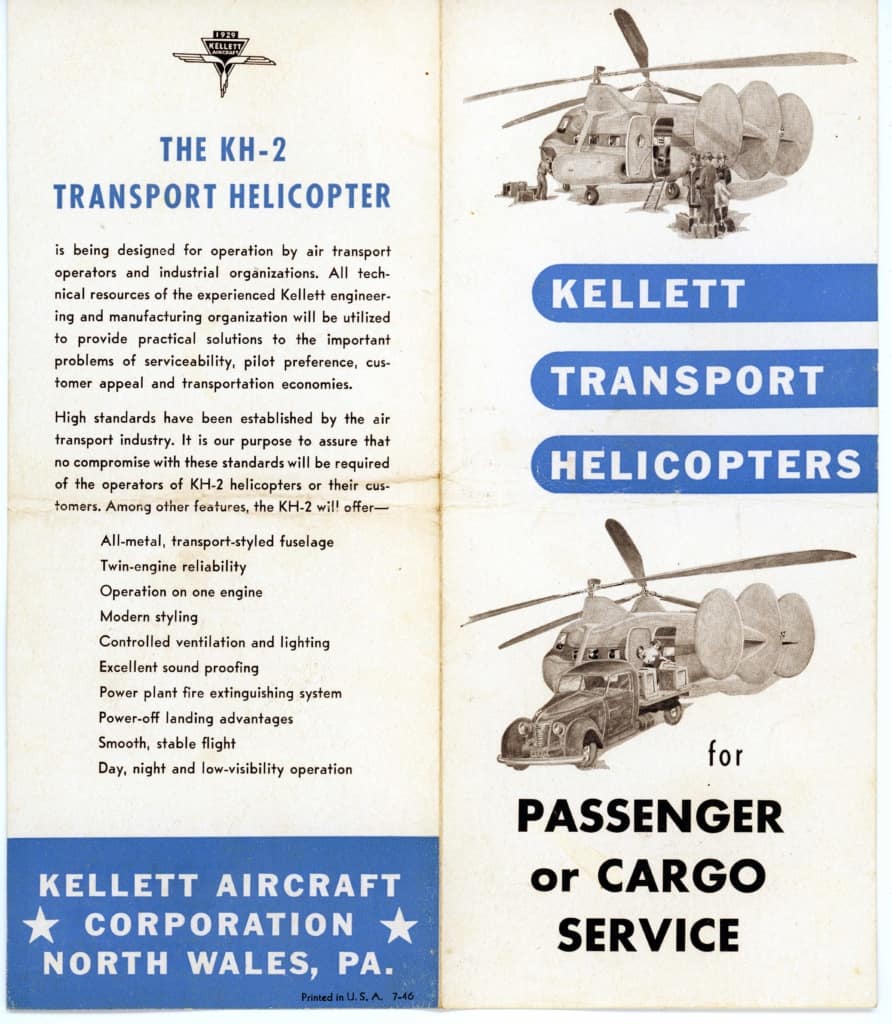
Kellett Aircraft’s investigation attributed the crash to collective pitch control failure. This is a questionable conclusion. It begs the question, why did the control’s fail. The XR-10 had had a long history of engine failure due to vibration and of transmission failure and overheating. Collective pitch control failure probably resulted from a larger problem.
The craft was so damaged after the crash that nothing could be determined from the wreckage. Driskill was dead. Dougherty’s account seems to be based on what he saw directly, during the few seconds of malfunction. It would have reflected very badly on Kellett for the company acknowledge its larger, long-known problems as a possible cause. It seems unlikely that, with a host of key engineers departed, Kellett Aircraft adequately monitored the problematic transmission and engines. Attempting to solve the blade collision issue, Driskill had recently put the craft through 60 successive auto-rotations–chasing performance problems while putting wear and tear on the craft. The questions then focus on Driskill. Did he know about the long list of fixes drawn up by the engineers and the Air Force after he departed Kellett? Perhaps he did not know and no one told him. Or perhaps he did know but felt that his test piloting skills would get him through any mishap.
With the cumulative effects of internal vibration–“lack of flywheel effect” and ongoing problems with oil flow–particularly after dozens of auto-rotations, the best explanation for the crash is that a transmission failed and caught fire in the air. As described in the Test Flight Log and the Crab Sheets, transmission overheating repeatedly occurred during tests. Temperature in the lower right transmission, and oil flow there, had repeatedly been a problem. The February 1948 Engineering Report on the results of Phase 1 stated: It has been found that transmission cool is marginal for sustained maximum powers in ambient temperature of 95 to 100 degrees F. 218Engineering Report p2. The temperature that day was only about 70 degrees. However, the craft had been subjected to 60 auto-rotations. A transmission coming apart could easily sever linkage between the pilot controls and the rotor blades.
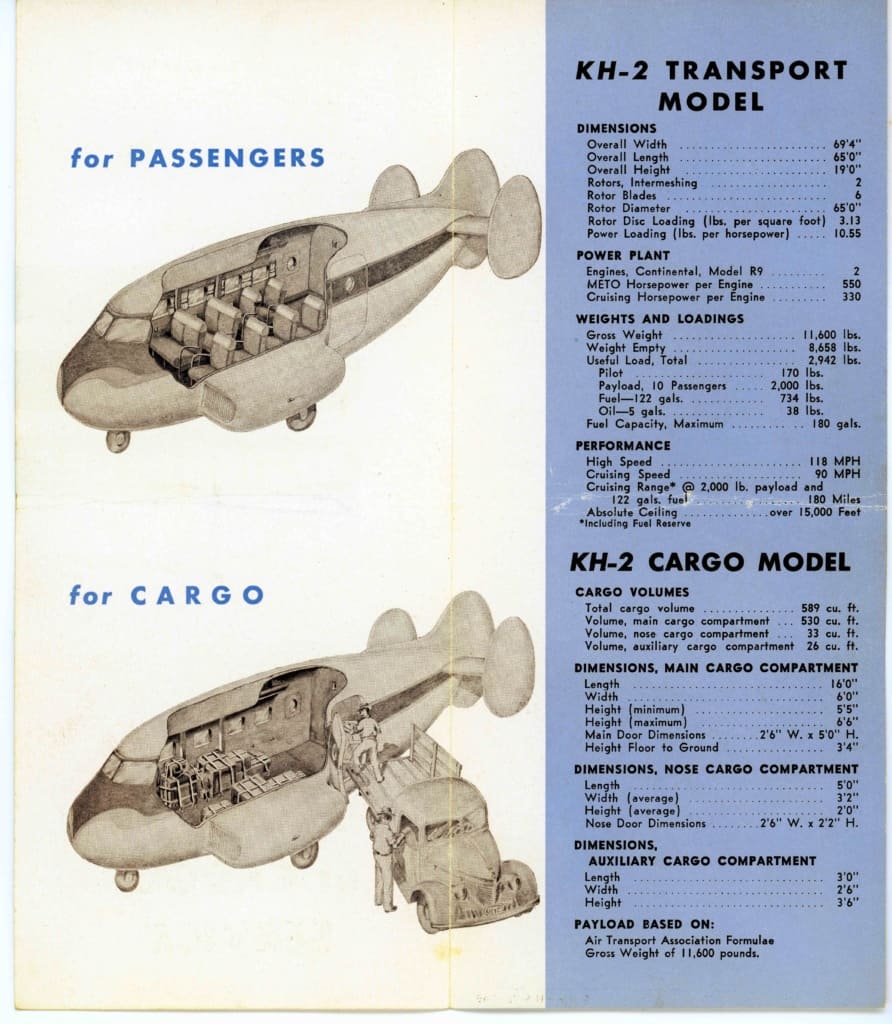
Some of the reports support this theory of catastrosphic failure. After the crash, the co-pilot, Dougherty, said that the XR-10 had experienced problems with its motors. One newspaper account reported that the craft burst into flames in the air: One man was reported killed and another parachuted to safety this afternoon when an experimental helicopter burst into flames over Moorestown and crashed into Strawbridge park. 219Courier Post, Oct. 3, 1949, p.1
Failure of the engine or transmission would result in a loss of rpms, prompting the pilot to put the nose down and auto-rotate to the ground. Driskill had done this dozens of times. However, if the control linkage had been severed, he could not put the nose dose and, as the blade slowed the craft would begin to turn. Another paper reported that the helicopter went into a spin. 220The Philadelphia Inquirer, Oct.4,1949 p 3 These blades wobbled and dipped when slow. Driskill apparently had enough control to steady the craft while Dougherty jumped out. The moment he let go to jump, the craft tipped to his side, the blades swinging low and catching him.
Leaving Kellett Aircrafts’s employ in February of 1949, that month Bayer and his wife drove to California. Rita was pregnant. They made a 6 day drive, arriving in Los Angeles on March 8. Now, an obsessive test pilot, Bayer logged on hotel notepaper every penny spent along the way–$3198.
The few times my father mentioned Driskill to me, it was with a sad sigh about a lost friend. That was all. As he had written Rita, among the men in this business at this time, when a pilot died the other men would say, “Isn’t that too bad, he was a good fellow–” etc. And then, he’d be forgotten. “Oh, well, that’s the way it goes.” 221LETTER, AL TO RITA, Feb. 25, 1947
AMERICAN HELICOPTER – arriving in Los Angeles
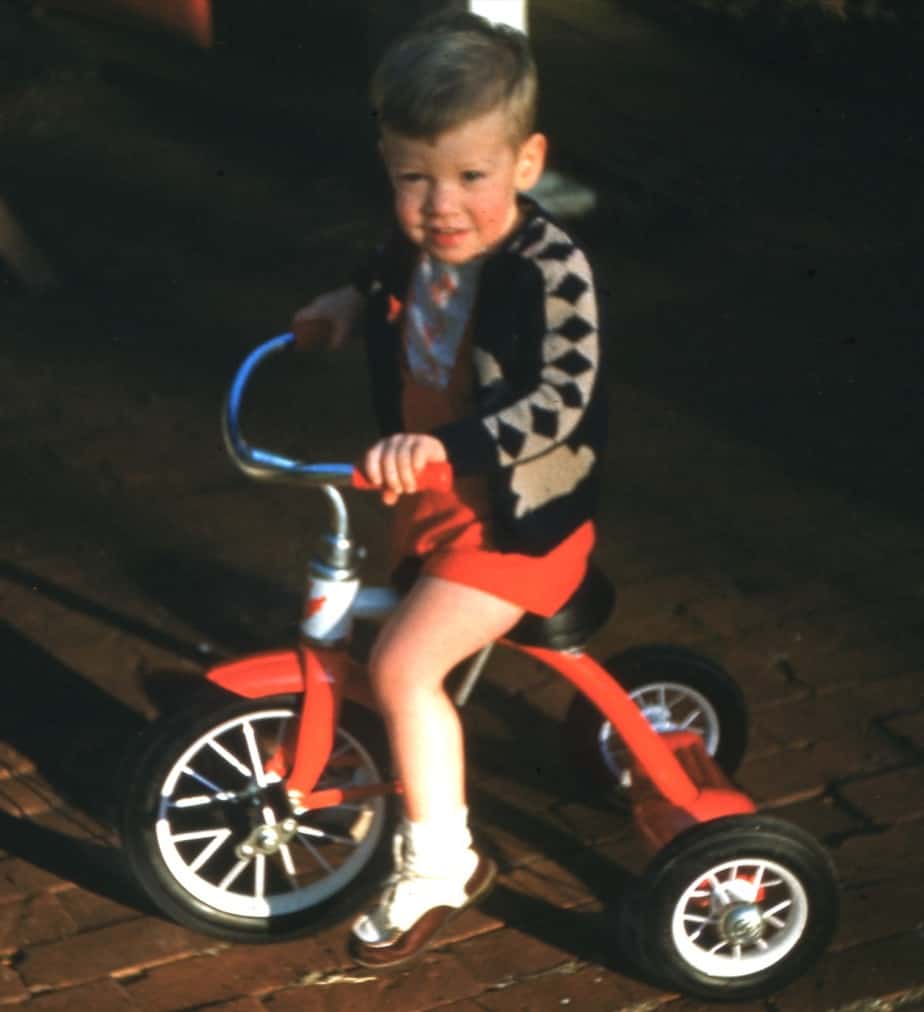
Arriving in Los Angeles fundamentally to test pilot the Flying Crane, now a Hughes Aircraft project, Bayer took on additional test piloting jobs for American Helicopter and for McCulloch Aviation.
In the early ’50s, the pressure and resulting anxiety Bayer felt were already palpable. He would sometimes arrive home tense. A tricycle might be left in the driveway and sometimes he yelled. Bayer tried to mitigate the effects of his anxiety and vigilance at home. He became the family photographer. Rita loved being around the glamour of his work and travels. However, she was sometimes resentful that Al so often left her behind to travel. And, from his perspective, she never seemed to understand or appreciate the pressure he felt or how he attempted to rise to the occasion.
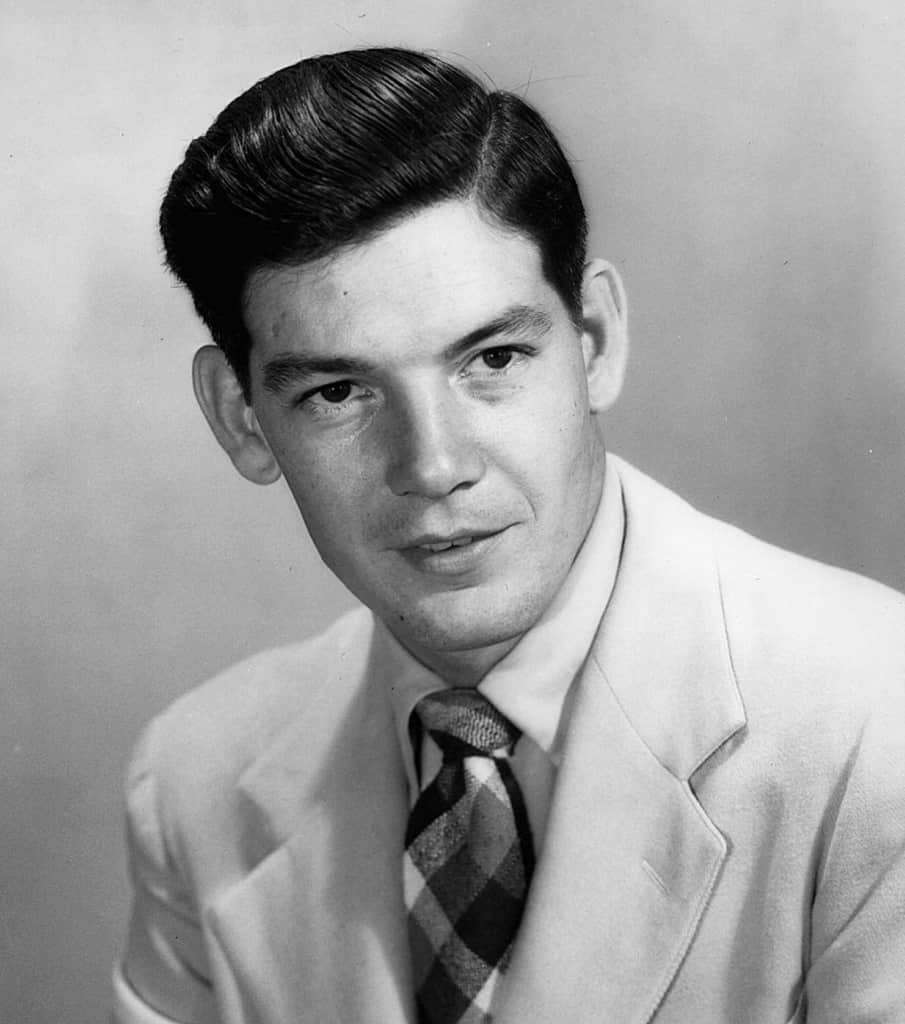
In Manhattan Beach, the American Helicopter Company was trying to create a small helicopter using hot-cycle, pulse-jet engines mounted on the ends of the rotor blades–similar to Bensen’s efforts. With its first fgliht on 12/31/49, Bayer’s ongoing flights f the XA-5 seem to have been part of an Air Force contract that lead to a “Jet Jeep”. The pulse jets proved too loud.222https://www.nationalmuseum.af.mil/Visit/Museum-Exhibits/Fact-Sheets/Display/Article/195803/american-helicopter-co-xh-26-jet-jeep/ (Video of the Jet Jeep.) This seems to have been the first time the military entertained the idea of the helicopter as a small, observation craft. The military rejected the Jet Jeep because, like the Flying Crane, it was so noisy. This explanation is curious, still it implies a dawning concern by the military for a helicopter capable of more than cargo carrying. 223See The American Helicopter Documents listed at https://www.libraries.wright.edu/special/collectionguides/files/ms364.pdf A small ram jet helicopter had been flown by McDonnell Aircraft at Wright Field in 1947. 224Rochester Democrat and Chronicle, Nov. 16, 1947 p1
The American Helicopter Company was first formed in 1947 and later acquired by the Fairchild Engine and Airplane Corporation in 1954. The first project of the company was the two-seat open-cockpit XA-5 “Top Sergeant”, which was based on the lower fuselage and undercarriage of a Sikorsky R-6 with an open rear boom and small rudder. It was driven by two tip-mounted 43kg AJ 8.75 pulse-jet engines driven by a fuselage-mounted compressor, and made its first flight in January 1949. This was followed by the single-seat XA-6 “Buck Private” with the same pulse-jet propulsion and a simple open frame structure. American Helicopter then constructed the XA-8 single-seat collapsible helicopter under a U.S. Army contract, flying the first aircraft in June 1952. R.Simpson “Airlife’s Helicopter and Rotorcraft”, 1998 225http://www.aviastar.org/helicopters_eng/american_top.php
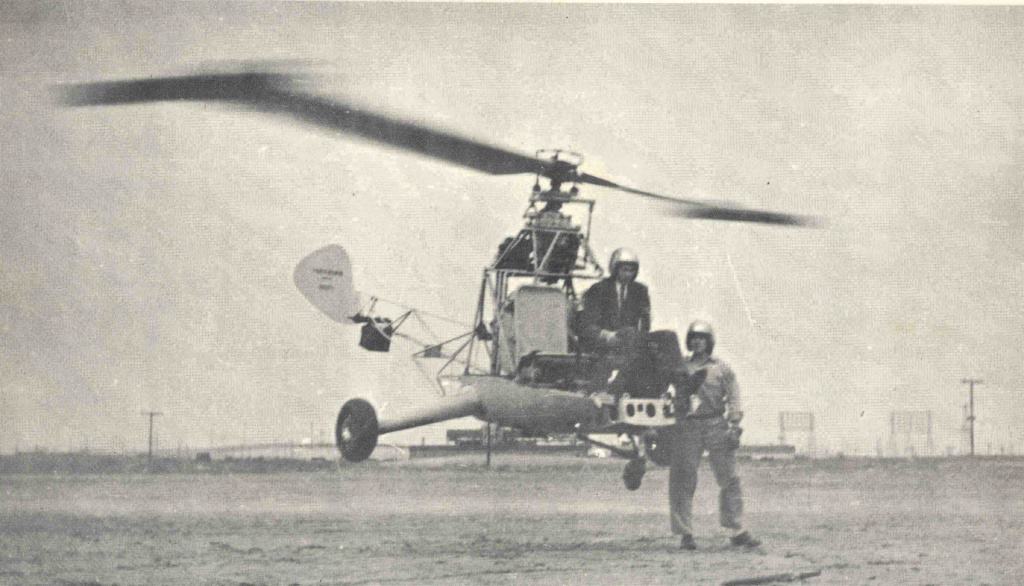
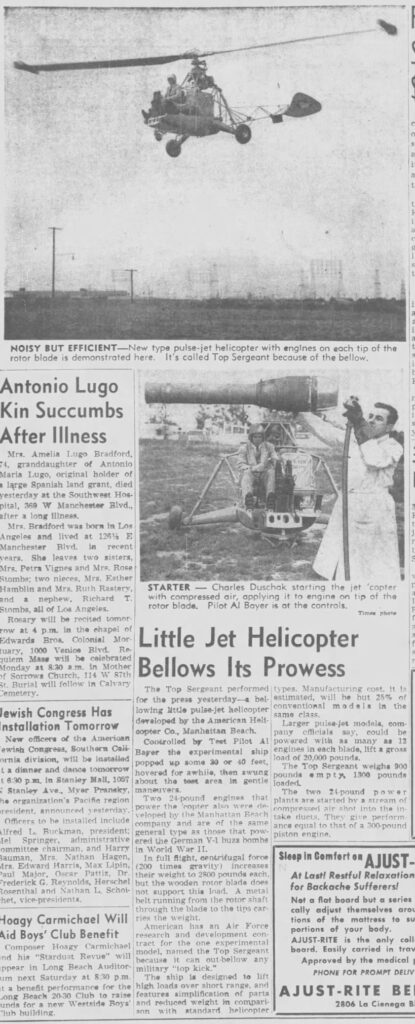
He once told me:
There were jets lit on the tips of the rotor and a tube running through the rotor blades from a gas tank mounted behind me. One day, while testing, a few feet off the ground it went into ground effect and completely came apart. I found myself sitting strapped to the seat in the middle of large field littered with parts. I was unhurt.”
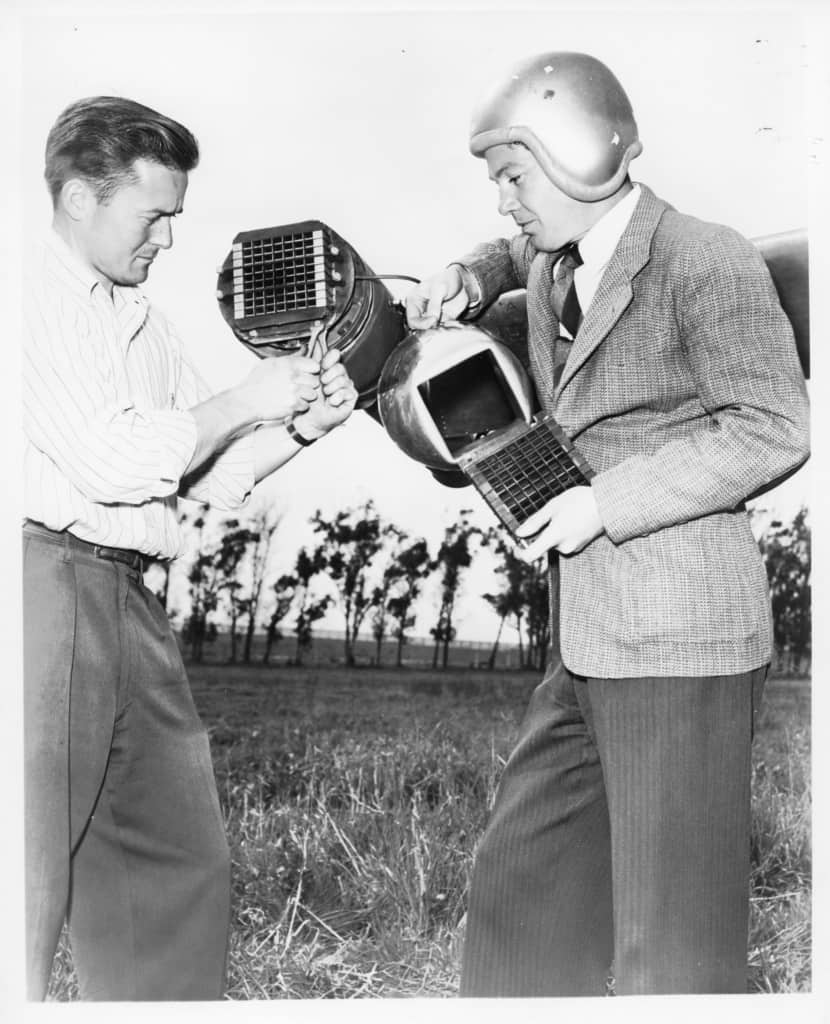
Bayer wore a suit and tie for the flight tests. His “Hollywood” dress represented more than personal flair, it went along with his personal ambitions– for the development radical new rotary aircraft design, elevating the lowly rotary wing to respectability. Having worked in the industry for five years, he’d seen that while the owners could hire engineers and the engineers could built aircraft, th fvitte ability to sell those aircraft remained in short supply–disorganized, scattered, unfocused. Production seemed centered on bright ideas that no one could outline well. He’d tried to help Kellett by writing an article on the XR-10 and seen the Air Force worry about state secrets. Now, for American Helicopter. “Scholer Bangs, Publicity Consultant,” typed up a technical description of the XA-6, quoting American Helicopter Company President Denny Corwin. The humor seems to mask frustration and to foreshadow his full transition into sales. He referenced the technological related project–the Flying Crane. The piece concluded with a reference to a five cent cigar.
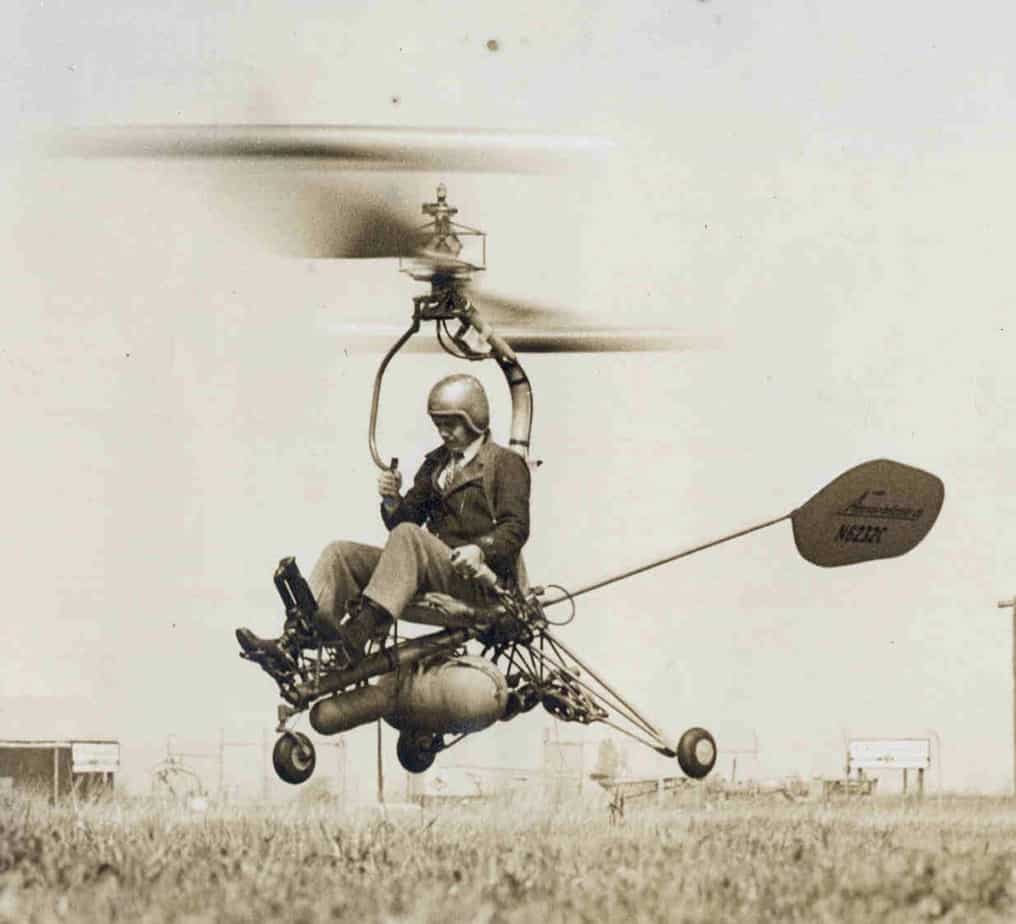
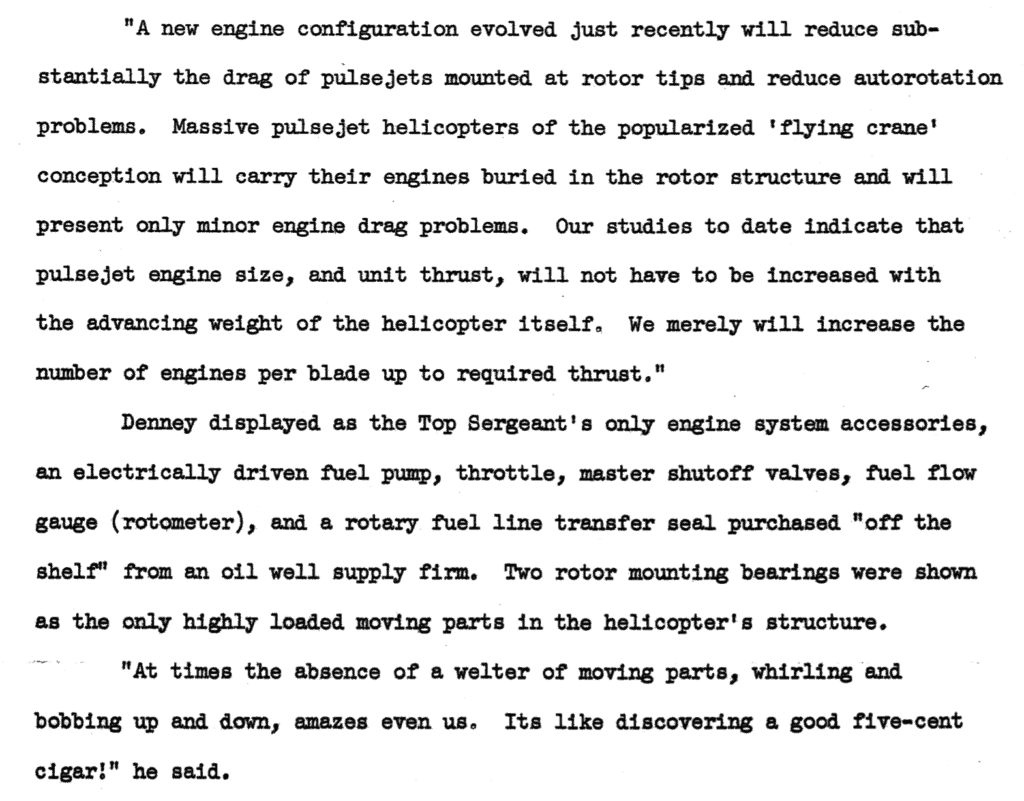
That October, Bayer received news of Dave Driskill’s death in a telegram announcing the funeral. Driskill’s death must have been traumatic for Bayer. The two men had flown a complex, flawed machine, their hands moving rapidly to keep the XR-10 from causing their demise. Driskill’s death would have underscored for Bayer the need to take charge and be vigilant–as he had already had to do with the engineers at Kellett. He could no longer be merely the bubbly, foppish kid who loved risk, sand songs and did math equations.
In 1952, Bayer wrote of his mentor: I was not at Kellett when Dave Driskill was killed–had I been it might have been me rather than Dave. (Dave was a very close friend of mine and was greatly responsible for my opportunities and success in rotary wing field.) 226Letter, Bayer to Eliot Tozer, March 31, 1952 p. 3. Tozer was writing an article for True Magazine, I have not found an evidence that it was actually written
THE HUGHES FLYING CRANE – gazing up at the moon
During February of 1949, Al and Rita moved into their new house in Brentwood, California, near Hollywood. From Kellett, Nick Stefano and other engineers also arrived.
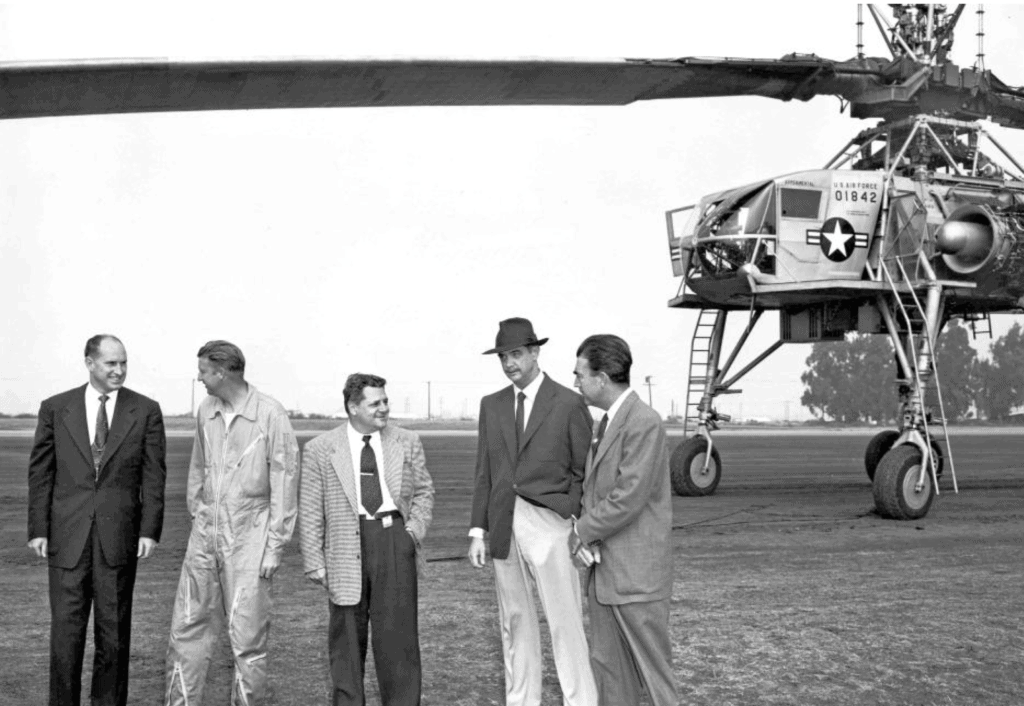
That October, Bayer flew Ava Gardner to Palm Springs for Howard Hughes. As he later wrote about it. 227Unbelievable.
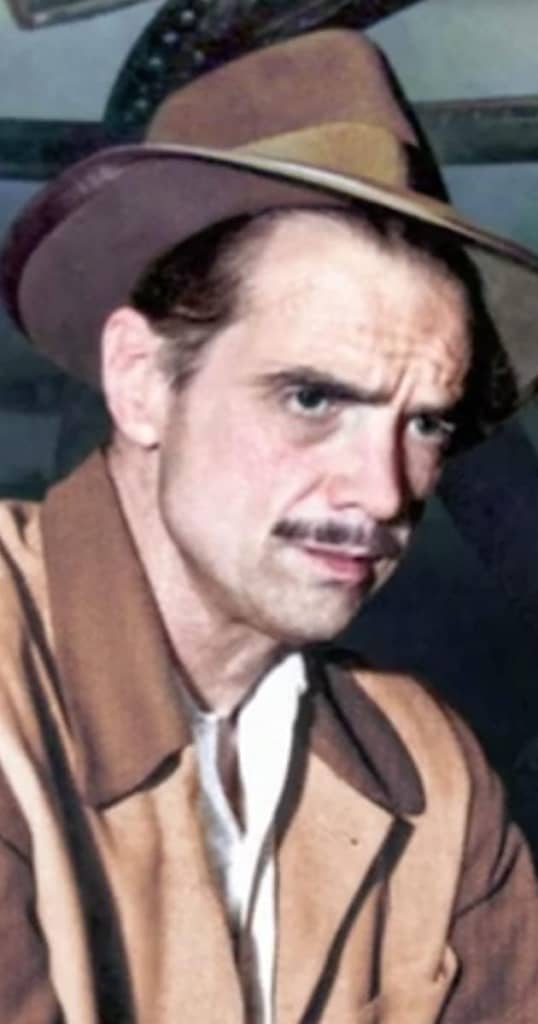
Howard Hughes had many airplanes and his favorite to fly was the B-23. When he was in an airplane, he was the only pilot and usually had a flight engineer/mechanic in the cockpit with him. One of his planes was a Douglas A-20 attack bomber which had been converted to an executive airplane. It had a fighter pilot single cockpit with a jump seat behind it (former gunners station) and a pushed up cabin in the rear. Howard chose me to be his personal emissary and take V.I.Ps on trips in the A-20. One weekend I was instructed to fly General Ira Eaker, the VP of Hughes, and General Karl Spaats, Chief of Staff of the Air Force, to the Rogue River of Oregon, salmon fishing. Another weekend I flew Bill and Randy Hearst to the Hearst Castle. One morning at 3 a.m. a crew from the plant in Culver City range my doorbell to tell me that Mr. Hughes wanted me on the phone. (I didn’t have a phone because it was a new house in a new development. The next day, because of Howard Hughes, the phone company was putting a special line into my home). I went to a pay phone and called Howard’s office on Romaine St. and was told that the A-20 was warmed up sat the Hughes Air Strip (the longest, 15,000 ft., private airstrip in the world–all grass)_, that a limousine would;d arrive with Ava Gardner, that I was to fly her to Palm Spring, not let her spend a cent of her own money and do anything she wanted to do. Ava arrived and was a gorgeous female. Instead of putting her in the plush compartment in the rear, she rode in the jump seat behind me and looked over my shoulder. Half way to Palm Springs flying this hot A-20 attack bomber with Ava looking over my shoulder I thought: “This is better than test flying”–“Unbelievable! Later, Ava invited me to lunch at a closed set for the movie “Carriage Entrance” at R.K.O. (Hughes owned R.K.O. at the time). 228Unbelievable.
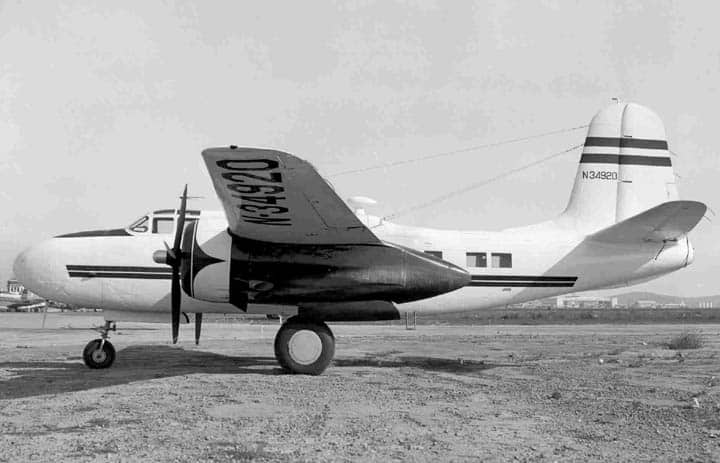
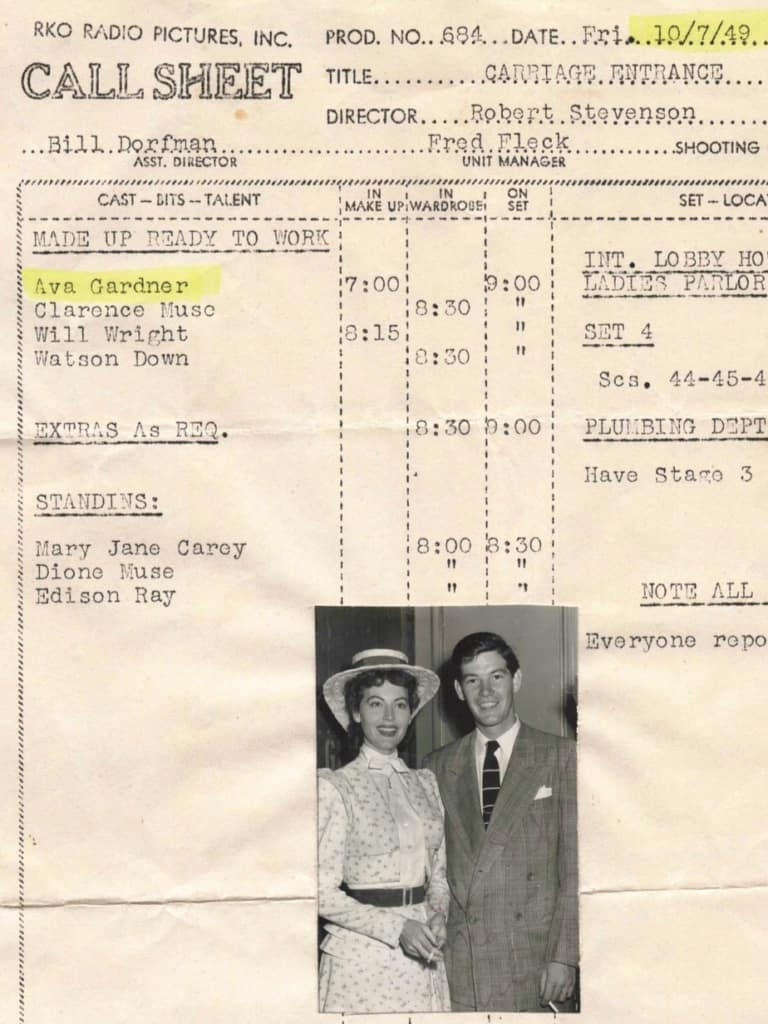
While doing high speed rotor tests one day, there was a control system failure and full pitch went in to the rotor and it took off vertically with no control. I immediately shut off all power and came came down to earth with the huge rotor wiping out a small building on the ground. I was concerned about fire from the tip jets spilling on … the fuselage. So I said to Benny, the G.E Engineer, in the cockpit with me; “If someone yells fire, don’t wait for me, I’ll be jumping out-30 feet down. Fortunately there was no fire.. 229Unbelievable. Also see, Bayer Statement of Events, Jun 29, 1950
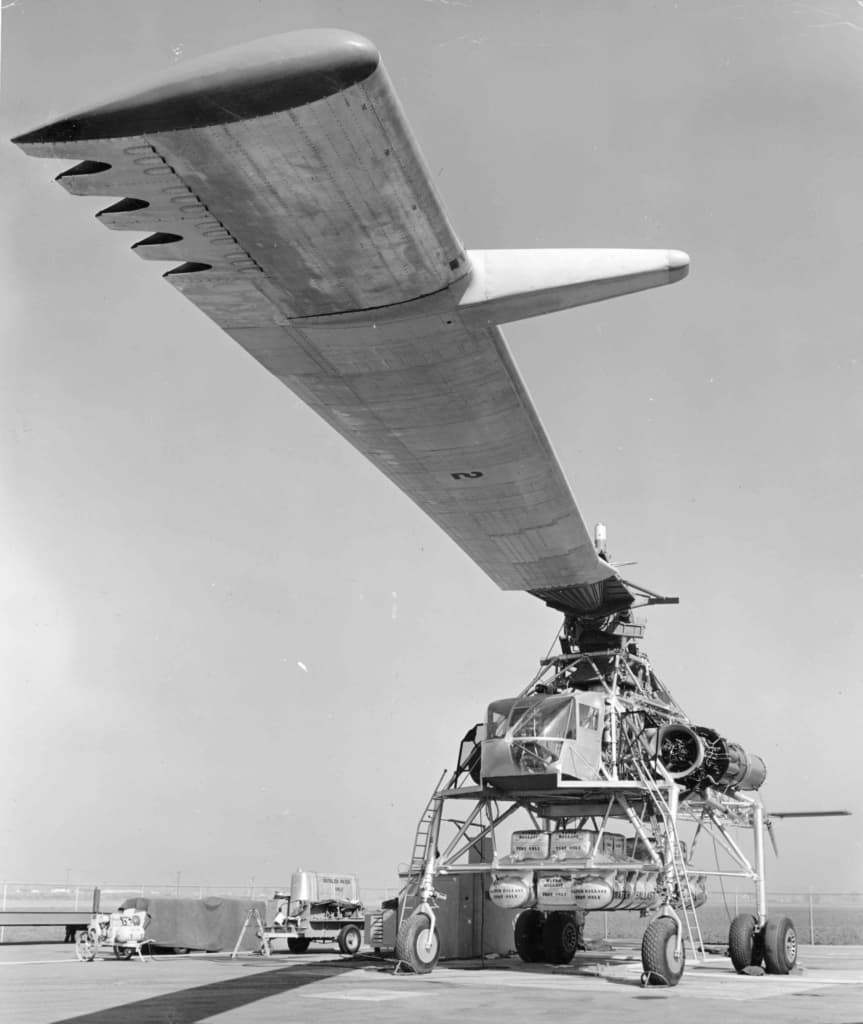
Bayer served as the first test pilot for the Hughes version of the Flying Crane. Blades and other parts arrived by rail from Kellett Aircraft in Pennsylvania. 230When the XH-10 went to W-F, Hughes Aircraft purchased rights to XH-17 contract from Kellett and I signed contract to come to Hughes in California to test XH-17. After I left Kellett, the Air Force … Continue reading
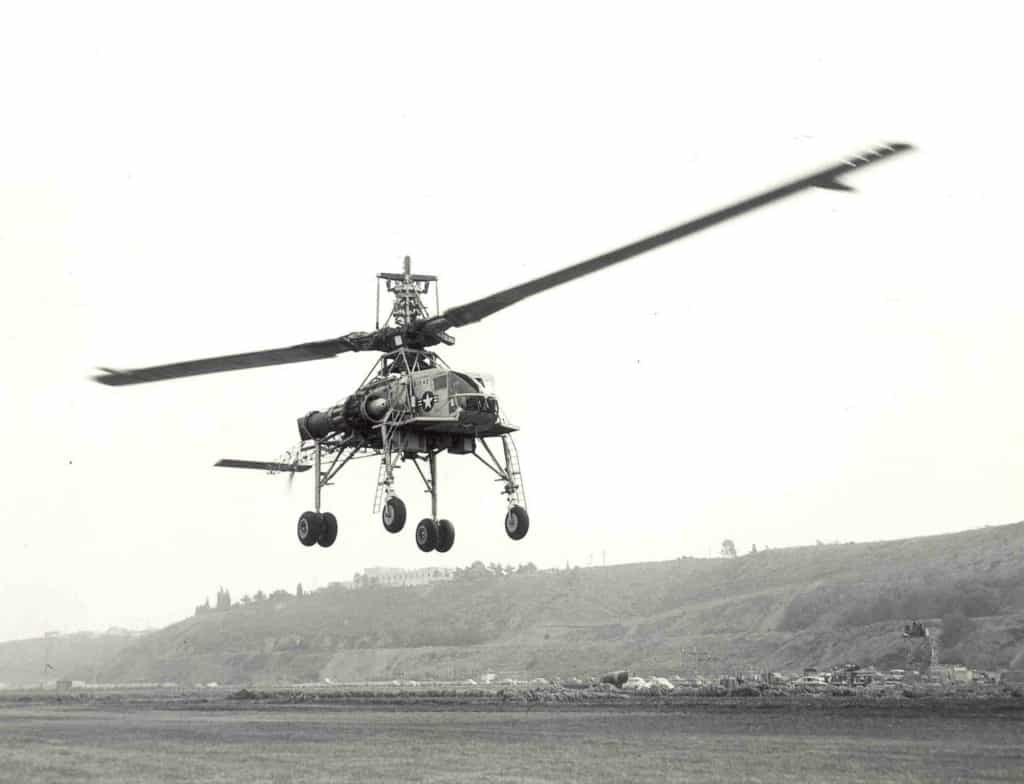
That summer of ’49, he flew the JOV-3, predecessor of the 14, a design by Gish Jovanovich. At Hughes, into September of ’49, waiting for XH-17 testing to begin, Bayer piloted B-25s as Hughes Aircraft tested airborne radar equipment. 231Hughes News, Sept. 23, 1949
In January of 1950, ground vibration tests were performed on a 1/10 scale model. Hughes Aircraft rolled its Flying Crane out of the Culver City hanger in March of 1950. 232Long Beach Independent, Long Beach, California, 28 Mar 1950, Tue, Page 1
When the XH-17 Flying Crane was ready for test, Howard Hughes sat in the cockpit with me one day and we discussed his testing the world’s largest airplane (Flying Boat) and me the largest helicopter.
In January of 1951, with Bayer at the controls, ground-testing damaged the Hughes Flying Crane. 233The Los Angeles Times (Los Angeles, California, 24 Jan 1951, Wed, Page 16 234His date of 1949 for first flight in this list appears to be an error. AL BAYER Background Resume for Society of Experimental Test Pilots For Upgrade to Fellow. The main rotor bearing oil temperature was rising rapidly. Bayer later wrote:
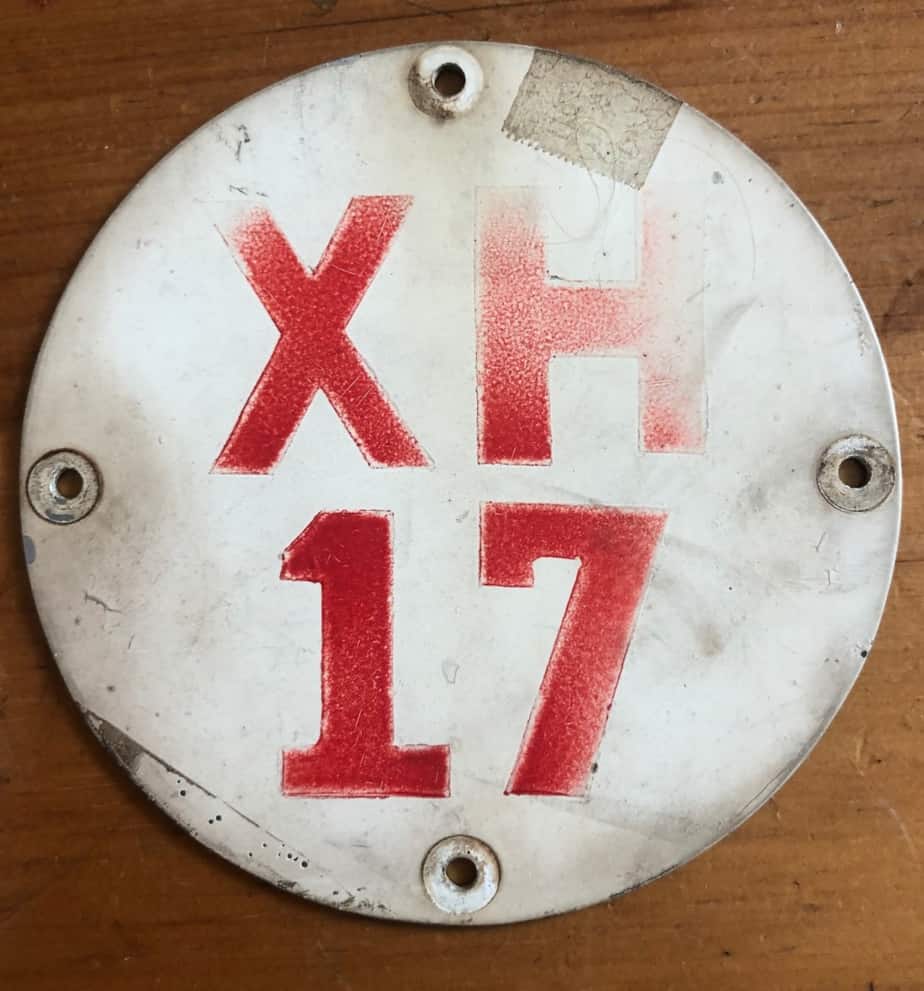
Bayer wrote of this in 1952 (before the XH-17 flew with Gale Moore piloting):
…while doing the initial ground rev-up tests of the XH-17, a fatigue failure in the control system while the rotor was turning at full speed, caused the machine to take off and rise to a height of approximately 15 feet without control. This was the first, and only time the XH-17 has left the ground. 235Letter Bayer to Tozer, March 31, 1952 p 3
Probably that summer or fall, still employed by Hughes, Bayer got a call from Howard to go down to the airfield and take pictures at night of a nose wheel on his recently acquired B-25 that had collapsed while landing. 236Observations on the photo by a contributor: The aircraft in the picture is clearly a B-25 WW II bomber. The problem is which one. Howard Hughes’ B-25 with collapsed nose gear, photo by … Continue reading
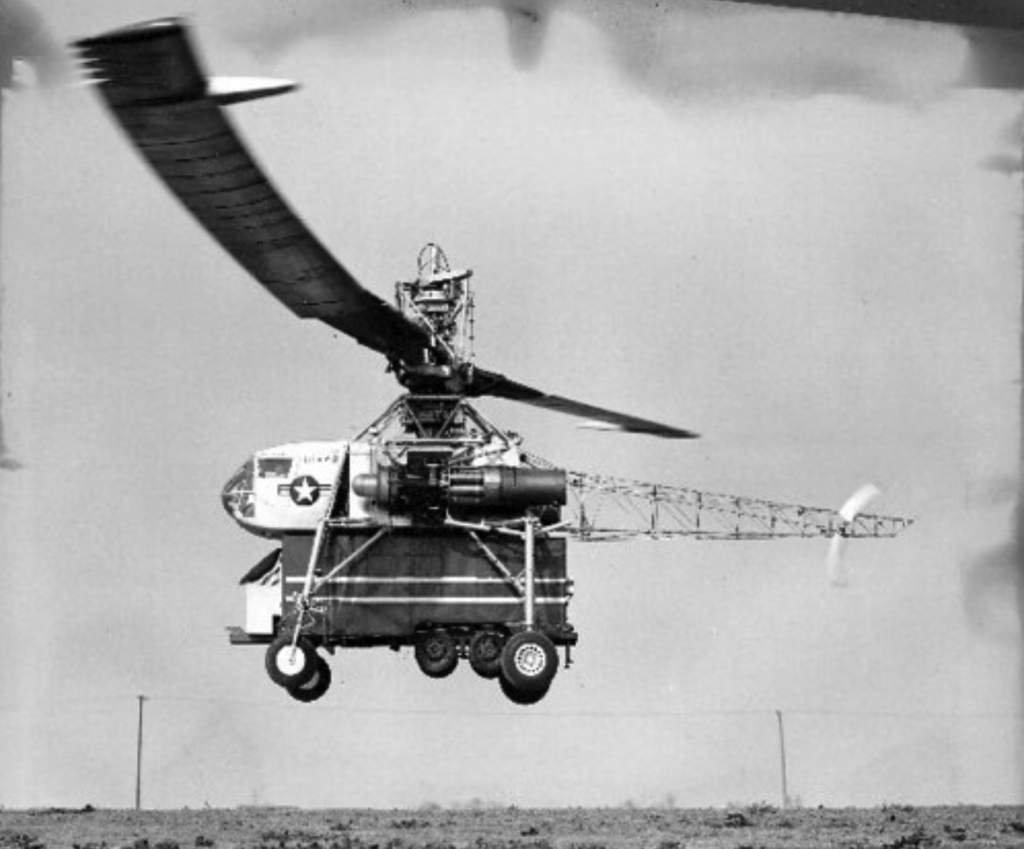
Bayer later wrote that they wanted to him to continue as test pilot for the Flying Crane as an employee but that he only wanted to stay under contract–apparently intending to focus on the McCulloch Aviation helicopter efforts. 237Unbelievable. Hughes Aircraft continued to work on the large Flying Crane. Another rough, aborted effort occurred during September of 1952 with Gale Moore piloting. 238Nick Stefano’s account: On September 16, 1952, he had hovered the aircraft, technically its first flight. It rose only a foot, but when Moore slowly pulled collective pitch, the machine lurched … Continue reading On October 23, 1952, Moore finally flew the XH-17. However, due to the cost the Air Force cancelled further development during August of ’53. And, the huge blades built by Kellett about 1948 were now fatigued.
At the same time, the Department of Defense had become concerned that engineers were quitting Hughes Aircraft due to Howard Hughes’ obsessive meddling. 239http://www.hughesscgheritage.com/hughes-aircraft-history-1932-1986-transcribed-by-faith-macpherson/ The same problem occurred with his meddling in RKO Films. 240Hollywood Vault: Film Libraries Before Home VideoBy Eric Hoyt p. 162 That year, Hughes turned over Hughes Aircraft to the Howard Hughes Medical Institute. 241Hughesworld: The Strange Life and Death of an American LegendBy Arelo C. Sederberg 242Also see: The Struggle for Consolidation: The Hughes Era http://home.earthlink.net/~danielsage17/hughes.htm However, the helicopter division remained within Hughes Tool Co. as the Hughes Tool Co. Aircraft Division–ostensible still under Howard Hughes yet, it appears, with little direct influence by him. By 1955, the Flying Crane’s rotorblades had expended their useful life. The proect was ended and the parts scrapped. 243Howard Hughes says “Go Large” Again Complied by Jamie Dodson https://www.eaa190.com/uploads/3/9/0/6/3906574/propwash_2013-11_november1.pdf 244Video of the Hughes Flying Crane.
Video of the Flying Crane in flight, after Bayer left the program.
During the early 50s, probably as he increasingly focused on the MC-4’s light rotor blade design, Bayer moved beyond his early hero worship of Howard Hughes. Howard wanted big. Bayer increasingly focused on small. The engineers who were his friends also focused on small. Their market would always be both the military–who long had no affection for the small helicopter–and the mid-century modernist who sought glamour and cool, who saw in the post-WWII version of the autogyro dream a fabulous, technologically driven freedom. History and the media have lauded Howard Hughes as the epitomy of glamour tied to technology and, in so doing, have missed the deeper tie forged by those wedded to the “everyman” aircraft.
Bayer wrote an account of his last conversation with Howard and, in so doing, documented his split from big and the Howard Hughes image to which he had been devoted. In this account, Bayer’s preference for a sporty convertible contrasts Howard’s preference for a bigger, heaver, safer car. This mirrors what became Bayer’s long-standing passion and a struggle against bulky helicopters–an effort that would define his career into the 1960s. It presages both his efforts when he returned to the Hughes company and how it ultimately failed to understand what he and his engineer friends were building.
The last time I saw Howard Hughes, I had flown the A-20 to Palm Springs and he had flown down in the B-23. I rented a new Buick convertible and stayed at the beautiful Shadow Mountain Club. One afternoon, while sitting by the pool I was called to the phone. It was Howard Hughes telling me he was flying back to Culver City that night and wanting me to have dinner with at Chi Chi Night Club at 6:30. I went to Chi Chi and sat in a booth by the window near the entrance. Howard came in dressed in an open collar white shirt, his tan jacket with patches on the elbows, and his sweaters. He walked right past me and disappeared behind a door. A little later I looked over and he was peering out the door crooking his finger for me to join him. He had taken over the manager’s office and had a table cloth and two place settings on the manager’s desk. After dinner he asked me to drive him to the airport. When we drove away from Chi Chi, I said, “this new Dynaflow Transmission (in the Buick) is very smooth”. He said, Yea, but I don’t like convertibles. Their dangerous.” I then said, Did you see Johnny Meyer’s new Caddilac.” He said, “Johnny has to have a Caddilac to put me up a front. I can afford to drive my Chevy.” He then asked me to take him to pick up his luggage. We went through town and pulled up front of a typical motel. He went in and came out with a small bag and a white shirt rolled up with his laundry inside. When we pulled up beside the B-23 at the airport, he got in, shined a flashlight around the carpet, then around the headliner, sat in the cockpit checking everything out, cranked up the engine, taxied out and took off all alone. As I drove back to the Shadow Mountain Club with the top down looking up at the moon and stars, I thought to myself: “I wouldn’t trade places with you for all your money.” 245Unbelievable.
Bayer’s emotional separation from the sway of Howard Hughes’ mythology mirrored and came at the time of his shift from big to small–from the world’s largest helicopters to pursuit of the most maneuverable. Though he would leave Hughes Aircraft for several years and then return to the newly formed Hughes Helicopters, by mid 1951 Bayer had a clear sense that big was wasting his time and that his passion, like that of his friends in engineering, lay in small deft craft unlike anything yet constructed.
LITTLE EGGIE – the McCulloch MC-4
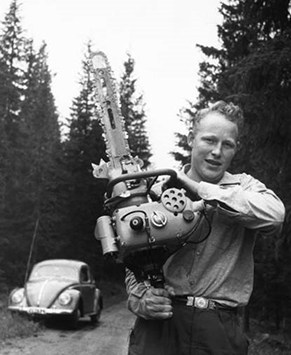
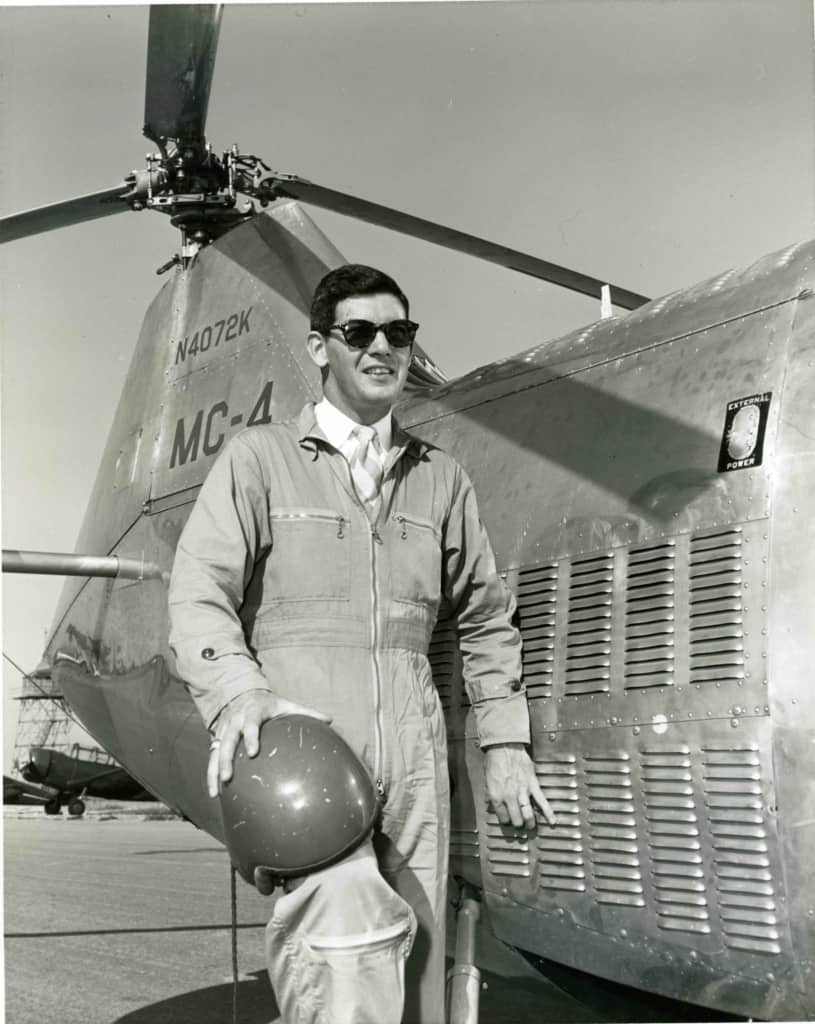
Robert P. “Bob” McCulloch Jr. (May 11, 1911 – February 25, 1977) was long enamored with the personal helicopter. Born to wealth, he graduated from Stanford in 1933. Interest in outboard motorboat racing, he opened a hobby shop in Milwaukee. This lead to development of motor superchargers and the creation of McCulloch Engineering. With the advent of WWII the company built small drone aircraft for targets. In 1943 he left McCulloch Engineering to form McCulloch Aviation. 246News-Record Neenah, Wisconsin Wed, Sep 01, 1943 · Page 5 “The family type helicopter was, he thought, the answer to the traffic problem.” 247Evening Vanguard Venice, California • Fri, Sep 24, 1965Page 3 In 1945, he moved the effort to Los Angeles. 248Los Angeles Mirror, Los Angeles, California • Wed, Aug 20, 1952Page 45 He purchased 15 acres next to the Los Angeles airport. The company continued to make drone aircraft, developing a new die casting method for engine parts. This lead to the development of a lighter chainsaw engine–lighter by half than existing designs. He manufactured for others and branded his own full chainsaw in 1948.
In 1951, McCulloch purchased Drago (Gish) Jovanovich and Kozlosky’s Helicopter Engineering Research Corp–HERC– design–begun in Pennsylvania. In Los Angeles, Jovanovich redesigned the JOV-3 as the McCulloch MC-4.
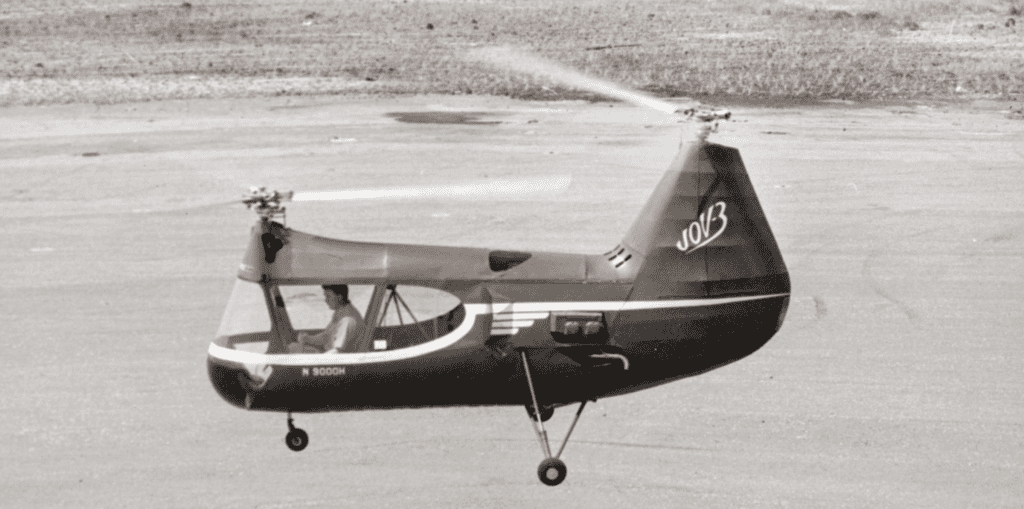
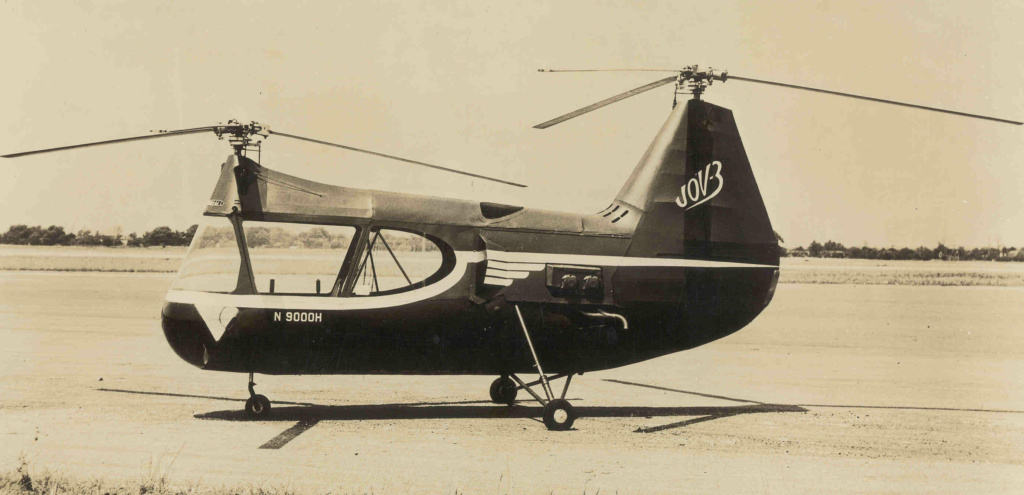
Bayer and Jovanovich infused the MC-4 effort with a host of dreams and spin-offs–perhaps more exuberance than Bob McCulloch could tolerate. He was not the first or the last to be overwhelmed by Bayer working with the engineers. The MC-4 became a pivotal point both in terms of design though Bayer faced the conservative vision of the helicopter that still pervaded the military. Kellett had created a big helicopter at a distance from the military and, ultimately, tried to get the military to settle for a craft that barely flew. With the MC-4, Bayer and Jovanovich hoped that design and maneuverability would self-evidently produce a craft the military wanted. A photo session captured some of the MC-4’s early test flights–perhaps prior to certification.
1950-lr-EARLY-TEST-FLIGHTSBayer remained in the contract test-pilot position at McCulloch until April of 1951 when he became an employee– Director of Sales, Service and Flight. 249Date is based on letter, Bayer to Tozer, March 18, 1952 p.1 He had already begun to publicize the helicopter. In 1952, Bayer ended his work for Hughes Aircraft on the Flying Crane. 250Date is based on letter, Bayer to Tozer, March 18, 1952 He continued to test pilot for American Helicopter.
Bayer began to fly the MC-4 during early March, 1951. A cover story in the March 21, 1951 LA Times described him flying the MC-4—an “aerial baby buggy”–at Los Angeles International Airport for its first public presentation. The article stated that the craft was the first helicopter to be manufactured in the city.
Test pilot Al Bayer climbed aboard to give the first public demonstration. He revved up the 165 horsepower motor and the ship climbed like a homesick angel, then he eased off an it hovered motionlessly except for the whirring rotors. He continued to put the Mac IV through its paces and the ship responded all the way like saddle broken Pegasus. 251Los Angeles Times March 23, 1951, p46 A series of photos appear to show the LAX demonstration of the MC-4.
1951-lr-MC-4-AT-LAXBy August of 1951, Bayer had been joined at McCulloch by Jack Harter, Robert Wagner and probably others who had worked at Hughes. Another MC-4 demonstration at LAX came that October–the first public presentation of this little helicopter. 252
During May and October of 1951, respectively, Jovanovich patented a new hollow blade manufacturing design and then an articulated hub that became fundamental to this and subsequent efforts. A man constantly exploring new ideas, these two patents may have been his most successful. He seems to have never sold the designs but rather licensed them. Interestingly, Jovanovich’s first patent for the MC-4, during February, was of its “ornamental design”–its sleek contours, reminiscent of his work on gliders during World War 2 and illustrating the focus on style and aerodynamics that would also define subsequent work. Jovanovich also obtained a patent for the “ornamental design”. 253https://patents.google.com/?q=Jovanovich That look–the mid-century modern sleekness–is not evident in any pictures or drawings of the Jovair, upon which the MC-4 was based. While, in flights, the MC-4’s performance did not realize that dream, both aesthetically and technically it paved the way for the Hughes 269A.
1952-lr-FLYWHEEL-MAGAZING-BAYER-article.-MC-4At McCulloch Aircraft, Bayer produced a large amount of publicity for the little craft–more paper than on other projects. That year, he completed a color brochure on the MC-4.
1951-first-MC-4-Brochure-FULL-BROCHURE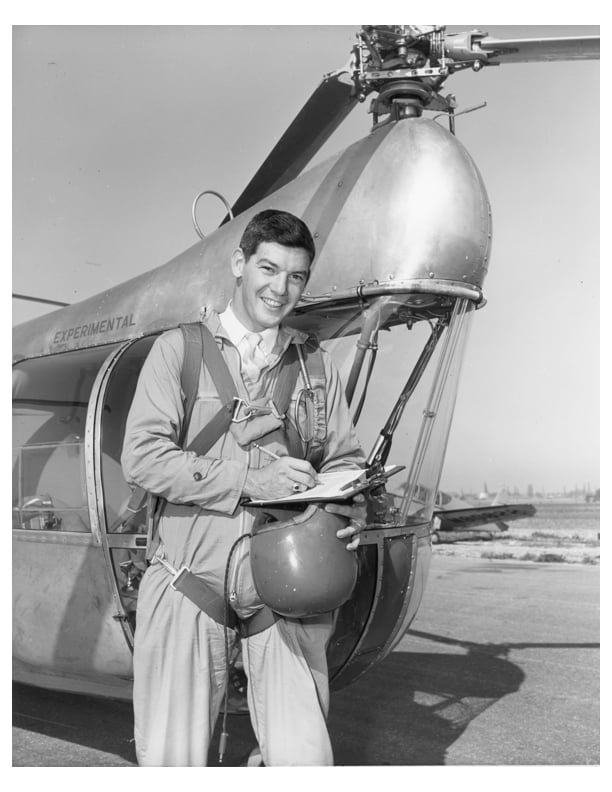
An elegant yet underpowered helicopter, the MC-4 contained engineering innovations by Gish Jovanovich that would impact the future. With Bayer heading sales, the conceptual ideas that he and Jovanovich embraced represented huge strides that seem to have anticipated a revolution in Army Aviation’s thinking about the helicopter that would soon follow. The test pilot turned salesman, Bayer, and the chief engineer, Stefano, at least for a time, would no longer be held back by company bungling and lack of direction.
At McCulloch, for the MC-4–Bayer oversaw a variety of professionally written sales materials–photos with models, color pictures, color corporate newsletter and at least two extensive, color press folders or notebooks. He seems to also have had a hand in moving McCulloch and its engineers into close conversation with those in the military who dreamt of an attack helicopter.
McCulloch filed a patent for a tandem rotor blade helicopter–one with nacelles like the XR-10. The patent referenced Jovanovich’s 1948 description of the JOV-3 in Aviation Week. 254Connor Fig. Kellett tandem rotor design proposal. Patent No. 163,938, filed September 9, 1950. Patent references JOV-3 in AviationWeek, Jan.19,1948
Here are two photo sessions of tests flights after experimental certification, probably summer 1951:
1951-Factory-test-flights-lr-MC-4During ’51 and ’52, the company put together a “Detail of Specification” for the MC-4.
1953-lr-American-Helicopter-Magazine-Cover-MC-4Bayer created a color brochure on the MC-4.
1951-first-MC-4-Brochure-FULL-BROCHUREIn 1952, Bayer tried to position the MC-4 as a candidate for a Hollywood movie.
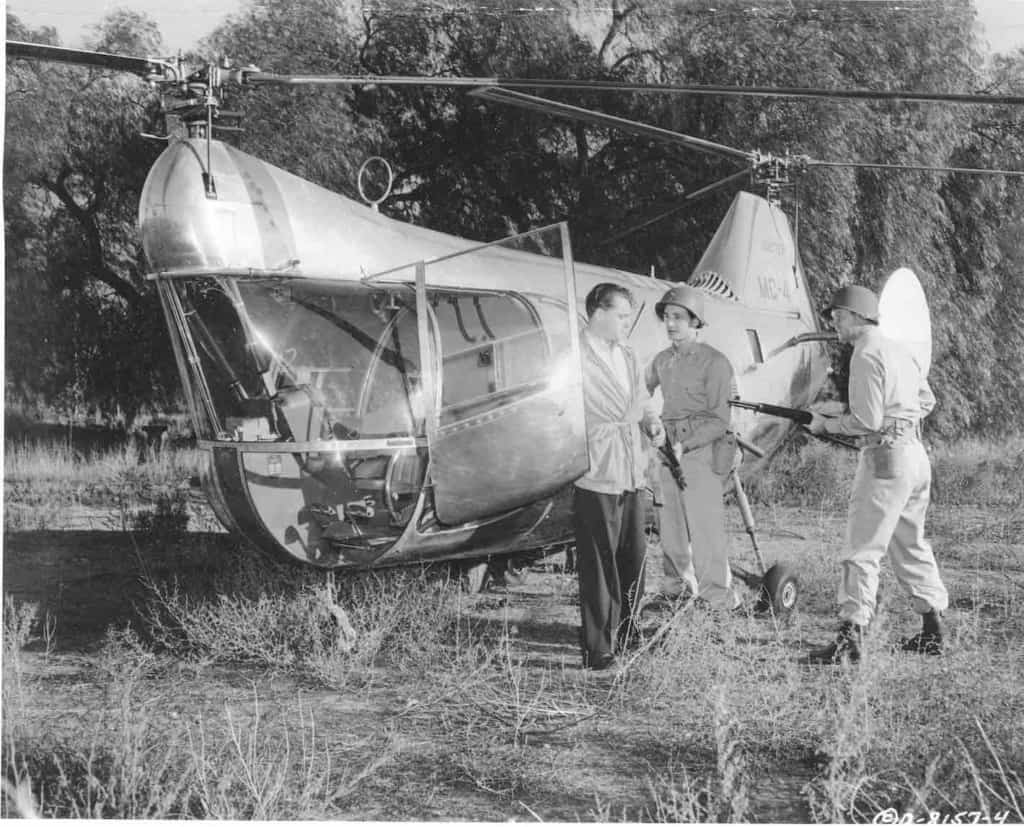
On May 3, 1952, McCulloch Aircraft hosted the western regions chapter of the American Helicopter Society with theMC-4, other helicopters and speakers from the military. 255Daily News (Los Angeles, California) 03 May 1952, Sat Page 5 Bayer had some posed shots taken.
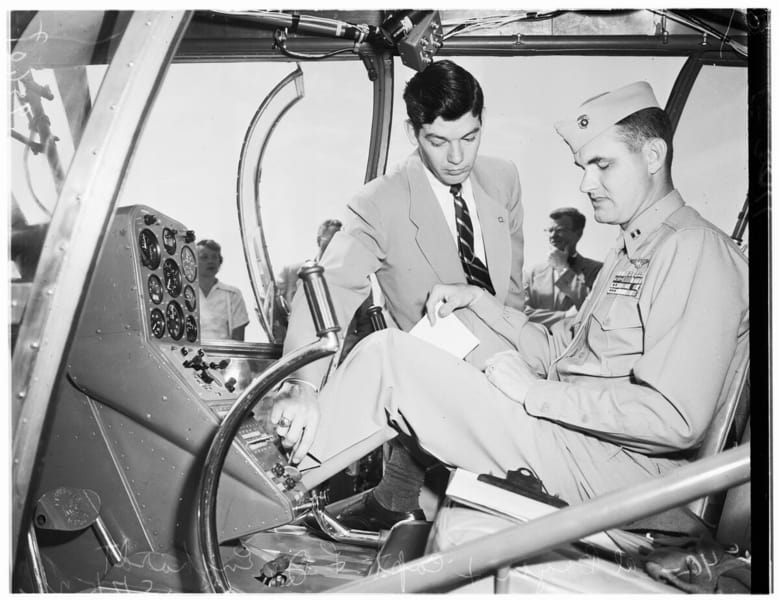
Legacy Identifier: EXM-N-9560-017/EXM-N-9560-017~1.tif
Unique identifier: UC11735237
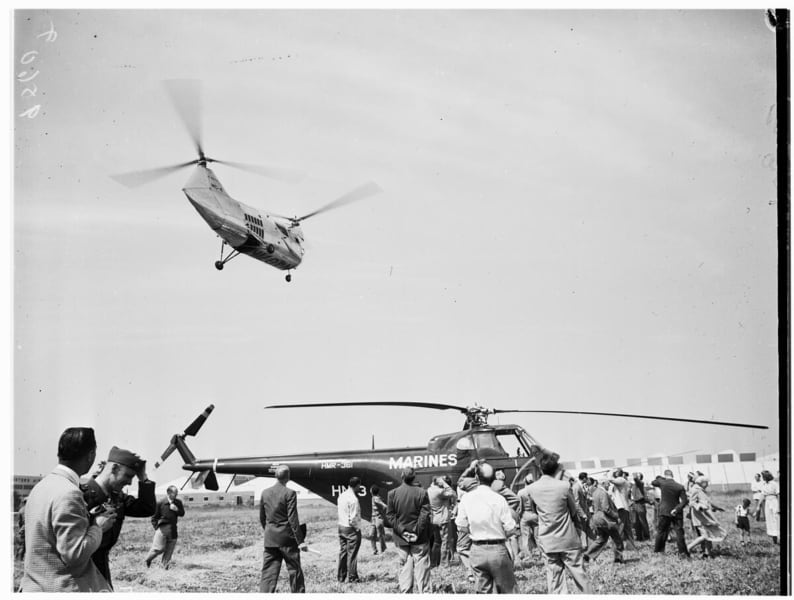
Legacy Identifier: EXM-N-9560-017/EXM-N-9560-017~2.tif
Unique identifier: UC11735203
A July 10, 1952 Torrance Herald article dubbed the machine “Little Eggie.” The craft was still labeled “experimental.” Helicopters were often called “eggbeaters.”
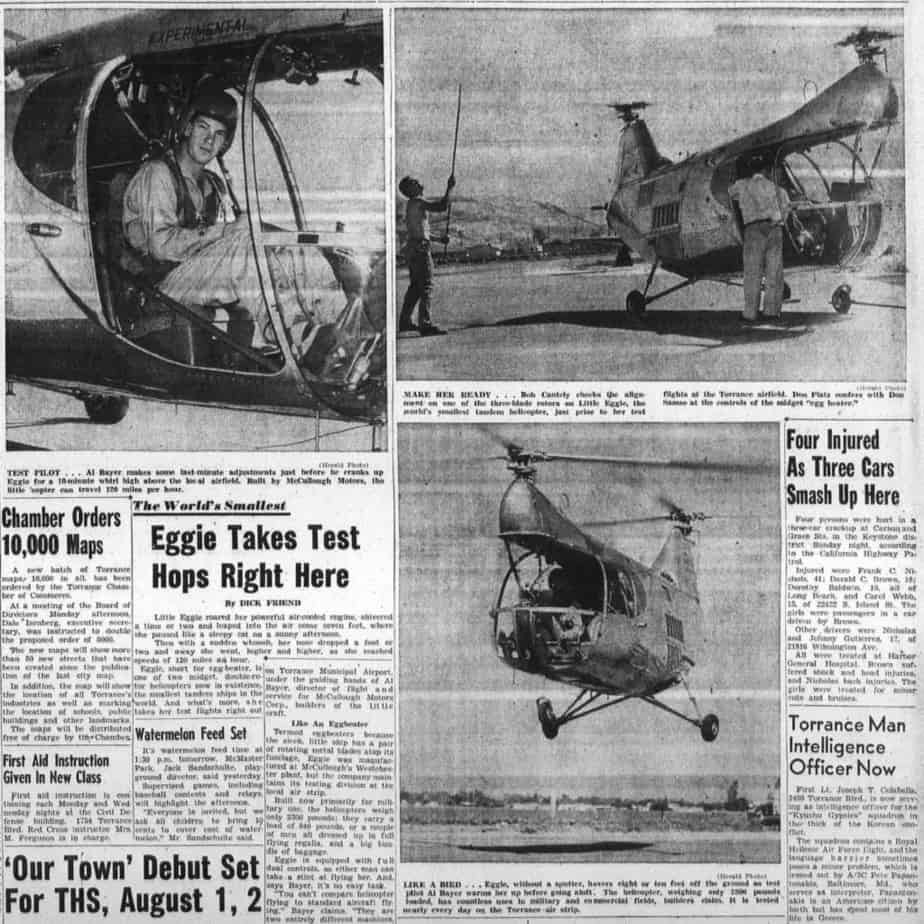
Meanwhile, Bob McCulloch seems to have been engaged in press that would portray his company as a worker’s paradise and a hotbed of ideas. An August, 1952 newspaper article seems to have foreshadowed the problem that would cause problems the following years—McCulloch liked to see himself as a generous boss but didn’t really want to pay his employees more.
Higher insurance benefits? No Better hospitalization? No. Higher bonuses? No.
“They’ve got 12 bowling alleys in the basement of that cafeteria.’
The cafeteria is the latest addition in a $3,500,000 expansion program that bring there McCulloch Moors investment close to $#10,000,000 (another subsidiary as since been purchased.)
It cost more than #$1,000,000 and is probably worth every cent to McCuilloch and his 1600 employees, who pays only 80% of the food cost and only the pinky’s fee to bowl. They can bring their families. 258Mirror News Los Angeles California 22 Aug 1952 Fri Page 50
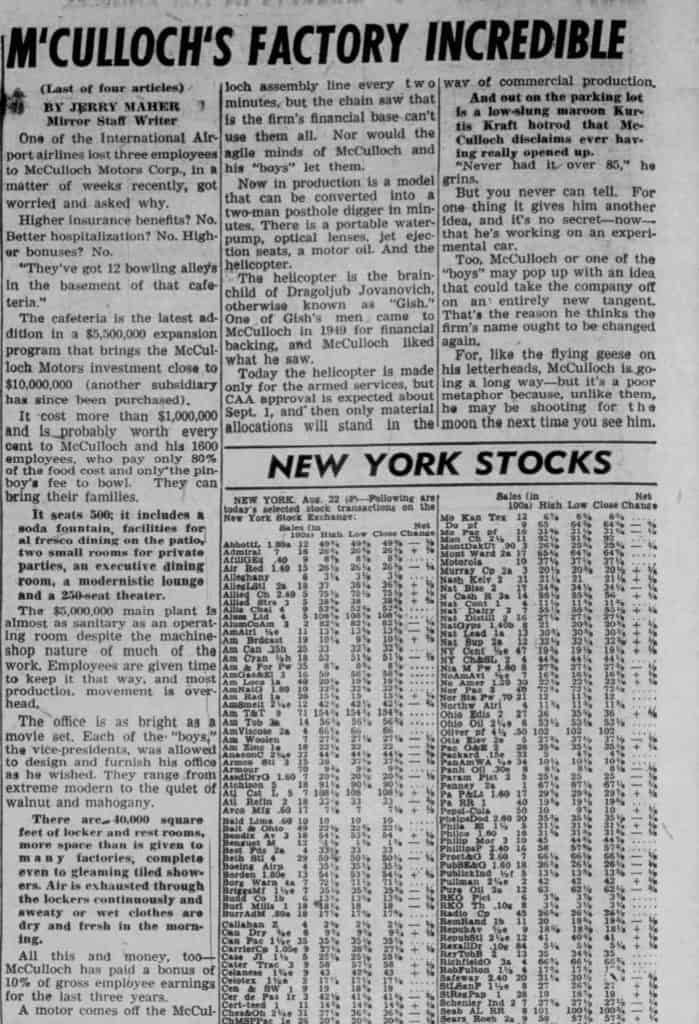
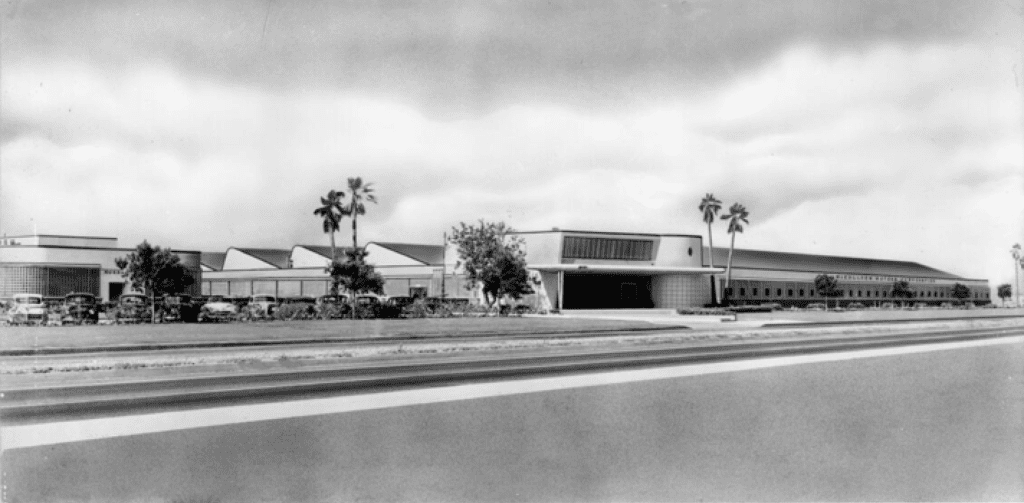
Unique identifier: UC123648
By July of 1952, two MC-4s had been built. By September, the craft had been accepted for CAA flight testing. 260The Los Angeles Times, Sept 28, 1951 p. 40 All the above flights and publicity efforts came prior to Type Certification., Bayer began the MC-4 Type Certification flights in Palm Springs during September of 1952. 261Daily News Los Angeles, California • Sat, Sep 27, 1952Page 22262Bayer puts this in February, 1951. Unbelievable. American Helicopter, April, 1953, p10. Also see the article shown here…Daily News (Los Angeles, California) · 27 Sep 1952, Sat · Page 22
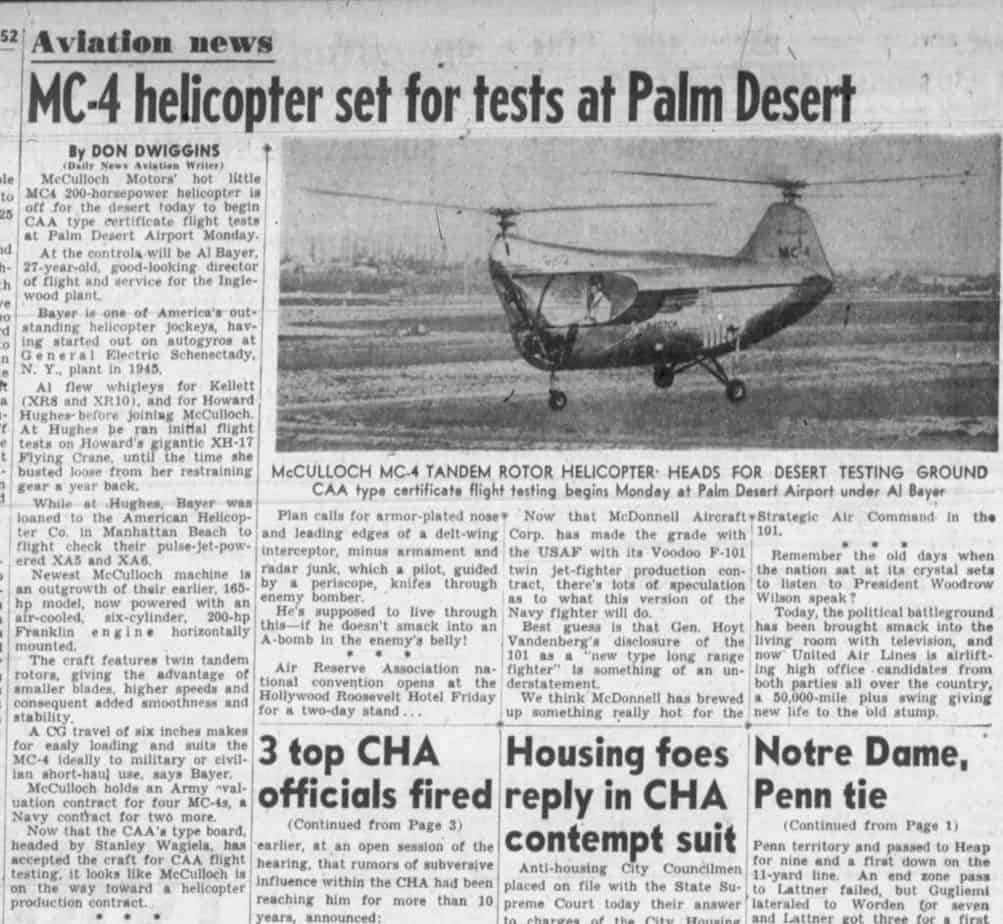
CAA certification continued into November. 263McCulloch “Flywheel”, Nov. 1952. Vol.3 No.3. In December of 1952, Bayer delivered a talk on the history of rotary aviation. He described the relationship between the autogyro, the pulse jet and the convertiplane. And he showed a short movie from recent test flights of the MC-4. His description of the military role for the helicopter remained the traditional one: movement of troops, supply of troops, detecting and destroying submarines, amphibious assaults, supplying beach-heads, movement of large ground equipment.
1952-lr-Bayer-talk-on-HelicoptersThe MC-4 completed certification in February of 1953. 264American Helicopter, April 1953 That month The Flight Manual was completed. About that time, a publicity photo session included a local stewardess as a model:
1952-MC-4-Pub-Photos-lrOne photo session included a nervous or unhappy looking Bob McCulloch holding the MC-4’s control stick beside Bayer.
1951-lr-MC-4-BOB-MCCULLOCH-AND-OTHER-PHOTOSSeeking a military contract, McCulloch built five ships for the military to test–three for the Army and two for the Navy. The Army models were 25838, 25837 and with 25839 first flight on 8/17/53, going to Fort Bragg. The Navy models were 133817 and 133818 going to Fort Patuxent. Perhaps the Navy was less interested due to its obvious inability to function as a large transport helicopter. They each tested these. Two of the Navy models survive today–in Chico (13318) and in Pima (133817). One of the Army models survives (25837).
1952-lr-Nov.-FLYWHEEL-MAGAZINE-re-MC-4C-MC-4The Army models were featured an engine upgraded from 165hp to 200hp. Bayer conducted the first test flight on this more powerful model in February. He test flew all the military vehicles extensively before their June 1953 delivery–the Army models. The military designated it the Army YH-30 and the Navy XHUM-1. At delivery, Bayer and some engineers checked out and assisted the Army and Navy pilots. 265Bayer logbook. McCulloch Flywheel, uncertain date. Navy: 133817 and 133818 Bayer’s trips East with the MC-4 began his long and intense process of building relationships with men in Army aviation.
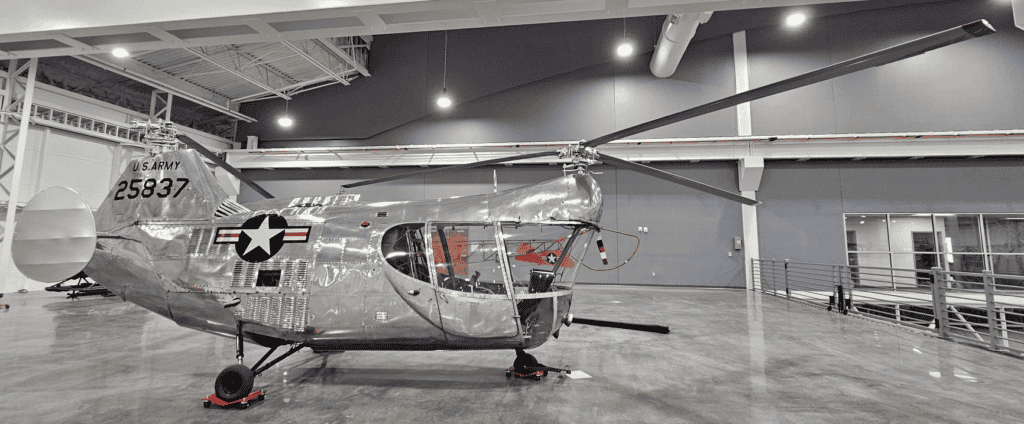
Army version of the MC-4 on display.
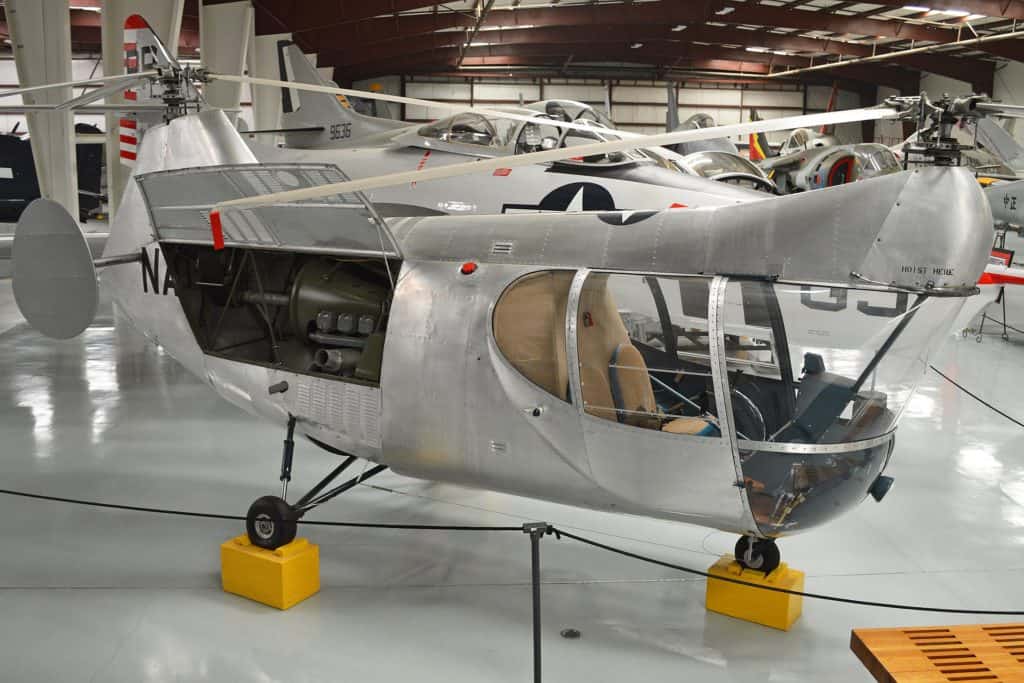
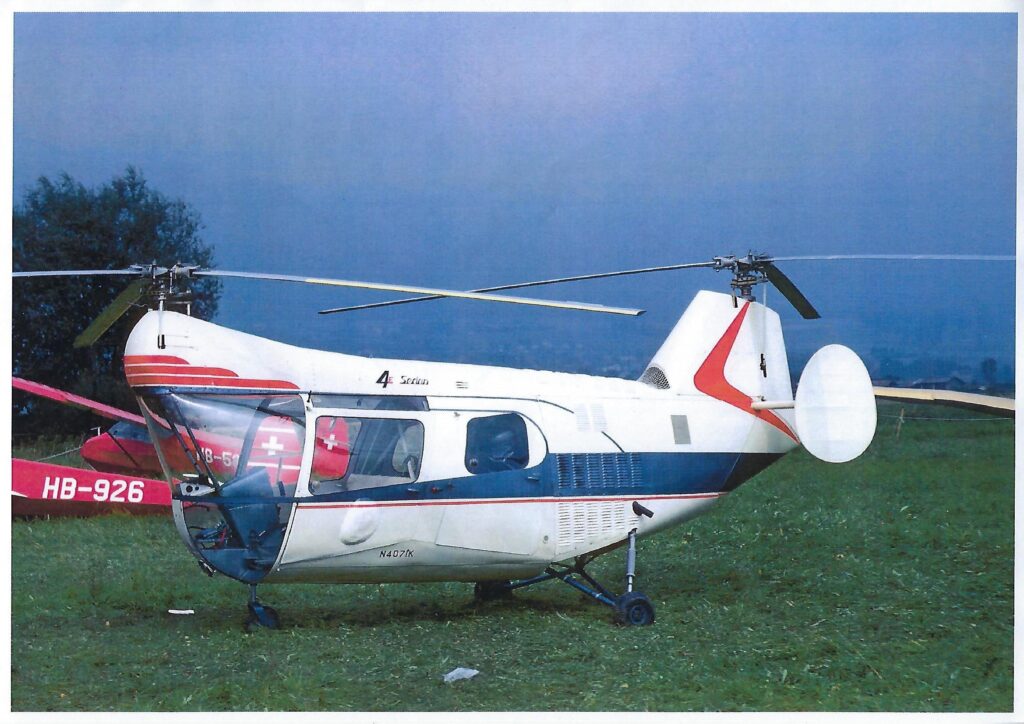
N4071, said to have been dismantled in Switzerland and later rediscovered in a barn. It is said to be pending construction . 266https://assets.verticalmag.com/digital/2017/V16I2/V16I2_low.pdf
Three of the military MC-4 or YH-30survive today–half of the six military models built. An Army version is at the US Army Aviation Museum at Fort Rucker, Alabama 267Serial 52-5837. One of the Navy models is at the Pima Air and Space Museum 268N4072K Serial No.Serial Number: 133817. A second Navy model is at The Yanks American Air Museum at Chino 269Possibly N4091K. https://en.wikipedia.org/wiki/McCulloch_MC-4 Also: http://www.all-aero.com/index.php/contactus/35-helicopters/copters/6588-mcculloch-jov-3-mc-4 Two of the Army models no longer survive. N4071K was purchased back by Jovanovich and Kozloski then upgraded to their Jovair 4E design. It is currently dismantled in Switzerland. The military placed no orders for the craft. An Army website states that this was due to its, “limited cargo capacity and short range….” 270https://www.armyaviationmuseum.org/?testimonial=yh-30 This echoes the Navy view of the helicopter during this period–the helicopter was viewed as useful for cargo. Some in Army aviation were already embracing the idea of an air “cavalry” based on the small, nimble helicopter. It is noteworthy that the military did not cite lack of power as an issue–the military version having already had a larger power plant than the civilian version. Most accurately perhaps, Bayer stated that, “the tandem rotor blade configuration was too complex for a small helicopter.” 271Unbelievable. He was in touch with military and this conclusion within McCulloch seems to inform their “Summary Of Activities” document as well as the move to Hughes by both Bayer and Jovanovich.
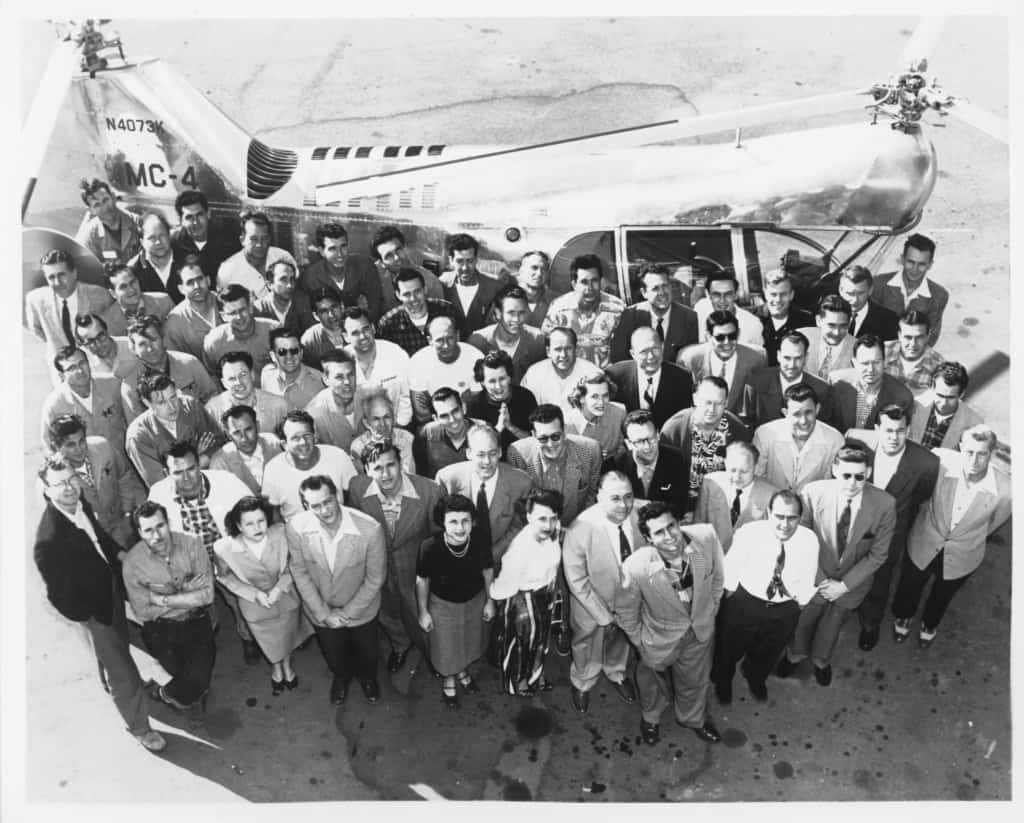
Al Bayer in sunglasses, second from rear/fourth from right.
The lack of a military contract spelled bad news for the McCulloch helicopter effort. To make matters worse, civilian sales of the MC-4 were recognized by the company as being unlikely. McCulloch’s own publication, the “Flywheel” from April 1953, stated that maintenance of the craft remained too expensive for it to be sold for civilian use without further modifications. And the MC-4’s Aerodynamic and Structural Demonstration Report was completed in July of ’53.
1952-lr-FEB-Western-Aviation-Magazine-clip-MC-4THE MACHINES REVOLT – GOG, creature of tomorrow
Even as cost began to discourage Bob McCulloch, Bayer finally got the MC-4 into a Hollywood movie–albeit not with ordinary soldiers as he had originally sought. During late ’53, Bayer flew the MC-4 at or near George Airforce Base, Victorville, in the opening scene of the science fiction movie, GOG.
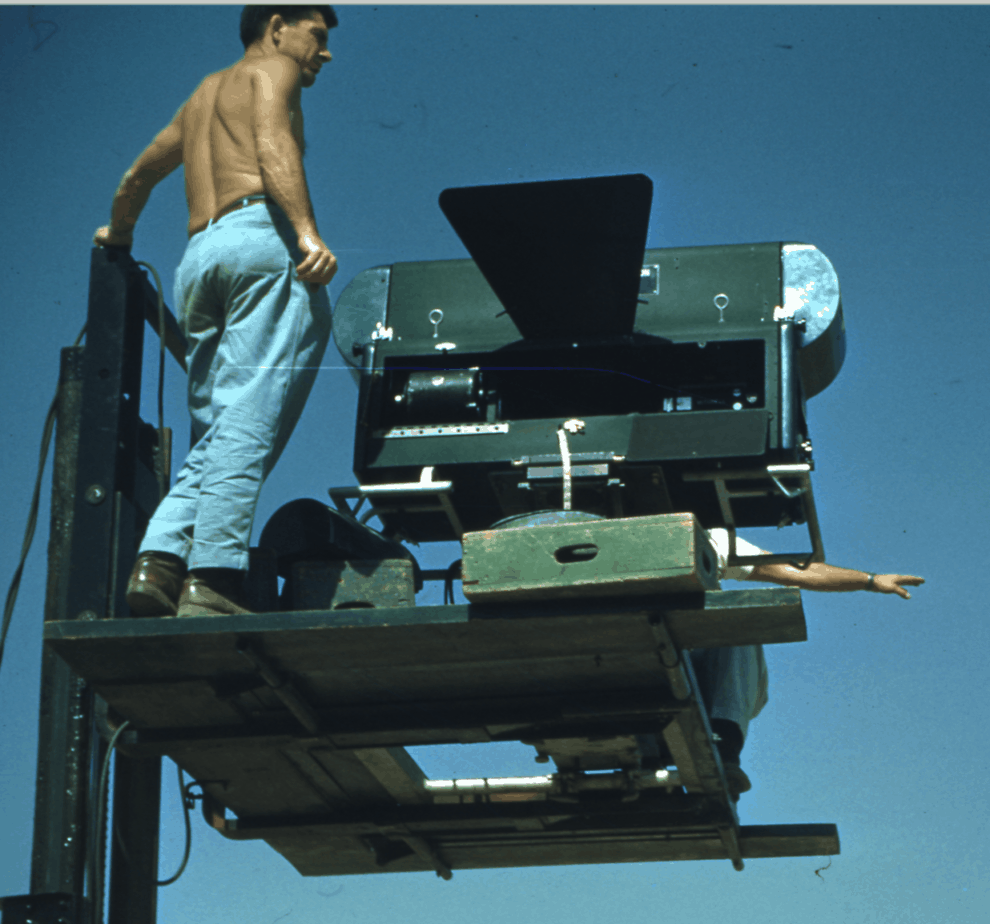
Near the beginning of the film, Bayer flies actor Richard Egan to the secret underground base where the machines have revolted. In the scene, Bayer deftly pirouettes the tiny MC-4 prior to descent. As imagined in the film, the “Giant Brain Machine” has taken over control of the craft.
The editors dubbed an actor’s voice over Bayer, probably due to the noise of the helicopter. Bayer and others stayed at the Apple Valley Inn. Bayer took photos of the Inn from the helicopter and on the ground.
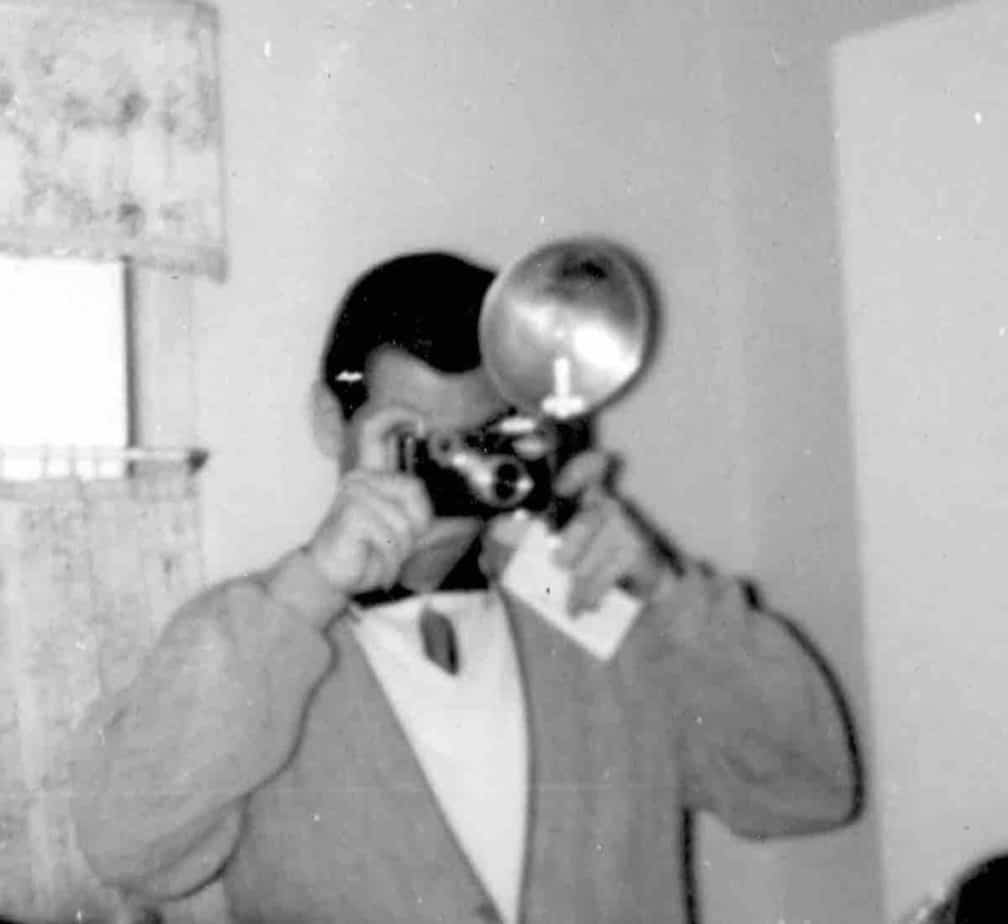
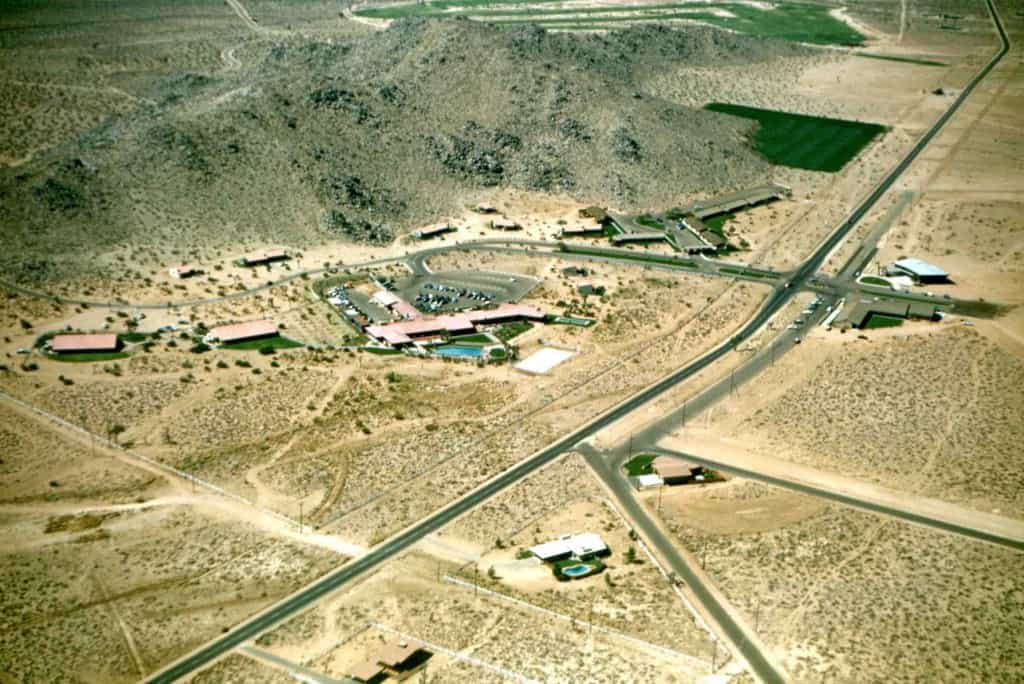
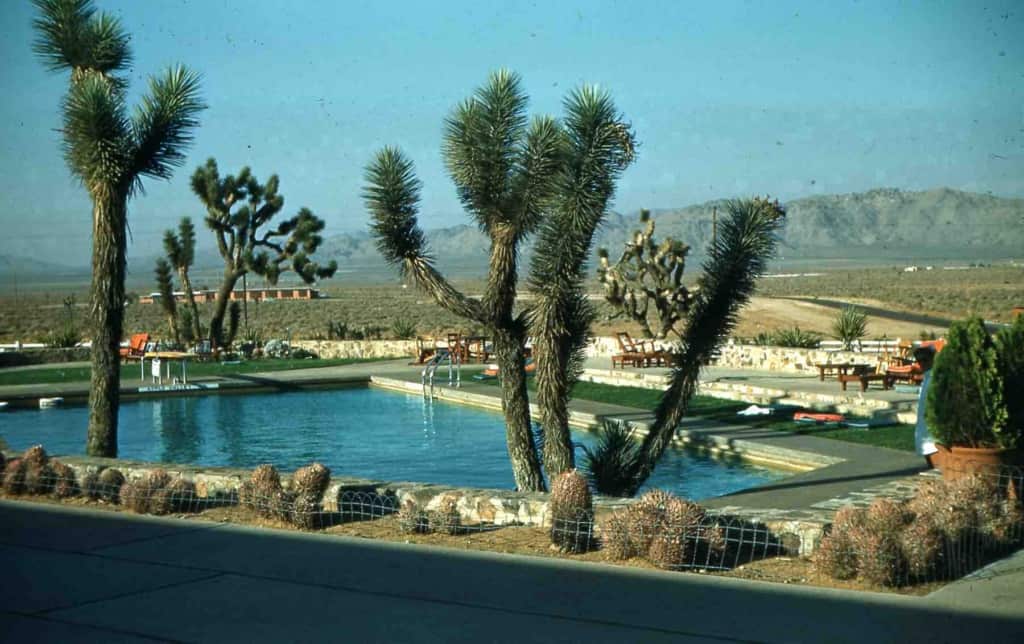
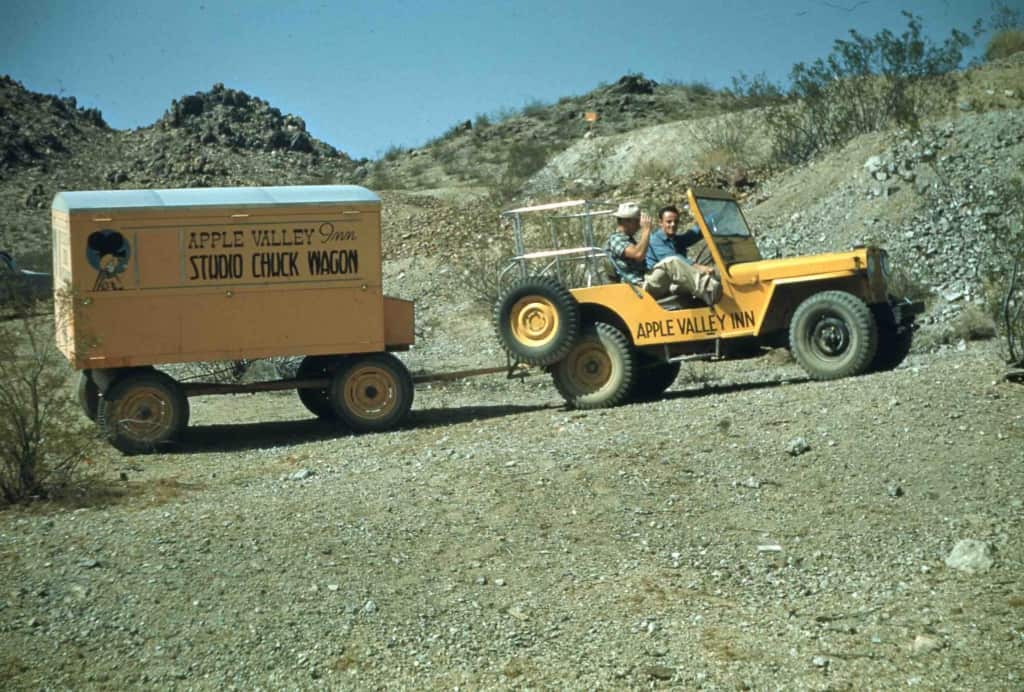
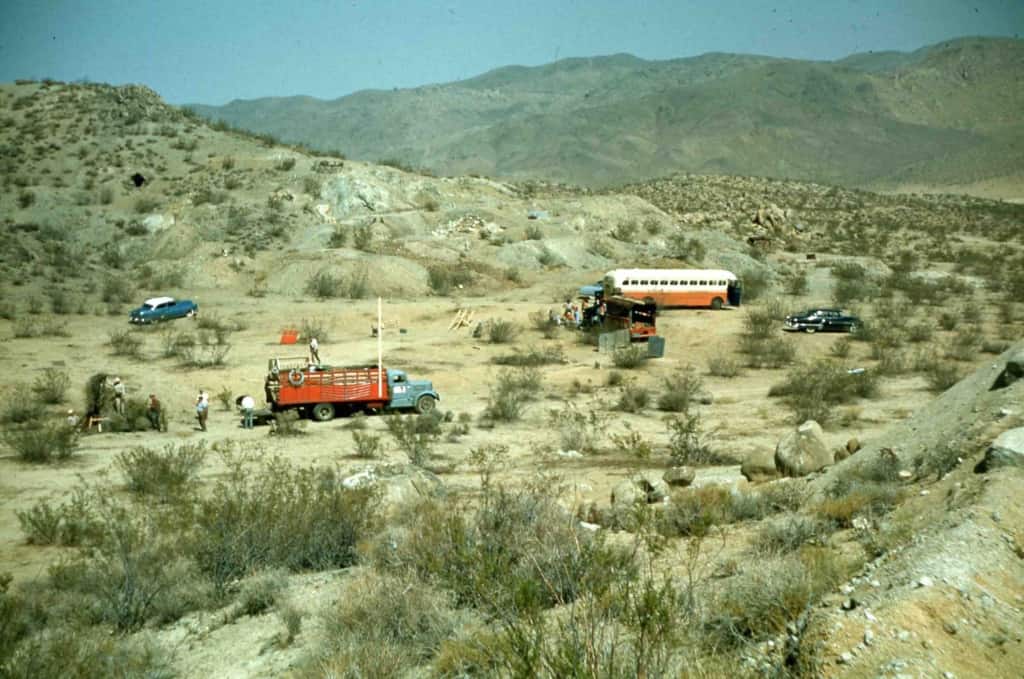
Due to issues with synchronization and competitors, 3D films barely remained viable in theaters through late ‘53, when GOG was filmed. 273http://www.3dfilmarchive.com/what-killed-3D It would soon appear widely on black and white television, a science fiction thriller for children to watch in the late afternoon.
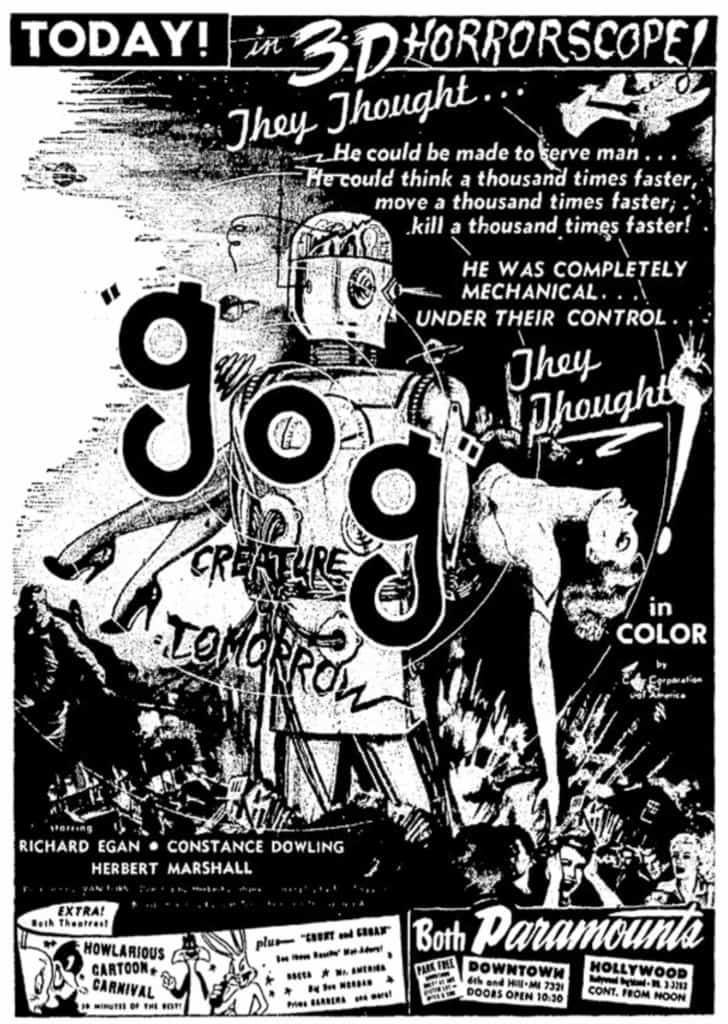
In Bayer’s portion of the script, the original title of the film appears to have been “Space Station, USA.” The description of the helicopter in the desert has a ’50s psycho-thriller film-noir flavor. Note the idea of the helicopter’s shadow “racing” across the land. It is imagined as swift while dashing in with the hired gun or expert to save the day. In essence, the deft little craft delivers the hero so that he can defeat the clunky and oppressive robots.
The desert; vast, empty, desolate, lies scorched in the hot morning sun. Depressions between sand dunes resemble craters on the moon. The terrain, uninhabited, stretches endlessly to the jagged crest of mountains in the distance, and the only sound is that of the motor as rotor blades chop through the still air….Suddenly, the helicopter swings to the side, turning its back to the sun. Its shadow leaps ahead of it on the ground, and races across the sandy waste land. 274Bayer’s pages from his portion of the script.
1952-GOG-script-shots-reducedWhile Hollywood was ready to the see the machines revolting and the helicopter as a dynamic force, the military remained years away from anything but a staid view of the craft. Even today, when anyone talks about Howard Hughes and his aircraft it is usually about the big and ponderous Flying Crane or the Spruce Goose. The deft little helicopter is still missing from the history books. And, through most of the ‘50s, it remained a fanciful idea among a very few. In the end, as a result of the next effort by Bayer, Stefano and their friends on engineering, the nimble impact on reality would far Howard Hughes’ big designs.
The Army evaluated The MC-4 as the YH-30. The United States Navy evaluated it as the XHUM-1. The craft was found to be underpowered. Additionally, the problem for the MC-4 lay partly in the Army’s lack of funds for development and partly in the Army’s continued belief–or, at least, official policy– that the helicopter was primarily of military value as a cargo carrying aircraft, a guideline that kept the Navy and Air Force happy. The MC-4 was small. With a military contract not possible and with labor unrest at the plant, Bob McCulloch decided he would leave the helicopter business, at least for a while. This left Bayer and Jovanovich free to take the light rotor blade designed elsewhere.
1953-lr-April-FLYWHEEL-MAGAZINE-AL-BAYER-article-MC-4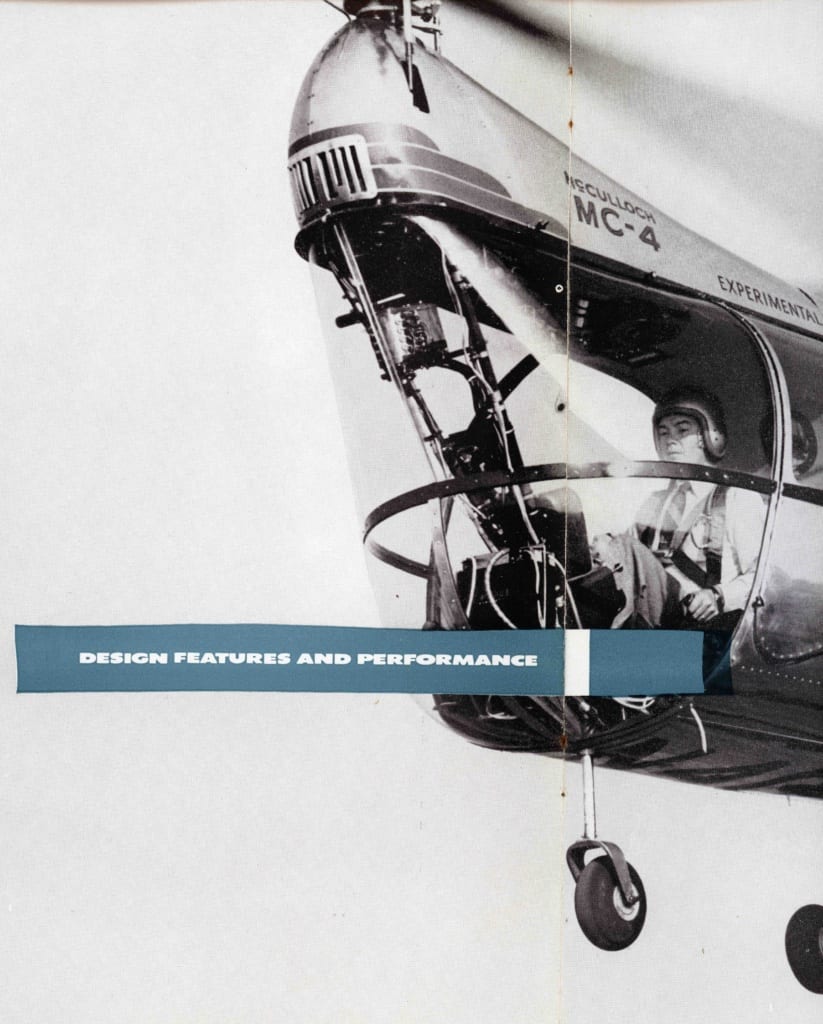
SUMMARY OF ACTIVITIES – wait there’s more
Thru 1953, the Army’s traditional cargo-approach to the helicopter echoed his own 1952 speech. He kept a copy of a 1952 speech by Lt. Col R.R. Williams “Use of Helicopters By The Army”. Williams defended the Army against allegations that it was developing its own Air Force and pointed to conservative uses of the helicopters during war–for basic transportation and communication. 275Bayer’s Copy in his papers.
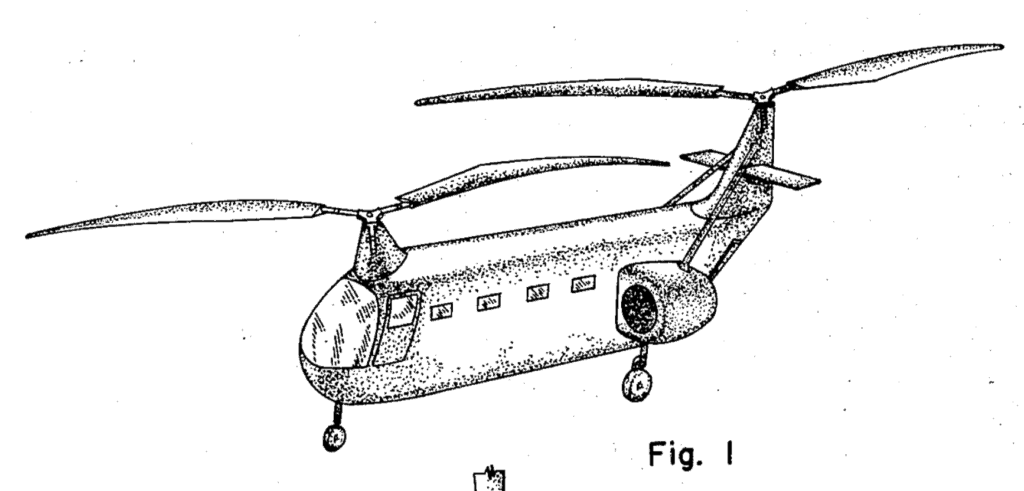
As McCulloch ended the MC-4 effort, last ditch efforts and dreams written up by Bayer and Jovanovich illustrated the broad and futuristic nature of their helicopter dreams. Just as, years earlier, Kellett had come out with a brochure illustrating additional possible designs, Bayer produced a “Summary of Activities” with a similar goal–aimed partly at the military and partly at company owners as if to say, “don’t close us down we’re just getting started.” That very exuberance seems to have uniformly rankled company owners who wanted focus and profit. At the same time, the document seems focused primarily on positioning the company for military contracts. This would be Bayer being pragmatic. He was closely following military pronouncements on the helicopter and having private conversations with the Army about how a small helicopter might be used. He knew that civilian contracts could not sustain development. And, yet, with its primary focus on craft that could please the military, the “Summary of Activities” document tended to completely bypass Bob McCulloch’s personal interest–the personal aircraft. Bob seems to have thought that civilian contracts for a personal aircraft should prevail.
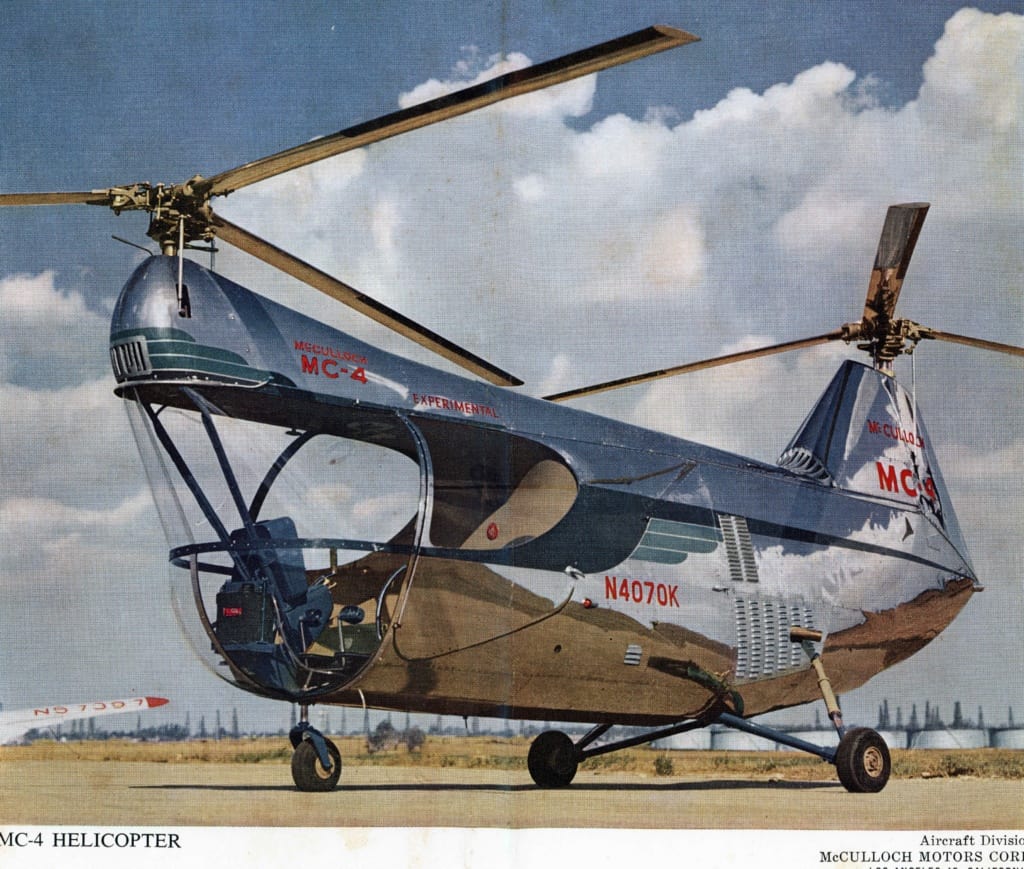
Similarly, in 1953, Col. William Bunker gave a speech on “Army Aviation Today”. He defended use of the helicopter and gave a conservative list of helicopter uses. Bayer kept a copy of that talk as well. It sounds like an outline for the new models proposed in the “Summary of Activities.” Bunker began to see smallness as an asset.
1953-ARMY-AVIATION-TODAY-lr-WILLIAM-B-Bunker
And, when Bunker mentioned the convertiplane, he described it as an “assault aircraft”. The idea that a helicopter could be fast enough to attack had not yet arrived among the Army. However, that idea would appear in the “Summary of Activities” with the MC-11. Bayer and the engineers apparently believed attack speed and maneuverability were about to become possible in a helicopter.
At the same time, the McCulloch aircraft employees were getting restless. A magazine article from 1952 had described McCulloch Aviation as a “utopia” of non-union working conditions. However, it sounded a bit like management spin and soon another view would emerge. By spring of 1953, McCulloch employees had entered into a wage dispute with management 276McCulloch “Flywheel”, March 1953.. Apparently, because of this and because the MC-4 seemed to have no potential for either civilian or military sales. Bob McCulloch appears to have decided to pull back from spending more money on helicopter program. Illustrative of the thoughts occurring, in April of ’53, engineer Bob Wagner authored a paper on the use of the helicopter in agriculture. This lead to a series of letters late in ’53 between Bayer and Fred Doblhoff who saw possible economic rewards in a franchising plan based on shared ownership.
In spring of ’53, the “Summary of Activities”, sounds as if it was directed firstly at Bob McCulloch as if to say, “look at the wonderfully inventive futurist ideas your engineers are working upon. Don’t shut down the operation.” In the notebook, the engineers took the ideas behind the MC-4 and projected them into three new models: a cargo helicopter, a small trainer and a radio controlled attack helicopter. The cargo helicopter and trainer dovetailed with current military thinking. The attack helicopter represented a huge step forward. It was almost recklessly futuristic–in late 1952 Bayer had discussed the difficulty to putting auto-pilot in a helicopter and here the engineers proposed not but an attack helicopter but a radio controlled attack helicopter.
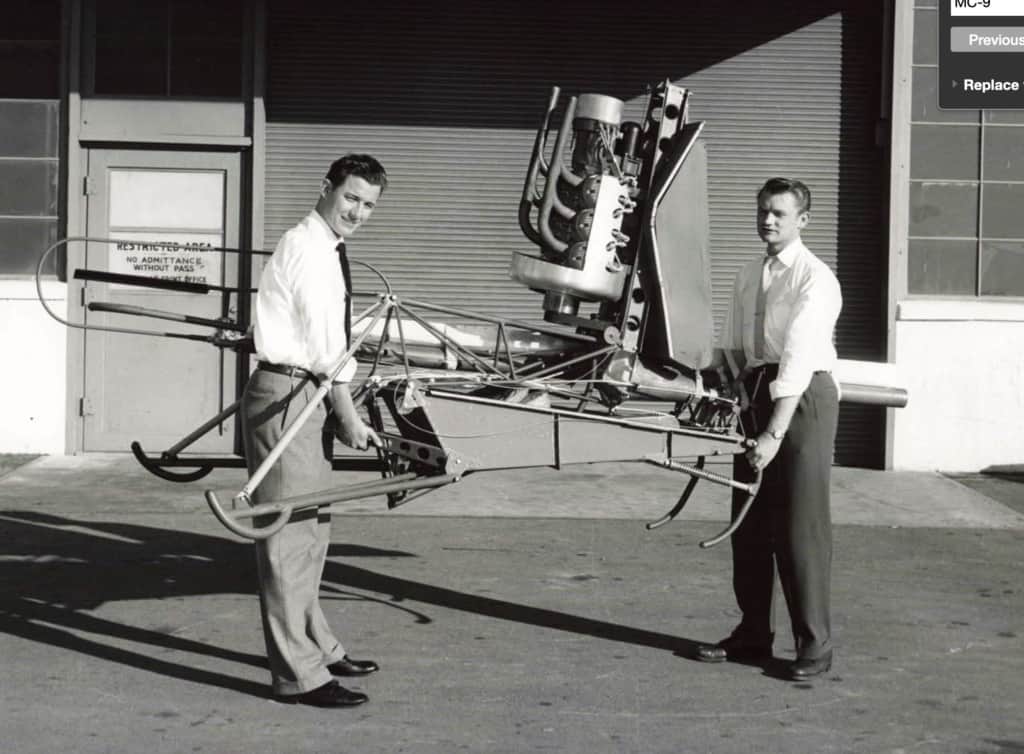
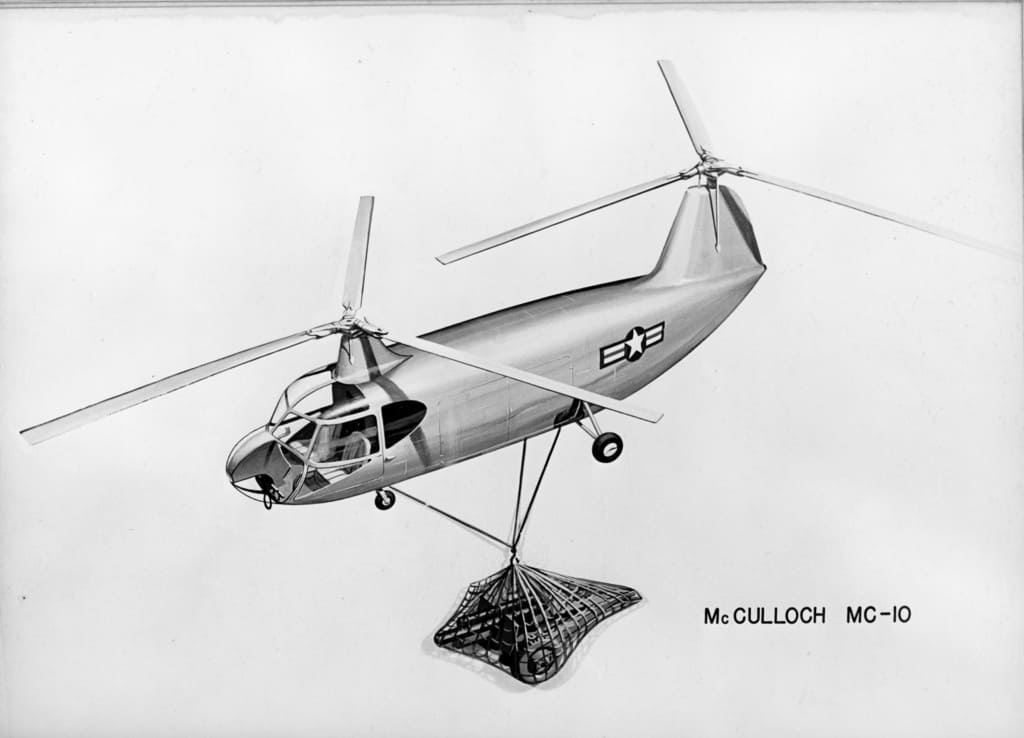
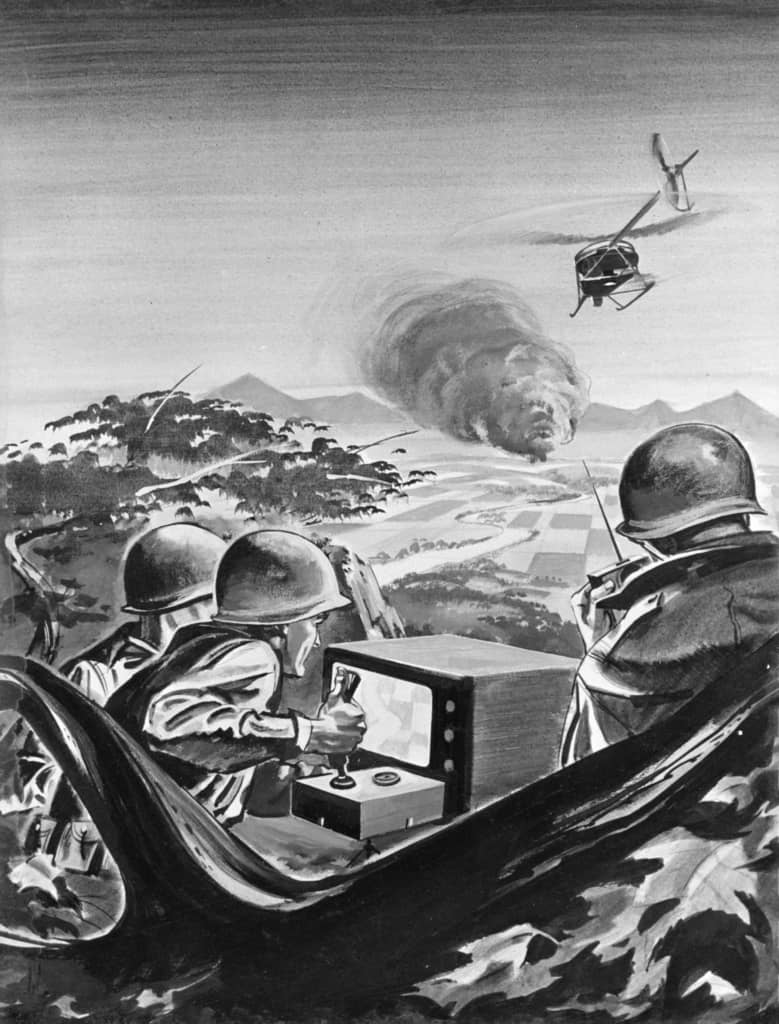
At about the same time that the movie GOG showed the MC-4 landed by the “Brain”, the McCulloch crew imagined an attack helicopter, the MC-11, guided by remote control as manipulated by a soldier in the trenches. This came a decade or more before the military could imagine an attack helicopter, much less one remotely controlled. Did the McCulloch team get this idea for controlling a helicopter remotely from the movie? The idea did not die on the drawing boards. It represented the essence of complete attack mobility. Because Jovanovich and Bayer went from McCulloch to Hughes Helicopter with ideas of and technology to create maneuverability, there may be a direct line from GOG and the MC-11 to the revolution in American military strategy initiated by the helicopter during the Vietnam War and then played out in two failed wars–one in Vietnam and one in Afghanistan. Though there was military resistance to the idea of an attack helicopter during the 1950s, ultimately the military came to rely on the idea. The attack helicopter represented an idea for technology that took the helicopter and then all military strategy to a new level– weapons could swoop abruptly down like a hawk on its prey while never actually taking and holding land. This has made the American military ability to kill extraordinary and lured it repeatedly into conflicts that it does not win. Ironically, in GOG, the robots go awry and take over–a scenario that, in this larger context, no one took seriously
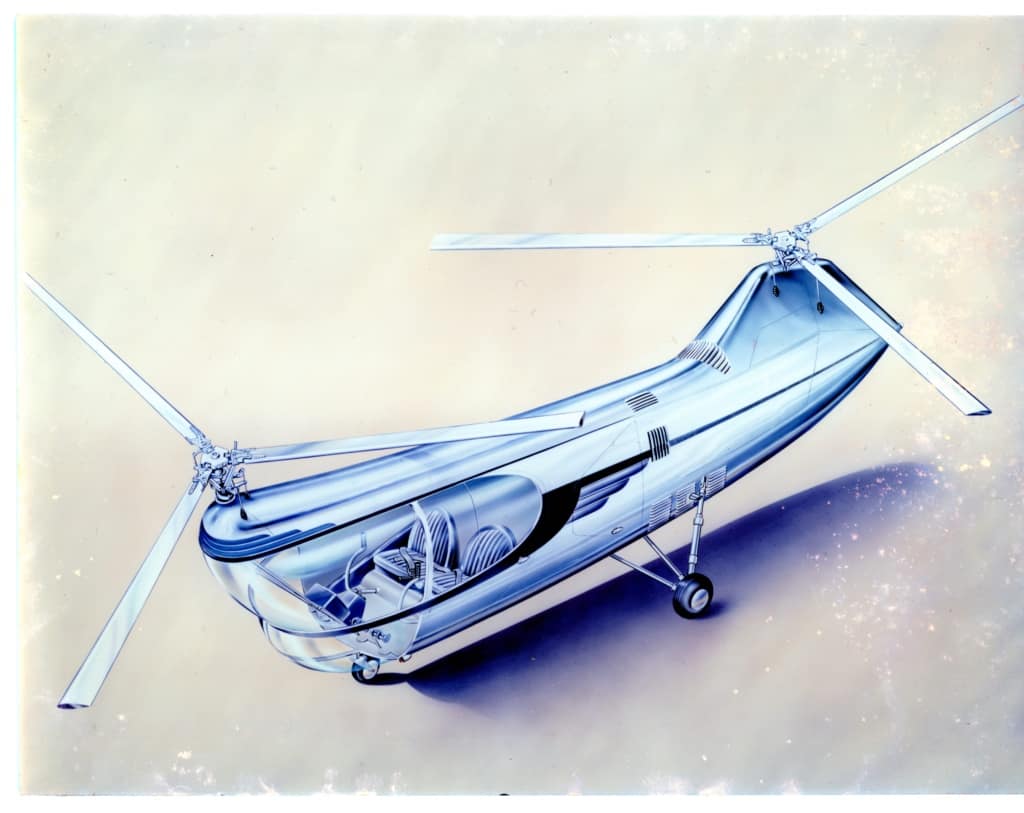
The 1953 McCulloch Helicopter “Summary of Activities”:
1953-MC-4-LR-Summary-Of-ActivitiesIn late ’53 or early ’54, Bayer was instructed to try to sell McCulloch’s helicopter assets. Bayer sent letters to many places, including Germany, Mexico and Japan. American Helicopter expressed some interest though they were poised to be purchased in 1954 by Fairchild. 277Vertiflite Magazine, 2009, Spring. E.K. Liberatore. And Fairchild would propose the American Helicopter XA-5 as the Army’s first nimble, “cavalry” aircraft. Some 35 potential buyers were identified. A couple of companies were specifically interested in the McCulloch rotor blade design. A series of letters illustrate the most promising prospect for selling the McCulloch assets. Bayer wrote back and forth with old friends at Kellett Aircraft. Kellett had obtained two MC-4s and was considering adding wings to meet renewed Army request for a craft somewhat similar to the convertiplane. The lack of interest must have been a bit frustrating for Bayer as already, in the Summary of Activities booklet, McCulloch had thought through some very practical if difficult modern helicopter applications for the military. 278https://en.wikipedia.org/wiki/McDonnell_XV-1
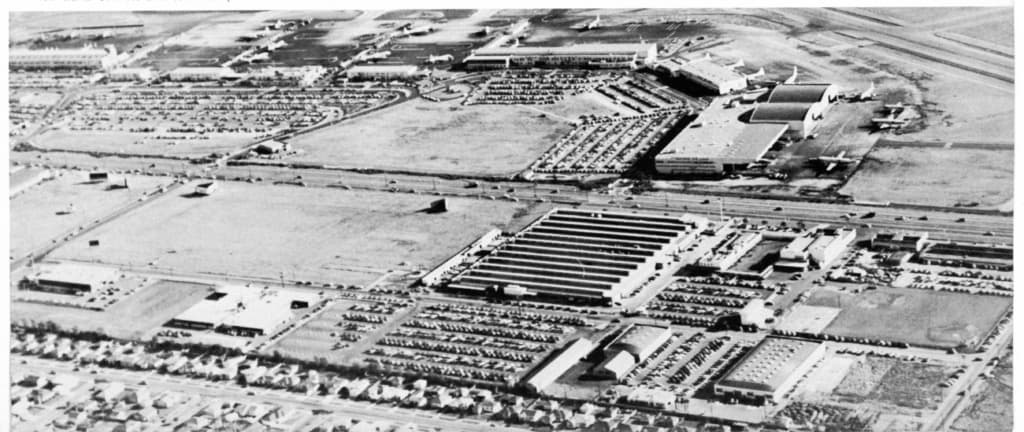
Kellett Aircraft became the most likely prospect for the sale, though they never mentioned interest in the “Summary of Activities” ideas and merely wanted to use the airframe as basis for a convertiplane. Bayer flew East in November of ’53. He learned that Kellett had become interested in a convertiplane or autogyro design for the agricultural market–crop dusting. He visited with Fred Doblhoff at McDonnell Aircraft and wrote Kellett that Doblhoff had done market studies on this application but that McDonnell had no interest in the autogyro. 279Letter Bayer to Barnett Nov. 12, 1953 Through the end of ’53, Kellett had no money for a purchase of the MC-4 and was unable to find investors. 280Letter Barnett to Bayer Nov. 16, 1953
By early ’54, Kellett was talking to the Army about a convertiplane design. Bayer learned of this. In his notes regarding the possible Kellett purchase of the MC-4 manufacturing rights, Bayer wondered if McCulloch could develop the craft. He expressed concern that Kellett had purchased two MC-4s and was going to modify them. While he wanted this to lead to a purchase of rights for the MC-4, he worried that modification would create a craft that McClulloch did not own and yet would be influence McCulloch’s attempts to sell off the MC-4 assets by creating a hybrid that McCulloch had not itself created. He wrote: Reputation of MC-4 at stake by letting outside firm do the job. 281Bayer interoffice memo. Feb. ’54 Internally, he suggested McCulloch assist Kellett and, at the same time, insist they pay for rights.
Answering questions raised by Bayer, the Director of Government sales at Kellett, Joseph McKeller, wrote:
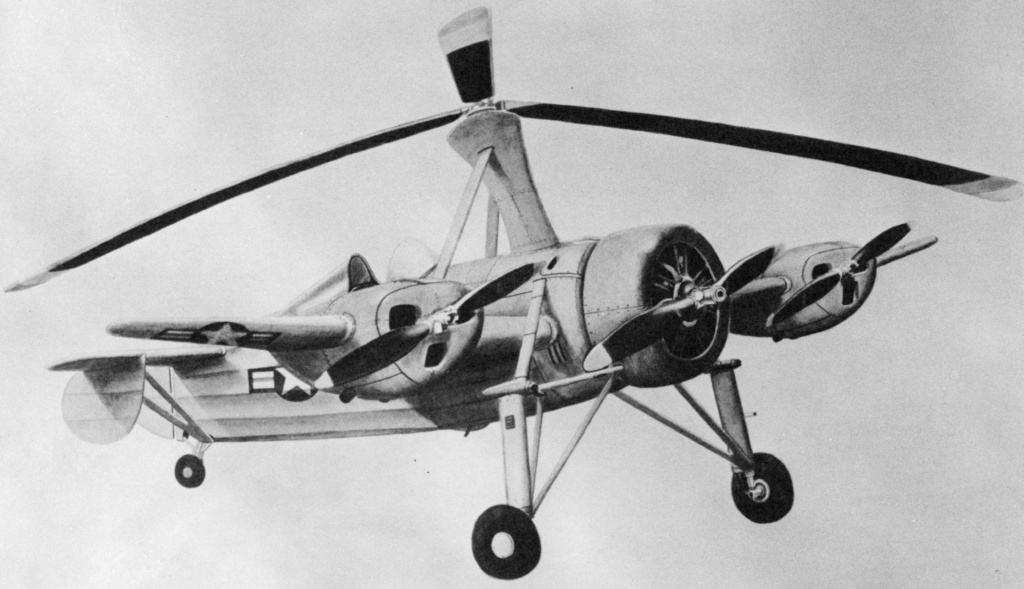
I talked with Comdr. Struble and his version of this project is as follows: The Army has become interested in a rotary wing aircraft with a fixed wing but not identical to the convertiplane. They approached the Aircraft Division of Buaer to determine whether they had any surplus helicopters they could use for this experiment. At the time of their contact with the Buyer they had more or less pinpointed Kellett to be the facility, if they wish to handle the project. This was due primarily to the technical personnel that Kellet has which are familiar with this line of engineering. There have been no proposals requested nor contracts issued for this work, being only a week or ten days in the formulating stage. I asked (Comdr.) Struble if we could be considered for a possible source for this work and he said that would have to be taken up with the Army. He further explained his position by stating that the Navy will only administer this project and equip the Army with the necessary helicopter. However, Struble did say that they hold a rather quasi recommending capacity and he doubted if our present personnel could justify our even considering the program….Comdr. Struble refused to say which branch of the Army was promoting this program. 282Letter Barnett to Bayer Feb. 23, 1954
During their discussion of a possible sale, Kellett sent Bayer a handful of promo materials about the KH-17A. Apparently, Kellett had a plan for a fully designed convertiplane yet was also considering an alternative–altering an MC-4, using that helicopter as a basis. The alternative made some sense as, with the MC-4, would conceivably come the help of Nick Stefano. It may be that Kellett was talking to Stefano about a folding main rotor blade for the KH-17A or the MC-4. Later, in 1958, he patented a design for one. The MC-4’s engine and blades would, presumably, have provided lift and then stub wings with propellers would have provided fast, forward motion.
At the same time, Bayer remained in conversation with the military as shown by an interesting photo from 1954. Meetings between industry and the military often included drinking yet rarely do photos show drinking. That year, the army decided that it would need one small and one large helicopter. 283Aviation Daily. May 13, 1965 references that decision. This remained very conservative compared to the proposals made by Bayer.
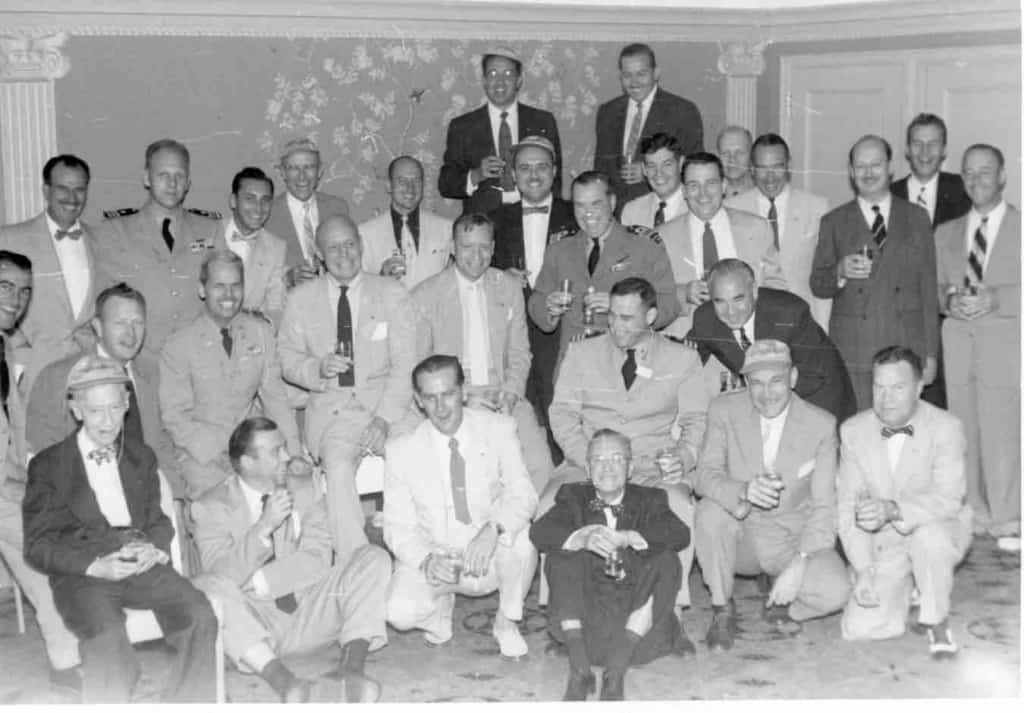
The above letter outlines the circumstances around creating of a vertical aircraft for Army use in the mid ’50s. The Army was still thinking about a convertiplane created by altering a helicopter. This seems to reflect ongoing feeling that helicopter itself–still seen by much of the military as a cargo craft–was inherently too slow. The Army could not oversee development of the craft it wanted–it had to go through the Navy. The Army was divided in its view of which company had the capacity to create this aircraft. That division within the Army was so significant that proponents of this design would not reveal themselves in a casual conversation. And, selection a company to produce this design occurred informally within the portion of the Army favoring this design even before a formal proposal request would be made. In other words, the proposal request for such an aircraft was a formality beneath which lay maneuvering with other branches of the military and within the Army itself.
By July of ’54, Bayer was still talking to Clyde Barnett at Kellett about licensing the MC-4 to Kellett Aircraft. Barnett wrote that the company was finding the military “antagonistic” to using the MC-4 as a basis for a convertiplane project. 284Letter Barnett to Bayer July 8, 1954. However, Barnett made a tentative offer. 285Letter Barnett to Bayer July 12, 1954. There was some negotiation of terms. However, apparently, Kellett pulled out. They sent a technical letter detailing design inefficiencies. They described these as minor and fixable. However, either due to lack of funding, military opposition to the MC-4 or the cost of these minor repairs at a time when Kellett still struggled financially, the acquisition of the MC-4 by Kellett never took place. About August of 1954, McCulloch ceased work on the MC-4.
Ray Watkins commented:
“The Helicopter Engineering Research Corp was formed in 1947 by D.K Jovanovich and F.J. Kozloski who were former employees of the Piasecki Helicopter Corp. Their first design, the two-seat tandem rotor Jov-3, flew in 1947. The company was renamed J.O.V. Helicopters in 1948. The design rights were sold to McCulloch Motors in the same year for their new Helicopter Division, with Jovanovich as Chief Engineer. McCulloch continued development of the Model Jov-3 to produce the McCulloch MC-4, which first flew in March 1951 and received FAA certification in 1953. In 1952 the US Army purchased three examples of the MC-4C, which had small endplate rudders at the rear of the fuselage, for evaluation as the YH-30.Jovanovich and Kozloski left McCulloch when the Airplane Division was closed, and formed Jovair Corp in 1957 to continue their work on helicopters. They resumed the design rights and purchased one of the MC-4A’s (N4071K) which had been produced for evaluation by the USN (as the HUM-1). The Jovair 4E Sedan was an enlarged four-seat version of the MC-4C which received certification in March 1963. It was the last design produced by Jovair and the design rights reverted to McCulloch in 1969 who continued development of the Jovair 4E Sedan as the McCulloch MC-4E. 286https://1000aircraftphotos.com/Contributions/WatkinsRay/8095.htm
Bob McCulloch may have gone along with all this last minute, last ditch effort to salvage the MC-4 as a military craft. However, his personal interest lay in the civilian “personal aircraft”. It was Bayer who saw the military as the key to production. In the wake of closing production on the MC-4, in 1956 Bob McCulloch focused on again on outboard motors for boats, buying out Scott-Atwater in order to build on that company’s sales abilities. 287Los Angeles MirrorThu, Sep 04, 1958 ·Page 37 More specifically, perhaps, Scott-Atwater had helped with boat racing on the Colorado River. 288Needles Desert Star Thu, Oct 11, 1956 ·Page 7
A focus on boats lead to him to propose building a new city at Lake Havasu in 1958. At the same, Bob remained interested in the personal helicopter. McCulloch Aircraft worked with Jovanovich in the 1960s to create the J-2 Autogyro, using the Jovanovich blade design that had been used on the Hughes 269A. During the late ’60s, McCulloch fired Jovanovich who felt that McCulloch was trying to cut corners with production, making the craft unsafe. It suffered many accidents and was criticized as being top heavy. Jovanovich walked away from some of his design work rather than involve his engineer friends in a lawsuit. In the wake of that firing, the craft suffered numerous wrecks. Today, some claim that Jovanovich was to blame for the design flaws.
Gish never fully recovered from the controversy and loss. Bob McCulloch bought the London Bridge–constructed in 1831–and during 1971 installed it at Lake Havasu. He wanted to manufacture the J-2 at that site.
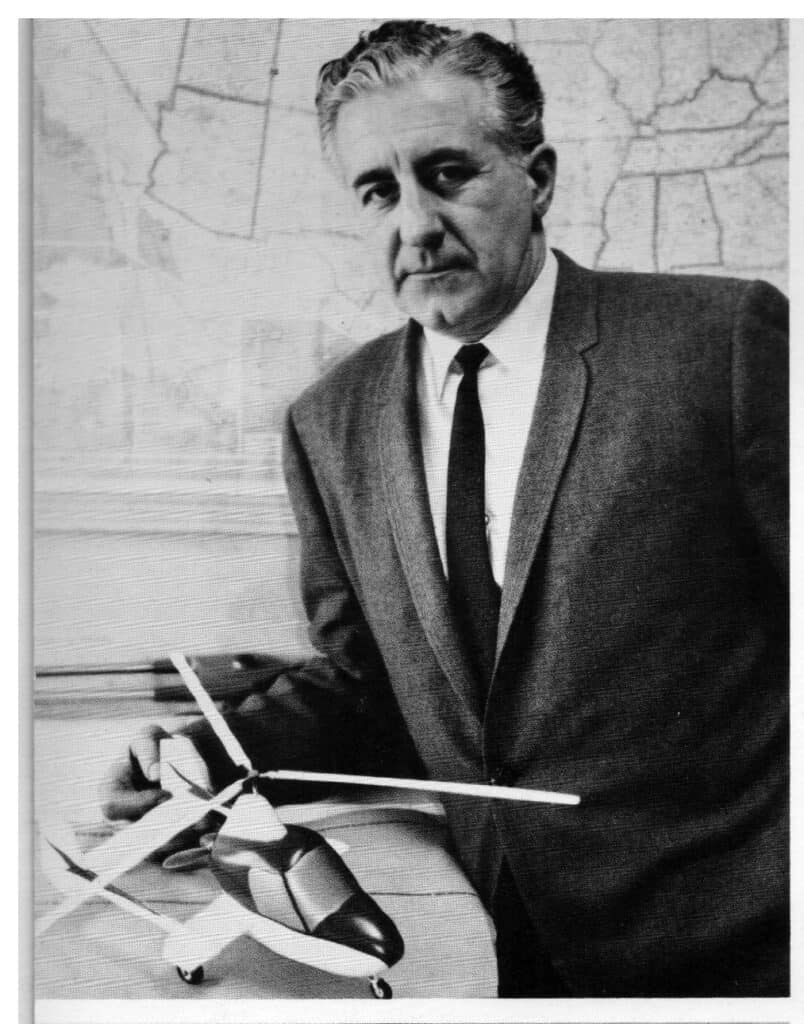
“Gish”
A HOBBY OF THE MANAGEMENT – Hughes Helicopters
During April of 1954, an article on the American Helicopter XA-5 and XA-6 tests with the Army and the press presented discussion of the Army embracing a small helicopter to create “a cavalry of the skies.” T
There is some difference of opinion right now among army strategists as to whether multitudes of tiny rotary wing aircraft carrying one or two men or huge helicopters and convertiplanes–a type which takes off and lands like a helicopter but converts to a fast fixed wing aircraft in flight–will be the ultimate answer. The large types which not only can transport troops but considerable firepower at there same time seem to be favored, but most strategies foresee both types–tiny ones and huge ones–being put to work, as soon as they become available. 289The York Dispatch York, Pennsylvania • Fri, Apr 16, 1954Page 2
Earlier that same month, in the MC-4 Bayer flew representatives of American Helicopter and of Fairchild, which had both American Helicopter. The helicopter he had left–the XA-5–seemed positioned to become the first small army attack helicopter–at least transporting troops in a mobile fashion. And the helicopter he had gone to–the MC-4–was ending production. Bayer continued at McCulloch as Director of Sales, Service and Flight until August of 1954. 290Bayer letter to Tozer March 31, 1952, p.2. Having visited there in late 1953 for the filming of GOG, during late 1954 Bayer moved his family to Apple Valley. He bought a Nash Healy and had McCulloch install a supercharger. He and his son would race around empty desert roads, Chris rattling back and forth on a cloth stool on the car’s narrow bench behind the two seats.
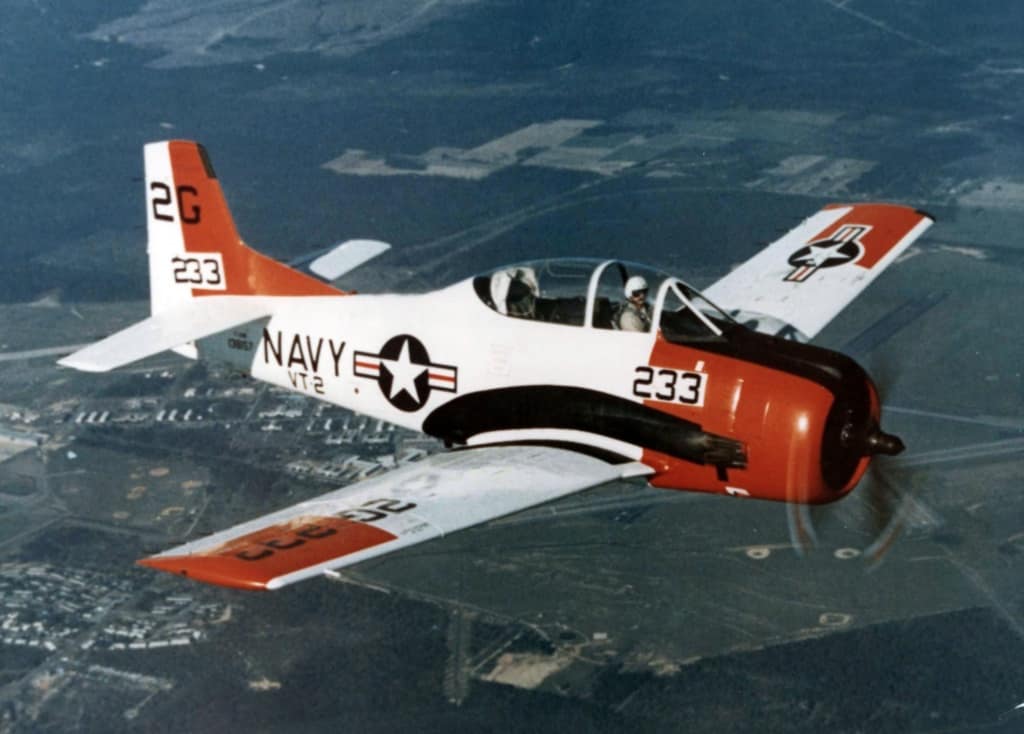
Through spring of 1956, Bayer commuted by small plane to the Southern California Aircraft Corporation in Ontario, California, where he performed flight tests on the North American T-28. It isn’t clear to me why the company was testing this plane. 291AL BAYER, Society of Experimental Test Pilots Resume. He found that organization to be very frustrating. They objected to his playing golf with customers. In his view, they didn’t seem to care about customers or the sales staff. Before departing the company in July of ’56, Bayer wrote a list of the company’s shortcomings and mistakes. It makes clear that, by this time, Bayer saw sales as the center of an aircraft company–integrating entertainment of customers with design and maintenance of the machine. He had seen Kellett and McCulloch fall short.
1956-Problems-lr-at-SO-CAL-AIRCRAFT-pdfBayer arrived at Hughes Tool Co’s Aircraft Division when it had one of the worst reputations in the aviation industry. As early as the 1940s, he had a reputation for interfering and undermining his own people as he pursued his aviation hobby with inherited oil money. As described in a Senate War Hearing, Army Air Corp Memo, Jan. 26, 1942: It is the opinion of this office that this plant is a hobby of the management and that the present project now being engineered is a waste of time….” 292Garfein Power Point The same can be said for Hughes Helicopters though by the time of its creation, Howard Hughes had been forced out of any personal involvement in his own aircraft development. A hobby culture persisted among management left in his wake.
Howard was forced to keep his distance from all aviation contracts by dictate of the Defense Department after to his meddling caused important science staff to quit in 1953. 293Vertical Challenge, The Hiller Aircraft Story, Jay P. Spenser p. 166 In the wake of government unhappiness with his meddling in his aircraft hobbies, in 1953 Hughes separated aircraft manufacture from Hughes Tool Company, calling it Hughes Tool Company’s Aircraft Division. 294Porter. p55-57. In 1955, Howard Hughes split the helicopter production unit from the Hughes Aircraft Company, 295https://www.wikiwand.com/en/Hughes_Aircraft_Company This represented a return by Howard Hughes to the helicopter business–after his Flying Crane efforts of a couple years earlier. The preceding steps put him at a great remove personally, leaving Hughes Helicopter free to pursue small rather than big.
Bayer moved his family to the Palos Verdes Peninsula, across from the golf course, where a number of his friends in helicopter engineering lived or would soon live nearby.
Returning to the 1950s…in December of 1954 and with the closing of MC-4 production, Gish Jovanovich was hired as a Mechanical Engineer by Hughes Aircraft, then in the process of forming Hughes Helicopter. 29612/17/54 He appears to have purchased back the rights to the rotor and hub designs he had sold to McCulloch. Though some accounts describe Hughes beginning its renewed helicopter business based on acquiring Jovanovich’s hub and rotor designs, a more accurate statement may be that Hughes hired Jovanovich under contract and the designs came with him.
In May of 1956, Jovanovich filed for a patent on a redesign of his rotor. 297Google Patents 1956-05-01 On Aug. 1, 1956, Bayer joined Hughes Helicopter as an executive assistant. The company had begun development of the Hughes 269 helicopter the previous September. He later wrote that he, “greatly influenced the change in engineering management” upon his arrival. 298Draft of Letter, Bayer to Bill Gay, June 16, 1965 p 3 It isn’t clear what he meant, Jovanovich was already at Hughes. It probably meant that he insisted on an engineering management structure that would not duplicate the problems he had seen at Kellett.
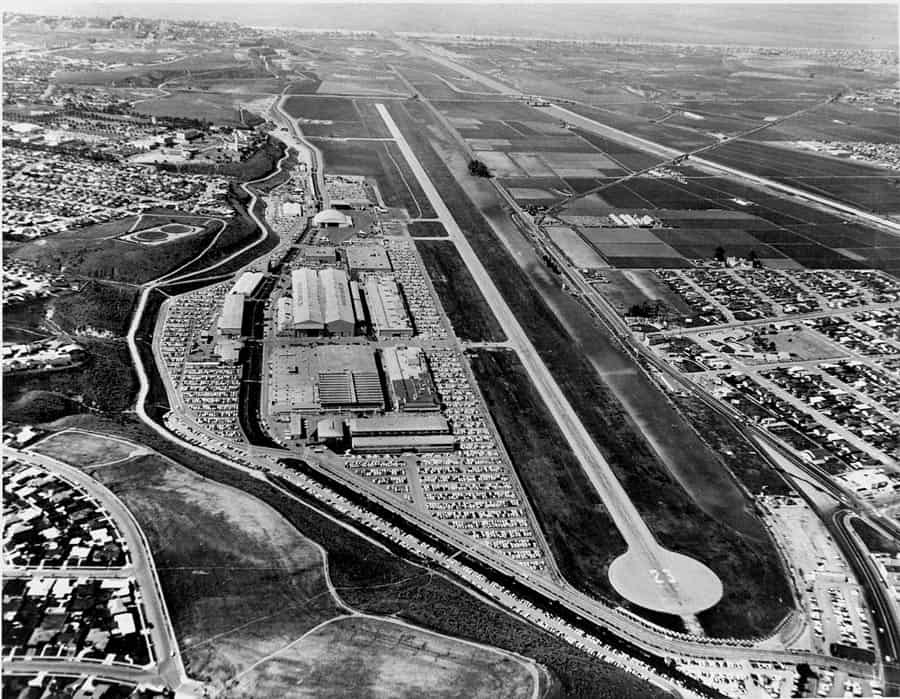
Soon becoming Vice President of Sales, for the next seven years, Bayer provided the connection between two groups of men–the engineers and progressive elements in Army Aviation. The Army Aviation progressives ultimately included Colonel Alexander Rankin, who would serve as Secretary of the Rogers Board, Vice Chief of Staff of the Army General Clyde Eddleman (January 17, 1902 – August 19, 1992), Director of Army Aviation General Clifton von Kann (1915-2014) who was also on the Rogers Board, Eugene Vidal (April 13, 1895 – February 20, 1969), aviation adviser to the Army Chief of Staff from 1955 to 1965 and member of the Scientific Advisory Panel of the Secretary of the Army, and the Director of Army Research and Development General Arthur Trudeau (July 5, 1902 – June 5, 1991).
By 1961, all of these army aviation men counted themselves good friends of Bayer. They would never admit a prior preference for the Hughes design. However, it is apparent from their actions as a whole that Bayer became their chief ally in business as they pushed for a revolution in Army use of the helicopter. The Hughes hobby shop possessed the revolutionary technology that they wanted even though the company’s manufacturing ability was virtually non-existent. Ultimately, this progressive group in Army Aviation would go through the motions of a bid process. Apparently, from the time they began to experience the maneuverability of the Hughes 269A, perhaps as early as 1957, regardless of the company’s problems, working with Bayer the progressive group in Army Aviation wanted Hughes to create a radically new kind of helicopter for the Army. They needed to overthrow procurement control by the Navy and decades of focus on big, heavy, sturdy, reliable helicopters.
SATEDAY NITE – a party with the engineers
To look at them, Jovanovich and Bayer looked like opposites–the one heavy set and intense–prone to tangible dreams of inventions–, the other tall, handsome, outgoing, a born raconteur. I asked my mother, they seem so different. She said, Gish respects your father. Your father has done a lot for him. And he has done a lot for your father.
Where Bayer was assertive and social, both Jovanovich and Stefano remained private, almost withdrawn. All remained life-long friends–the engineers with brilliant ideas, the salesman with a passion to sell those ideas. The engineers often came over for drinks. As with his relationship to his Army Aviation friends, booze played a key role in building comradeship between Bayer and the engineers. This being said, particularly with the engineers, there was more than booze involved. They had a good time.
The well dressed couples and single men arrived early in the evening. The fireplace blazed. The doorbell rang. I sometimes answered the door. Or, Rita answered the door. Bayer reminded them to hang their coats in the front hall closet and laughed deeply, “you know here the bar is“! A bartender mixed drinks. Hors d’oeuvres sat on the walnut coffee table under the open beam ceiling in the 1930 Spanish Colonial mansion. Sinatra and Tijuana Brass records played on the hi-fi. Their laughter rang into the night as I fell asleep in my room.
Nick and Fran Stefano wrote a poem about one of the parties at Bayer’s house, perhaps at Christmas. It mentions Jack Harter who had worked at Kellett as Chief Structural Engineer. It mentions Bob Wagner–violinist, poet, another engineer who came to Los Angeles from Kellett Aircraft.
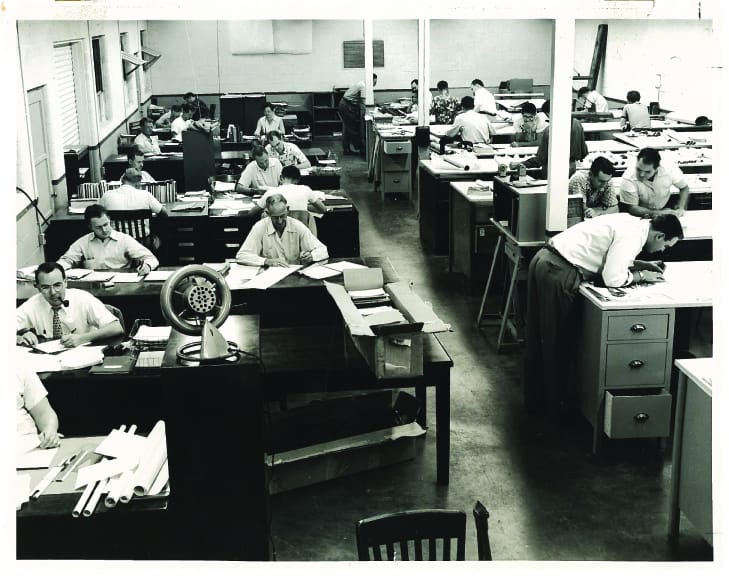
Like Bayer, engineer Clay Boswell had worked as “Chief Of Stress” at American Helicopter after some working at Hughes Aircraft. probably on the blades of the Flying Crane. Apparently, in both of those companies his work centered on the stress upon jet powered rotor blade. Later, at Hughes, during 1961, he patented a jet powered rotor blade. 299From his daughter, Allison Boswell: Clay Carlton Boswell, Jr. didn’t go to war, he was “4F” (not qualified for service). He was anonly child and his father was president of the … Continue reading
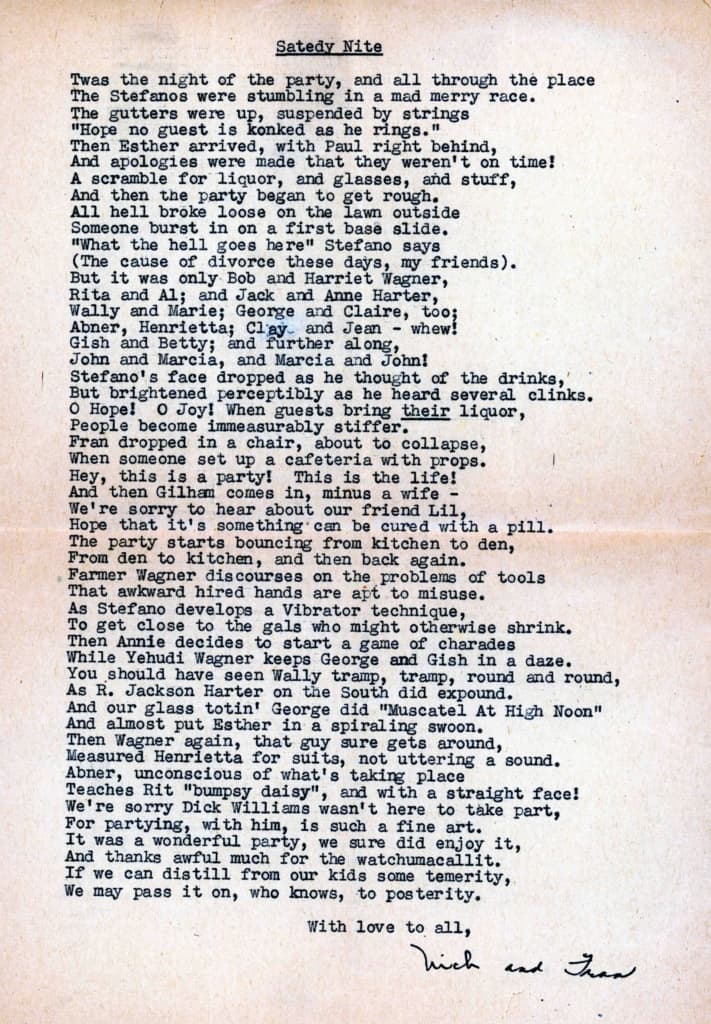
Engineer Bob Wagner handed his friends copies of his collection of original poems in about 1964. It illustrates the quirky sensibility that characterized the group. Note how the first poem in his collection, Tristesse (sadness)– questions national borders and political systems. It is a rare questioning from within the ranks of those working to create what would become a weapon central to American military strategy.

When I decided to learn to play fiddle, it was Bob Wagner who loaned me a violin. He lived alone.
1964-n.-Robert-Wagner-poems-reducedATTENTION INSURRECTIONISTS – a revolutionary design
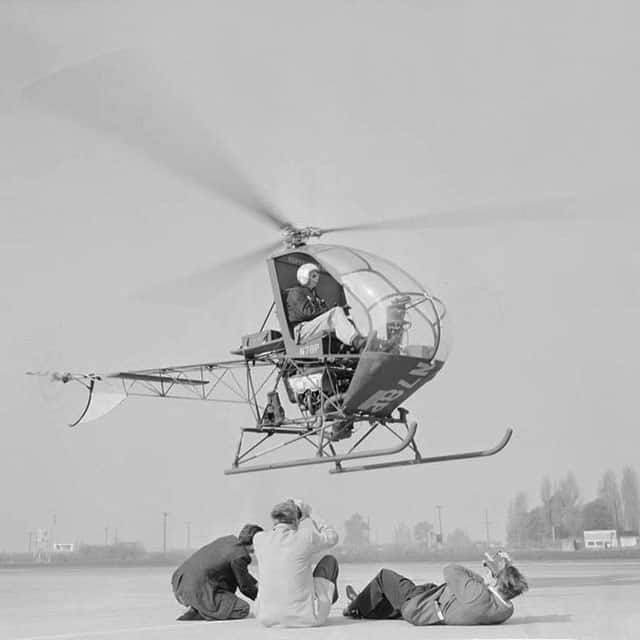
Given the arrival of Bayer, and others at Hughes as well as purchase of Jovanovich’s MC-4 patents by Hughes, the 269A may resemble nothing so much as the MC-9 that McCulloch had begun constructing and that appears in its “Summary of Activities,” above. As Bayer later wrote:
Hughes had acquired from Gish Jovanovicch, the designer of the McCullock MC-4 helicopter, the rights to the rotor blade and drive system designs. The engineering department then designed and built a light, two place, single rotor helicopter designated the model 269. In addition to the marketing of the products of the firm, it became my responsibly to get Hughes into the helicopter business. After studying the market, it became obvious to me that the future of military helicopters was in the U.S. Army. I therefore decided to develop a thorough understanding and line of communication with the Army. I had already had some exposure with the sale of the McCulloch helicopter to the Army and had become acquainted with Brig. Gen. Hamilton H. Howze, the first director of Army Aviation, with Brig. Gen Frank Besson and Col. Bill Bunker of the Transportation Corps as well as the Army Aviators of Test Board #1 at Ft. Bragg. N.C. where I had done the MC-4 demonstrations. 300Unbelievable.
During this same period, the Pentagon created a significant hurdle to Army choices in purchase of a helicopter. On Nov. 6, 1956, it created a policy dictating that while the Army could create specifications for new aircraft actual procurement must go through the Navy or Air Force. 301Porter p. 67 In particular, the Air Force felt threatened by the Army putting weapons on aircraft. Navy control over Army aircraft procurement became the means to keep the Army in its place.
Over the next four years, as visionary aviators within the Army discussed tactical air mobility and noticed the capability of the 269A, they faced not simply a bigger-is-better mentality in the Army but a long-standing Navy focus on size and cargo. The Navy’s conservative definition of “vertical envelopment” used helicopters for cargo and can be seen in a Navy/Marine film:
As noted earlier, as early as his work at Kellett, Bayer had noticed that Navy experience or expertise with the helicopter lagged behind that of the Army.
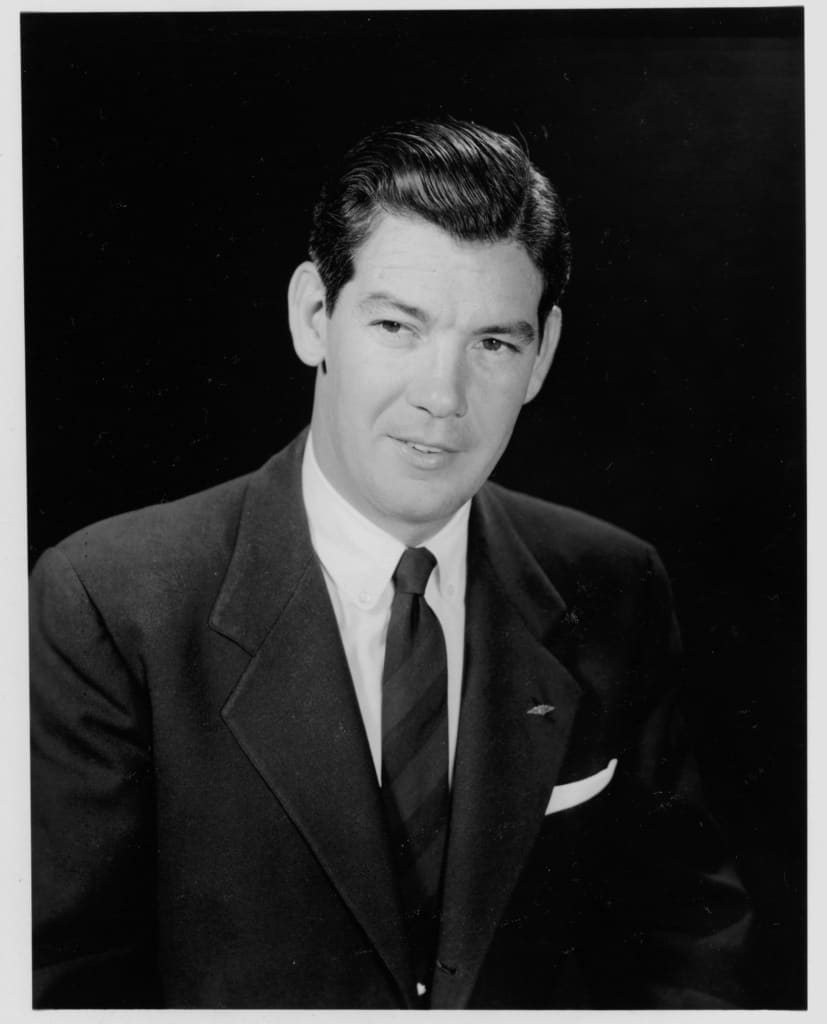
Bayer changed his tactics. Rather than simply highlight the helicopter in glossy photos and brochures, he emphasized his relationship with the Army and, as an outgrowth of this, particularly after the spring of ’59, an experience flying in the craft. At McCulloch, he’d seen that the virtues of the design innovations in the MC-4 could not succeed merely by being self-evident. As had occurred at Kellett, when developing the MC-4, the military had remained at too great a distance–their needs at too great a distance from the vision of the engineers. Returning to Hughes, Bayer was ready to get down on the ground and shoot a gun, travel the world with Army friends, go to parties and, in general, make the 269 an ever-present reality from the men that he believed could put its capabilities to good use. In short, he broke through all the traditional boundaries of selling. He later wrote:
I believe that fearlessness as a result of lymphosarcoma and test flying plus a large dose of good luck resulted in my becoming successful V.P. of Hughes at age 35.
In future years, Bayer would be criticized for the strength of the presence he created, to which his response would be, in essence, “I was doing my job.” Creating relationships worked. Unless one looks a the experiences and history at Kellett and McCulloch, it is impossible to appreciate the what the Hughes 269 achieved in design and social impact, the revolution in how the helicopter was imagined and conceptualized. Ironically, Bayer ultimately found himself allied with a few top Army aviators and almost no one in his own company–Hughes Tool.
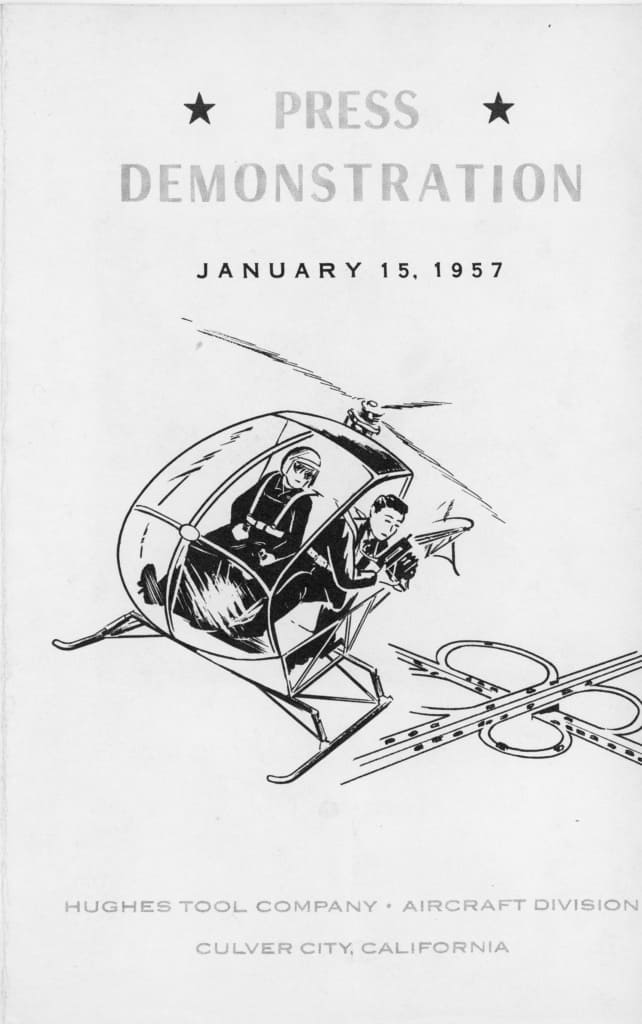
The Bayer aura was designed to charm and impress–giving off a combination of worldly friendship and technical mastery. Beneath his handsome, well dressed exterior–increasingly captured in a series of business portraits–lay drive. He was cultivating an air of brilliance and friendship with the Army–the parties, the women, the stories and jokes all served a purpose, obscuring an obsessive interest in the dream of the mobil rotary aircraft. Bayer seems to have hardly paused in his push forward with the Hughes 269A. With the military tests of ’58, he got feedback from pilots and this leant to improvements.
Bayer organized a press demonstration of the 269 for January 15, 1957. Later in the month, Hughes Aeronews featured the 269 with the military. Bayer later wrote:
At the beginning of 1957 I organized a press conference and demonstration of the 269 helicopter and a series of demonstrations for senior defense department officials. 302Unbelievable
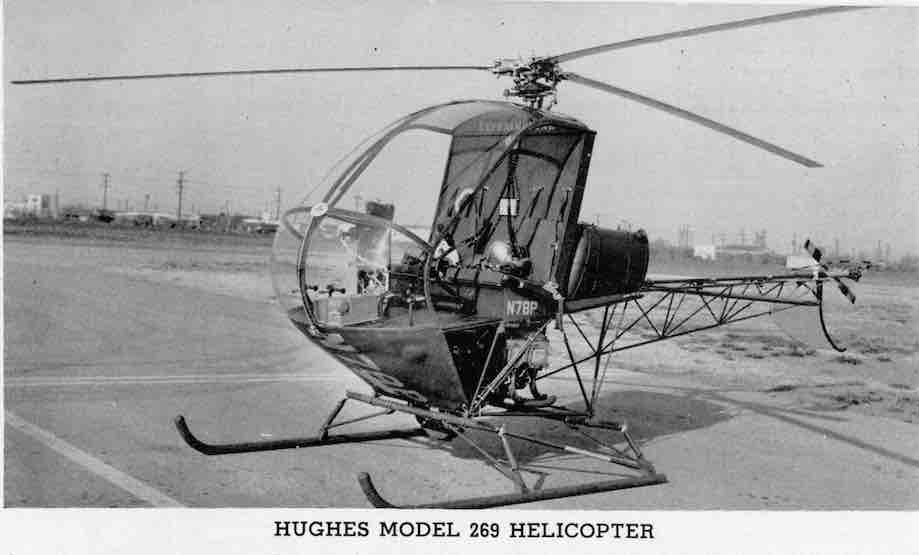
In one pair of photos, Bayer posed with the Army beside the first 269. Rea Hopper posed with the Navy. The dichotomy is significant.
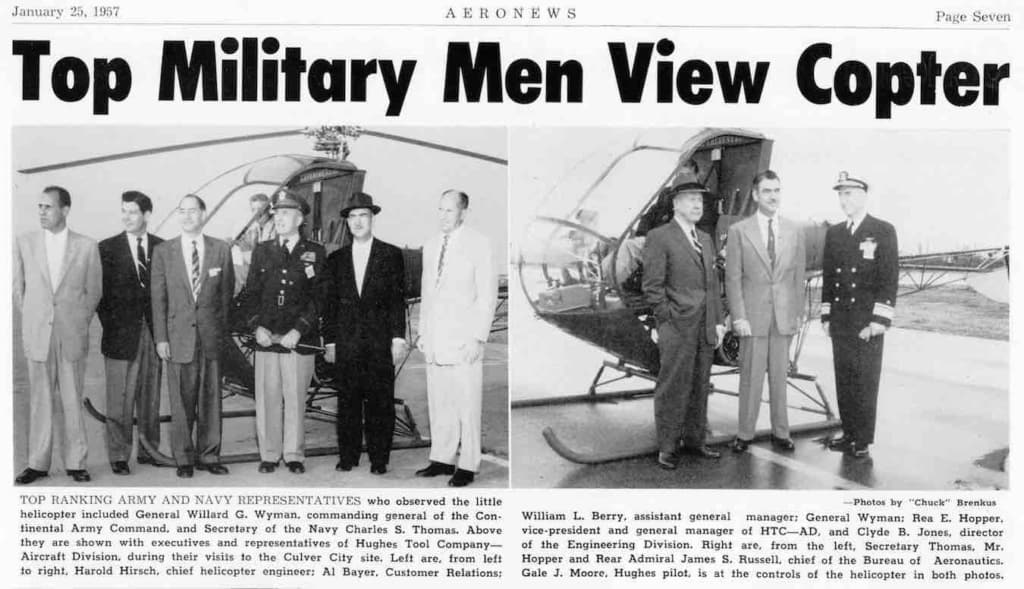
A photo of and remarks by General Hamilton Howze beside a photo of the prototype 269. In the article Howze listed the purposes for which the Army now sought a small helicopter. None of these included an “attack helicopter” or even any use of a helicopter with guns or missiles on it. The army sought an “observation helicopter.” However, the article begins with a statement calling for “high payloads”, not greater maneuverability.
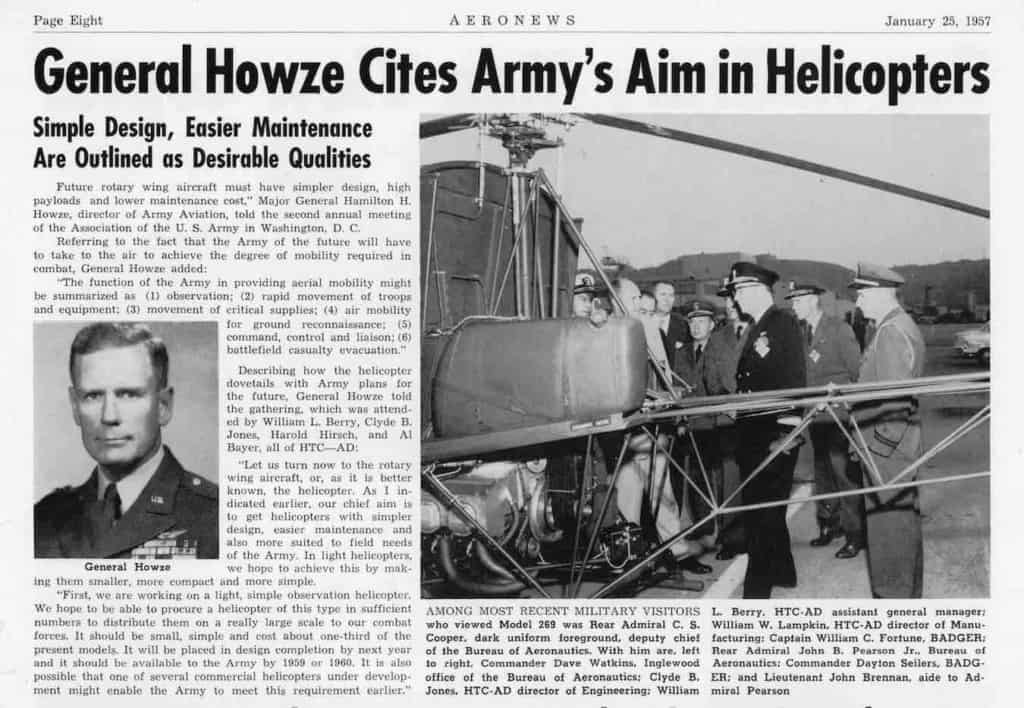
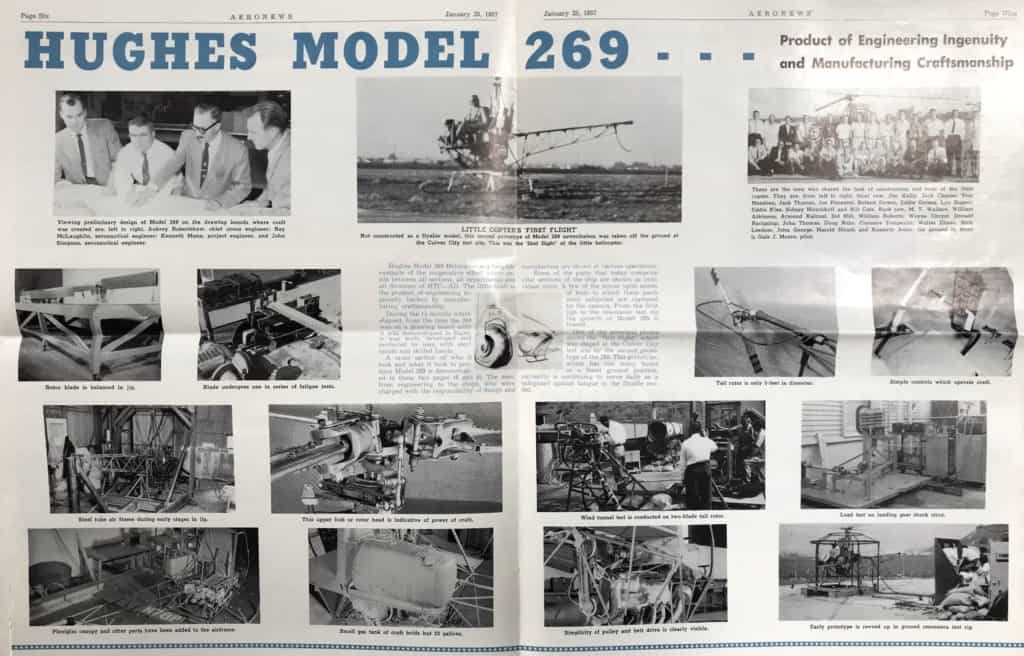
The demonstration put the 269 in the national press. Probably citing Bayer’s early marketing emphasis on simplicity and economy, the revolutionary nature of the craft lay not in it mobility but in its reduction to helicopter basics. 303Radically Simple photo: The Montana Standard (Butte, Montana)31 Jan 1957, ThuPage 1 much of the press called it a “flying jeep.” 304The San Francisco Examiner (San Francisco, California)16 Jan 1957, WedPage 11 This echoed press during 1954 about American Helicopter’s XA-5.
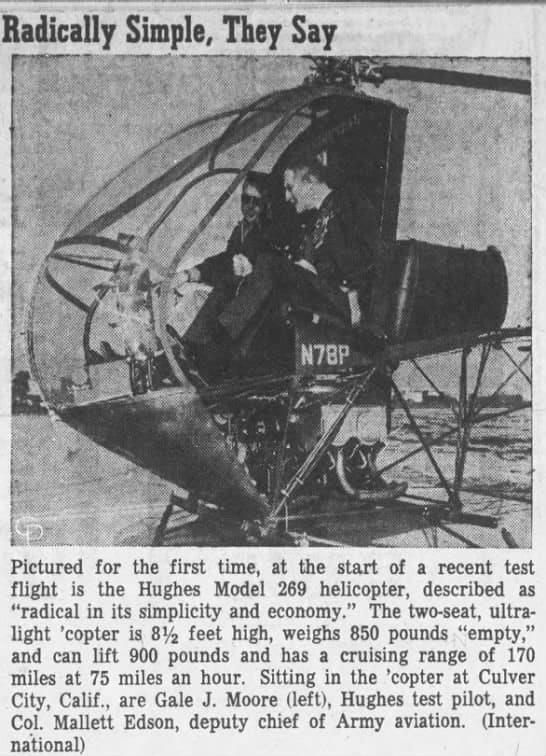
This idea of small seems to have prompted the Army to study the idea. Later in the year, Army Transportation Research Command contracted with Piasecki for study of an “air jeep.” 305http://www.aviastar.org/helicopters_eng/piasecki_airjeep.php
What the Army initially saw in the 269 was not so much its mobility as an alternative to existing observation helicopters. Or, at the least, this is what they would say out loud. They decided to evaluate five of them.
In 1957 Hughes proposed its new Model 269 to the US Army as alternative to replace the OH-13 Sioux (Bell 47) and OH-23 Raven (Hiller UH-12). The Army accepted the delivery of five pre-series units designated YHO-2 HU. These helicopters were tested (along with the SO 1221 Djinn designated YHO-1 DJ, and the Brantly B-2 designated YHO-3 BR) between 1957 and 1958 by the US Army pilots at Fort Rucker (Alabama) and at Edwards Air Force Base (California). At the conclusion of those tests the YHO-2 HU achieved the best results of the trio. Despite this brilliant result the US Army did not immediately adopt this model. It was in fact judged to be too small to replace its famous predecessors and consequently it was eventually turned down. 306https://www.heli-archive.ch/en/helicopters/in-depth-articles/hughes-269a/
In 1957, Bayer met General Chester Clifton (September 24, 1913 – December 23, 1991)–recently appointed head of Army Information. After commanding an artillery battalion in WWII, Clifton had obtained a masters degree in journalism. 307The Three Musketeers, Don Belding, June 1958 Bayer became a member of the Association of the United States Army (AUSA) and was asked to help “energize” the Los Angeles Chapter. 308AL BAYER AUSA RESUME, 1999 This would prove a fundamental connection that Bayer could use to build relationships with Army brass. Bayer had come to realize that the quality of the product mattered yet was equalled in sales efforts by the relationship he developed with the buyer–the military. This membership would quickly become the springboard for Bayer’s efforts–he could mingle with Army Aviation as one of them, as an insider. This helped build trust–a difficult but vital element when dealing with government procurement.
1957-May-Fort-Benning-Trip-reducedAn interview in the Los Angeles Examiner during June of 1957 suggests that, at this point, Bayer had become less excited about the helicopter as a personal craft and, for civilian uses, was focusing more on industry.
1957-Examiner-interview-on-helicopters-reducedBy March of 1958, having purchased the articulated rotor design during ’57, Hughes Helicopters modified the designation to 269A, and was constructing at least one civilian craft—N79P—and five 269A helicopters for the military to test. 309The Los Angeles Times (Los Angeles, California) 24 Mar 1958, MonPage 44 “Simplicity and economy” remained key selling points. However, now and occasionally, the term “mobility” began to appear in the press even as the primary message focused on cargo. (TINY CRAFT. (Arizona Daily Star (Tucson, Arizona)25 Mar 1958, TuePage 6)) 310Aeronews, Hughes Tool Co. March 21, 1958 That month, Bayer became Director of Customer Relations at the Hughes Tool Company Aircraft Division.
During June of 1958, Bayer, Clifton and Clifton’s aide, Don Belding, went on a 20 day tour of Europe to inspect Army public relations offices. Bayer was now on the public relation committee for the AUSA. Belding chronicled the trip and dubbed it, “The Three Musketeers.” Clifton would become military aide to President Kennedy and, as Bayer’s ultimate inside influencer, played an important role in his efforts. The trip also helped with his awareness of the market in Europe.
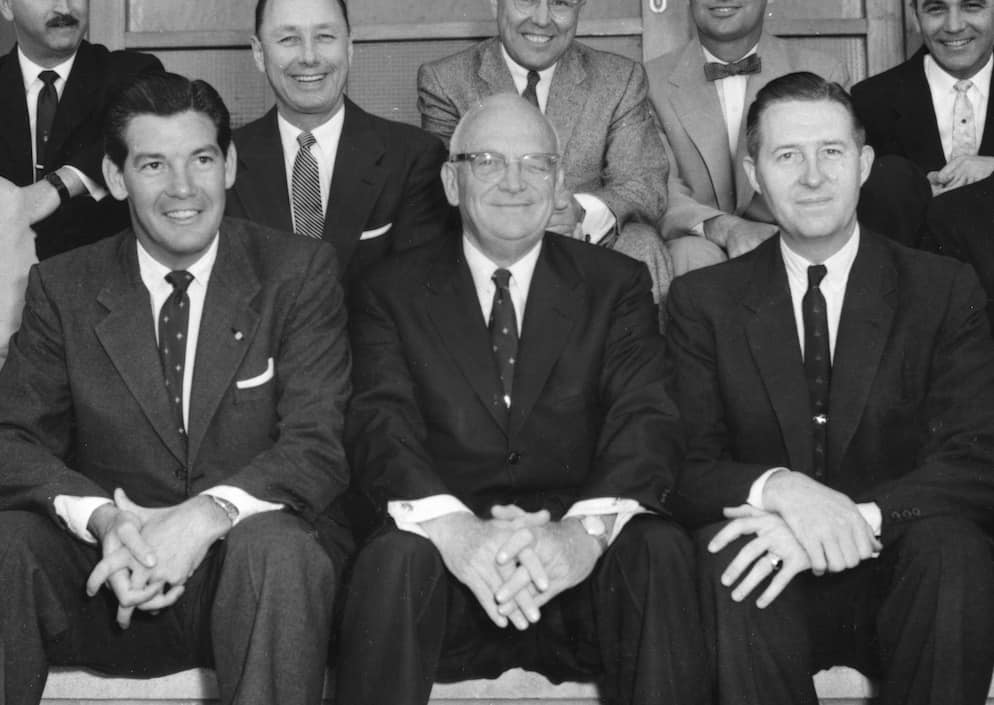
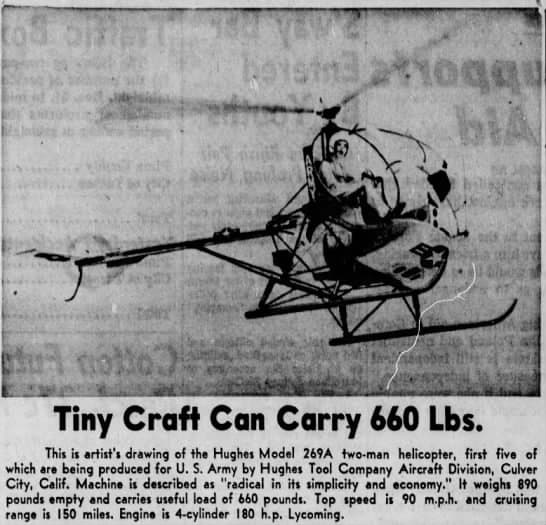
A photo from this period illustrates Bayer’s ongoing conversation with the Army. He looks much younger than the military men to whom he is trying to sell the concept.
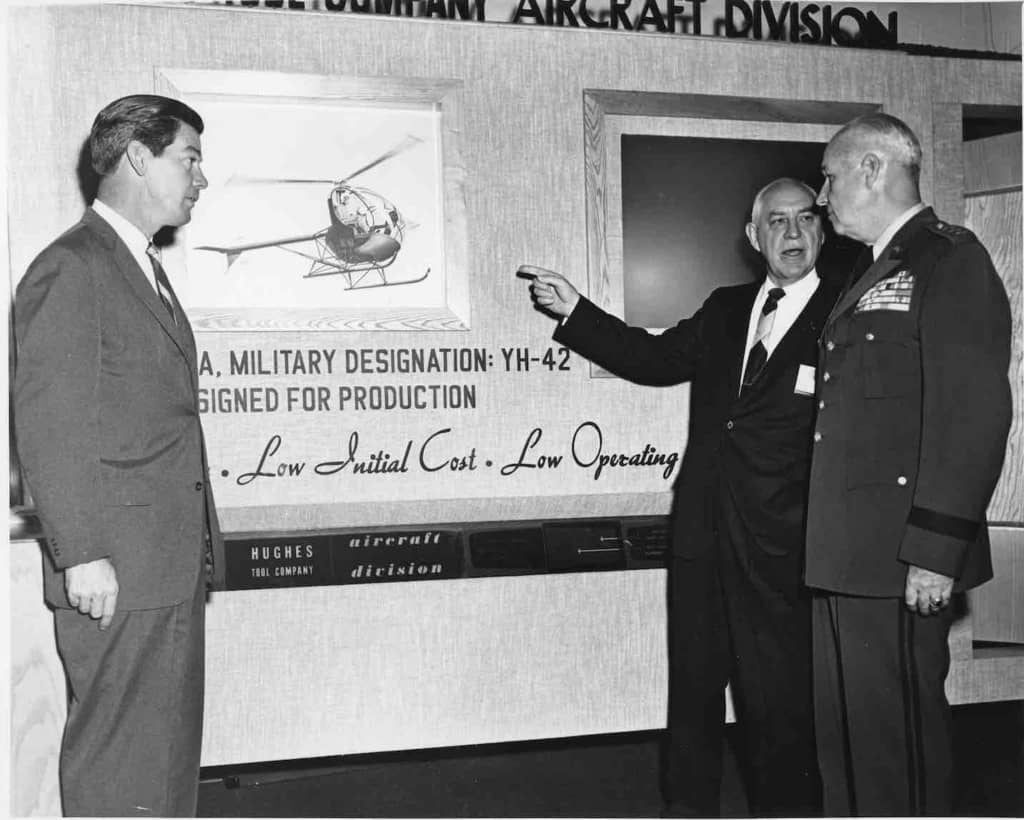
In October, Bayer was approved by the Air Force to fly the military versions of the 269. 311Air Force Approval Docs. ’58 and ’59. In 1958, while visiting Fort Bragg with the AUSA, Bayer met General Clifton von Kann. 312Hearing p. 131. In 1958, as Assistant Division Commander of the legendary 82nd Airborne Division, von Kann became a senior paratrooper and, soon after, a helicopter and fixed wing pilot. He became leading figure in recognizing the importance of helicopter aviation to the army and a key ally to Bayer’s effort. 313https://www.legacy.com/obituaries/washingtonpost/obituary.aspx?n=clifton-f-von-kann&pid=170812718 This stemmed from his relationship with Bayer. The relationship between Bayer and von Kann put the dream of a fast, highly maneuverable vertical take-off aircraft on the table. 314https://www.heli-archive.ch/en/helicopters/in-depth-articles/hughes-269a/ One in private industry and one in the military, their conversation lead to development of the fast and maneuverable, light tactical air mobility helicopter. This would be designated an “observation” craft though its maneuverability and hence lethality would lead in the 1980s to the nimble “attack” helicopter.
That same year, General Howze introduced the concept of tactical air mobility to the Pentagon.315https://warfarehistorynetwork.com/2016/09/19/tactical-air-mobility/
In December 1958, Bayer submitted a marketing plan for the 269. This incorporated all the lessons from his previous work–outlining an integrated approach that put sales–himself–at enter of 269 development. Marketing would be assigned a helicopter that would be made to look good so that it could be demonstrated to potential customers. He wrote that marketing would be broadly defined to include, …sales planning and policy; sales organization training and compensation; sale forecasts, quotas, budgets and controls; selling publicity and public relations; product and market research and development and sale operations research. It is the integration of sales with all the other facets of our business and the accomplishment of the kind of planning and production of the kind of sales volume that will provide maximum profit and the greatest potential growth. Among his goals would be the Army’s desire for a light observation helicopter. He asked that the company’s one flying prototype, N79P, be assigned to his Customer Relations Department and anticipated that demonstrations to the Army would occur at the Pentagon.
1958-lr-Marketing-Program-plan-for-269In January of 1959, Hughes test pilot Gale Moore began to fly N79P for the FAA Type Certification tests in Palm Springs. 316https://en.wikipedia.org/wiki/Type_certificate It appears that, at this point, even though simplicity and economy would long remain primary selling points, the impact of the articulated rotor blades and the resulting maneuverability of the craft began to be noticed by everyone watching the craft. The engineers seem to have noticed this first. In a Desert Sun article, Hughes Helicopter research engineer Ken Amer noted that the “revolutionary” 269 could maneuver “in practically no space” while achieving speeds of 90 mph. He said, “this buggy is new”–perhaps reflect ing on the past 11 years with little radical innovation in small helicopter design. 317The Desert Sun (Palm Springs, California) 15 Jan 1959, Thu Page 1 N79P survives at the Evergreen Aviation Museum in Oregon. 318Constructed in May 1958, It survives at the Evergreen Aviation Museum in Oregon. Moore and Bayer pilots seem to have begun to master the craft’s maneuverability—-innovations that Amer told the press hadn’t been seen in 11 years.
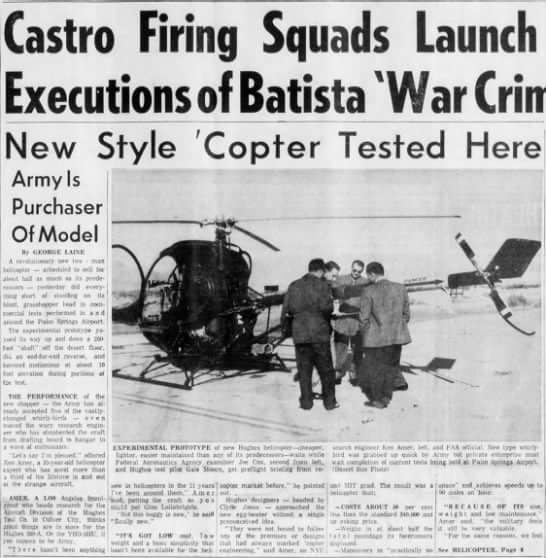
Bayer may well have read Amer’s comments to the Desert Sun. It does not look like an article generated by Bayer and his sales team. The Desert Sun Article lay adjacent to a headline heralding Castro’s takeover of Cuba. Now head of marketing at Hughes Helicopters, Bayer could see in the article that the revolutionary nature of the 269 was apparent to the engineers. It unlikely he was not already aware of the potential in the articulated hubs. He mentioned maneuverability in the December 1958 marketing plan.
The Army stated the craft was too small and that they lacked funding. The perception of a growing threat by Castro in Cuba began to open up government spending on new tactical weapons–armaments short of nuclear bombs. While the Army had rejected the 269, Castro’s revolution changed the army’s perception and began the flow of resources in new doctrine of “mobility.” Still, particularly beyond a few in army aviation, much of the military remained mired in old thinking. It must have irked both Bayer and his growing number of friends in Army Aviation that the need for a highly mobile gun-equipped helicopter–later called an “attack helicopter”– continued to fall by the wayside as the old line of thinking saw only a need for cargo helicopters. The Navy control over helicopter procurement of aircraft. In wake of the failure to sell the 269 to the military, Bayer or, more likely, his secretary Rosemary Weidinger (1932-2020) created a humorous advertisement suggesting that guerrillas of the Castro type should purchase the ship.
This cartoon is one of the great artifacts of American aviation history. It shows guns mounted on the 269A many years before the military’s official policy would embrace a highly maneuverable armed helicopter. Though probably intended simply as an inner-office joke, the cartoon illustrates the extent to which Bayer clearly saw the Hughes craft as a revolutionary design and as a platform for the Army to attack in the context of guerrilla warfare. In fact, as soon evidenced by newspaper article, he then seems to have begun to call the craft, “revolutionary”–taking the word from the Cuban revolution underway in Cuba. The cartoon may also illustrate how his secretary, Ms. Weidinger, supported this effort–giving it intelligence, grace and humor.
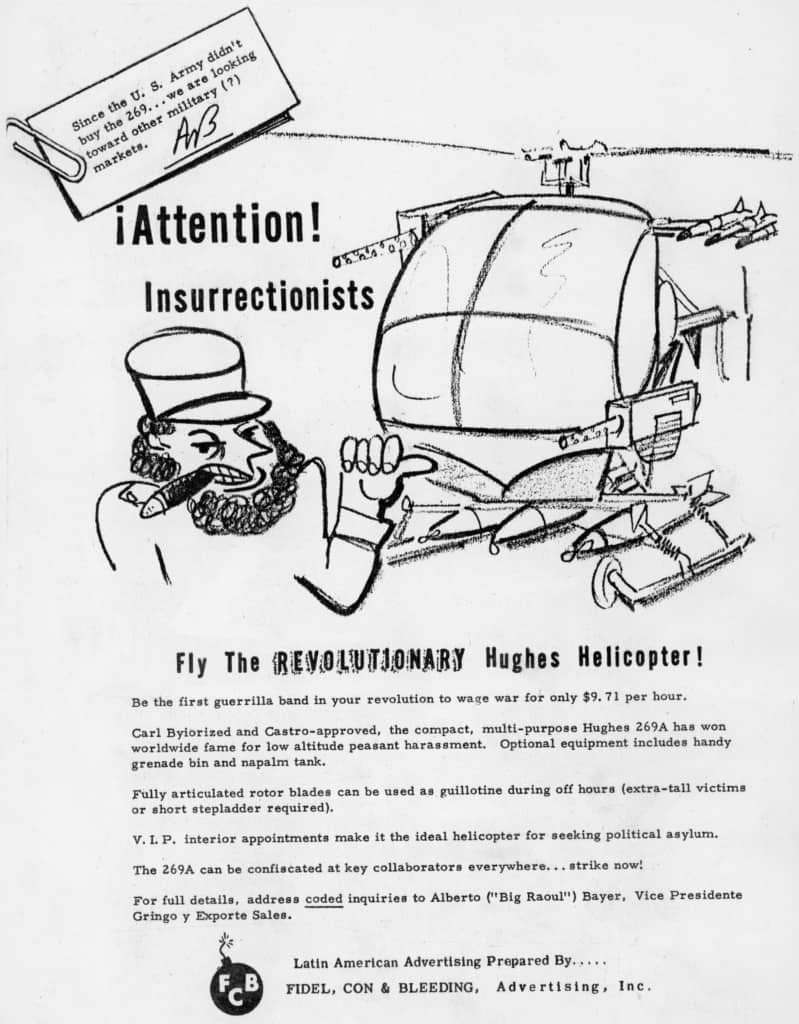
As had the earlier, McCulloch drawing of the MC-11, this cartoon of the 269A as an attack helicopter differed greatly from the role of the helicopter as defined by the mainstream military since World War 2–as a support, rescue, transport and cargo craft. The Army had failed to buy the 269A. Someone needed to up the ante–the show what it could do, to really fly it.
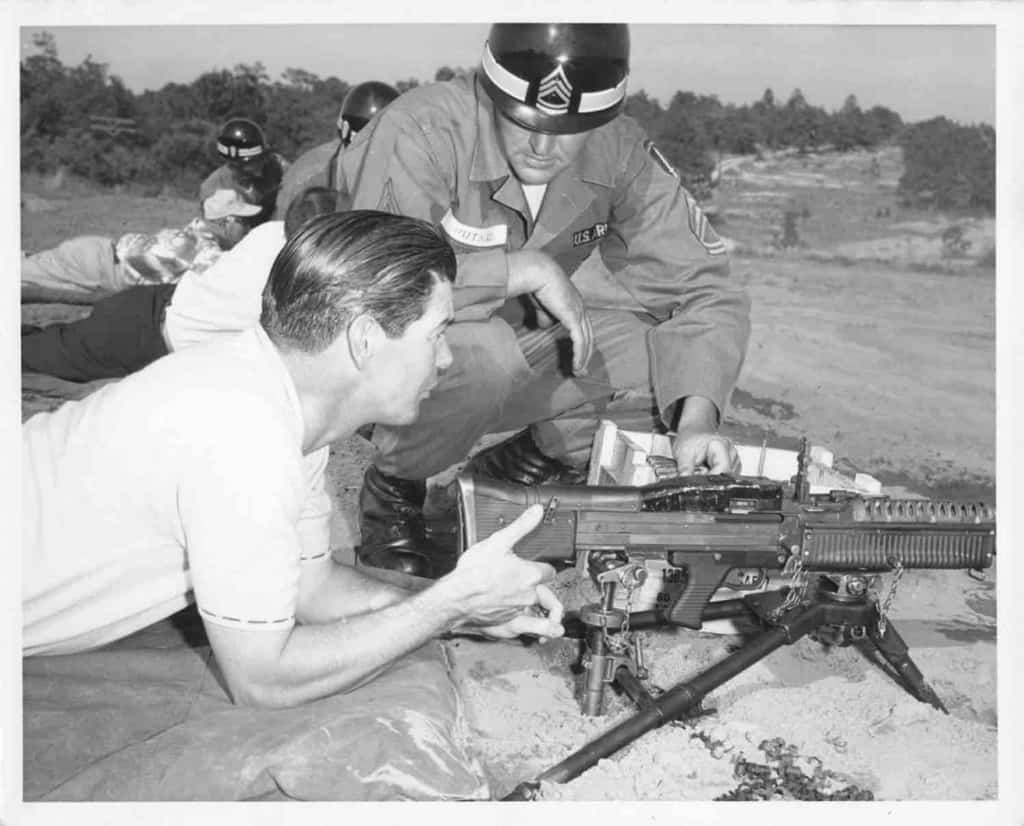
Bayer continued to interact with and create relationships with the Army. In May of ’59, he visited Fort Benning where the Army asked him to become more involved with the Los Angeles chapter of the AUSA.
CERTIFICATION – N79P and style
By Spring of ’59, Bayer began to take a more assertive approach based on his own flying. In part this stemmed from having to step in and assertively fly the prototype 269A. Bayer first flew the 269 in December of 1956. He began flying N79P–the second civilian experimental prototype–in September of 1958. In January of ’59, building on his growing relationships with the Army, even before Type Certification, he took General Meyer and General Clifton for rides. 3191-22, 2-26. Logbook
During April of ’59, after Hughes test pilot Gale Moore broke his leg while flying and decided to leave flight testing. 320Unbelievable This put Bayer under a lot of pressure. With the Army having, for the moment, declined to purchase the 269, the design could only survive if there were civilian sales. Type Certification and then showing the aircraft were vital. A major air show was about to occur in Las Vegas. Bayer had worked on other designs that had never moved beyond hobby-shop manufacturing–the plaything of someone with money. Howard Hughes had created a couple designs that, once initially flown, never went anywhere. The survival of the 269 design and its long-term fame resulted from Bayer’s decision to finish the Type Certification flights himself and then to show the helicopter–flying it as he felt it should be flown, to exhibit its maneuverability. He brought to this decision his passion for small helicopters, his intense concentration and a self-confidence in his own flying that, in hindsight, we might see as fraught with peril. No matter how thorough and excellent the design, things could go wrong. And, the 269 still had issues.
Bayer completed the FAA Type Certification flights in the N79P prototype of the 269. This began with a flight to and from Las Vegas and totaled about 60 hours. 321Logbook. And, draft of Letter to Bill Gay, p4. June 16, 1965. A certification date is mentioned, probably an earlier effort: Newsletter American Helicopter Society, Vol 8. No. 4, April 1962. 322Logbook. March 21 thru March 11. N79P construction finished May of 1958 https://onespotter.com/aircraft/fid/1201329/N79P https://www.evergreenmuseum.org
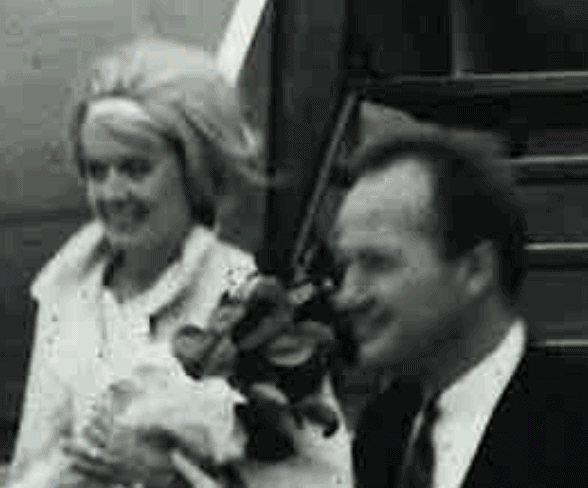
Though his logbook describes his Type Certification flights as originating and ending at the Hughes plant in Culver City, Bayer’s private photos show him flying that Easter season with FAA official John Francek off the golf course across from his home in Palos Verdes and at Marineland Of The Pacific on the bluffs of the Palos Verdes coast. These photos may have been taken by his new assistant, Carl Perry. About the same time, Rosemary Weidinger became his secretary. 323Hiring cited as three years before her helicopter license in spring of ’62. Clipping from Weidinger scrapbook. Bayer’s hiring of a personal staff as well as taking over the Type Certification flights sometime in early 1959, combined with the overall scenario, suggests that he made a decision to personally fly and demonstrate the 269. There seems to have been a concern that, particularly with Moore leaving, the 269 would come to be seen as dangerous–its maneuverability perceived as a flaw. The Army had rejected the 269 as “too small”–acknowledging only its size at a time when most military people still saw the helicopter as a cargo craft. Bayer may well have felt that, with their own pilots flying the 269, the Army had missed the craft’s unique qualities. The Type Certification flights soon heralded Bayer’s effort to fly the top brass and, in general, to showcase the 269’s revolutionary abilities. He began this effort with photos during the Type Certification flights.
Bayer’s decision to personally fly the craft, certify and demonstrate the 269A was consistent with past efforts in which he had combined test piloting with marketing. Yet, there was a sense of urgency and anxiety to his doing it so alone and with such a focus on style. This was the moment when AW Bayer saw it–the cool helicopter. He came home from the Marineland photos exclaiming, “It’s perfect.” Taken by both Bayer and Carl Perry with Bayer’s personal Argus C3 camera, the photos of the 269A at Marineland Of The Pacific, on the Palos Verdes Coast, were never published. However, they illustrate the feeling and inspiration Bayer had as he completed the Type Certification flights.
They mark the beginning of AW Bayer’s efforts to personally fly the 269A all over the sky–personally taking in hand the task of selling the 269A and doing this, in a sense, despite of or in the face of his organizational role as Vice-President of Marketing at Hughes Helicopter. The photos lead directly to a new level of conversation between Bayer and his friends in Army Aviation–and particularly with Clifton von Kann—words now based on experiences in flight that Bayer would provide alone the coast. Flying with Bayer, they would see in the 269A the maneuverability that was possible–a level of control and dexterity that military pilots seem to have missed when they tested the craft in ’58. Bayer’s method for flying the 269A can best be described as “assertive.”
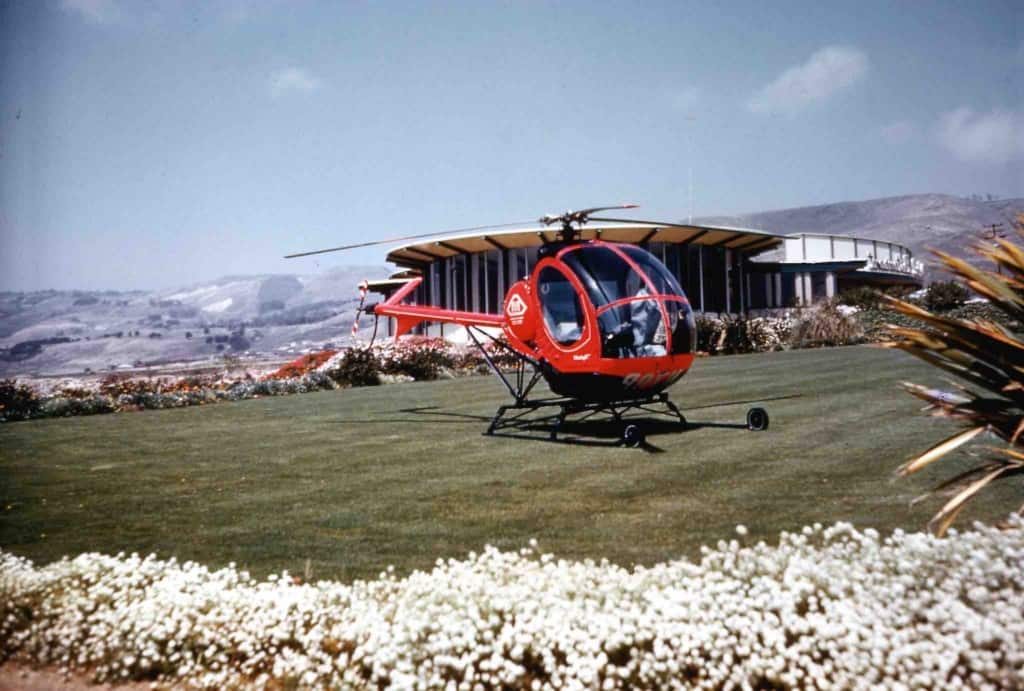
In one photo, FAA examiner Francek appears to be flying from the right seat.
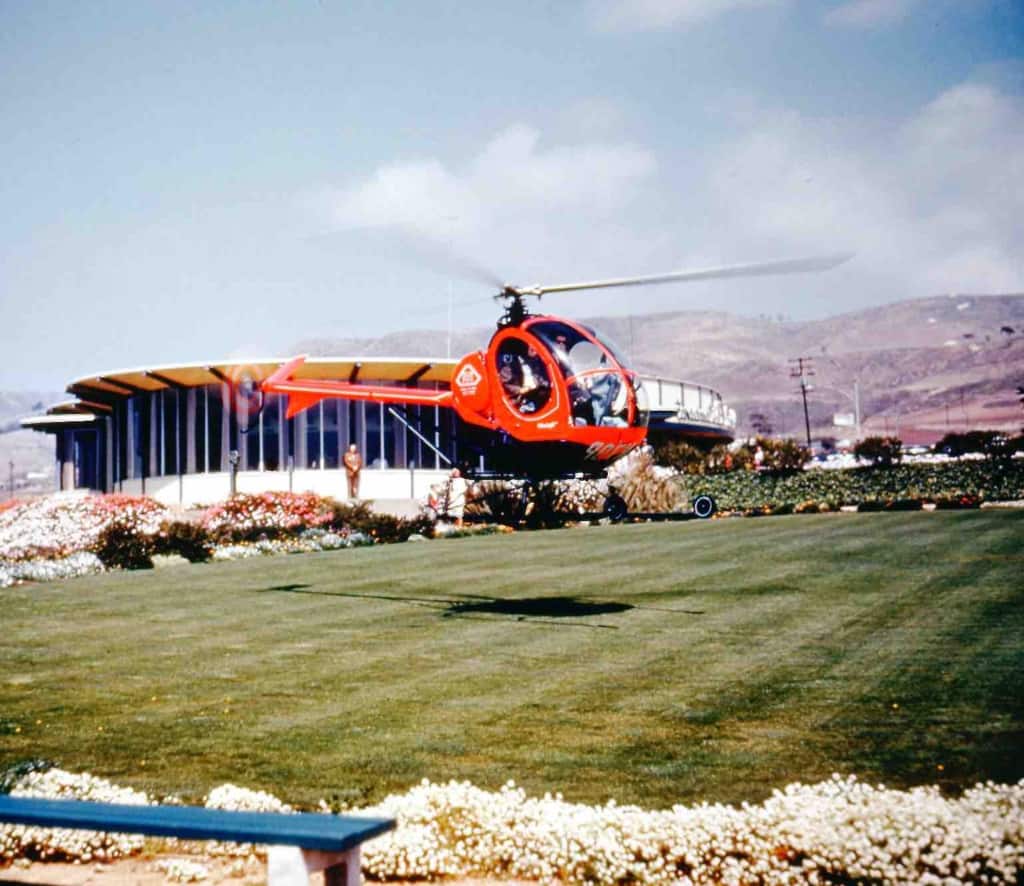
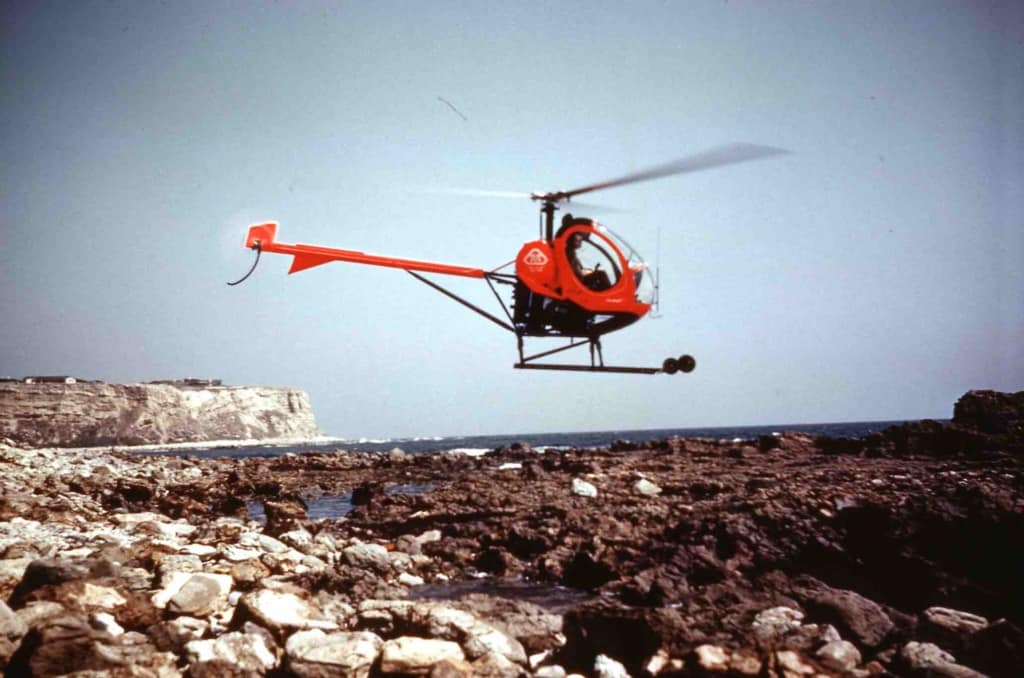
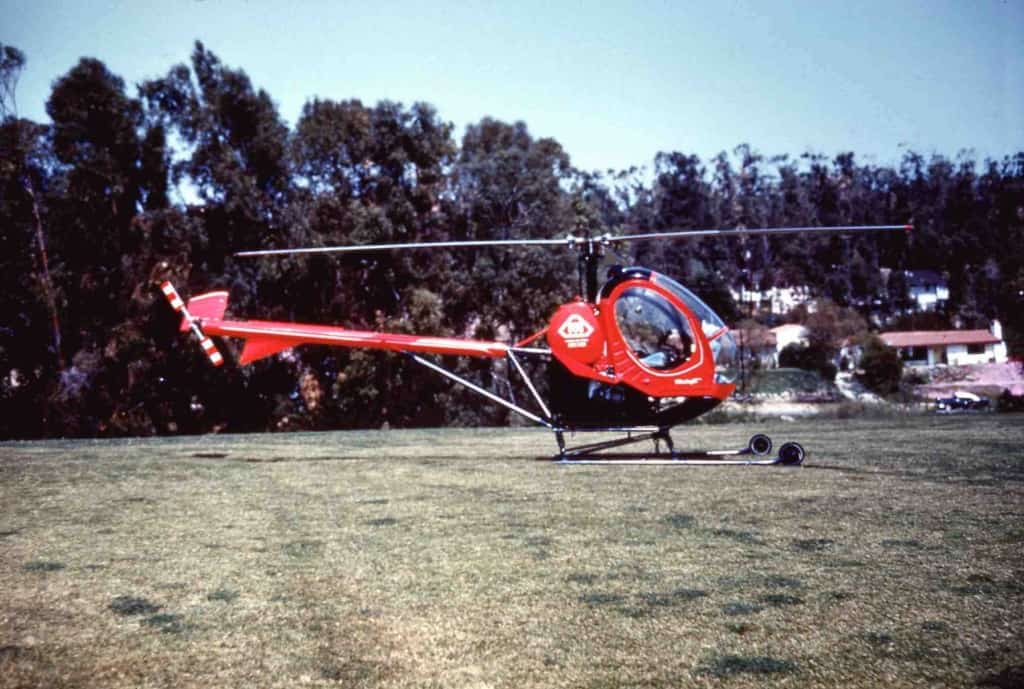
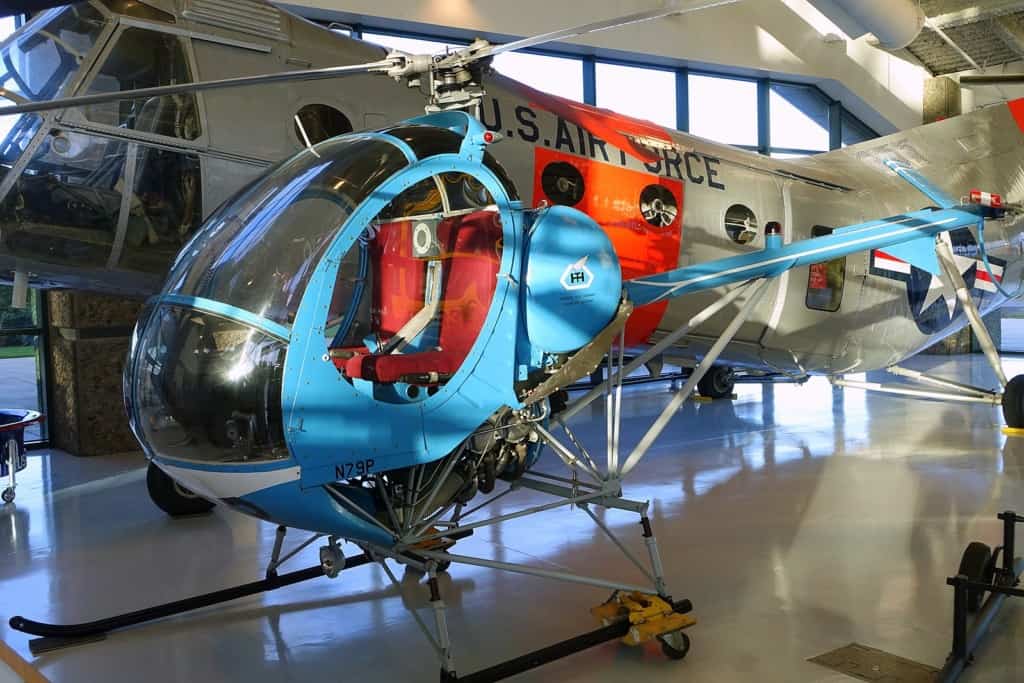
As it was Easter, Bayer had Perry walk across the canyon from the golf course and shoot photos of Bayer with his family. I remember the tension in the air as my father insisted we pose. He was under great pressure. When it came time for the shutter to click, I felt as if my parents were struggling but that, if I stared hard enough into the lens, I could hold it all together. In a sense, there seemed no reason for the family to dress up for the shot. Bayer was busy flying and simply rushed back from the gold course for a moment. On the other hand, at this point in April of 1959, Bayer seems to have seen the craft as part of a new and modern lifestyle–a vision that would play out further that fall. In the end, the future of his efforts lay in Army contracts and the military uses of the light rotor design. Still, Bayer kept alive a parallel track–the cool helicopter, the life-style innovation.
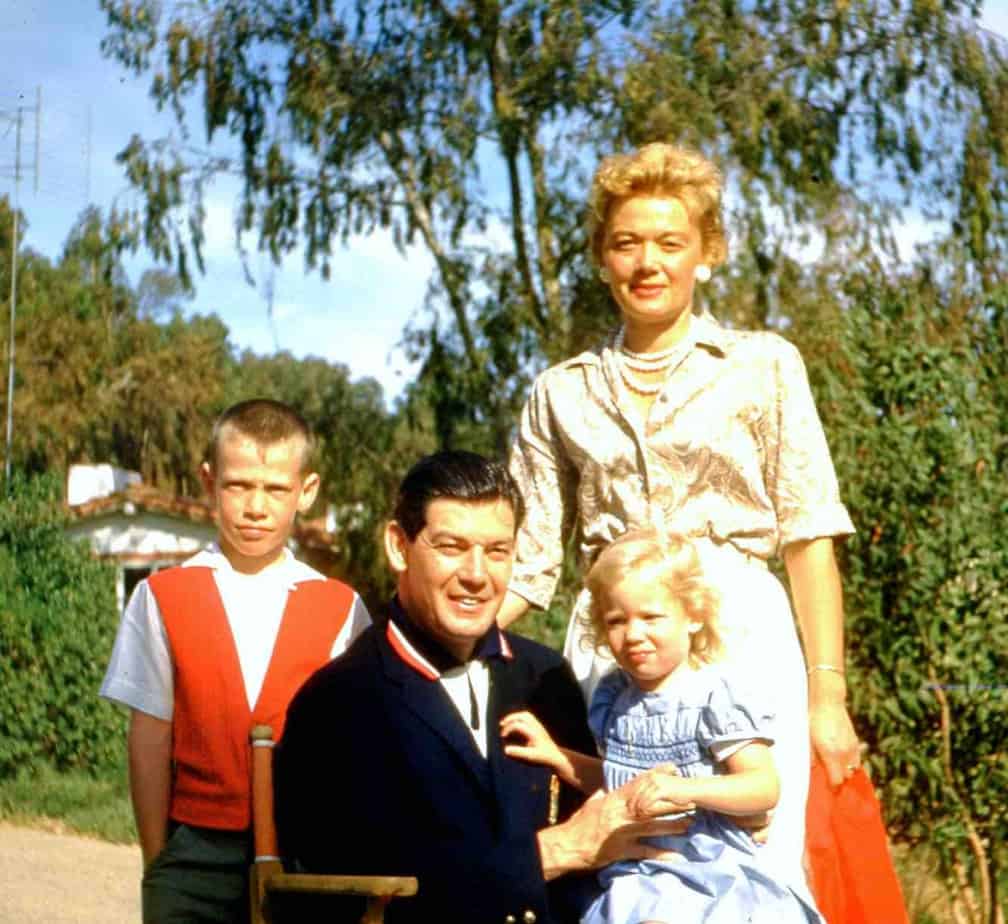
Finally, at the end of certification flights, photos from April 9 show Bayer with Rea Hopper in Culver City. 324The dating of Bayer’s slides is possible because, even though they are not date stamped, they are mixed with Easter slides of the family and Bayer kept his photos in order. His Logbook records … Continue reading
The photo with Hopper records the only time Bayer flew Hopper in the 269A. Hopper looks glum. Bayer seems to force a half-smile. The two men do not like each other. Bayer’s doing portions of the Type Certification tests on the golf-course, the Palos Verdes coast and Marineland probably irked Rea Hopper–a button-down type who favored solidly build airframes The 269A still had significant technical flaws. Yet, here it was soaring forward thanks to Bayer’s singular drive and his determination to put it through its paces.
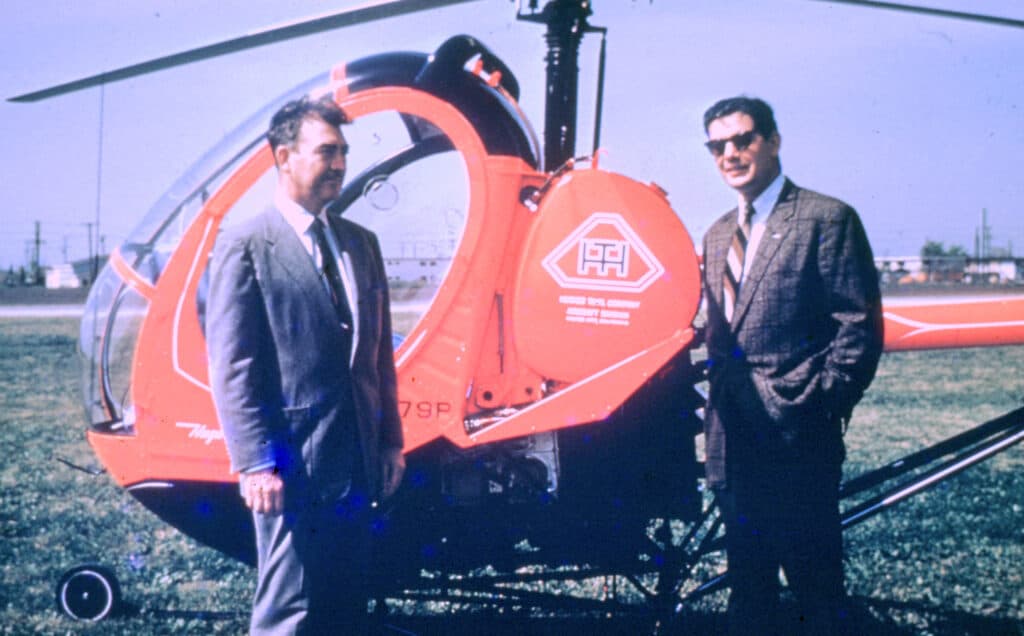
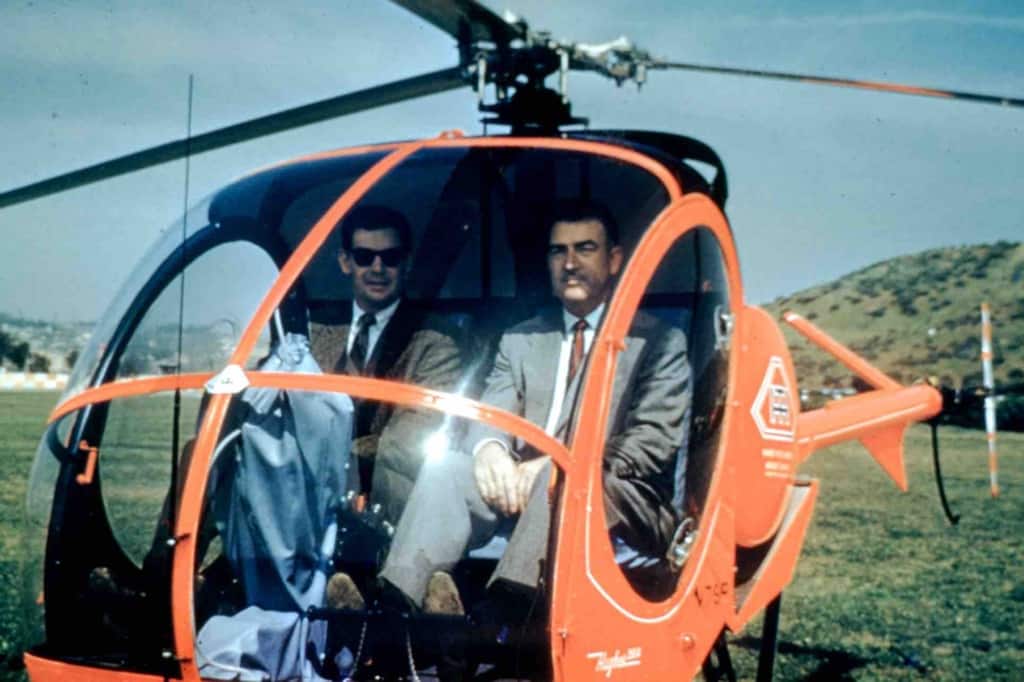
The purpose of the Marineland photos seems more to capture the helicopter in an attractive setting than to record the Type Certification. Bayer had had pictures taken at test flights of the MC-4. Now, however, he injected into the shots his sense of style. I remember him excitedly exclaiming, “Marineland is the perfect place to show the 269.” Taken probably by Carl Perry with Bayer’s personal Camera–an Argus C3–the stunning shots of N79P on the lawn in front of the Marineland building on the Palos Verdes coast capture Bayer’s vision of the 269A–a helicopter defined not just by revolutionary technical qualities but also by broad modern aesthetics. The aesthetic of the 269A’s design runs as a undercurrent beneath all ensuing technical problems and controversy–a visual proof that the cool, zippy, small helicopter and any craft derived from it lay in a category of its own.
With Type Certification complete, the 269A could now enter the civilian market. And, Bayer could begin to show the craft to the public. The photos of the 269A at Marineland and off the coast foreshadow the rides Bayer would soon give to military brass as he demonstrated the 269A.
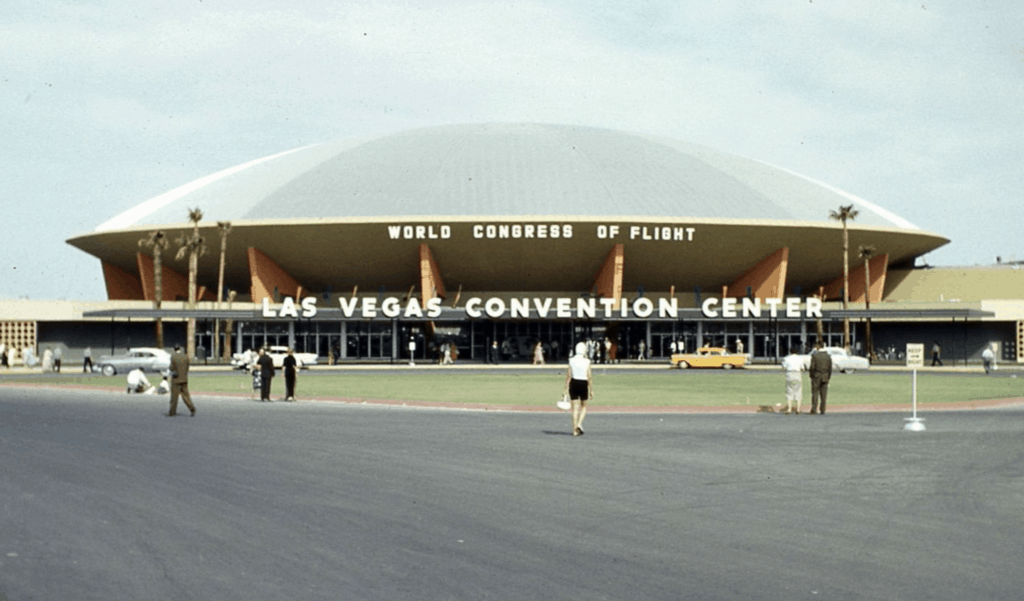
On April 11, Bayer flew N79P at the Air Force Association’s “World Congress of Flight”. The event ran April 13 through 17. It featured futuristic displays of rockets and jets at the Las Vegas Convention Center and demonstrations at McCarren Field, Nellis Airforce Base and Indian Springs. On Sunday, April 12–the day of the private press briefing before the event–he flew Gordon McRae and Jack Ross in the 269. McRae was a Hollywood singer and actor, performing with the Jack Ross Orchestra at the Desert Inn. 325Unbelievable. Also: https://www.newspapers.com/image/18164270/?terms=Gordon%2BMacRae Walter Winchell column. Eureka Humboldt Standard (Eureka, California)28 Apr 1959, TuePage 4
Airforce Magazine later wrote:
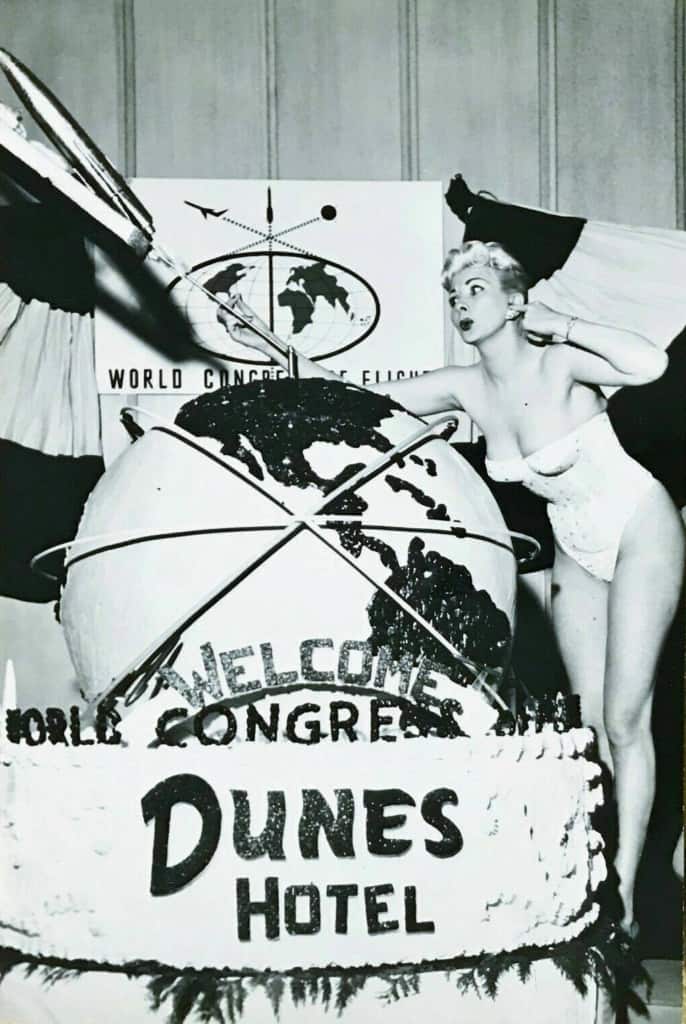
James H. Douglas. Jr., Secretary of the Air Force back in 1959, said the World Congress of Flight was “one of the most significant events in aviation history.” Gen. Curtis LeMay called it “a formal announcement to the world of the arrival of the jet age.” Fifty-one nations participated, and for a full week, AFA held center stage, informing the nation and the world about aerospace power. Life magazine gave it five pages of coverage, and NBC-TV broadcast an hour-long special to 40,000,000 viewers. 326Airforce Magazine. What You Can Do, John Gray, May 1988, https://www.airforcemag.com/article/0588edit/
On April 13, N79P came apart due to ground resonance. Bayer later wrote:
At the World Congress of Flight in Las Vegas, the day before the show, I flew into the arena with my dear friend Gene Vidal….After dropping Gene off, to watch me practice, I put the helicopter through its paces and while making a power-off, run-on landing it went into ground resonance which shook itself to pieces giving me a broken rib. After going to the hospital and getting patched up, I borrowed an OH-2 (military. version of 269) from the army and put on the show the next day. (The show must go on!”) Later, we had to re-design the landing gear to solve the resonance problem. 327From his notes for “Unbelievable.”
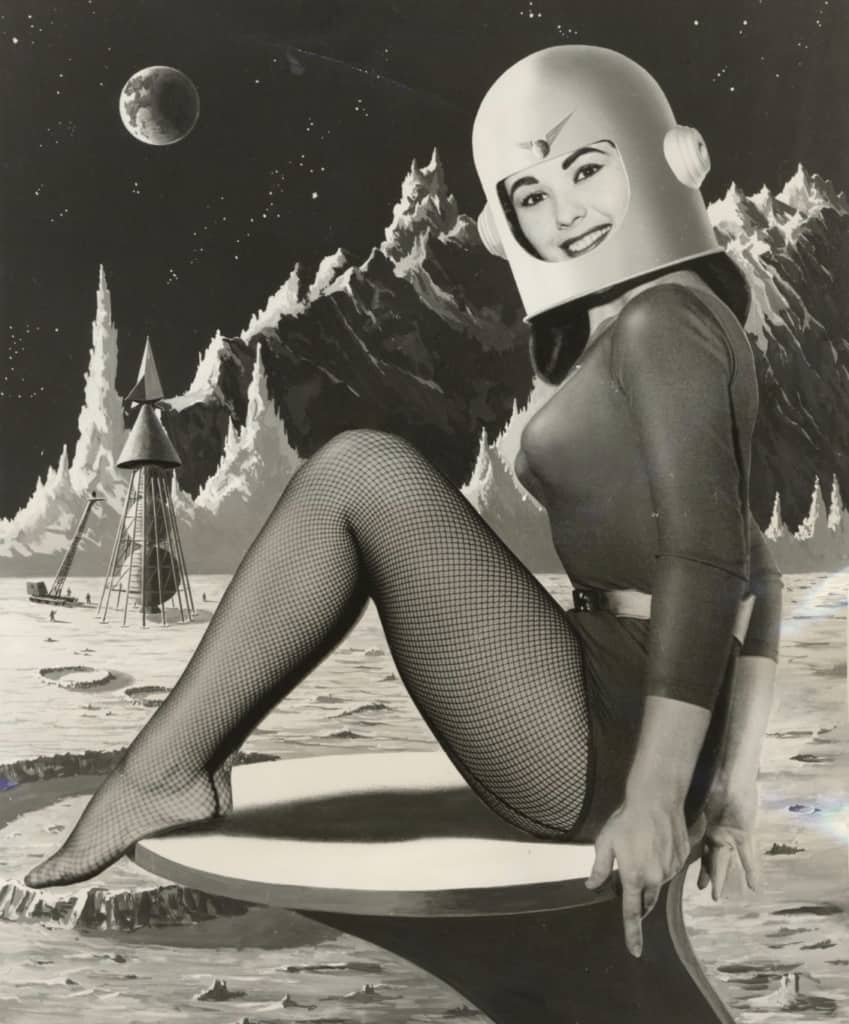
A run-on landing would seem to be a recipe for ground resonance–the landing gear slide along just touching the ground. That Bayer engaged in this maneuver while practicing for the show suggests that no-one yet knew the 269 had landing gear that were problematic in this regard and that, during Type Certification, Bayer had flown the 269 so aggressively no such problem could occur.
It turned out that the 269 still suffered two major problems–problems with auto-rotation and problems with ground resonance due to the design of the landing gear. For Type Certification flights, Bayer may have performed an dramatic auto-rotation–tipping the nose severely downward and then flaring abruptly. Based on the difficulty to performing autorotations in the XR-10, years before, he had probably mastered this abrupt maneuver.
In the airshow practice, Bayer performed the auto-rotation successfully, however, to try and impress an audience he then engaged in a running-landing–skidding forward with the landing gear–skids and wheels–in lose contact with the ground. This revealed the ground resonance problem and the aircraft came apart. It was a bold and even reckless air-show maneuver in a craft that the assigned test pilot may have refused to fly–quitting in the middle of Type Certification.
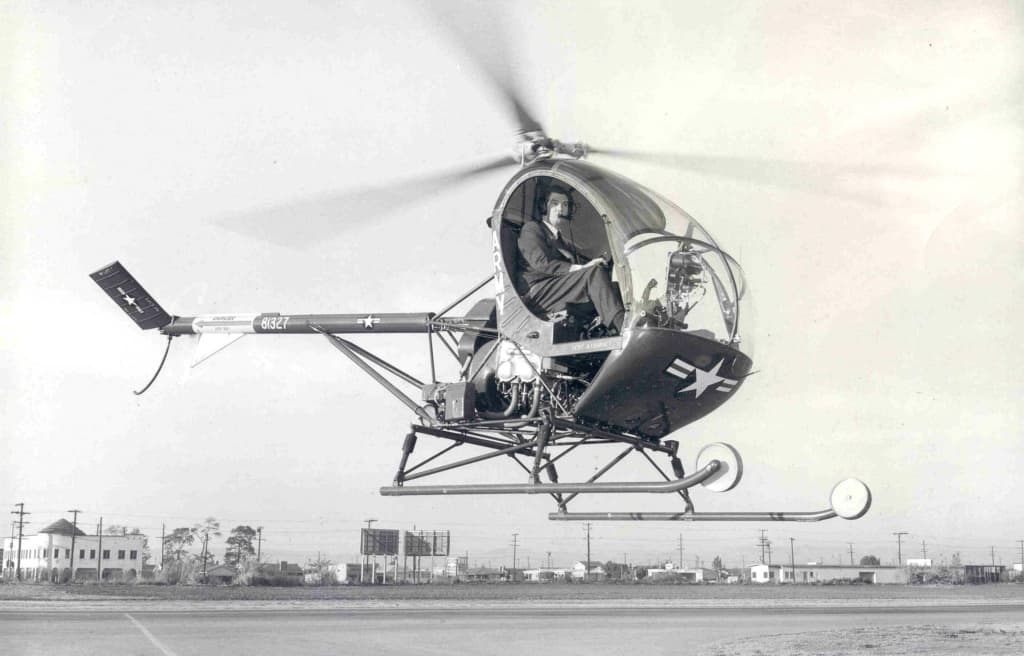
The Congress scheduled vertical aircraft demonstrations for April 14th. 328https://www.cia.gov/library/readingroom/docs/CIA-RDP80R01731R000200070101-5.pdf. The Type Certification flights seem to have shown Bayer the potential of the 269–at least the potential when he was flying it. In his hands, the craft realized the dream of a small, high maneuverable craft–a helicopter that one had to stay on top of every moment, fly every moment, and that would respond like no other. He could see that it was up to him to show this potential. He was head of marketing–but he was also a test pilot who believed that he possessed a keen sense of how far he could push a machine.
Though, in fact, sometimes, he was over-confident. Having wrecked N79P the day before, bandaged and in pain, Bayer flew at the airshow using one of the models built in ’57 or ’58 for the Army. 329Bayer’s logbook. In Army 58-1324. https://www.afa.org/about-us/afa-history Video of the airshow: https://youtu.be/OlLzSxxoD2Q The Los Angeles Times’ “Space and Aviation Editor”, Marvin Miles, saw Bayer’s demonstration and described the Hughes 269 as the “most impressive” helicopter at the Congress. 330The Los Angeles Times (Los Angeles, California) 19 Apr 1959, Sun Page 62. He described it as a “nimble personal aircraft”. Subsequent events suggest the demonstration and positive reaction to it–not to mention Gale Moore’s resignation– confirmed for Bayer that he must continue personally demonstrating the craft.
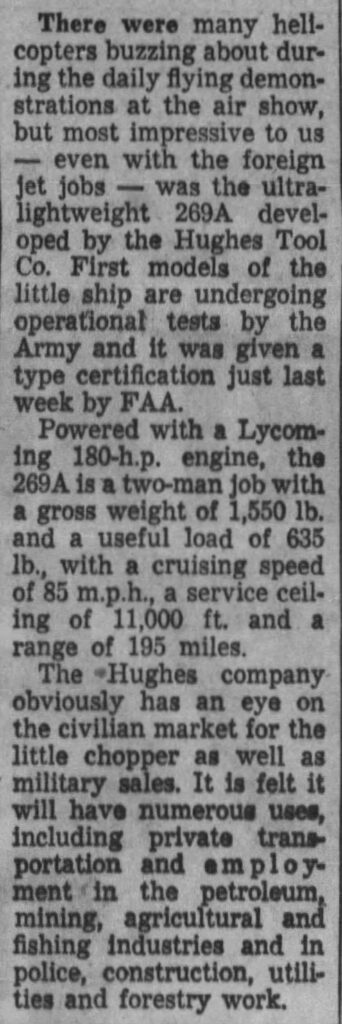
Hughes Helicopter put N79P back together and fixed the landing gear design problem. For a few days after the show, back in Culver City, Bayer flew one of the 269s with engineers. Then he took a month off, to heal. As discussed below, three years later, probably after others tried to auto-rotate within the height-velocity curve established by Bayer during April of 1959, the FAA requested on new height-velocity tests. These didn’t go well.
The 269 was the first helicopter to fly like a sports-car. After the certification flights and the show in Las Vegas, Bayer seems to have felt that if he could fly it, anyone could fly it. The design flaws would ultimately be addressed–leaving an extremely maneuverable design. Never one to wait around for perfection, Bayer now felt that he could show the helicopter by flying it.
With the 269 in testing and then certified, Gish Jovanovich was working on a hub for the Hughes “hot cycle” program–a helicopter with jet powered blades having the same kind of maneuverability as the 269. 331Patent 1959-05-25
RIDES ALONG THE COAST – what the 269A can do
As he later described it, Bayer Flight demonstrated 269 personally to VIP’s continually. The significance of these demonstrations can not be overstated. Bayer was a good pilot and flights along the coast possessed a magic–the craft zipping over the waves below the top of the Palos Verdes cliffs. In the little 269 and with Bayer at the stick, passengers would experience the helicopter exactly as would become common in the Hughes LOH years later in Vietnam–in deft control of the airspace.
In the wake of the FAA Type Certification flights, the accident and airshow in Vegas, Bayer continued to demonstrate to Army brass the nimble personal helicopter by flying it himself. He became the one-man source of demonstration and information. Even with short flights out of Culver City, often coordinated with recognition dinners, he could give the Army brass a taste of the helicopter maneuverability that the Hughes design had achieved.
I am probably the last person alive to whom Bayer gave a ride in the Hughes 269 during the early 1960s. My mother had seen him come home from Las Vegas with his ribs taped. I remember my father reassuring my mother that the bugs had been corrected, that he had been taking people for rides and that he felt it was now safe for me to ride in it. As would become apparent that summer, all the bugs in the 269 had not been worked out. However, Bayer believed it true. At the least, he had no problem flying it and had resolved that he must personally demonstrate it–a decision that echoed his combined test pilot/salesman efforts at Kelley and later McCulloch. On April 19, 1962, at the age of 11, at Marineland Of The Pacific on the Palos Verdes cliffs facing over the channel to Catalina Island, I climbed aboard N81P.
I remember the excitement and the terror. In a plexiglass bubble, I sat in a chair surrounded by earth and sky. A runway sat below us. Hills and ocean lay nearby. The narrow control panel stuck up at the bottom of the bubble, in front of the seats. He pressed buttons. The engine roared above us. The blades began to spin. Bayer did not hesitate long with the craft on the ground. Bayer increased the blade pitch and we lifted off. This was no lumbering beast rising slowly into the sky. He didn’t hover. He titled the 269 forward and shot ahead, up into the sky. Soon we were over the rocks and waves, below the top of the bluffs, along the coast of Palos Verdes and then headed north. We left behind the world of the sedan or truck and zipped along in a flying sports car.
It took my breath away–frightened and awed at the same time. I looked at the earth rushing beneath my feet, receding as we rose. One foot away, the missing door opened out into the wind. I reminded myself that I was wearing a seatbelt. In my father’s hands, the 269 was incredibly maneuverable. One had the feeling that one could land anywhere, merely dropping in.
I was 11 years old at the time. I believe the experience was not much different for generals and colonels. With Bayer flying a couple hundred feet aloft, just offshore along Culver City and sometimes to Marineland on the Palos Verdes Peninsula, Army men must have quickly glimpsed the possibility of a fast, light helicopter. The 269 achieved this in a tiny format, a minimalist version of tried and true helicopter ideas combined with technological innovations to key components. 332See article: https://airvectors.net/avhiller.html In Bayer’s hands the 269 became the fast, deft, tiny helicopter that no one had ever before experienced.
TRIP OF TOMORROW TODAY – lifestyle, the cool aircraft
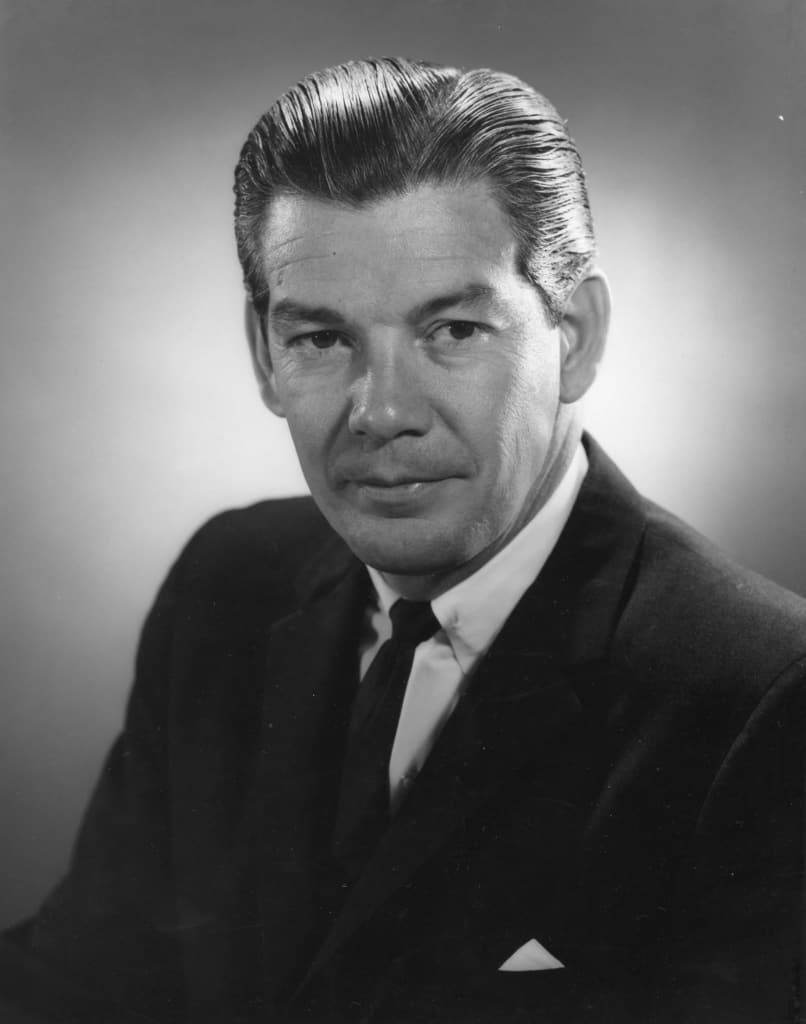
Probably based on the Marineland photos and then the Vega show during April of 1959 and taking his belief in selling the helicopter through glamour to a new height, Bayer seems to have approached Life Magazine about a dynamic, cool, mid-century life-style article about the 269A.
During late September and early October of 1959, Bayer and his wife, Rita, flew N81P from Bayer’s house in Palos Verdes to Las Vegas for a Life Magazine photo essay–“Trip Of Tomorrow-Today”. A second Hughes 269 carried the Life Magazine team. Photographer Grey Villet, Reporter Jim Goode. From Hughes, Carl Perry accompanied the two men from Life in a second Hughes Helicopter–presumably one modified for three people well before the model 300 included three seats. 333The Desert Sun article, Sept. 30, 1959 Though only a handful of the pictures made it into Life Magazine, over 700 were taken and can be seen today on Google Arts and Culture–click here.
The trip represented a high point–one characteristically bold and glamorous–to Bayer’s effort to promote the 269A by flying it himself. In January his focus would begin to shift to include the off-spring of the 269A–the Hughes LOH–as his efforts to impress Army Aviation brass with the 269A yielded extraordinary success.
The article bears out a long-standing aviation fantasy–the personal aircraft. f men had dreamed of an everyman rotary aircraft when looking at the autogyro during the 1930s, with this article Bayer projected the 269A into an updated mid-century modern and cool version of this story–landing on the golf course by his house, at Marineland, on a mesa in the desert and, finally, cruising the Las Vegas strip.
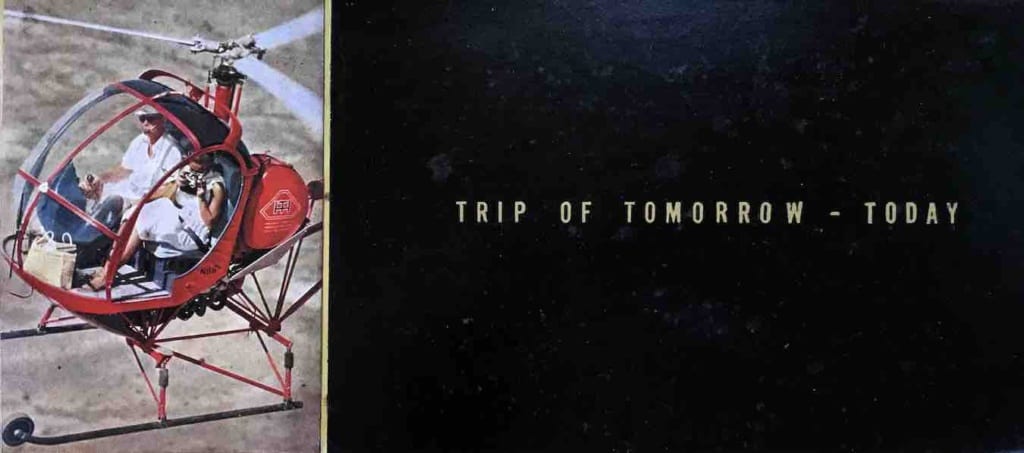
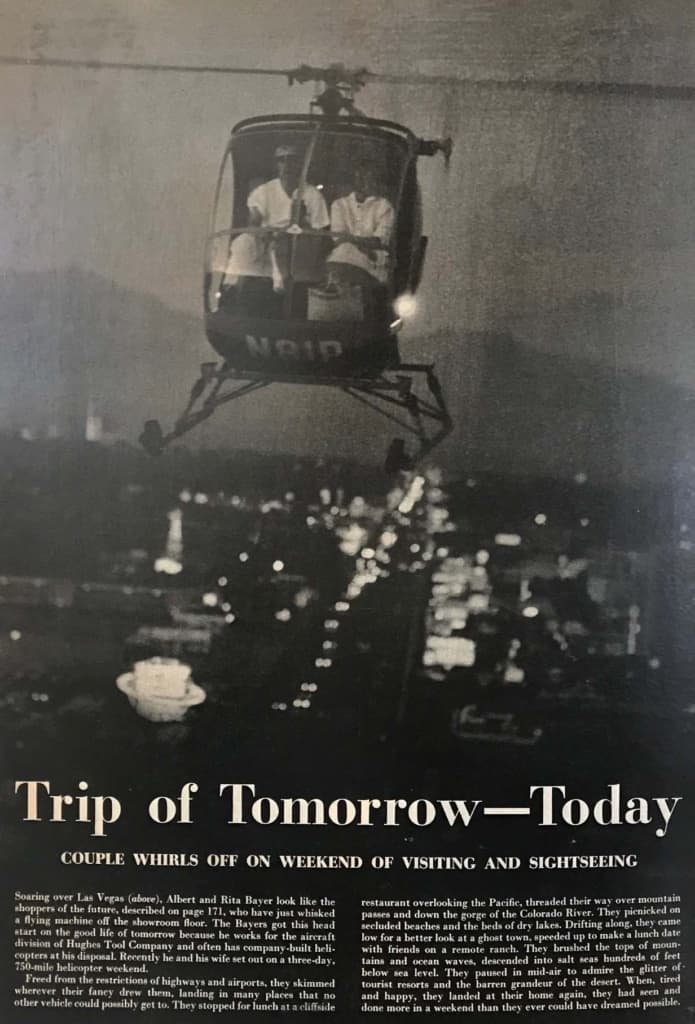
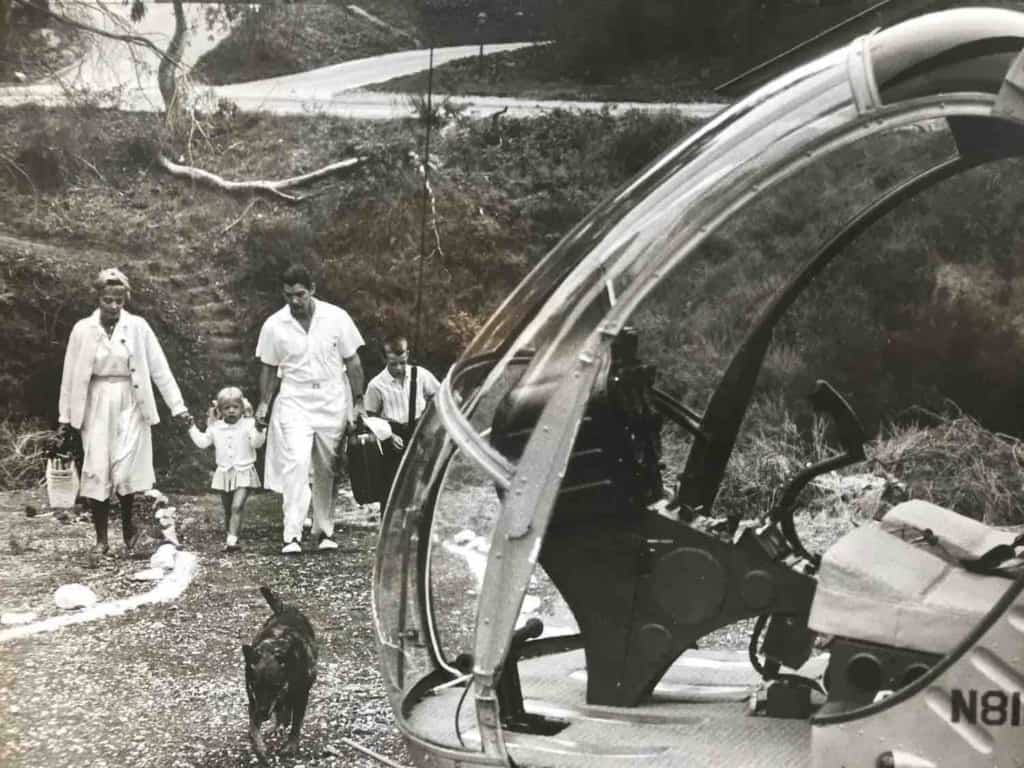
I remember Bayer white washing stones around the heliport across the canyon from our house–on golf course land. At the time, I didn’t question this. Didn’t everyone have a personal heliport? Now, I realize that I was witnessing an important milestone in Bayer’s effort to turn the 269 into his skilled tool. He was disappointed in the Life arrticle–they used very few of the shots taken. When looking at the over 700 pictures now visible in the Google Arts and Culture archive, I can see the posing, the effort, the thoroughness of the project. It was designed as a vacation but I never heard from either of my parents that it was fun. This mid-century modern trip of tomorrow came as the ultimate realization of a long-standing aviation dream and sales effort.
Wryly, when asked about the trip Rita later noted that she was asked to point with interest into the desert when, in fact, there was nothing much to see there. The piece was highly scripted. The Life magazine photo essay was published in December.
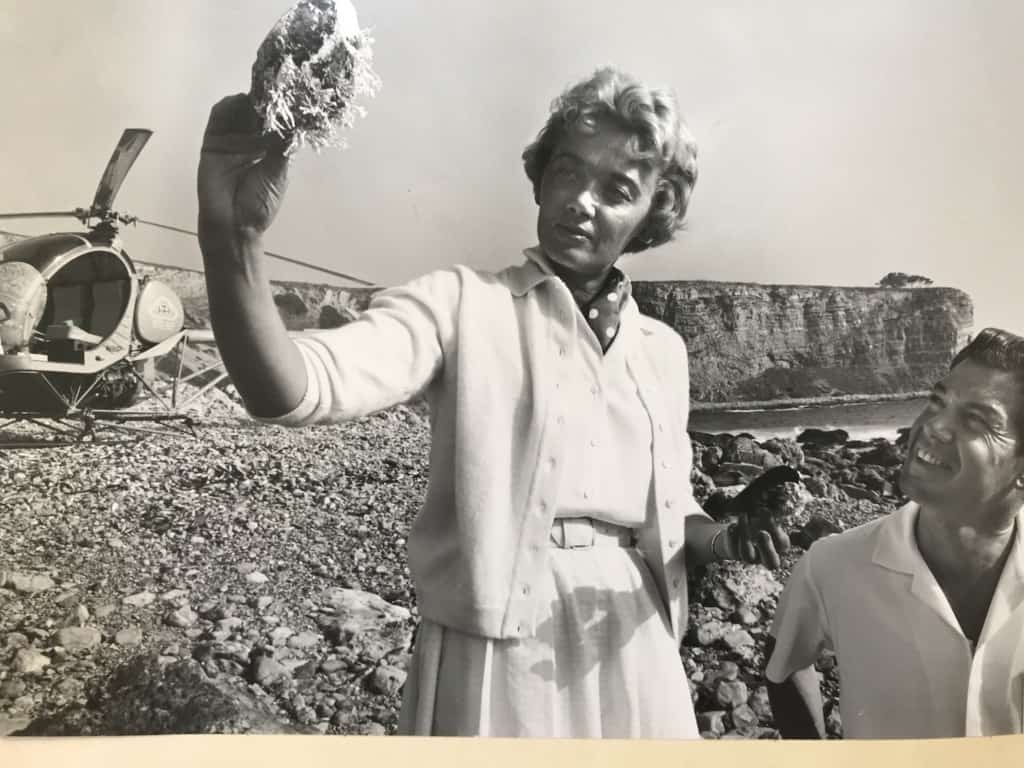
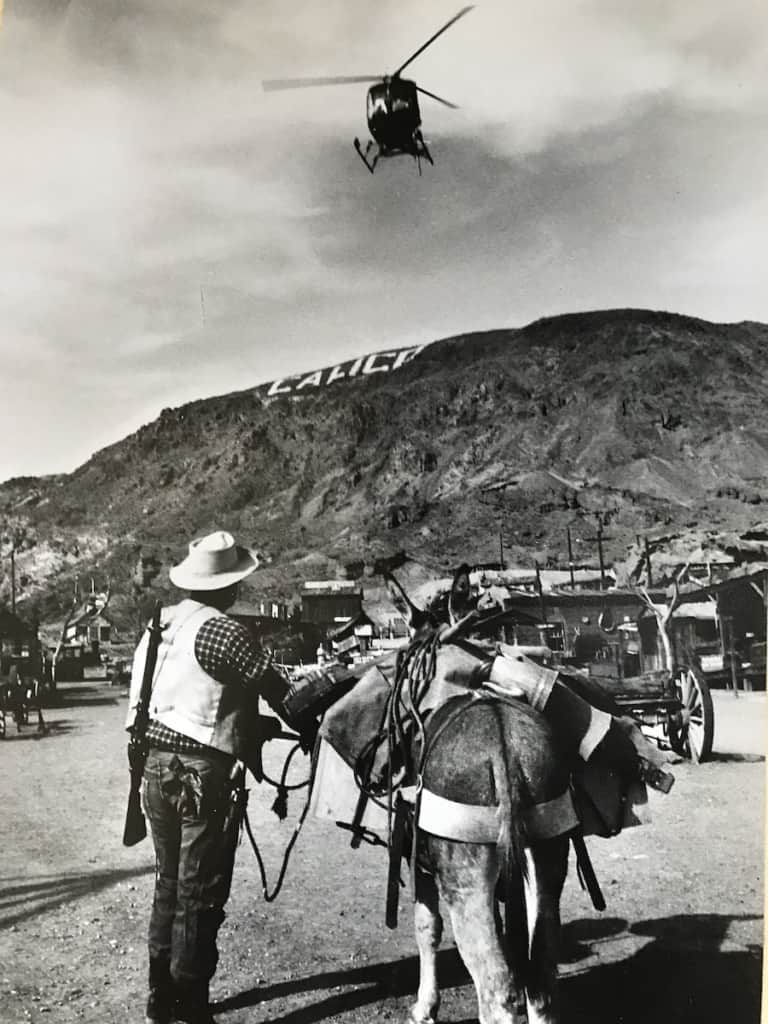
After the trip, Bayer had the company paint white the 269A that he was now often flying–N81P. He was conceiving of the personal helicopter as a fashion statement.
PICKING UP THE CANDY – von Kann and the Air Calvary
Through the fall Bayer communicated his vision of the 269A to the Army. Prior to the Type Certification flights, Bayer had given General Meyer and General Clifton rides. After the Vegas show and prior to a Life Magazine flight, in August of ’59, Bayer traveled to Washington DC and with both N79P and N81P flew the 269A for people watching. Back in Culver City, he gave a more rides to Army brass–including to Col. Rankin.
Bayer’s ongoing contact with Army Aviation, the Vegas airshow, the rides and the demonstration in Washington all paid off in January of 1960. That month Bayer flew General von Kann to Disneyland in for a meeting of the American Helicopter Association. 334N80P may have flown alongside and to have been been used for photos. 1-15 Logbook. He wrote N79P for the flight. However the photo shows N80P. It may be that both helicopters attended the event and … Continue reading This probably followed from his demonstrations to the military in the East not long before.
The Disneyland flight seems to have capped his efforts–von Kann gave an interview to the Los Angeles Times in which he echoed Bayer’s emphasis on “small” and revealed the initial Army Aviation strategy that would plumb “small” into an important new military strategy. It was a defining moment that would set the course for years to come. In the article Bayer seems to sit in the 269A and explain to von Kann the superiority of the Hughes design–having flowing von Kann and other Army brass briskly through the sky.
In the article, von Kann allied himself to the idea of the small helicopter as much more than an observation craft–an idea that would not gain formal support in the military for another ten years. In the article, von Kann stated that he saw the potential for armament on a helicopter. It was a stunning assertion of the potential for the Army to develop an attack helicopter–years before anyone in authority would say such a thing again. 335The Los Angeles Times (Los Angeles, California)19 Jan 1960, Tue Page 35
We have proven the practicality of mating the missile and the helicopter.
For the Los Angeles Times interviewer, von Kann described this first formulation of a helicopter calvary–echoing a phrase that seems to have been going around in some army aviation circles since at least 1954 and giving it shape. It was based on the idea of the personal aircraft as conveyed by Bayer. Finally, someone in the military had grasped the power of the small, fast, maneuverable helicopter. More than anyone else, Clifton von Kann made possible both military use and, by virtue of the manufacturing built with military contracts, broad construction of the small, fast, maneuverable helicopter–the cool helicopter. This helicopter would dash to the front, delivering soldiers. Most significantly, it would be a new “calvary”–somewhat echoing General Howze yet adding a word that would capture the imagination.
a calvary troop where every man has a space in a helicopter.
In the word–calvary–von Kann placed the idea of the helicopter in an Army context–where Army use of aircraft could be understand not as rivaling the Air Force but as an extension of the historical, horse calvary. One wonders if Bayer had planted this idea of fast rescue forces based on the movie GOG, where he flew Richard Egan to the secret base to rescue the staff from out of control robots.
von Kann would play the key role in pushing Army Aviation to embrace a fast, maneuverable helicopter. He had a vision of the calvary based not on size and cargo but on speed and agility. Bayer knew what the Army wanted and played a key role in helping von Kann see the possibility. This being said, in 1960, as evident in the interview, von Kann was thinking well beyond the current, official position of the Army. As described by Tolson, the Army was trying to reassure the Air Force that it would not unduly encroach on Air Force airspace. He summarized the official Army helicopter strategy at that time, one still rooted in old ideas : 336Vietnam Studies, Air Mobility 1961-1971 Dept of the Army, Lieutenant General John J. Tolson, p. 14 https://www.nevadamusic.com/wp-admin/post.php?post=1901&action=edit … Continue reading
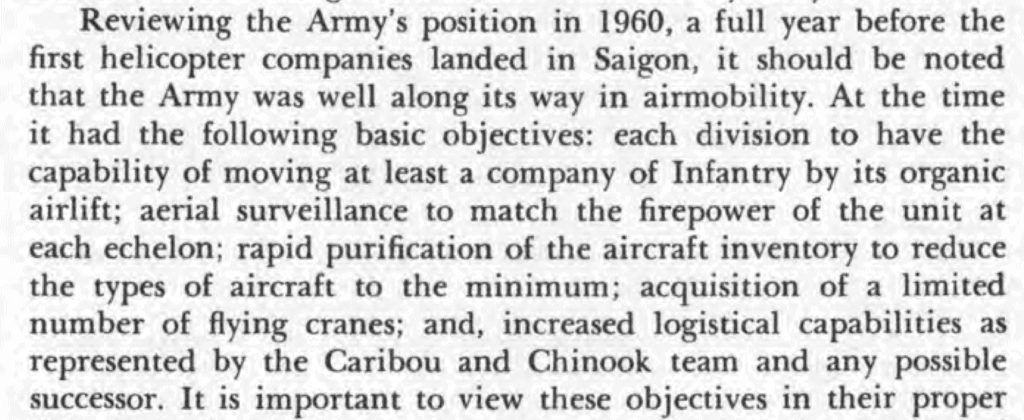
In contrast, von Kann saw the helicopter calvary as armed.
A man can be impressed when he hears that a missile has flown 15 times the speed off sound, but he’d be even more impressed if he could average 60 m.p.h. on his local travels….Like the little child gazing in awe at outer space, we may find we have ignored problems closer at hand and, in a sense, dropped our candy in the sand.
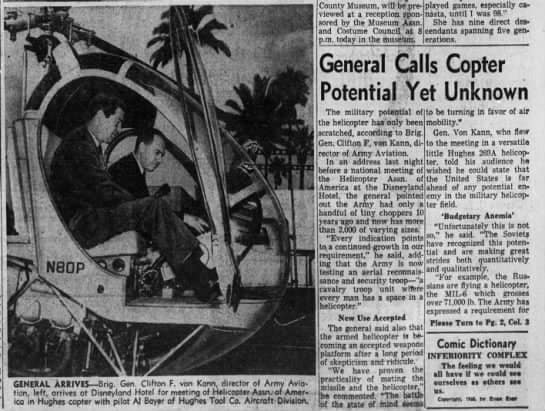
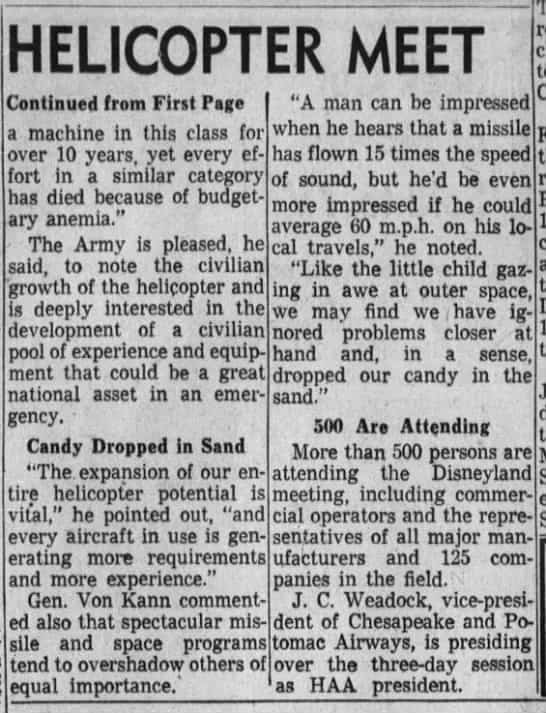
The day after the article, January 20, 1961, saw the inauguration of John F. Kennedy as President. Bayer’s friend, General Chester Clifton, became Kennedy’s military aide. One wonders whether von Kann’s open and frank interview did not come as both he and Bayer anticipated a shake up in Army Aviation procurement–changes not rooted in internal evolution, Navy control or the old helicopter ideas but subtly imposed by forces deep within the administration.
That same month, January of 1960, with General Trudeau in Washington taking the lead, the Army formed the Rogers Board, to create a new Army Aviation plan. The Navy remained in charge of Army procurement and issued a call for proposals. 337Fitt, p 5-6 The Rogers Board set out to review 119 industry proposals by 45 companies for a new light observation aircraft. 338Tolson p.8. Tolson writes of the Rogers Board as not very significant. He misses what happened in the background. Though the Board began with traditional emphasis on reliability the emphasis steadily shifted to performance. They decided that they would test competing models, not just look at the designs on paper. In February, with von Kann on the Board, the Rogers Board decided that new efforts should focus on a helicopter. Bayer gave General Howze a ride in the 269 during March. 3393-11. Logbook In May, the characteristics of the new helicopter were specified–smaller, lighter, simpler, easier to maintain, more reliable. 340Fitt, p 5-6
Backing off a bit on some of the more revolutionary elements to his January interview, during August of 1960, von Kann spoke about his idea in terms of soldiers becoming more mobile through air transport. 341The San Bernardino County Sun (San Bernardino, California)10 Aug 1960, WedPage 4 von Kann continued to promote and refine the air “calvary” idea. Later in the 1960s, following his work on the Howze Board and as the Army refined the idea of an helicopter calvary, von Kann went to Korea to take command of the 1st Cavalry Division, one of the most decorated combat units in Army history, which later became the 1st Air Cav Division.
Over the next few years, von Kann and others in Army Aviation would refine this idea of an air calvary. It would eventually come a strategy based on two helicopters–one small and one large.
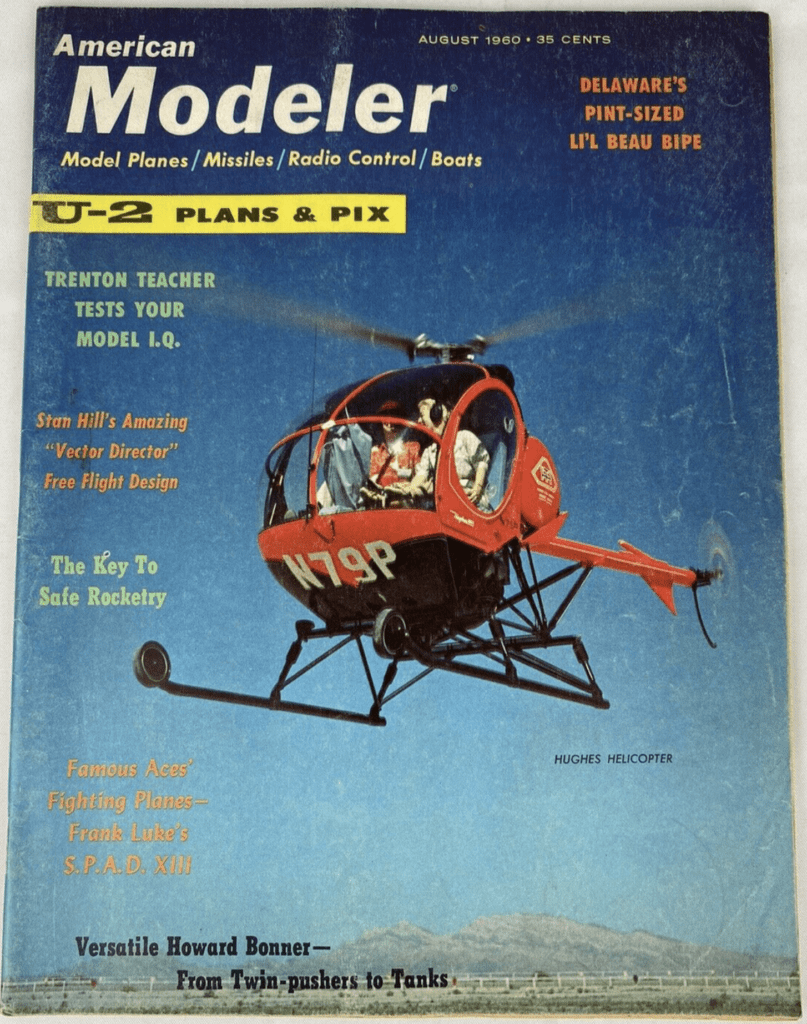
Also in August 1960, Bayer appeared on the cover of American Modeler magazine flying N79P.
MEMOS TO MANAGEMENT – problems on the home front

Indiana, Pennsylvania
08 Aug 1960, Mon • Page 5
In March, in Culver City, he gave General Howze a ride. 343Logbook N80P 3-11 During early March in Palm Springs, with the Hughes head of engineering, Mal Harned, in tow Bayer took General Meyer for a ride in the 269A. 344Bayer logbook A couple weeks later, in Palm Desert, Bayer again took General von Kann for a ride in the 269A. 345Bayer logbook. The significance of these contacts and flights cannot be overstated. On May 5, Bayer received a cost/profit estimate internally. 346May 5, 1961 memo Lambert to Bayer. On May 8th, Bayer took General Eddleman for a ride. 347Bayer logbook. This touches on some of the important figures who flew in the 269 with Bayer, though it hardly scratches the surface of his travel and connections during 1960. He described 1961 as “the crucial year in which all the chickens came home to roost.” 348Unbelievable. In the wake of 1959 with its photographs, 1960 was the year in which Bayer nearly covered the universe talking about the Hughes design–what he later called his “saturation effort.” 349Unbelievable.
In June of 1960, the company decided to begin production of one 269 per day.350Newsletter American Helicopter Society, Vol 8. No. 4, April 1962 places it July. Bayer’s logbook states production began June 29, 1960. The full production line did not begin to complete … Continue reading By mid July, four 269A helicopters had been built and the company estimated that production would reach one per day by April 1961. 351Los Angeles Times Jul. 24, 1960 p. 48
Having been asked by the Army to get more involved in the organization, Bayer became President of the local AUSA Chapter in late 1960 352News-Pilot San Pedro, California 12 Dec 1960, Mon Page 2 and was heavily involved in the organization into 1963. His AUSA involvement was part of the social backdrop to his intense his interaction with the Army into 1963.
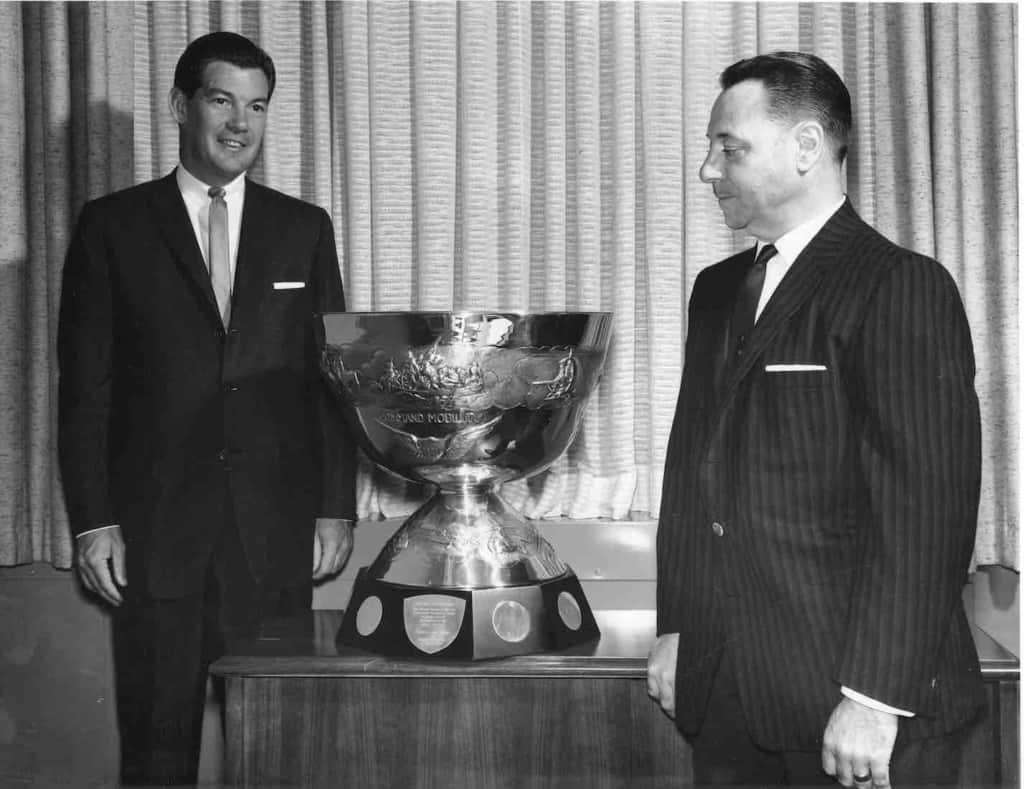
While both civilian and military marketing efforts were going well, by fall of 1960 Bayer felt great frustration with management at Hughes Helicopter. He found himself being criticized by top management for what he felt was simply doing his job. He laid out his response to these criticisms in detail in a memo to his boss, Rea Hopper.
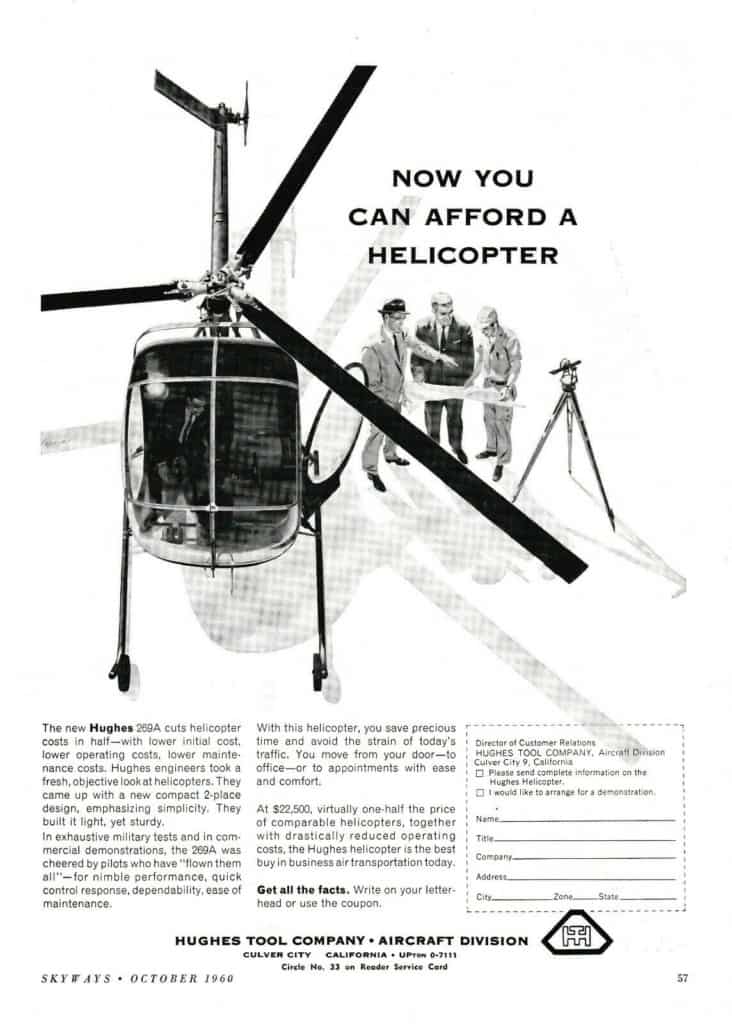
In November of 1960, Bayer became head of the Los Angeles chapter of the AUSA–a role that allowed him to publicly entertain the Army men who would decide the outcome of the competition for the LOH contract.
Hopper’s criticisms of Bayer’s work and demeanor resemble the criticisms leveled at him by his father in law during 1947, as conveyed in a letter by his then fiancé, Rita. He was too ambitious, too dynamic. His response in the 1960 memo to those criticisms sounds much like his response to the criticisms that he wrote to Rita in 1947. Yet, in hindsight, what is apparent is that having done things by the book and failed to gain an Army contract for the 269, Bayer once again stepped into the breach and took charge–no differently than when he was flying the XR-10 during the late 1940s.
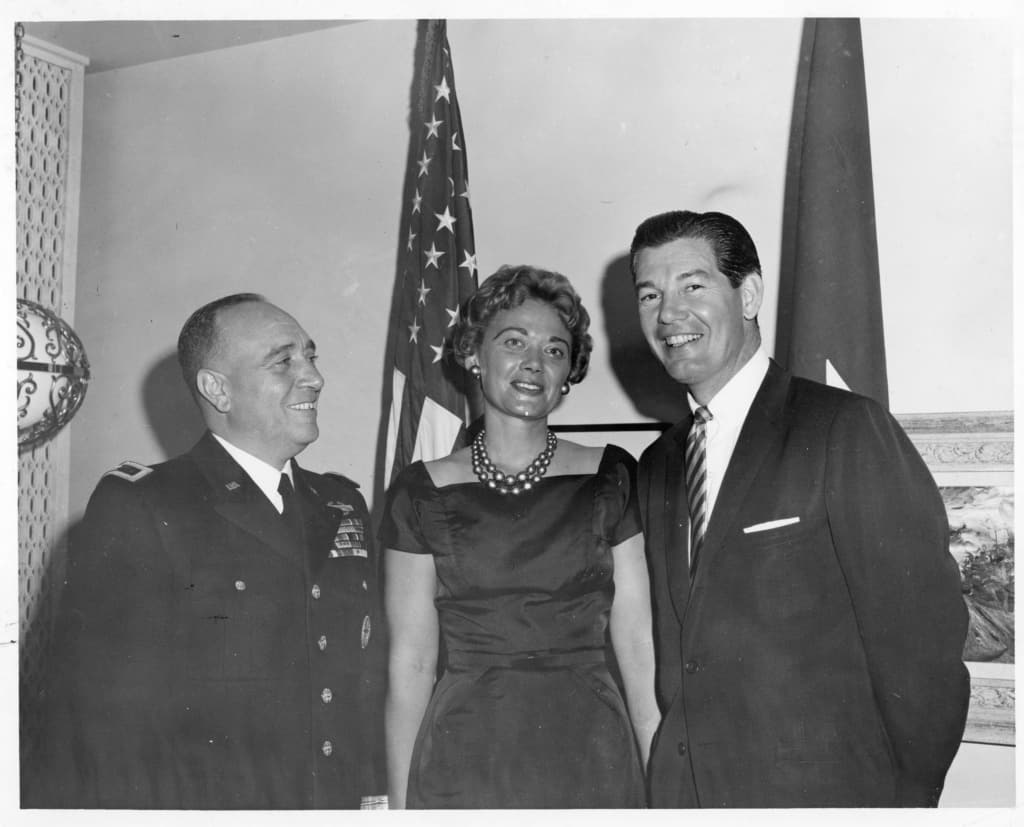
Bayer thought big and other people, he felt, thought small. Bayer was called a boasting braggart–said to travel too much and to enjoy that travel too much. He was said to play fast and free with responsibility.
Bayer responded to Hopper by listing substantial work he had done and accomplishments he had made. In short, though it worked well for the product and for his military clients, Bayer’s approach and personality did not work well for his boss. He described the L.O.A–light observation aircraft–effort with the Army and described it as “the largest aircraft procurement effort of the next decade.”
1960-Memo-To-Hopper-lrHOW NOT TO RUN A COMPETITION – picking the Hughes entry
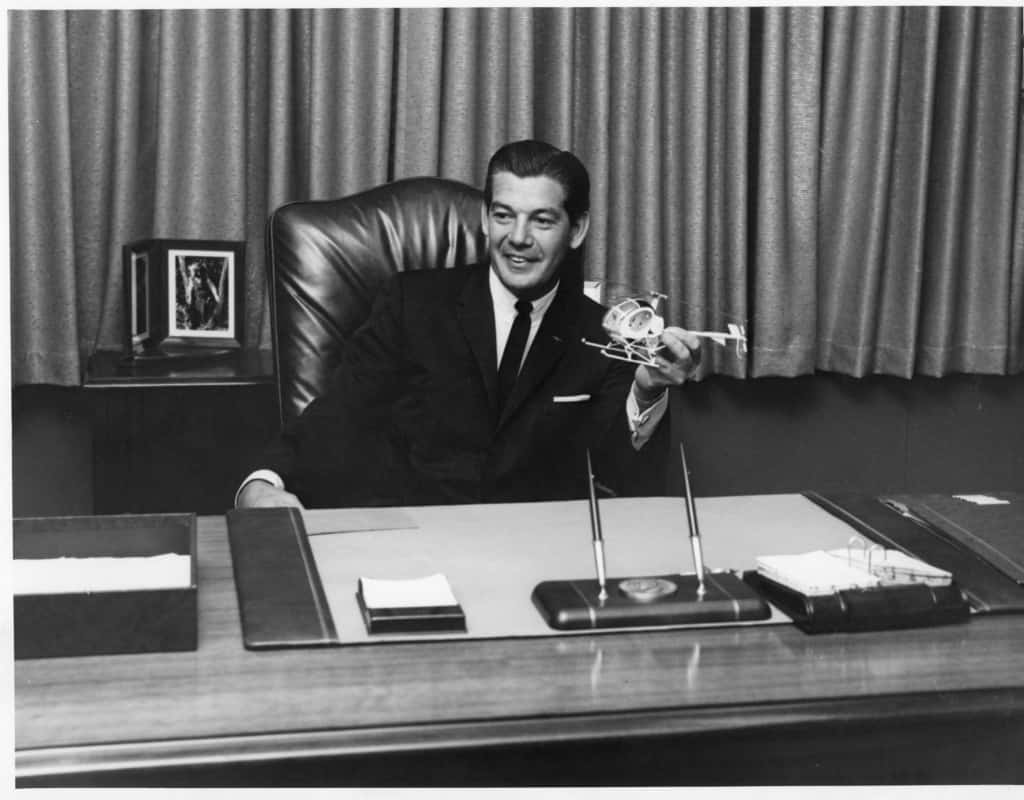
The Army call for proposals to build a Light Observation Helicopter–the LOH–had every appearance of being theater. It appears that from the onset, some in Army Aviation saw the competition as a formality–that having seen and discussed the Hughes 269 with Bayer for a couple years, progressive elements in Army Aviation, lead by General von Kann, believed that the Hughes LOH (the military 500 or civilian 369) would probably be the best performing machine. They had experienced the maneuverability of the 269 and they seem to have been bound and determined to get a bigger version from Hughes. All kinds of things got in the way–ultimately delaying the arrival in Vietnam of a helicopter that would, in many ways, define American strategy in that war.
During 1961, aware that the Hughes machine needed to be better–not the equal–of other machines, Vice President Mal Harned oversaw a series of design innovations built on a stretched version of the 269. These included the central position of the cargo area under the rotor hub, frame design, and engine position. 354https://verticalmag.com/features/vertical-rewind-unconventional-origins/ Don Porter article, Unconventional Origins, based on a 1965 report by the Department of Mechanical Engineering at Stanford … Continue reading Most of this would be later summarized in a 1967 Army training film.
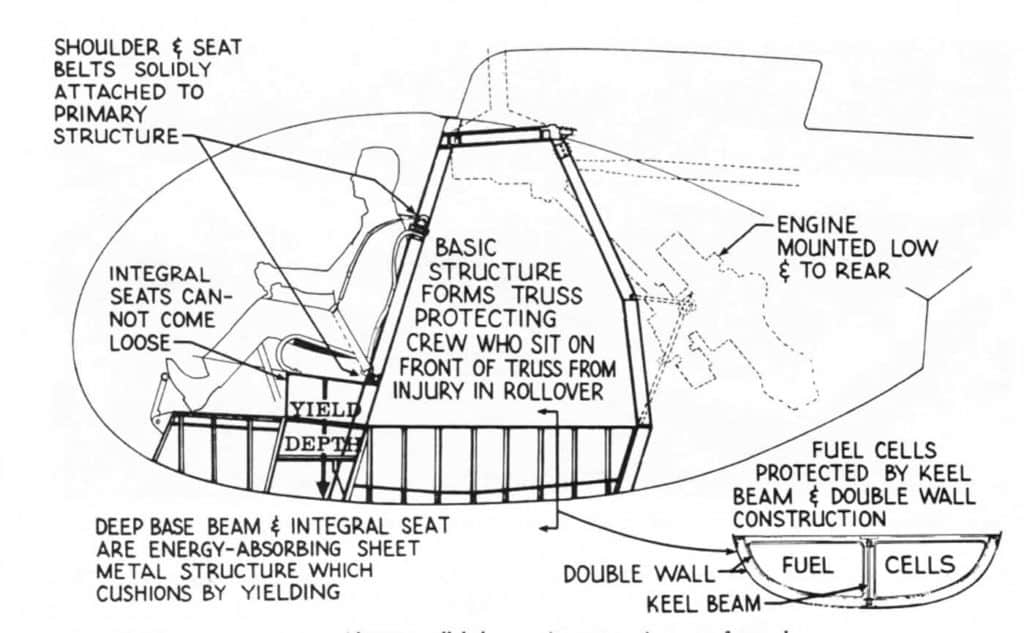
The bid process was fraught with pre-determination and inside information–it is apparent that Von Kann and some others in Army Aviation wanted the Hughes design from the onset of the bid process. All the information suggests that Army Aviation wanted the Hughes design from almost before the request proposals was created. In fact, the request for proposals seems to have been a direct response to Bayer’s representation of the Hughes design as well as reports from Army aviators on their early tests of the 269. On May 13, 1965 Aviation Daily published an article: “The LOH: How Not To Run A Competition.” The article debunked the notion of widespread corruption yet outlined the unique, light weight properties of the Hughes design.
1965-Aviation-Daily-3-article-re-LOHInternally, into the mid 60s, Army Aviation remained split between a conservative element that sought a reasonable number of stout helicopters and a progressive element wanting a lot of highly maneuverable, fast helicopter.
Not everyone in Army Aviation was part of the progressive “group”. However, that group had real strength and comfortable with the relationship between Bayer, von Kann, Rankin, Edelman and the rest. Later, Bayer’s replacement at Hughes Tool Co., James Carmack Jr. (1927-2019), commented to Congress, describing how Bayer had centered sales around himself and criticizing him for that. He describes opposition to this within the Army and that seems likely.
The operation when I went there was–had previously been Al Bayer and Carl Perry–just running a high priced lobbyist organization, with all kinds of operations. And the troops in the Army, from general officers on down, didn’t like this one bit. There were a lot of people who thought it was very bad and they didn’t like it. 355 LOH Hearings p 483 Porter p 71
The conservative group was allied with the Navy who, until kicked out of the room during June of 1961, held Army Aviation procurement in its grip and who saw the ideal helicopter as a stout cargo vehicle. The progressive group wanted to overthrow the yoke of Navy procurement control and embrace a revolutionary, fast, maneuver light helicopter. By 1959, Bayer had been talking to Army Aviation for a couple years and, even when the Army rejected the 269 as a trainer, they appear to have been following progress with the 269. Based on his long-standing friendship with engineers, Bayer could describe well the engineering milestones that would become the light, deft helicopter.
Per policy, the Navy considered itself in charge of the design review. As described later by Congress: “They were supposed to sort of hold the Army’s hand through this procurement”. 356Full Hearing Testimony is at … Continue reading
At the onset of 1961, the Navy’s control over procurement eliminated the Hughes design in favor of two possibilities–by Bell and Hiller. Then, General von Kann stepped in to ensure the Hughes craft would not be ignored, though his agenda seems to have been more thorough than that. On January 11 of ’61 von Kann wrote a letter expressing concern that the evaluations “stated that Hughes couldn’t meet its design specifications and therefore (they) had to evaluate it as being several hundred pounds heavier than the manufacturer said it would be.” 357Hearing p. 132 von Kann felt the Hughes craft could meet its design specifications and felt that the Navy had skewed the results to favor the stouter Hiller craft. As described by Aviation Daily, the request for LOH proposals called for an emphasis on reliability first and secondarily on performance. With pressure by von Kann, Eddleman and others this was then reversed–performance later becoming paramount.
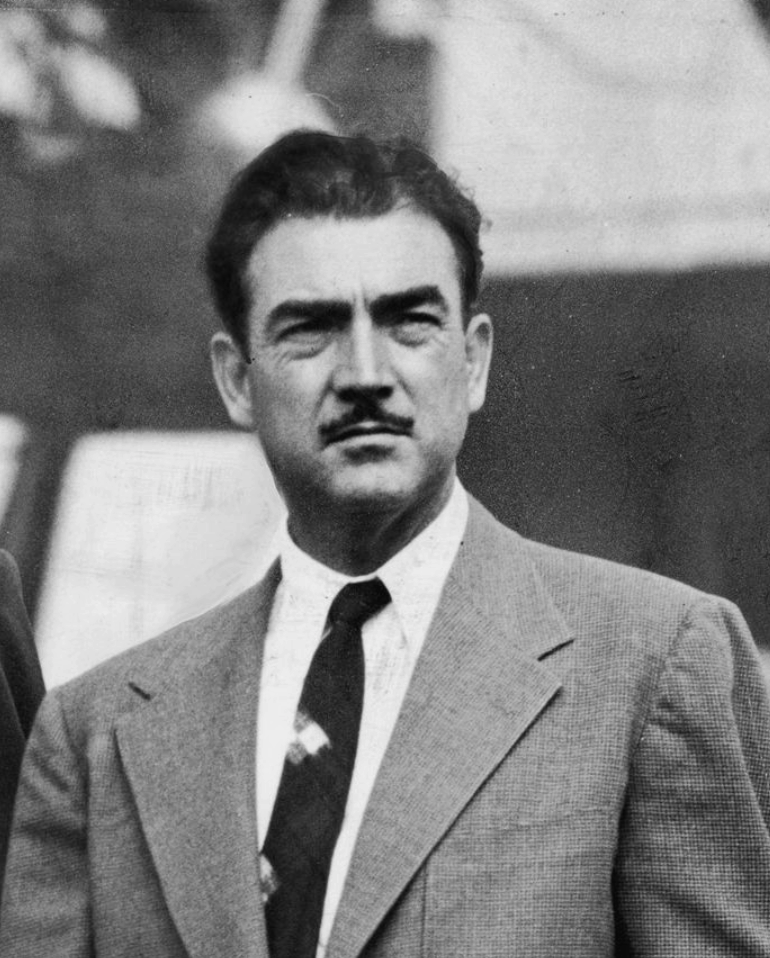
Late that month, Bayer’s boss, Hughes Helicopter Vice President Rea Hopper sent the Hughes LOH designs to the Navy.
On January 27, the Navy responded to von Kann with a letter calling for a moratorium on “sales efforts relating to the design.” 358Hearing p. 132 This seems to have reflected feeling by the Navy as well, perhaps, as by conservatives in Army Aviation that the progressive group was being influenced by a salesman who never let up–Bayer–rather than by the numbers. Stanley Hiller was in Washington pushing the idea of specifications–trying to get the focus off the unique capabilities of the Hughes design and back to the initial, rather pedantic specifications–essentially trying to get the process to stick to the doctrine of reliability over performance.
Mr. Hiller was very active in the Pentagon following the Design Evaluation Board meetings in 1961 in an effort to convince key members of the Army staff that any other system of certification than military specifications would be unwise.” 359von Kann to Porter Hardy: , Feb. 9, 1967.
The competition was getting personal. Bayer was told by his sources that Hiller had sent a letter to the Department of Defense warning them “not to give H.H. a production order of any kind.” Hiller was said to have alleged that the Hughes performance figures were exaggerated, that Hughes engineers were leaving because the company was falling apart, that Major General Richard Meyer favored the Navy assessment of the helicopters, unfavorable to Hughes, and that price was not a factor. 360Bayer LOh Notes, 1961
von Kann ignored the Navy order for a moratorium. 361Hearing p. 133. von Kann continued to gather information and focused this exclusively on the Hughes machine. 362Hearing p. 134 He later told Congress,
…if this was a valid directive, I was in violation. But I frankly would rather be guilty of this than be guilty of not getting myself as well qualified as possible to serve as a member of the board. 363Hearing p. 134.
In February of 1961, Bayer created a manufacturing licensing outline–promoting manufacturing of the 269 by other companies overseas. Also, that month, Bayer secured the appointment of Ronald Reagan to the AUSA Board. And, thru AUSA, he threw a party for General Chester Clark, Chief of Research and Development Division, Office of the Chief of Ordinance, U.S. Army. 364FEB 2, 1961, News-Pilot, p 9.
In March, Bayer again took General von Kann for a ride. 365Logbook. 3/31/61. N81P That month, the Los Angeles chapter of the AUSA–headed by Bayer–held a reception and dinner in honor of General von Kann. In April of ’61, apparently due to Navy influence and their by-the-book desire for a stout, dependable craft, the Rogers Board selected two designs–one by Bell Helicopter and one by Hiller. The Hughes design seemed to have been eliminated from the running. However, Bayer and the progressive Army Aviation element were not done.
On May 18, 1961, General von Kann sent Bayer a letter warning him that the Hughes LOH would not be in the final selection yet assuring him that his friends in the Army still supported him and the Hughes design. The note came shortly after the CIA bungled of the Cuban invasion at the Bay Of Pigs. The defeat of the exile counter-revolutionaries who landed by ship came largely due to lack of adequate air support and underestimation of Castro’s few planes. The real threat posed by communist guerrillas around the world and the need to adapt army tactics had become pressing. von Kann characterized opposition to the Hughes design and its innovation as “ultra conservative”. He promised that no matter what happened with the formal bidding, the Army would continue to consider the Hughes model. That same month, von Kann told the Los Angeles press that the Army expected to pay about $30,000 for the new helicopter. 366Valley Times (North Hollywood, California)22 May 1961, MonPage 2
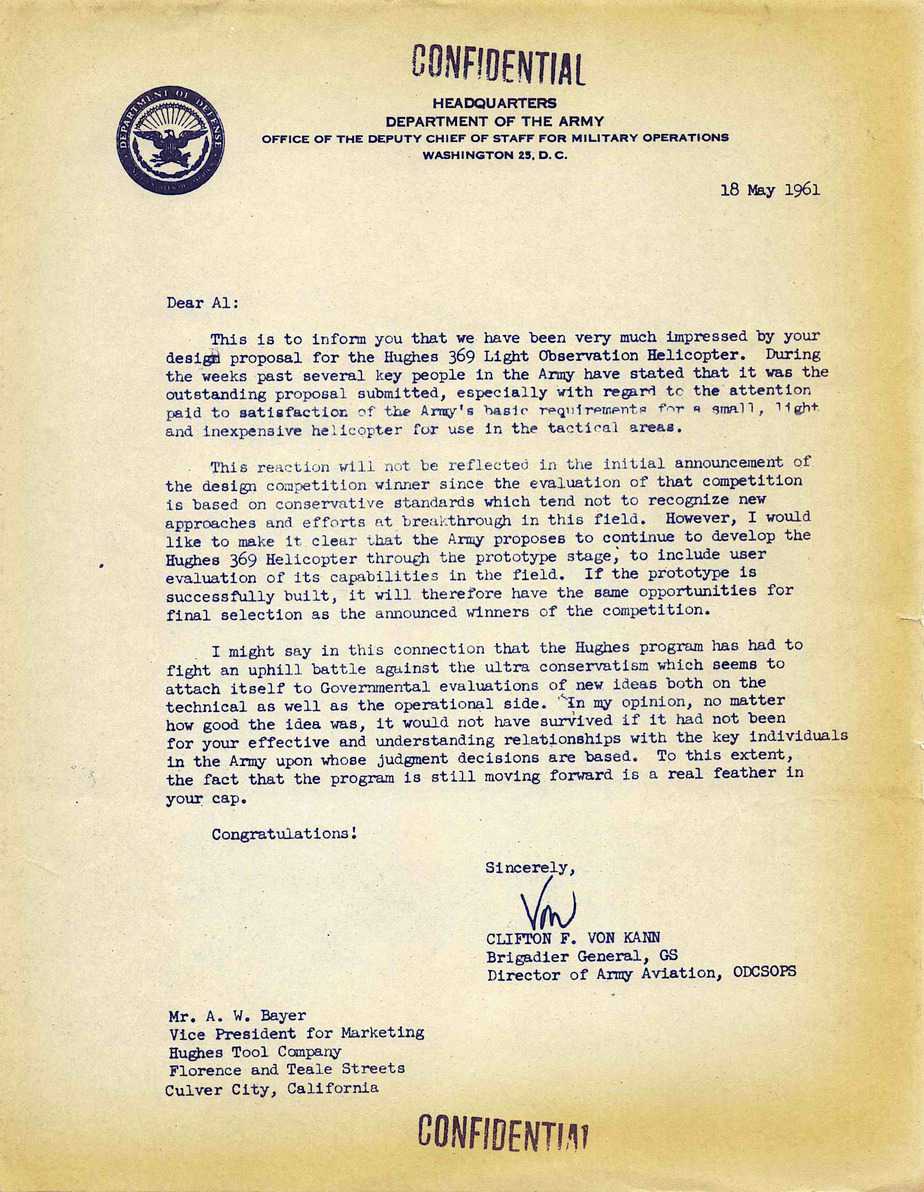
Bayer received a telegram. On May 19, 1961, the Army announced that two proposals out of 12 submitted for the Light Observation Helicopter contract would be funded for trials–the proposals by Bell and Hiller. At the onset, Hughes Helicopter was not in the running for the LOH contract. The progressives in Army Aviation had a highly maneuverable Hughes machine in mind when they created the competition. However, to this point, the decision remained in the hands of the Navy. They sought a dependable machine over all other considerations and immediately dismissed the Hughes proposal.
Bayer underlined wording in the release that suggested the game was not over–The Army will continue an aggressive research and development program to develop smaller, lighter and more reliable helicopters and components. 367Telegram DOD release May 19, 1961, Bayer’s copy. The emphasis on “reliable” sounds like a sop to the Navy–that emphasis would soon fade. Bayer had good reason to remain hopeful. He well knew that his friends in Army Aviation wanted to overthrow the yoke of Navy control over procurement–the “conservative” view of the helicopter inherent in Navy control. von Kann submitted a minority report to the Rogers Board asking that they reconsider and that they then make the two chosen designs that of Hughes and Bell.
On May 22, Hughes Helicopter received a telegram from General Meyer stating that the Army remained interested in the Hughes 369, soon to be called the Hughes LOH. “…would like to explore with you the possibility of further research on your model 369.” 368Telegram, Bayer’s file. On May 25, the Army sent the DOD a letter stating that it would now award development contracts without going through the Navy. 369Porter p. 70 Deep in the upper ranks, the Army’s direction was clearly to favor the Hughes design. General Meyer had voted against admitting Hughes to the process–within three weeks he was transferred out of Army Aviation. ((Porter p 69))
Meanwhile, on May 8 Bayer gave General Eddleman a ride. On May 25, he gave General Rogers a ride. 370Logbook N81P. That month, the Los Angeles chapter of the AUSA–headed by Bayer–gave a reception and dinner for General Eddleman and, shortly after that, for General Rogers.
The nature of a guerrilla warfare–first possible against Cuba and then evident in Southwest Asia–was beginning to push the Army beyond hesitation. At the same time that the Army pushed the Navy out of the room where the Light Observation Helicopter proposals were being considered, during May of 1961, the U.S. sent its first advisors to Vietnam. Theories, procurement, contracts, testing, development etc. would now increasingly be pushed by the reality of war and demands from the top to cut through red tape. Inclusion of the Hughes machine was not yet a formal decision by the Rogers Board. However, the process had been reopened and the hand-writing was on the wall.
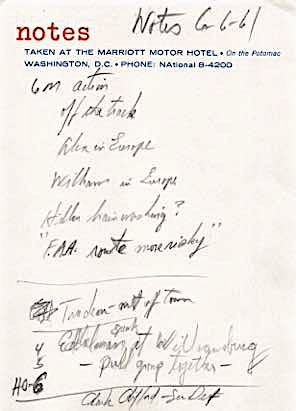
In early June, Bayer went East to lobby. His note, probably written while on the phone in Washington, mentions that they would “pull group together.” He noted three names in this order: Trudeau, Eddleman and Clark Clifford. Eddleman would “pull group together.” In the East, he may have spent some time staying at the home of General Eddleman. A Navy order had forbidden more lobbying, however neither Bayer nor the progressives in Army Aviation followed that order. No one ever apologized or expressed any regret for bucking Navy control. Later, when asked how he got the Hughes machine back into the competition, Bayer said, “I was a house guest of General Eddleman during the Rogers Board Review, and I was instrumental in getting this aircraft into competition.” 371Porter p 72
As visible in the note, Bayer was concerned that Hiller was “brain washing” the process. And, he wrote “FAA route more risky.” 372Bayer note. Marriott Hotel pad paper, Wash DC. 6/6/61 This refers to the fact that the Navy had found the Hughes LOH so lightly built that it did not meet military specifications. Now it could only be said to qualify for the contract because it met the less rigorous FAA certification standards. 373Spenser, Vertical Challenge. p. 168 The note suggests that Bayer and his “group” made that argument.
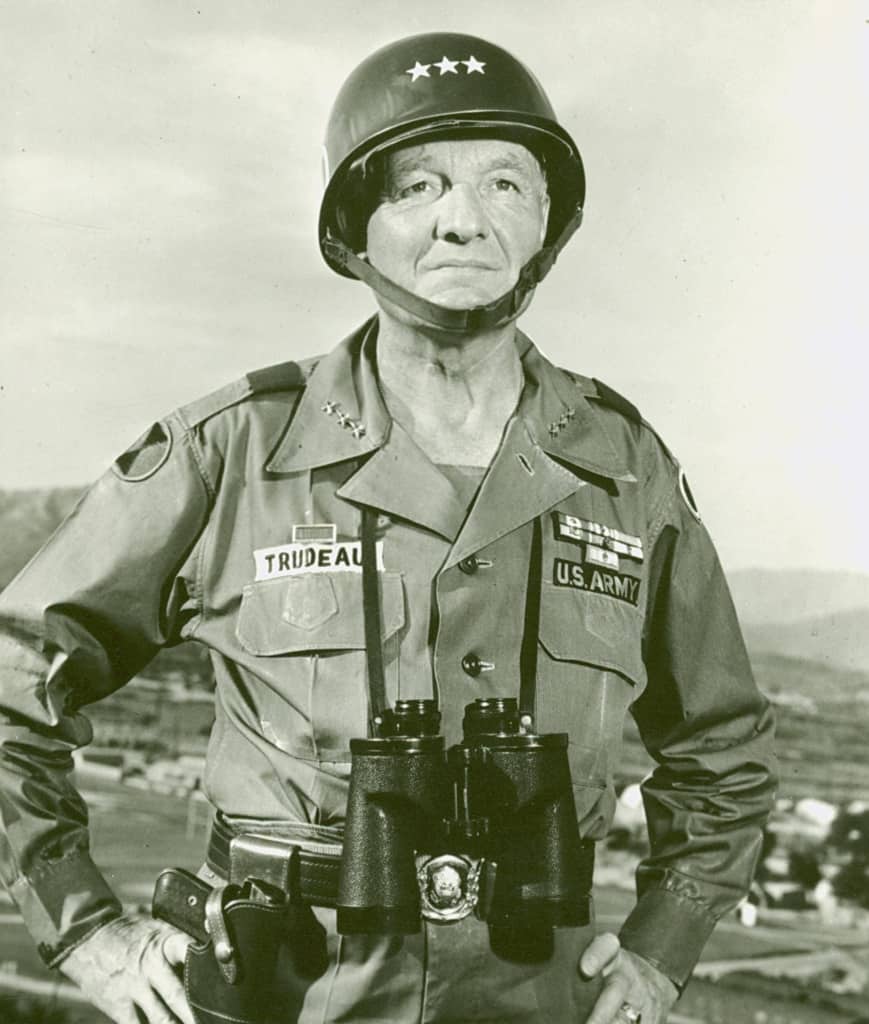
Bayer wanted the Director of Army Research and Development General Arthur Trudeau, whom he considered “with us”, to talk to Eddleman and reconvene the Rogers board. As a commander during the Korean War, Trudeau had sometimes flown in helicopters 374Memoirs p205 and after 1958 advocated for armed helicopter.. 375Memoirs ix At the same time, he espoused strong views about the dangers posed by the Sino-Soviet block. He believed that Russian advances in technology derived from espionage against the U.S. 376https://documents.theblackvault.com/documents/fbifiles/Trudeau_Arthur_G.-HQ-2_text.pdf In spring of ’61, Trudeau had begun advocating the idea that a limited war was possible–something less than a nuclear war. 377Interview with Trudeau. Engineer Memoirs: Lieutenant General Arthur G. Trudeau, USA, Retired p314 … Continue reading Trudeau’s interest in the Hughes design appears based on a his thinking about the coming ground war in Southeast Asia. He had been to Vietnam the previous year and was pushing the Army to create a “quick reactions laboratory” in preparation for limited war. 378Memoirs p 313
Bayer was also hoping for help from Clark Clifford–then serving under President Kennedy on the President’s Foreign Intelligence Advisory Board. His his notes, Bayer listed that he would argue to his friends in Army Aviation that the Hughes Tool Co. Aircraft Division needed the $5 million for development, the next step in the contract process, or it would need to “re-program.” Given that the Army wanted to continue conversation about the Hughes machine, his argument would be that continued Army interest in the Hughes design needed to come with money. Hughes could not develop the craft unless it was formally funded. 379Bayer LOH notes. He continued to receive encouragement from friends in the Army. On June 9, he noted that he had been informed of $6 million that the DOD had found in reserve–in an emergency fund. 380Bayer Note 6/9/61.
Eddleman directed General Hamlett to reconvene the Rogers Board without anyone from the Navy participating. With the Navy out of the room, the Board changed its decision. Violating policy, the Army had finally thrown off the yoke of restrictions that had put the Navy in charge of its helicopter procurement. Despite the poor reputation of Hughes Tool, Bayer and his “group” believed that Hughes could build a revolutionary, dynamic Light Observation Helicopter. A few days after returning to Los Angeles from Washington, Bayer hosted a dinner for the Secretary of the Army. 381The Los Angeles Times (Los Angeles, California)15 Jun 1961, Thu Page 53
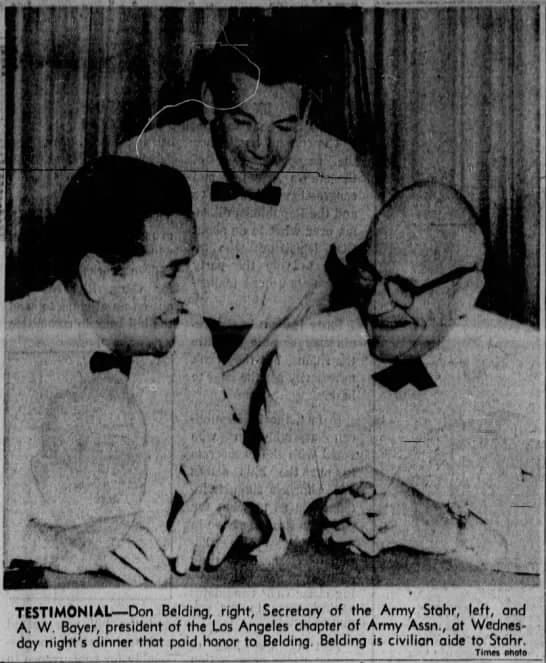
During this time Bayer’s inside sources were giving him information on bid strategy. On June 14, Col. Boyer wrote Bayer that a bid 25% greater than the lowest bid would be the threshold for rejecting a bid based on price. 382Bayer LOH note 7/14/61 In other words, in the bid for production, if Hughes could bid low enough, given rough parity in performance specifications, price would determine the outcome. This information on pricing would resonate for years, resonating with a general feeling at Hughes that their helicopter could not win the bid if it were merely equal to other designs.
The Army liaison to the Navy in the selection process, Boyer was not one of the progressive group. He was concerned about the Hughes’ design’s light weight. He later noted that, due to the light weight of the Hughes blade designs, if the craft lost power the blade had little continuing inertia–making autorotation precipitous. “You come down like a streamlined brick.” 383Spenser, Vertical Challenge p 168 The 269 suffered the same problem–having similar light rotor blades.
Though it stemmed a different source, this problem mirrored that which Bayer had encountered years before in the Kellett XR-10–you had to dump the vehicle’s nose to keep the blades turning during auto-rotation. Bayer was practiced in this. Others not so much.
Boyer’s information to Bayer on the bid process seems to have come because others told him to relay it–to reflect the bias among progressive people in Army Aviation for the Hughes design. They seem to have known all the drawbacks of the light design yet simply wanted a fast, highly maneuverable helicopter. The Hiller craft was safer, stouter and pedestrian by comparison. On June 20, it was announced that Hughes would be in the competition and awarded development funding. 384Aviation Daily May 13, 1965 Bayer continued to wine and dine the generals.
That June 21, hearing about uncertainty in the process, Harned suggested to Bayer a memo to the Army stating that if the Army was in a hurry to get the helicopter they should appoint someone, probably von Kann, to oversee the project, pushing it through. 385Review of Army Procurement of Light Observation Helicopters, Hearings Before …By United States. Congress. House. Committee on Armed Services p. 534. The memo was never written, however, particularly through his involvement in the AUSA, Bayer had direct and friendly access to Army brass–men who could take the idea of urgency to the top. That night Bayer dined with General Honeycutt from Fort MacArthur in San Pedro. That fall von Kann and Eddleman would meet with the Secretary of Defense Robert McNamara
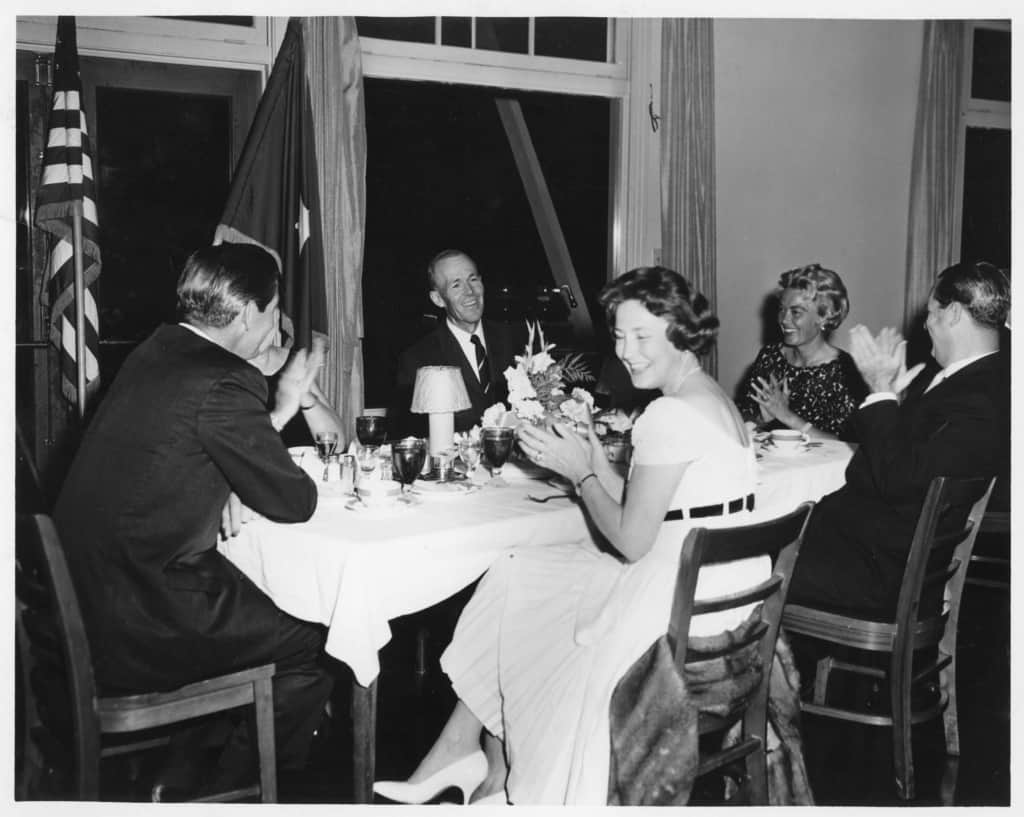
ARMY AIR’S INITIAL TUSSLE WITH THE SEA – a celebration
By summer of 1961, the Navy had lost control over Army procurement of a helicopter and the Army knew what it wanted. However, Bayer’s friends in the Army seem to have felt a sense of urgency. In August, the Los Angeles chapter of the AUSA–headed by Bayer–held a reception and dinner for General Howze.
The first Hughes 269 production model was produced in July of 1961, though there was not yet a fully active production line. That summer, Bayer launched the first edition of “The Helistop”, a brochure style newsletter on the 269. It included description of a new helicopter color: Malibu Teal. We can speculate that the color was suggested by his secretary, Rosemary Weidinger. 386Her obituary: https://englandfamilymortuary.com/tribute/details/1896/Rosemary-Collins/obituary.html Though, ultimately, she had a pink helicopter.
1961-FULL-lr-THe-Helistop-First-Edition-copy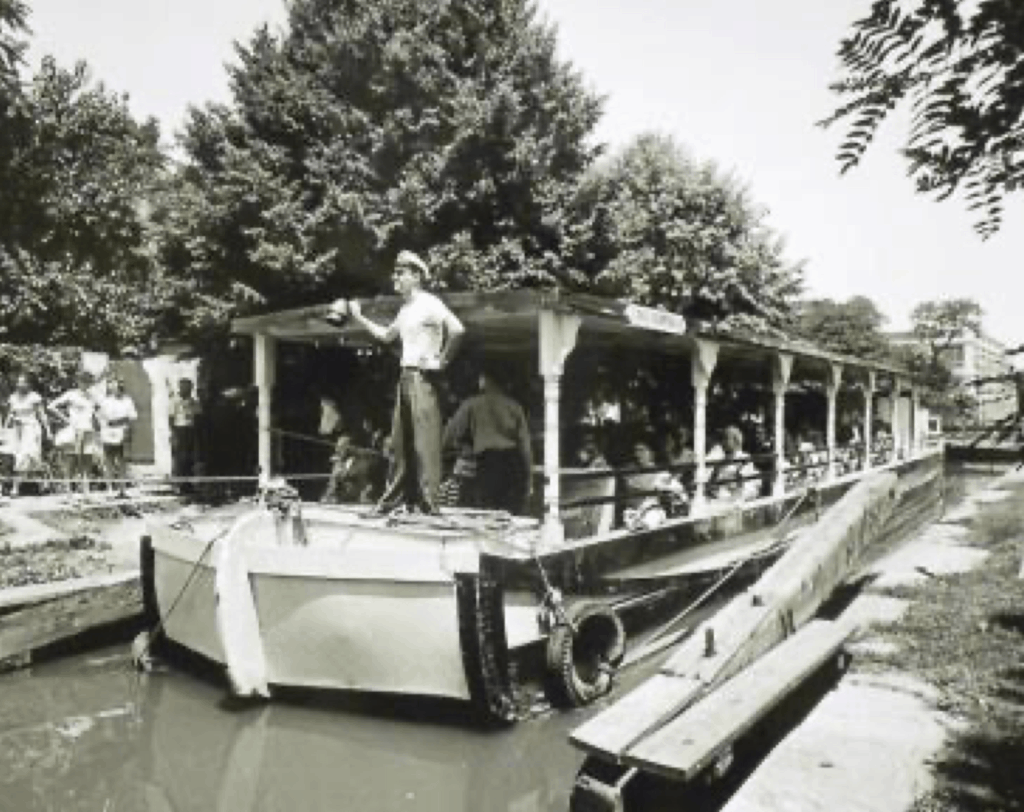
In September of 1961, Bayer gave a ride in the 269 to Colonel Rankin. 387Bayer logbook. Also, that month, he hosted a large party for his friends in Army Aviation on the Chesapeake & Ohio Canal barge, pulled by mules. The party became famous–or notorious–in some circles.
388https://www.tripsavvy.com/mule-drawn-canal-boat-rides-1040518 The Canal had been declared a National Monument earlier in the year. 389https://www.canaltrust.org/2015/12/canal-marks-45-years-as-national-park/ Launched that spring, the Canal Clipper II was mule-drawn, could carry as many as 70 passengers and featured a sound system and snack bar which served sandwiches and drinks. 390http://npshistory.com/publications/choh/excursion-boats.pdf The barge party would later be mentioned in a Congressional investigation. 391Hearing p. 484. The humorous invitation sounds like Rosemary Weidinger’s writing.
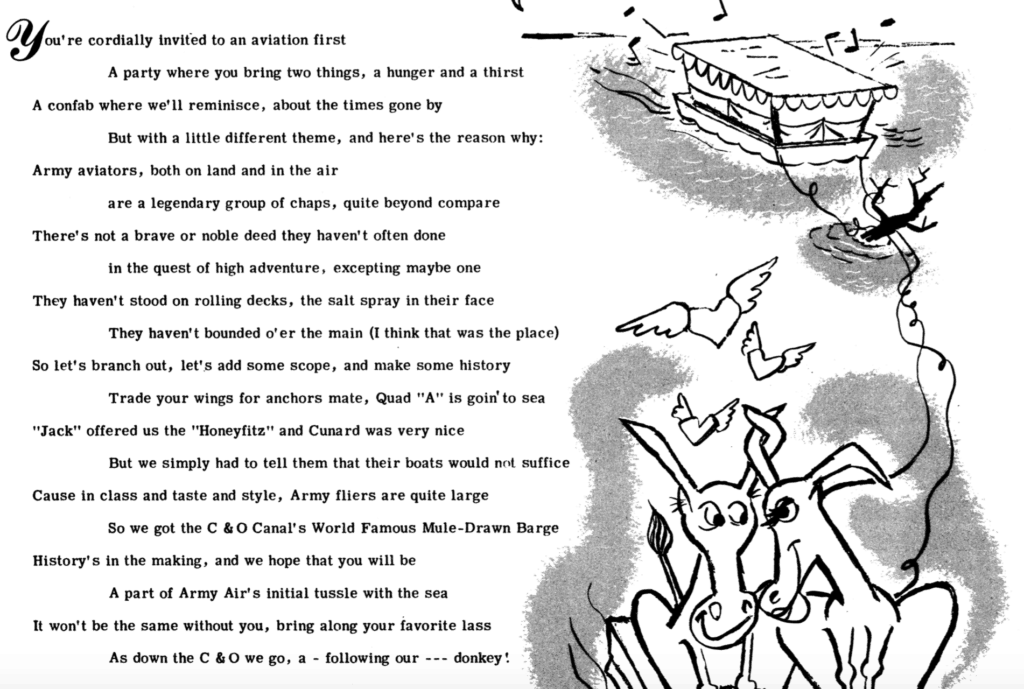
This event would later be noticed by a Congressional investigation. The party was one of Bayer’s best ideas…and worst. On the good side, it put Army Aviation people–von Kann, Rankin and others–in a celebration of having overthrown Navy control of Army Aviation procurement and it did this equating that event to inclusion of the Hughes design in the bid process. The party would become legendary–developing a reputation that would haunt Bayer at Hughes and in Congress for years.
A friend penned a humorous poem about the barge event. In part:
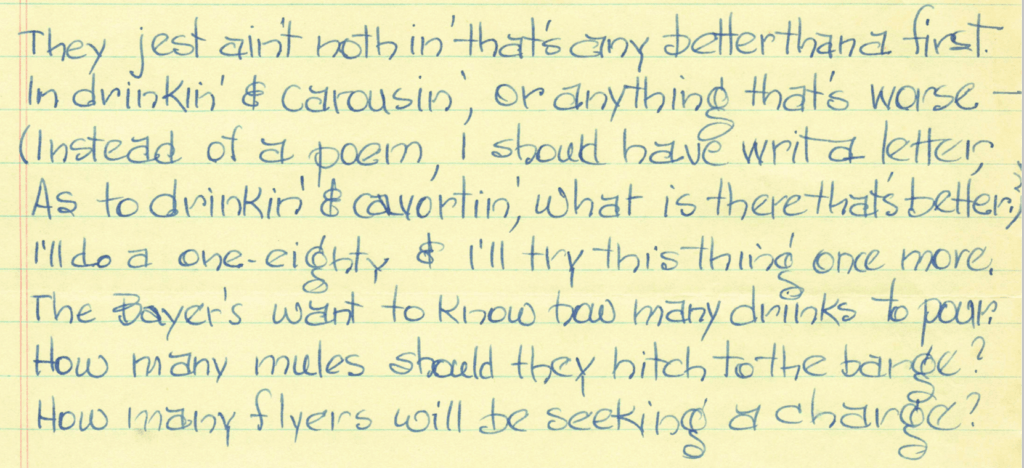
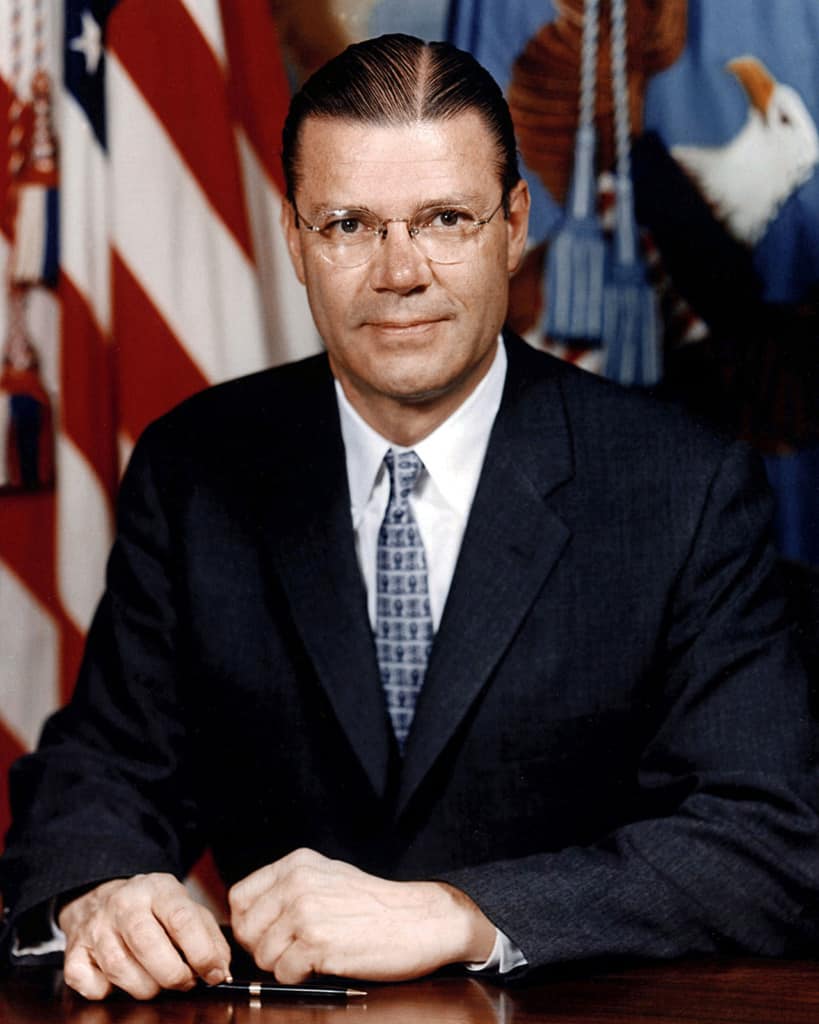
Meanwhile, Bayer’s allies in Army Aviation took a major step to ensure the government would be virtually bound to favor the revolutionary Hughes design. That September of ’61, increasingly concerned about communist encroachment into South Vietnam, Secretary of Defense Robert McNamara met with General Eddleman, the Army’s vice chief of staff, and General von Kann, head of Army Aviation. Apparently, discussion of how helicopters would define the coming war in Southeast Asia had reached the top. McNamara suggested procurement of large numbers of Bell Helicopters–presumably meaning the XH-40 Bell Utility Helicopter which was being used for rescue but which seemed to have greater potential–and asked for a needs assessment by the Army. This was probably in response to Eddleman and von Kann balking at McNamara’s Bell endorsement while seeking to forward their tactical air mobility agenda–with, among other goals, to again put the Hughes machine in the forefront in the LOH competition. von Kann did the requested assessment. 392http://webdoc.sub.gwdg.de/ebook/p/2005/CMH_2/www.army.mil/cmh-pg/books/vietnam/airmobility/airmobility-ch01.html
That month, von Kann told the press that the Army expected to purchase 3,500 of the new helicopters. 393Oakland Tribune (Oakland, California)25 Sep 1961, MonPage 37 And he compared it to the reliability of the jeep. 394Daily News (New York, New York)14 Sep 1961, ThuPage 534 Meanwhile, the 269 rolled off the production line in volume during October 1961 with the first deliveries late in that month. 395Newsletter American Helicopter Society, Vol 8. No. 4, April 1962
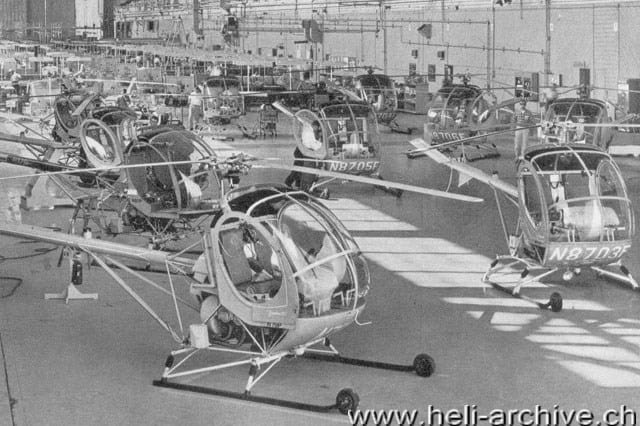
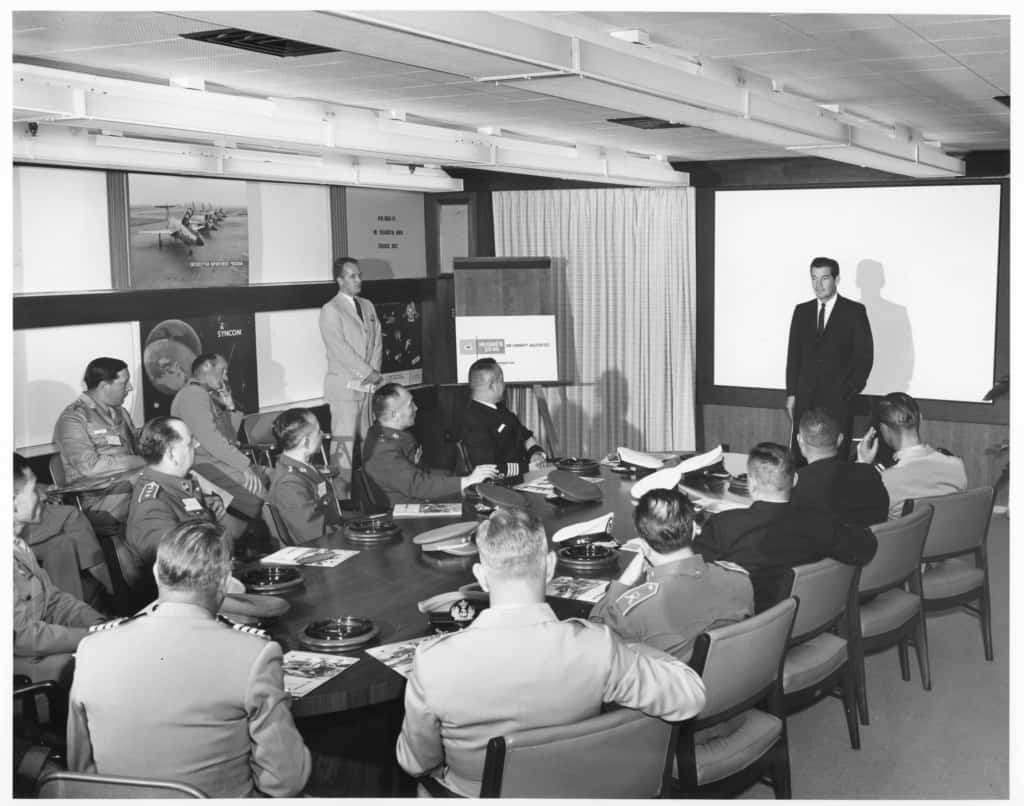
In Vietnam, during November, American meetings with President Diem were quietly leading to a commitment of ground troops. As the lead item on his list of needs, Diem pressed for American helicopters and pilots–again reflecting what was apparently a broad awareness that the coming war would revolve around the helicopter as it performed rescues, transported troops to remote locations and more. That December, helicopters and pilots would be the first thing provided by the U.S. to assist South Vietnam. 396https://www.mtholyoke.edu/acad/intrel/pentagon2/pent3.htm Yet, the Hughes LOH was still six years from arriving there.
The LOH contract contest continued. In November of ’61, the Army awarded fixed price research and development contracts to Bell, Hiller and Hughes. Between November of ’61 and June of ’64, five prototypes were built by each manufacturer. 397Fitt p. 9 Hughes rolled out a mockup of the LOH in November of 1961.
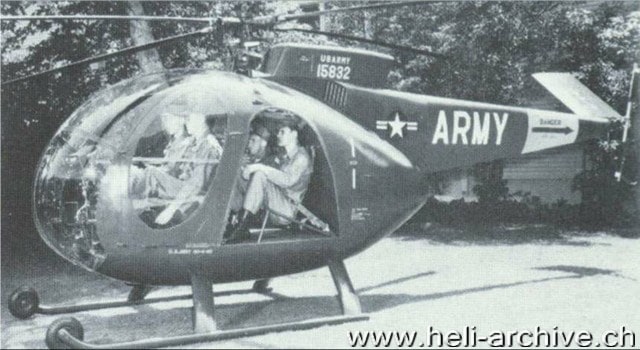
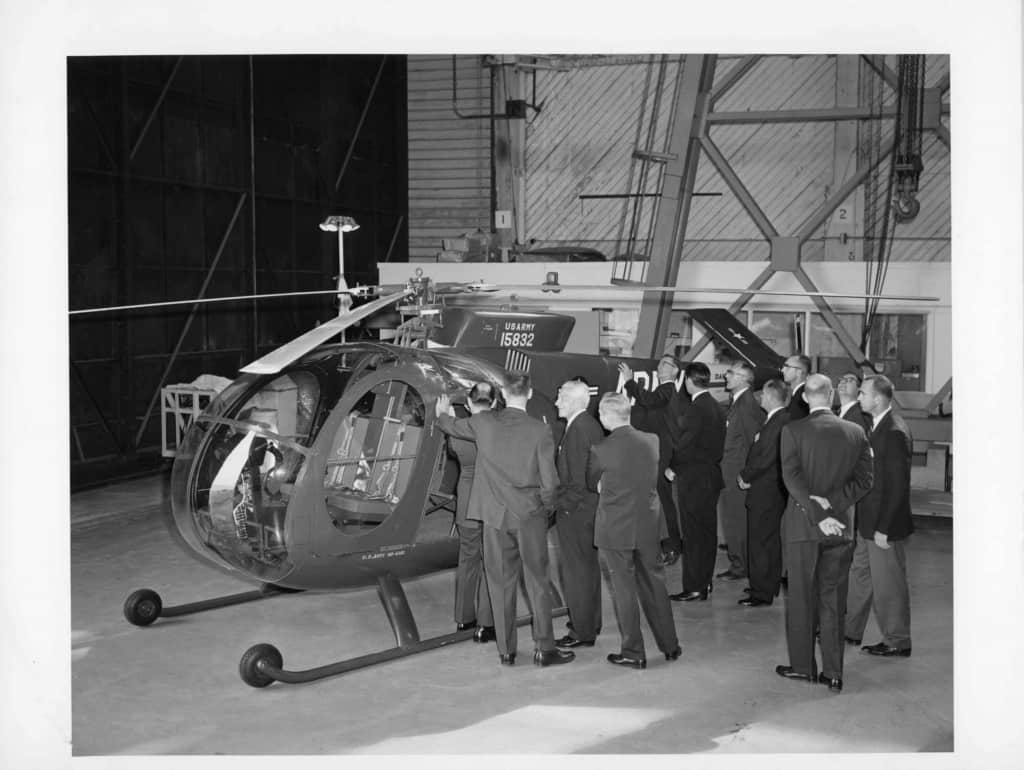
Through ’61, Bayer remained in the good graces of his employer. General Manager Rea Hopper increased Bayer’s salary and, in late 1961, arranged for no-interest loans so that Al and Rita could buy a stately, large vintage neo-colonial Spanish house in Palos Verdes Estates. The choice revolved around a large, open beam living room in which the Bayers could entertain. At this time, it appeared Hopper completely supported Bayer’s successful approach to marketing.
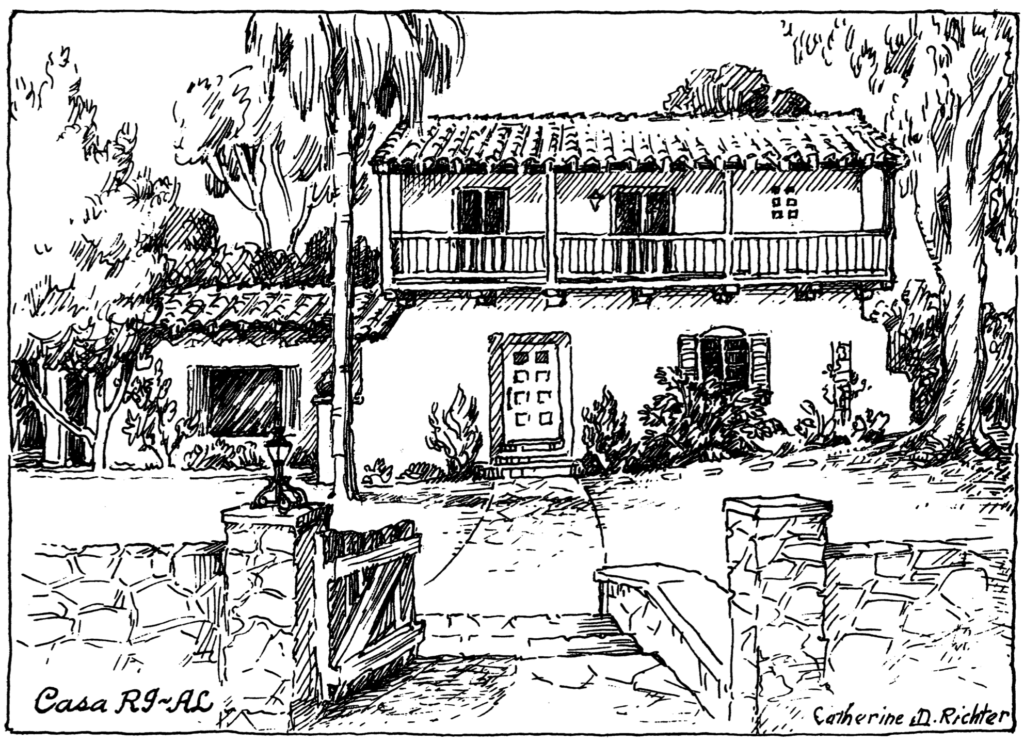
The loans were listed in the Hughes books as an expense–implying that, at this point, they did not expect them repaid. When General von Kann stayed in the guest house he signed the bathroom door, as had others. 399Review of Army Procurement of Light Observation Helicopters, Report of the Subcommittee for Special Investigations of the Committee on Armed Services, United States House Of Representative, Ninetieth … Continue reading
UNORTHODOX CONCEPTS – McNamara pushes for a revolution
The Hughes LOH specifications and performance promise had prevailed. von Kann and Eddleman had hijacked the process from the Navy. The Hughes machine entered the competition. Yet, they were not done trying to preordain the outcome.
Though von Kann represented the voice of innovation in Army aviation, many others in the Army were now excited about the idea of helicopter mobility. Probably to his surprise and delight, they pushed the ideas beyond what von Kann felt able. Reviewing von Kann’s report to McNamara, the Army found it too conservative. In April of ’62, based on the Army’s report, Secretary of Defense Robert McNamara wrote a memorandum that called for “revolutionary new concepts.” 400History of Operations Research in the United States Army: 1961-1973 By Charles R. Shrader p266 In some histories, this has been portrayed as McNamara originating the idea of the Air Calvary. However, given the history described here, he does not seem to have originated the idea. Von Kann had originated the idea. And more deeply, General Trudeau had been pushing for a new, more flexible definition of war strategy since the late 1950s. McNamara’s memo simply sealed the deal on behalf of von Kann and Edelman—preordaining adoption of a “revolutionary” design despite all the controversy that Stanley Hiller would soon generate.
Where Trudeau saw the army’s ability to wage flexible war against guerrilla tactics as something to be developed internally, within the Army, McNamara seems to have seen a need to shake things up–stepping in from the outside and shaking up the old process. Trudeau became unhappy with McNamara’s chaotic approach to procurement contracts and left the military during 1962. 401See his Memoirs. Implicitly, Eddleman and von Kann stirred McNamara up and lit a fire under the push for a small, fast helicopter as the key element in the new idea of an Air Calvary. The concerns of the Navy and the Air Force were left behind. The conversation during fall of 1961 between McNamara and Eddleman and Von Kann saw the two progressive Army Aviation convince the Secretary of Defense of the need for a fast, highly maneuverable helicopter design–one that might be more dangers, that took chances, one that could spearhead the new flexible tactics Trudeau had long advocated.
In April of ’62, McNamara issued a strong memorandum. Any possibility that the Hughes machine would not prevail in the contest for the LOH contract seems to have been disappearing. Using the key word, mobility, McNamara wrote:
I shall be disappointed if the Army’s reexamination merely produces logistically oriented recommendations to procure more of the same, rather than a plan for employment of fresh and perhaps unorthodox concepts which will give us a significant increase in mobility.
Like Trudeau, McNamara believed that the Chinese posed a tangible threat of broad conquest, one that the U.S. should prepare to oppose. This opposition could be predicted Southeast Asia well before the Vietnam War and the ostensible reasons for it occured. 402https://en.wikipedia.org/wiki/Pentagon_Papers The nature of such a war precluded an actual “front”. Hence, rapid attack necessitated a rapid observation and attack ability. Ultimately, this lead to problems, including inability to define progress or victory through the conquest of land and a tendency for soldiers to move too quickly and too far ahead into danger. Trudeau ultimately realized some of this. In contrast to General Trudeau who pushed for innovation from within the military, McNamara distrusted analysis by the military of weapon systems. He would ultimately push for civilian analysts. As later written:
McNamara’s institution of systems analysis as a basis for making key decisions on force requirements, weapon systems, and other matters occasioned much debate. Two of its main practitioners during the McNamara era, Alain C. Enthoven and K. Wayne Smith, described the concept as follows: “First, the word ‘systems’ indicates that every decision should be considered in as broad a context as necessary. . . . The word ‘analysis’ emphasizes the need to reduce a complex problem to its component parts for better understanding. Systems analysis takes a complex problem and sorts out the tangle of significant factors so that each can be studied by the method most appropriate to it.” Enthoven and Smith said they used mainly civilians as systems analysts because they could apply independent points of view to force planning. McNamara’s tendency to take military advice into account less than had previous secretaries contributed to his unpopularity with service leaders. 403Historical Office, Secretary of Dense, article on McNamara. https://history.defense.gov/Multimedia/Biographies/Article-View/Article/571271/robert-s-mcnamara/
Reading between the lines, in ’62 McNamara provided instruction to seek out a light, fast helicopter and to take risks toward this end hoping to counter the sluggish and self-serving methods that characterized procurement where analysis of purchases had long been done within the military itself. Complaints by Eddleman and von Kann of Air Force and Navy limitation upon Army Aviation apparently struck a nerve with McNamara, who like Trudeau, anticipated that the U.S. would soon be fighting a new kind of war. The Communists had taken Cuba and, it seemed, the Chinese would soon seek expansion. This was, for a time, a lesser parallel track to major national concerns about nuclear was with Russia.
McNamara’s memo resulted in creation during May of ’62 of the Howze Board–the Army Tactical Mobility Requirements Board.404https://warfarehistorynetwork.com/2016/09/19/tactical-air-mobility/ 405 Vietnam Studies, Air Mobility 1961-1971 Dept of the Army, Lieutenant General John J. Tolson, p. 17 https://www.nevadamusic.com/wp-admin/post.php?post=1901&action=edit After decades during which forward and futuristic engineers and aviation nerds had dreamt of a fast, vertical takeoff aircraft, and had struggled to find military funding, the Army was now pushing hard for exactly that. While conventional thinkers had been developing conventional products Bayer, Eddleman, von Kann, Rankin, Vidal and Trudeau sought performance above all else. And, now, the Secretary of Defense supported the push. 406http://webdoc.sub.gwdg.de/ebook/p/2005/CMH_2/www.army.mil/cmh-pg/books/vietnam/airmobility/airmobility-ch01.html 407https://history.army.mil/html/books/operations_research_vol2/CMH_70-105-1.pdf p267
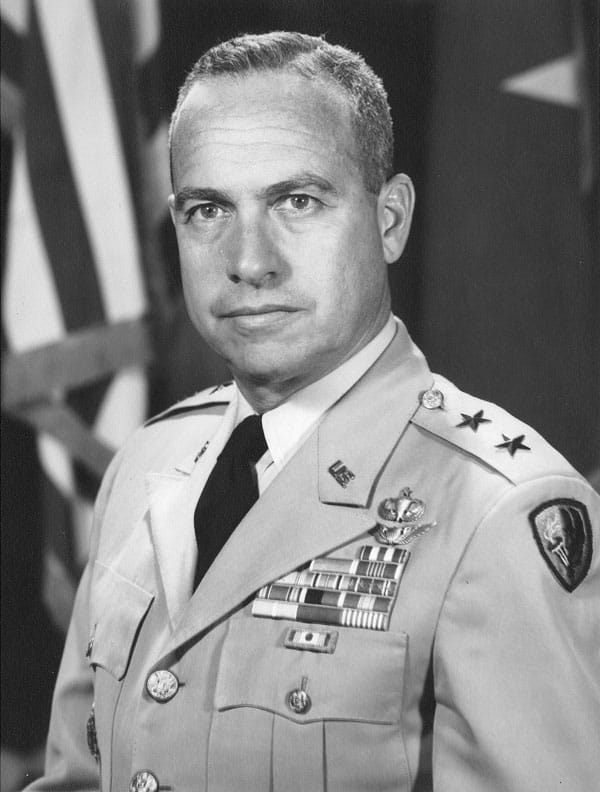
Delivered in August, the Howze Board’s report called for the Army to maintain 10,747 helicopters. The centerpiece of the Howze Board recommendations was the creation of five Air Assault Divisions, three Air Cavalry Combat Brigades, and five Air Transport Brigades. 408p 271 Some in the Army did not welcome the Report, seeing it as creating competition for funding with ground forces. 409p272 And the Air Force bluntly opposed it. 410p273 However, there was support in the Executive Branch and White House. And Vietnam was becoming an inalterable reality that would cut through all opposition. In the end, people would wonder why the Hughes LOH took so long to arrive at the front.
The procurement chaos that Trudeau fear became manifest though not due to government action but due to industry. One wonders whether, had he stayed in the military and because he talked to Bayer, General Trudeau would not have stepped in to fix the problems at Hughes Helicopter sooner.
One might conclude that with the Secretary of Defense on board, the process of moving forward with the Hughes LOH design to meet the call for an unorthdox, revolutionary and innovative approach would have become easier. In fact, the entire process fell apart. Two forces now descended on the contract. Internally, by summer of ’62, Bayer’s boss at Hughes Helicopter, Rea Hopper, could not longer handle Bayer’s dynamic approach and its financial costs. And, externally, Stanley Hiller was not going down without a bitter and protracted fight. Though the Hughes design was inevitably going to prevail, years of controversy and, for Bayer, heartache lay ahead.
One can understand why Stanley Hiller would be upset to see the contract hijacked by the progressive group in Army Aviation, by the overthrow of Navy control over procurement, by decisions that ignored “specifications,” by enlistment of the Secretary of Defense. The Hiller design was stouter, heavier and more reliable. However, Bayer had been courting and giving rides to the key men in Army Aviation for years. Eddleman and von Kann were clearly dedicated to the Hughes concept. The Hughes concept was revolutionary. And, apparently based on that innovation, the progressives in Army Aviation were now eager to base a broad revolution in attack mobility on the Hughes concept—at the least, on the Hughes design as a highly maneuverably scout for a helicopter gunship.
While Eddleman and von Kann could justifiably feel that they had achieved their goal–undoing Navy control of procurement and enlisting the Secretary of Defense in the concept of radical innovation–Stanley Hiller needed the contract and its money. Failure to get the contract ultimately caused the demise of Hiller Fairchild helicopters. 411Spenser, Vertical Challenge. A good discussion. Stanley Hiller couldn’t go after the Army, but he could go after Bayer. By late 1963, this would be framed as complaints to the Army and in 1965 it would be framed as complaints to Congress. However, in 1962, the aura around Bayer began to unravel and one suspects Stanley Hiller or others were beginning to talk in ways that caused people high up in the Hughes Company to worry about damage to Howard Hughes.
Rea Hopper’s problem with Bayer was initially framed as a concern for costs. Bayer was running up expenses and, with the LOH contract, he was committing Hughes Helicopter to expensive retooling. In mid 1962, Hopper’s actions suggest that he saw Bayer’s sales efforts as leaving him little control over the company. And, Hopper was not a fan of the innovative, light blade design that defined both the Hughes 269 and the Hughes 369/LOH. He seems to have felt stuck with it. Yet, he had let Bayer and the engineers set this and other directions for years. The deeper problem for Hopper, or for his boss Bill Gay, seems to have been the nature of Bayer’s relationship building with Army Aviation and its potential to damage the reputation of Howard Hughes. Based on what occurred later, we can suggest that Stanley Hiller set that rumor in motion for Hopper and Gay.
WHISKEY, VODKA, SCOTCH AND GIN – more parties
Into ’62, Bayer remained consumed by work. In March of ’62, Bayer’s 11 year old son, Christopher, wrote him a poem–his first lyric, reflecting on his father’s work and stress. Chris went on to become a musician. (The poem is probably what lead my father to giving me a ride in the 269 during the following month.)
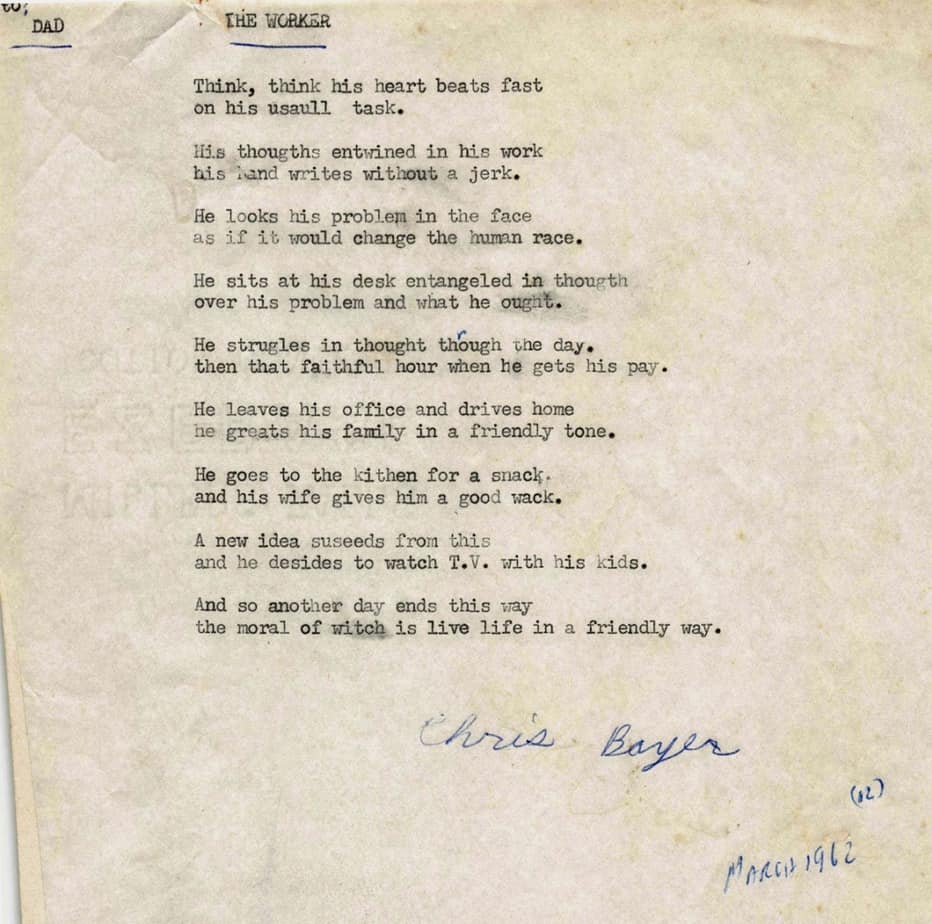
Hopper grew increasingly unhappy at Bayer’s successes. He disliked Bayer’s influenced in the Army. He disliked Bayer’s glamour–the “Hollywood” style that Kellett men had noticed in him during the 1940s in Pennsylvania. With the new house, the LOH contract still in process but fundamentally assured, with the 269 about to be sold in the civilian market, Bayer went into 1962 turning up the dial on his wining and dining.
In April of ’62, Bayer wrote that he expected the civilian version of the LOH (the 369) to sell 2,000 units after its introductory phase, some time in late ’64 or early ’65. 412American Helicopter Society newsletter, April 1962 p 4. Calling it the 369 By April of ’62, Bayer was planning domestic and international dealerships for the 269. 413Newsletter American Helicopter Society, Vol 8. No. 4, April 1962 By spring of 1962, the 269A was being marketed for crop dusting and general civilian uses–echoing the information provided by Wagner and Doblhoff years earlier.
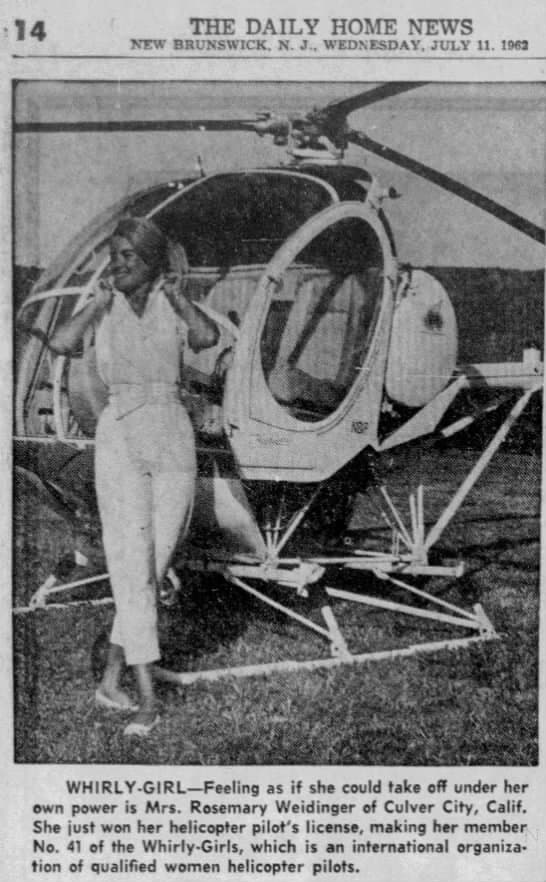
Rea Hopper framed his unhappiness as worry that the parent company, Hughes Tool Co., continued to financially subsidize Hughes Helicopter. In a financial forecast for ’62 and ’63, he saw the success of 269 sales as an opportunity to tell Hughes Tool Co.–the parent organization–that Hughes Helicopters would soon no longer need that financial subsidy. In a financial statement, Hopper predicted that during ’62, the Hughes parent company would need to subsidize Hughes Tool Co. Aircraft Division with $3,500,000. Based on sales of the 269, he predicted a subsidy of only $100,000 during 1963. 4141962/1963 Hughes Tool Company Aircraft Division Financial Forecast. Nowhere in his figures did Hopper mention the impending cost of the producing the LOH. He seems to have been ignoring the reality of the LOH–the possibility of the LOH contract, focused on trying to please the parent company by reducing its subsidy of Hughes Helicopter and, implicitly though incredibly, ready to undermine the LOH program by getting rid of Bayer.
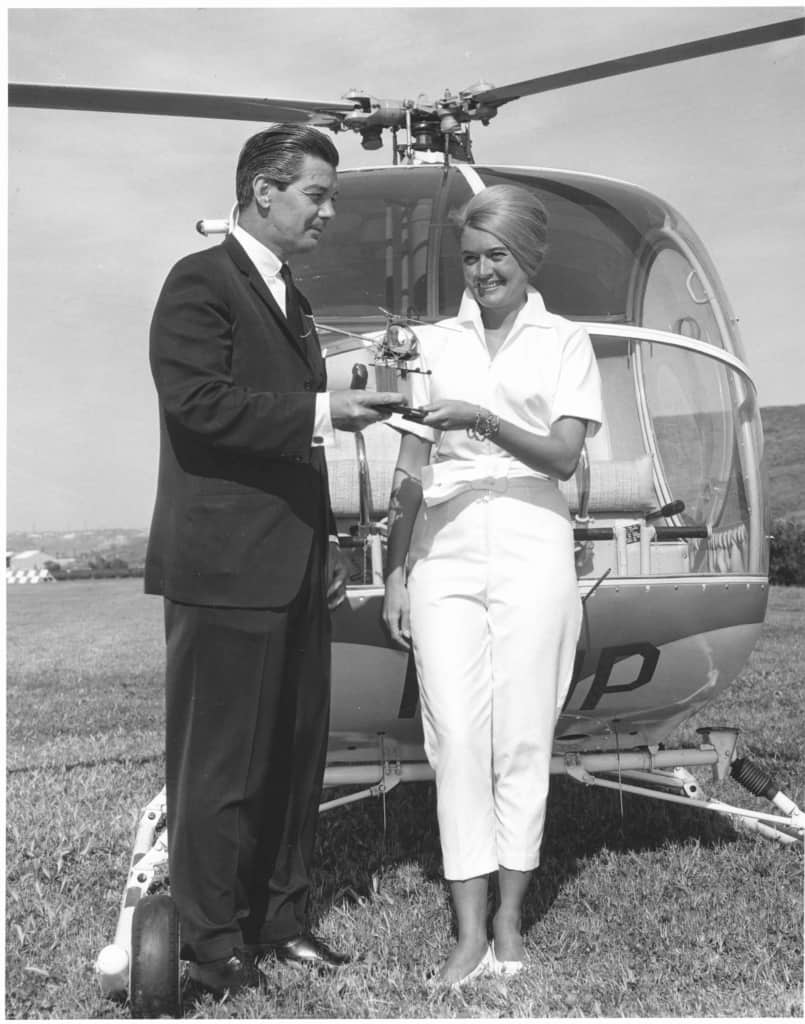
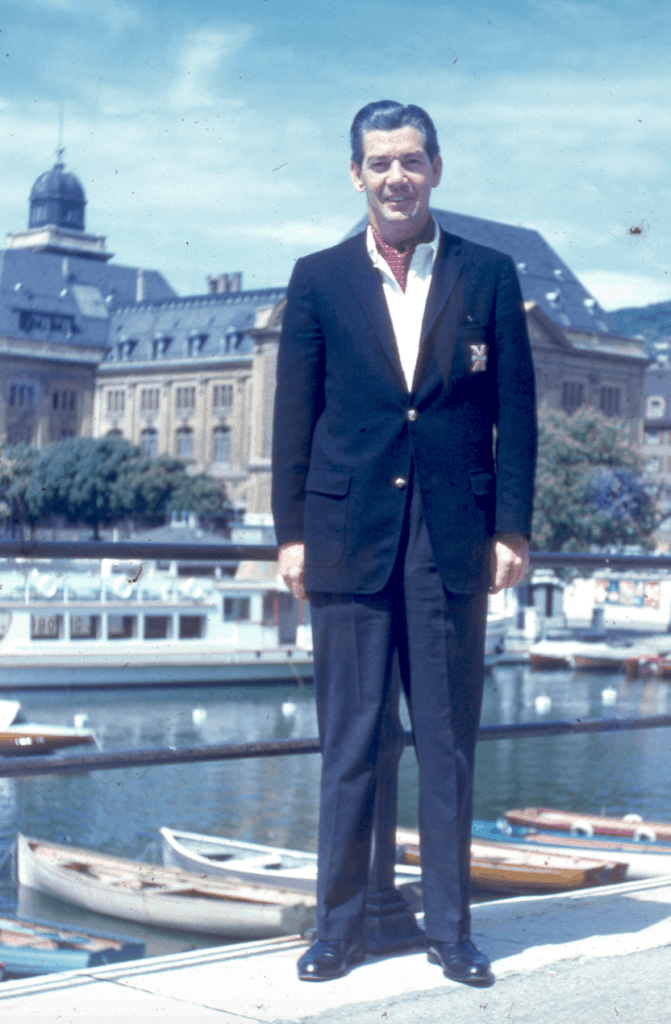
Why? The answer lies in what Bayer had seen and others would soon see. Though it had invested in manufacture of the 269, Hughes Helicopter had little ability to manufacture the LOH. There would need to be further investment by the parent company to realize the benefits of the Army LOH contract if Hughes obtained that contract. Hopper may have realized that Bayer had now only set in motion the idea that Hughes Helicopter bid low in order to win the contract but that this win would commit Hughes Helicopter to huge subsidy by the parent company, Hughes Tool, in Texas.

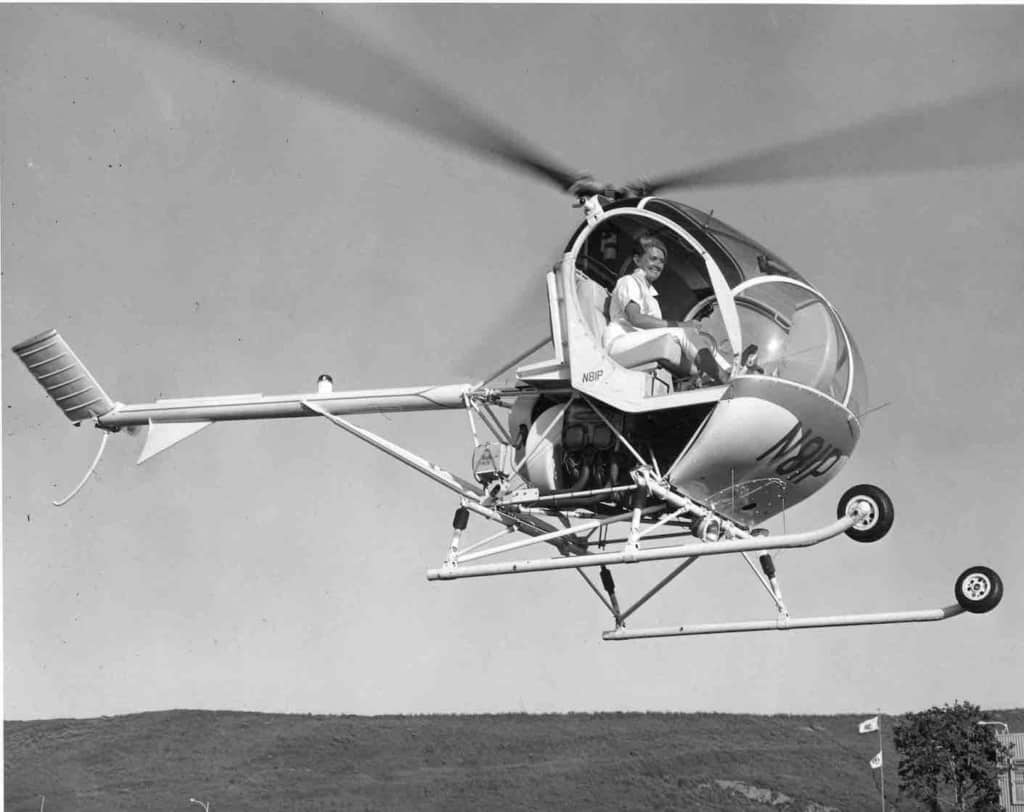
Most viscerally, what seems to have rankled Hopper was Bayer’s charm, confidence and ability to parlay his wining and dining into business. The turning point for Hopper seems to have been Bayer’s trip to Europe during spring and early summer of ’62. Bayer had moved beyond rides along the coast to sales efforts based on entertaining around the world. Bayer had a plan for this trip. On April 23 1962, Bayer’s secretary, Rosemary Weidinger, was certified in the 269, taught by the Hughes test pilot Jim Vittitoe. 415https://twudigital.contentdm.oclc.org/digital/collection/p16283coll1/id/460 She became the 41st International Whirlygirl–woman helicopter pilot. Publicity about Mrs. Weidinger and the 269 began to appear in the press. This may have prompted Bayer’s to caution his staff about their appearance and drinking at social gathering. She wrote a poem, commenting.
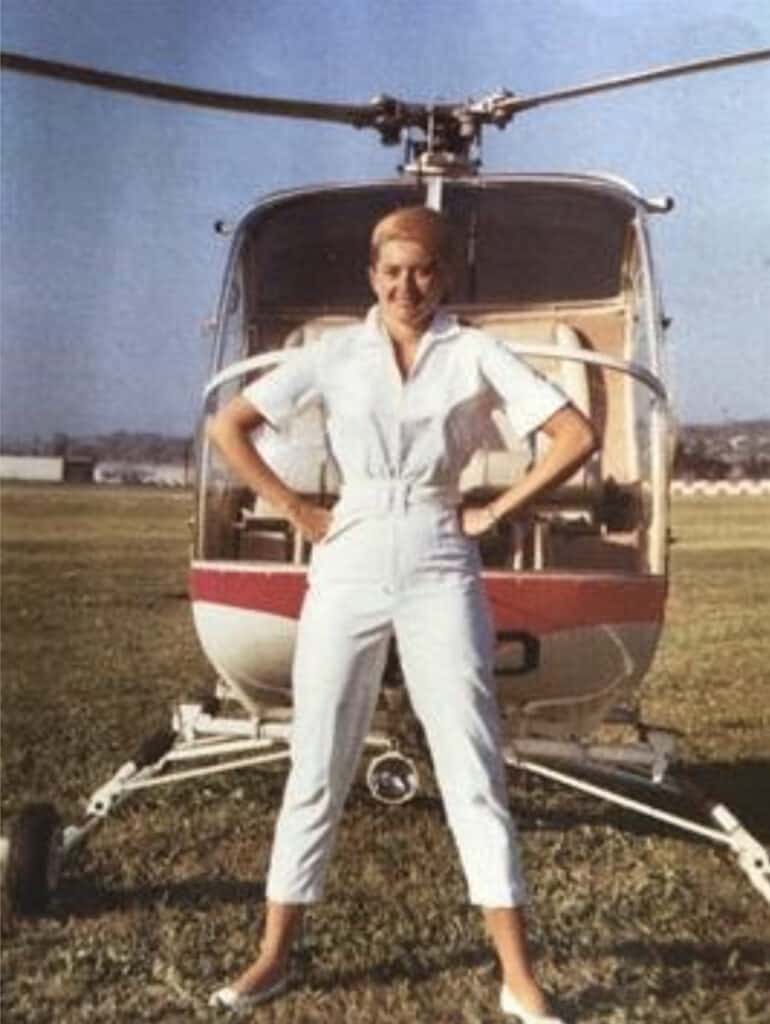
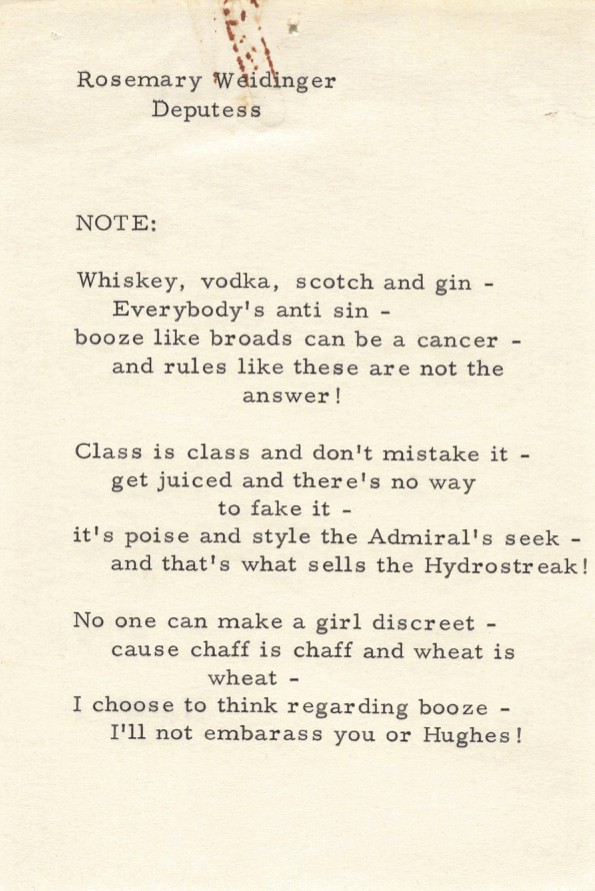
A press release included: The 269 is fun to fly. I like its compact size and the attractive arrangement pdf the cabin” Mrs. Weidinger said. “I think any woman would be comfortable.” Bayer commented, “she demonstrates that women can operate the 269A with style and grace and enjoy the practical aspects of helicopter travel.
It would be a mammoth investment. At the same time, Howard Hughes was increasingly sick and isolated while the bean counters were taking over his businesses. He had been pushed out of an influence in creation of aircraft years earlier. And, broadly, the famous risk taking aviator was being replaced by corporate managers.
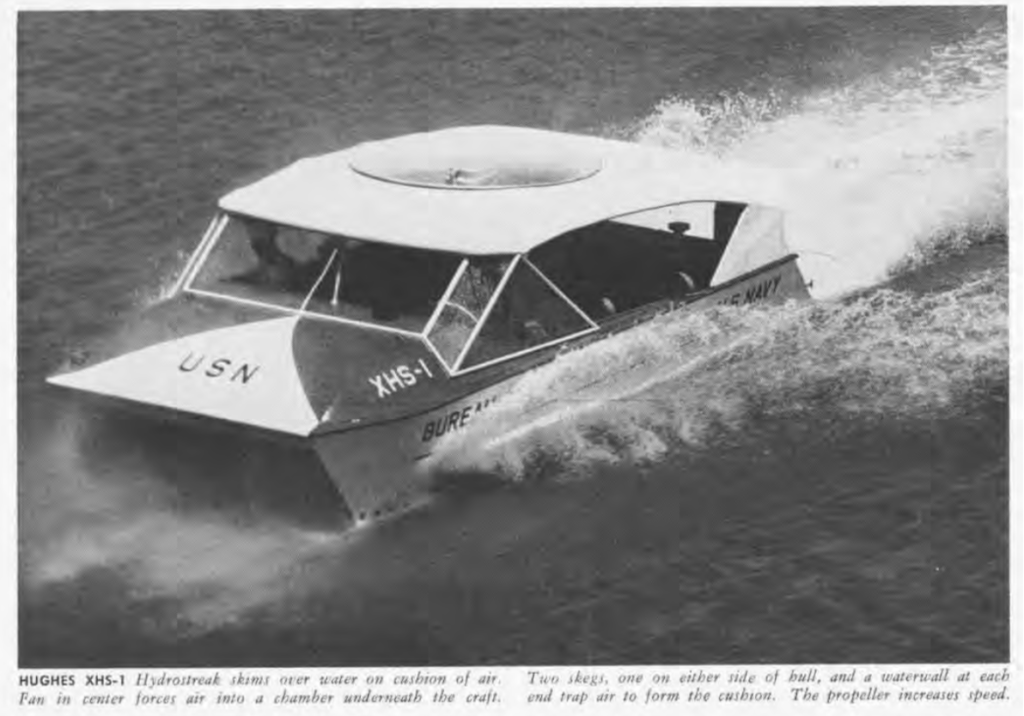
Traveling to Europe, that spring, he demonstrated the 269 on May 15 at Westland Helicopters. 416Logbook. Ms. Weidinger presented a model of the 269 to British General Weston.417https://twudigital.contentdm.oclc.org/digital/collection/p16283coll1/id/181/ This appears to have been incidental to the goal of the journey. Bayer had Mrs. Weidinger demonstrate the 269 at the Hannover Air Show–apparently a primary initial goal in having her learn to fly it.
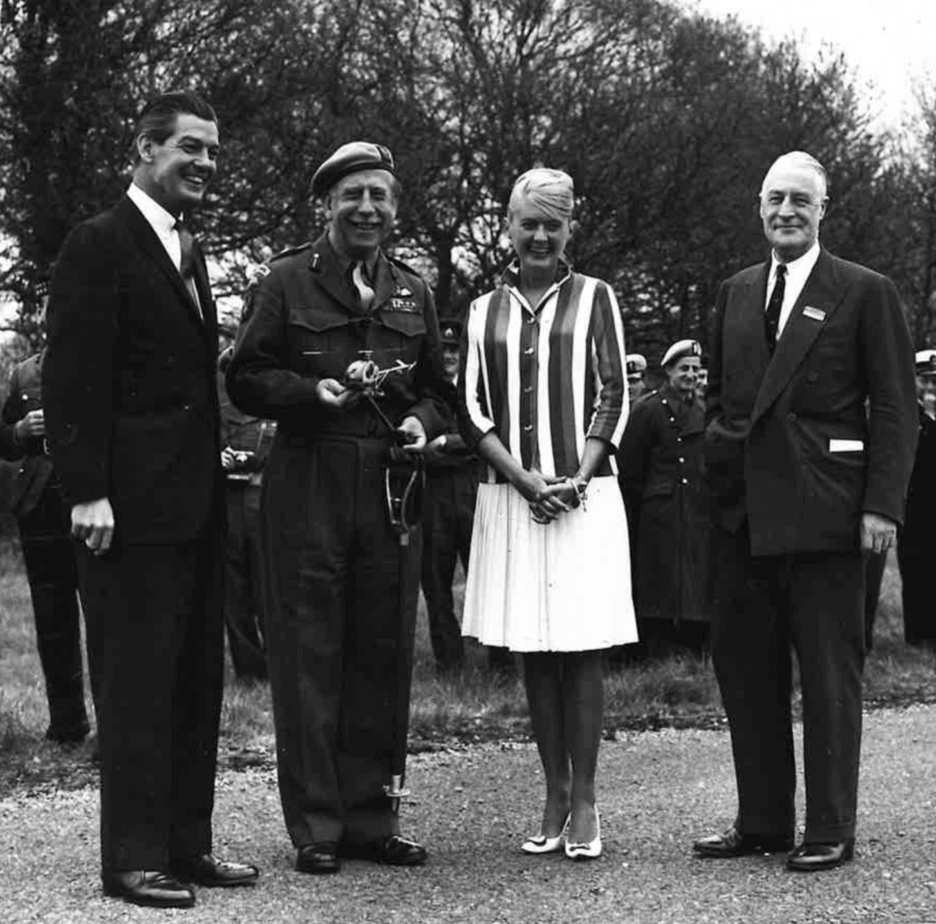
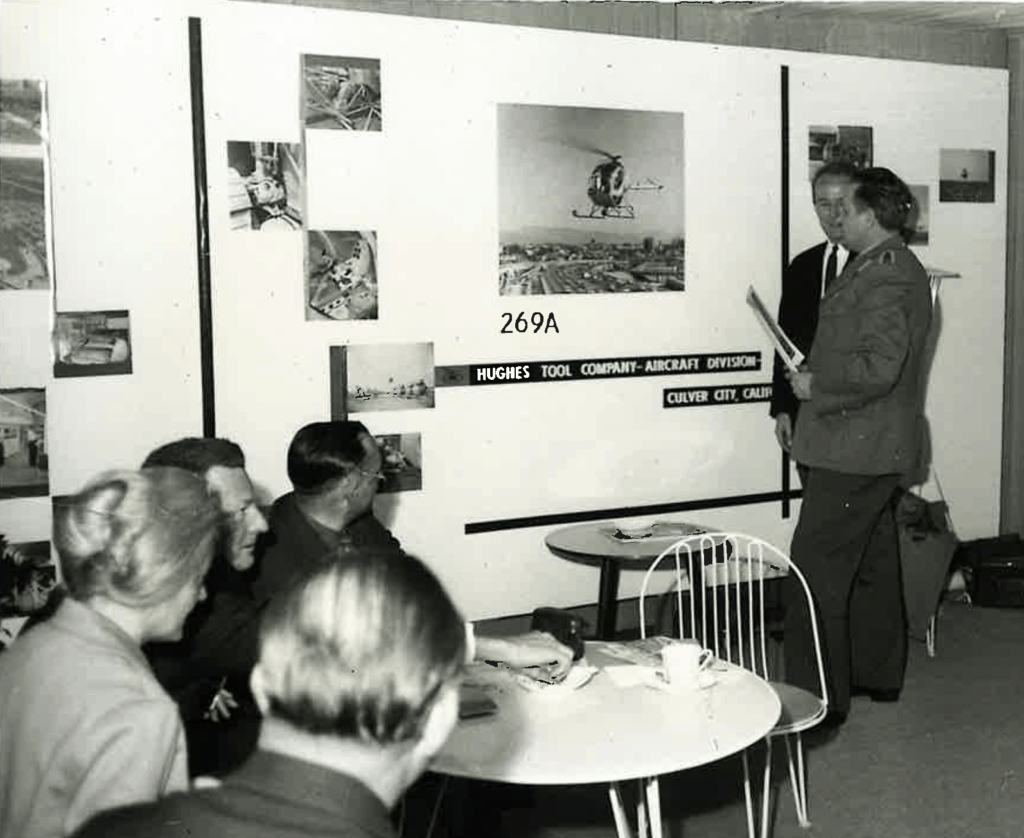
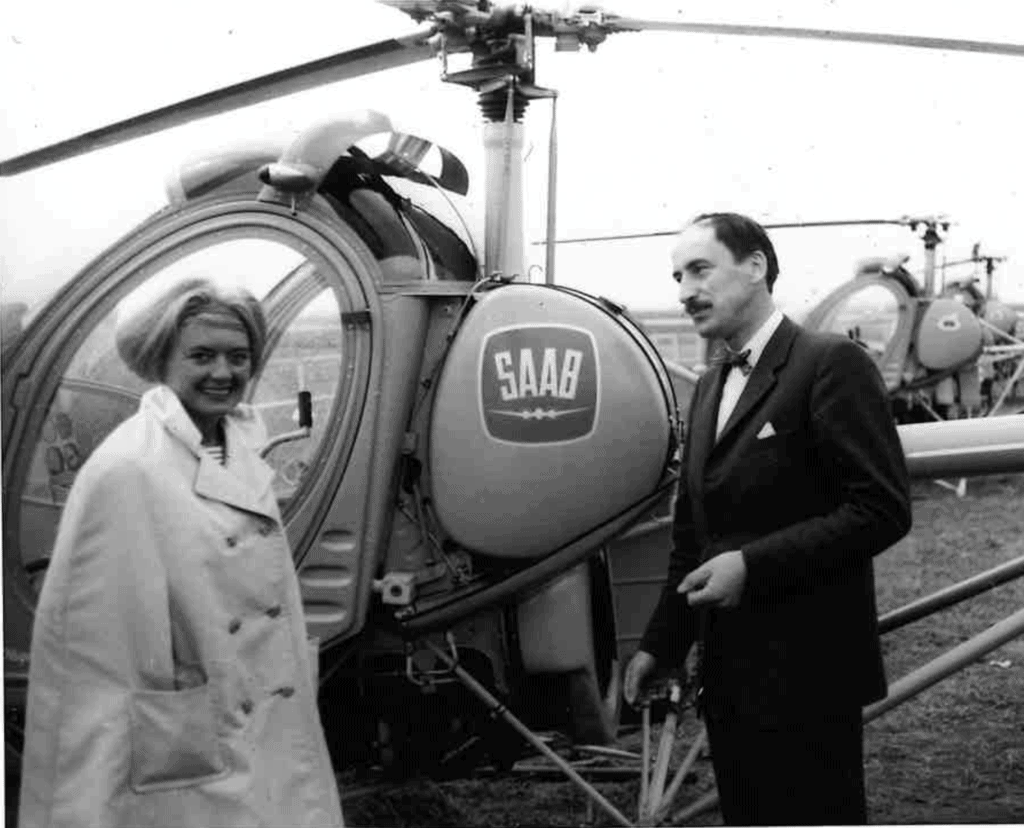
In July of ’62, Rea Hopper, shifted the Flight Operations Department out of Bayer’s control. Until this time, Bayer had been a key connection between input from the military, the engineers and production. In a memo, Bayer vigorously objected, pointing out that he was “the only principle executive in the Company with lengthy helicopter flight test and operations experience,” that he had created the Flight Operations Department–separating it from engineering and that this has worked smoothly with engineering as they made design improvements. 419Memo. Bayer to Hopper July 23, 1962. Significantly, even before the height velocity curve crashes in August, Rea Hopper had begun trying to rein in Bayer.
THE HEIGHT VELOCITY CURVE CRASHES
One would think that all the bugs in the 269 had been worked out. Bayer forged ahead with sales plans and demonstrations. Bayer took his son for ride. His secretary had demonstrated it in Europe. However, an event during August of 1962 created for some people–and probably in particular Rea Hopper–the appearance that Bayer was pushing an aircraft that was not yet safe.
In August of ’62, apparently due to design changes the FAA required further certification tests. During these tests, Hughes test pilot Jim Vittitoe (1920-1994) crashed the 269, twice. As he later described it: 420http://www.koreanwar-educator.org/memoirs/vittitoe_james/index.htm
On October 2, 1961, I started my second career with Hughes Tool Co., Aircraft Division, Culver City, California. The flight test department had two pilots, Raleigh Fletcher and Gene Moore. (Gale Moore) Raleigh was the manager; Gene and I were to be the production test pilots. The first production helicopter was due off the production line in two weeks. We did have two proto models for flying demonstration flights for potential customers or friends of the company president, Ray Hopper, and its vice president, Al Bayer. In one week I had gone from flying the largest helicopter in the USA to flying the smallest. The last week of October, the first production 269A rolled off the line. Hughes decided to build their own radios. The 269A had the worst radio I had ever seen and the headsets were no better, but for $19,000, the helicopter was not that bad.
The auto rotational characteristics were not that great. It took more skill and practice than most helicopters of its time. Therefore most sales pilots would not demonstrate auto rotations, and that’s what customers wanted to see. That procedure hurt sales for years. If a customer insisted on seeing auto rotations, Gene or myself had to demonstrate them.….
I was busy at Hughes; in fact, I was asked by the vice president to be the chief experimental test pilot with $20-a-week salary increase.
One of the first programs was to reestablish the height velocity diagram on the 269A. The height velocity curve is to establish the altitude at which you could lose the engine and still make a safe landing. I had made hundreds of throttle chops at various altitudes. The one at 50 feet and 50 miles per hour was a very tight point. On August 12, 1962, I failed to make this point, and the result was a crash that totaled the helicopter and gave me some minor back problems. We increased the speed by 5 mph and it made the point okay.
Four days later, we called the FAA to verify the HV curve. John Fransik (Francek) was the FAA test pilot assigned. We had completed the HV curve when John asked for another point at 150 feet and 60 mph at the hover RPM, which was 2500 RPM. We had done the point at 2700 RPM, but not at 2500 RPM. We didn’t make it, so another helicopter crashed. John and I were put into an ambulance and sent to the hospital. This all happened about 6 a.m. We went to the wrong hospital, Baldwin Hills instead of Daniel Freeman, and there were no doctors on duty until 7 a.m. so we just had to sit in the lobby until the doctors came in. I did get a good one, an osteopath surgeon, who I saw off and on for almost a year. It was almost a year before I could get through a night’s sleep because of back pain.
About this time, the wheels on the front tips of the skids were removed, perhaps due to concern that ground resonance contributed to the crashes.
The crashes probably only added to Hopper concerns–the 269’s known auto-rotation problems had lead the designated test pilot to crash it twice. The first test pilot had quit after an injury. Bayer was giving rides. He had flown his wife to Las Vegas for a Life Magazine article. He had had his secretary fly the helicopter in Europe.
THE GENERAL RIDES WITH THE SECRETARY – selling the product
Hopper continued to try to rein Bayer in, albeit passive aggressively. In October, Rea Hopper took responsibility for spare parts away from Bayer and put it under Manufacturing. Bayer wrote to Hopper, complaining. 422Bayer to Hopper. Oct. 12, 1962 He cited inefficiency and cost. As far as Bayer was concerned, everything was going fine. His experience with the industry had long been one where sales parallel ongoing testing of still marginal aircraft. He sidestepped what he already knew to be Hopper’s bigger complaint–Bayer’s style and power–his drive.
In November, Bayer submitted a detailed list of the costs and explanations for his recent trip to Europe with the 269. And, he submitted a budget for an upcoming trip to the 1963 Paris Airshow. This was planned to be another airshow with Rosemary Weidinger helping to demonstrate the 269.
The autorotation problems in August seem to have swayed Hopper into a conservative posture–critical of the light rotors on the 269. The rotor was the great innovation and they were what conservative helicopter men most disliked in the craft. Bayer stated that there was not a European pilot who could adequately demonstrate the 269. This someone missed the point as the statement probably underscored for Hopper that Bayer was singlehandedly flying the helicopter and selling it while the ability for anyone else to fly it now seemed in question. There seemed no stopping Bayer. The FAA had grounded the 269 during August. Bayer blamed the apparent lack of sales results from the Hannover trip on the grounding. Bayer assured Hopper that the helicopter was running well again.
1962-lr-Bayer-report-on-Hannover-Air-Show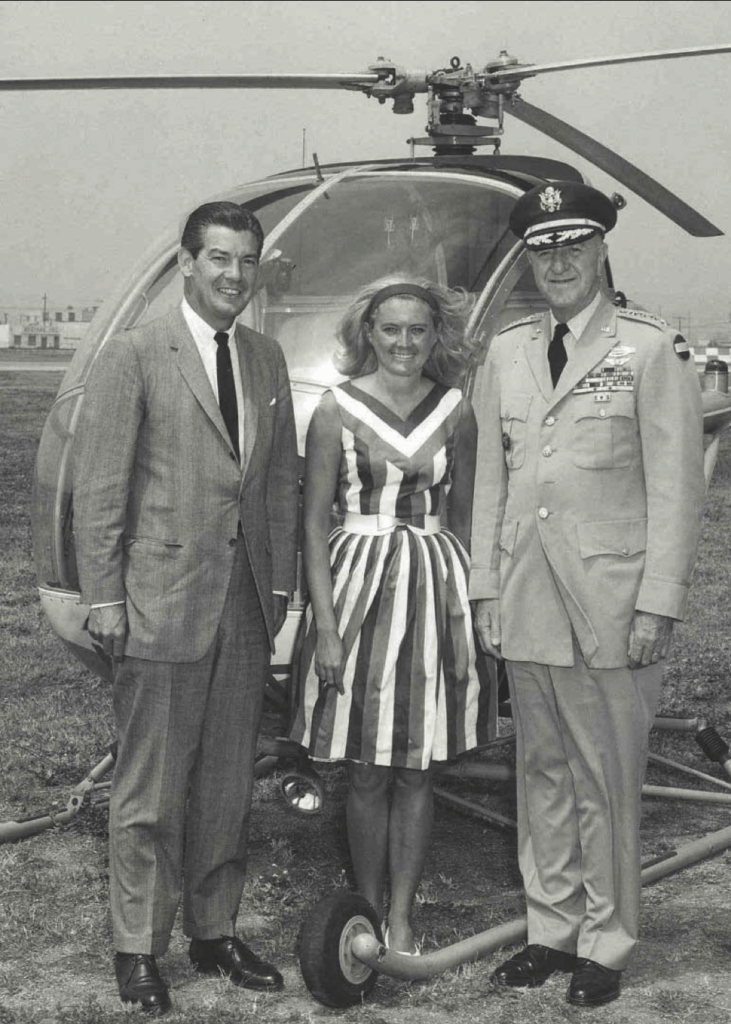
Bayer’s strategy and increasing use of his secretary to demonstrate the helicopter proved effective–at least with the military. Years later, Bayer often told the story of how the military finally contracted for the 269 as a trainer. I took the general (General Herbert Powell) for a ride in the 269, buzzed him all over the airport and did an autorotation. We got back into the office and he said, ‘Al, you can fly that helicopter but the average soldier can’t fly that helicopter. It’s like balancing an egg. You can fly it, but the average pilot couldn’t do it.’ I turned to Rosemary, my secretary, and I said, ‘Take the General up for a ride.’ I’d made sure she knew how to fly the 269. She took the General up, buzzed him around the airport and did an autorotation. That did it.” Bayer laughed, “The General figured that if a woman could fly the 269 then so could the average Army aviator. The story captures the essence of Bayer’s marketing–the combination of glamour and technical mastery. Rosemary Weidinger played the central part. Weidinger was smart, good looking, good natured and charming.
Bayer set up a licensing program to foster overseas manufacturing of the 269 by other companies. In the Nov. 1962 edition of Army Aviation, General Oden announced that the Army would create a separate training fleet. In the publication, Bayer ran this ad:
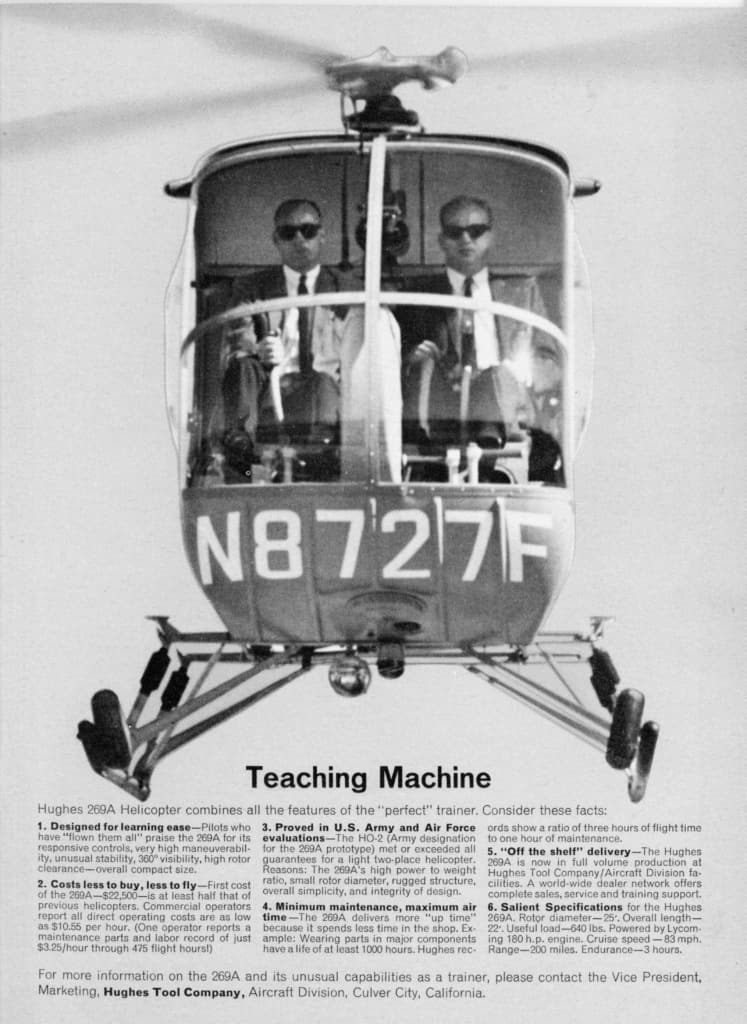
A SONG WRITER AND A SINGER–a Palm Springs flight
In November, Bayer wrote a letter to Hopper detailing his concern that production of the five prototype LOHs could not be done within the financial margins set in the prototype contract. With his boss, Rea Hopper, unhappy and the test crashes during summer of 1962, one might expect Bayer to ease up the pace. However, he had a vision of a helicopter that was not only dynamic but also cool.
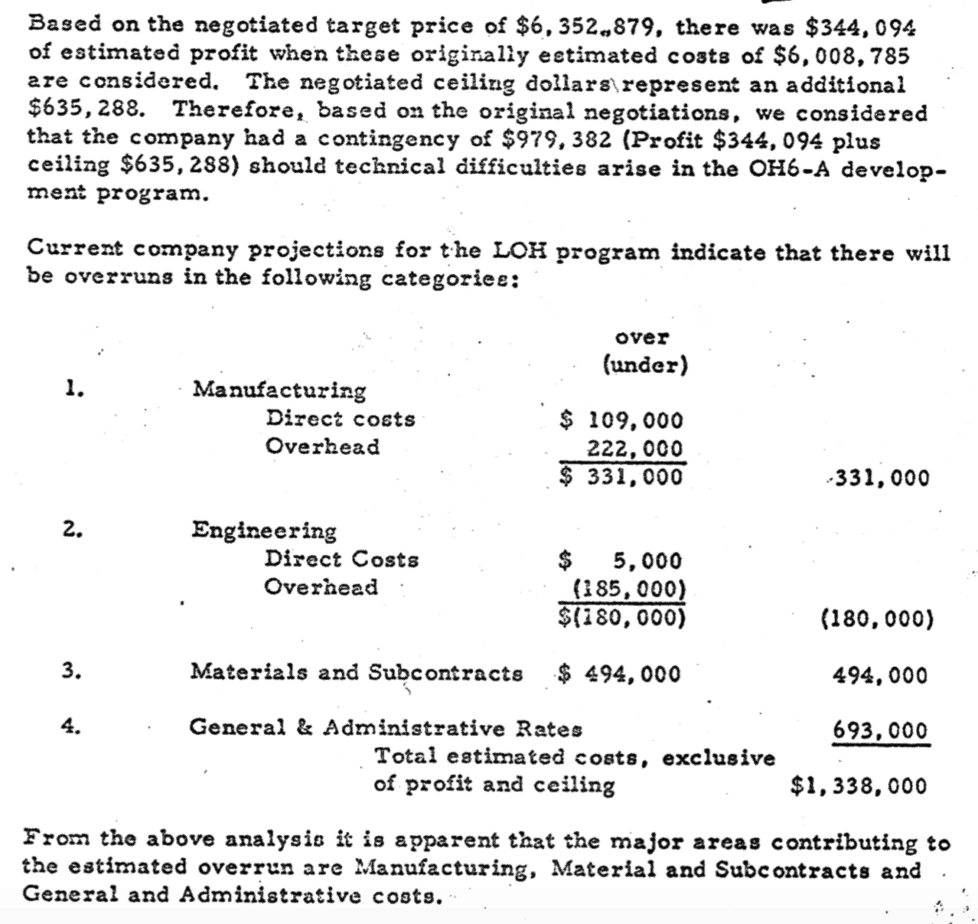
Bayer attributed the excessive cost of the LOH to inefficiency. This mattered for the prototypes. What Bayer did not mention to Hopper is that he wanted to low-ball the LOH bid. Still, he wanted to reduce the loss that would be created by that bid by improving efficiency. Lack of efficiency in manufacture of the five prototypes that would be sent to the Army for testing as part of the bid process foreshadowed a much larger problem down the road–an excessive loss when Hughes Helicopter low-balled the LOH bid–bidding below cost to secure the contract while hoping that future reorders would engender a greater price. Typically, once the military had purchased something it did not want to change in a willy-nilly fashion. Consistency mattered. Though unethical in some eyes, “buying the contract” could work.
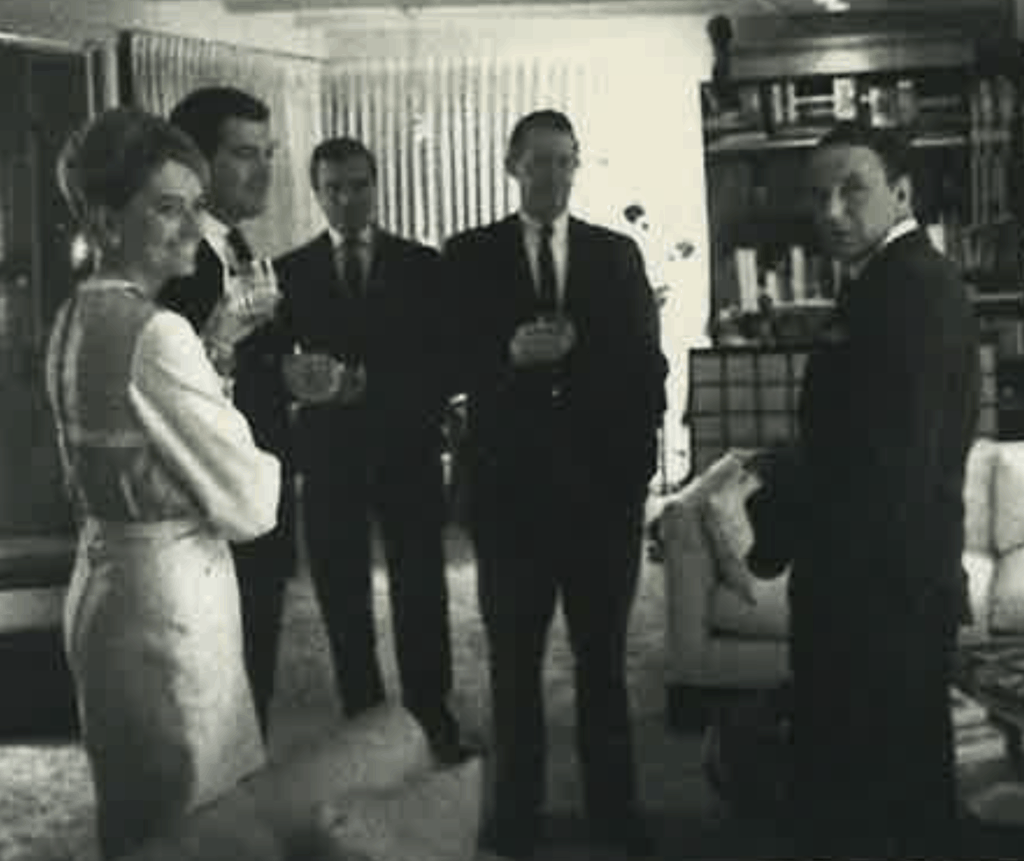
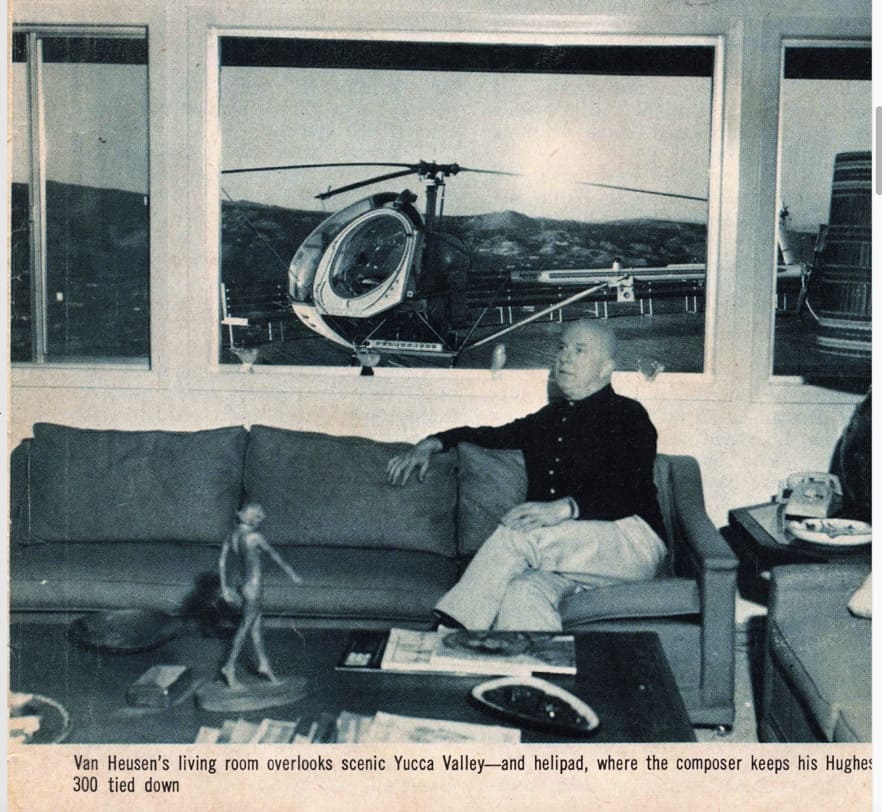
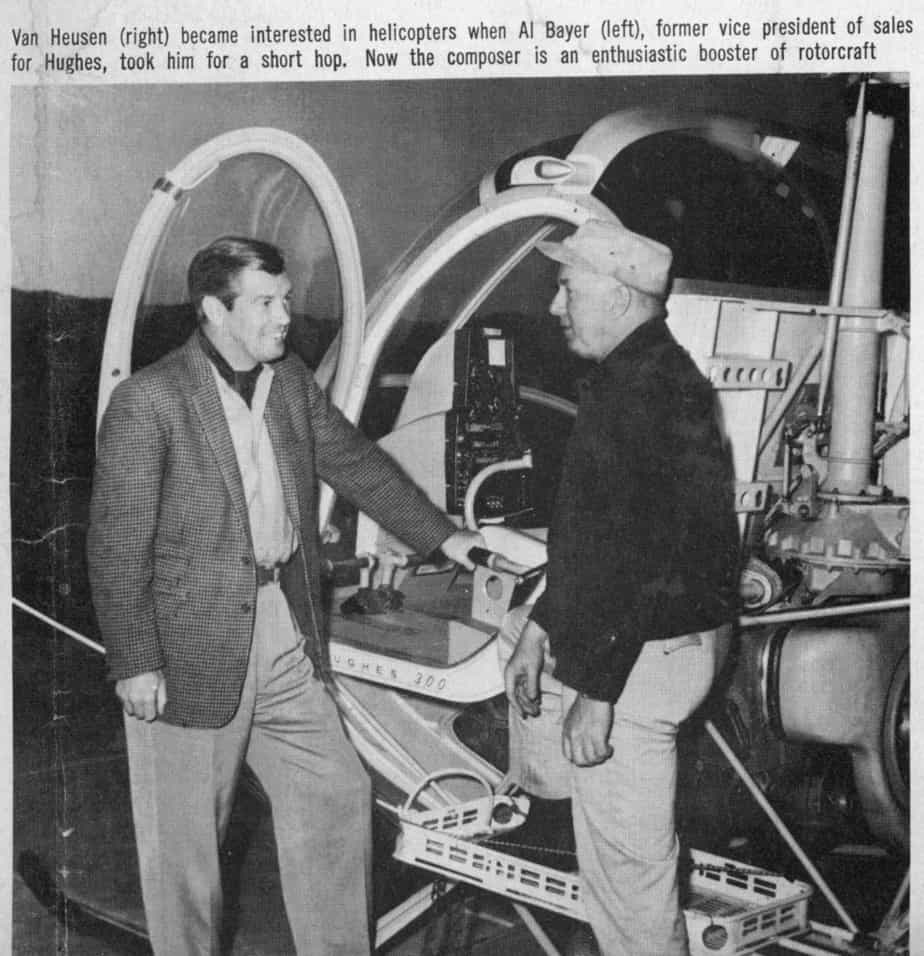
Bayer often combined glamour with more typical sales efforts–reinforcing those efforts. He had flown to Palm Springs to give General Howze a briefing on the Hughes LOH design, a meeting set up in November for that December. Pierre Salinger’s description of one evening illustrates the ambience. He later wrote of the event, placing it in Los Angeles, though it seems to have been Palm Springs.
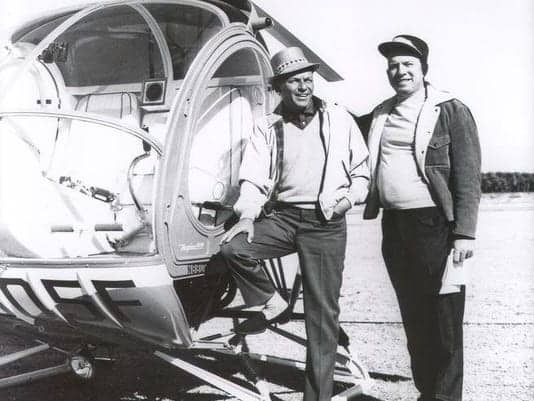
My friend Al Bayer reminded me recently of the time when we were all in Los Angeles with the President, who had to address a fund-raising dinner. Bayer and I, along with Peter Lawford, JFK’s brother-in-law, were having a drink with the President in his hotel suite prior too going out for a night on the town. I can still see the look of longing (almost to the point of envy) that cross the President’s face when we said our good-bye. As I have said thousand stand thousands of time, John Kennedy was real. 427P.S. A Memoir Pierre Salinger, p. 291
WALTZING HELICOPTERS AND THE LAST POWER MOVE – Bayer gets fired
January 1963 publicity focused on Tom Waters with Bayer and Weidinger. Waters operated an Buick dealership in San Francisco and would now sell helicopters as well–a concrete step in the narrative about the 269 as an everyman’s craft. Weidinger flew her pink helicopter 428N8811F to the City and gave him Water a ride in that draft. 429Cross Country News, Jan. 31, 1963. A Malibu Teal 269 then went on display at the car dealership. 430 N8812F, San Francisco Chronicle Jan. 15, 1963.
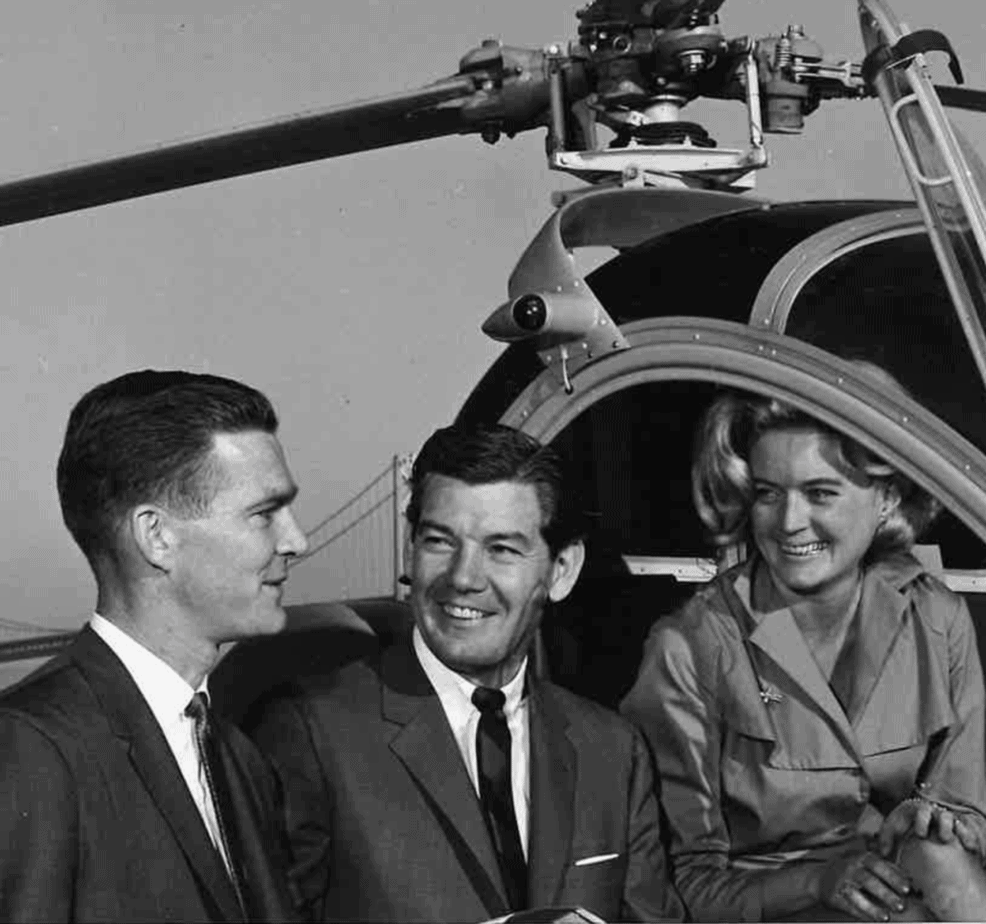
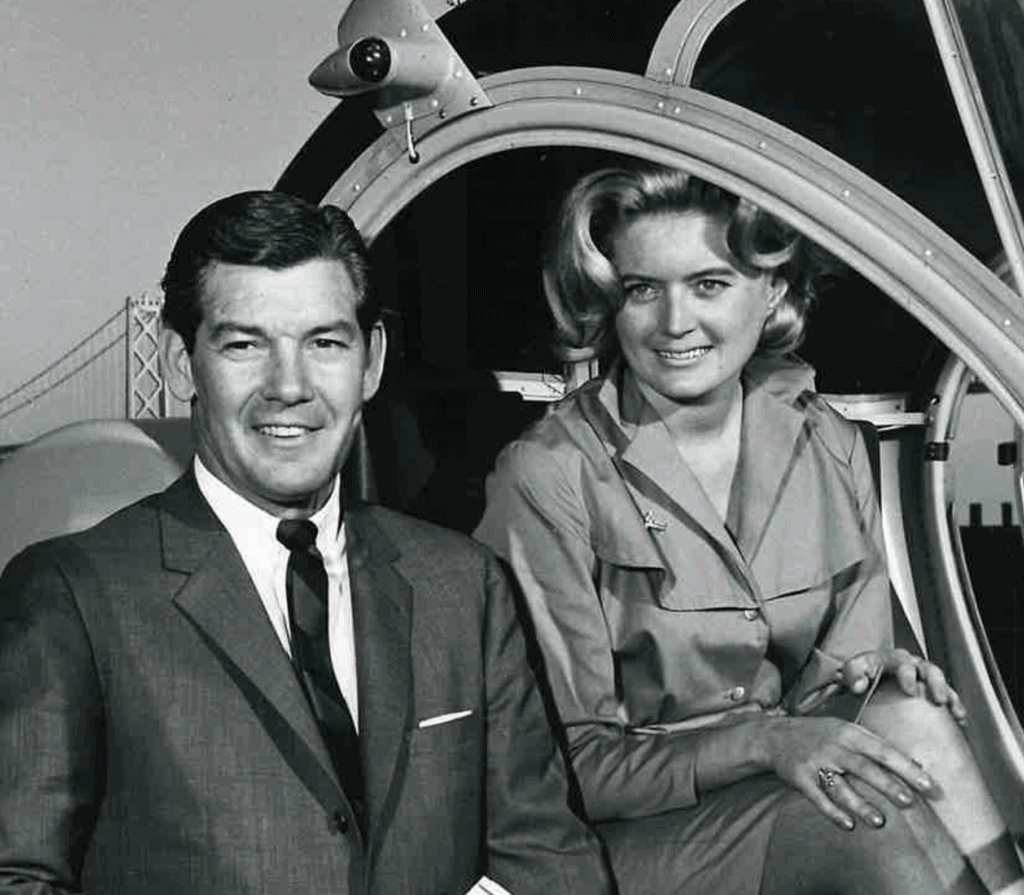
At this point, Bayer had a private staff–Carl Perry and Rosemary Weidinger–plus an extensive company staff. A Hughes Helicopter chart shows that, by October of 1962, Bayer had 40 people working under him, including the Contracts and Operations department.
1962-lr-Hughes-Helicopter-Organizational-ChartsIn short, Bayer had become a one-man force of nature within an aircraft company that, beyond Bayer and the engineers, had no sense of direction, with portions of management clueless about the product under development. Bayer radiated drive, confidence and ambition. This was working and he could see the brass ring up ahead–a military contract for a revolutionary, small, nimble helicopter.
Bayer was setting up marketing of the 269 around the world, close to obtaining an Army contract for the 269 as a trainer and, seemingly, well on the way to obtaining the Army’s LOH contract with the Army. From his perspective, the weak link lay within Hughes Helicopter and his boss, Rea Hopper. Bayer saw Hopper as “retirement minded”–lacking all ambition and management skill. During fall of ’62, conflict between the two men began to heat up.
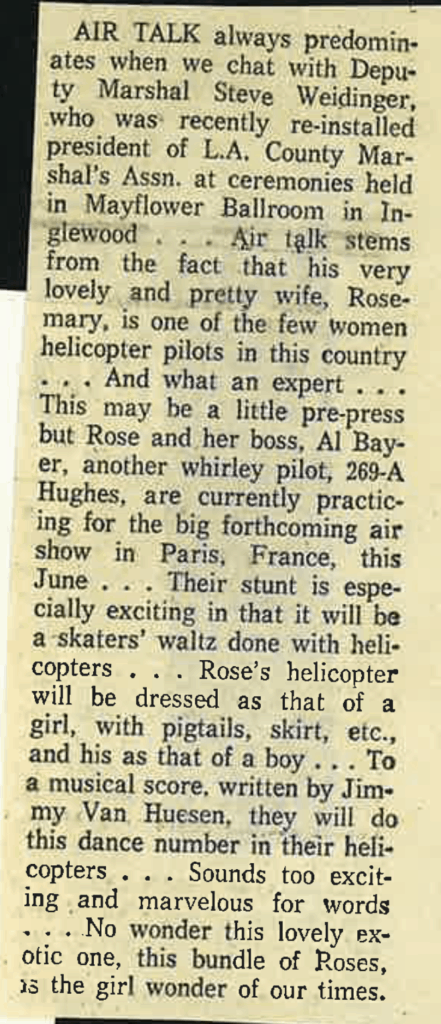
In February, probably when Weidinger gave a local interview near the Culver plant again high-lighting her role as a woman helicopter pilot, an article appeared describing Bayer’s plan that, at the upcoming Paris Air Show, he and Weidinger to do a waltz with their helicopters to music by Jimmy Van Heusen. 431The Star News, Culver City, Helen Black article, Feb. 7, 1963 This article about the plan to waltz with two helicopters at the Paris Air Show was probably the last straw for Rea Hopper. How could he ask the Hughes oil people in Texas for money to fund this? The idea was not unique–the Army had created a team of square dancing helicopter that visited air shows during the 1950s. Bayer may have seem them when they had performed in 1959 at the World Congress of Flight. 432Fort Worth Star-Telegram (Fort Worth, Texas) 19 Apr 1959, Sun Page 60
However, for Hopper, the idea of funding Bayer and his secretary in Europe seems to have been the last straw.
Hopper saw Bayer’s ever increasing power in the company. Bayer’s style was too flamboyant. Bayer was not a team player. He was a one-man juggernaut.
In January of ’63, Bayer created the first financing program for civilian purchase of a helicopter, the 269, at $22,500–touted as half the cost of other craft. 433Independent Press-Telegram (Long Beach, California 13 Jan 1963, Sun Page 72 He also laid out overseas licensing in a detailed brochure, showing foreign companies how to build a manufacturing plant. That month, Bayer became chairman of the Aerospace Industries Association’s Vertical Lift Aircraft Council. 434Jan 31, 1963 p 39, Los Angeles Times.
On the surface, the last straw was the radio. in January, it appears that someone under Hopper restructured the pricing of the 269’s radio components without consulting Bayer’s Sales Dept. (The radios were terrible.) This resulted in a frustrated letter during February by one of Bayer’s people. Bayer got angry. At the top of his copy, Bayer pencilled: Impeding Sales file.
1963-lr-Feb.-Letter-re-269-radio-componentsWhile the radios were an issue, the more tangible issue for Bayer probably lay in authorization for travel to the Paris Air Show that summer. We can guess that Hopper balked at this and that Bayer could not imagine anything more stupid or destructive to his efforts than failing to go.
Frustrated by Hopper’s ongoing efforts to undermine his power, Bayer threatened to go around Hopper to the Hughes Board. In practical terms, this meant appealing to Frank William “Bill” Gay (September 11, 1920 – May 21, 2007). It was exactly the wrong time to do this. At that time, Gay was positioning himself as Howard Hughes’ “front man”–managing the increasingly secretive and ailing billionaire’s affairs. Meanwhile, Army Aviation forged ahead with the idea of tactical air mobility.

In the early 1960s, the United States Army began to explore alternative means for conducting future combat operations. One of the many ideas resulting from that effort was the concept of helicopter assault. To test this concept’s feasibility, the 11th Airborne Division was reactivated on 1 February 1963 and redesignated as the 11th Air Assault Division (Test).435https://en.wikipedia.org/wiki/11th_Airborne_Division_(United_States
Hopper threatened to fire Bayer if Bayer went around him, contacting those higher up. Bayer ignored the threat. Apparently counting on backing from Bill Gay if not Howard Hughes himself, Bayer contacted Gay. It didn’t go as he might have hoped. Gay told Howard Hughes. Howard’s secretary called Rea Hopper. About March 1, 1963, a couple days after the LOH had made its first flight, Rea Hopper fired Bayer. Hopper later commented: “Bayer finally made a power move without the power.” 436Hearing p. 180
Soon after, the Hughes LOH mades its first flight, a milestone that seems to have brought the ongoing tension between Bayer and Hopper to a head. It was almost as if Hopper had been biding his time–letting Bayer push forward while the LOH remained an idea–then firing Bayer when it appeared the forward path was secure. It did not prove secure–Hopper left the company open to a range of fumbles.
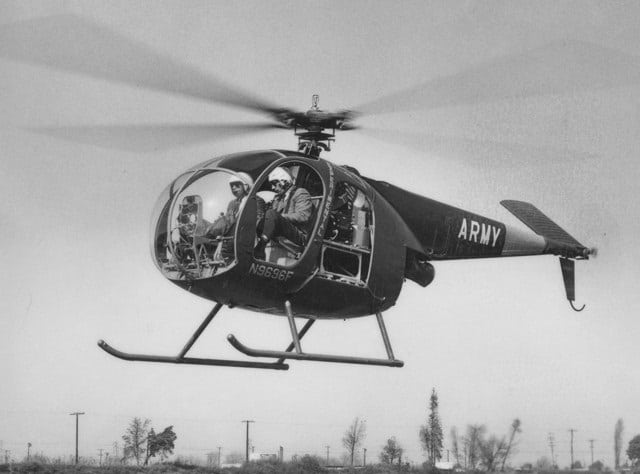
Rea seems to have felt that with the LOH in the air and Hughes Helicopter in the running to compete for the contract, Bayer could only meddle in what, Hopper may of thought, would now be merely conservative business decisions. The dramatic steps had been taken. The primary competitor to the LOH contract, the Hiller craft, made its first flight January 21. 438https://vertipedia.vtol.org/aircraft/getAircraft/aircraftID/411
“Power move” is an apt description of how Bayer worked. 439Porter p73 Bayer’s friends in Army Aviation seem to have instantly known that the hard forward push was not yet over–that a great deal of maneuvering remained to be done. In hindsight, Hopper had left Hughes Helicopter to flounder with manufacturing a product that, increasingly, would be central to an active war.
Within the progressive element of Army Aviation–the group that appears to have wanted the Hughes design—vocal opposition to Bayer’s firing proved strong and unequivocal. Bayer’s friends in Army aviation went to Hopper and asked for Bayer’s rehiring. In hindsight, this seems based both on friendship and on a sense that obtaining the Hughes design and creating an Air Calvary would continue to require partnership between the military and industry–a partnership based on relationships and a mostly unspoken understanding of the goal.
The Army Chief of Staff, General Eddleman, told Hopper to rehire Bayer and never say anything bad about him. Hopper heard that Eddleman described Bayer “my son.” 440According to Carmack, Hearing p483. Eddleman was so upset at the firing that he didn’t speak to Hopper for six months. Apparently, Rankin, von Kann, Vidal 441Hearing p486-487 Clifford and Trudeau also pressured Hopper to reinstate Bayer. 442Hearing p486-487 However, Hopper seems to have had little awareness of the intense effort to get the Hughes design into the bid context by the Army group and Bayer. 443Vidal was briefly asked about it. Hearings p. 384
The month after he was fired, April of 1963, my father took me on an auto tour of California’s Spanish missions. Later, he always remembered this trip as a wonderful father/son bonding. I remembered it as my father being very distracted and stressed.
THE RIGID ROTOR MAN REPLACES A PULSATING WILL TO SUCCEED – stuck with a blade design
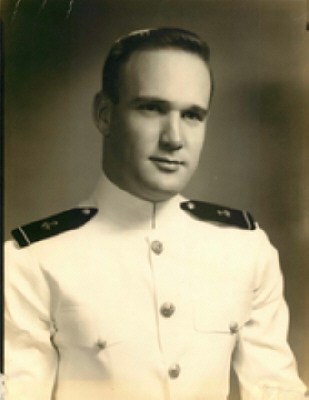
For years, Rea Hopper seems to have gone along with the imaginative dreams of the engineers and let Bayer sell those dreams to Army Aviation. However, Hopper felt himself losing control over the entire enterprise. Hopper’s view of the helicopter reflected the old norms–the solid helicopter that the Navy had wanted. When Bayer was gone, Hopper briefly attempted to achieve that direction–an effort bound to fail as the course for both the 269 and the LOH were already set.
After he fired Bayer, Rea Hopper hired a former Navy pilot, Jim Carmack, (1927-2019) as his replacement. 444Obituary. https://www.legacy.com/obituaries/pasadenastarnews/obituary.aspx?n=james-carmack&pid=193041899 The choice reflected Hopper’s unease with the light rotor design of the 269 and the LOH. Carmack had come from Lockheed where he had been dedicated to trying to sell the “rigid rotor.” 445Hearing p 486. For comparison of fully articulated rotors and rigid rotor systems see https://en.wikipedia.org/wiki/Helicopter_rotor The choice says a lot about Hopper’s concerns–his unease with the basic design elements of the 269 and, now, the LOH. The design struck some–including Carmack and probably Hopper–as frail and unreliable. The light rotors seemed a definite drawback. And, mirroring the zip of these light rotors in light helicopters, Bayer’s approach lack weighty substance and was based, instead, on flair, style, glamour, booze and golfing. They did not appreciate the trust now built into his relationship with the Army. They did not like the product itself.
Carmack noted that the 269 dealerships liked the light rotor blade and so, begrudgingly, he told his people to emphasize that this asset had carried over onto the LOH. 446Hearing p491 Carmack had no choice but to see civilian operational acceptance of the 269’s light blades as ultimately helpful with military acceptance of the LOH. 447Hearing p. 490 However, he felt “stuck” with the blade design.
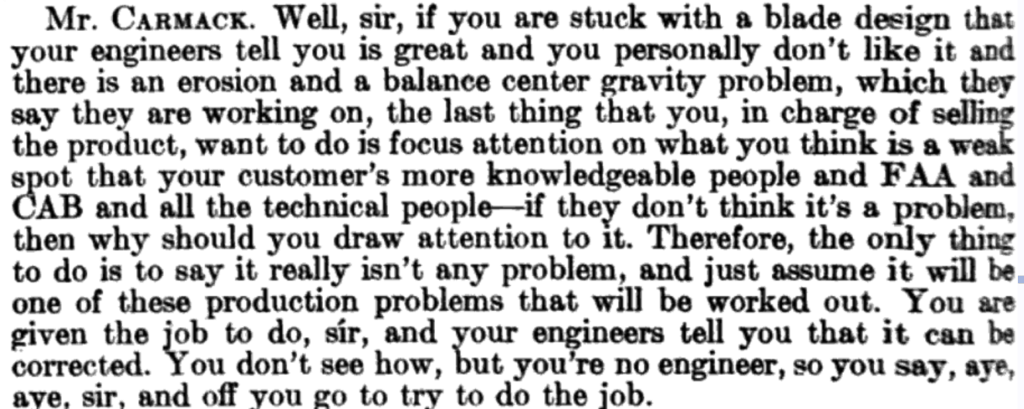
Hopper and Carmack felt Bayer was running a one man “lobbyist” operation. Hopper felt Carmack represented a “clean slate”, that his job would be to build a real marketing organization–not one based around a single individual. He and Carmack felt that many in the Army disliked Bayer. 448Hearing. https://play.google.com/books/reader?id=slTJZOBdzFYC&hl=en&pg=GBS.PA482 p. 431
Bayer’s friends in Army Aviation pressured Hopper to rehire Bayer. And, Carmack quickly gained enemies within the progressive element of Army Aviation–particularly Col. Alexander Rankin. 449Hearing p487 Carmack felt his job was being threatened. Sounding defensive, apparently trying reinforce Hopper’s decision, Carmack advised Hopper that Bayer had run a “lousy, inept operation.” 450According to Carmack Hearing p483.
Bayer saw his approach as having been the right approach. A note and documents sent by Bayer to Gay on Nov. 15, 1963, contained parts of his two page essay on his sales philosophy. It is revealing. It shows some self-awareness. Sounding a bit like Napoleon Hill or Norman Vincent Peele, he wrote that: No organization can achieve greatness without a vigorous leader who is driven onward by his own pulsating will to succeed.
1968-AL-lr-ESSAY-ON-COMPANY-SURVIVALTHE MORMON TAKES OVER – guarding the Hughes reputation
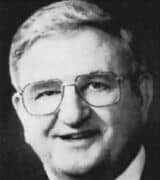
For a time, Bayer had a hard time accepting that Bill Gay or Howard Hughes could have supported the firing. Though, for the next two years, Bayer would appeal to Gay for reinstatement. Eventually, he came to realize that Bill Gay at least supported the firing. Hopper’s agenda seems clear. Gay’s agenda was more hidden.
During the spring of ’63, Gay was at a critical moment in his effort to take control of the Howard Hughes empire. It wasn’t clear to Bayer just who was in charge or who had the now reclusive Howard Hughes’ ear. 451Hearing p.117 Howard and Rea Hopper went back a long way. However, looking at the events and the bigger picture, one comes back to Bill Gay and the “Mormon mafia.”
What seems to have settled the matter for Gay, causing him back if not actually initiate Bayer’s firing, was not Bayer’s style or power but his visibility. The contract for the LOH was fraught with inside manipulation, Army Aviation’s struggle to overthrow the yoke of Navy control at all costs and the unhappiness and outcry on the part of Stanley Hiller were setting the stage for more unwanted controversy around Howard Hughes at a time when Bill Gay was trying the quash any bad press. Bill Gay was building a Mormon contingent around the billionaire–isolating him from the public. 452http://www.utlm.org/newsletters/pdfnewsletters/38saltlakecitymessenger.pdf
Howard Hughes had a long history of confrontation with the government over contracts and his aircraft business. Gay was creating a button-down corporation. In February of ’63, Gay was working to keep Howard Hughes out of court in a legal dispute over his influence in Trans World Airlines. In April of ’63, immediately after Bayer’s firing, Gay became Executive Committee Chairman of Hughes Dynamics–a computer firm created by Gay within Hughes Tool Co. without the knowledge off Howard Hughes. 453https://en.wikipedia.org/wiki/Hughes_Dynamics In March, when Bayer was fired, presumably Gay was consolidating his position by showing his ability to protect the billionaire and was in the midst of taking actions without the billionaire’s knowledge.
For Hopper and Gay, the common ground in the firing lay in Bayer’s style. Bayer described his approach to society and relationships could be described as, “European.” 454He said this to me. His 1962 trip to Europe and, that same year, his conversations in Palm Spring with Sinatra may have played a role in this. Bayer’s politics were not anti-establishment or particularly liberal, however, as part of his “European” aspirations, his view of booze and parties as a means to building relationships could seem bohemian to a religious conservative. Bayer’s methods for building relationships worked with the engineers and with the progressive Army Aviation group. However, with this reliance on booze, parties and relationship building, Bayer may have rankled a fundamentally conservative trend that increasingly surrounded Howard Hughes–the Mormon influence. A Mormon, Bill Gay was the center and builder of that Mormon influence–the so-called “Mormon Mafia”– around Howard Hughes. 455https://en.wikipedia.org/wiki/Frank_William_Gay
Gay was not only moving to insulate Howard from controversy but working to consolidate his own control over the “Mormon mafia” with which he was increasingly surrounded and controlled the ailing, paranoid billionaire. 456http://www.utlm.org/newsletters/pdfnewsletters/38saltlakecitymessenger.pdf Bayer’s style and the way in which he had pushed Hughes Helicopter forward in the LOH contract could reasonably be said to put Hughes Tool Co. again infront of the public with controversy. In fact, that’s exactly what soon happened. Gay’s primary reason for firing Bayer probably lay, ironically, in the extent to which Bayer emulated Howard Hughes.
Within a couple years, as Gay and Hopper fumbled negotiations with the Army, firing Bayer cost Howard Hughes millions of dollars.
BE IT FOUL OR FAIR – a song
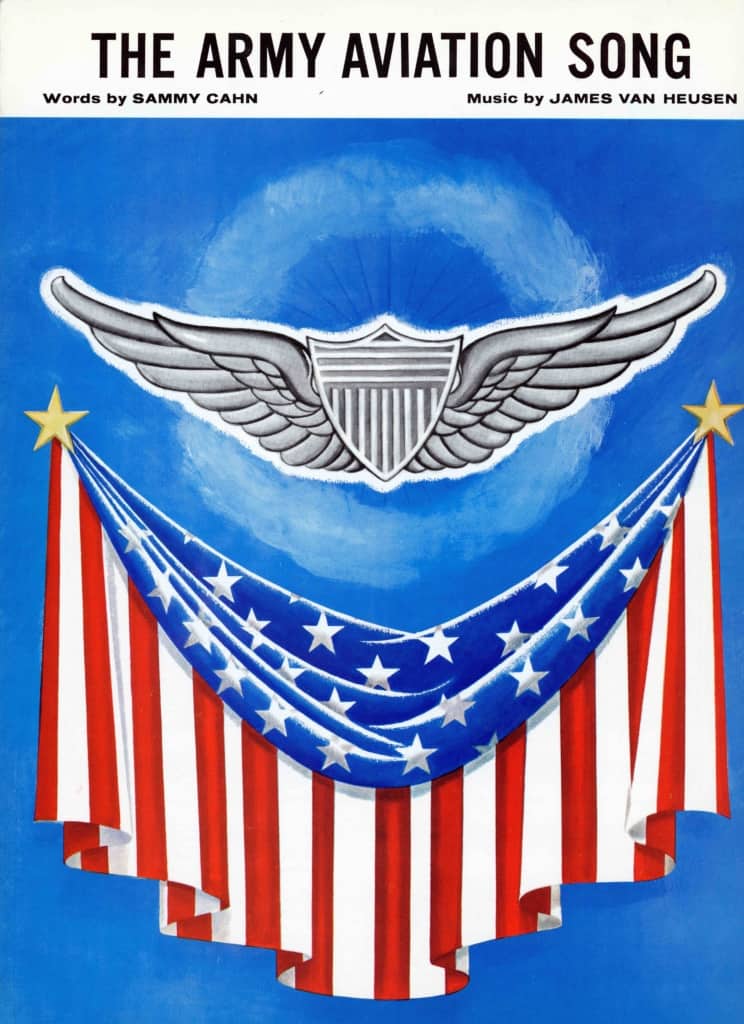
During summer of 1963 Bayer produced a new Army Aviation song written by Van Heusen and Sammy Cahn. This seems to have come in lieu of the waltz Van Heusen planned to write for the helicopter waltz in Paris. He arranged for it to be recorded by Mitch Miller. 457Description of song from meeting program. The publicity photograph included Clifton von Kann and his wife, becoming the final realization of the friendship between Bayer and von Kann that assisted the success of the Hughes LOH effort.
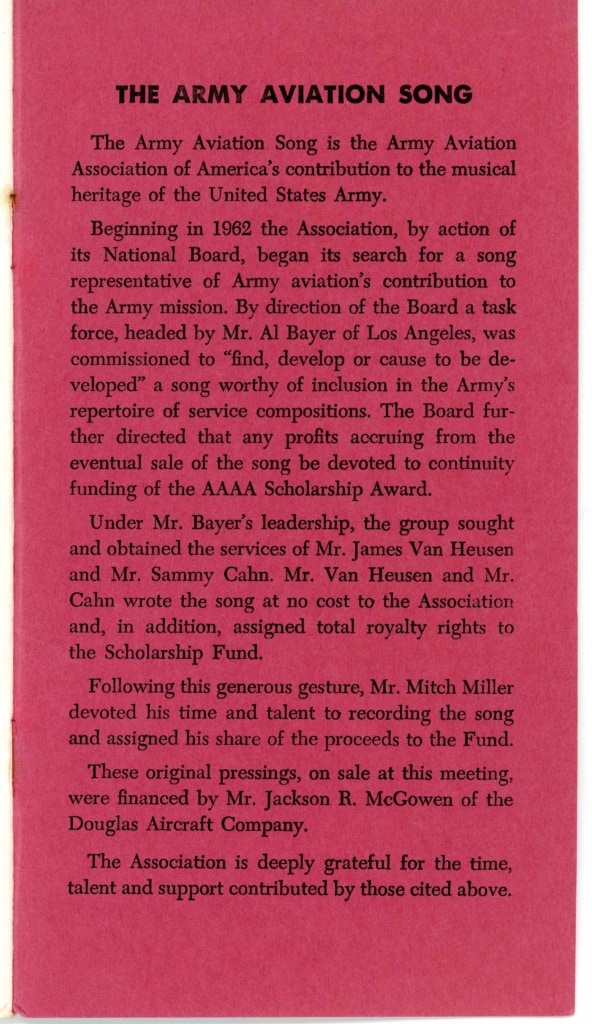
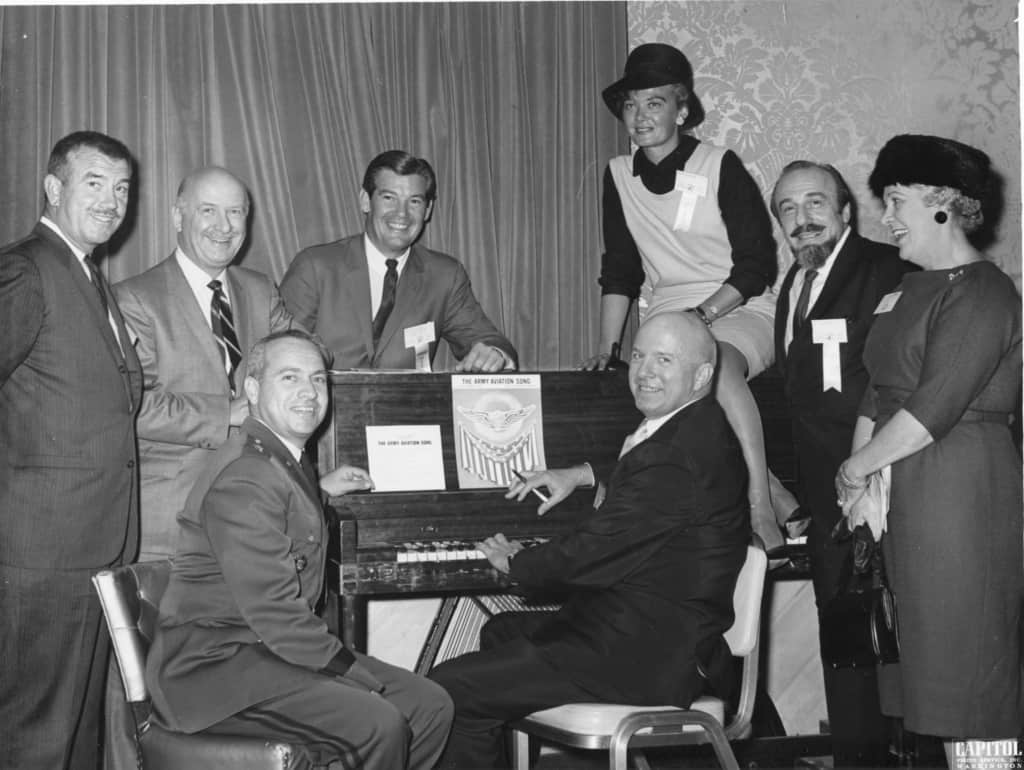
Audio: Click for “The Army Aviation Song”, as produced by Bayer, c.1964
VISIBLY SHAKEN – Stanley Hiller talks to Bayer
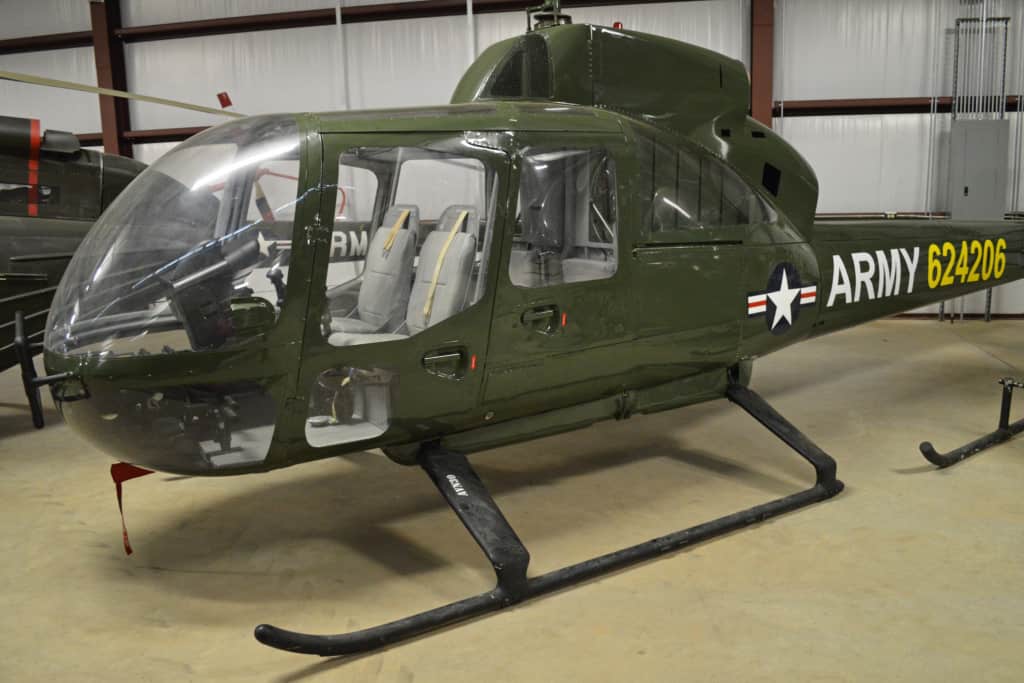
As later described by Bayer, that June of ’63, after being fired, he received a call from Stanley Hiller offering him employment. He held a first meeting with Hiller during August and again in January of ’64. It was agreed it would be inappropriate for him to work for Hiller considering the LOH competition. 458Bayer “Analysis” p. 17 Bayer met with Bill Gay on September 10 of ’63. He was hoping to be rehired or, at the least, become a consultant to Hughes Helicopter. During summer of 1964, Bayer visited the White House, presumably to take to General Clifton–still serving at the President’s military aide–in hopes of help with his effort at returning to Hughes Helicopter. 459I was with him at the White House that summer. I waited outside the Oval Office.
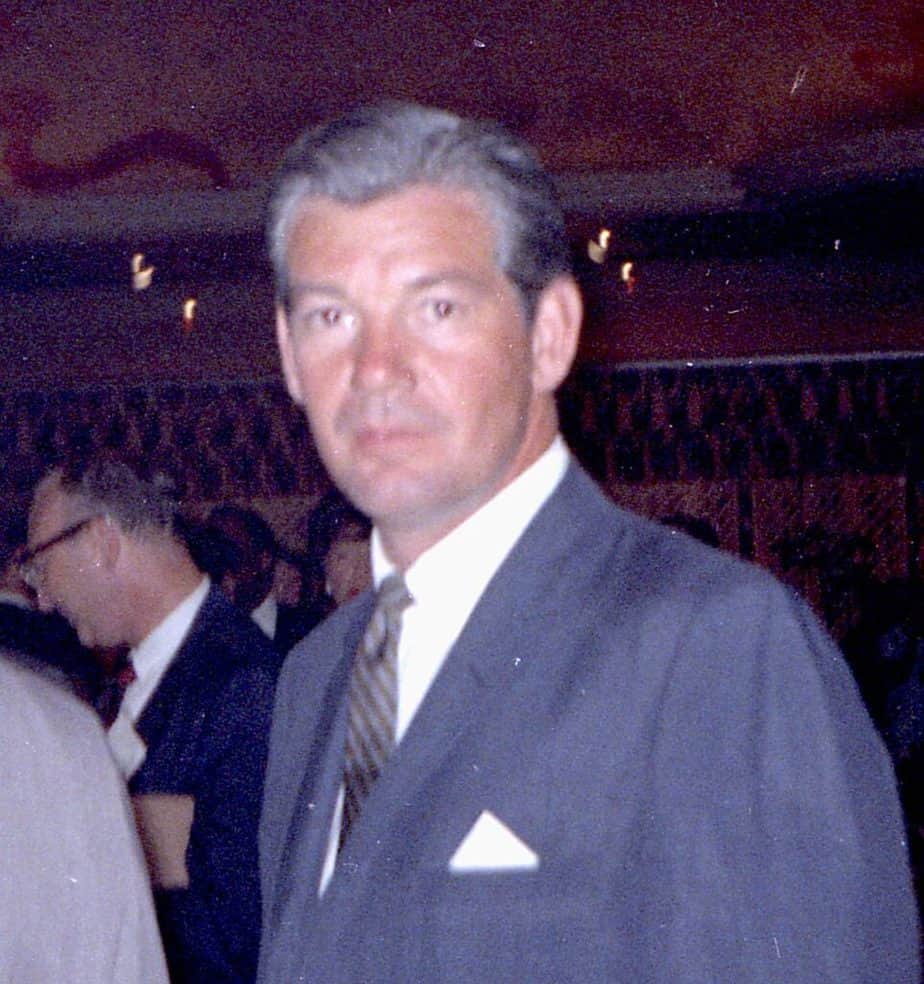
Finally, during fall of 1964, Bayer met with Stanley Hiller. On Oct. 4, ’64, The Army convened the Dodge Board to select a competition winner and award a production contract. 461Porter p. 76 On Oct. 13, ’64 the Board eliminated Bell, keeping Hughes and Hiller in the running and making price the ultimate criteria for the final decision. On Oct. 14, Bayer met in Washington with von Kann, Rankin and Vidal. They probably informed him that the Army had just decided, that month, that the contract for the LOH would be awarded on the basis of cost. 462Decided that month. Fitt p14 That being said, he’d already been told this during 1961. During this trip, Bayer was accompanied by his wife and, for a time, they stayed at von Kann’s home at Fort Rucker, Alabama.
On October 15, ’64, Bayer met with Stanley Hiller. Hiller left the meeting, “visibly shaken.” 463Hearing, Rockwell testimony p.167 It was later alleged that, at that meeting, Bayer told Hiller that the Hughes Company had, through inside sources, obtained the Hiller cost data–its bid. 464Bayer Analysis p25. Bayer later told the House Appropriations Committee that he had had no specific information on the bid. They asked the same question over and over. At one point he said that he had “no specific, direct or accurate information.” This sounds a bit like a dodge and may imply that he had general information through Army Aviation–an indication from his friends in the Army that the Hiller bid was low.
Later, as this concern continued to be raised, Bayer repeatedly denied having inside information on the Hiller bid–information that would have helped Hughes bid low. More likely, he did have sufficient inside information but only alluded to it with Stanley Hiller–enough to frighten Hiller but not enough to divulge information beyond what others knew. It seems quite likely that Bayer told Stanley Hiller enough to instill in him a lasting fear for the future of Hiller Helicopters. Hiller seems to have been so rattled that he made trouble for Bayer and Hughes Helicopter for years to come.
His fear seems justified. With Edleman and von Kann leading the way, the Army seems to have been wedded to the Hughes machine. The Hiller company would ultimately close as a result of these events. Hiller seems to have come away from the October ’64 meeting realizing that, separate from any specifics, Bayer was very, very close to top people in Army Aviation.
Bayer seems to have been looking for a new helicopter job and, for the moment, entertaining revenge at Hughes Helicopter. He was implicitly trading on both his connections with the Army and his past with Hughes Helicopter. All of the subsequent focus on whether he had or gave Stanley Hiller specific information misses the obvious intent of the meeting and the accuracy of Hiller’s impression. On Oct. 16, Stanley Hiller sent Bayer an employment contract. On Oct. 22, Bayer bought stock in Hiller-Fairchild. Apparently, briefly, Bayer considered going to work for Hiller and believed he could position the Hiller machine to win the contract. 465P. 182 Hearing Report.
This was not one of my father’s finer moments. Here he was consorting with the opposing camp and seek revenge against Hughes. I can imagine myself asking him, “didn’t it hurt for Hopper to fire you like that, just when you had achieved this long-standing dream of a fast, light helicopter?” He would play the bon-vivant for most people but not to me. I imagine that he would have paused, looked me in the eye and glumly stated, “what could I do? I needed to survive.”
Bill Gay probably got wind of the stock purchase and the conversation with Stanley Hiller. He would not have wanted Bayer taking up with a rival at this point. Seemingly in response to the threat, he decided that he needed Bayer under contract–to send Bayer money to keep him away from Stanley Hiller, at least for a while. It worked. On Nov. 22 Bayer wrote Gay that he had decided against working for Hiller. 466Letter Bayer to Gay, Nov. 22 They finalized payment amounts for his “consultation.” 467Hearing p 232 Gay soon had to remind Bayer that he was hired to do nothing. Bayer was so caught up in his role as an influencer that he began to promote the Hughes machine as a consultant.
Bayer was already trying to straighten Gay out–apparently believing that if he gave Gay some insight into his views everything would turn around. Documents sent by Bayer to Gay on Nov. 15, 1963, contain parts of a two page essay on his sales philosophy. He wrote that: No organization can achieve greatness without a vigorous leader who is driven onward by his own pulsating will to succeed. 468Full essay shown here at link https://www.nevadamusic.com/wp-content/uploads/2019/12/1968-AL-ESSAY-ON-COMPANY-SURVIVAL.pdf Without apology, Bayer told Hiller and Gay that the contract could only be won by bidding low. Boyer’s 1961 memo had made this clear to Bayer–years before this. Bayer was simply being honest–the Army had told him from the beginning that price could well determine the winning bid, all other things being close. They long stuck to that idea. Bayer’s effort to educate Gay came a year before the Army formally announced that, given near parity between the quality of the Hughes and Hiller helicopters, the contract would be awarded based on price.
Bayer wrote: In short, the organization must learn to think of itself not as in the business of producing goods or services but as buying customers…. Hiller has probably heard Bayer say the same thing and, unable to hire Bayer, began to complain loudly–first to the Army and then to Congress. Bayer’s essay statement about buying customers was exactly what later lead the Committee on Armed Services to investigate. As the Chairman Porter Hardy wrote: ….allegations and rumors of improprieties or worse had become widespread before the contract was awarded–allegations that the Hughes Tool Company had “bought” the contract by putting in a bid which could only result in a substantial loss to the company but which would establish the company as a sole source for the LOH and, thus put it in the position to recoup initial losses through subsequent follow-on procurement–allegations that someone in the Department of the Army in violation of established security procedures, had “leaked” a competitor’s cost data to the Hughes Tool Company, thus giving is an unfair advantage in the negotiations–allegations of persona; misconduct which could have influenced the outcome off this procurement. 469Porter Hardy, opening statement, p. 3
1967-lr-PorterHardy-opening-statementRea Hopper may have suspected that Bayer had inside knowledge about Hiller, information gained from his friends in the Army. Though would have been more an issue for Bill Gay than for Hopper. Hopper later said, I am sure they liked him and he liked them, and because of what we were able to produce through them certain information that was favorable to us.
Meanwhile, as he considered Bayer’s apparent knowledge of the Hiller bid as revealed during their October conversation, Stanley Hiller asked his own friends in the Army to investigate the procurement process–to look at back door collusion between Bayer and the progressive group in Army Aviation.
Into February, Bayer peppered Bill Gay with memos complaining about Hiller and warning that without his services the Hughes contracts were in danger. In November, Bayer set out to provide “consultant” services to Hughes Tool Co. This lasted until February 5 of ’64. 470Bayer “Analysis” p17 In Bayer’s eyes, the contract instructed him to help Hughes obtain the military contract for the 269A as a training craft. Contract fees to Bayer from Hughes Tool Co. came directly from Bill Gay, going around Hopper–again, supporting the idea that Gay, not Hopper, was on control of the firing and its potential ramifications.
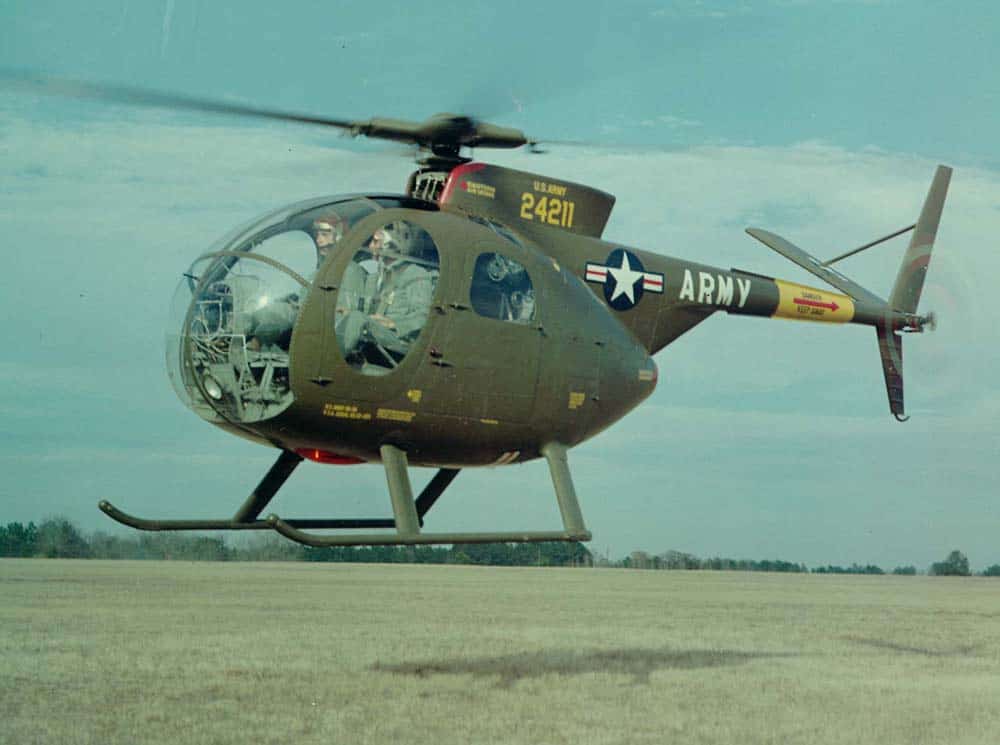
Bill Gay’s understanding of the September meeting seems to have been of a much more limited role for Bayer and his contract than what Bayer thought he had. Essentially, it appears Hughes Tool Co. would pay Bayer not to get involved in other helicopter work, potentially threatening their bid effort on the LOH at a critical time. Gay stated that that Bayer was told not to represent Hughes Tool Co. or be working for it in any manner. 471Hearing p 237-240 Bayer tried to reassure Gay that he was not representing Hughes, however his memos suggest he remained consumed with concern for the LOH contract and picked up where he had left off in lobbying the Army.
The contract with Hughes Helicopter kept Bayer on the payroll while the military began evaluations of the Hughes and Hiller LOH machines. The testing went from January to June of ’64. Aviation Daily 472May 13, 1965 P.4 criticized the Army for maintaining high security around the flight tests. This leant to suspicions by Stanley Hiller. With Bayer talking to both Hiller and Hughes the concerns on everyone’s part seem justified. Bill Gay could worry that Bayer was talking to Stanley Hiller. Stanley Hiller could worry that Bayer was talking to Hughes Helicopter and to the Army. The Army could worry that all this drama would get in the way of the craft they already knew they wanted.
Into the beginning of 1965, apparently both Gay and Bayer thought there might be reconciliation for Bayer and a return to Hughes employment, if only Hopper would agree. 473Hearing p180 In this, Bayer sounded more hopeful than did Gay who may have simply been biding his time.
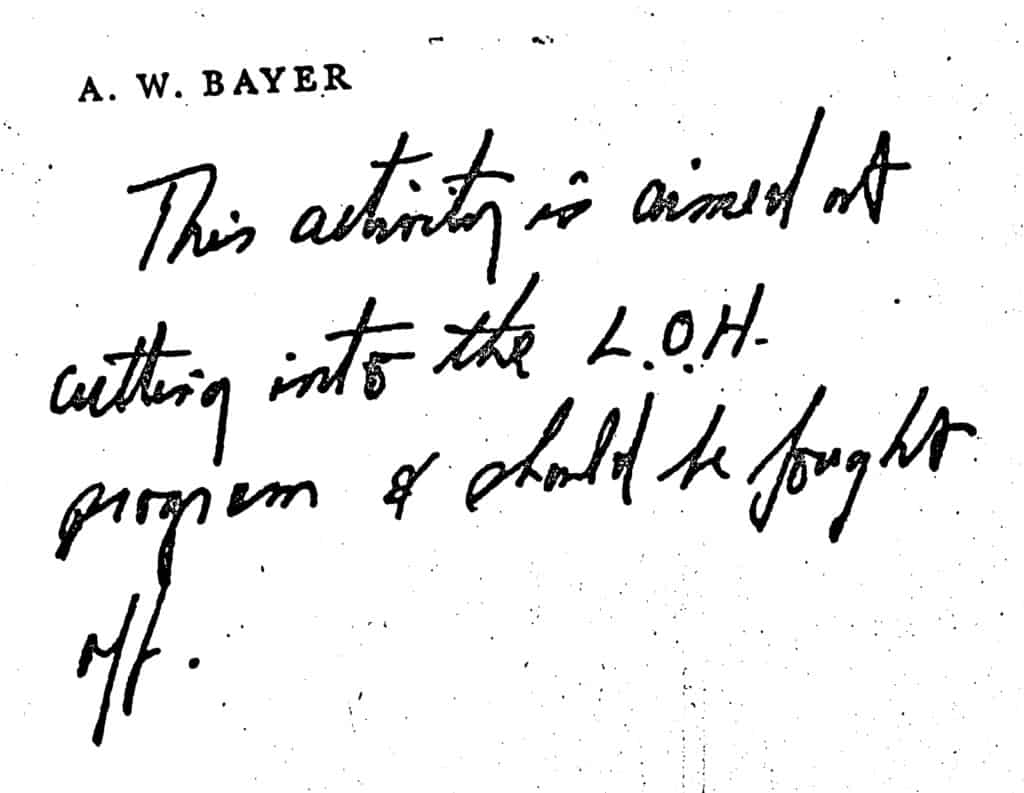
Bayer peppered Gay with hand written memos attached to Aviation Daily articles–pointing out how important he was to the Hughes contracts, the current peril to those contracts and how Hopper was inept. Letters and memos to Gay. In these memos, Bayer barely concealed his hurt over his firing. His memos seem torn between trying to prove his own worth and genuine concern for the LOH contract.
Despite his recent purchase of Hiller-Fairchild stock, on Oct. 31 Bayer wrote Gay that he had met with Hopper in Washington and tried to mend fences. He stated that he had tried to convince Hopper by assuring him that he could consult for Hughes “without compromising his (Hopper’s) management position” 474Oct. 31 1964 Letter Bayer to Gay He told Gay he was “holding people at arms length” with regard to working for another helicopter company–an oblique reference to his conversation with Stanley Hiller.
Bayer also wrote Gay that the LOH contract would be awarded in part based on management competence–again implying that his firing left an incompetent management in place: Rea Hopper. Given the efforts by the military directed at Gay to have Bayer rehired, this statement seems to mirror reactions by his friends in the Army Aviation “group.”
1963-NOV-15-AL-LETTER-to-Bill-Gay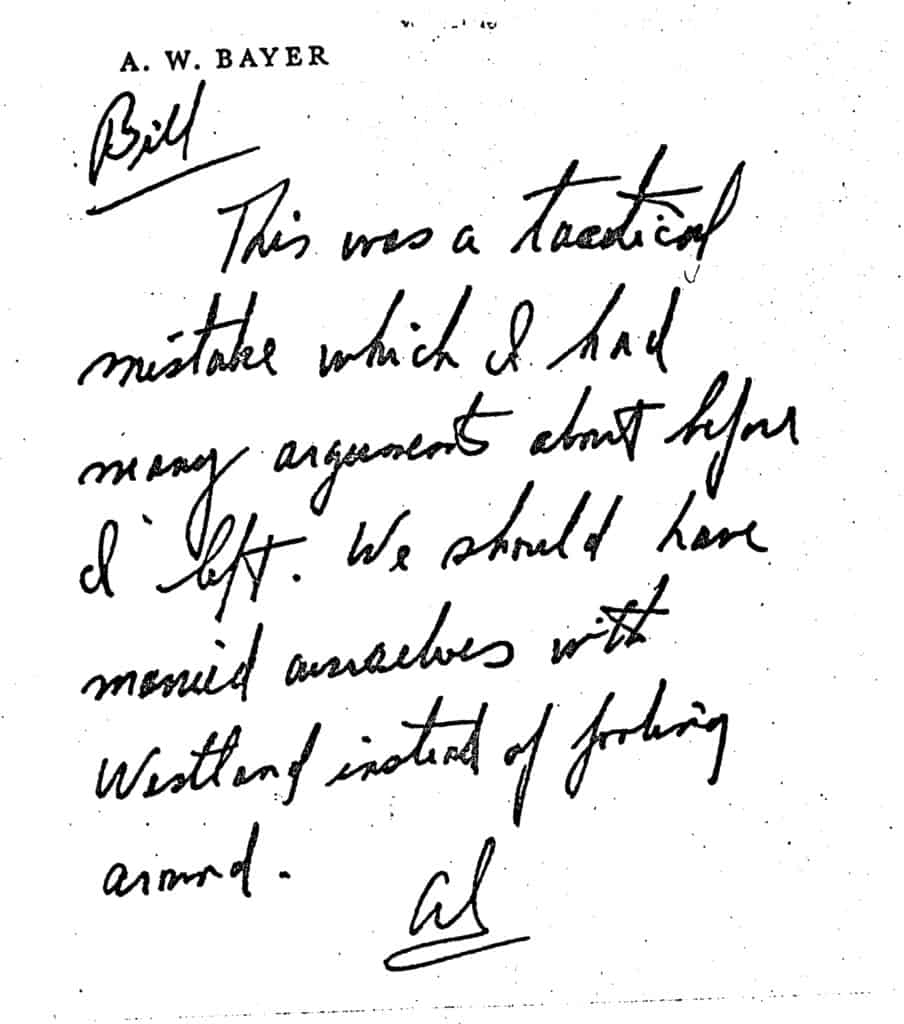
By the end of February ’64, Bayer’s relationship with Hughes Tool Co. had fully ended. An Army investigation was in full swing–the first of three investigations of Bayer and the contract that resulted, most tangibly, in delaying a focus on the manufacturing abilities of Hughes Helicopter. In March of ’64, Bayer wrote Bill Gay and bitterly imparted a piece of his mind:
I joined the Aircraft Division of the Hughes Tool Company in July of 1956 and found a deplorable set of circumstances. These were: a very nebulous product line, a decadent approach to the development of a product line, an unknowledgeable approach to the development of the product line, an unknowledgeable approach to marketing a very relaxed, retirement minded management group, and steadily declining financial position. 475Garfein Power Point
Meanwhile, after Bayer turned down his offer of employment, Stanley Hiller worried that Hughes Helicopter possessed inside information on his company’s bid. And, probably based on Bayer’s aura of confidence, he worried that Bayer remained behind the Hughes Helicopter effort to steal the contract by hook or crook. He complained to the Army. He alleged that Bayer had told him during October that Hughes Tool Co. possessed inside (from the Army) knowledge on Hiller cost data. The Army launched an investigation.
THE COOL HELICOPTER – an iconic photograph
By spring of 1964, Bayer no longer had any business ties to Hughes Helicopter. However, by this time, the 269 and LOH had assumed lives of their own. The purest realization of the cool, zippy, sports car image in a helicopter–of a personal aircraft–came as a result of Bayer giving Frank Sinatra a ride during 1962.
During December of ’64, Bayer helped song writer Jimmy Van Heusen buy a 269A. 476Bayer logbook, ferry flight Dec.30, 1964. See photo In 1964, the 269 became forever “cool” as Frank Sinatra stepped out of his 269 helicopter holding a drink as Yul Brynner snapped a soon-to-be famous photograph.
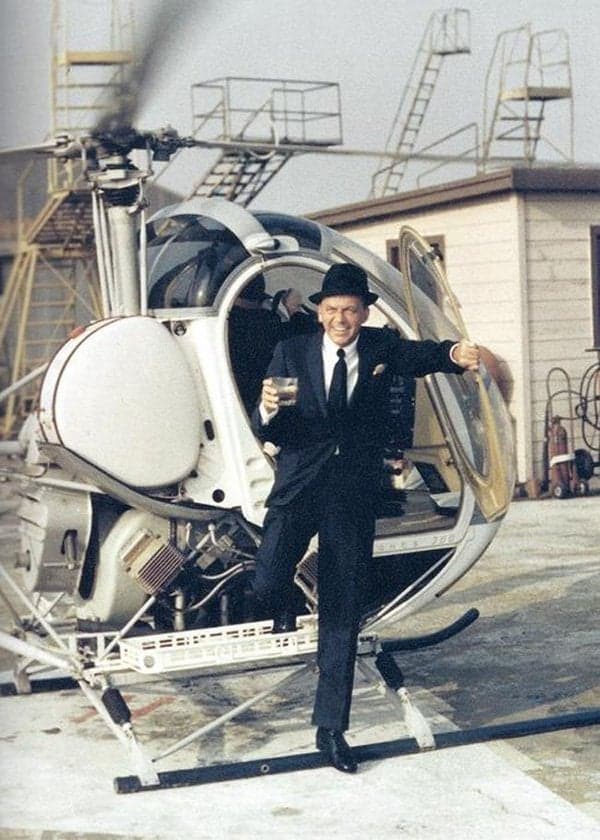
For years, Bayer laughed and told his favorite story about Sinatra: “One day I was singing at a party and Frank happened to be in the audience. Afterwards, he came up to me and said, ‘Al, you stick to your thing and let me stick to mine.'”
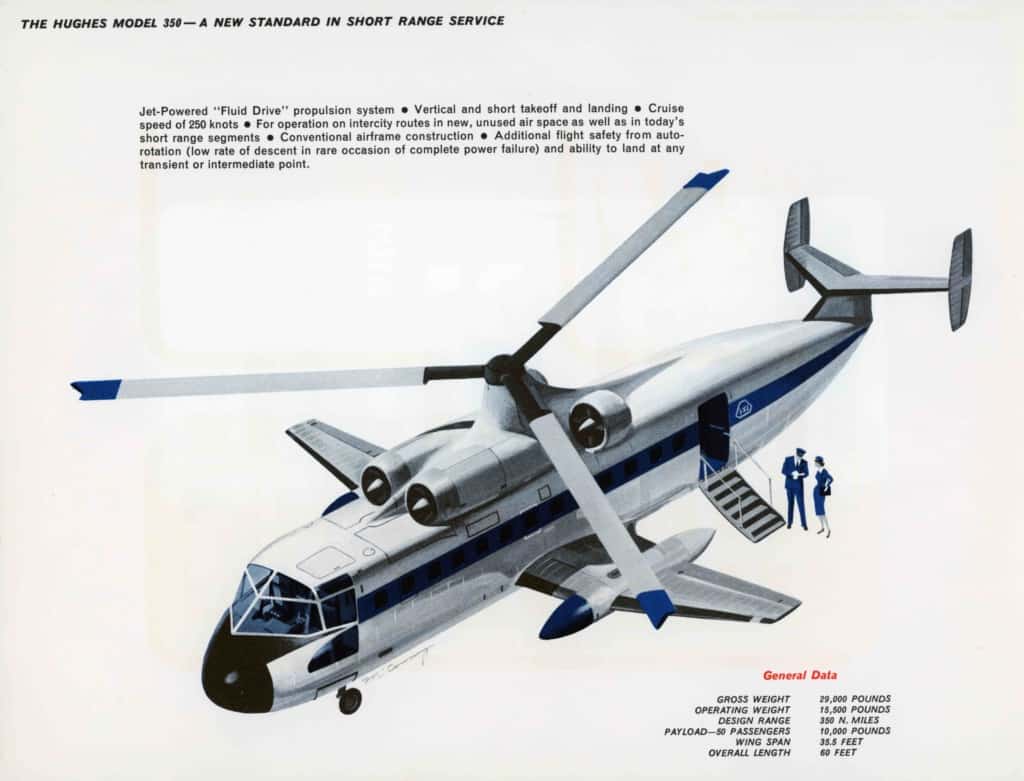
Bayer’s departure from Hughes helped bring an end to some of the company’s most futuristic efforts–extensions of what Bayer and the engineers had been thinking about since the days at Kellett. In an Oct. 28 1963 note to Bill Gay, Bayer referenced an Aviation Daily article of Oct. 28 that mentioned army testing of the Sikorsky S-64 in its effort to find a Flying Crane. 477Aviation Daily, Oct. 28 1963 He wrote Gay: The hot cycle should be the leading contender for this program. With “hot cycle”, he was referring to the Hughes H-350–a design for a jet powered helicopter with folding blades. Mal Harned had written an economic analysis of the hot cycle helicopter during January of ’63. 478An economic assessment of the hot cycle compound helicopter for VTOL transport (SAE) January 1, 1963 by Malcolm Harned Apparently, there was some concern over finding a market for the idea.
1962-Letter-from-Howze.-reduced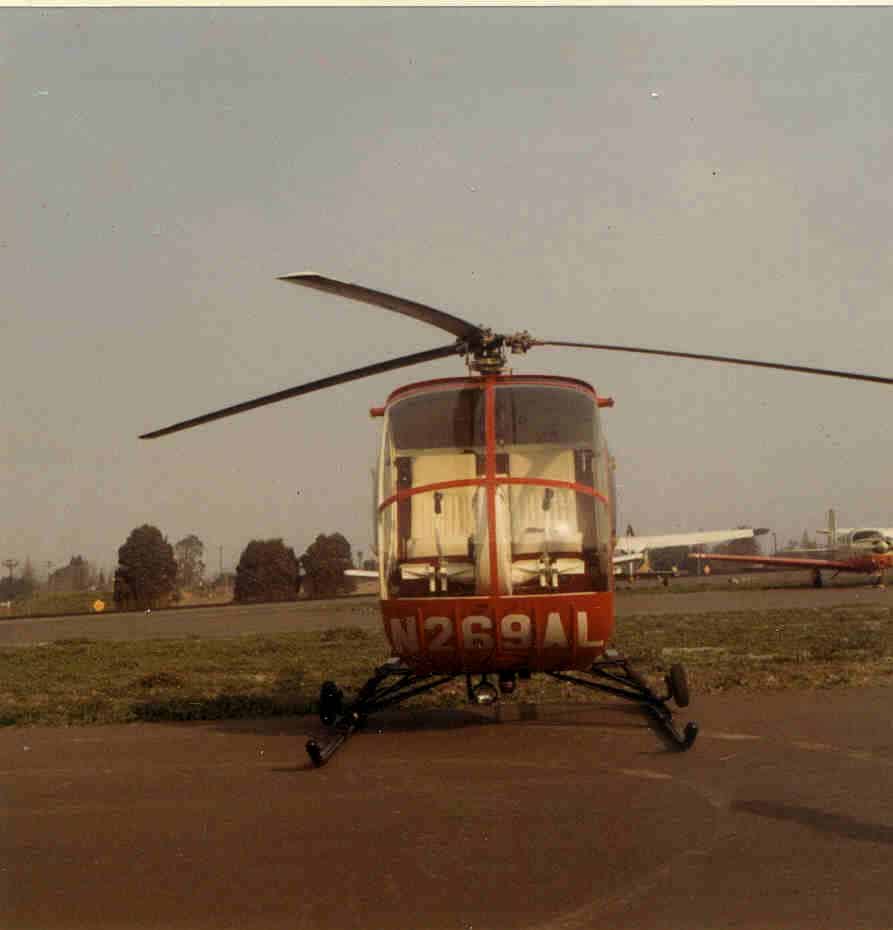
The Hughes 350 seems to have been yet another convertiplane effort by those who had once worked at GE and Kellett. In the Hughes design, the aircraft would operate as a helicopter–the blades providing lift–up to 100 knots and then the blades would fold and the craft would achieve 300 knots. 479Howard’s Whirlybirds: Howard Hughes’ Amazing Pioneering Helicopter Exploits By Donald J. Porter Chap 3. Though Hughes Tool continued to work on this project into the ’70s, Bayer’s departure removed energy behind the effort.
The song that brought Bayer and von Kann together with their wives marked the end of their joint efforts and, had it not been for the ongoing fears of Stanley Hiller, would have closed the story of Bayer and the Hughes Helicopter.
INVESTIGATING THE SALESMAN
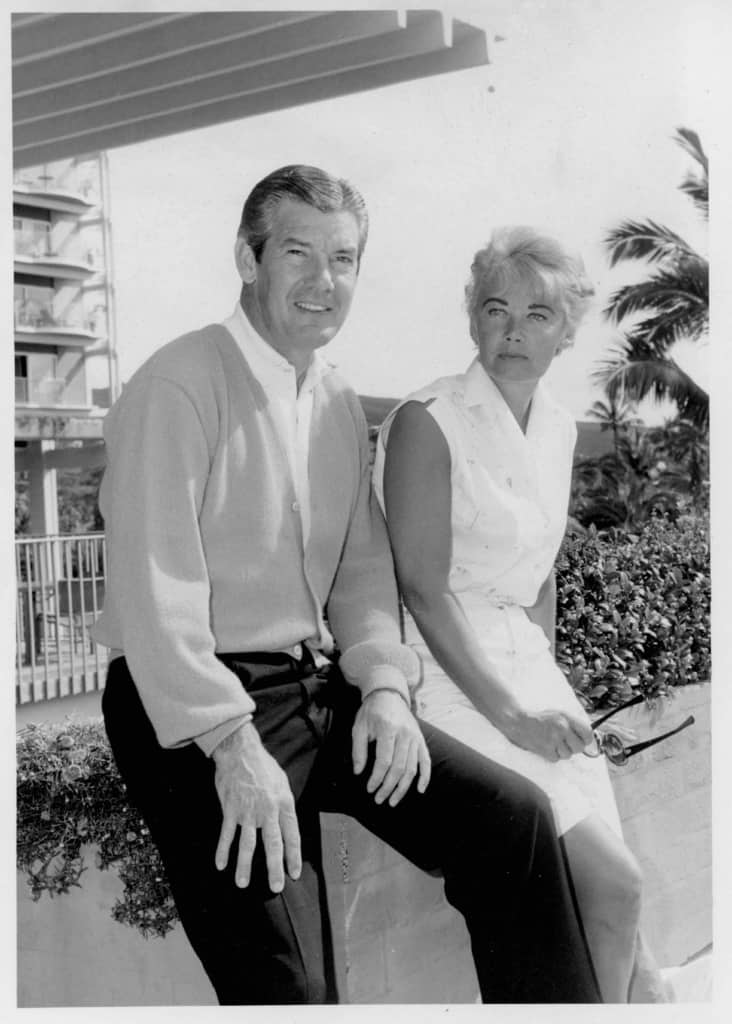
In Oct. of ’64, the Army decided that it would order 714 Light Observation Helicopters from the winning company. 480Fitt p15 However, the Army delayed a decision on the bid pending an investigation. 481Fitt p16 In the wake of his conversation with Bayer and probably having his own inside sources in the Army, Stanley Hiller was complaining about the bid process. He was certain that he was about to be underbid and that Hughes had inside information on the Hiller bid, information passed to Bayer by his friends in Army Aviation.
Stanley Hiller wanted an investigation of the LOH procurement process. In fact, he got three investigations.
The first was a four month Army investigation, including taped interviews. that began around December of ’64. The Army concluded that there had probably been an information leak however its source could not be determined and the report stated that a leaking of the bid information would have made no difference in the outcome. In February of ’65, the Army went ahead with technical proposals and then, in May, 482Fitt p16 each company was asked to bid on 714 aircraft–on the airframe less an engine–88 in ’65, 168 in ’66 and 458 in ’67 with an option to permit the Government to buy an additional 50%–or 357 more–at the same, initial bid price. The option was intended to encourage realistic pricing by each company. 483Fitt p17 However, it did not work out that way. The Hughes bid was completely unrealistic. Hiller bid $29,415 for each machine. Hughes bid $19,860 for each machine–a ridiculously low price. On May 24, Hughes confirmed its price and the contract was awarded to Hughes on May 26 of 1965. 484Fitt p18
Because, apparently, the progressives in Army Aviation wanted the Hughes design from the onset, the need for a low bid seems to have been a need by the progressives to argue internally, within the Army, for the Hughes design against those who wanted a more traditional approach–Robert McNamara’s memo notwithstanding.
Later, some would say that Howard Hughes made the decision to bid low on the LOH contract. Much more likely is that while Hopper and Gay did not want Bayer taking control of Hughes Helicopter through the sales department they nonetheless followed his advice to “buy” the contract. Howard Hughes was probably consulted on the bid by Bill Gay. 485As described by Carmack, Hearing p. 481-482 However, Howard Hughes had been pushed away from detailed decision making. The idea of bidding very low seems to have originated with Bayer. Gay seems to have kept to that plan with Hopper less than excited about the bid. Later, Hopper said: That is not the way people are supposed to price things, I don’t think. 486Porter p. 6. Hearing p. 320 This suggests he did not make the decision.
Making this low bid, Gay and Hopper seem to have unaware of the financial hole they had dug by allowing the Army to implement a 50% clause. This puts in question their overall competence. They weren’t reading the fine print. Apparently, as Bayer left, Hopper and Gay were simply not used to degree of detail to which they had to suddenly pay attention.
For their part, the Army seems to have been taken aback that Hughes Helicopter allowed the 50% clause. However, it was appear based on later events, the Army figured the price would be renegotiated in the future for reorders of the LOH, notwithstanding the 50% clause in the contract.
In short, ongoing mismanagement at Hughes Helicopter remained enormous. From ’57 into ’63, based on his previous decade of experiences and frustrations, Bayer had outpaced management, accomplishing so much with the 269 and then the LOH that, when they could longer stand the dynamism and visibility of success, management fired him. Then they fumbled miserably.
Poor Stanley Hiller. He designed a sturdy helicopter and found the rules changed under his feet as progressives in Army Aviation pushed through a revolution based on the capabilities that Bayer had shown them first in the Hughes 269. First they said they wanted reliability over speed…then the reversed these priorities. They said they wanted to achieve a certain weight…but then its lightness became an asset. If it looked as if the design criteria were being rewritten to fit the Hughes design, they probably were. For someone like Stanley Hiller who had worked in the mainstream of helicopter design during the 1950s, it looked like the Army was being lead astray by the salesman.
Indeed, Bayer rewrote the book on selling to the Army in ways that proved extremely effective on the one hand while frightening anyone with a traditionalist bent. After a decade of frustration, Bayer and the engineers at Hughes Helicopter with whom he had long worked pushed their into the hands of visionary Army men who, ultimately, made good use of them.
Now Bayer had left Hughes. Of had he? On May 24, 1965, the day before the Army announced award of the contract to Hughes, Bayer sold his Hiller-Fairchild stock. The obvious conclusion–later pointed out in Congress–is that Bayer knew from Army sources about the LOH competition results ahead of time.
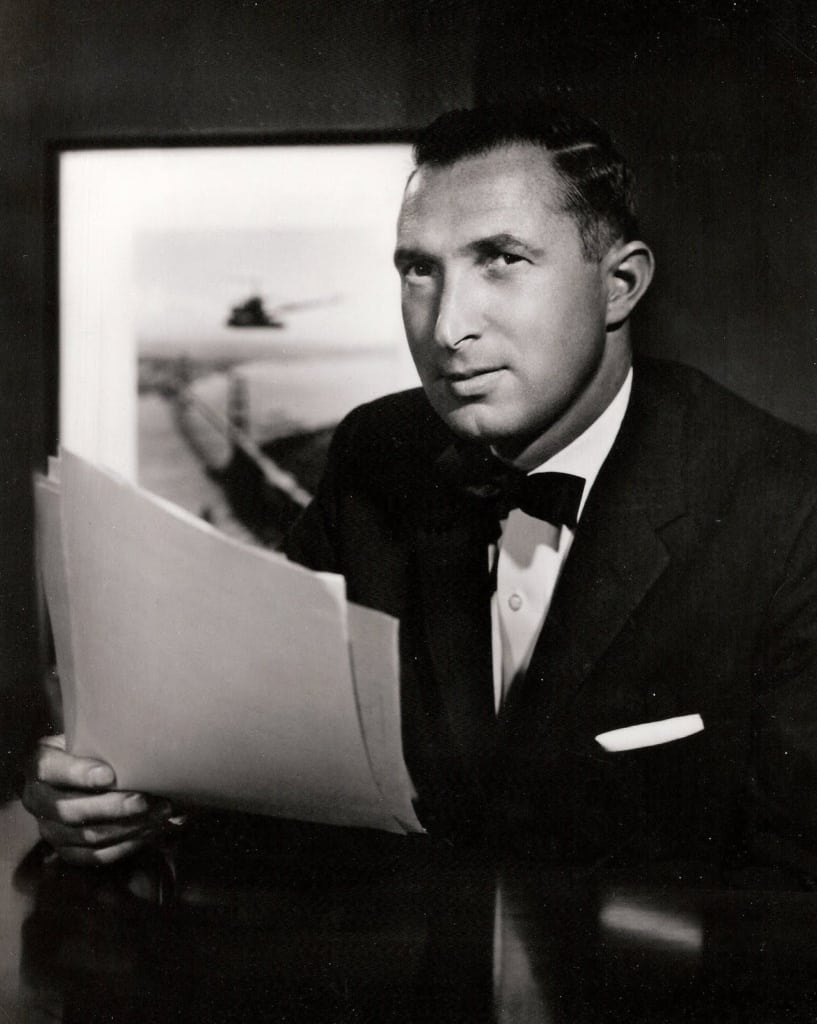
Apparently, Stanley Hiller also knew in advance from his own inside sources. On the same day that the Hughes contract was announced, May 25, a business hired by Stanley Hiller, Fidelifax, cut the lock and broke into Bayer’s office in El Segundo, California, at LAX. They stole a green briefcase that included Bayer’s documents on the LOH from ’62 and ’63. Hiller later explained to Congress that he wanted to know if Bayer was still employed by Hughes.
Stanley Hiller was watching his company get hung out to dry. He wanted to show that Hughes Helicopter had advance, inside information on Hiller’s bid amount and was convinced that Bayer remained the mastermind behind the downfall of Hiller’s design. The first implementation of the Air Calvary in Vietnam came that fall. See the history of Air Calvary.
Stanley Hiller now took his complaints to Congress. In June 1965 the Appropriations Committee investigation focused on Bayer’s October ’64 dinner with the military and the subsequent conversation between Bayer and Stanley Hiller. Bayer stated that at the dinner the participants pointedly avoided discussion of the LOH. His description of his conversation with Hiller was less clearcut. He stated he did not give Stanley Hiller the Hughes price or reveal that Hughes knew the Hiller price–at least not with certainty. Asked if he knew the Hiller bid amount, Bayer said, not with certainty but perhaps he knew it as hearsay–which is to say that he knew with some degree of deniability. Bayer told the Appropriations Committee that he talked in general terms to Standly Hiller and that he advocated his “philosophy” of low pricing. When questioned why Hiller had made allegations that Bayer had told him Hughes knew the Hiller bid, Bayer said Stanley Hiller “is frantic” and fears losing the program. That, of course, was obvious–inherent to Stanley Hiller’s complaints and concerns. Bayer probably had said enough to frighten Stanley Hiller. Whether he revealed detailed information may not matter. Bayer gave the impression that Stanley Hiller ought to hire him, hence Hiller had sent him a contract for employment–hoping to protect his bid. 487https://www.nevadamusic.com/wp-content/uploads/2019/12/1965-June-COMMITTEE-ON-APPROPRIATIONS-REPORT.pdf
Not long after the investigation by the Appropriation’s Committee, on June 16 of 1965, Bayer drafted a final letter to Hopper’s boss, Bill Gay. He described the events that lead to his firing. He may have felt he had cleared himself with the interview. He may have had one final hoped for reconciliation with Hughes Tool Co. It is marked “Draft”. Then it says, “Original”, with no date. It contains misspellings and, in places, an absence of punctuation. The letter is probably just a draft–never sent. The letter outlines how Bayer saw his own role and the recalcitrance of Rea Hopper. Bayer listed his contribution to the company’s positive results yet he did not talk about his relationship to the engineers or to the military. In the letter, Bayer sounds hurt.
1965-LR-Als-Letter-to-Bill-GayStanley Hiller’s worry had grounds. Still, it is hard to understand why he couldn’t see the hand-writing on the wall. As set in motion by Eddleman and von Kann, Robert McNamara’s push for air mobility played out in a monumental reorientation of the Army’s war time strategy–one that seemed to echo the potential of the Hughes LOH as seen by Army Aviation’s progressives. On June 15, 1965, Defense Secretary Robert McNamara approved the incorporation of an airmobile division into the Army force structure with the designation 1st Cavalry Division (Airmobile). 488https://www.historynet.com/air-cav-how-soldiers-in-the-sky-reshaped-combat-on-the-ground.htm With refinement in the strategy, von Kann was creating his helicopter calvary and the Hughes LOH would soon be in the lead.
The manufacturing problems at Hughes Helicopter that Bayer had noticed soon became more widely apparent. 489Bayer 1968 Analysis p. 3 The nation’s growing commitment to the Vietnam war put pressure on the Army to obtain additional aircraft. In September of ’65 the Army decided to exercise its 50% option for 121 additional aircraft–44 of these defined as half of the ’65 order. In December, talks began between the Army and Hughes with the Army expecting that the cost for the additional aircraft would be higher given that, during ’65, Hughes had yet to ramp up production. In other words, despite the contract, the Army full expected to renegotiate the price so that Hughes Helicopter was not operating at a huge loss. However, Hughes Helicopter would not agree to the Army’s increased price and talks collapsed in May of ’66. 490Fitt p19-20
Meanwhile, with the Vietnam War expanding, the Army’s need for helicopters grew. In Vietnam, the helicopter had become a central ingredient to “combat service support.” 491The Pentagon Papers, Gravel Edition Volume 4 Chapter 2, “U.S. Ground Strategy and Force Deployments, 1965-1968,” pp. 277-604. Boston: Beacon Press, 1971 … Continue reading In fall of ’65, McNamara visited Vietnam and felt things were not going well with the war. He was given a projection of the estimated need over the next three years. The plan for war in Vietnam had grown large and the helicopter was to play an important and perhaps central role–as Diem had foreseen.
According to the MACV Command History of 1965, General Westmoreland answered Secretary McNamara’s question about forces required in 1966 during the Secretary’s Saigon visit. General Westmoreland “anticipated that a need would exist for an increase of 24 maneuver battalions, 14 artillery battalions; 3 air defense (Hawk) battalions; 8 engineer battalions; 12 helicopter companies; 6 helicopter battalions, and additional support units.” 492https://www.mtholyoke.edu/acad/intrel/pentagon4/pent6.htm
As outlined by Col. Gude before the Congressional Committee, by the end of ’66 the Army had received only 12 Hughes helicopters. In November of ’66, the Army requested that the Air Force conduct a management survey of Hughes Helicopter in Culver City. The Air Force found too little manufacturing capacity, problems with manpower, problems with basic sheet metal manufacturing, etc.. Apparently, the message by the government to Hughes Helicopter was unequivocal. Exactly what was said or who said it isn’t clear to me. However, finally, Hughes Helicopter saw the light and built manufacturing for the LOH.
Immediately, changes began to occur as 269 production moved to San Diego, overtime shifts, training in skills and management, etc.. 493Statement by Col. Joseph L. Gude, OH-6A Cayuse Product Manager Before the Subcommittee on Special Investigations Committee On Armed Services House of Representatives, On The Army Light Observation … Continue reading As production became more efficient, for a time, Hughes Helicopter remained committed to selling at a great loss.
1967-lr-Investigatio-Statements-by-Col.-GudeThe low bid, the company’s lack of manufacturing ability and the failure of Hughes management to negotiate a price increase with the Army even when the Army was willing to do an increase took a toll. Howard Hughes later wrote to LBJ, “I lost in excess of one fifth of everything I possess in the world on this one project, purely because the price was miscalculated.” 494Letter to LBJ April 1968. Porter p66 Meanwhile, the design began to prove itself. In March and April of ’66, the Hughes LOH established 23 new world records. Through this, the Army remained enthusiastic about the design. Army General Counsel Alfred Fitt summarized the events in 1967:
1967-lr-Investigation-statement-by-Alfred-Fitt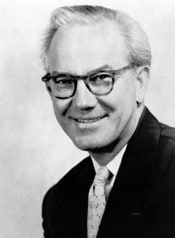
L. Mendel Rivers (1941-1970).
495https://en.wikipedia.org/wiki/L._Mendel_Rivers
Stanley Hiller continued to complain about the process. In 1967, beginning in January and concluding May 24 496Aviation Daily Jun 15, 1967 the five member House Committee On The Armed Services held hearings to investigate the procurement of the LOH. They called 23 witnesses. On his copy, Bayer pencilled in notes next to the members from Stanley Hiller’s district in Palo Alto.
1967-lr-Investigation-Witness-List-Bayers-copyMendel Rivers headed the Committee with Porter Hardy in charge of the subcommittee conducting the investigation. Rivers was an ardent hawk–pro-war–during the Vietnam Conflict. He believed the My Lai massacre never happened. In the investigation, he seems to have regarded the military as naturally innocent while outside influences must be subverting it. He was an alcoholic. 497https://en.wikipedia.org/wiki/L._Mendel_Rivers While Stanley Hiller seems to have been the catalyst for the investigation, the broader reason for the Investigation seems to have lain in the gnawing though sometimes unspoken perception that the war in Vietnam was not going well. The Committee may have felt a need to find blame for delay in delivery of the Hughes Helicopter and, even more broadly, to find blame beyond the military for problems with procurement of weapons. At the time of the investigation, the Hughes LOH had not yet arrived in Vietnam and, in a broad sense, this may have seemed to summarize and explain problems with the war.
Most of the military men that it interviewed had retired from the service. Questioning Bayer, von Kann and others, the Armed Services Committee pointed to parties, trips and other military/industry social interactions. To summarize, von Kann and Bayer both responded to this litany of sins, “of course, we have relationships and we must have relationships. That’s part of doing business.” The Committee questioned whether Bayer had leaked information to Stanley Hiller and yet balked at holding Hiller to account for the break-ins.
Bayer denied all wrong-doing. He regarded the investigation as a setup by Hiller. The Committee criticized the Army for not following the “off the shelf” policy and, in essence, Bayer and the Army said bluntly, “Yes, we ignored policy and did not let the Navy control the procurement. We needed the Hughes machine, it was a better machine.”
The hearings took place against a larger backdrop. By ’67, Congress and others were looking for people to blame for the fiasco in Vietnam–a disaster that went on and on, tearing the nation apart. Even though those doing the questioning were pro-war, hawks, the war was not going well and someone must be to blame. The Committee’s Report included a section called The Salesman. Ironically, while it attempted to crucify Bayer, the paragraphs also read like a salesmanship award speech.
It begins with description of conversation between Bayer and Eddleman that almost certainly occurred during spring of 1961 and that they both now denied–in a sideways manner.
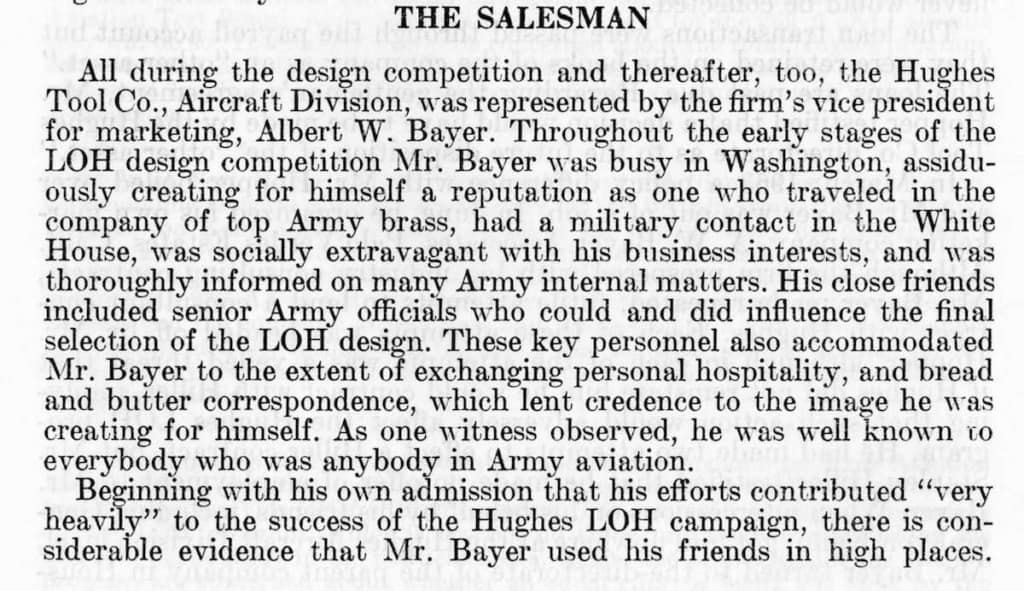
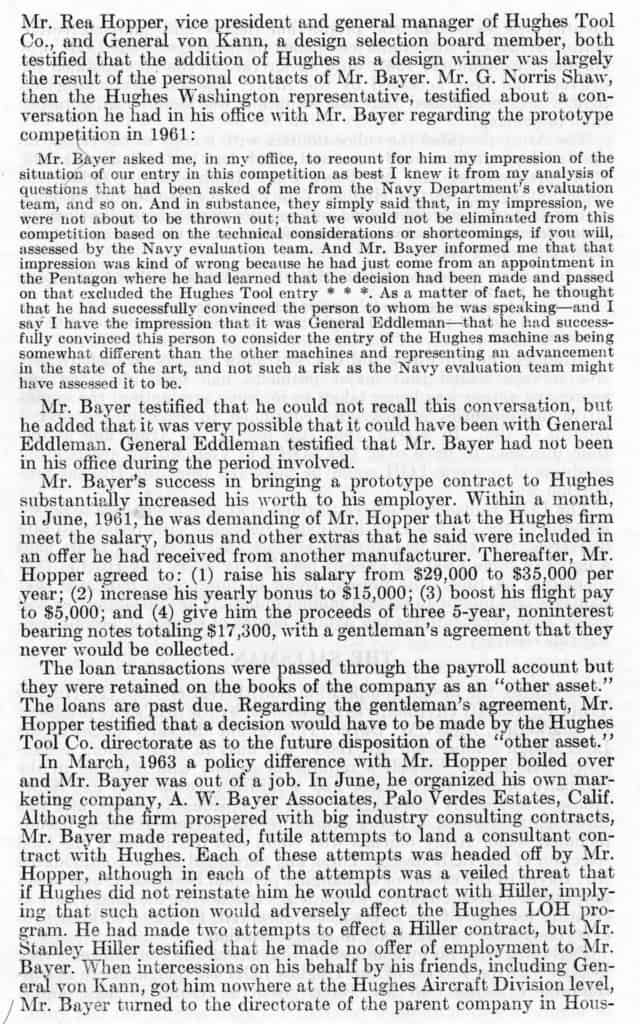
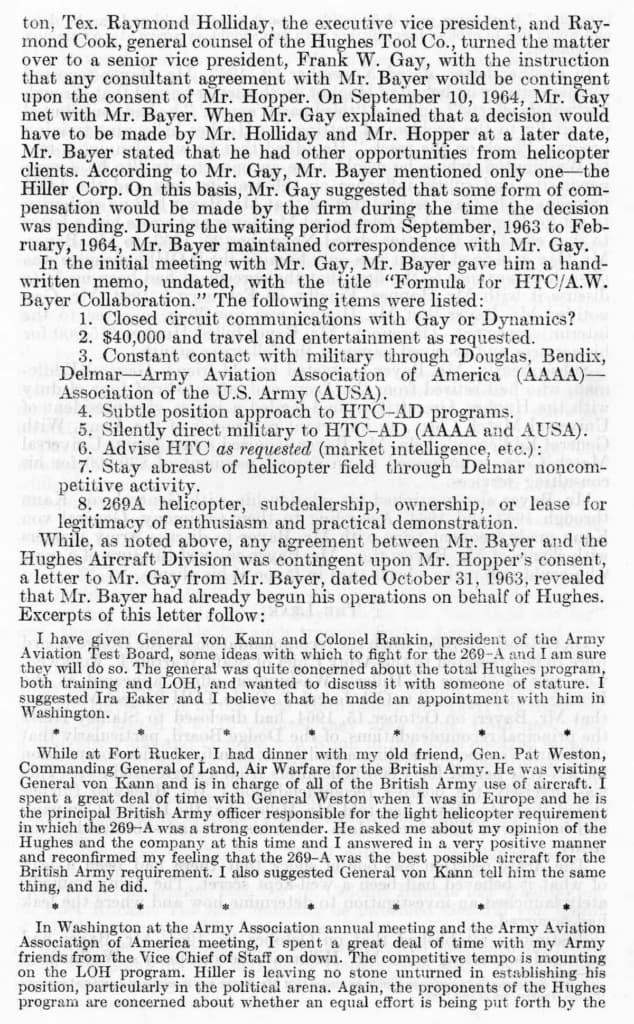
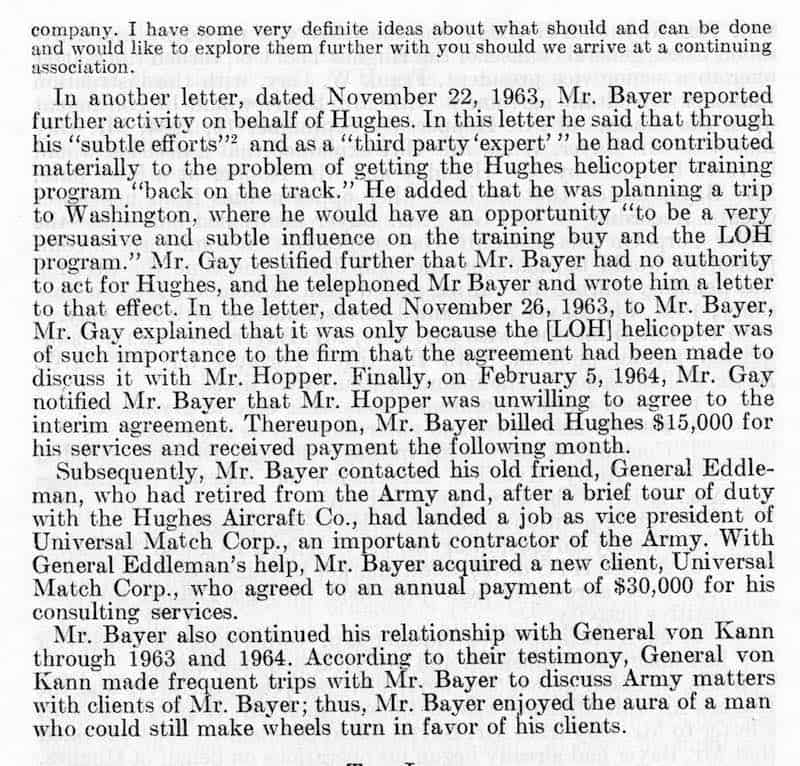
The Armed Services Committee report concluded that Bayer was “busy in Washington, assiduously creating for himself a reputation as one who traveled in the company of top Army brass, had a military contact in the White House, was socially extravagant with his business interests, and was thoroughly informed on many Army internal matters.” 498Porter p.83. LOH Report p17 All of this was true and, in the end, more about tone than substance.
At the hearing, von Kann pushed back hard. In his opening statement, he wrote a detailed explanation of why he had wanted to include the Hughes machine. He concluded:
In this crucible the man who has courage and the conviction that can only come of being right will usually prevail. This is what happened with the LOH program: the result was a great forward stride in small helicopter technology and in Army aviation equipment.
1967-lr-VON-KANN-Statement-ot-CommitteeWhen the Committee issued its report, the Army felt that it had suffered a blow and decided to reopen bidding on the contract. However, though it was well positioned to now obtain the LOH contract, Fairchild-Hiller failed to submit a bid due to internal arguments over control. 499Vertial Challenge, Spenser, p. 172. After years of complaining, Hiller failed to take advantage of partial success.
Meanwhile, Hughes Helicopter was awarded the contract to provide the 269–designated the TH-55 “Osage” helicopter, to the Army for training. The Army bought 783 269s for their flight training program between 1964 and 1969. 500Steve Garfein’s Hughes Power Point has a version of this story. Garfein Power Point. Development history an aviastar article, online The craft was used to train some 60,000 military pilots and became the Army’s longest serving training helicopter. 501See www.vietnamhelicopters.org
Video of the Hughes LOH manufacturing:
https://www.youtube.com/watch?v=n8j785U04PU
WAR PROFITEERS
The Armed Services Committee investigation of the LOH procurement contract took place against a backdrop of increasing public opposition to the Vietnam War as well as growing difficulties in the war itself. Mendel Rivers and others conducting that investigation backed the war–they were “hawks.” As a result, they went easier on the Army men involved in procurement of the Hughes LOH than they did on Bayer–who represented private industry. The unspoken implication seems to have been that if the Vietnam War was not going well, corruption in industry could be blamed. Who better to blame than a man who dressed well and leveraged martinis.
Beyond the hearing, critics of the war made little distinction between Bayer and von Kann–industry and military, lumping them together as military/industrial war profiteers. Bayer and von Kann were grouped in the 1970 book, “War Profiteers“. 502The War Profiteers Richard F. KaufmanBobbs-Merrill, 1970 – Defense contracts – 282 pages See pages 66 and 68. Ironically, the investigations virtually became a sop thrown to the anti-war protestors by hawks who fully supported the Vietnam War.
The Committee’s efforts were particularly frustrated by their inability to separate Bayer from his Army friends. In June of 1967, prior to conclusion of the Armed Services Committee investigation, after having testified, General von Kann wrote Mendel Rivers, the chairman. He complained about the innuendo and tone in the Committee’s questioning and pointed out that he had rejected several proposals by Bayer before embracing the LOH. And, he sought to distance himself from any special friendship with Bayer. The primary hurdle that the Committee had faced in trying to portray Bayer as having bribed the Army with babes and booze lay in General Clifton von Kann’s unequivocal testimony acknowledging that while he had bucked “policy”, he simply wanted what he considered the best helicopter design for his helicopter calvary. He not only failed to throw Bayer under the bus, he echoed Bayer’s outrage at the entire Congressional effort to cast aspersions on the process. His view was that what Stanley Hiller said Bayer divulged was information known by a number of people in the public and that Stanley Hiller himself had had access to classified information–implying leaks to both men from within the Army.
The investigation revealed no manipulation by Bayer of the progressive element in Army Aviation. In von Kann and Eddleman, Bayer had Army brass who became friends because they shared with him a passion to reshape the role of the helicopter in combat. As von Kann described it, Bayer showed von Kann and Eddleman the 269–the Hughes technology–and they saw what was possible. Then, Bayer stayed in close contact with them as they pushed through the hurdles presented by a bid process.
Today, the Committee’s report reads like a religious inquisition directed at sin–at a well oiled military/industrial conversation in which technically savvy people create relationships based on playing golf, hunting coyotes, crunching numbers, drinking martinis, exchanging numbers and imagining futuristic machines. Stanley Hiller was probably correct if he imagined that the Hiller machine had a slim chance once Bayer had flown von Kann and others along the coast of Los Angeles. From January of 1960 forward, the entire contract process seems to have had the Hughes potential as its goal.
Though the larger problem of Vietnam probably lay under the Committee’s effort, Bayer saw it simply as a witch-hunt inspired by Stanley Hiller. When later pressed by Steve Garfein as he researched Howard Hughes, Bayer characterized the Armed Services Committee’s investigation as a “kangaroo court” put on by Congressmen loyal to Stanley Hiller 503Note to Steve Garfein, Garfein Power Point. The Hearing transcript still reads like a litany of unfounded innuendo–just as both Bayer and von Kann later wrote.
The Committee report came out in July of ’67. 504AVIATION DAILY In August, the Army decided to delay procurement of the LOH. 505AVIATION DAILY AUG 25, 1967 In February of ’68 Bayer wrote Mendel Rivers, the Chairman of the Chairman of the Committee on Armed Services, an angry letter. He had also written a 32 page, blow by blow deconstruction of the Congressional investigation’s report. It is unlikely that he sent Rivers this analysis, though. In his letter, he offered to send it.
1968-July-18-lr-AL-BAYER-ANALYSIS-OF-THE-CONGRESSIONAL-REPORTIn his Analysis, Bayer stated that he had no part in setting pricing. In my view, that seems patently false. The Contracts portion of Hughes Tool Co.’s Aircraft Division was under him. He had advice from within the Army–notably Boyer’s note–on the pricing strategy. And he wrote passionately about the need to set the bid low. Bayer was out of the negotiation when Hughes made their bid, however it seems apparent that Gay and Hopper continued to follow his pricing strategy.
In his Analysis, Bayer cited Hughes production problems, pointed out that he had also been concerned about those, denied inter-service rivalries played a role (though, in fact, they had), supported the role of close personal relationships between industry and Army and fiercely described all involved as maintaining integrity. He described the Hughes machine as a “breakthrough in the state of the helicopter art.”
Point by point, Bayer cited the Committee’s view and then responded. 506From “Analysis” page 4. He side-stepped the question of whether the Army had violated the restriction that it only procure “off the shelf” aircraft–leaving development to the Navy and other services. In fact, as von Kann’s testimony made clear, the Army had undone or ignored that policy. Bayer basically said, sorry, it’s a fait accompli–water under the bridge–the Army has obtained a state of the art helicopter and it is now in Vietnam doing its job. And, he sidestepped the Report’s implication that he was responsible for obtaining the amount of the Hiller bid from the military and stated he knew nothing of bid amounts. Again, the it seems he had what he had called some advance, “hearsay” knowledge of the Hiller bid. He stated only Hiller could benefit from the allegations. He deflected with an interesting observation about the bidding. 507Page 25, Bayer “Analysis”
In his Analysis, Bayer pointed out that, in Congress with Stanley Hiller sitting near him, Bayer had tried to get the Committee to ask Hiller if he had hired Fidelifax to break into his office–stealing Bayer’s papers on the LOH presumably in order to find out if Bayer had been told the amount of the Hiller bid by friends in the military or White House. The Committee did not ask the question. And Hiller dodged. 508Bayer Analysis p. 31.
Meanwhile, in the wake of the Armed Services Committee investigation, Hughes Tool Co. sent Bayer a note telling him that he would need to repay the money Rea Hopper had given him at the end of ’61 to help buy a house–stating, “Mr. Hopper did not have the authority to forgive these notes.” 509Letter Charles Schaff, Division Counsel, to Bayer, April 26, 1968.
von Kann also responded in writing to the Committee’s report. He again criticized the innuendo. My contributions to national security seem to have been ignored or distorted. I was responsible for the organizational blueprint of the 1st Air Calvary Division; and it is still organized on this blueprint today in Vietnam. von Kann could have stated his role even more largely. With Bayer, von Kann had seen the potential of a maneuverable armed helicopter and he originated the idea of the Air Calvary and, more broadly, the idea of the helicopter as a nimble armed weapon. With support by Eddleman and other Army progressive and with Bayer in industry, von Kann had–by hook and crook–ramrodded through the idea of a fast, light, albeit risky Light Observation Helicopter.
1967-VON-KANN-LETTER-lrvon Kann noted that because he had stood up for the LOH against the House Committee, he had gained rather than lost respect….the press and the aviation community rejected this sort of story almost to a man. Now, if anything, my stature in the aviation community has increased…. 510Von Kann, letter to Senator Strom Thurmond, Nov. 16, 1967. ps.2, sent in Dec. 19 letter to Bayer
Stanley Hiller simply didn’t grasp the depth of their ideas and the fact that a more reliable yet more traditional helicopter was not going to win the contract. He provided the Committee with secret Hughes planning documents. Yet, as Bayer pointed out, these papers dated from after Bayer had left Hughes. He noted that his successor at Hughes, James Carmack, had been hired away by Hiller. 511Bayer Analysis p32
Bayer contested testimony that, during 1961, General Edelman had assured him the Navy’s negative evaluations of the Hughes LOH would not keep Hughes from being added as a third candidate. Though there is reason to believe, from his ’61 LOH notes, that one or more of his friends in the Army provided that assurance prior to the May decision.
1968-AL-lr-ESSAY-ON-COMPANY-SURVIVALCriticism by Congress came six years too late. Emotionally, it hurt both Bayer and von Kann. Stanley Hiller’s concern that the bid process for a Light Observation Helicopter was flawed or illegitimate had merit. The flaw however was not in Bayer bribing the military. The flaw lay in his success at convincing a few top people that the Hughes design was a revolutionary advance and most likely the best choice before the government even issued its call for proposals. The Committee was never willing to see the Army role in this flawed process. Bayer would have to take all the heat. The thrust of the Congressional questions–probably reflecting Stanley Hiller’s view–lay in trying to show that Bayer had lured the Army with babes, booze and bribes. This line of questions proved long and aimless. The reality was much simpler–the relationship between Bayer and Von Kann was professional and based on a common vision. Neither policies nor other manufacturer’s products were going to get in the way. A Hughes machine seems to have been destined to prevail from as early as 1958 or ’59.
Howard Hughes wrote that as a result of the LOH procurement fiasco he lost over 1/5 of his personal fortune. 512Letter Howard Hughes to LBJ, 1965 He is said to have told Jack Real, who took over all of Howard’s aircraft business in 1972, that he lost $100 million. This loss can be said to be partially attributed to the initial underbid–Bayer’s plan dating back to spring of 1961. However, Bayer expected initial losses to be offset by Army reorders–the typical strategy. Those reordered were greatly delayed by the firing of Bayer, particularly as it resulted in a failure by the company to stand up to Hiller’s allegations and the resulting investigations. However, the fundamental delay resulted from the inability of Hughes Helicopter and, in particular, Rea Hopper, to wrap their minds around the implications of the LOH contract for the company’s manufacturing capacity. To make matters worse, there ensued the fumbling of negotiations with the Army by Gay and Hopper as the Army offered to increase the price at the end of 1965, while placing its order for 1966. The Army was not required by contract to pay more. It was a goodwill gesture by the Army, probably based on trust built by Bayer. Bayer would not have fumbled negotiation with the Army.
THE LITTLE GREEN KILLING MACHINE – Vietnam War helicopter crews complete invention of the attack helicopter
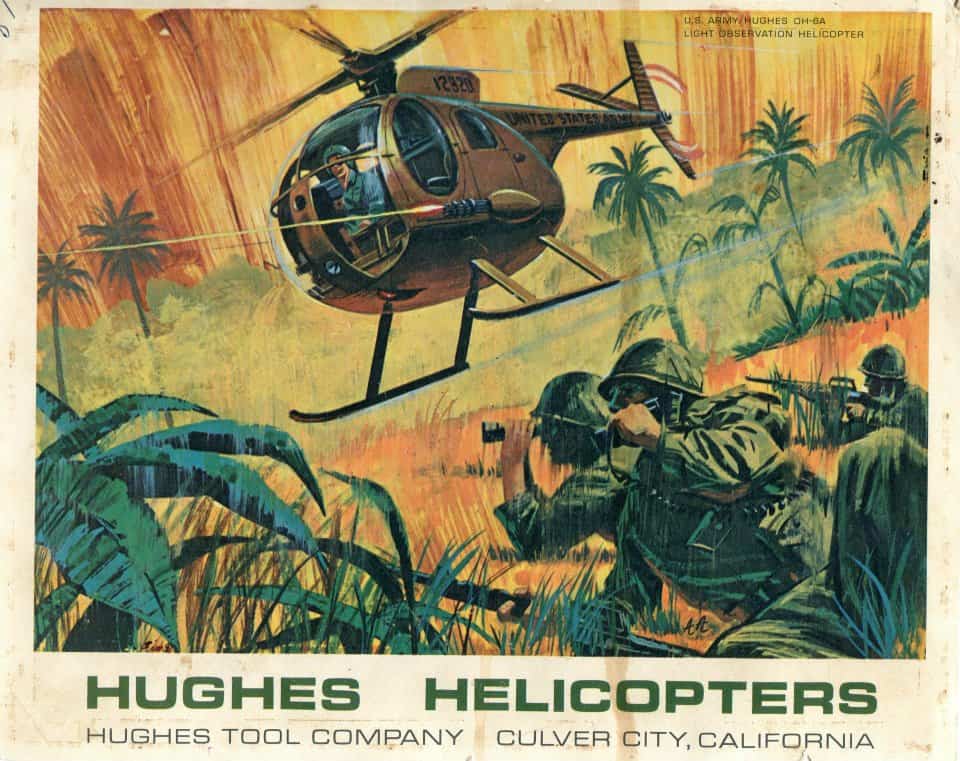
In short, Bayer’s confidence in his abilities coupled to focused innovation by the engineers lead to a craft that epitomized confidence and that redefined war as confidence. The Hughes LOH defined the Vietnam War. And the Vietnam War redefined American war strategy. Yet, American lost that war. Even as Robert McNamara ensured adoption of the Hughes design, Bayer’s boss, Rea Hopper, bridled at Bayer’s “pulsating will to succeed”. That quality made Bayer’s demonstration flights to Army aviation brass along the Palos Verdes coast a watershed moment in aviation. Hopper didn’t understand the design. Bayer’s friends in Army Aviation did understand the design. No one glimpsed the implications for military strategy–not then and probably not today when drone warfare has played out the illustration Bayer published in 1953 of the McCulloch MC-11.
The Hughes LOH is not only emblematic of the role played by the Southern California aerospace industry as the Cold War morphed into an actual conflict, the helicopter was at the forefront of a fundamental shift in American war strategy. Though, in theory, defined as a “scout”, the craft became what Bayer and von Kann knew it could become–a highly mobile attack craft. With extreme attack mobility–the ability to descend quickly from the sky with guns blazing–the LOH defined war as killing without the need to take territory–conquer land. This ability would define the Vietnam War as well as subsequent decades of America military action around the world.
This faith in maneuver and technology may betoken hubris that results in an inability to win a war. The ability to kill rapidly anywhere lends to a feeling of power based on technology. Yet, it doesn’t define any kind of gain in land or movement toward victory. This problem has only been continued by the adoption of drones. The technology lends to confidence. And, historically, confidence lay at the heart of adopting the technology. However, it is flying without instruction. There is no road map, manual or route–only the implementation of the will. My father and the men around him believed this was enough.
Some histories of these events have echoed the Armed Services Committee’s assault on Bayer’s character. Ignoring the behind the scenes efforts by Edelman and von Kann, with McNamara, this grossly underestimates the dynamics and deep implications of what occurred with the LOH contract. It’s important to remember that the LOH actually possessed ground-breaking qualities. Hugh Mill’s book, Low Level Hell, describes the craft and its use in detail. It reads like a description of exactly what had been imagined by Bayer, Jovanovich and the engineers.
The OH-6 had a personality all her own. She was light, nimble and extremely responsive to every control input. While the Huey was stable, dependable, kind of like the faithful family sedan, the OH-6 was like getting a brand-new MGA Roadster. She was sexy! 513Low Level Hell, Hugh L. Mills, Jr. Sept. 1, 2000 p. 32
In its 1960 request for proposals, Army Aviation defined the LOH or Light Observation Helicopter as a multi-person “scout” aircraft. Note the early drawing in which the craft is arrayed with men carrying binoculars.
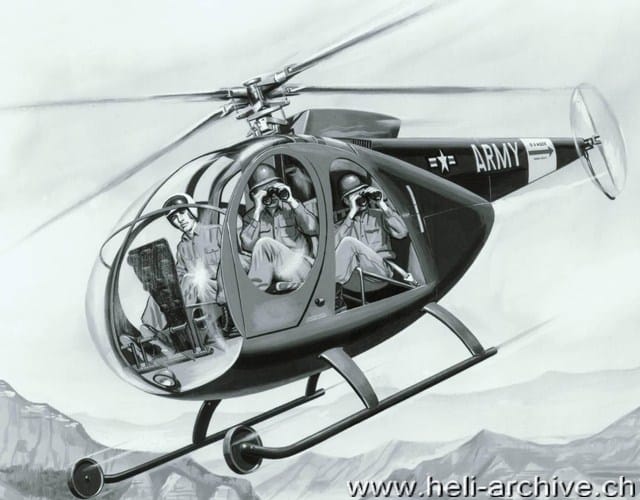
von Kann and Bayer worked within a bid request by the Army that defined the LOH as a “scout”. They clearly knew that the craft could be armed. It remained for Vietnam crews to do this at first. They quickly noticed that, with the LOH able to get itself quickly into tight spots, if they were not armed and prepared to shoot or even attack, they became sitting ducks. 514Low Level Hell, Hugh L. Mills, Jr. Sept. 1, 2000p. 34
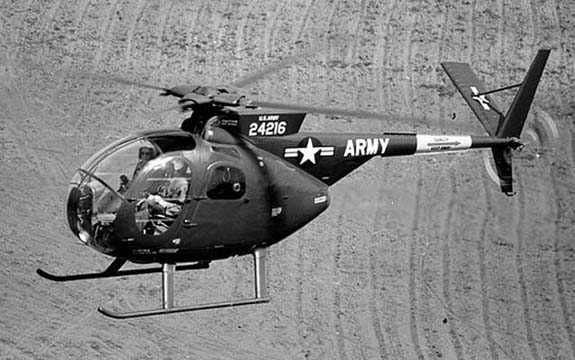
The Cobra arrived in Vietnam during August of ’67. The Loach arrived during December of ’67. 515https://www.airspacemag.com/military-aviation/snakes-loaches-180964341/
In Air Calvary theory, one that defined the craft’s Vietnam role into 1969, the LOH would only scout…the Cayuse or Loach would troll for enemy fire and, when it was found, the “scout” was to move out of the way while the well armed Cobra would circle overhead and then move in for the kill. Indeed, when I interviewed a Cobra pilot still in the Army, he affirmed to me that the “scout” would only scout, never engage.
While barely any American helicopters served in World War II and few flew in Korea, Vietnam was a proving ground for many airframes — everything from the venerable Huey to Chinooks sporting huge guns. One of the most dangerous helicopter assignments was a tiny scout helicopter known as the “Loach.” Officially designated the OH-6 Cayuse, these things were made of thin plexiglass and metal but were expected to fly low over the jungles and grass, looking for enemy forces hiding in the foliage. In the hunter-killer teams, the Loach would fly low over the jungle, drawing fire and then calling for the Cobra to kill the teams on the ground. In air mobile teams, a pilot would fly low while an observer would scan the ground for signs of the enemy force. Some of them were able to tell how large a force was and how recently it had passed. They would then call in scouts on the ground or infantrymen to hunt for the enemy in the brush while attack helicopters protected everyone. Reminisence of Vietnam 516https://www.wearethemighty.com/articles/the-loach-was-one-of-the-riskiest-helicopter-assignments-in-vietnam
The Loach would go low and slow, a few feet above the ground or virtually hitting tree tops.
Here’s more on the basic strategy:
Finally, there are tiny, bubble‐domed OH‐6 light observation helicopters called Loaches that buzz in and out of jungle clearings, hovering over the treetops like hummingbirds, constantly daring enemy soldiers hidden below to shoot at them and thereby expose their positions. The most commonly heard descriptive word for loaches is “cute.” ….
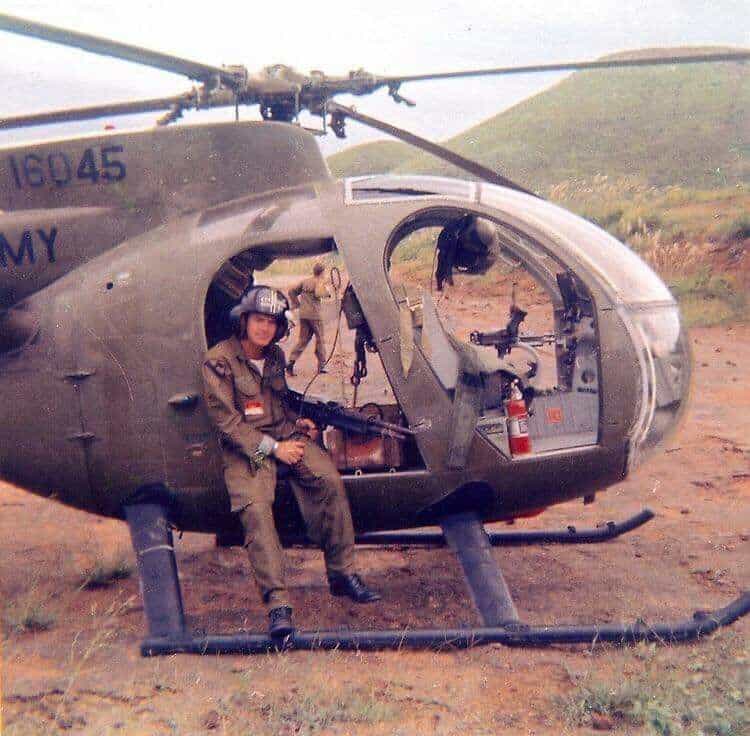
Compared with other helicopters, the Loach looks like a baby. A Loach and a Cobra working together scouring the jungle are called a Pink Team division, or a hunter killer team. In the First Cavalry division, the Pink Teams account for the biggest per centage of “kills” in the division.
It is not inappropriate that painted on the side of one of the Pink‐Team Loaches is the name The Little Green Killing Machine:
“These names don’t mean we’re super gung‐ho,” said one Cobra crewman. “But you know how the Army makes war sound so sweet. Well, these names are just a form of honesty.” New York Times Article, 1970. 517In Vietnam, Thwapp‐Whirr of Copiers Adds New Sound to WarBy James P. Sterba Special to The New York Times Aug. 25, 1970
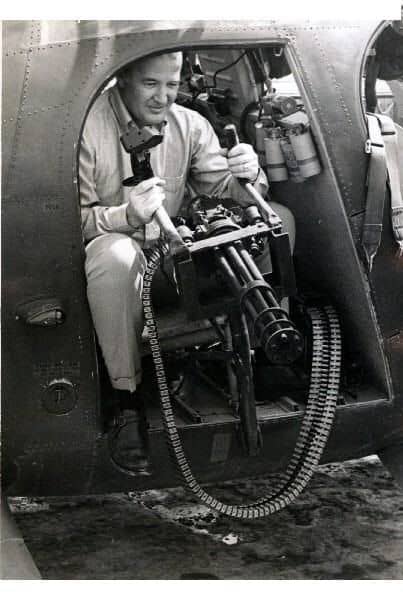
The strictly limited “scout” role is not what actually occurred in Vietnam. In “How The Helicopter Changed Modern Warfare”, Boyne stated it bluntly. 518 Publ. 2011. p.328. https://www.google.com/books/edition/How_the_Helicopter_Changed_Modern_Warfar/S2B55ByLILMC?hl=en&gbpv=1&dq=helicopter+museum+cayuse&pg=PA328&printsec=frontcover
The Hughes OH-6 Cayuse turned helicopter pilots into fighter pilots over Vietnam.
At first, the Loach crews went by the book, would simply report the enemy’s location. Then, after a year or so, some crews armed the LOH and, most tangibly because the enemy would shoot them, began engagement while waiting for the Cobra to arrive. Then the Loach might continue to engage to the side of the Cobra’s actions.
At first, some Air Calvary commanders did not want their Loach crews firing guns and yet, as Hugh Mills well describes in his book, “Low Level Hell”, not having firepower quickly seemed like “bullshit.” Ultimately, as the practice became common, units would choose their own configuration for the Loach–the M60 machine gun, the AR 15 or 16, the M27 armament subsystem, the M134 six-barrel 7.62mm minigun or a 40mm grenade launcher on the XM8 armament subsystem. In addition, an M60D 7.62mm machine gun could be mounted in the front port or rear right door. Some crews rigged up their own napalm by putting hydraulic fluid in cans. 519Fred Young interview
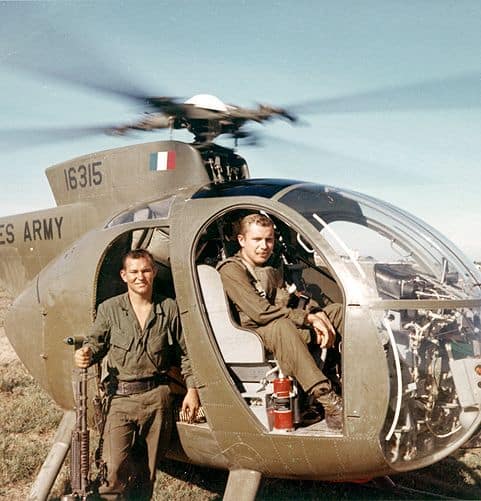
The entire theory of heavier-is-better suffered a serious blow when, in Vietnam, Loach crews often survived crashes that, any other helicopter, they would have died. The light blades were difficult to track but possessed outstanding flight characteristics. Their lightness meant that overall balance of the craft could be maintained if part of the blade became shot away. 520Interview with Fred Young, LOH pilot in Vietnam, Oct. 20, 2020. Also see http://www.huey.co.uk/loachhistory.php
Ideas for improvisation in the armaments often went from pilots to the commanders. Pilot Bob Forringer discussed his trials with a 40mm grenade cannon in place of the mini-guns–because they tended to jam.
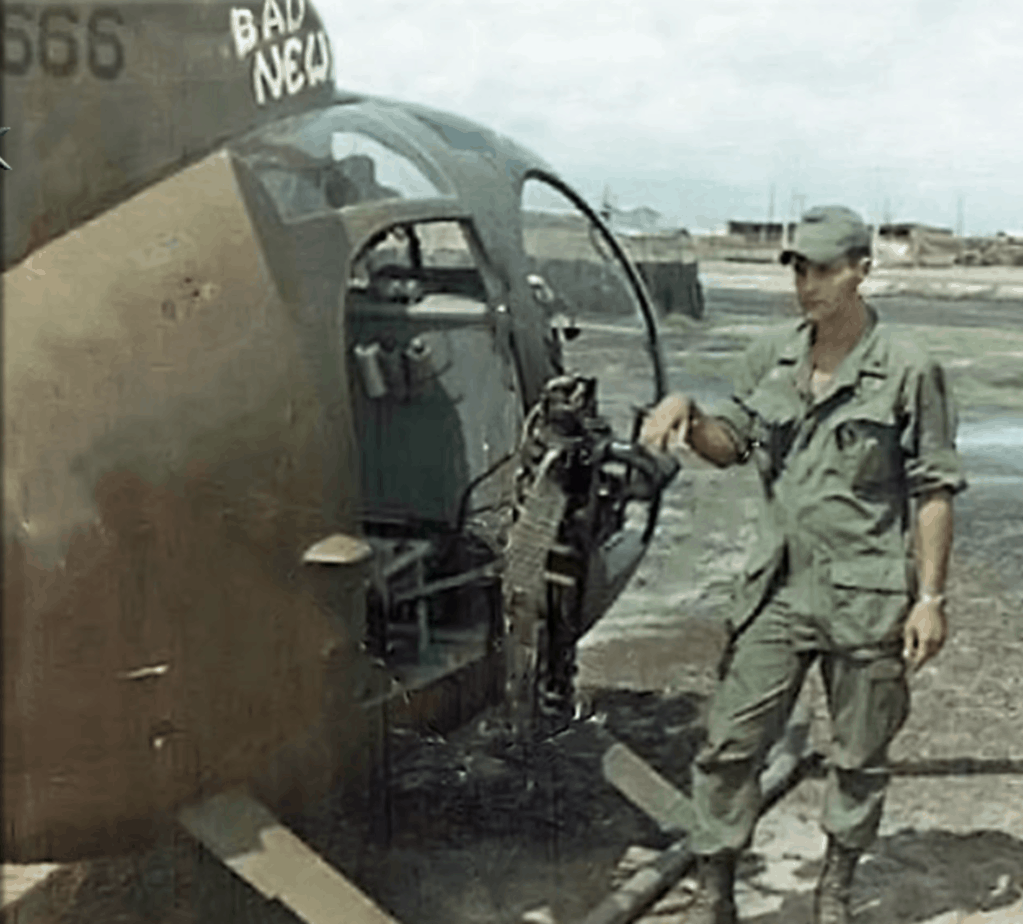
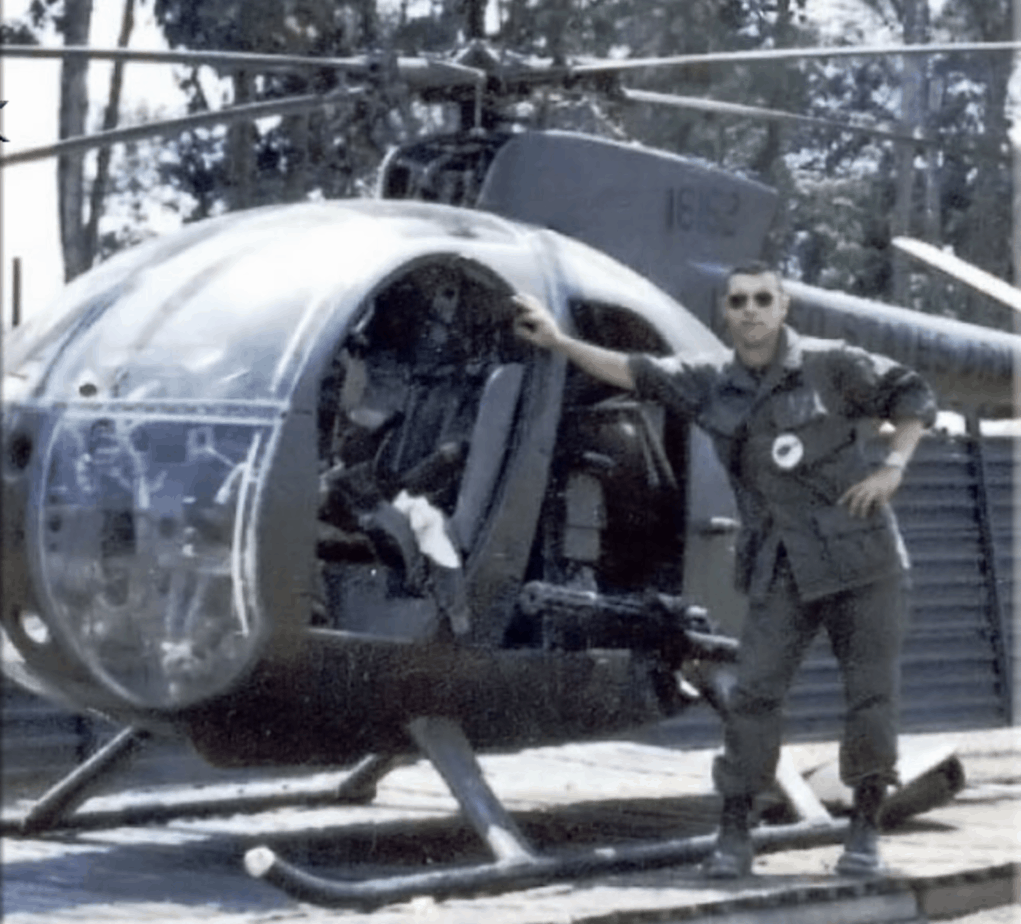
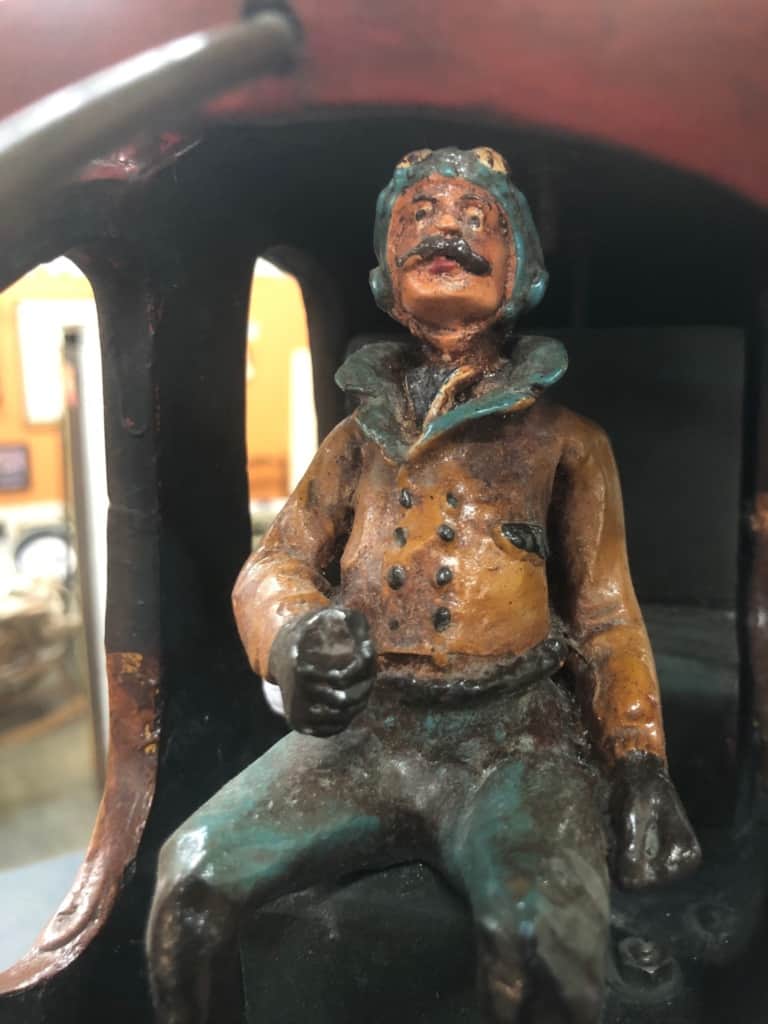
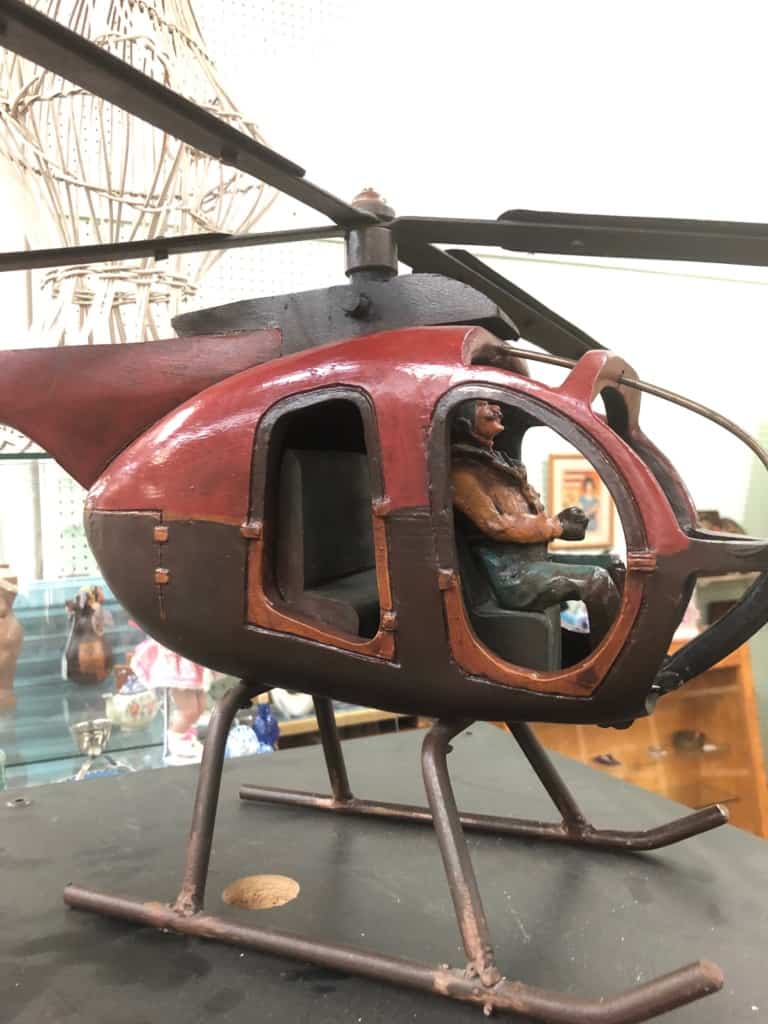
In contrast to the “cool” aesthetic promoted by Bayer, the aesthetic embraced by Vietnam pilots echoes the earth tones of the jungle. This carried over into a popular folk carving of the Loach.
By the early ’70s, Hughes Helicopter had built a full production line and was producing the LOH in quantity.
The Hughes LOH, or OH-6A Cayuse, entered military service in September 1966, establishing 23 world records for speed, distance and altitude. The Cayuse was Hughes’ longest-running helicopter program and, during the Vietnam War, as many as 100 OH-6As were built a month. The Hughes Tool Company Aircraft Division built 1,420 OH-6A Cayuse helicopters for the U.S. Army. The helicopter remains in production as AH-6C and MH-6 military helicopters, and the MD500E and MD530F civil aircraft. 523https://www.thisdayinaviation.com/tag/hughes-yoh-6a-light-observation-helicopter/ By 1999, 4700 model 369/500 helicopters had been manufactured. The commercial version, the Hughes 500, became the MD 500 series after McDonnell Douglas acquired Hughes Helicopters in January 1984 524https://www.boeing.com/history/products/oh-6-cayuse.page Boeing bought this out in 1999.
The first Hughes LOH or, as it began to be called in Vietnam, the “Loach, arrived in Vietnam during December of 1967. Out of 1,419 Loaches built for the war, 842 were destroyed in Vietnam, most shot down and many others succumbing to crashes resulting from low-level flying. “U.S. Army crews flying Hughes OH-6A Cayuse helicopters flew low and drew fire—to set up the shots for the Bell AH-1G Cobras circling above.“ These were called “Pink” teams–combining the Loach or white team to the Cobra or red team. 525See www.vietnamhelicopters.org
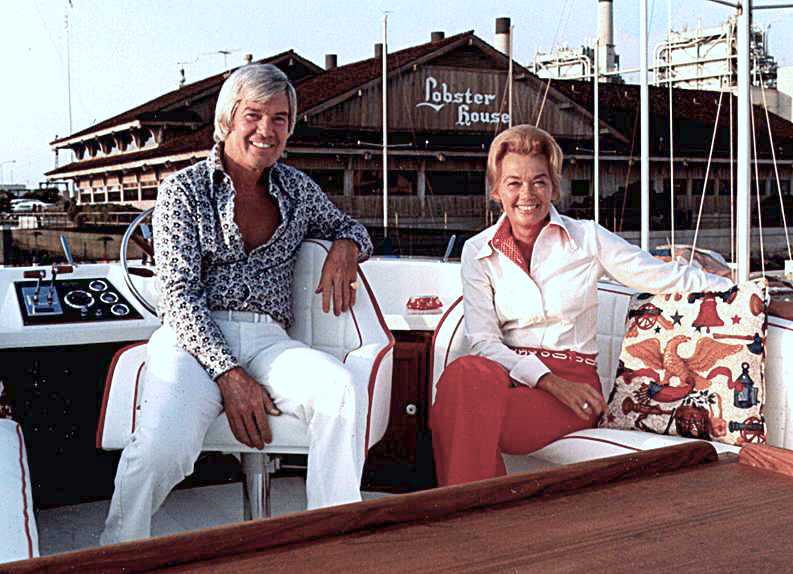
A RESCUE – Bayer again shows his stuff
After 1963, Bayer’s career in helicopter development was over. As he left Hughes Helicopter, the future of both the 269/300 and the 369/500 or LOH had been secured.
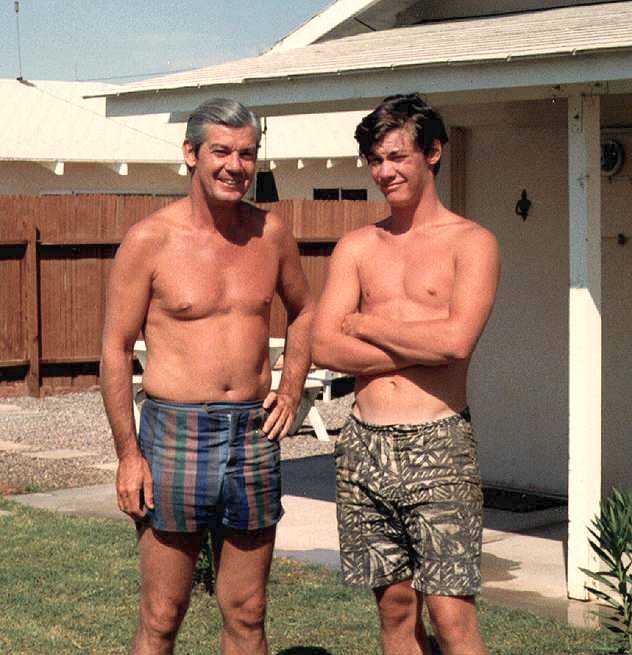
Bayer regretted leaving behind his adult life’s initial goal–a personal role in helicopter development. Yet he almost never spoke of it. After he was fired, in 1953, he created A.W. Bayer & Assoc., a consulting firm based on himself. At first he worried that he might not be able to succeed at this. However, his efforts had left him with lasting friendships in the Army. It took Bayer into 1965 before he fully realized that, while his private consulting business would be successful and that he had been permanently exiled from the realm of helicopter development.
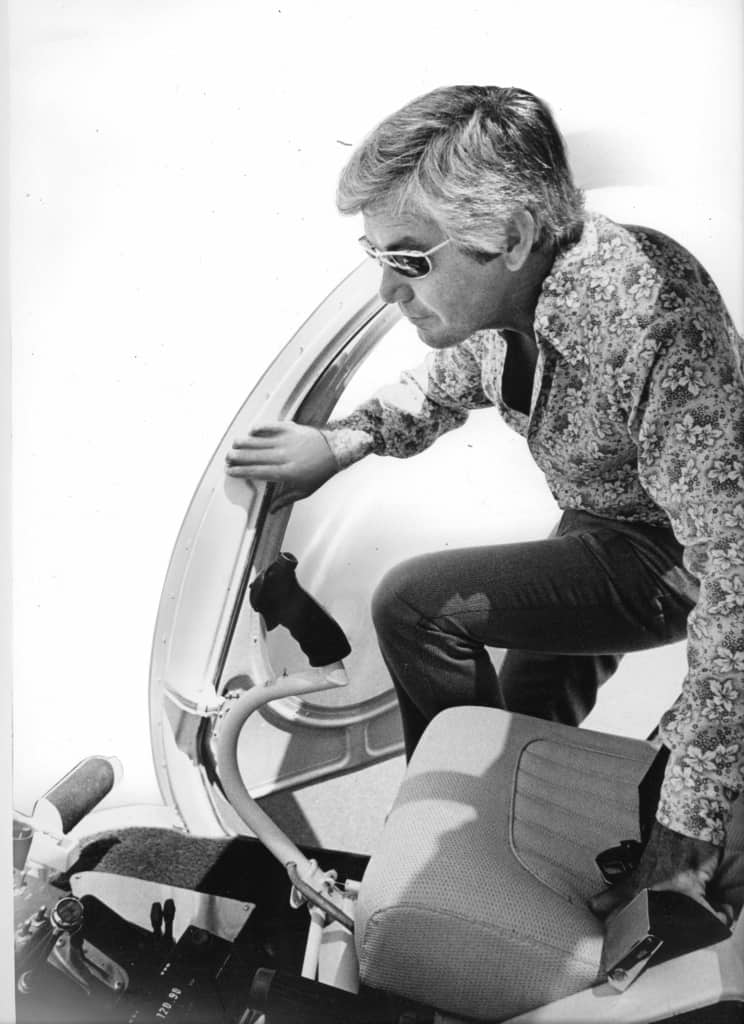
Bayer’s early experiences as a test pilot left Bayer an obsessive pilot. Despite tension between them as life and anxiety took their toll, Rita always said, I never worried about our flying with your father, about you and your sister being in his plane, because he was always very careful. I recall getting out of our plane after flights into Torrance airport during the 1960s. My father would go straight to the mechanic and talk to him, gesturing emphatically, about sounds he had heard in the engine, sounds no one else could hear, sounds that must be fixed. My impression is that the mechanics always listened closely because he knew what he was talking about. Through it all, he retained a visceral connection to aircraft.
In November of 1967, while we were staying at the Colorado River near Parker, Arizona, the Sheriff called with an emergency. Bayer flew his Hughes 300 and rescued a hiker from the top of a Mojave desert ledge. In August of ’68, he was awarded the California Medal of Valor. Rosemary Weidinger nominated him. 526https://www.reaganlibrary.gov/sites/default/files/digitallibrary/gubernatorial/pressunit/p09/40-840-7408623-p09-002-2017.pdf
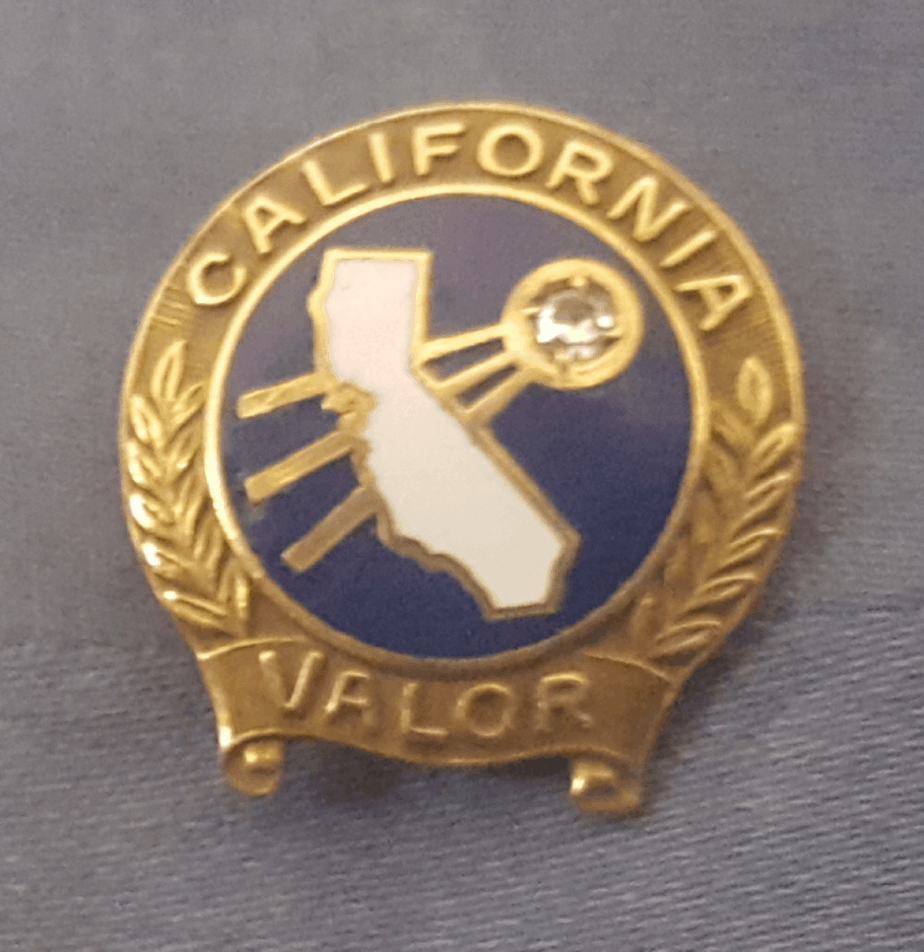
In hindsight, given his decades working toward a light, fast helicopter only to be pushed out of development at the moment of success–because of that success–it is not surprising that Bayer never reflected deeply, pro or con, on the roll of the helicopter he helped create in the Vietnam war. He had entertained some political ambition prior to the Congressional investigation yet those were then shattered.
Bayer did not talk a lot about his firing, his efforts at Hughes, his early flying career or the investigations. About the Congressional hearings, he told one story: “The Congressman asked me if I liked women. I replied, ‘I like women Congressman, what is your preference?” Then, he would laugh. Though the comment betrayed his prejudices, in his mind it summarized the contrast between himself–the bon-vivant bohemian world traveler–and the politicians–a narrow, pinch toed prude who needed some comeuppance.
He avoided the details. Overall, like the aerospace industry itself, as respectability became more and more important, early excesses, risks and lapses faded from view.
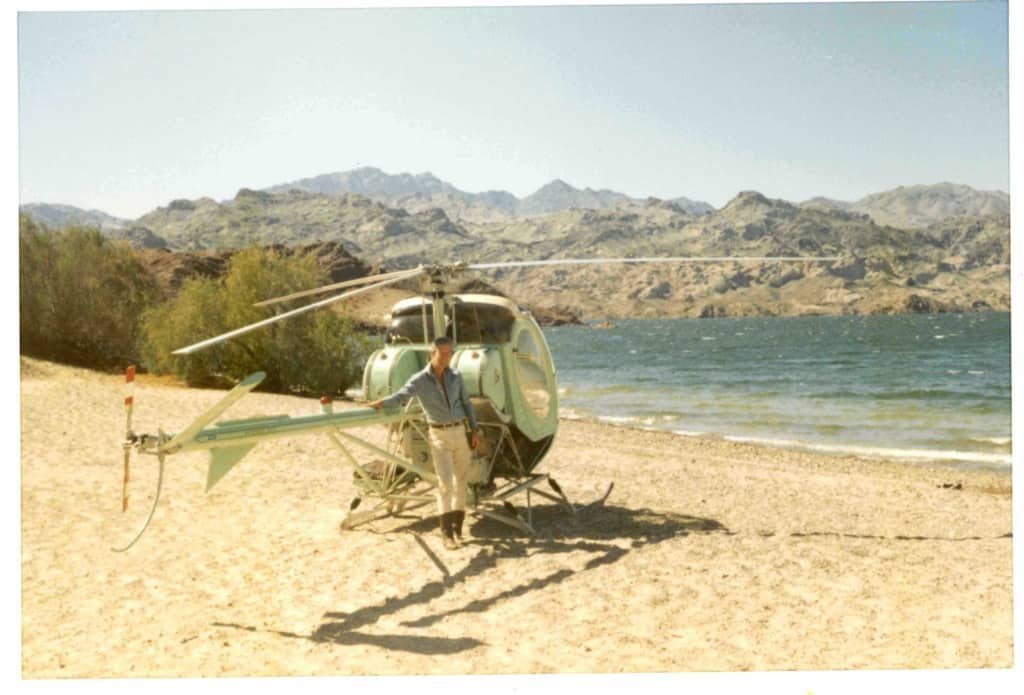
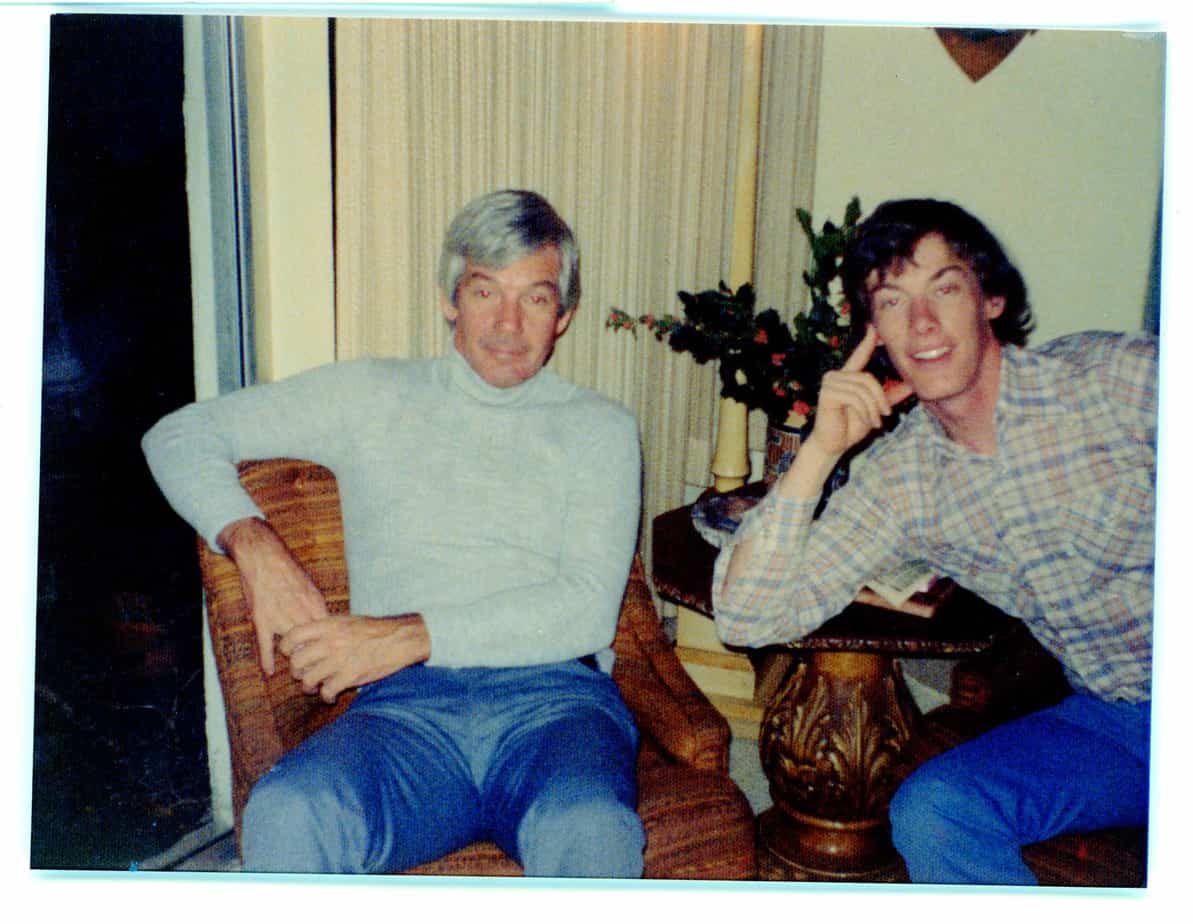
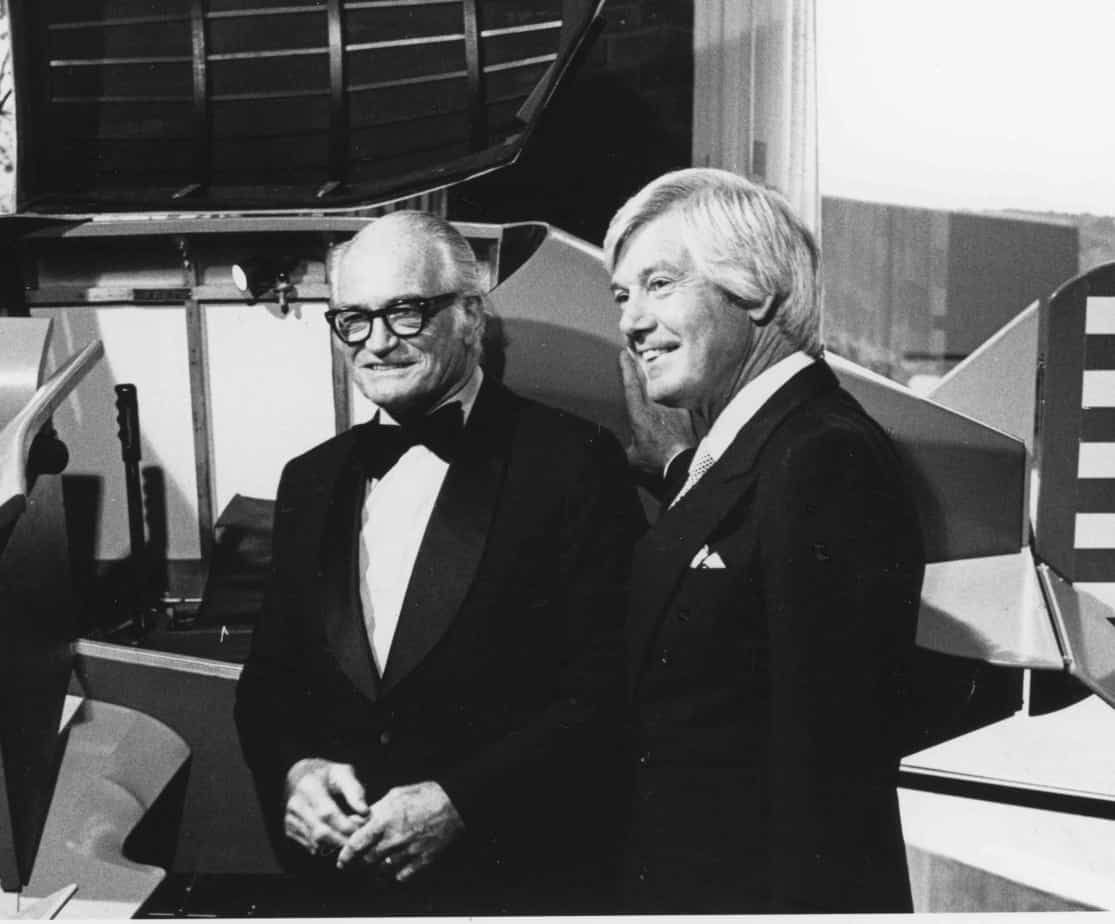
In Bayer’s final two decades, the burdens of survival and perfection somewhat lightened. After 1980, in Los Angeles, the aerospace industry and its culture began to disappear. Bayer stopped flying, spent time on his boat and drove expensive cars. When he retired, he returned to the buoyant disposition of his youth. His family remarked, “who is this lovable man?”
Bayer set up a karaoke machine on the pool table in his guest house and began to record his father and grand-father’s old songs– finding the right key, practicing them until he got them as he wanted them. I ran off several CDs for him and he gave these away as presents.
Click to hear AW Bayer sing: “I Can’t Give You Anything But Love.“
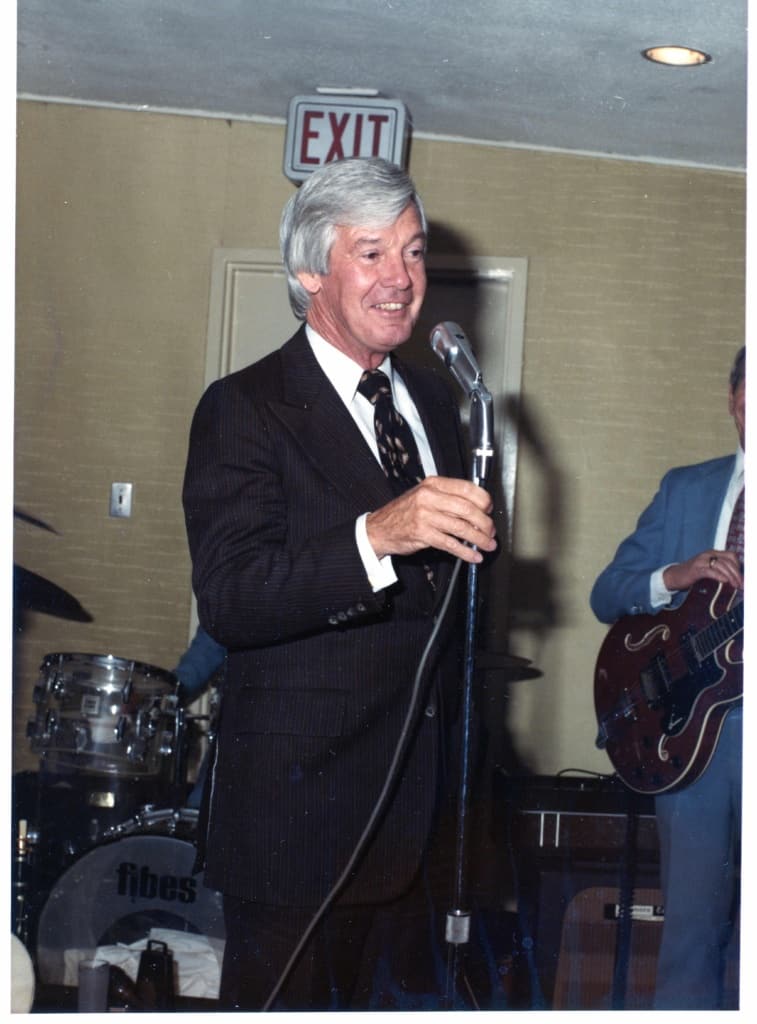
Bayer started to write his memoirs. He titled this, “Unbelievable”–as if all these events had happened of their own accord, without intention or personality and betrayed some magical quality that had been bestowed on him by providence. He made a list of chapters covering his life in chronological order and another list of entertaining stories about his encounters with famous people. While working on narrative for the first list, as he got to about 1960 the piece devolved into a long list of military friends leading up to 1961, which he called the pivotal year. Then, increasingly in ill health, he wrote no further. In the piece, he barely addressed his firing from Hughes. A couple of times Bayer sent copies of old photos to people who inquired, signing them, “Thanks!”. He kept a room full of pictures of himself with famous people.
History tends to miss the dramatic moments and struggles in most lives. They are lost or, in the long run, they just don’t matter. I think my father felt that, beyond the glow of his successes, the details didn’t matter. In contrast, my sense is that Bayer’s story provides both a personal drama full of heroism married to ego as well as a look at the rise of a technology that helped shaped the American effort in Vietnam–a war our nation lost. Bayer’s innocent and then less-innocent effort to find a helicopter that would be awarded a military contract may be emblematic of the nation’s post World War 2 belief in its technological superiority as a proof of its superiority and guarantee of its ultimate success. His firing seems part and parcel of a self-defeating tendency towards in-fighting, back-biting, doubt and, ultimately, distrust of both relationships and science that, in recent times or since the 60s, seems to have grown into an unctroulled pathology. The Hughes designs–mostly based on Jovanovich’s rotor blades and rotor hub–proved hugely innovative and successful yet bringing them out rested on Bayer’s dynamic and half-baked “pulsating will to succeed.” Apparently, progress is hard to fully predict and requires test pilots willing to crash and fly again.
2001-Unbelievable-reduced-1A TIMELESS DESIGN
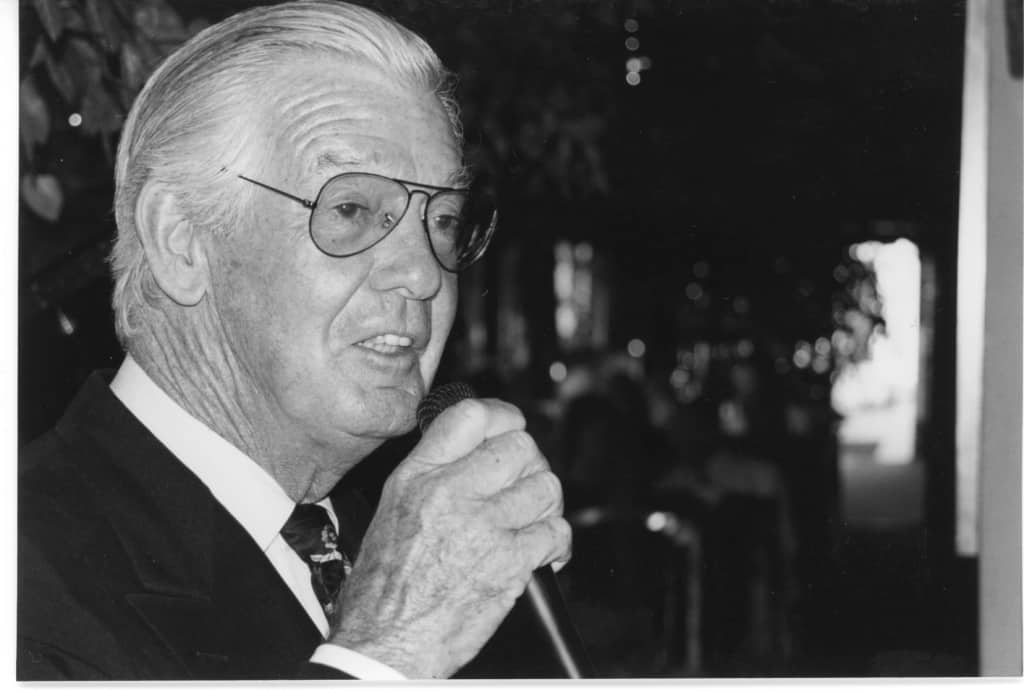
Today, the general or public vision of the helicopter–of a dashing craft that darts about the sky–stems from the impact of the Hughes 269A and 369/500 or Loach/Cayuse.
Today, resistance to deft or mobile and a celebration of big continues to dominate aviation history, the core concepts of military strategy and, more generally, how technology is seen. This story is perhaps useful not only as a chronicle of an important chapter in aircraft development but also as a perplexing illustration of the contradictions inherent to trying to define military victory in an increasingly technological era. 527See Captain Anderson’s interesting essay, On The Meaning Of Victory, https://www.ausa.org/articles/meaning-victory
Bayer never told this story in any full sense, perhaps for the very reason that the story exists– because he always stayed positive and pushing ahead and because the contradictions defy simple morals or casual conclusions. He also avoided telling much of this story because what began as innocent ambition ultimately cost him such personal loss and pain. It is easy to find fault with his assertive, risk taking test-pilot approach to selling the cool, tactical helicopter. Or, we might see it as he saw it–a confluence of the right factors and dogged perseverance that, in the end, prevailed. His notes show that he gave great credit to the engineers and to the progressive men in Army Aviation. And, the absence of his telling, in any form, many of the details discussed above illustrates the essence of progress–what is done when answers are missing.
After the Congressional investigation of 1967, Bayer spent a lot of time creating even more relationships with the military and with famous people. This served his private consulting business well. And, the ongoing status provided solace. By the late 1970s, particularly as he looked for higher standing in The Society of Experimental Test Pilots, Bayer talked mostly about his famous friends and achievements, one unbelievable miracle after another—never mentioning the risks, injuries, frustrations, dangers and losses that define his work, during his 20s and early 30s, in helicopter development.
No one in his family appreciated the extent to which his retelling of his past reflected a need to salvage himself from a significant betrayal. His business friends only knew part of that deeper tale. No one ever fully grasped what he had been through and what he had helped accomplish. He liked to laugh. Sometimes Bayer joked that he was a “museum piece”, as he had once seen his picture beside an autogyro–an XO-60– at the Smithsonian.
Both the Hughes 269 and the Hughes 500 proved to be brilliant, incredibly long-lasting designs– technically and aesthetically. In modernized form, both helicopters are still manufactured today. About 2800 Hughes 269/300/H-55Osage helicopters were produced. 528https://www.helis.com/database/model/Hughes-269/ In 1983 Schweizer licensed production of the 269/300 and that continues today. 529http://www.iasa.com.au/folders/Publications/pdf_library/ospreypdfs/The%20American%20Helicopter.pdf
No other helicopters have ever been as cool. And, the “cool” factor continues. The Hughes 369/500 has appeared in about 47 Hollywood movies. 530http://www.impdb.org/index.php?title=Category:Hughes_OH-6_Cayuse In the 1995 film, Outbreak, the Hughes machines helps the heroes outmaneuver a Huey. For a few moments, the movie’s plot revolves around the deft moves of the the Hughes machine as it outwits the ponderous movement of the big helicopter. The scene is a perfect metaphor for what, in 1950, Bayer and von Kann saw as possible for a nimble helicopter as went beyond or outran traditional designs.
By 1983, new tactics and weapons replaced the Army’s initial concepts of air mobility. That year Army Aviation became an official branch, though, in practice its roots lay in von Kann’s push for an Air Calvary. Technical innovations from the Hughes LOH were rolled into the large attack helicopter, the Apache. 531Garfein Power Point. Patterned on a gunship version of the initial LOH, the AH-6, in about 1988 the helicopter was upgraded to the Hughes MH-6J–a “light attack” helicopter primarily for insertion and extraction of special forces. It became a center piece in numerous special operations. 532https://americanhelicopter.museum/aircraft/hughes-mh-6j-light-attack-helicopter/ https://www.thedrive.com/the-war-zone/22879/this-ghost-of-a-helicopter-likely-had-a-secret-role-in-reagans-tear-down-this-wall-speechThese appear to have included formation of an elite unit formed in partnership with the CIA and centered around a version of the MH-6J. 533https://www.thedrive.com/the-war-zone/22879/this-ghost-of-a-helicopter-likely-had-a-secret-role-in-reagans-tear-down-this-wall-speech
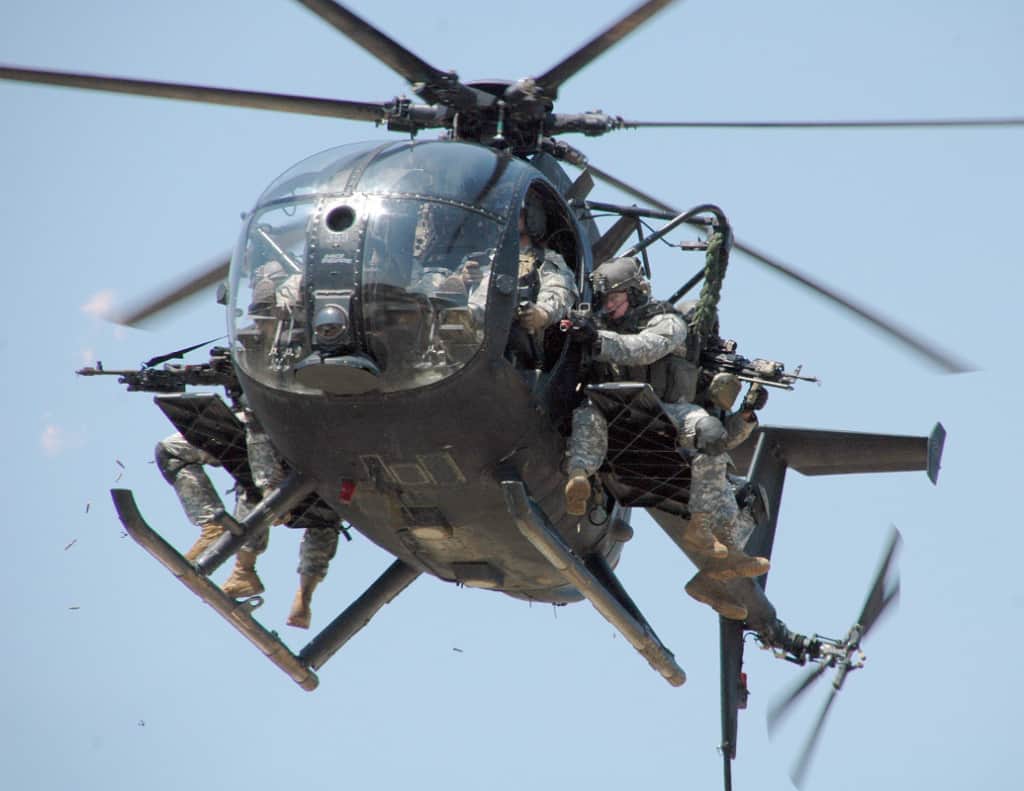
Military versions of the Hughes LOH design include these variants:
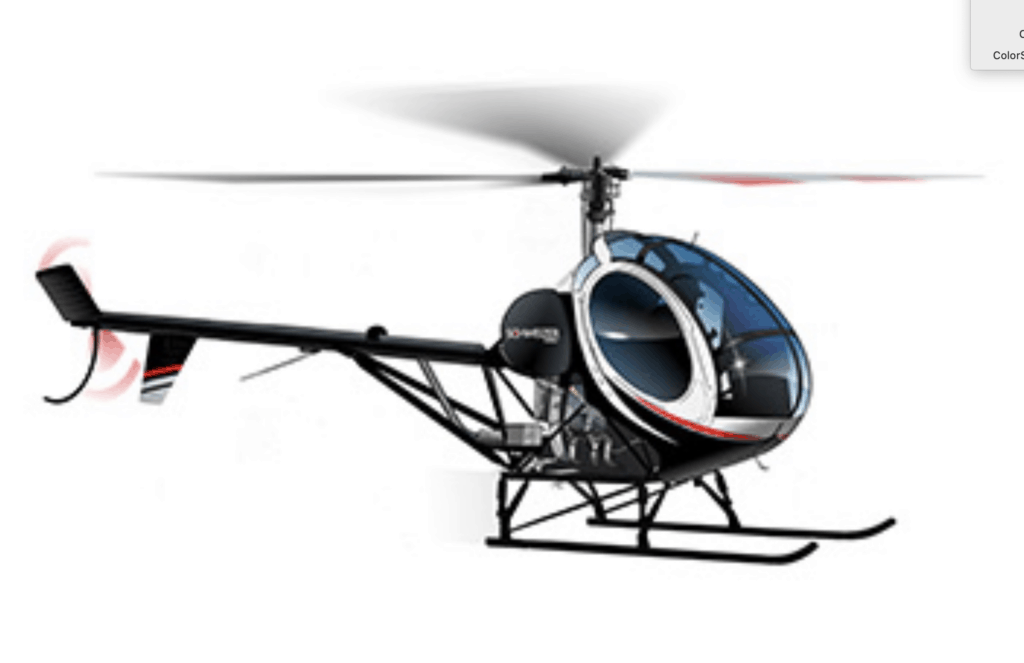
- OH-6A/Cayuse: Developed initially by the Hughes Aircraft company (later McDonnell Douglas Helicopter Company) in the mid-1960s for the US Army. Fitted with 1x 253-shp Allison T63-A-5A turboshaft, 4 bladed main rotor, and an offset �V� tail.
- Hughes 500M: Military export version of OH-6 in mid-1970s with upgraded 278-shp Allison 250-C18 turboshaft engine, �V� tail. A recontoured nose allowed for greater leg and head room. Modifications were also made to the rotor assembly by way of a five blade main rotor which increased stability.
- MD-500MD/Scout and TOW Defender: Improved military version of the model 500 with 5 main rotor blades, 375-shp Allison 250-C20B turboshaft engine, and T-tail.
- MD-500E/MD-500MG/Defender II: Had a more elongated nose for streamlining, and an optional 4x blade tail rotor for reduced acoustic signatures. Possible mast-mounted sight.
- OH-6A/MD-530F Super Cayuse/Lifter: Upgraded engine to a 425-shp Allison 250- C30 turboshaft, and avionics in 1988 for the US Army.
- MD-530MG/Defender: Has a mast-mounted sight, and incorporated upgrades of all previous variants.
- AH/MH-6J: US Army Special Operations variant derived from the MD-530MG.
- 534https://fas.org/man/dod-101/sys/ac/oh-6.htm
Since 1961, about 3000 of the Hughes 269/300 helicopter have been produced. 535https://prairieaviationmuseum.org/exhibits/aircraft/th-55a-osage/ In 1986, Schweizer bought the rights from McDonnell Douglas. The small cool Hughes design continues to be made today, in an updated form.
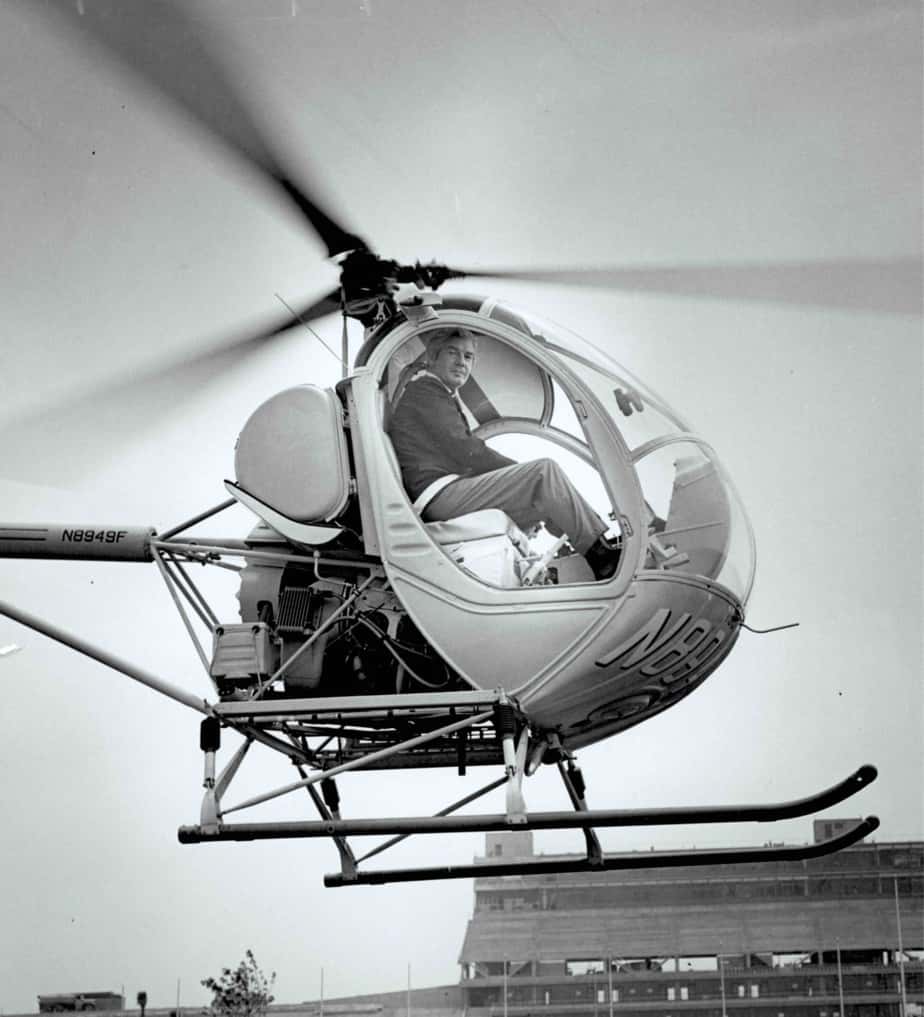
References
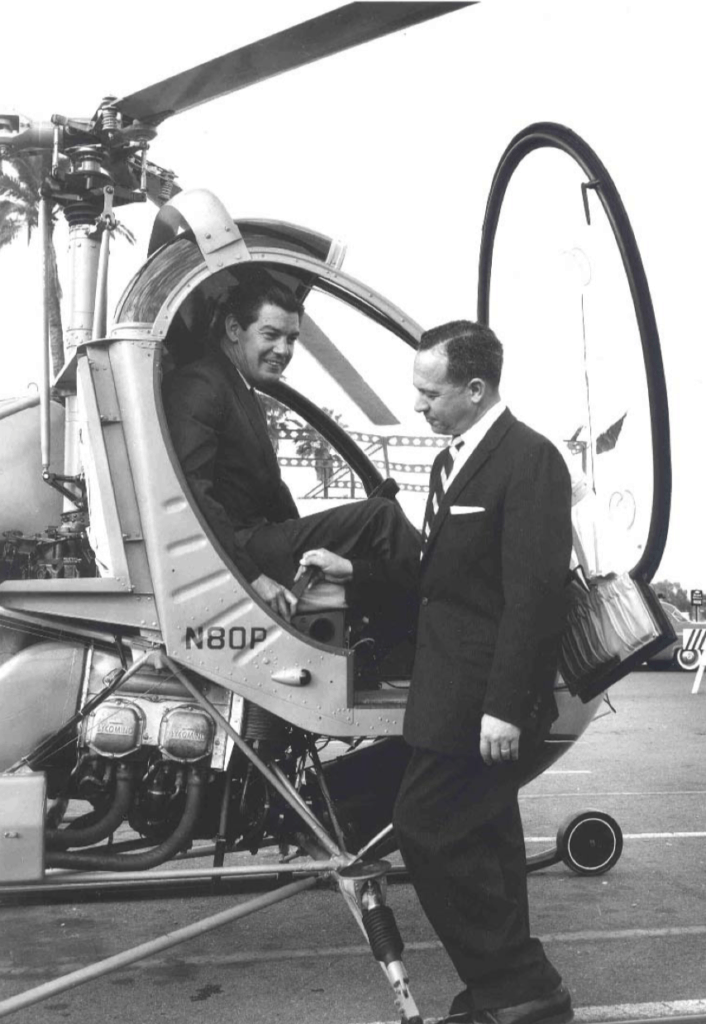
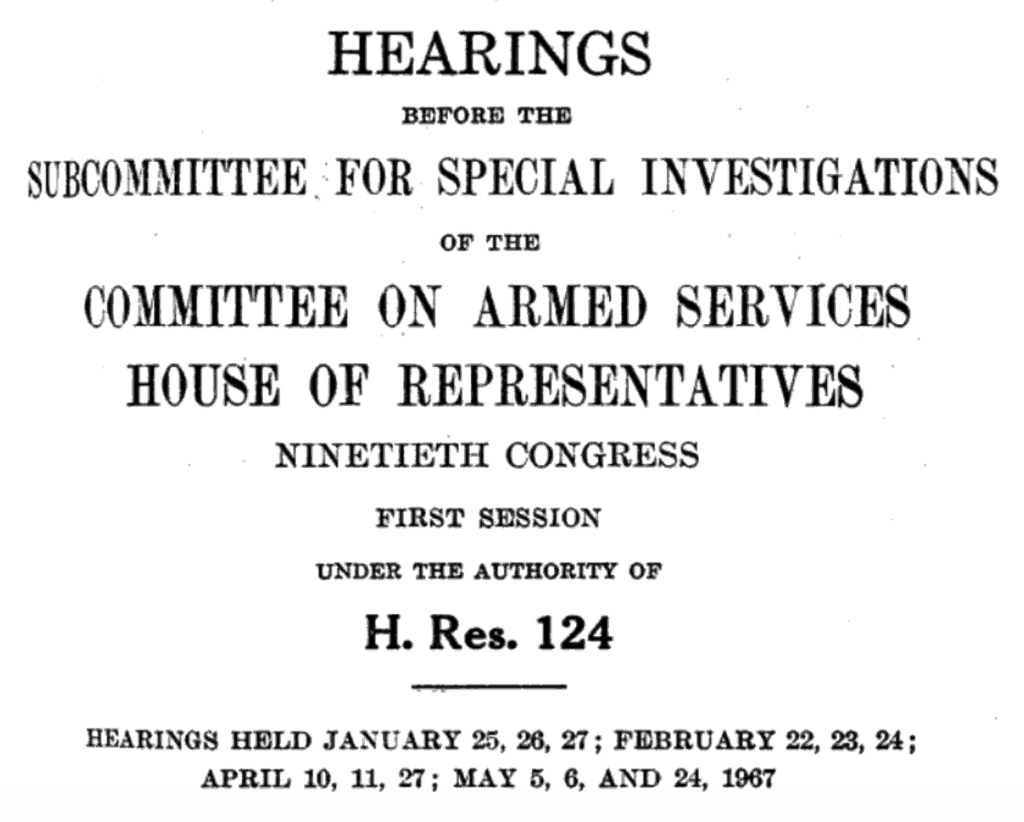
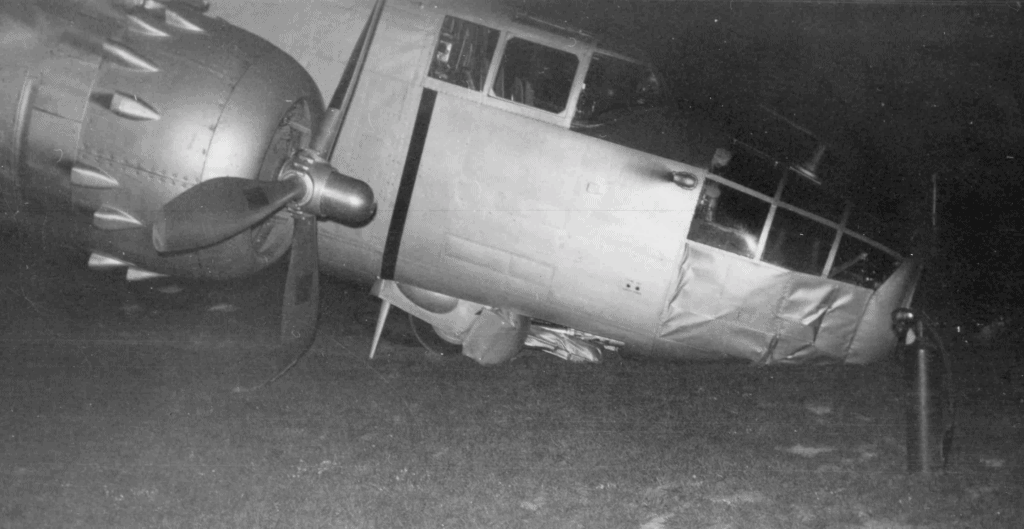 https://www.nevadamusic.com/wp-content/uploads/2020/07/Screenshot-2020-07-09-18.48.42-300x155.png 300w,
https://www.nevadamusic.com/wp-content/uploads/2020/07/Screenshot-2020-07-09-18.48.42-300x155.png 300w,